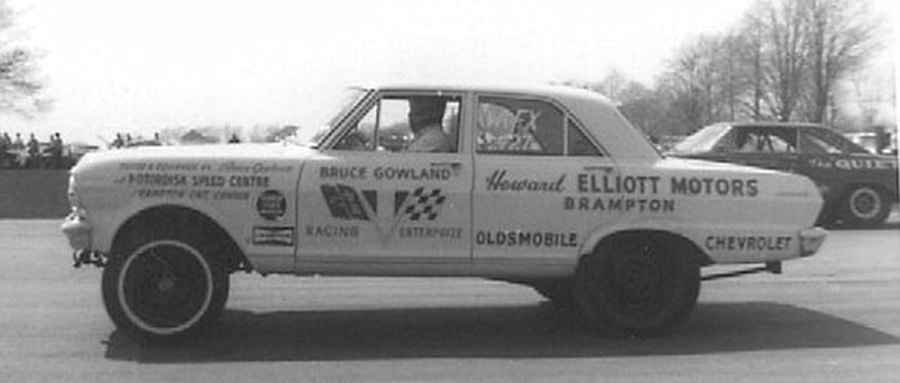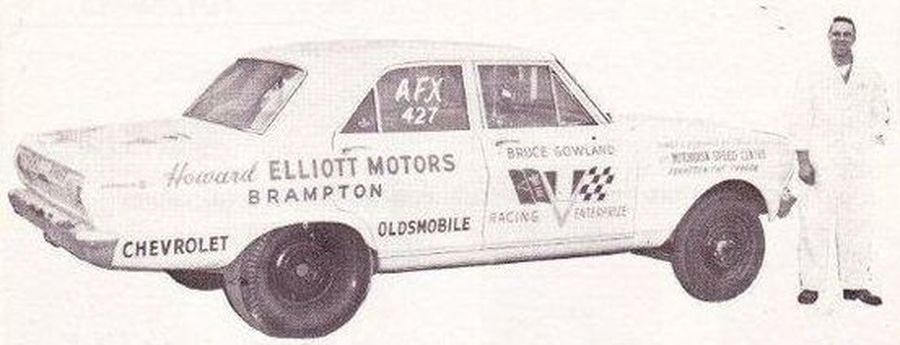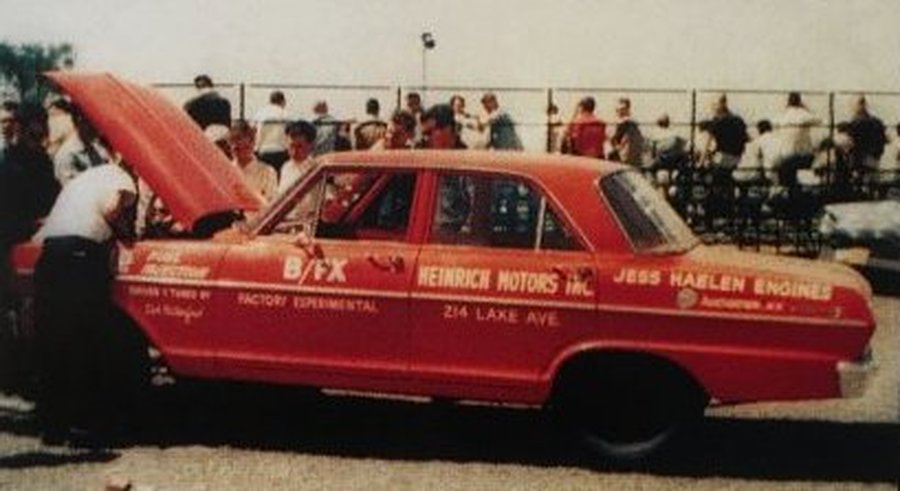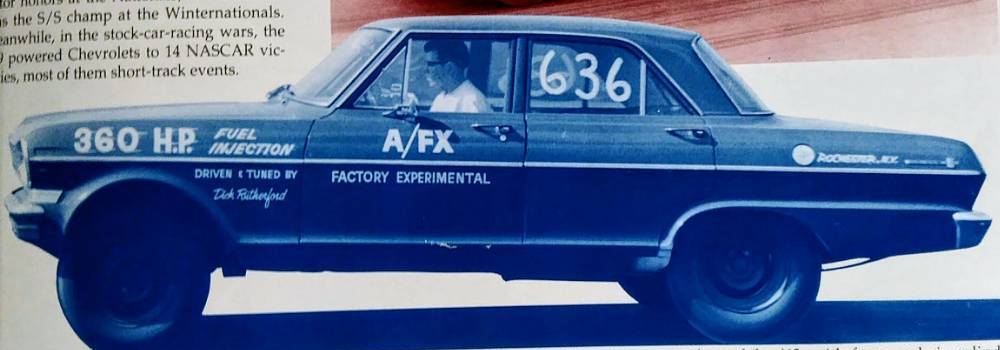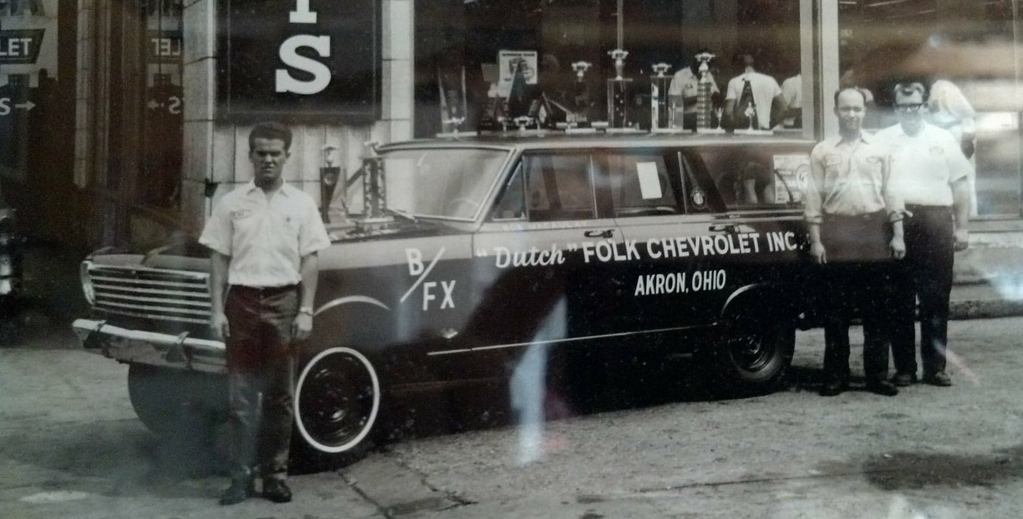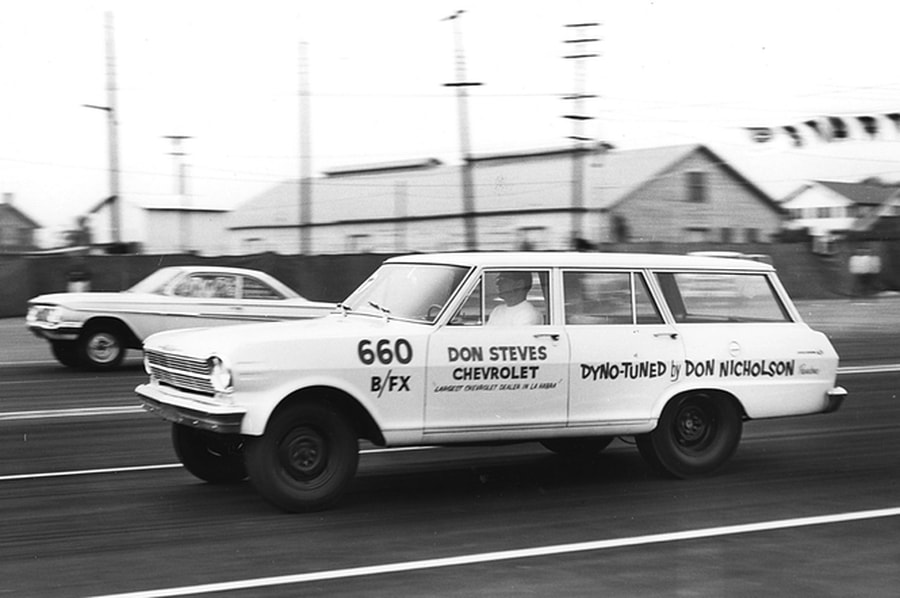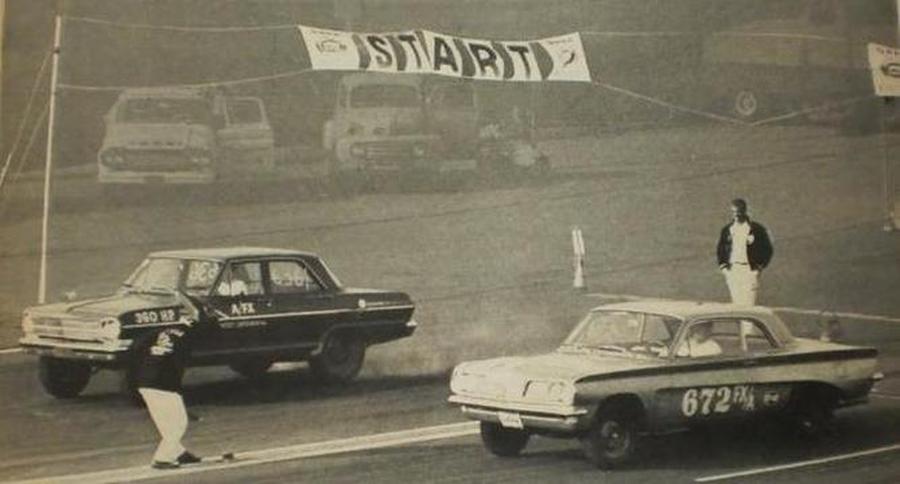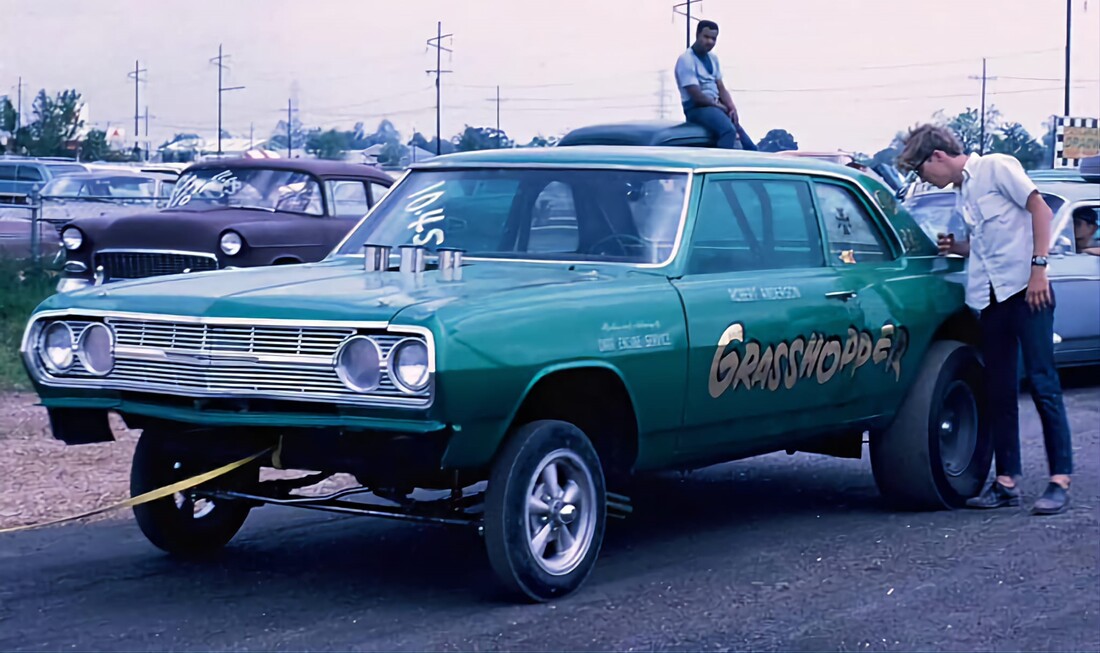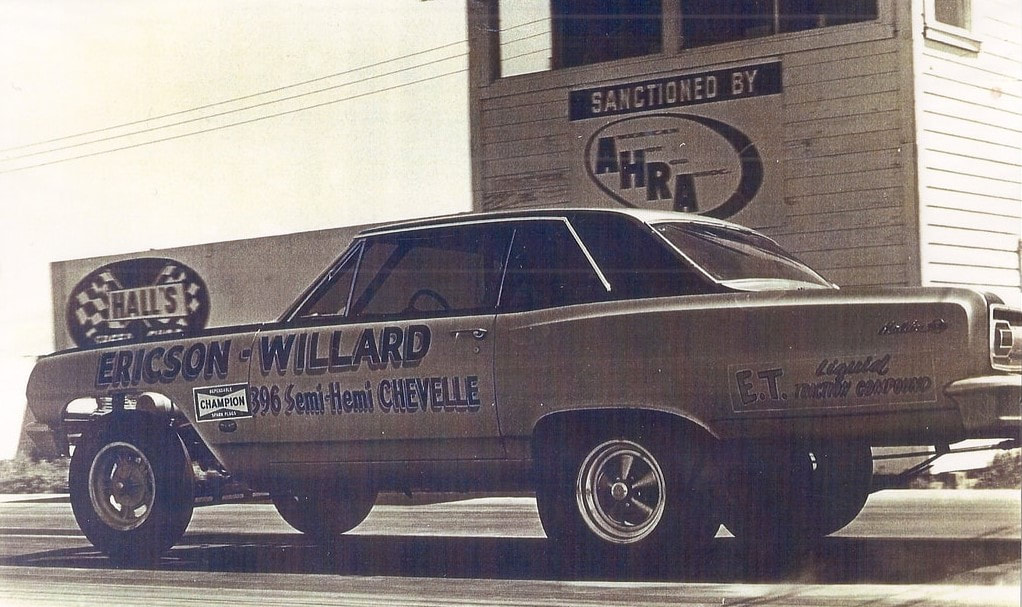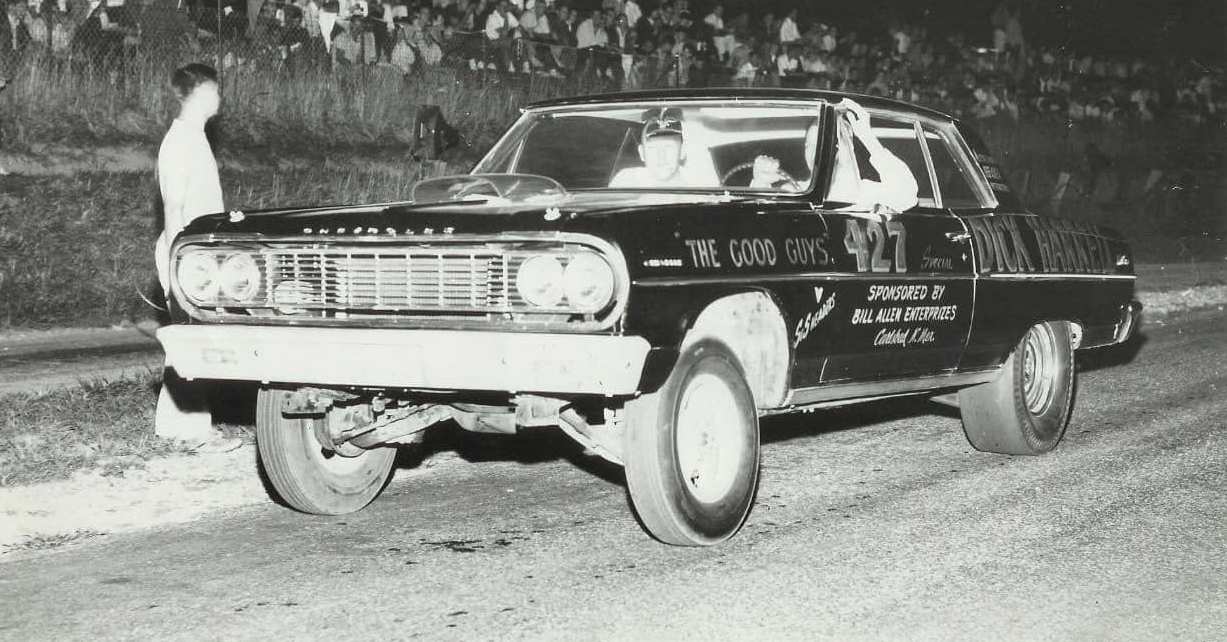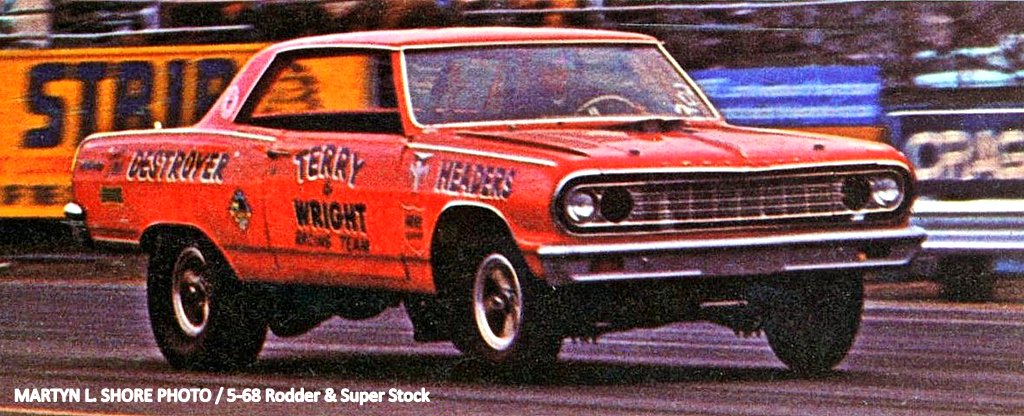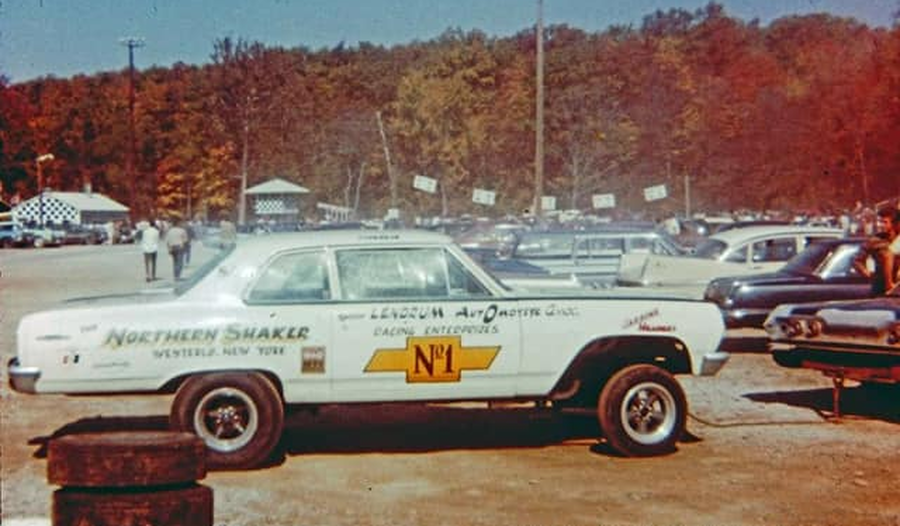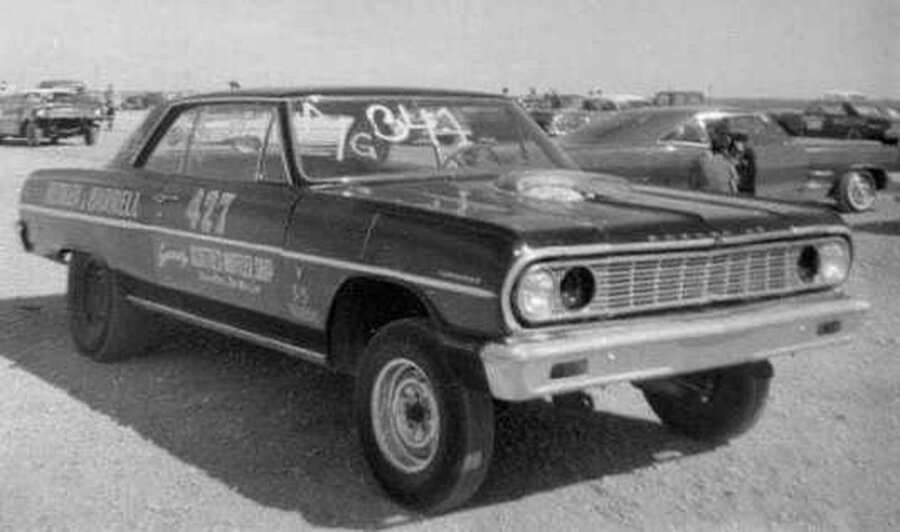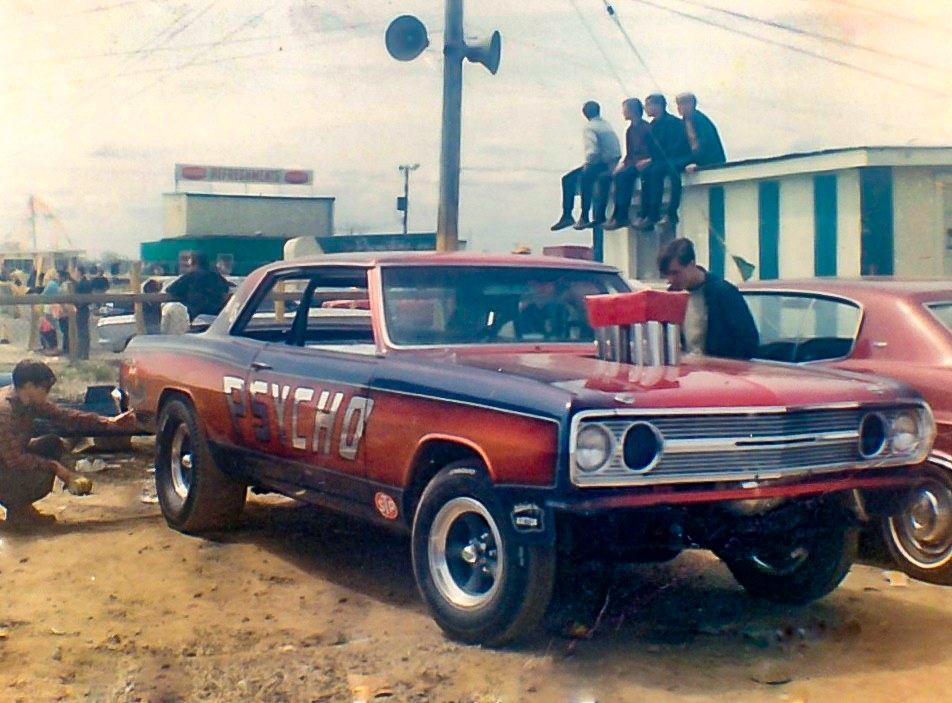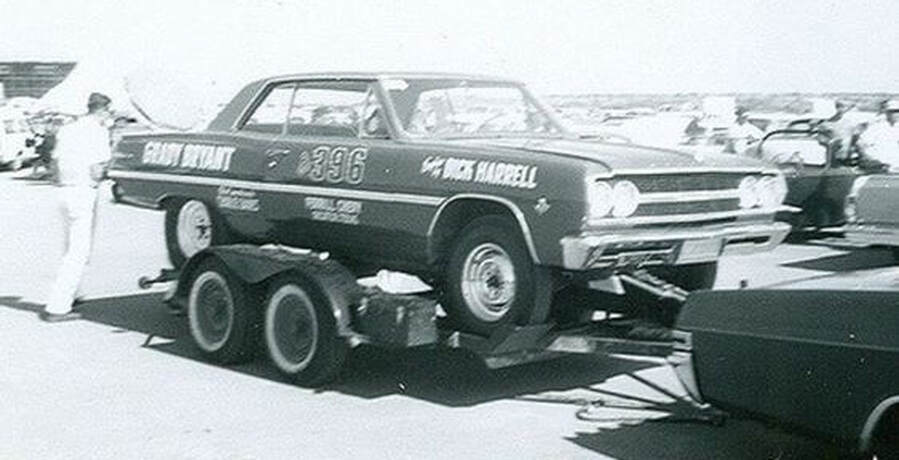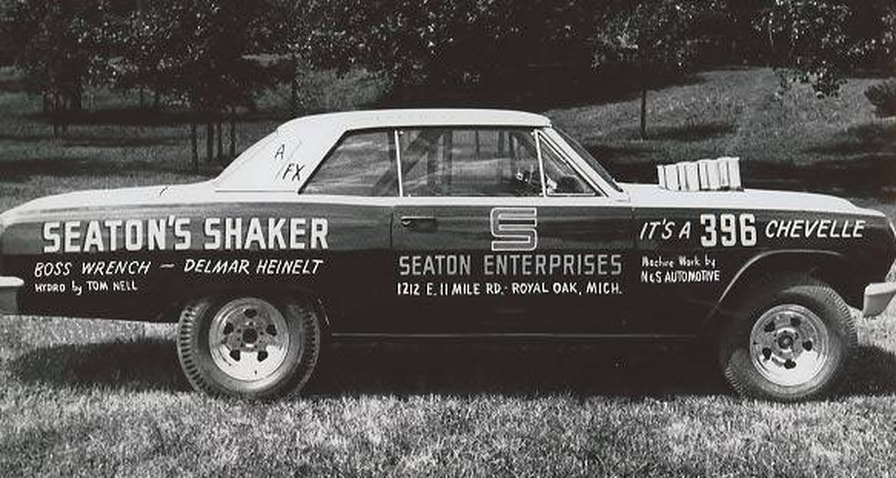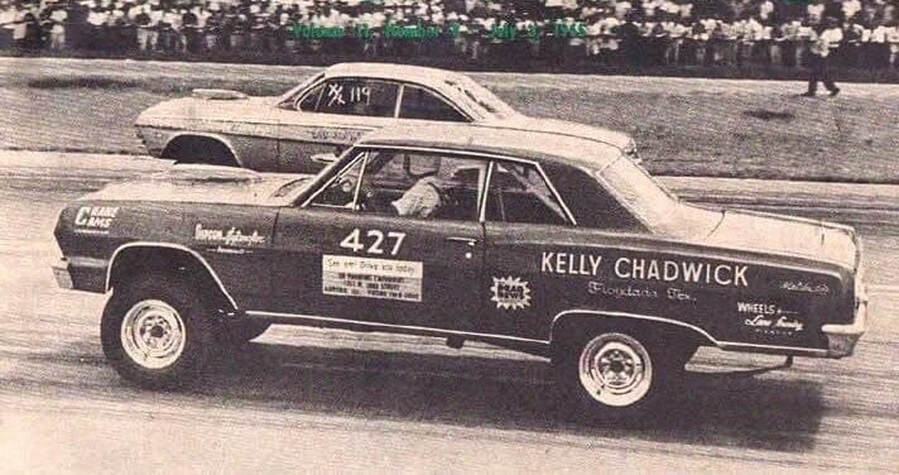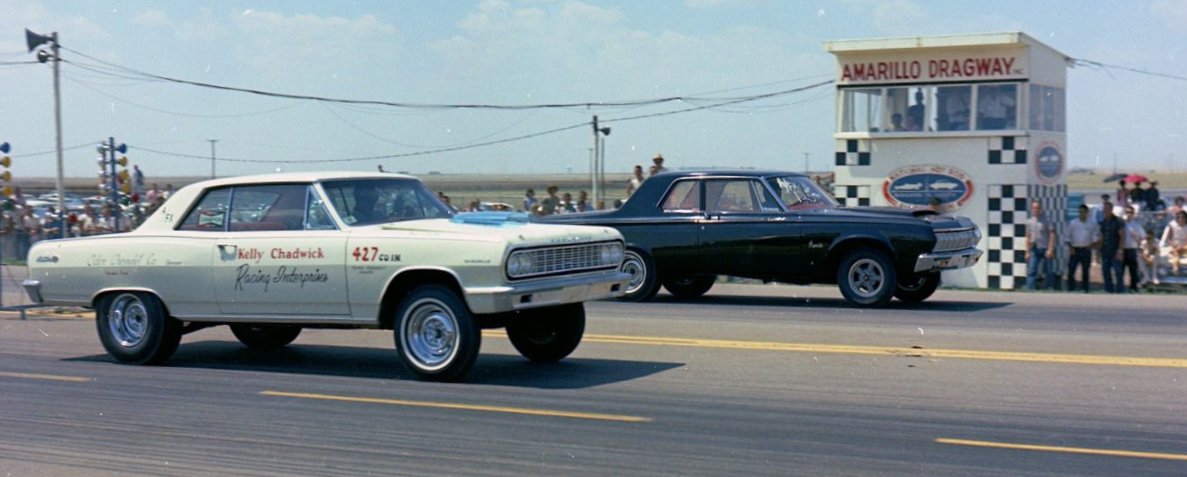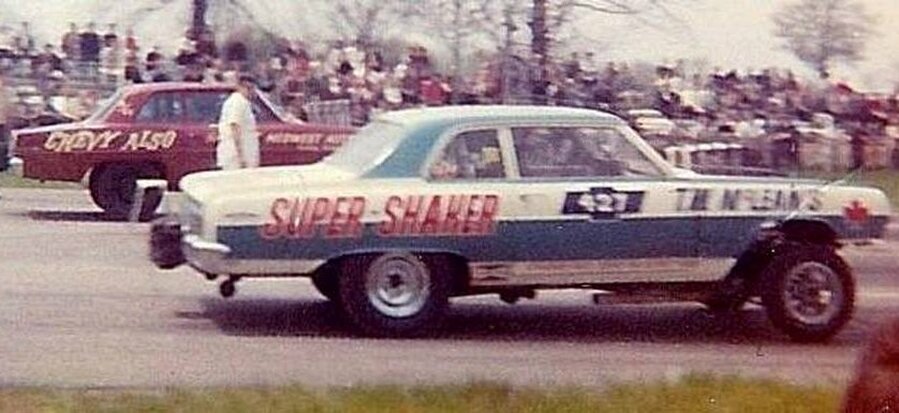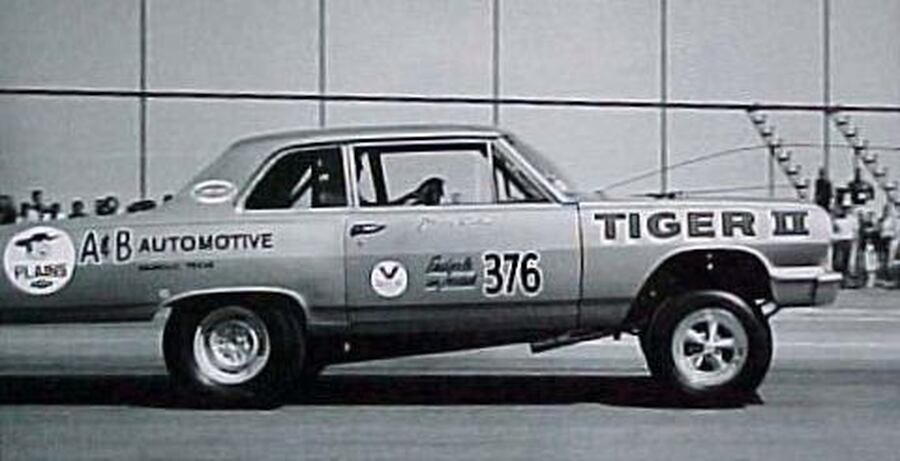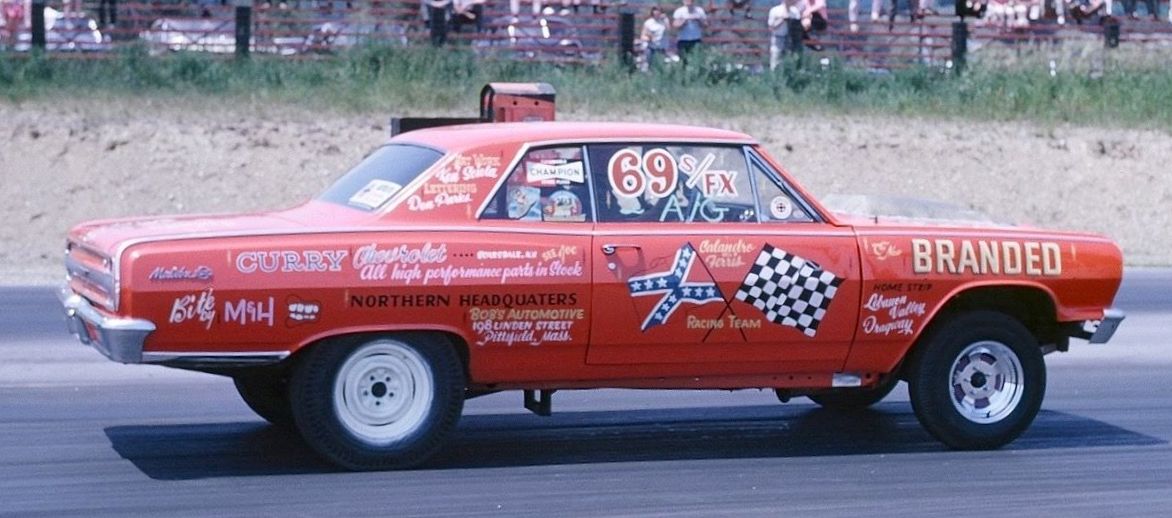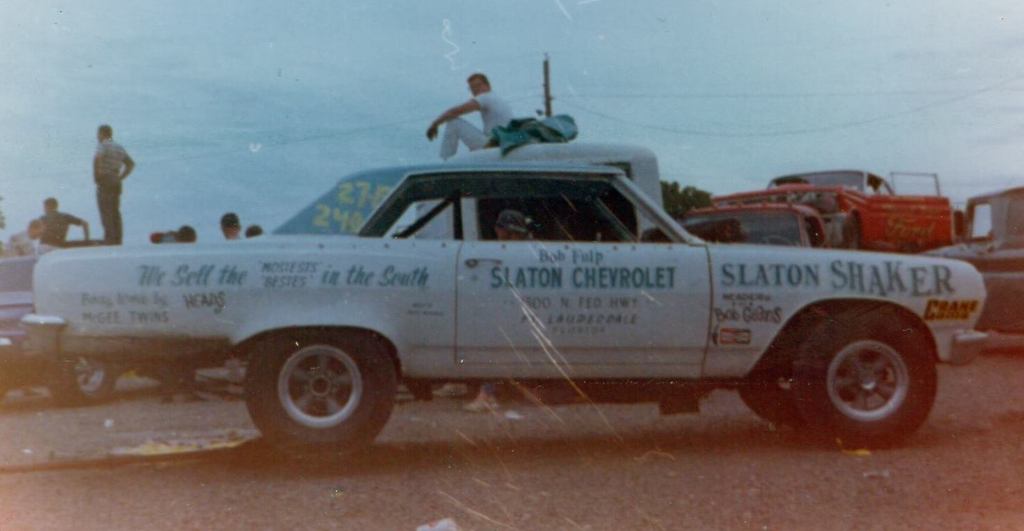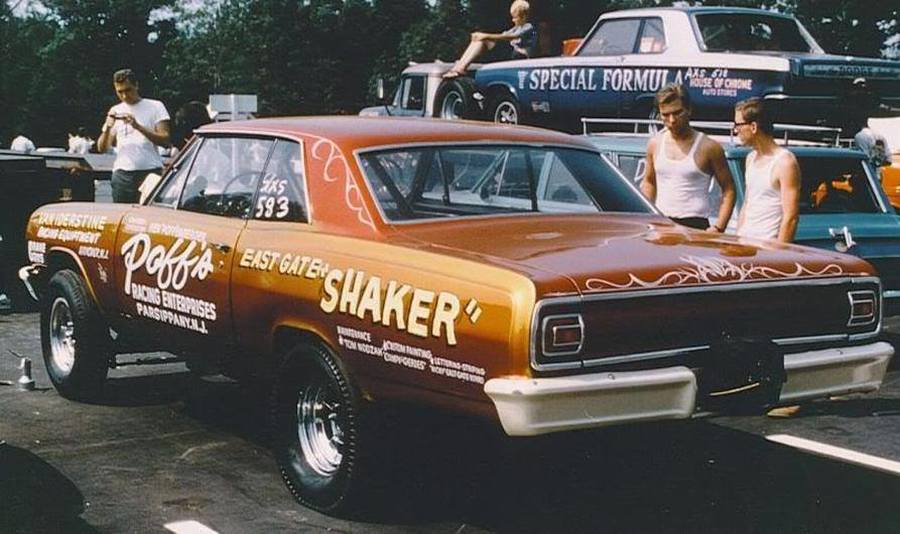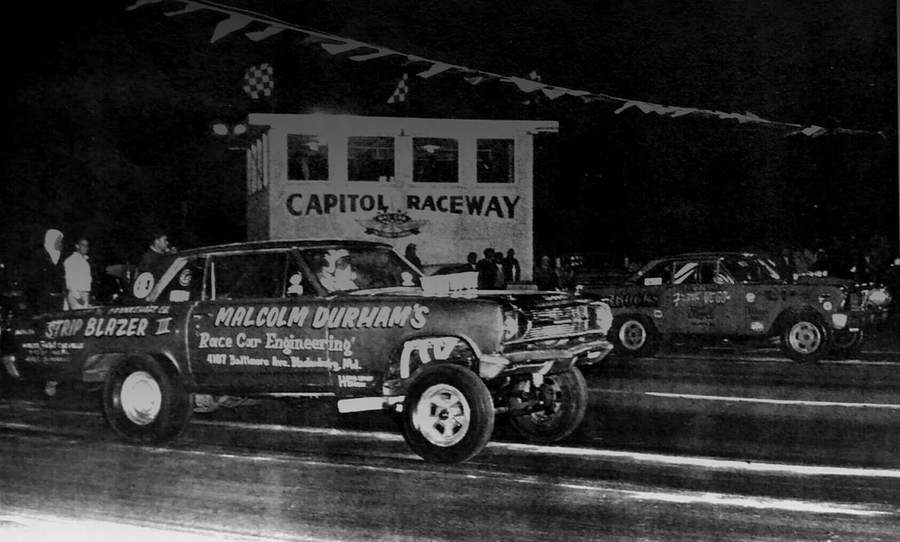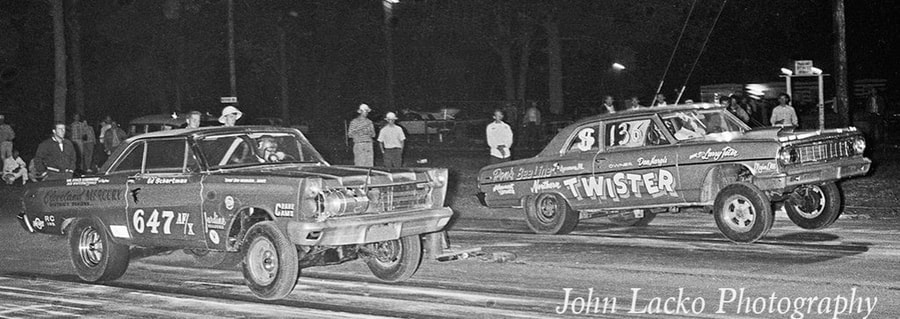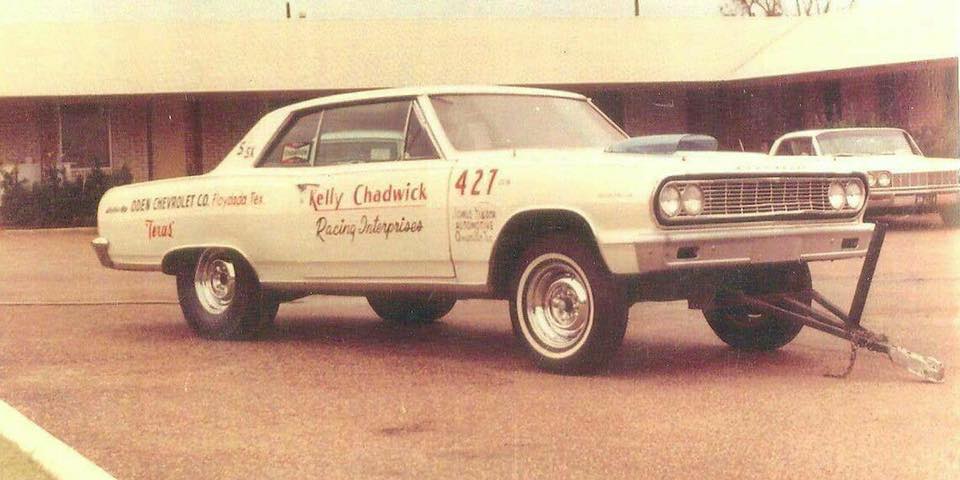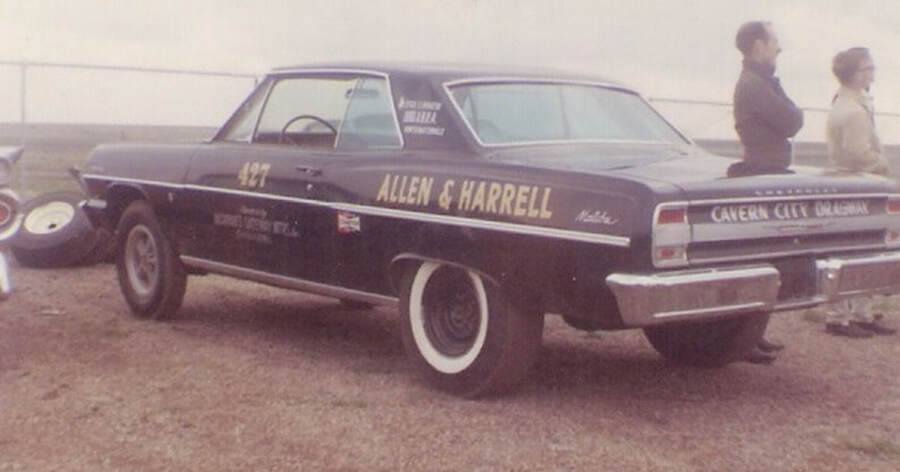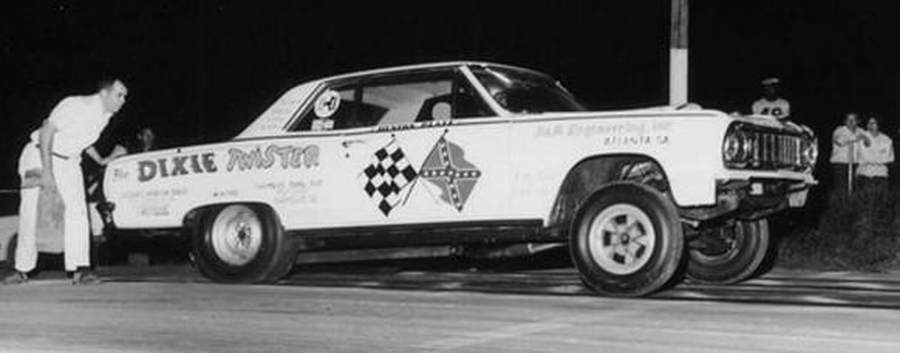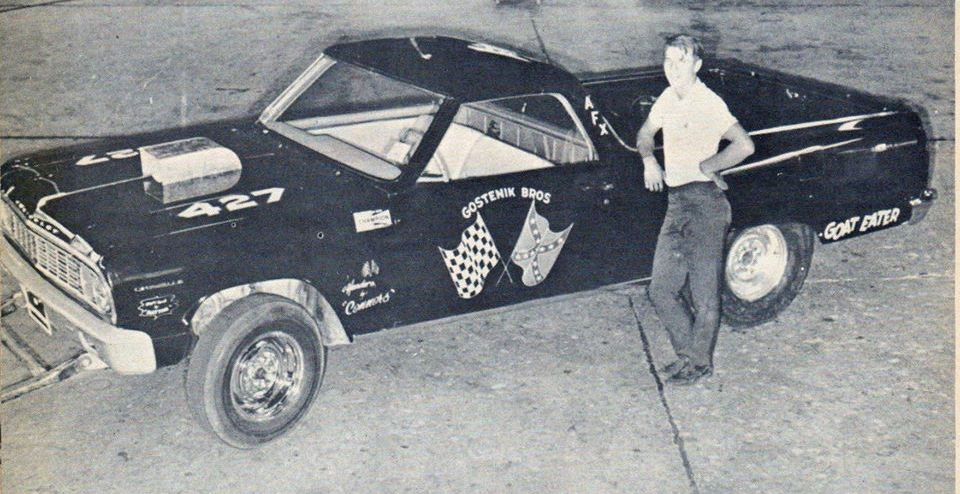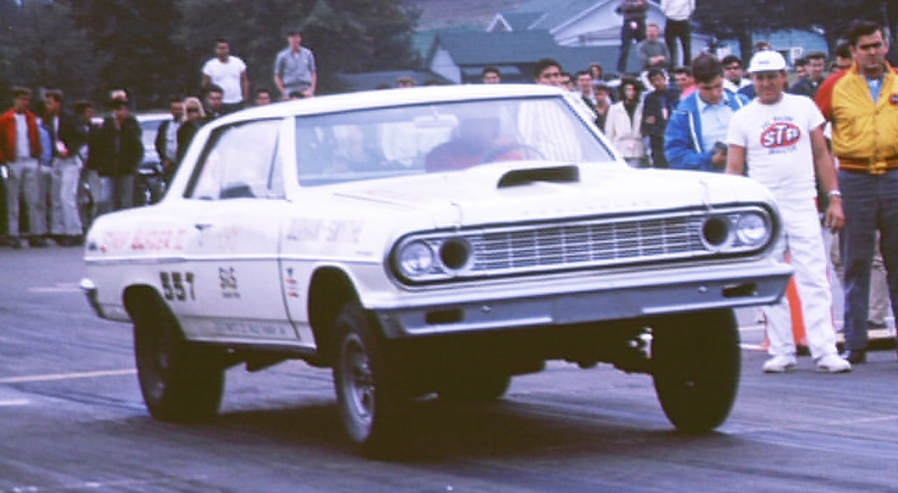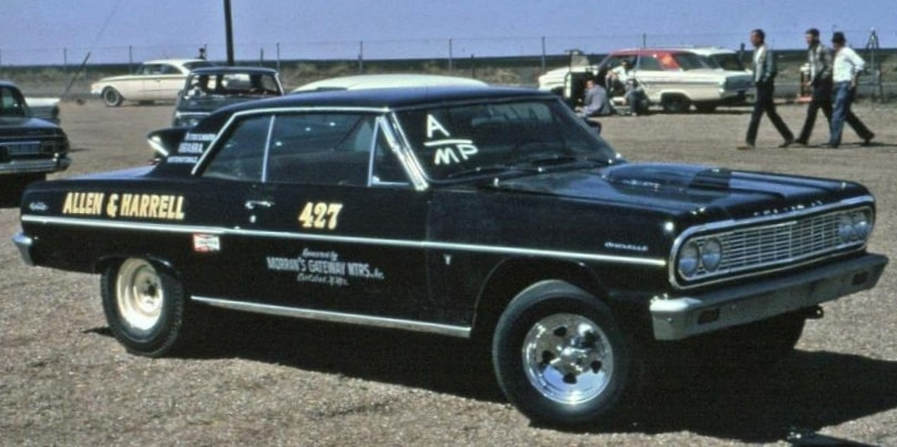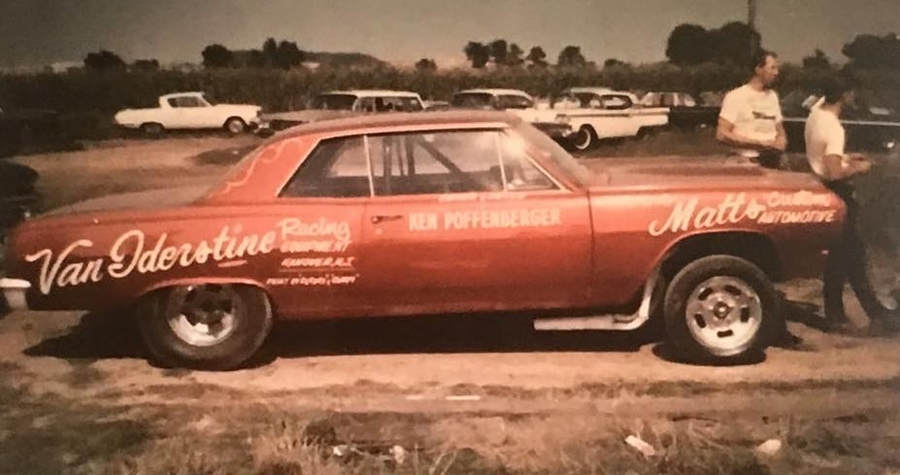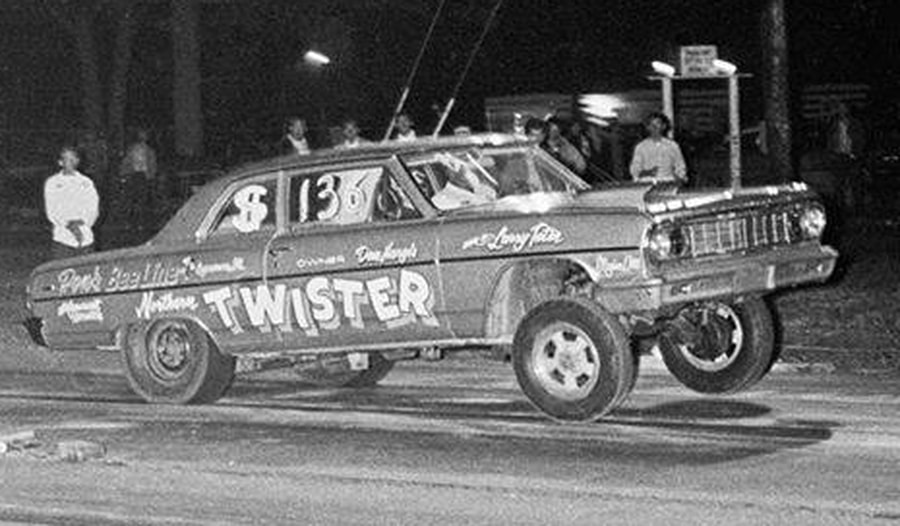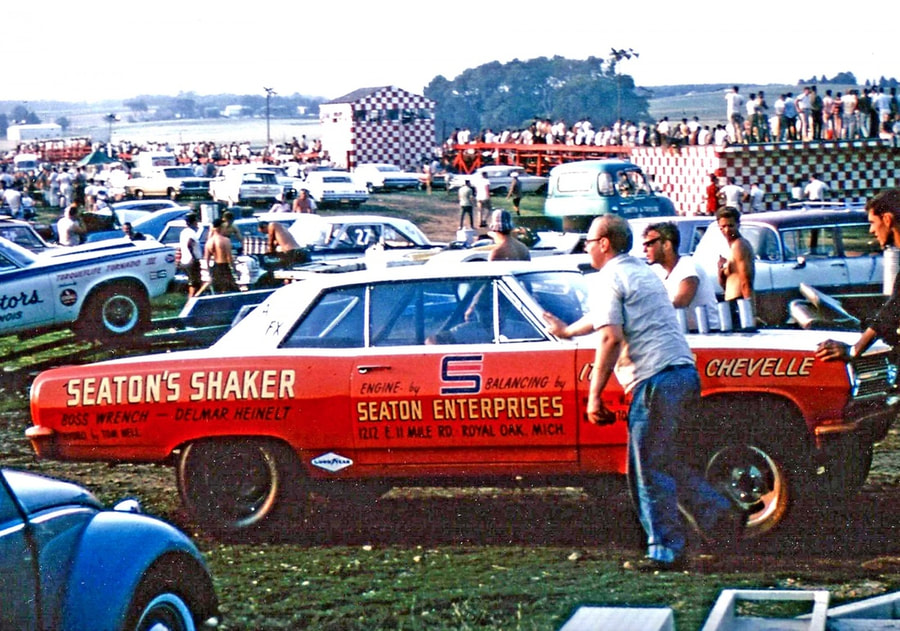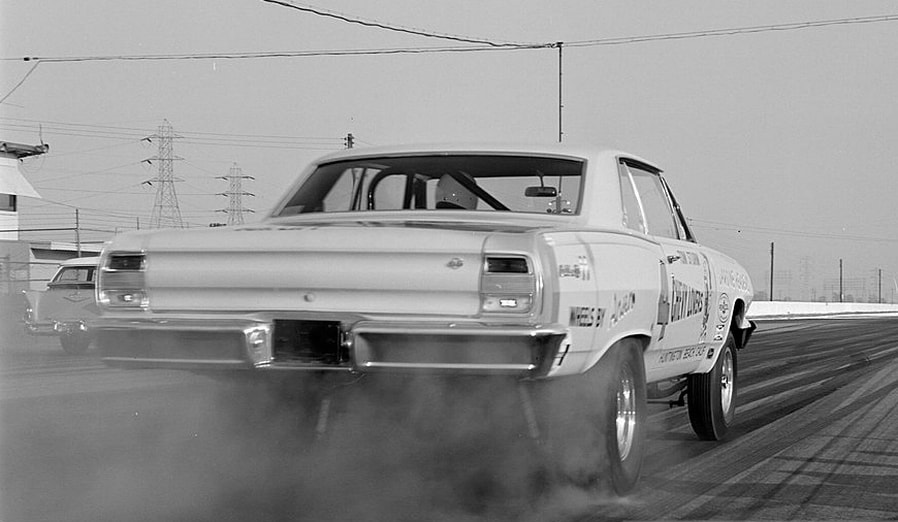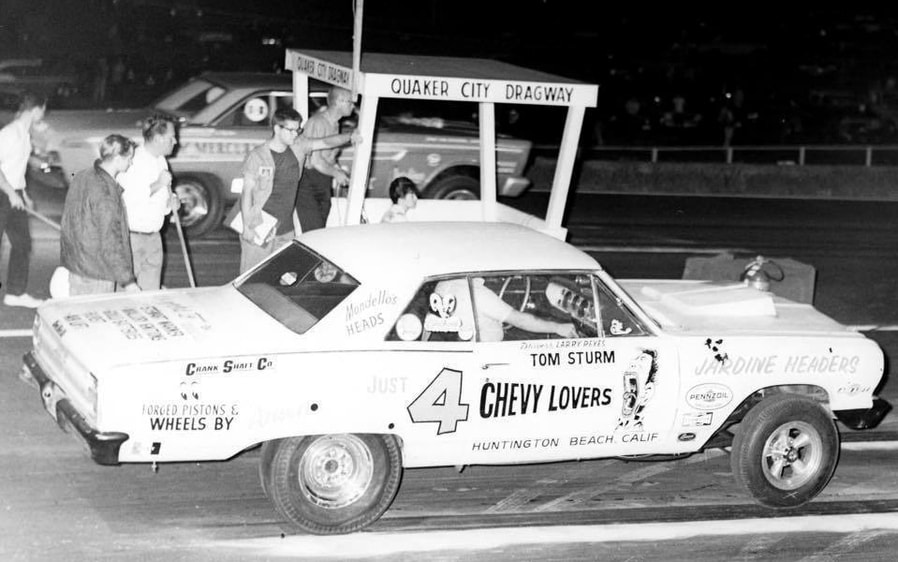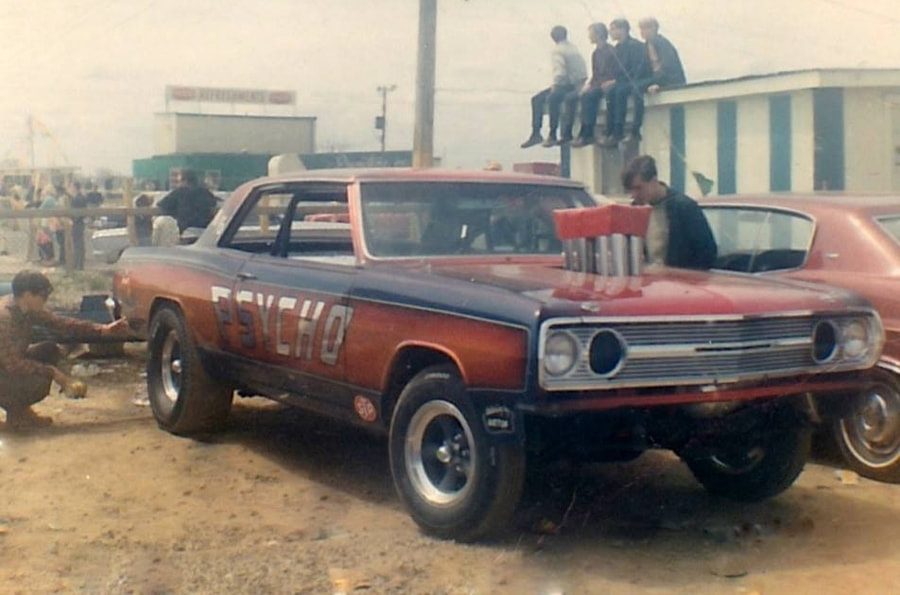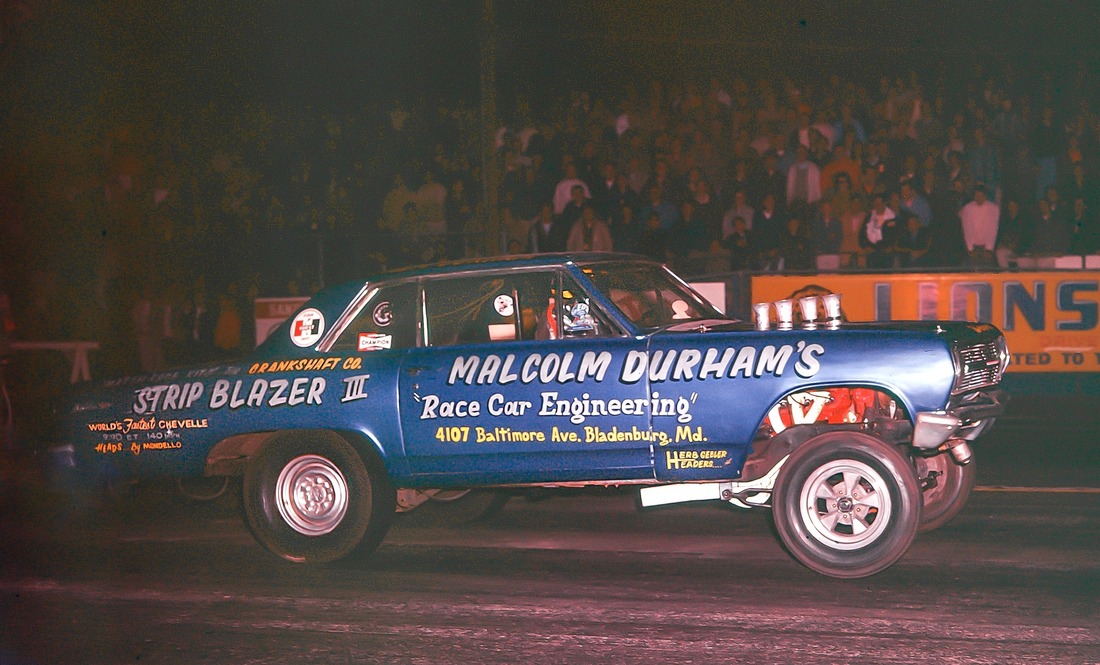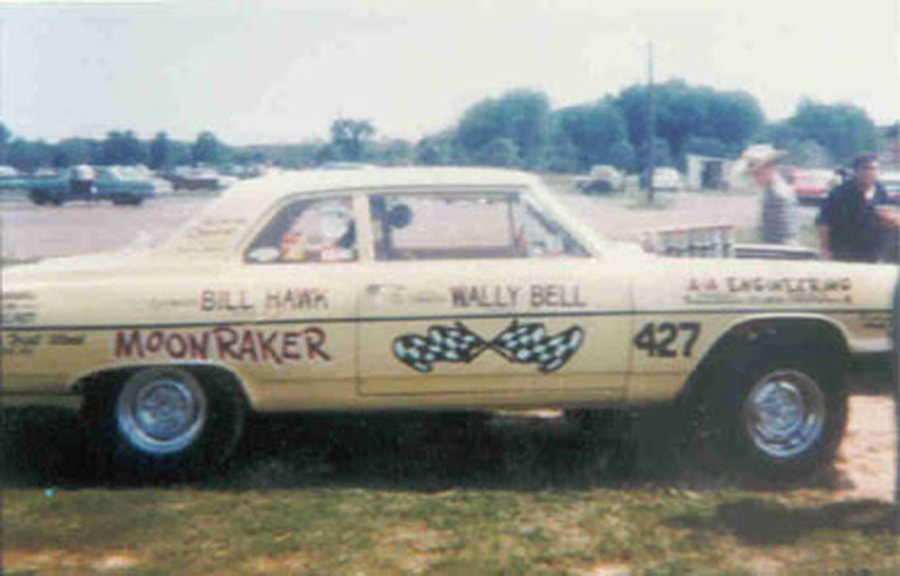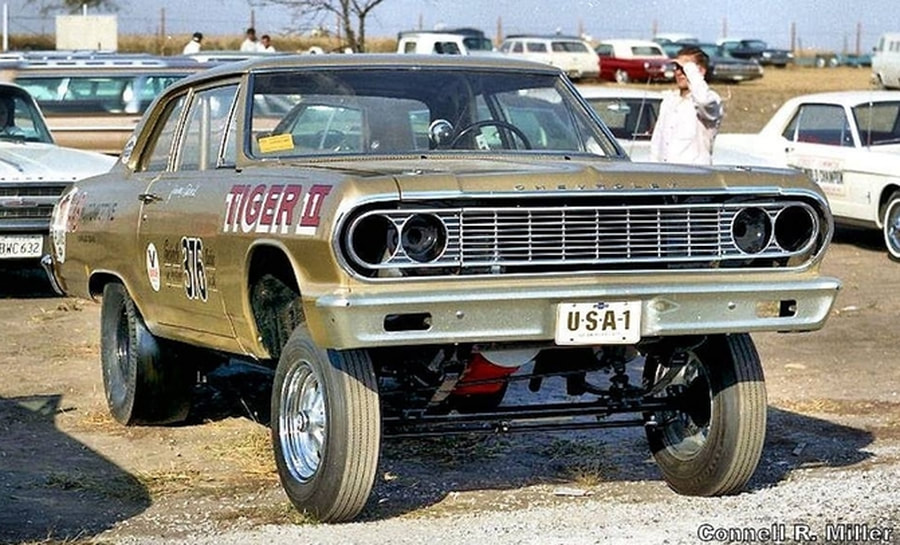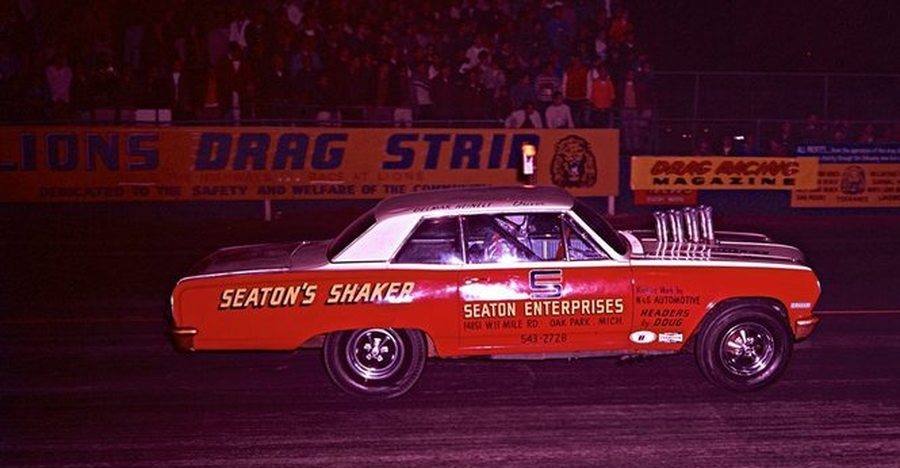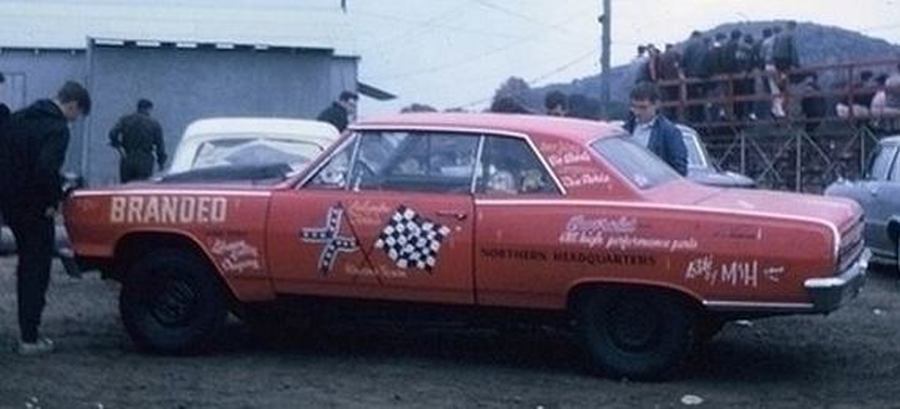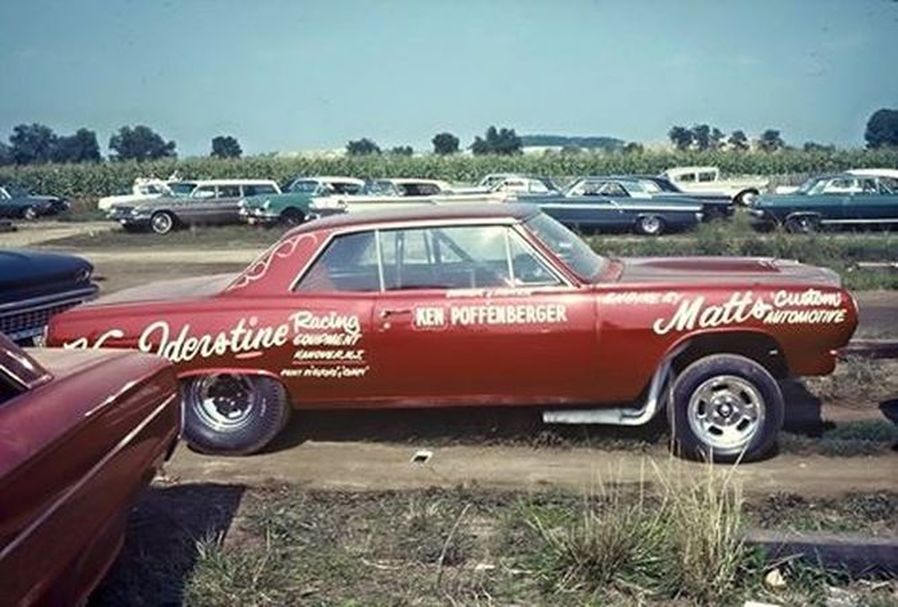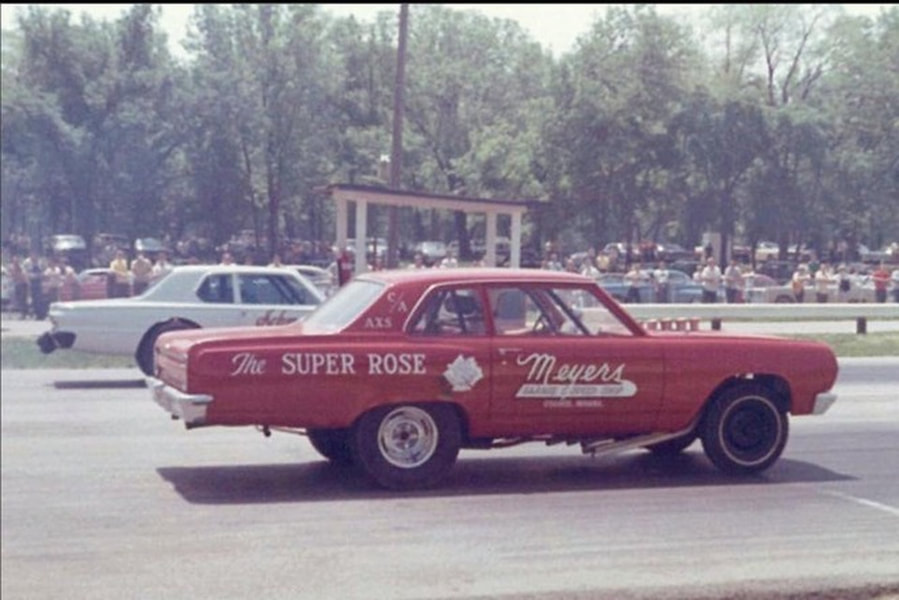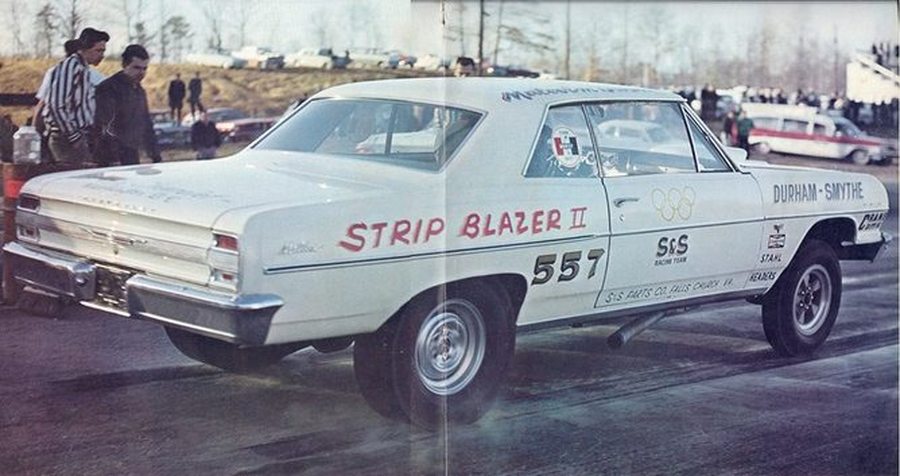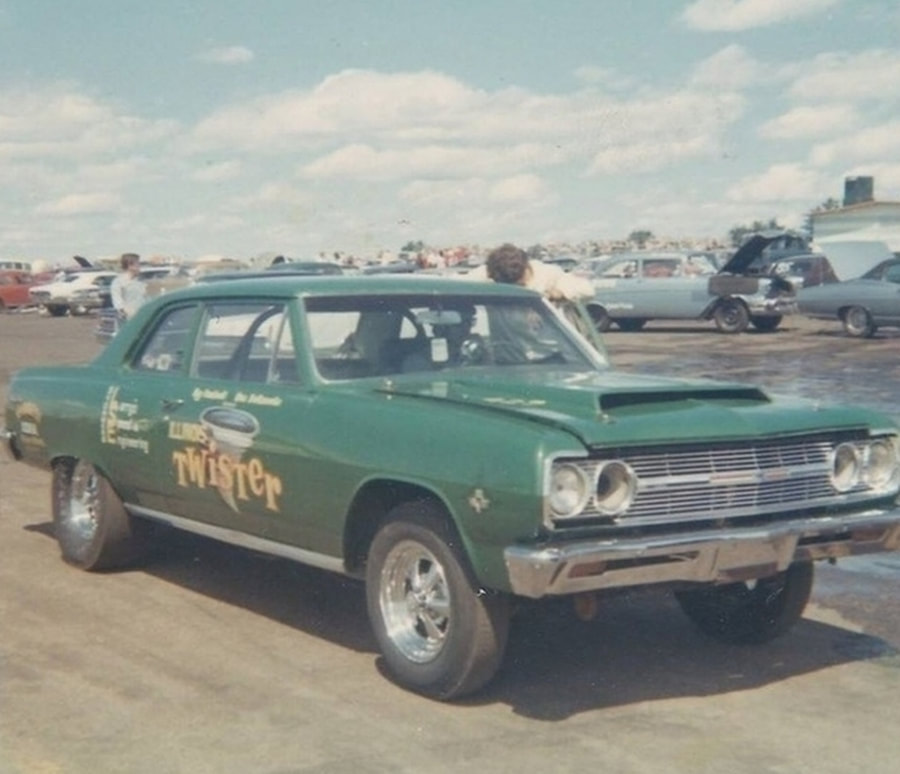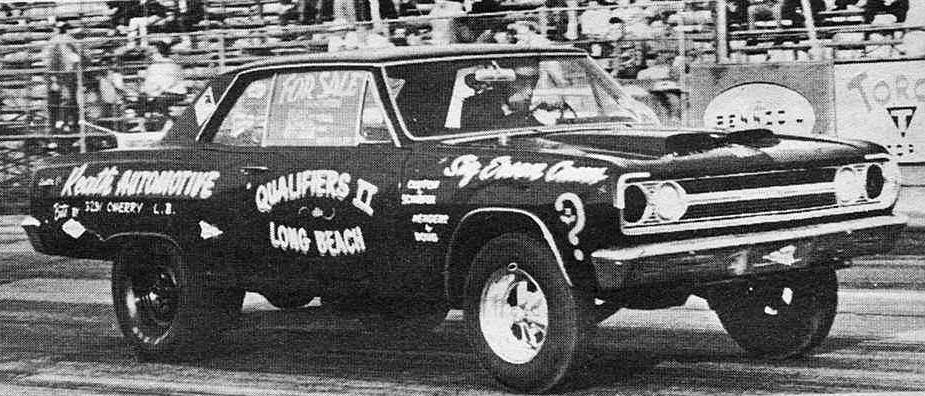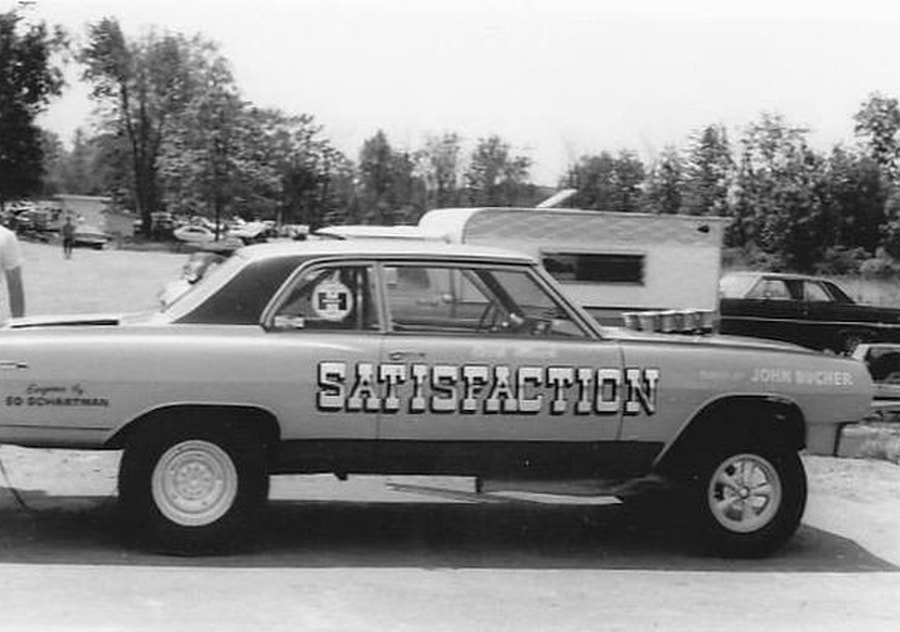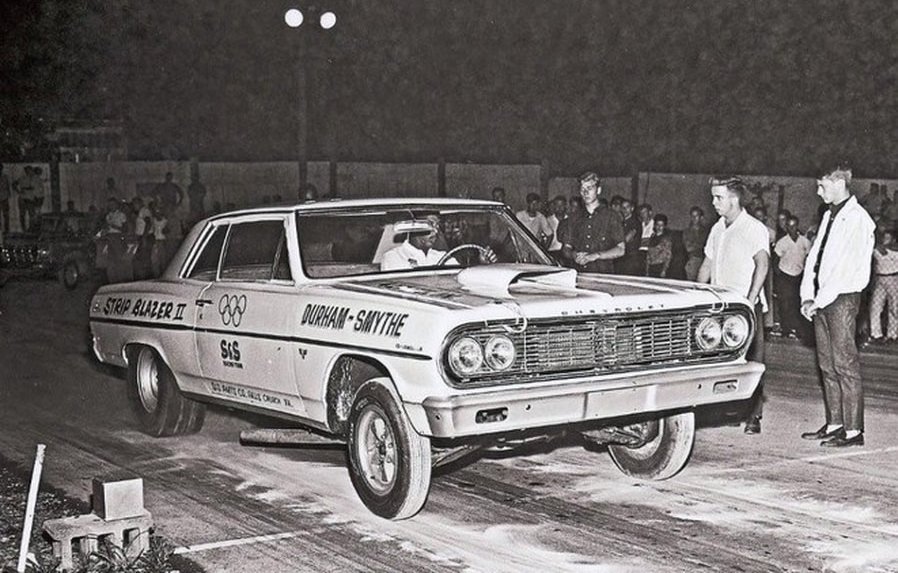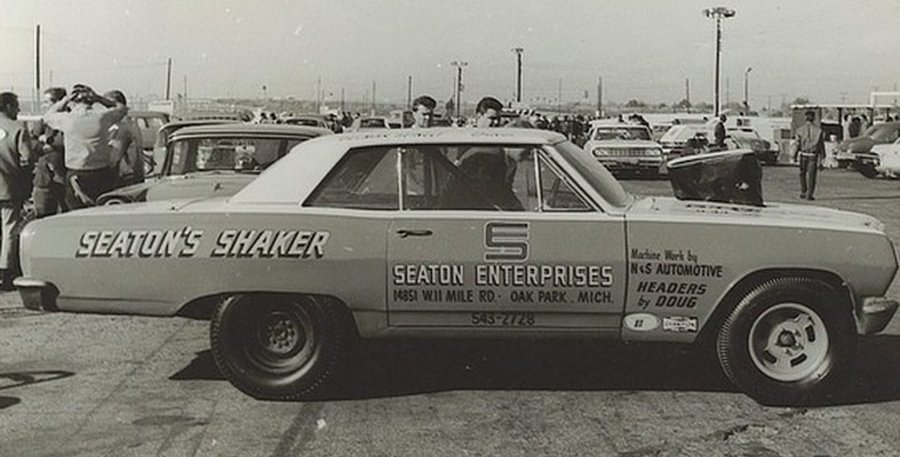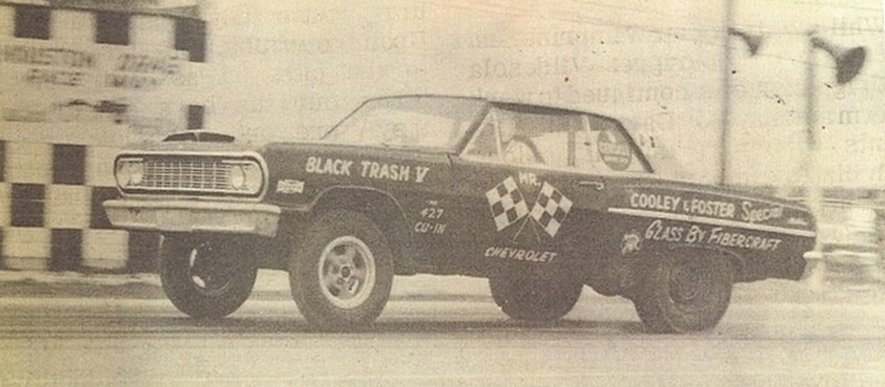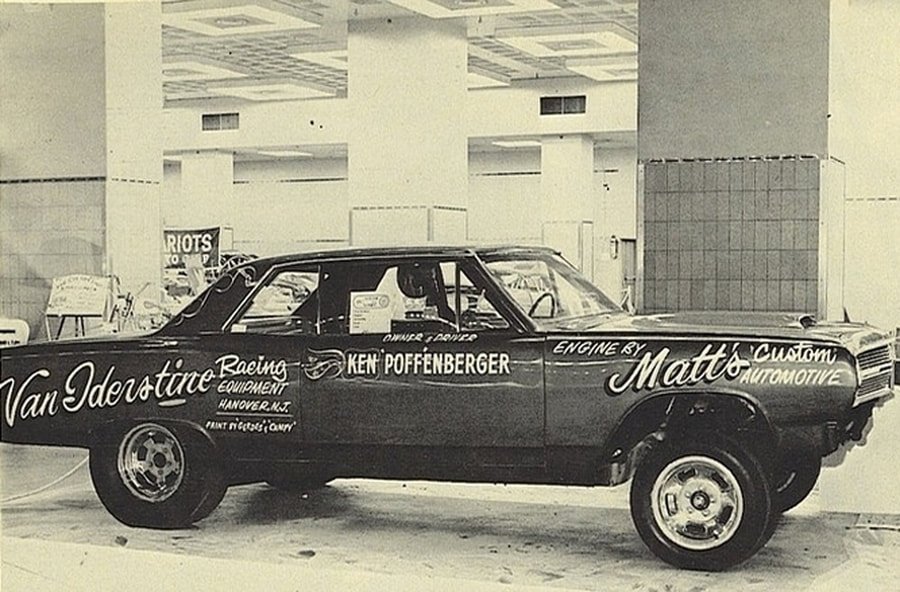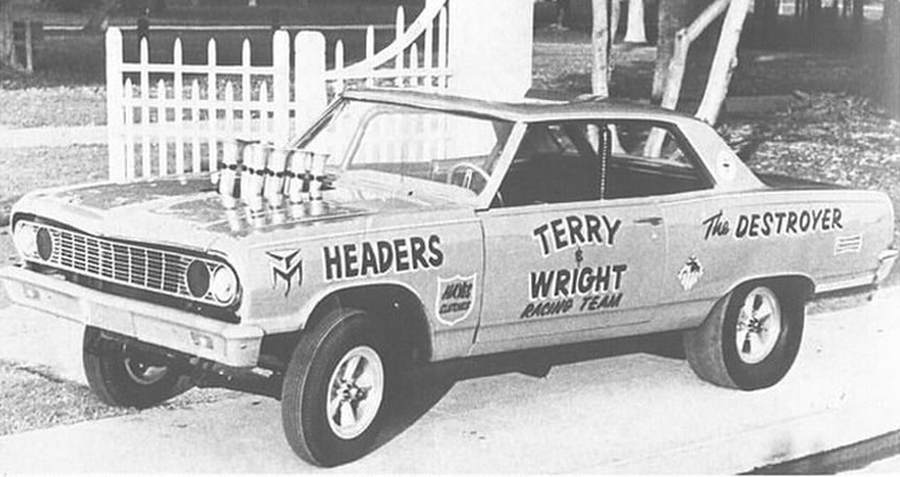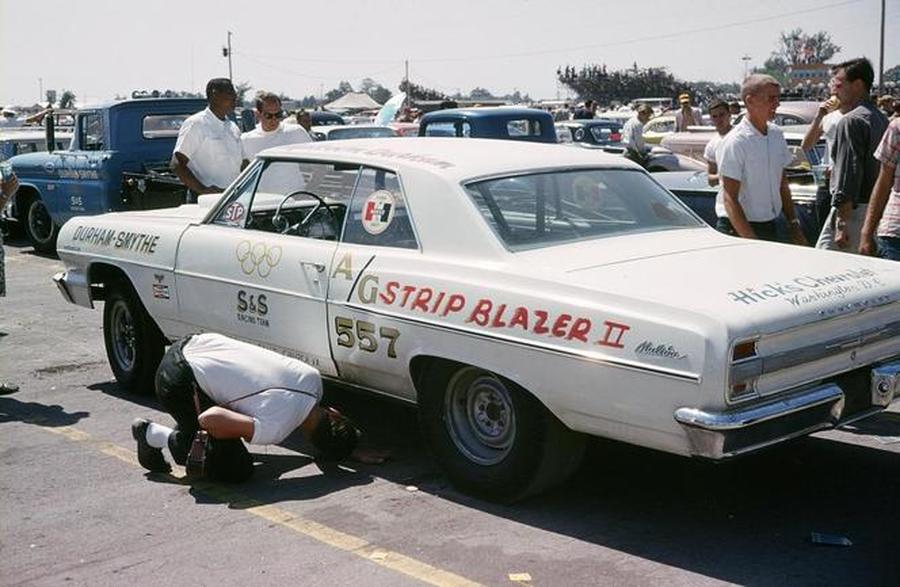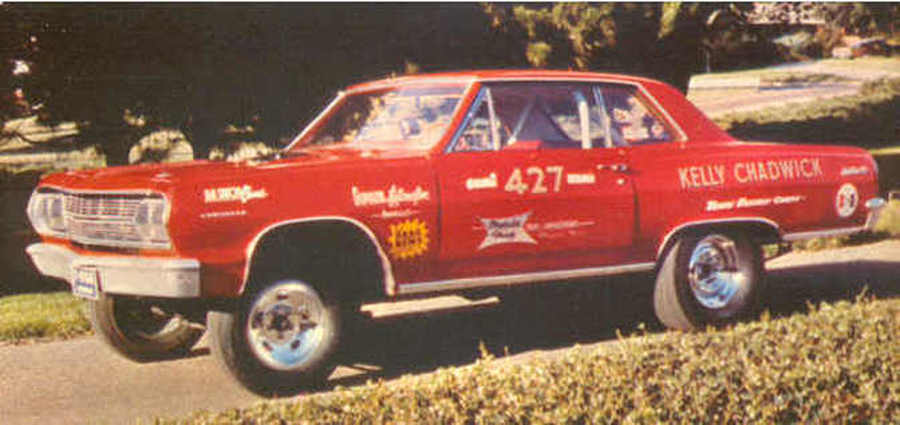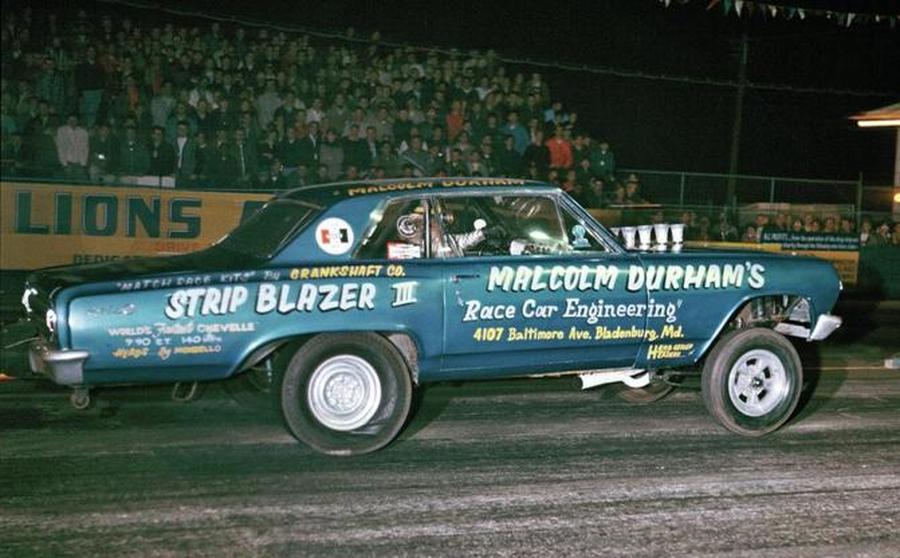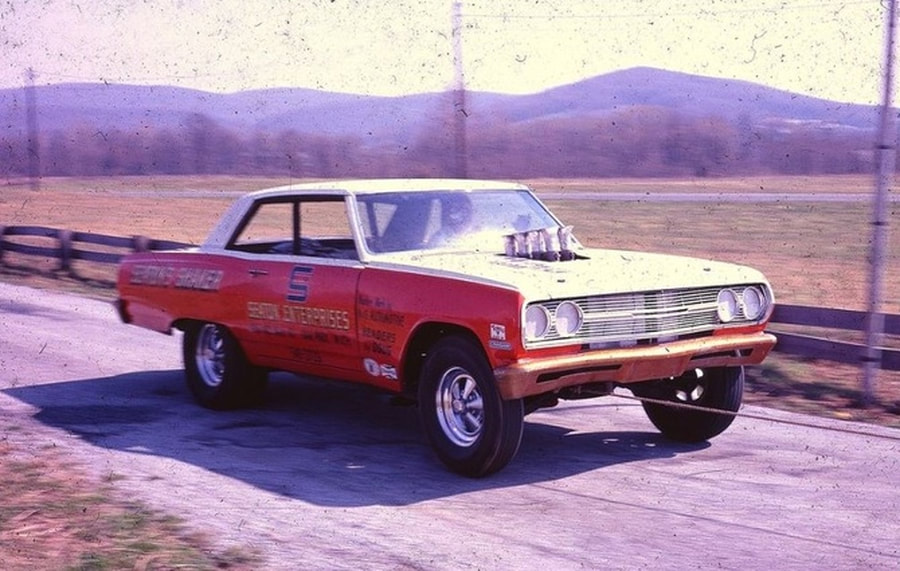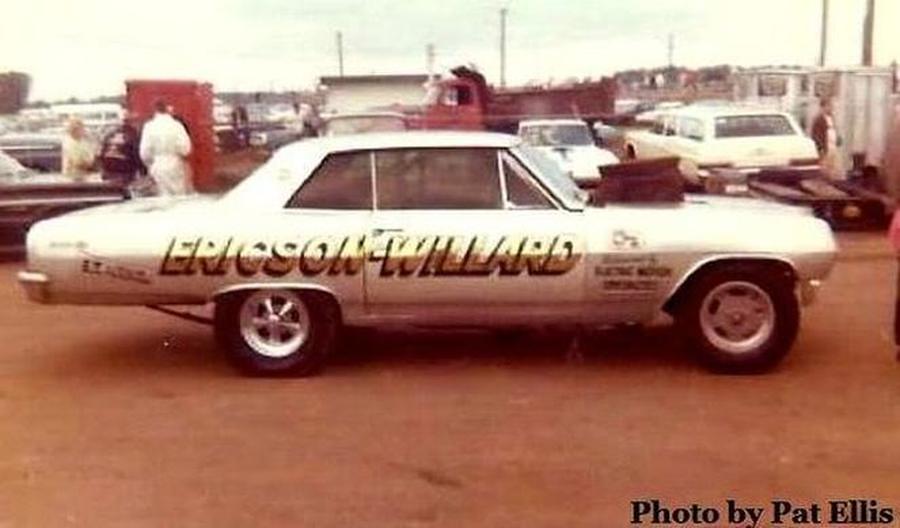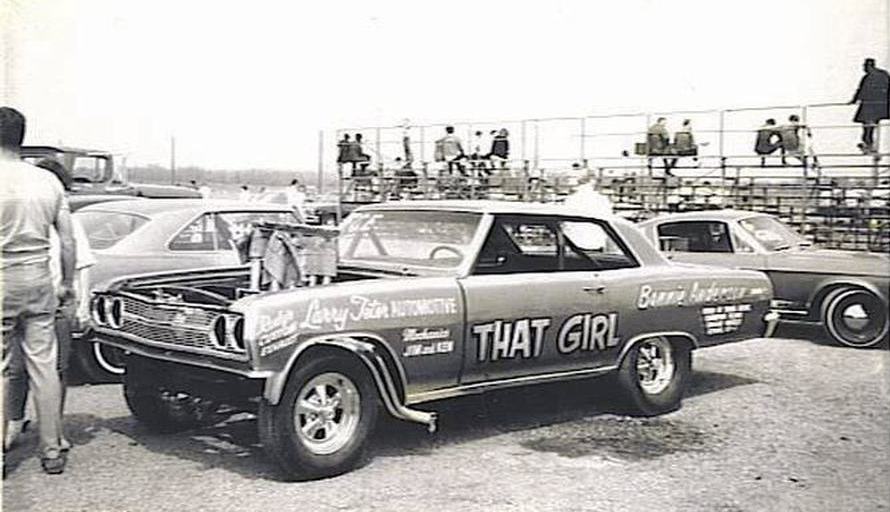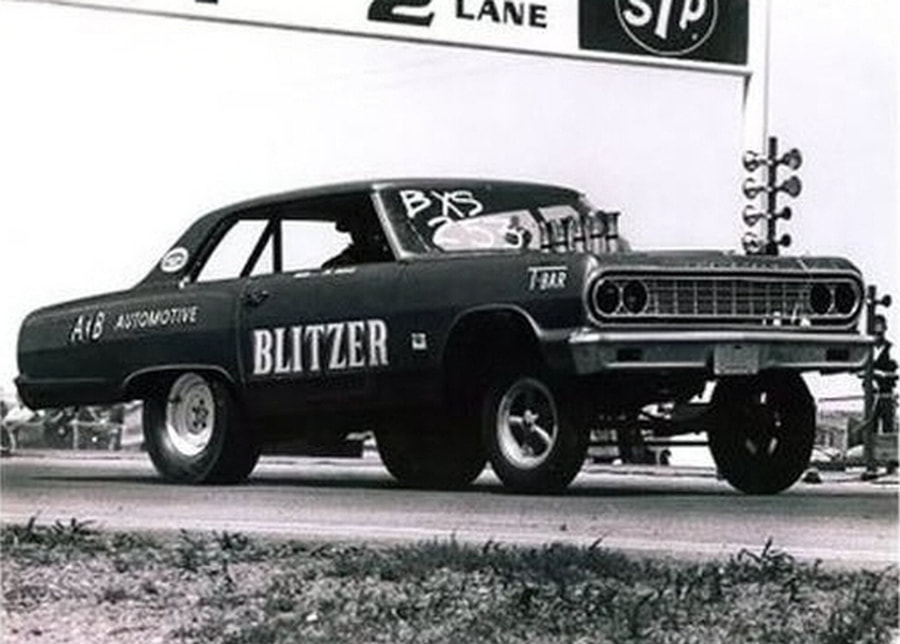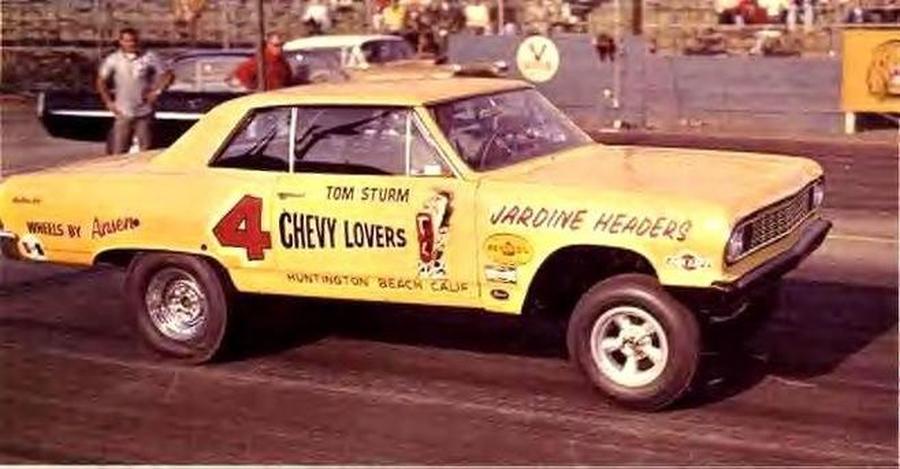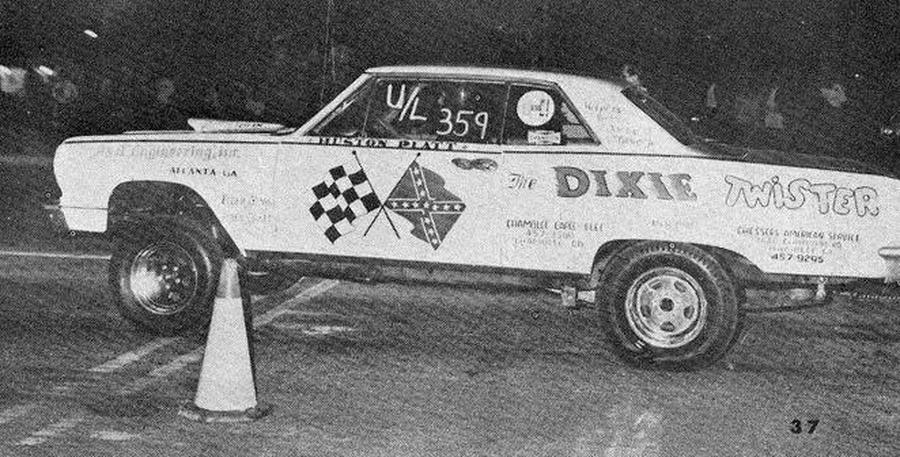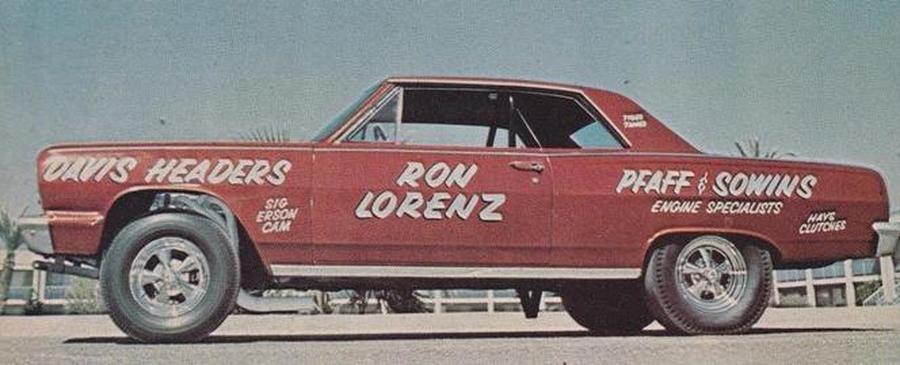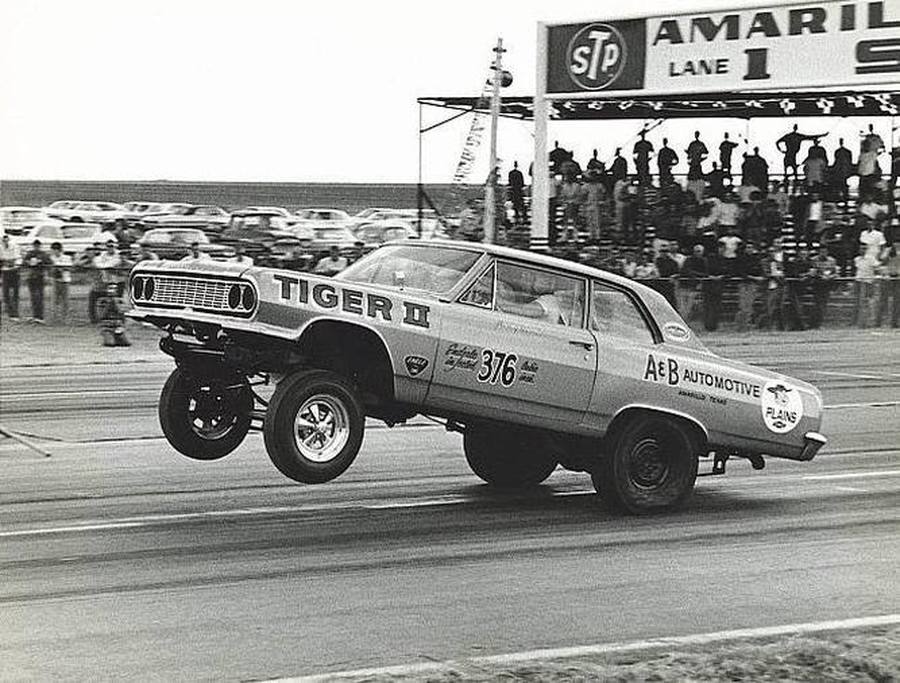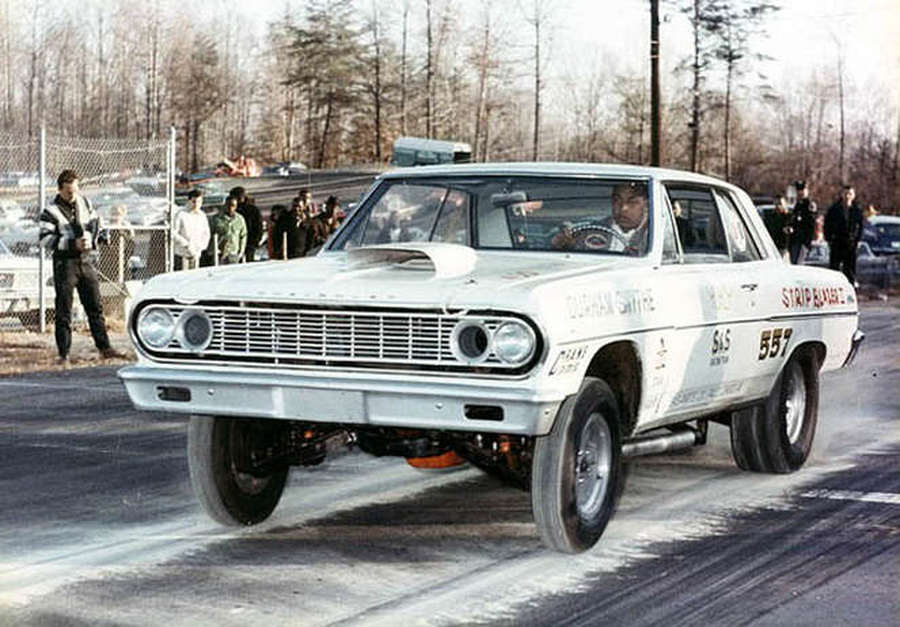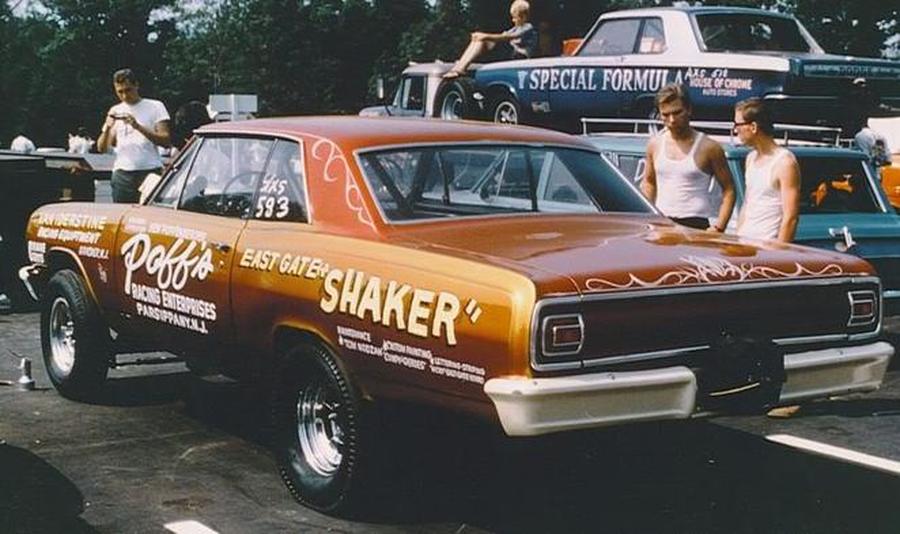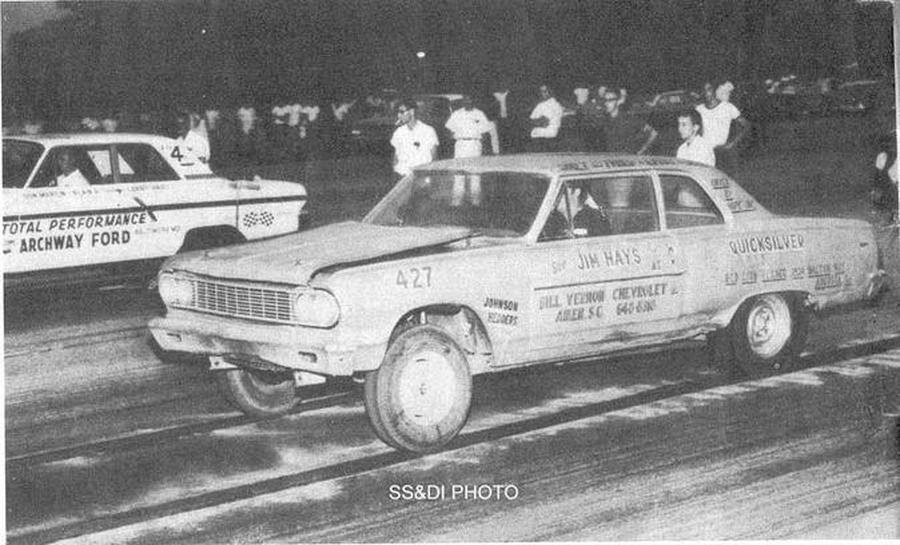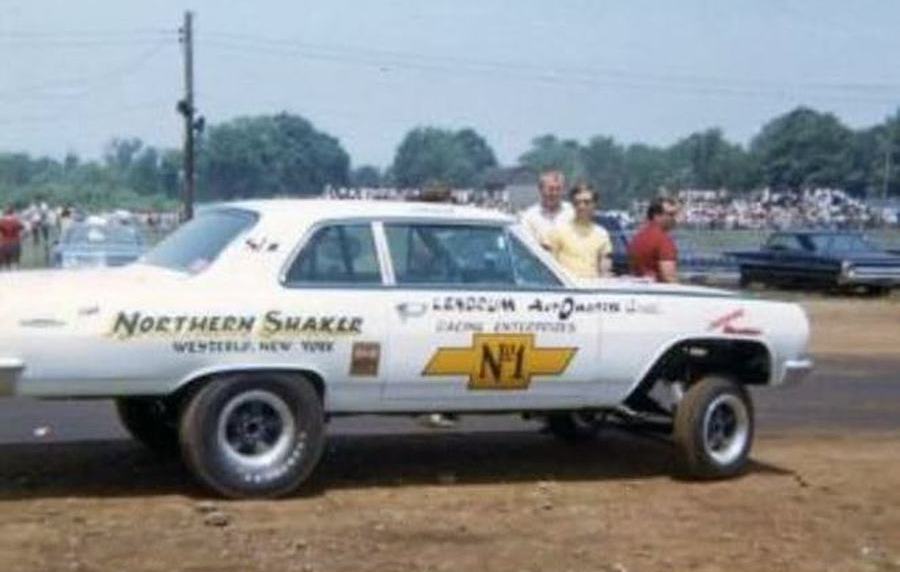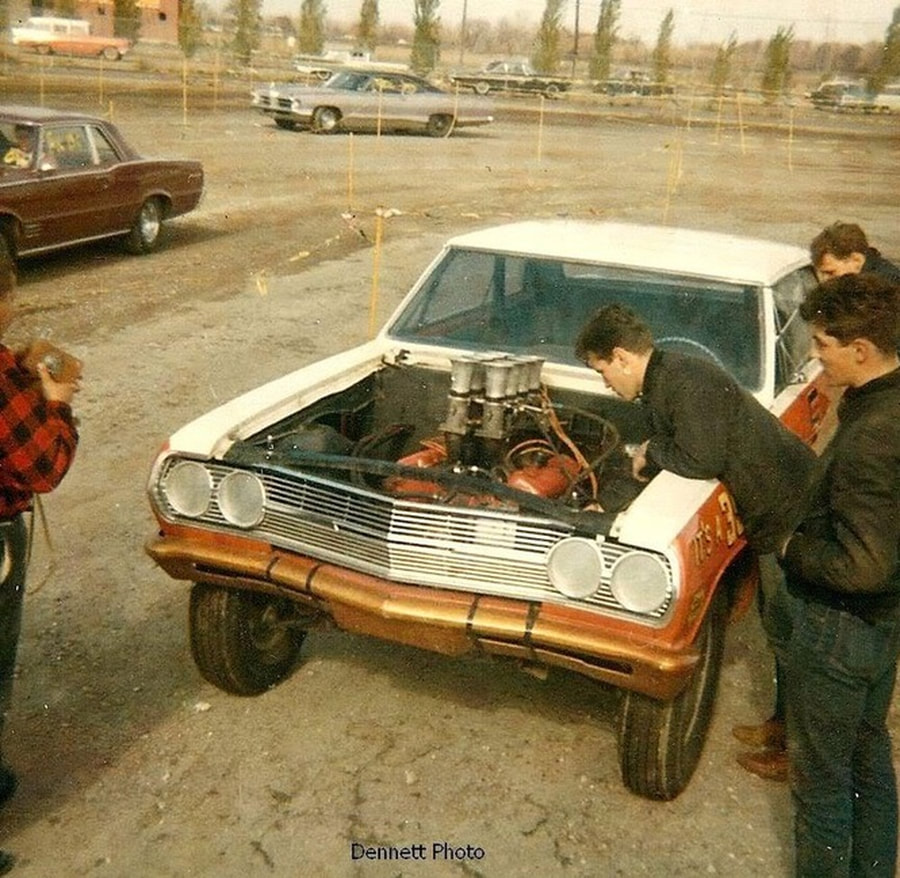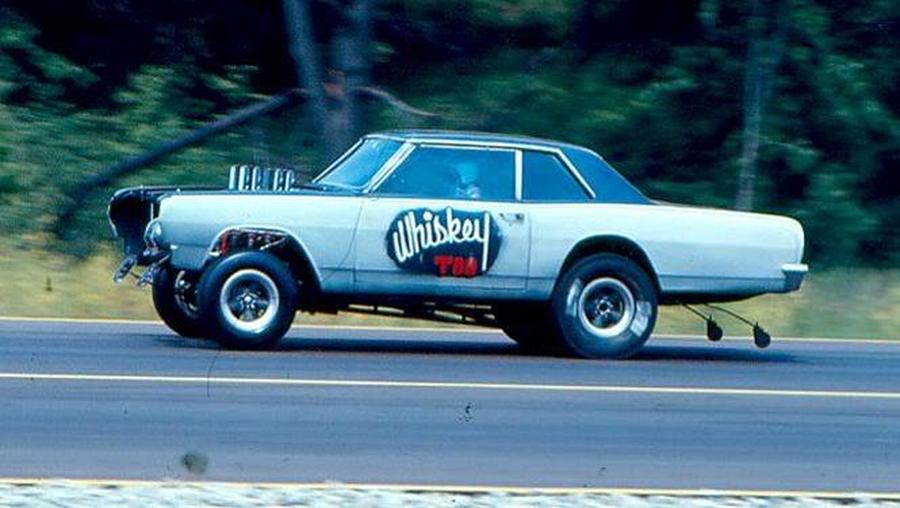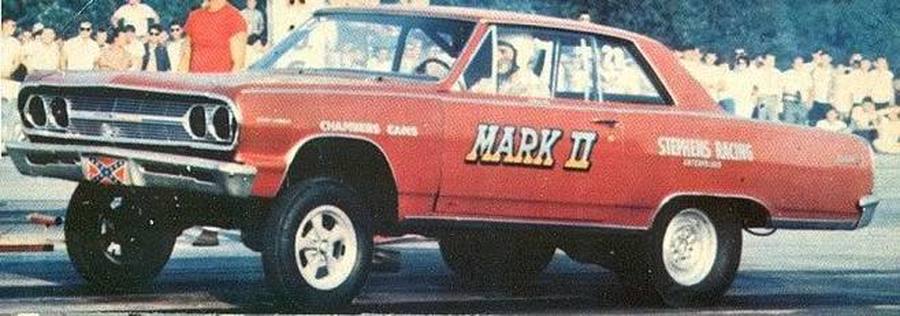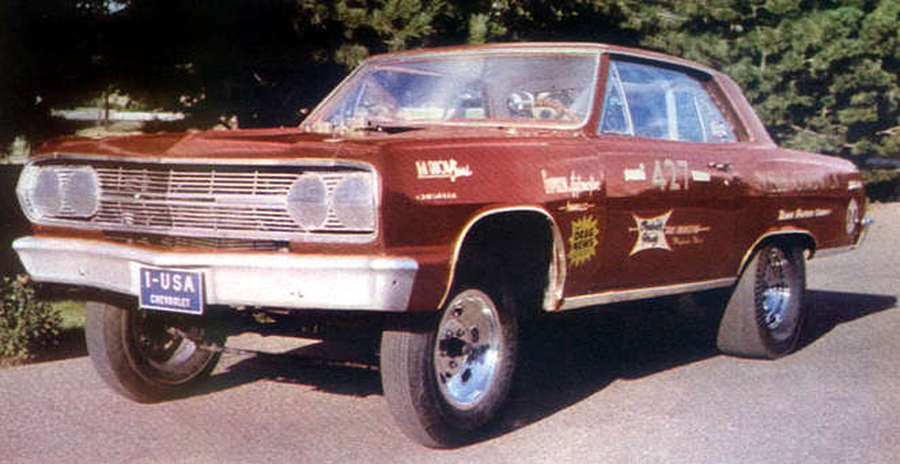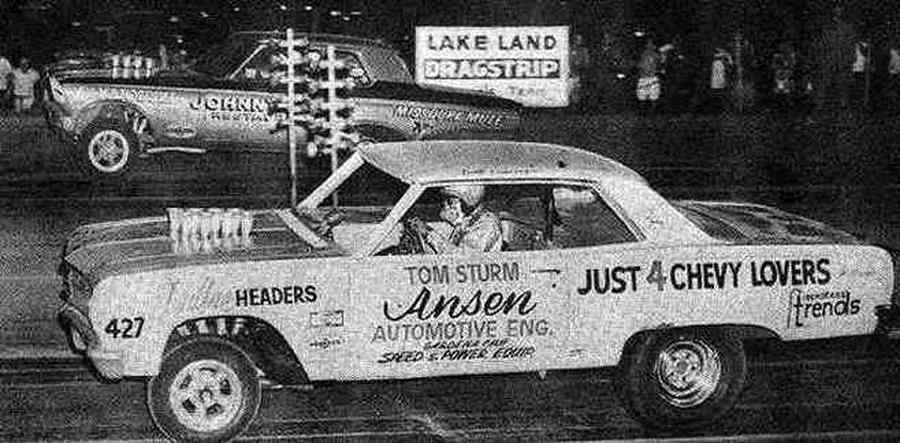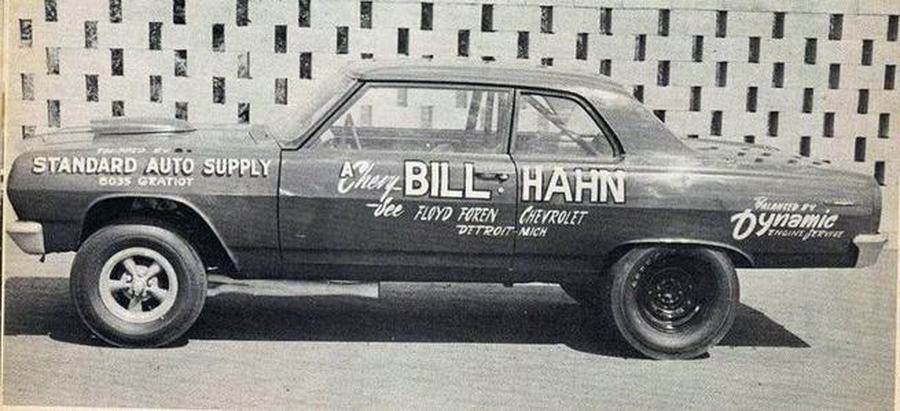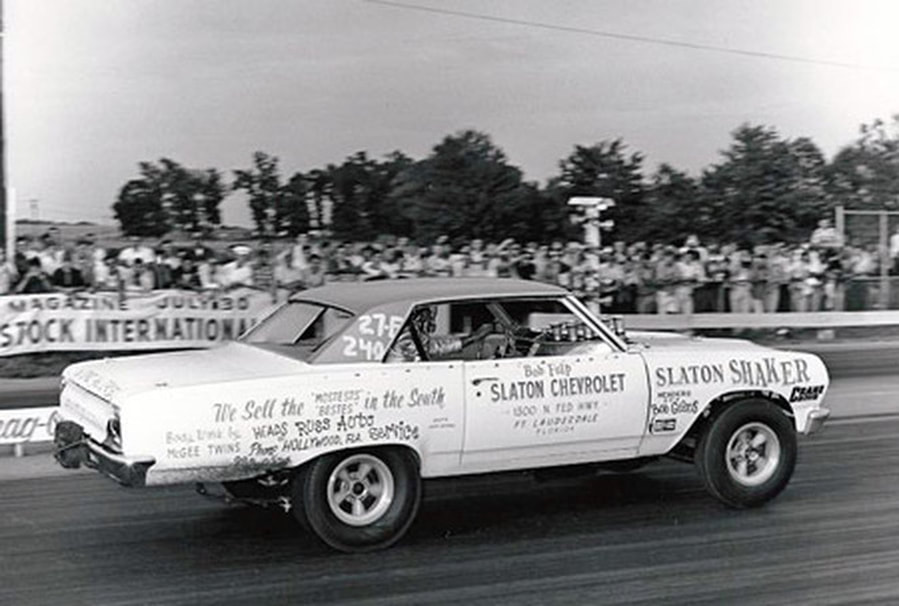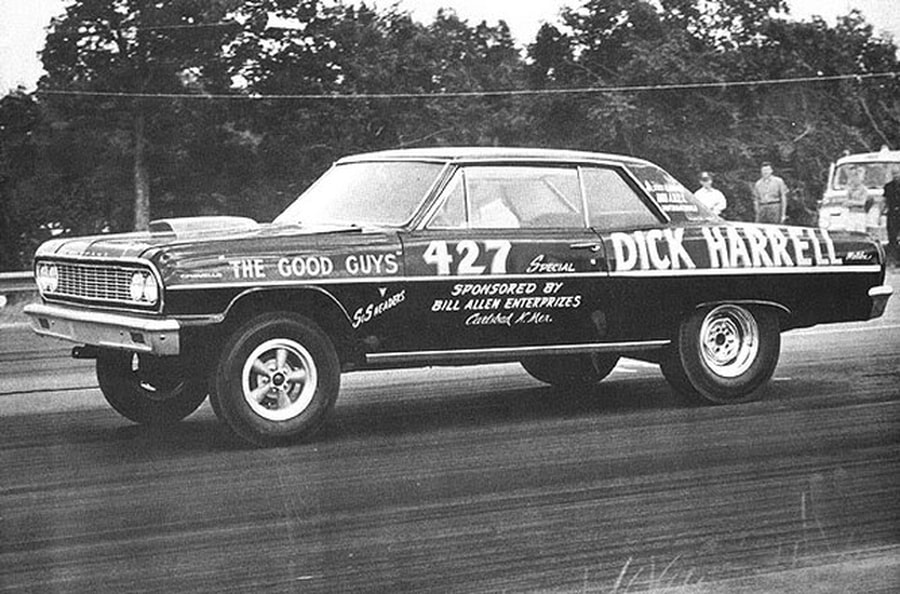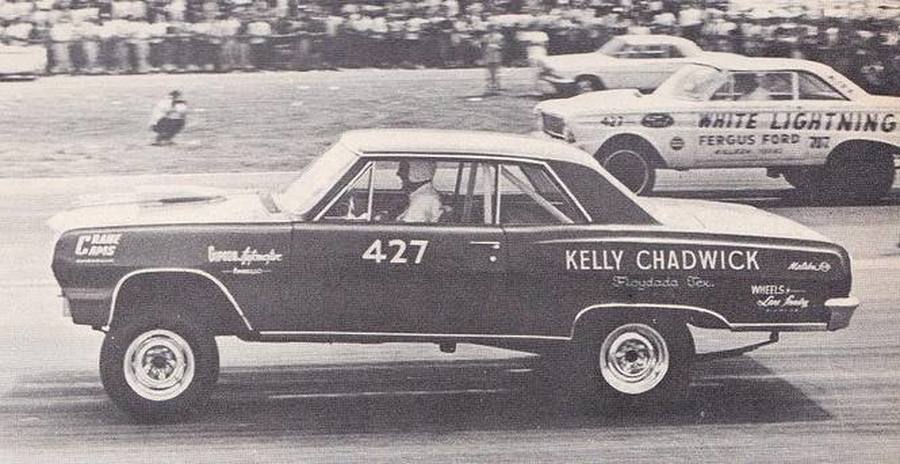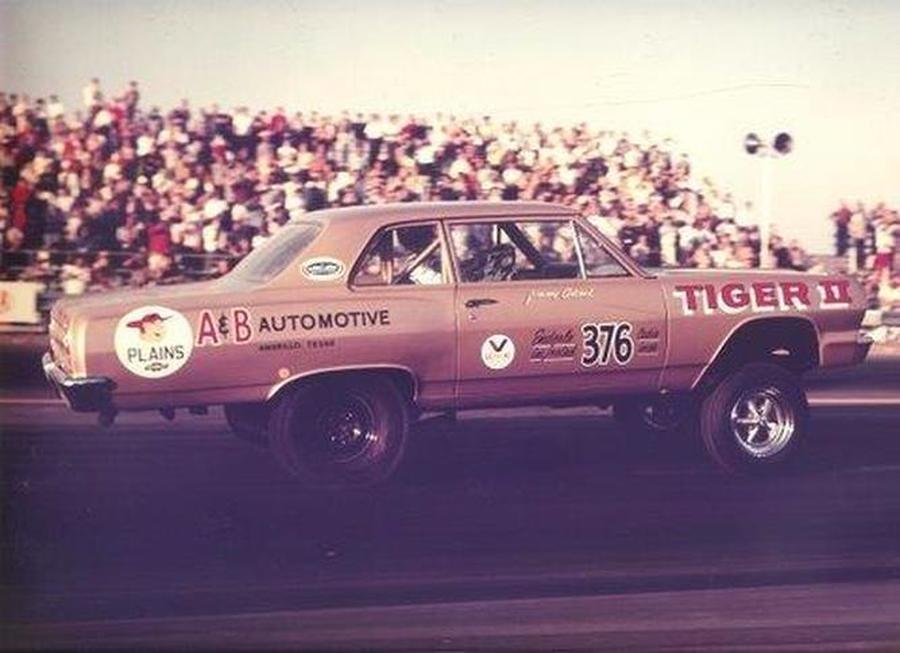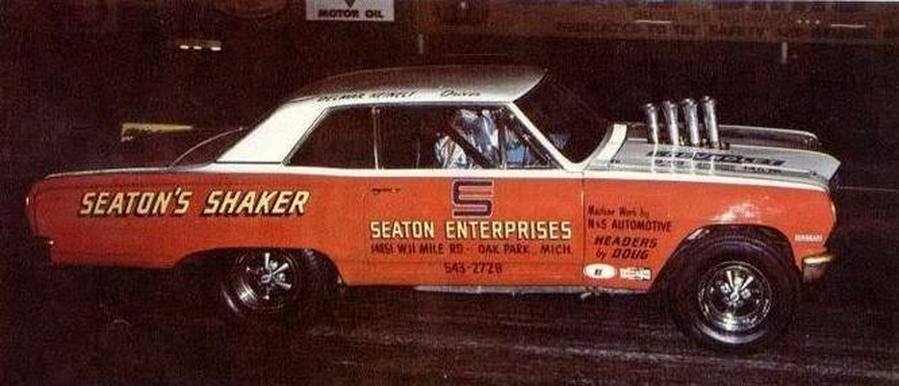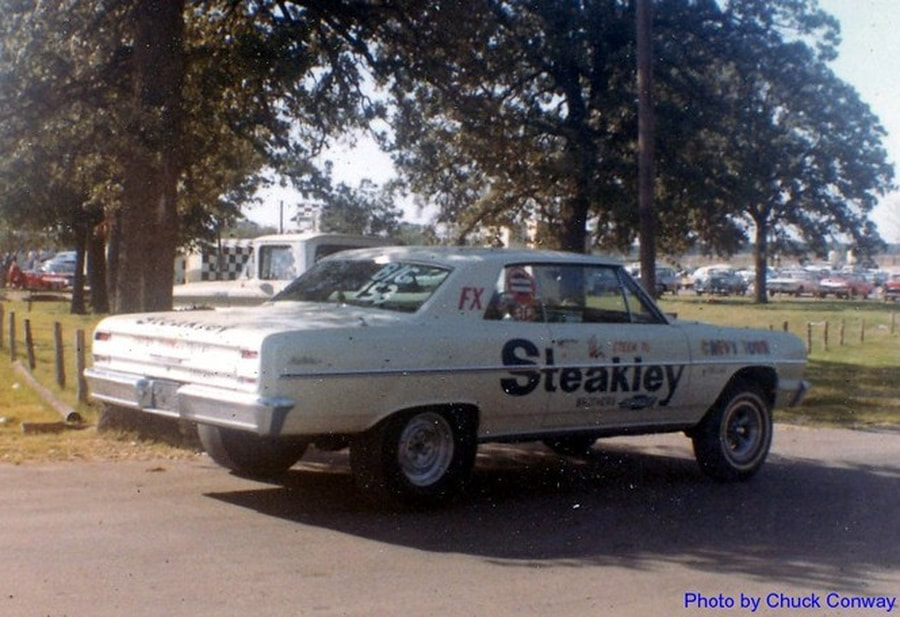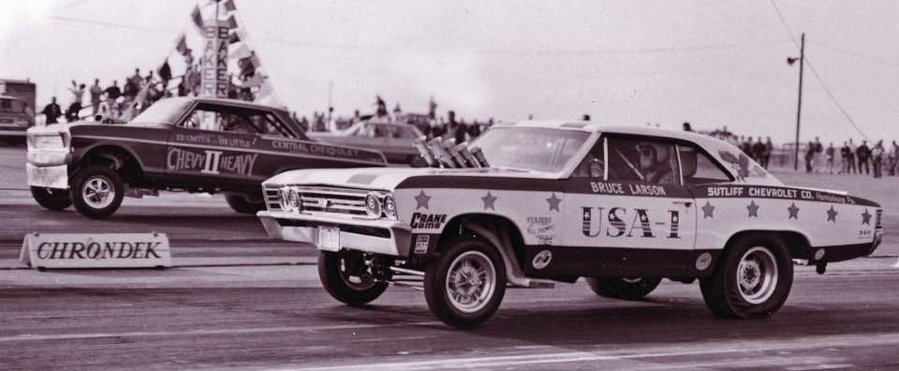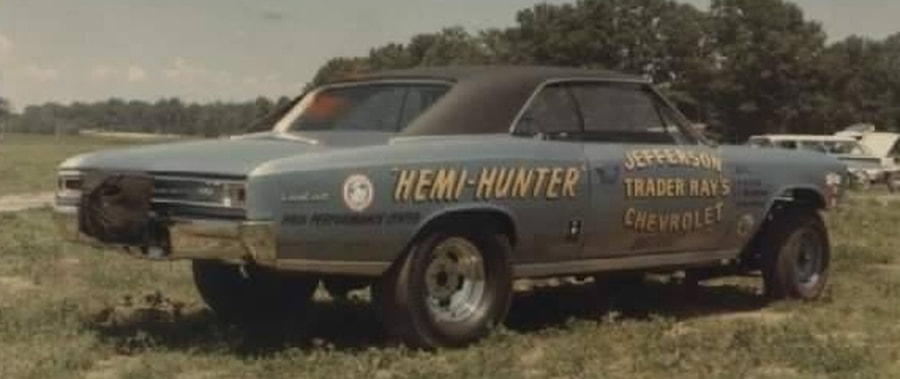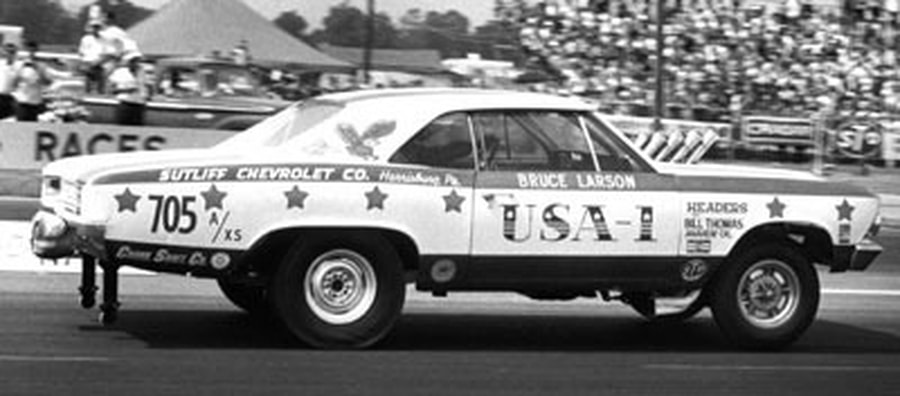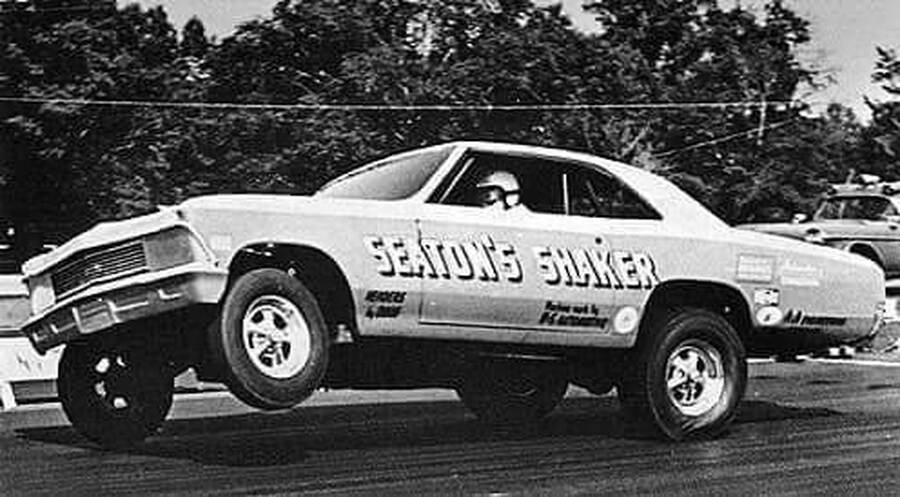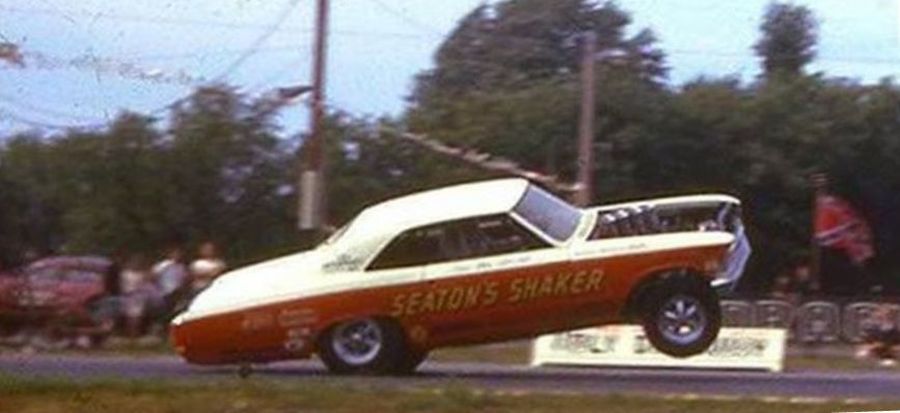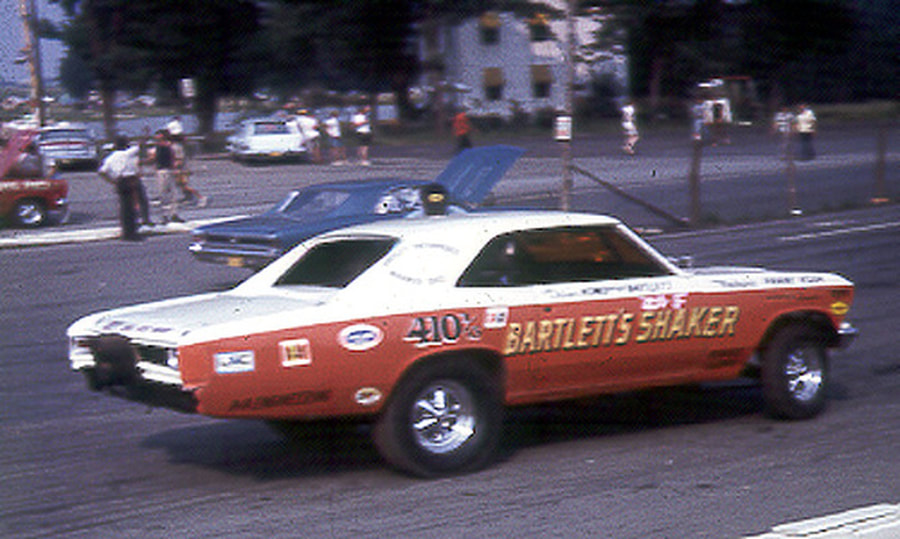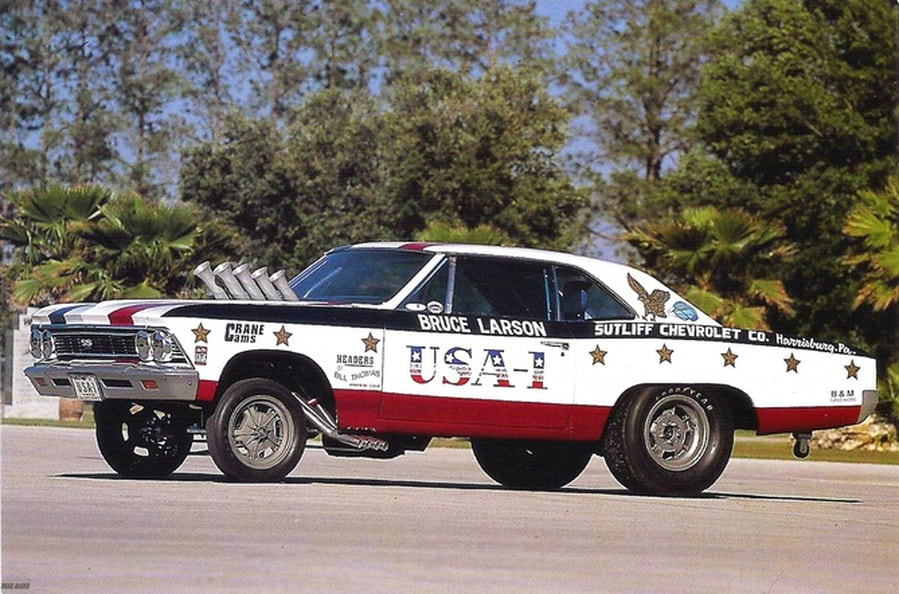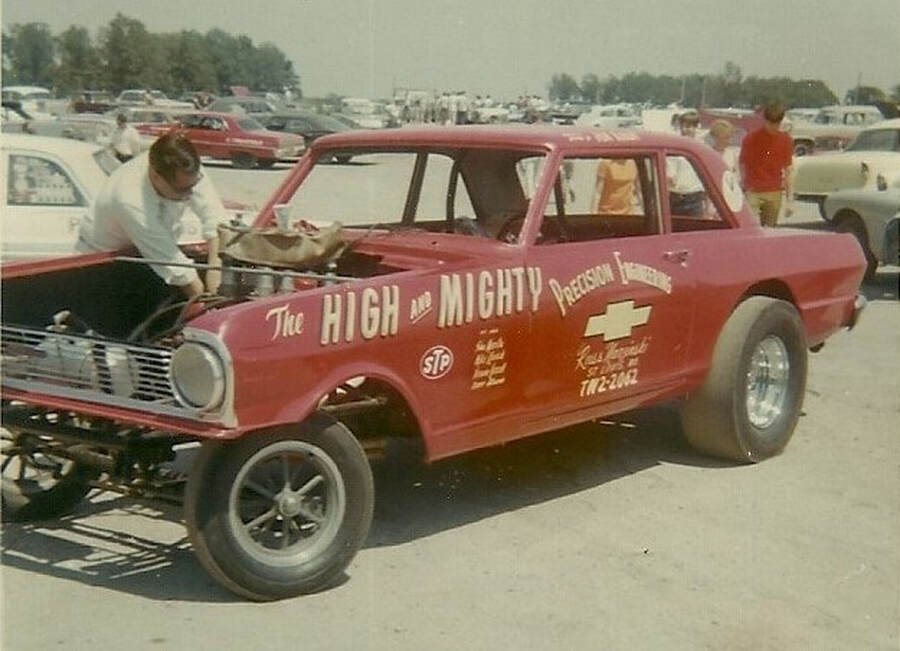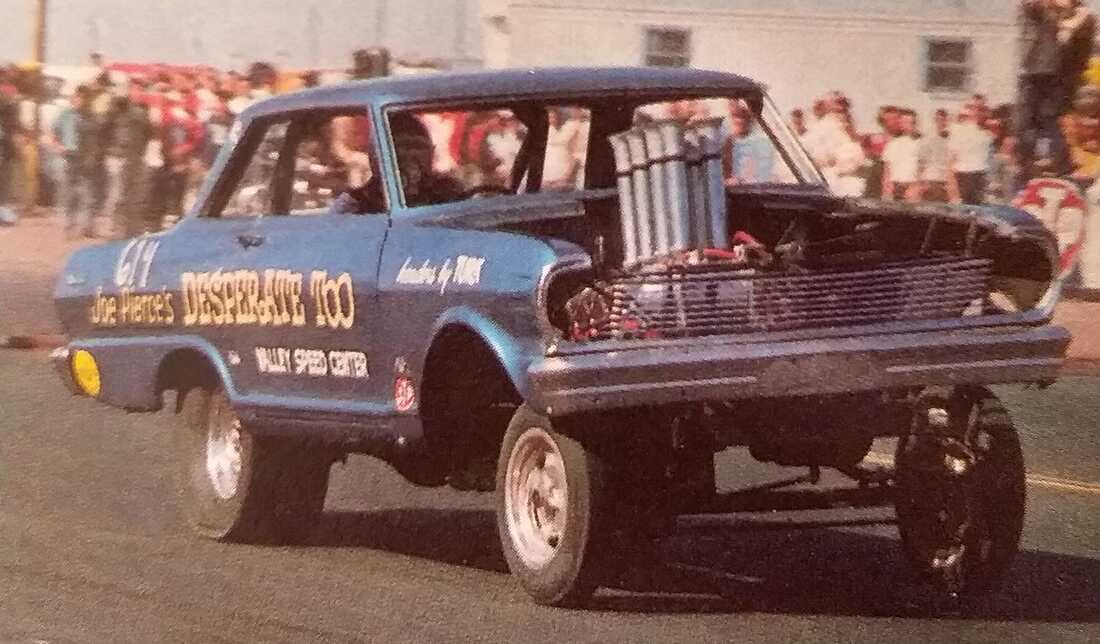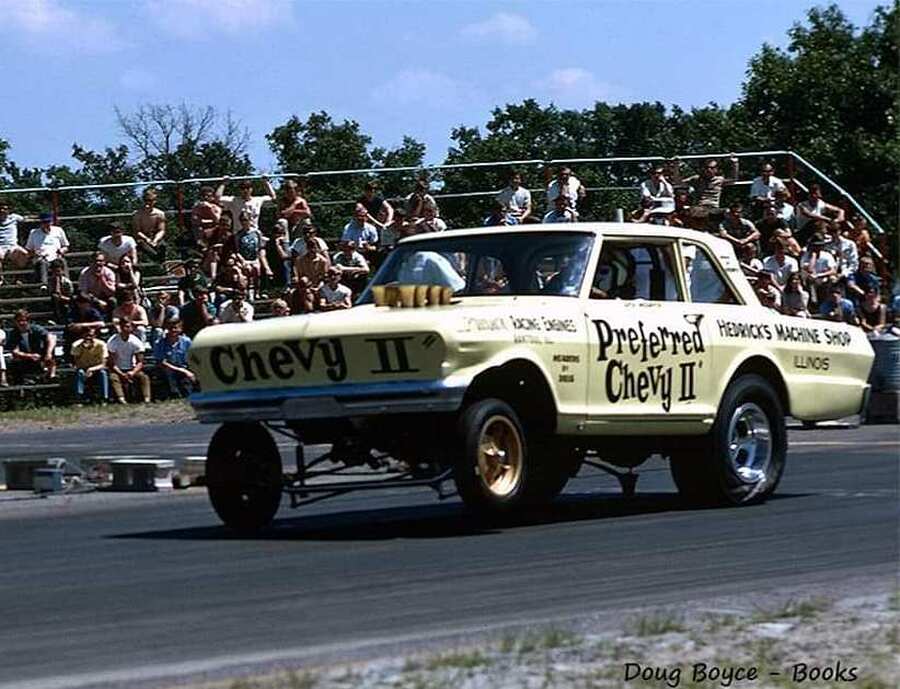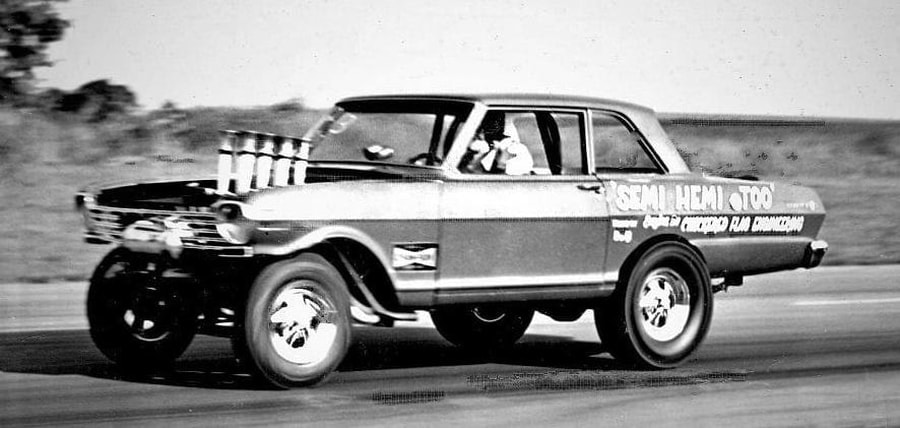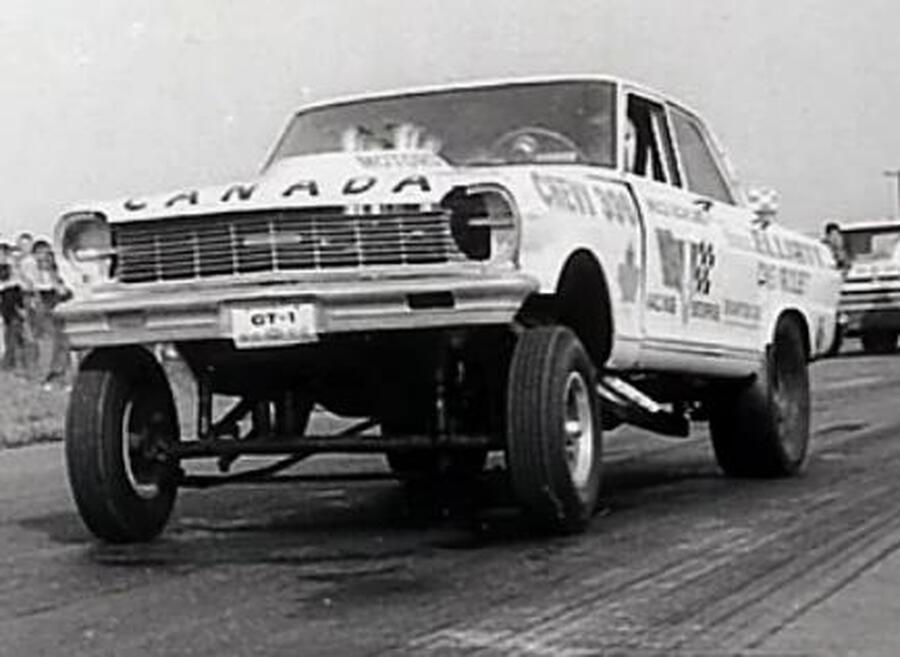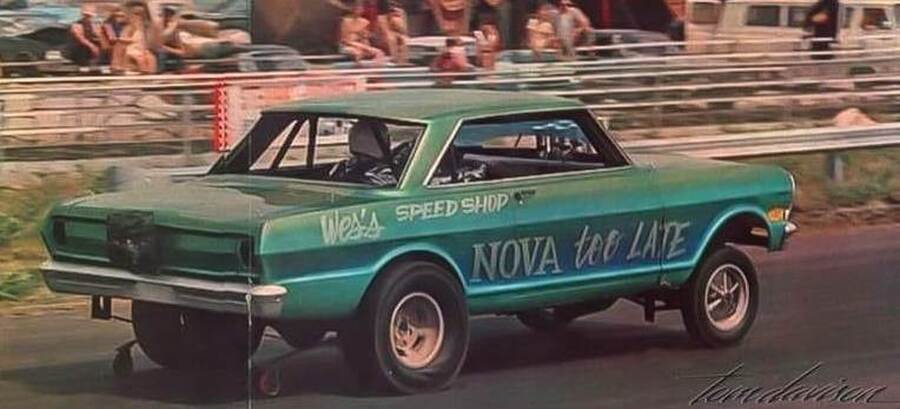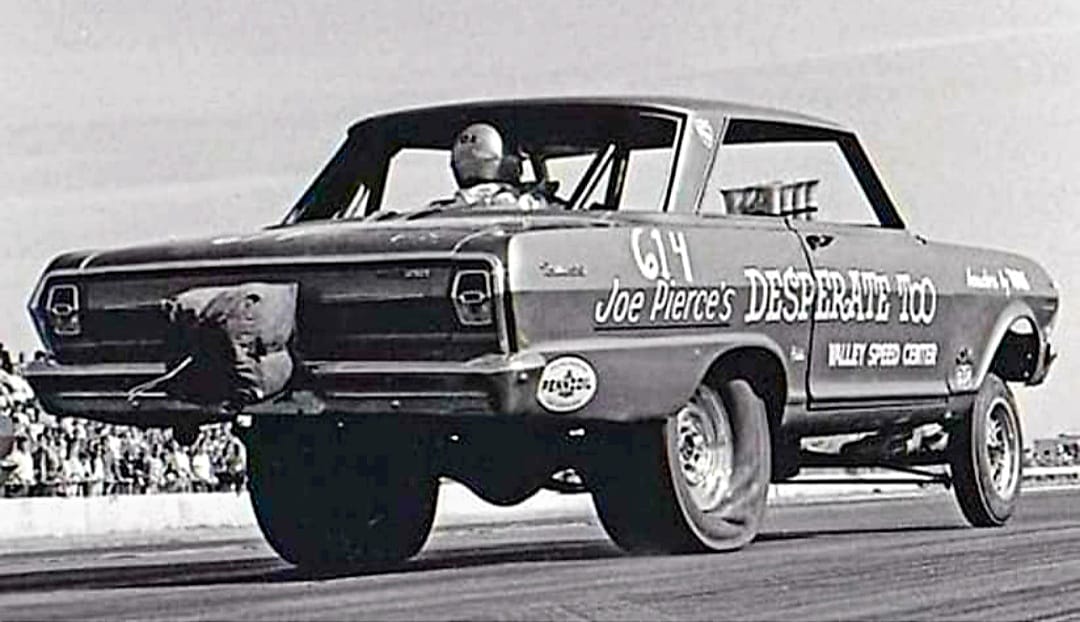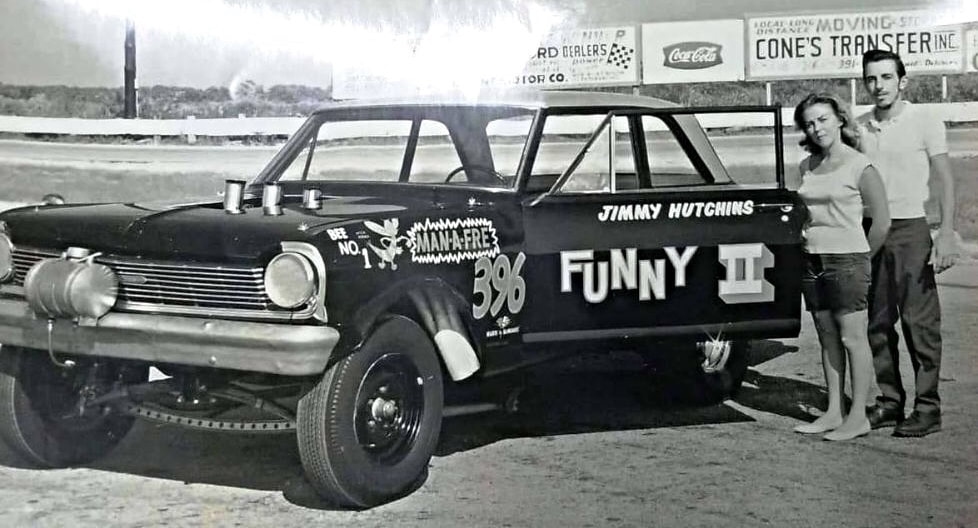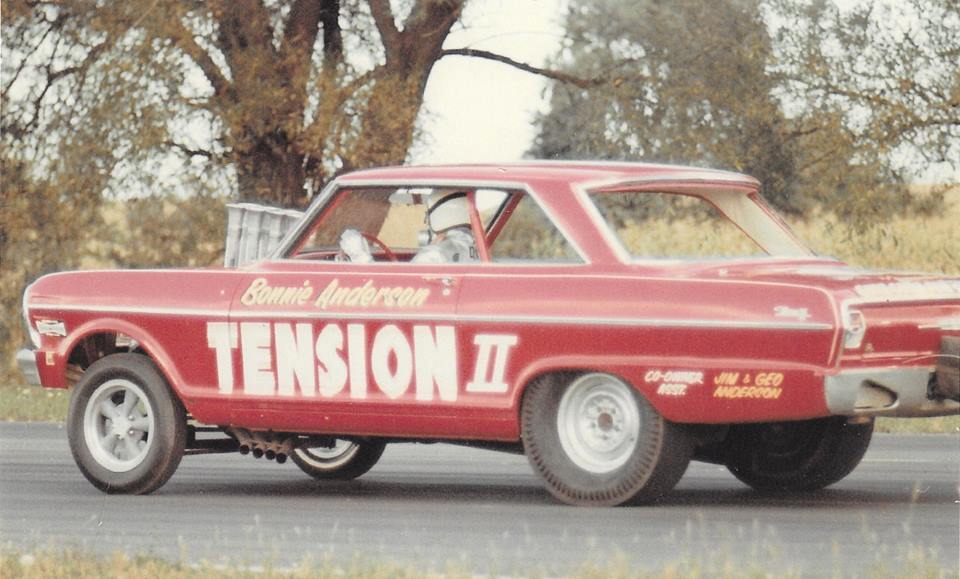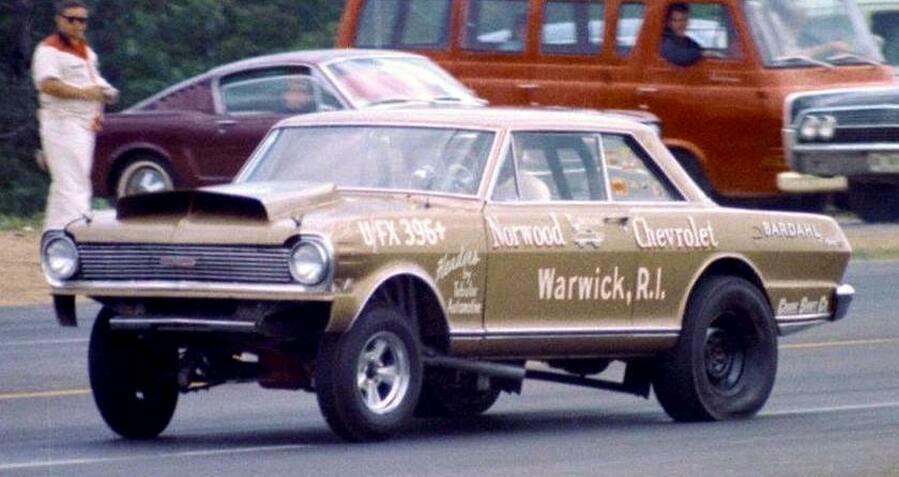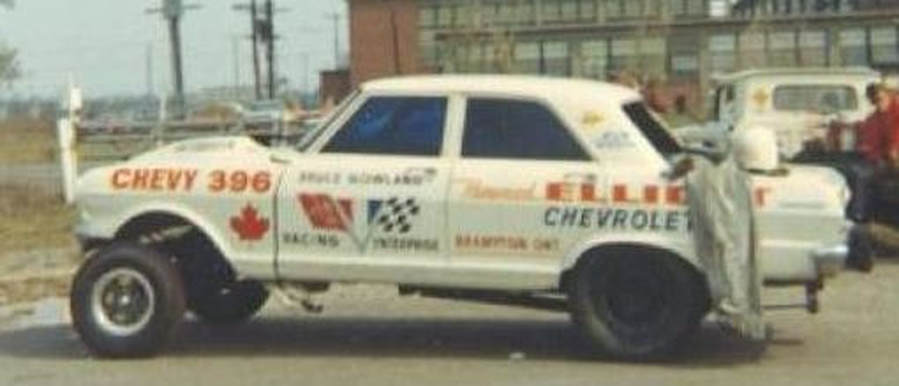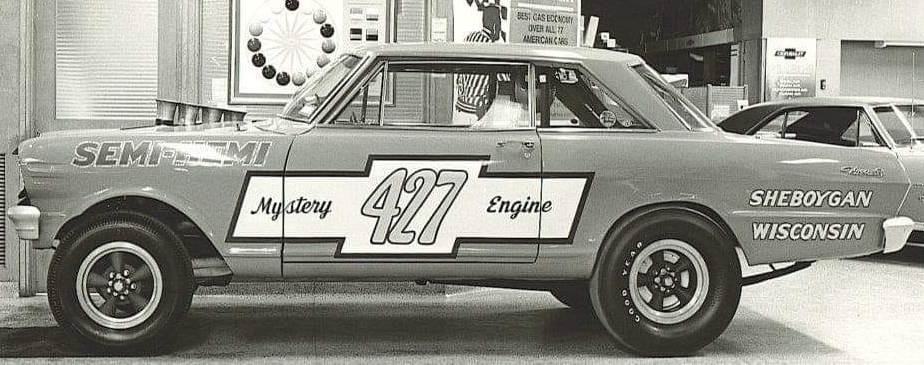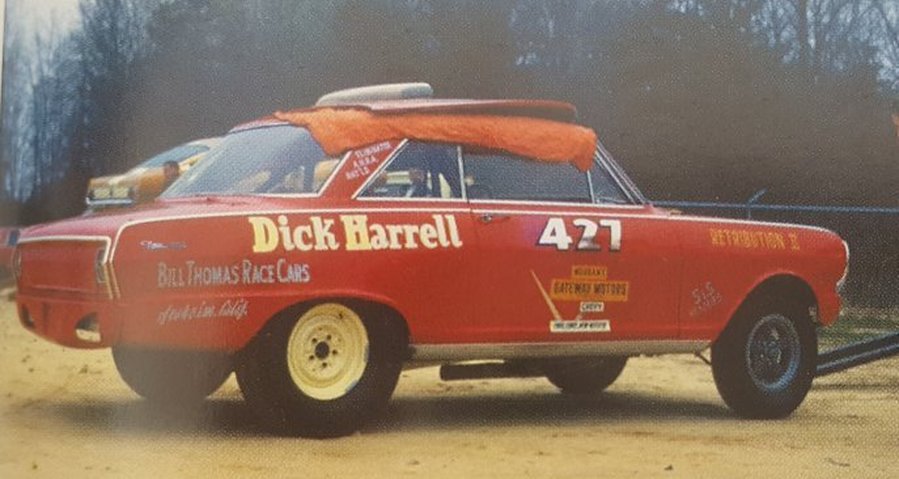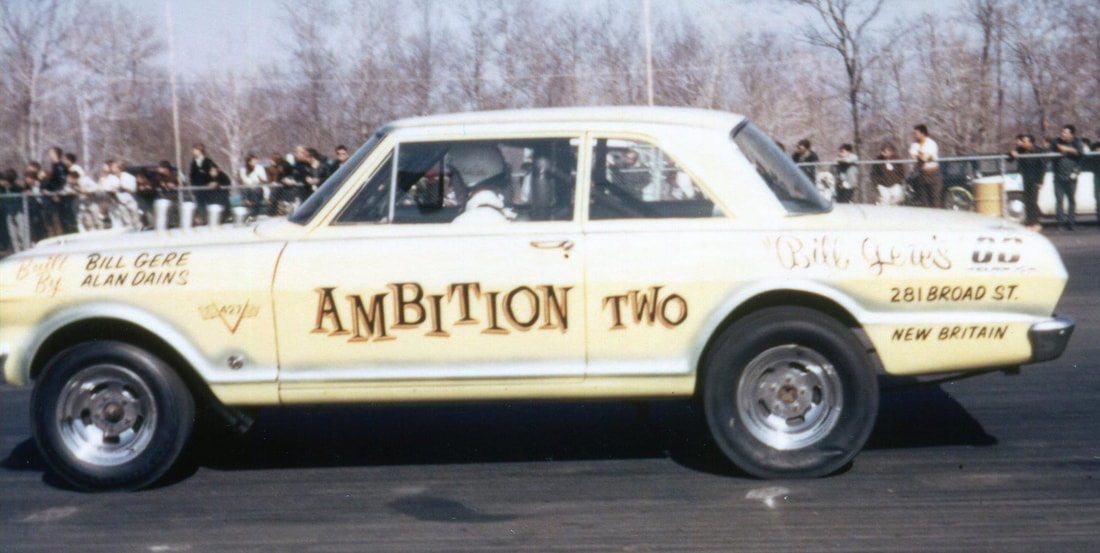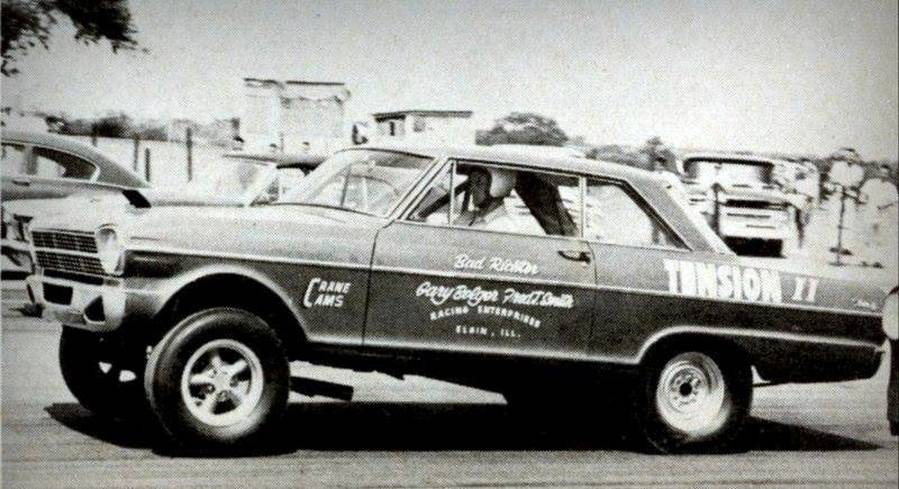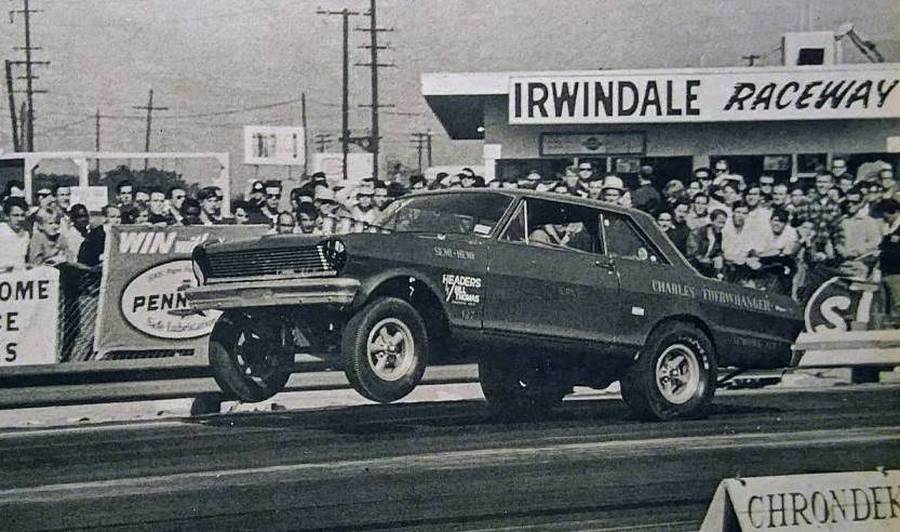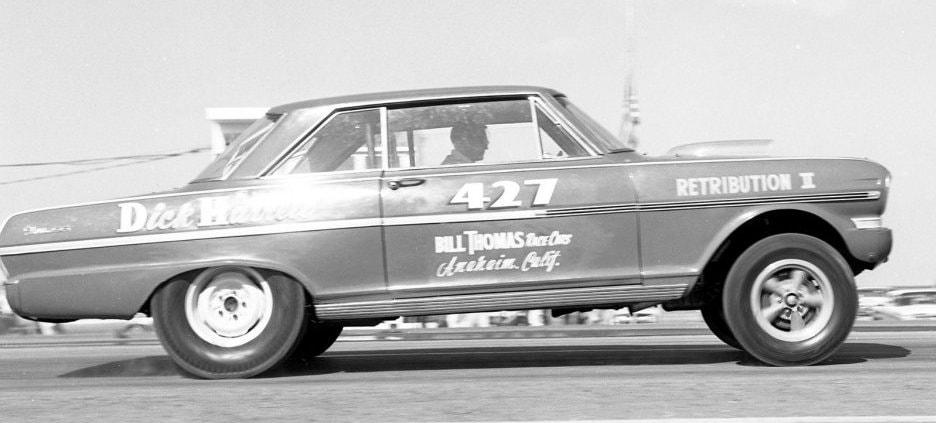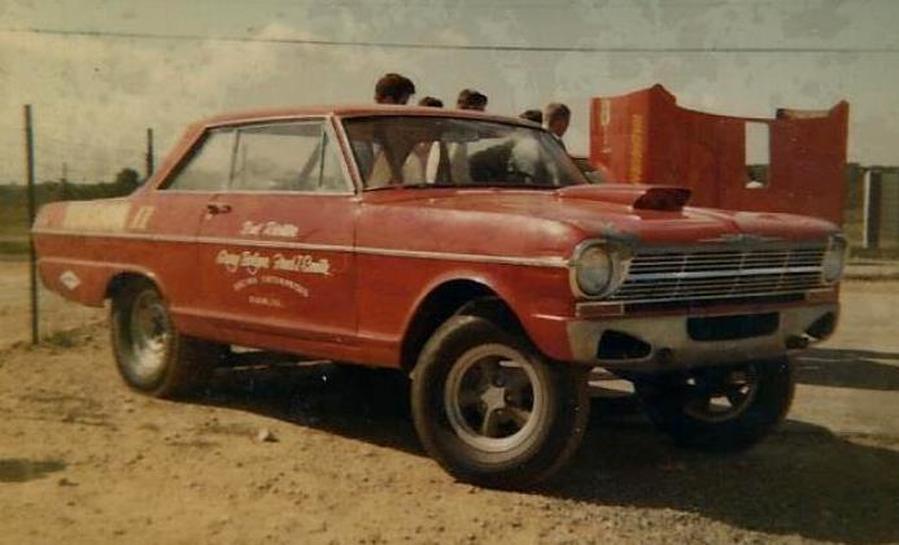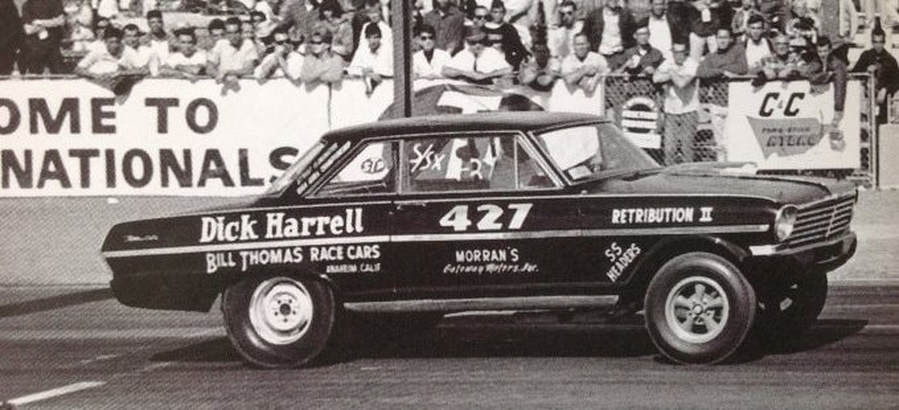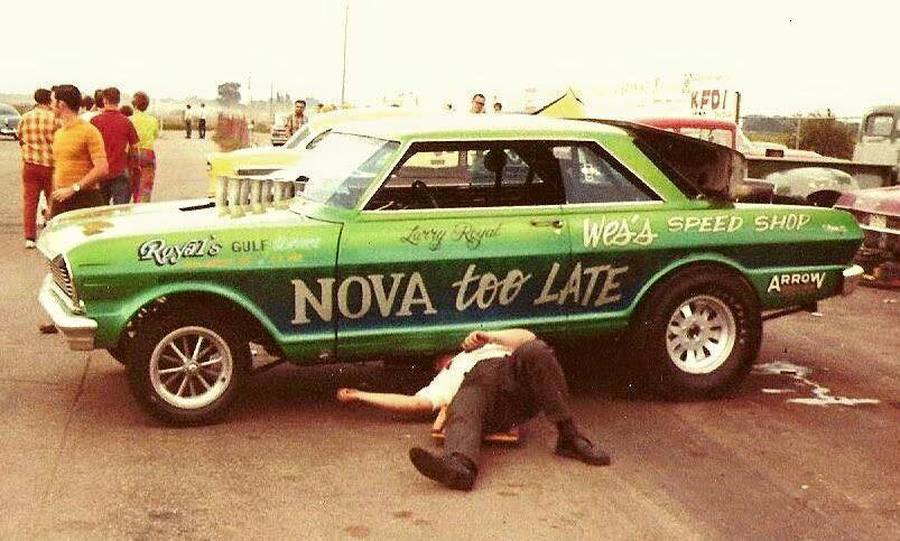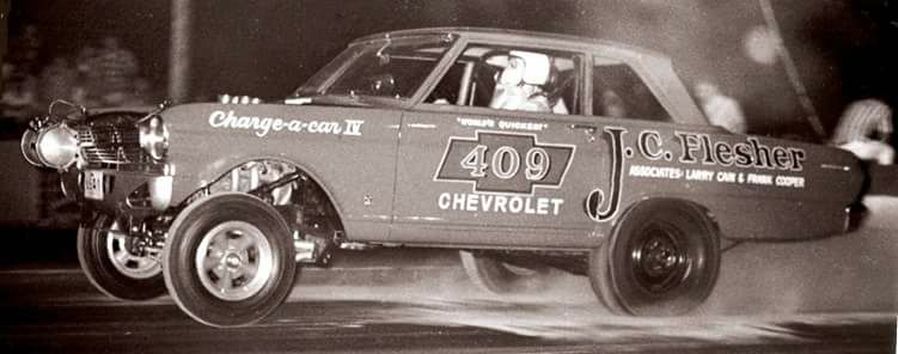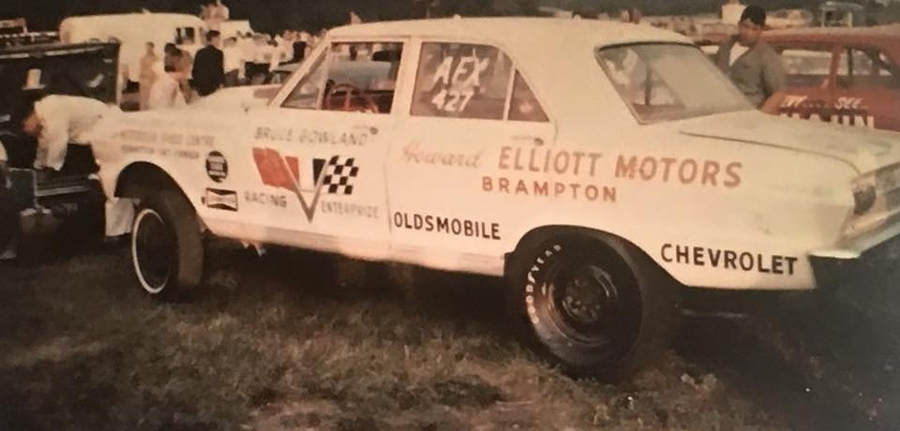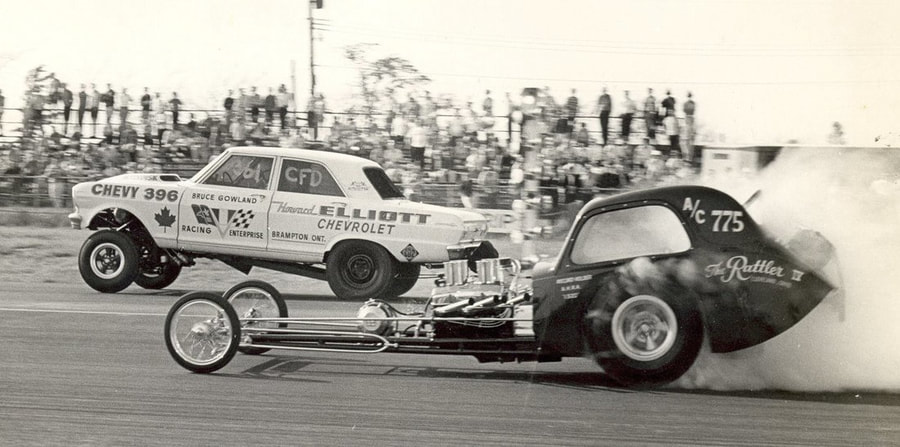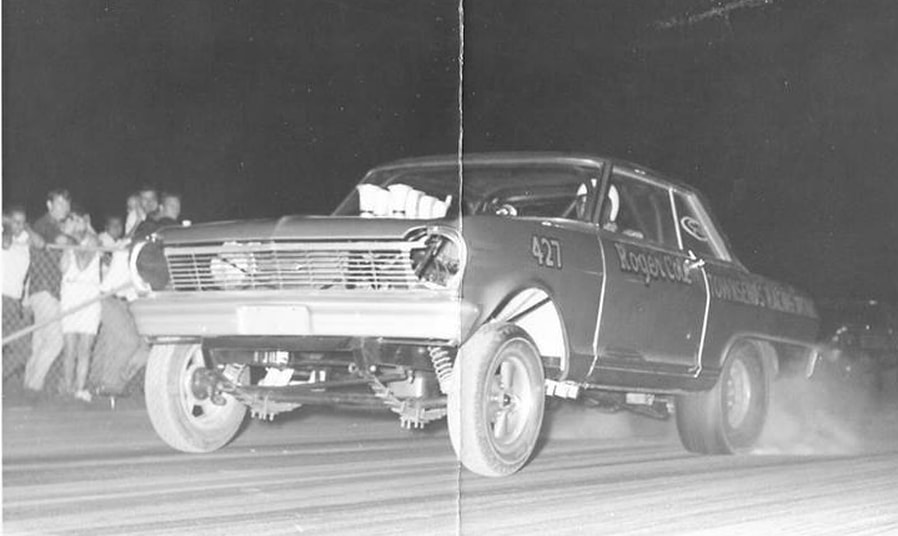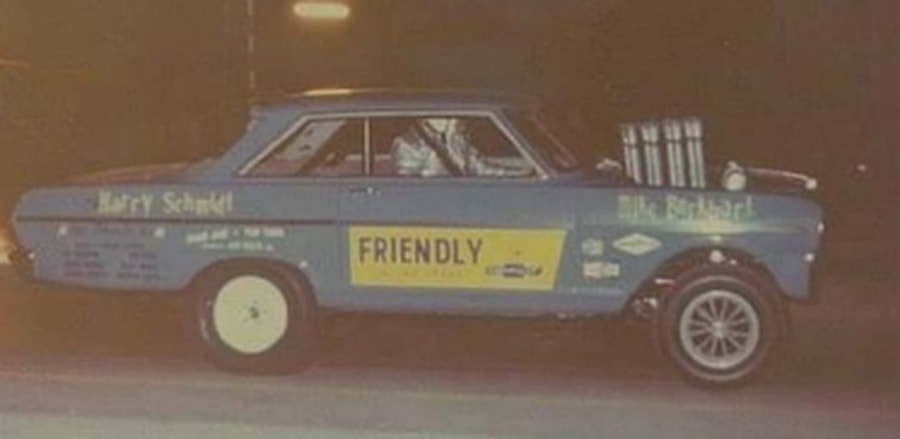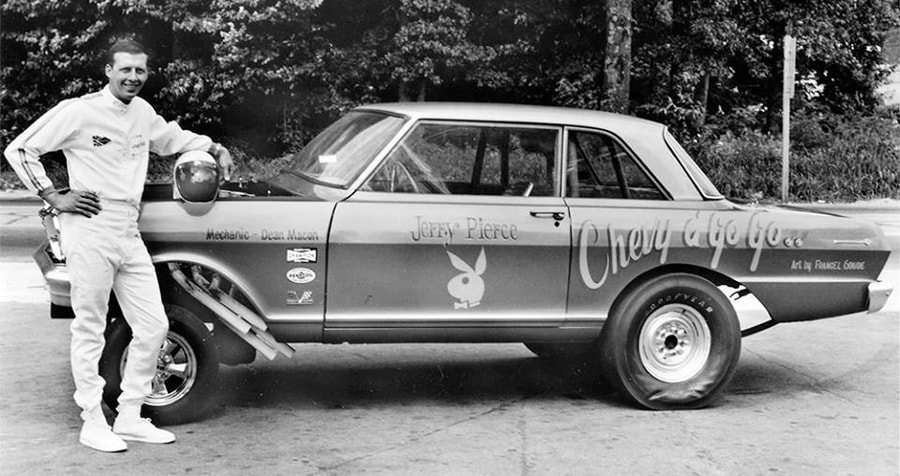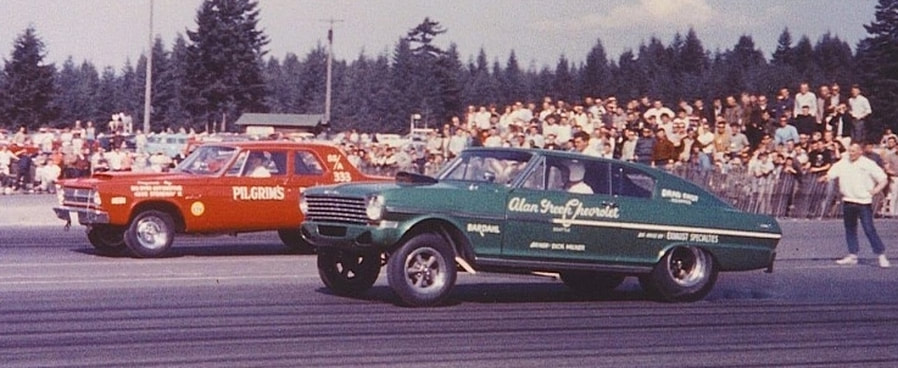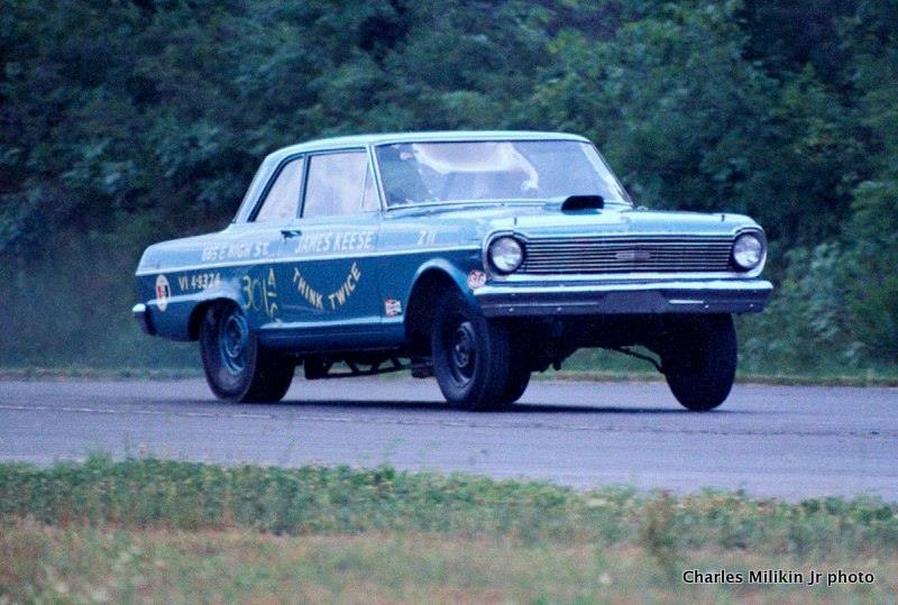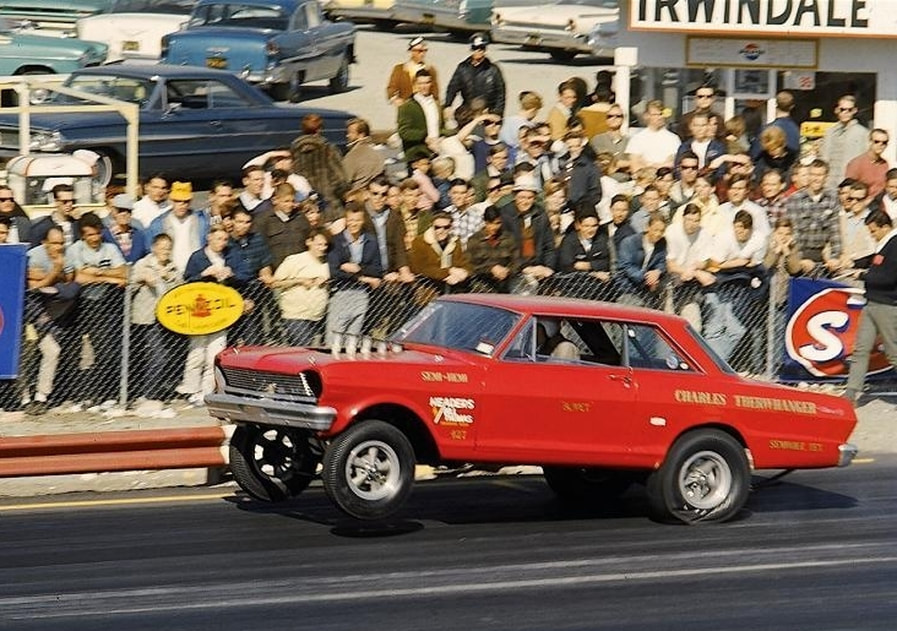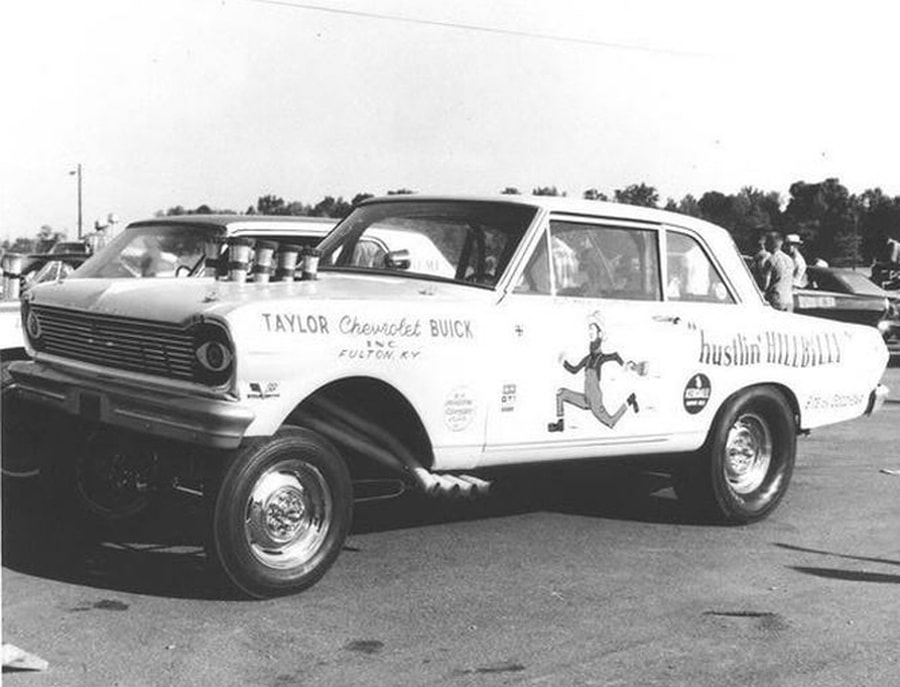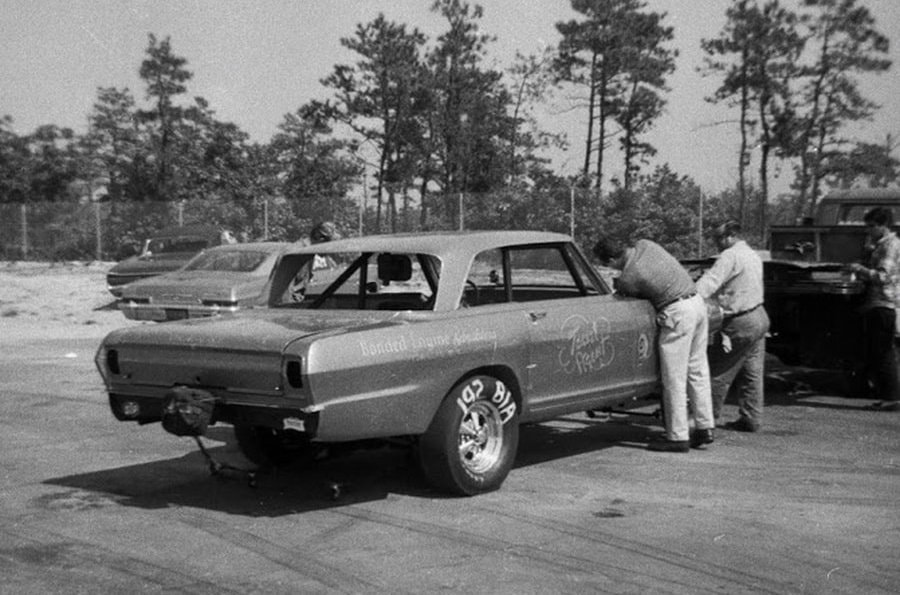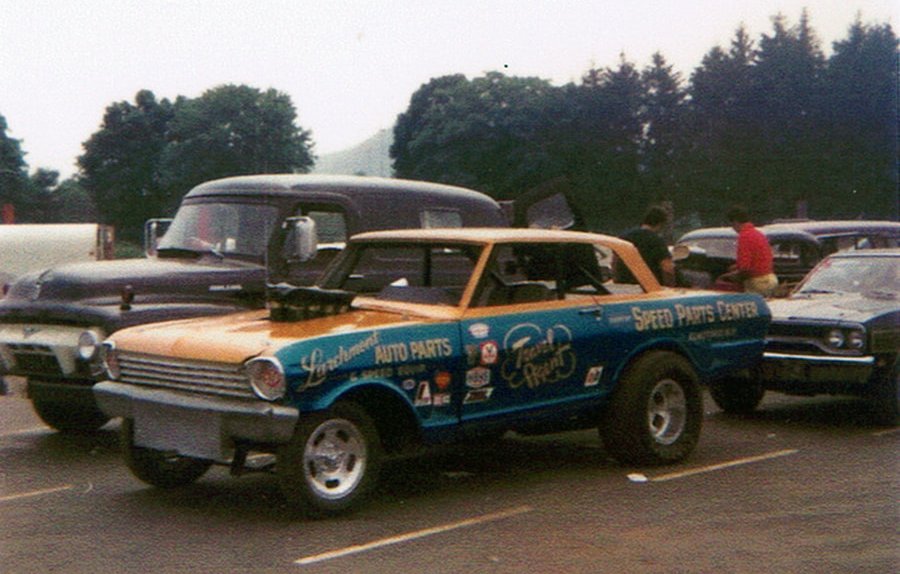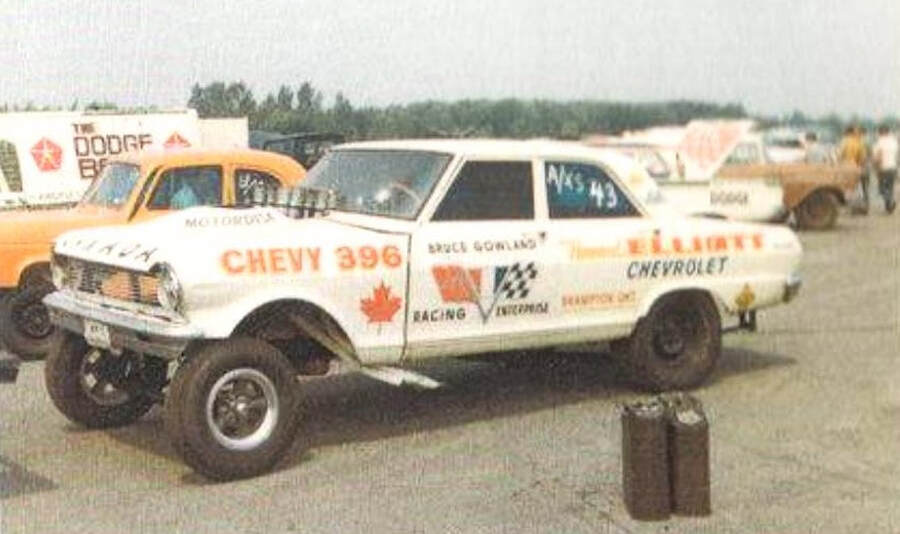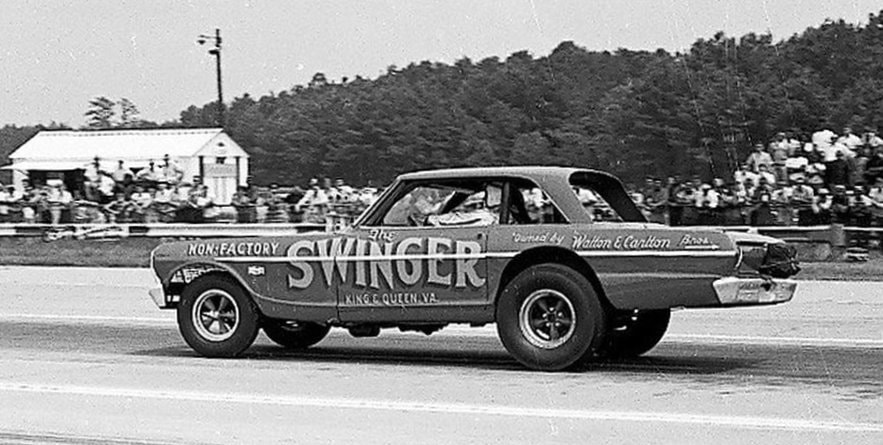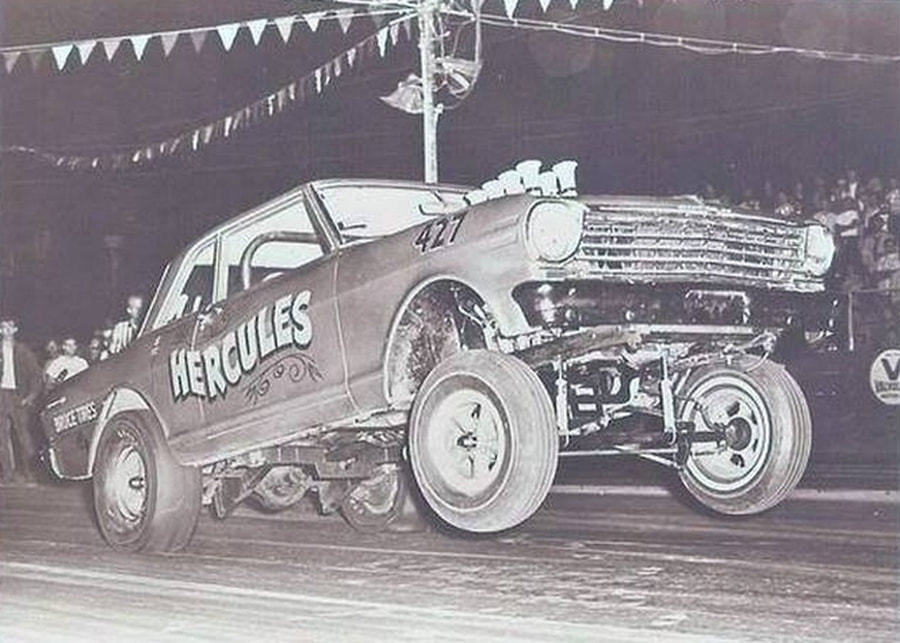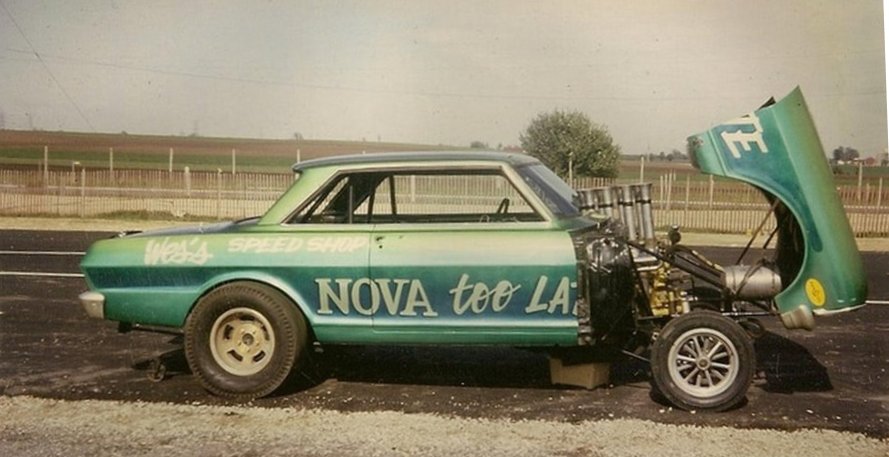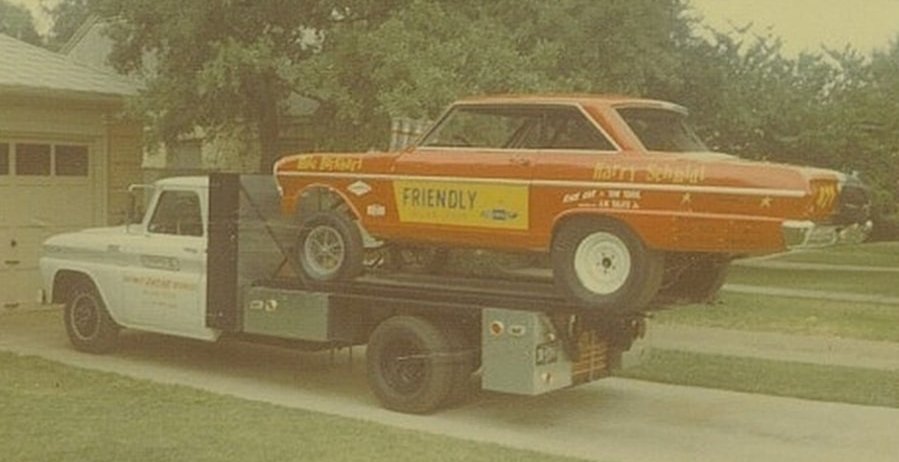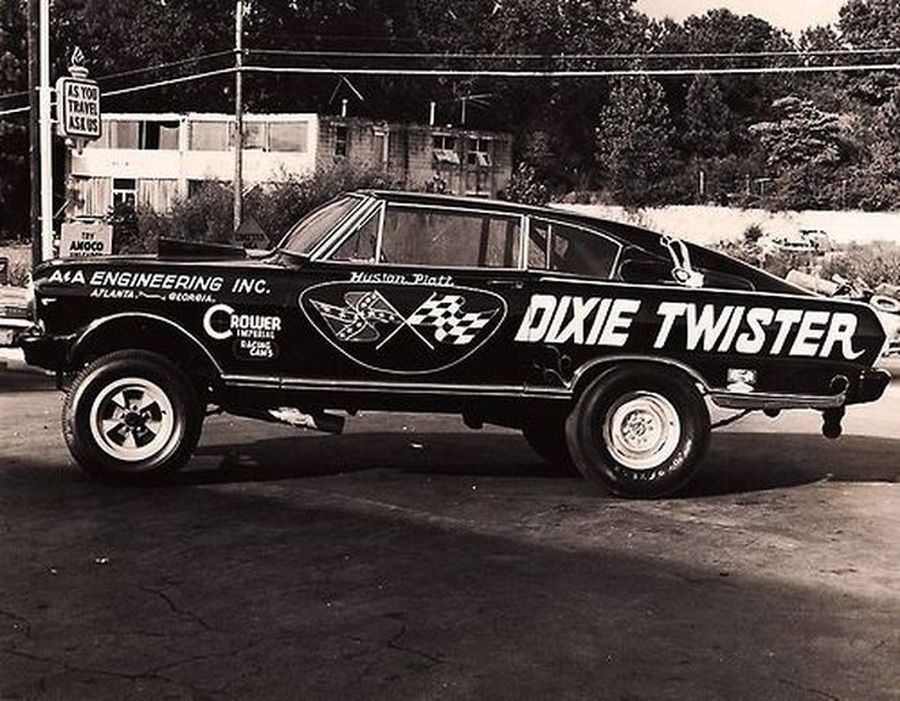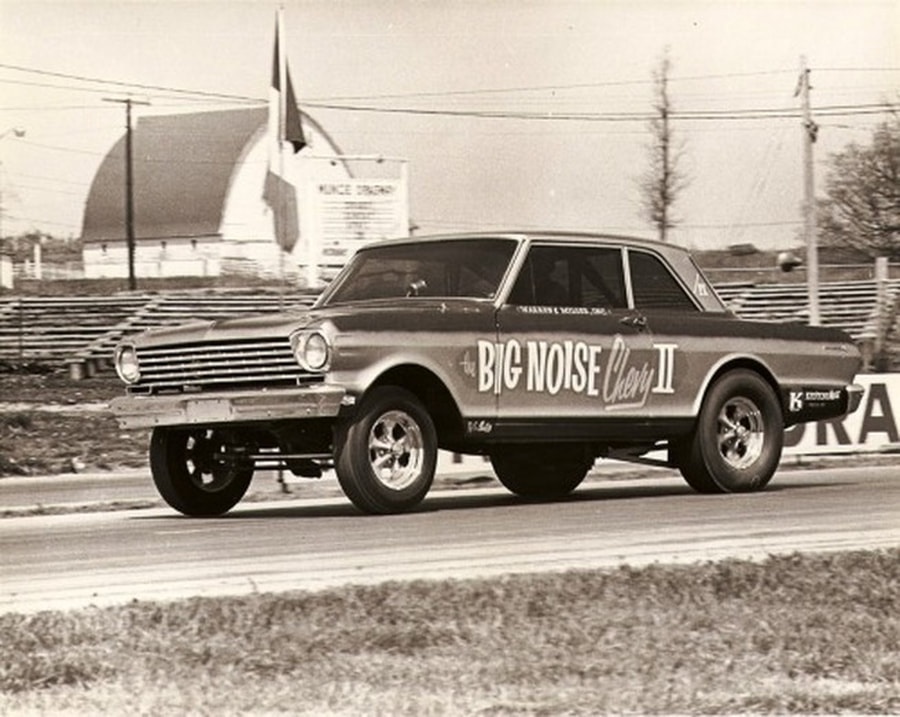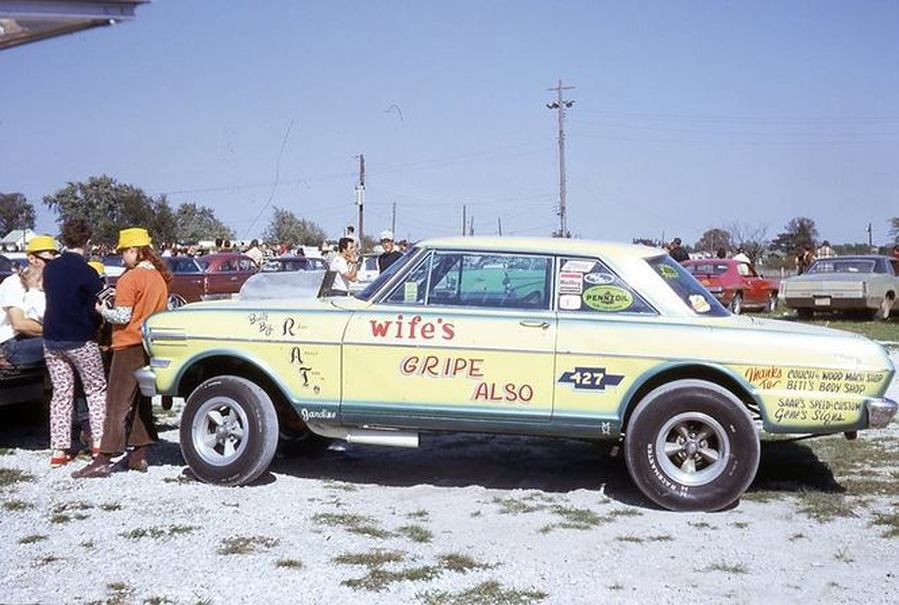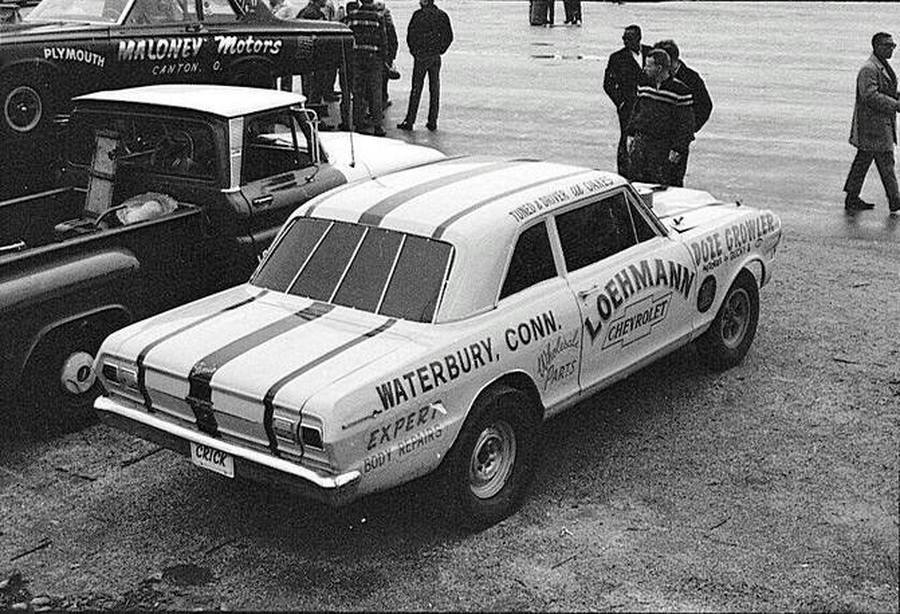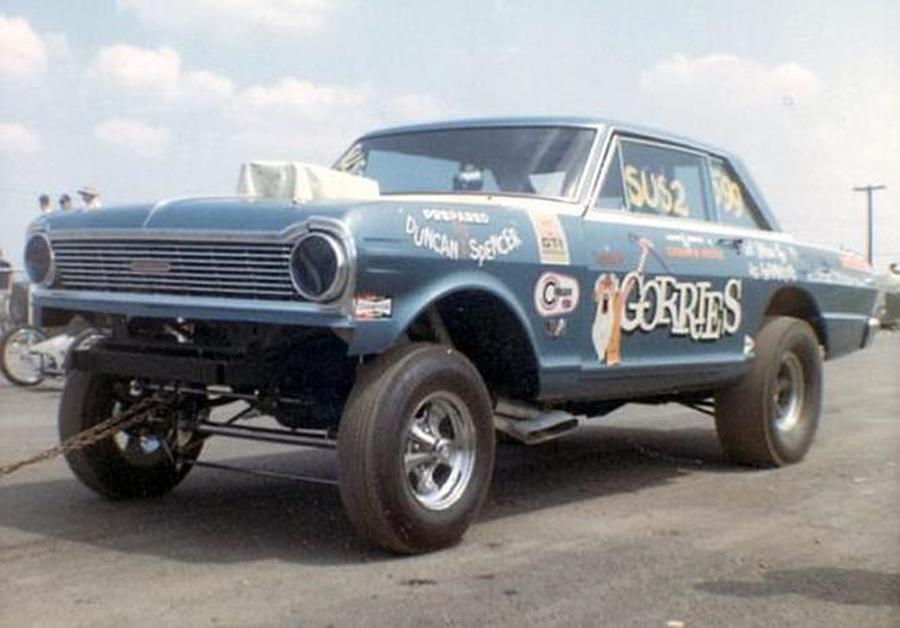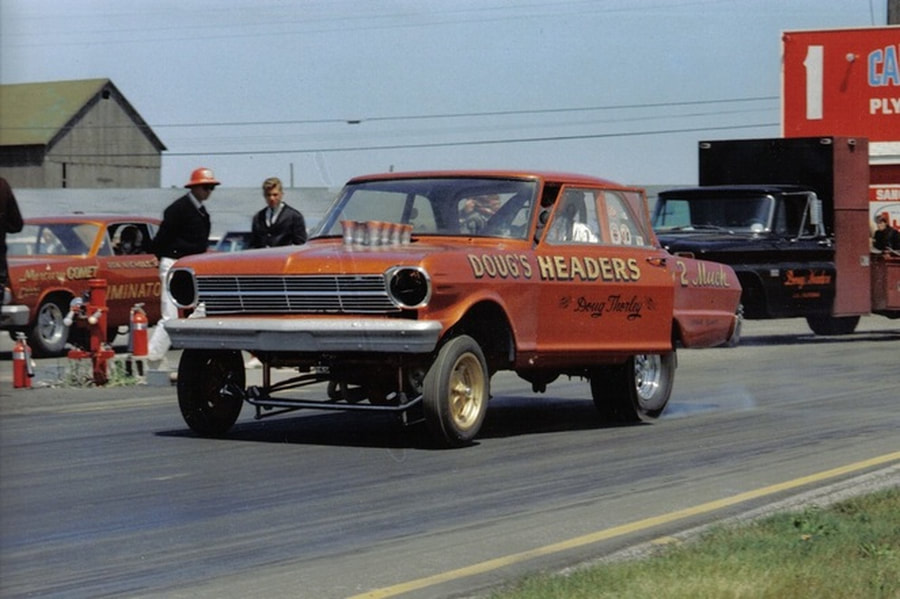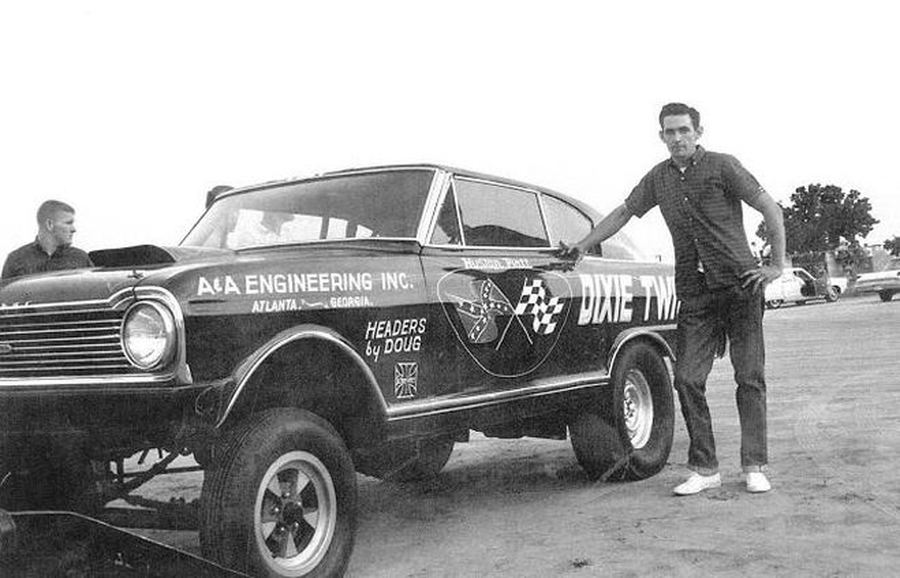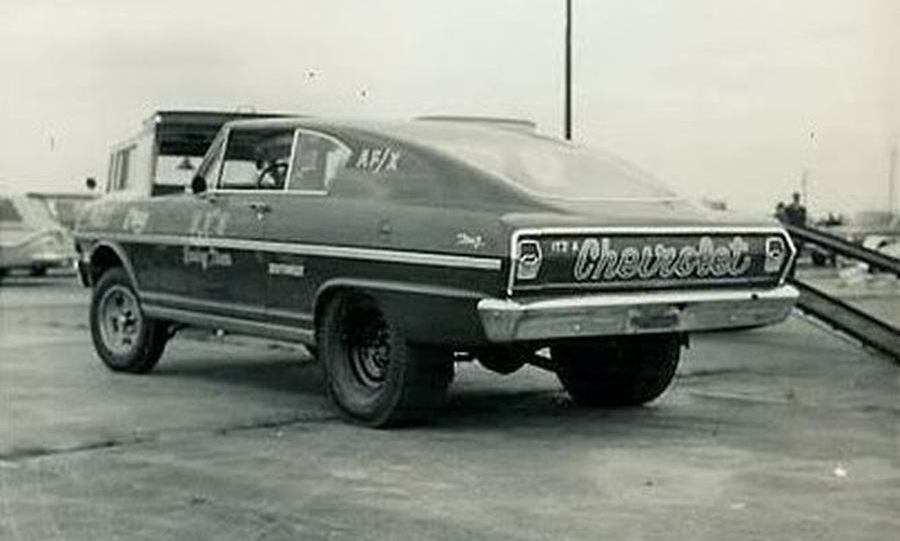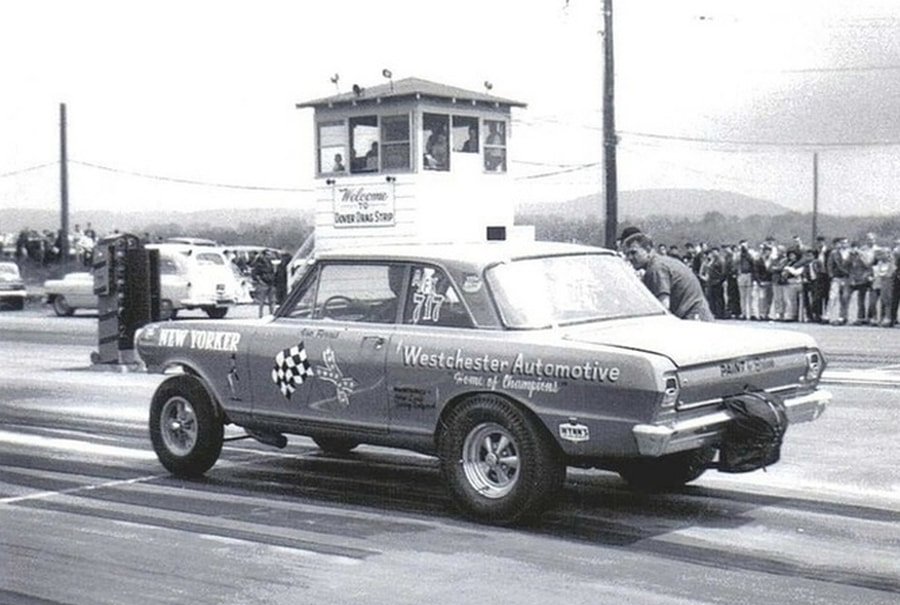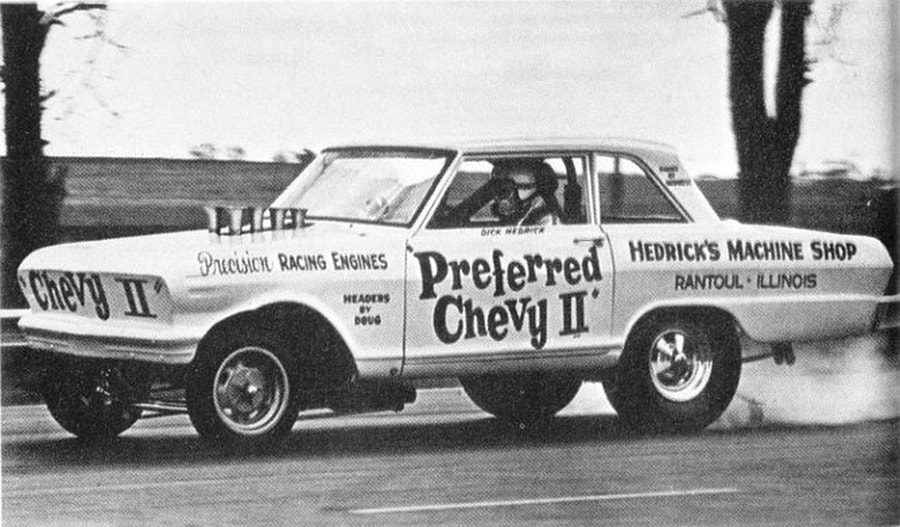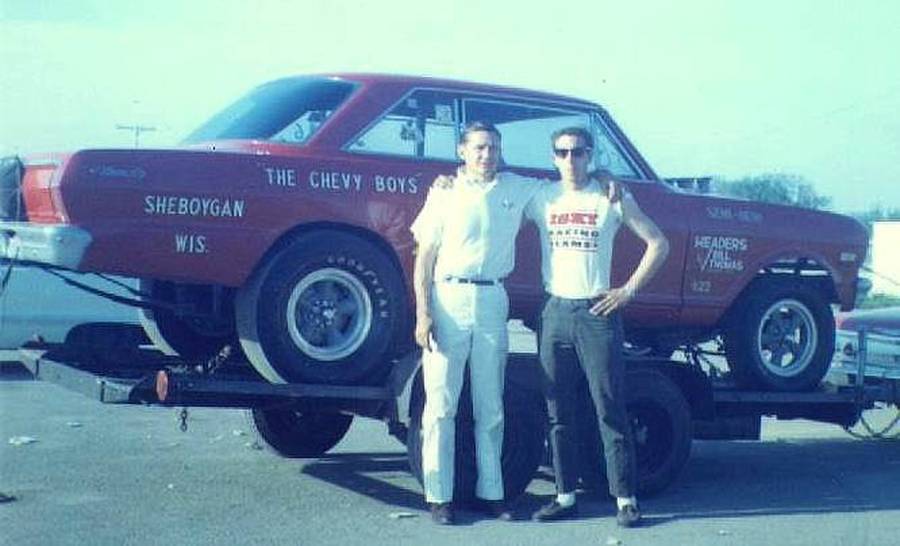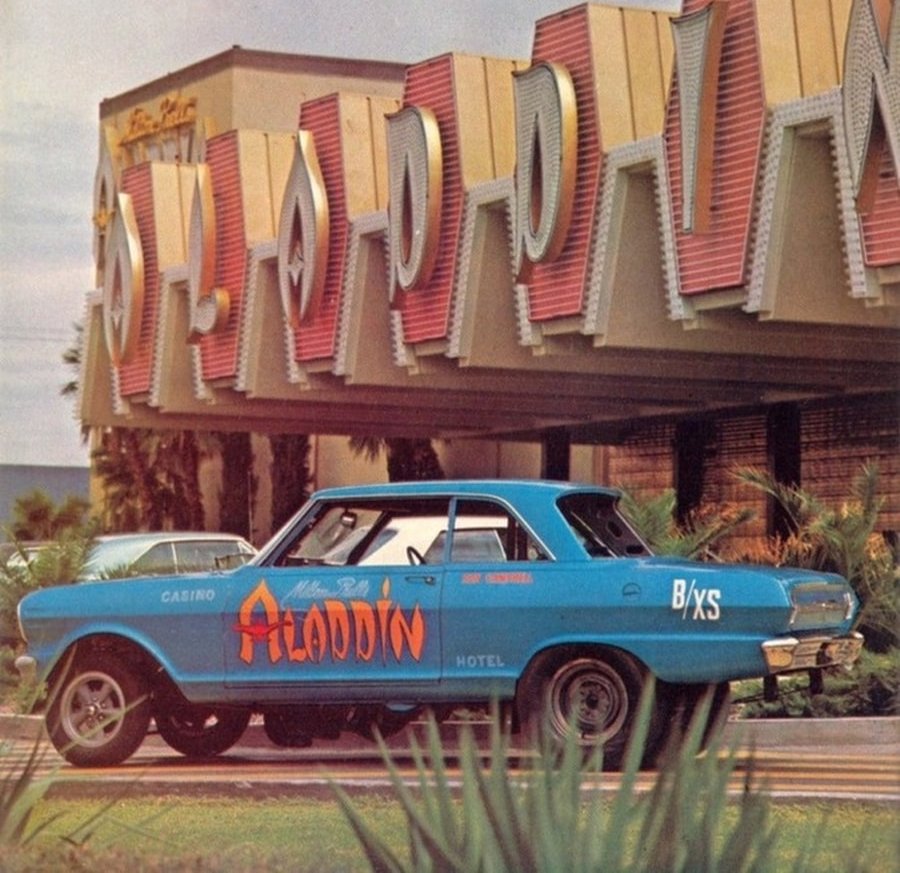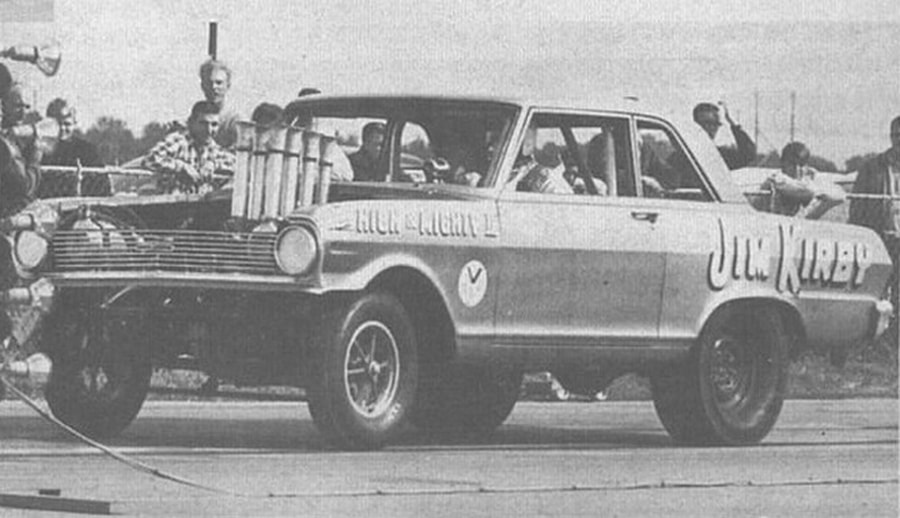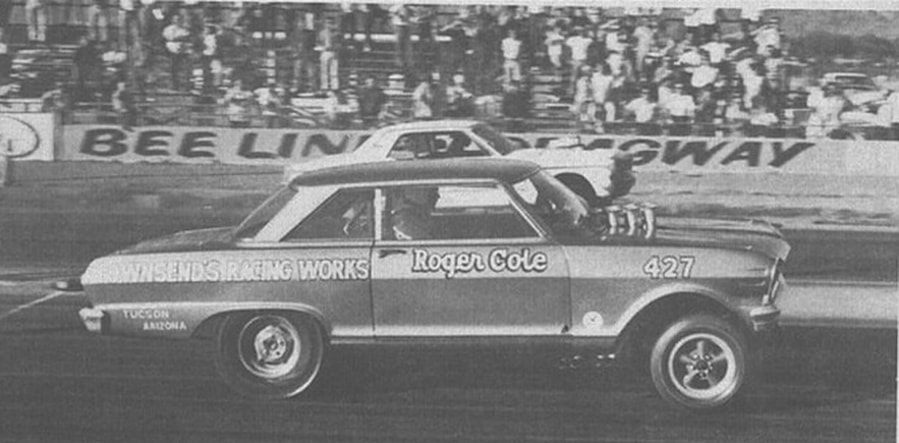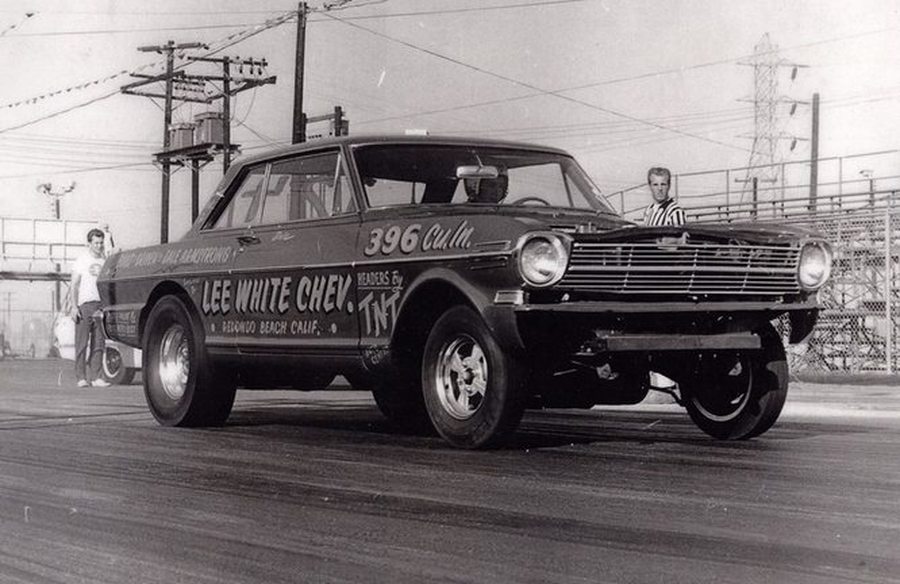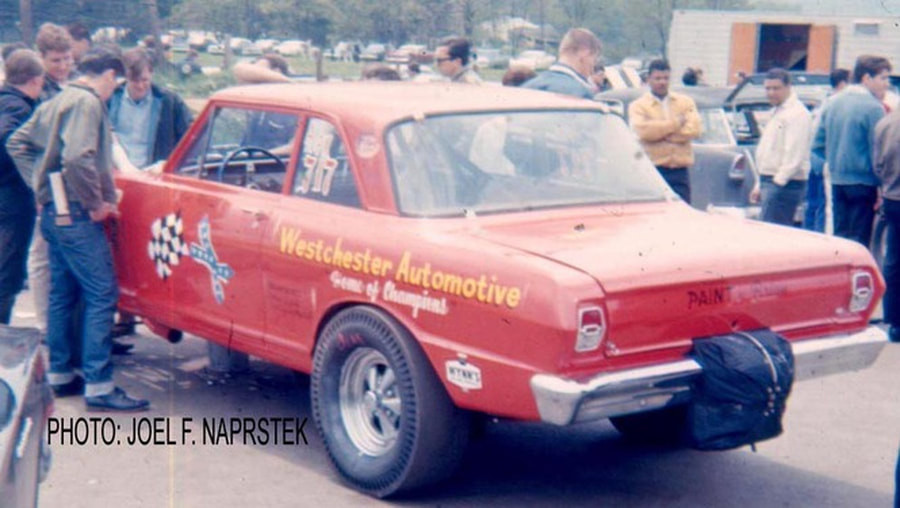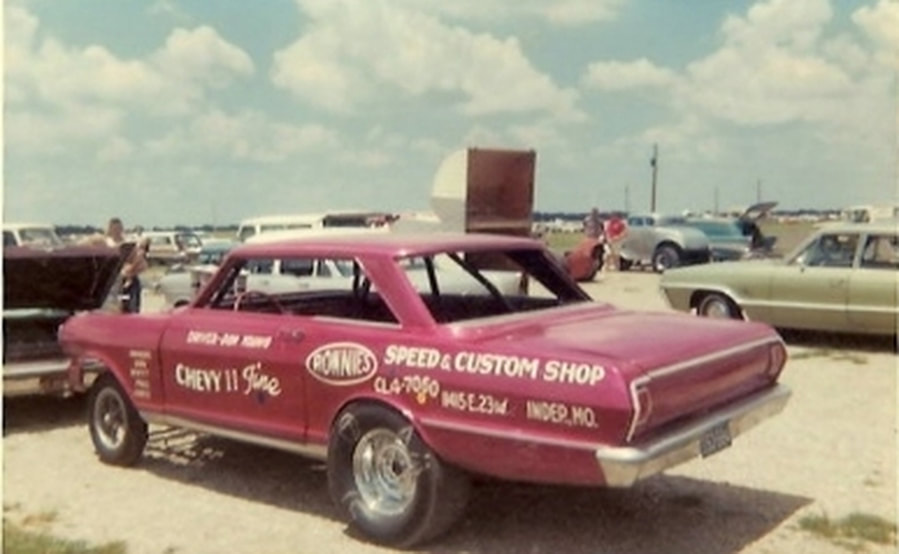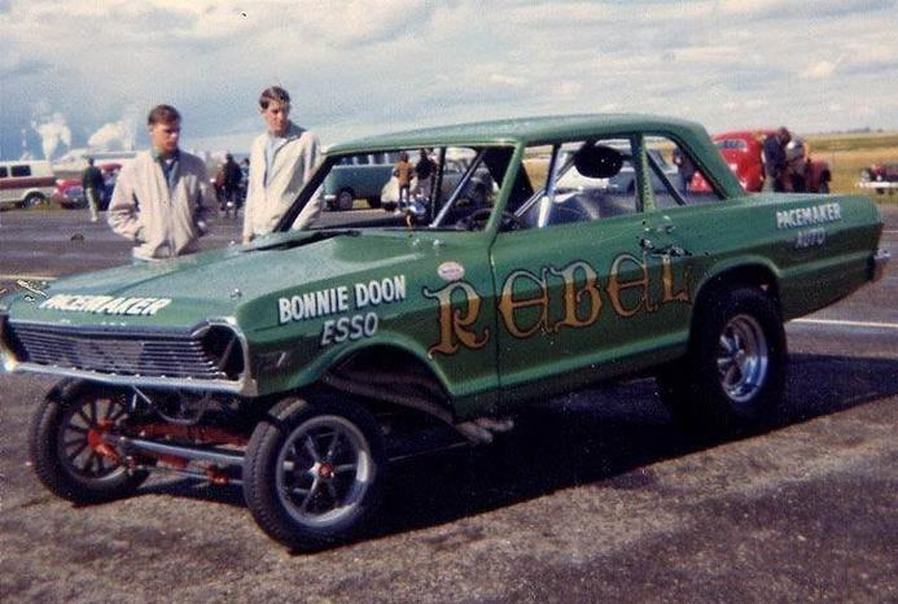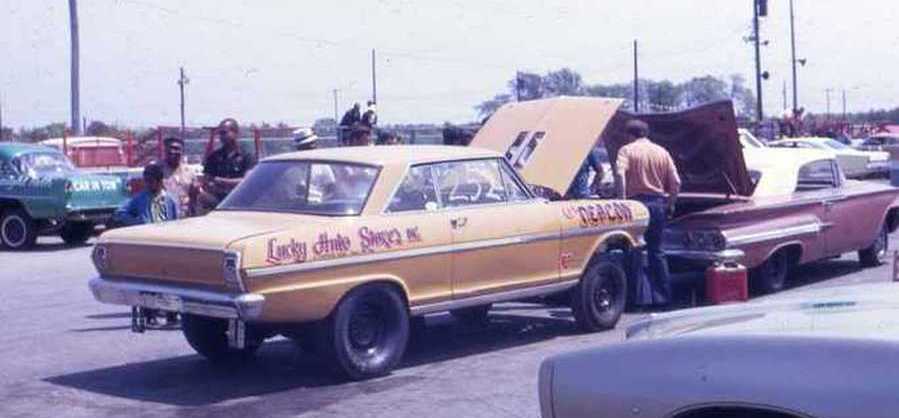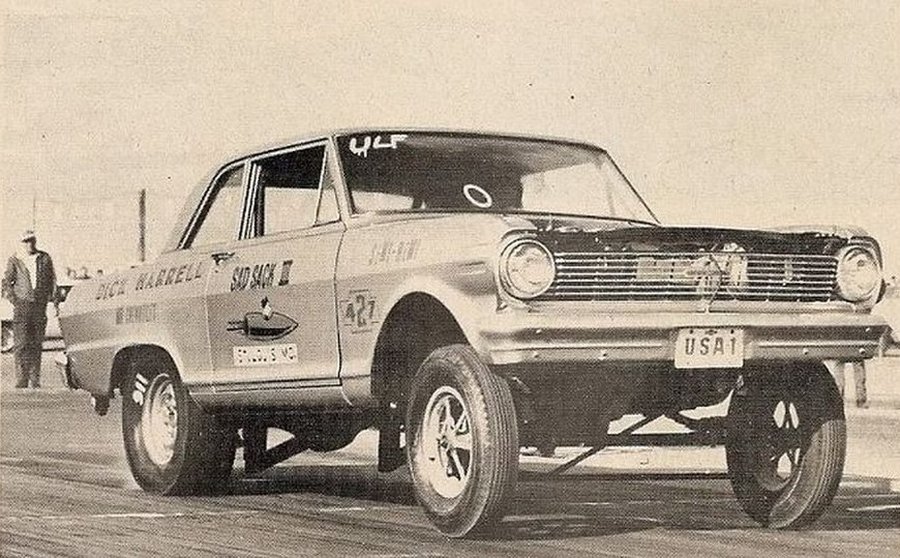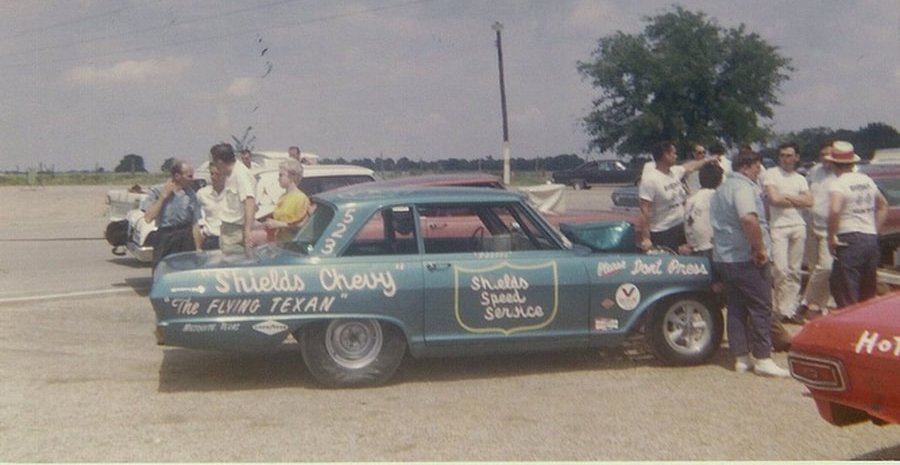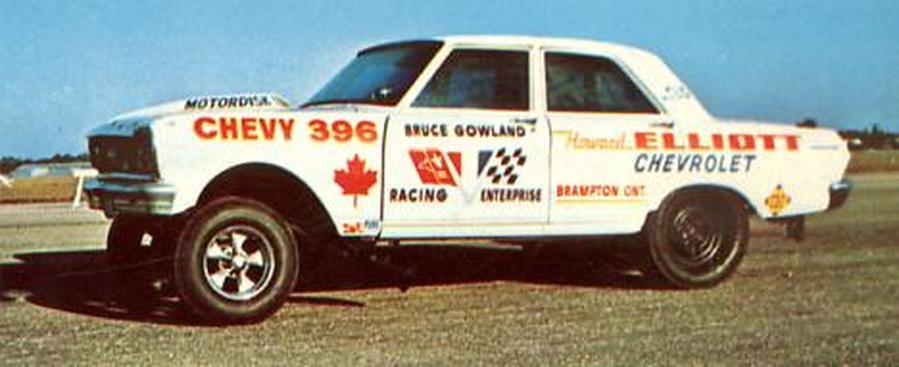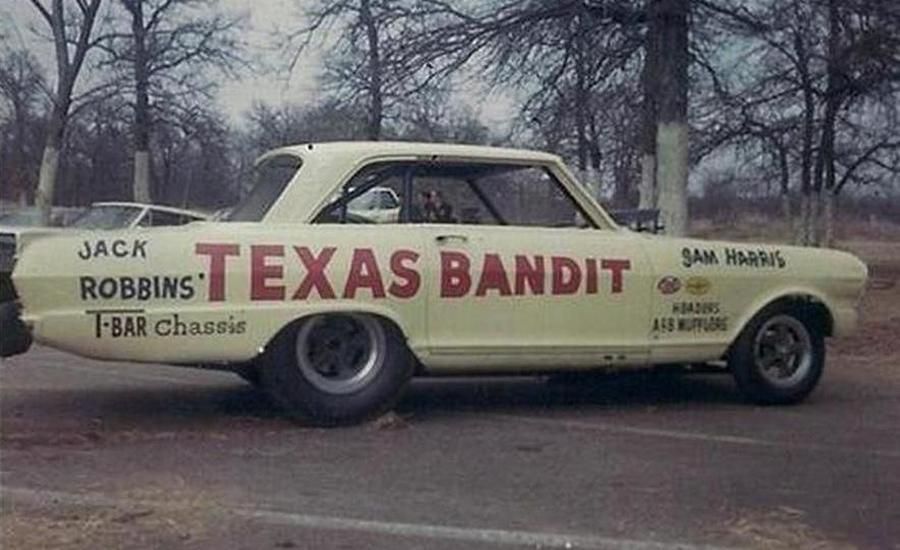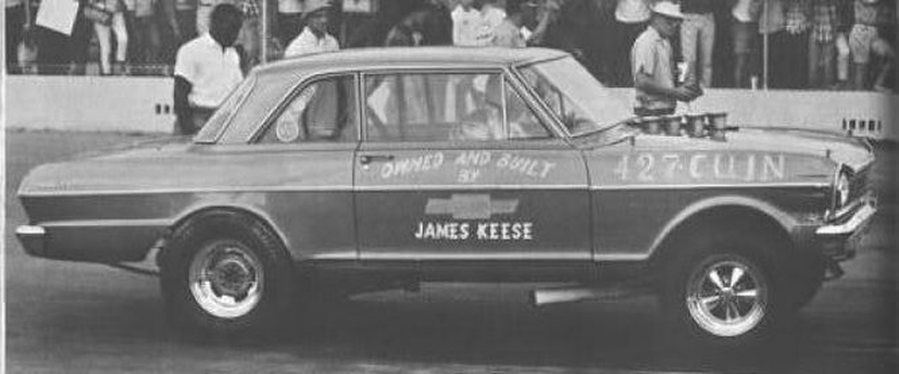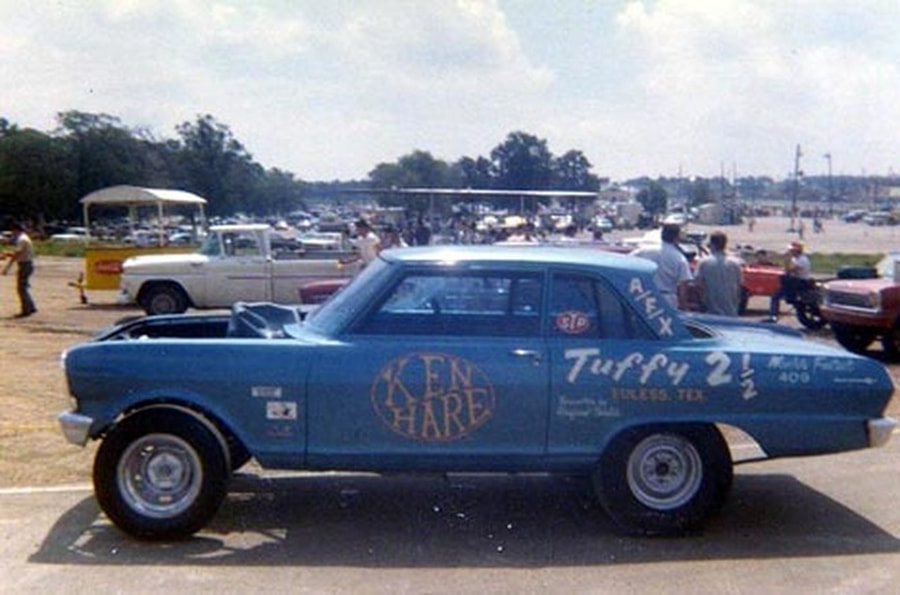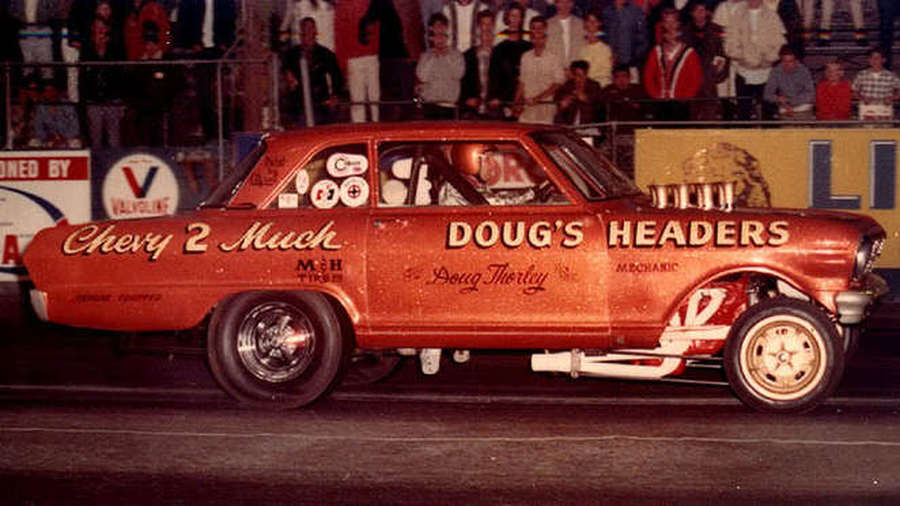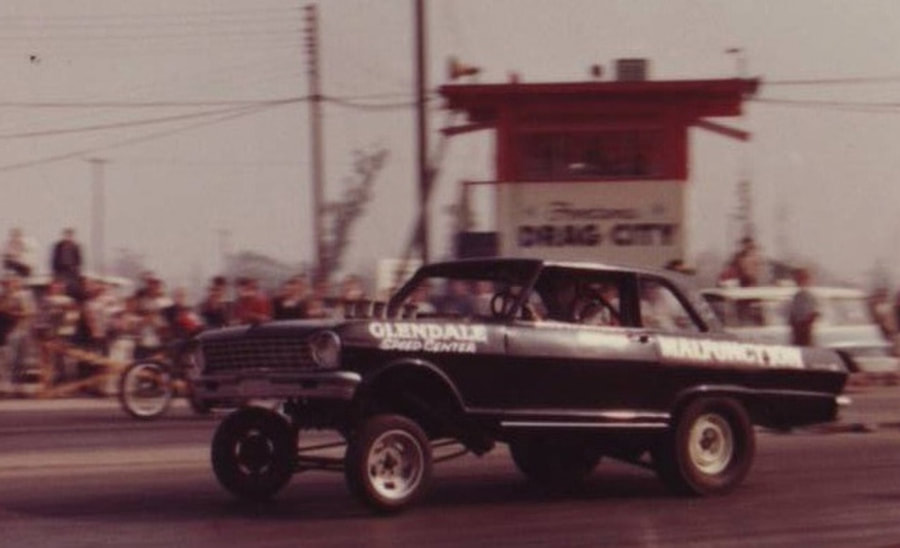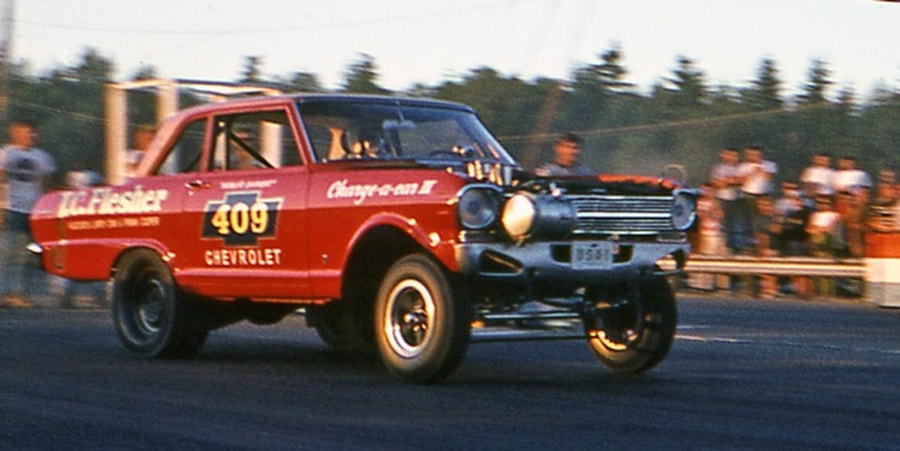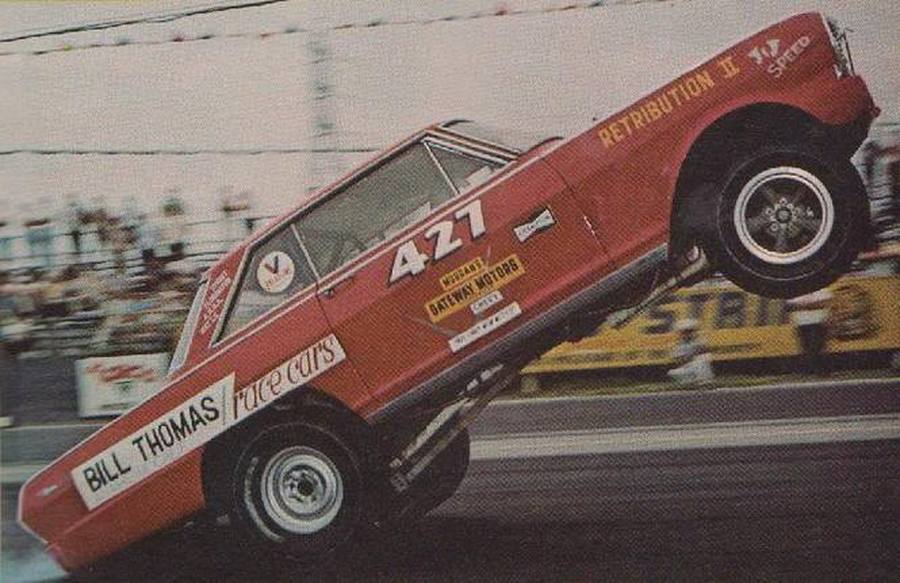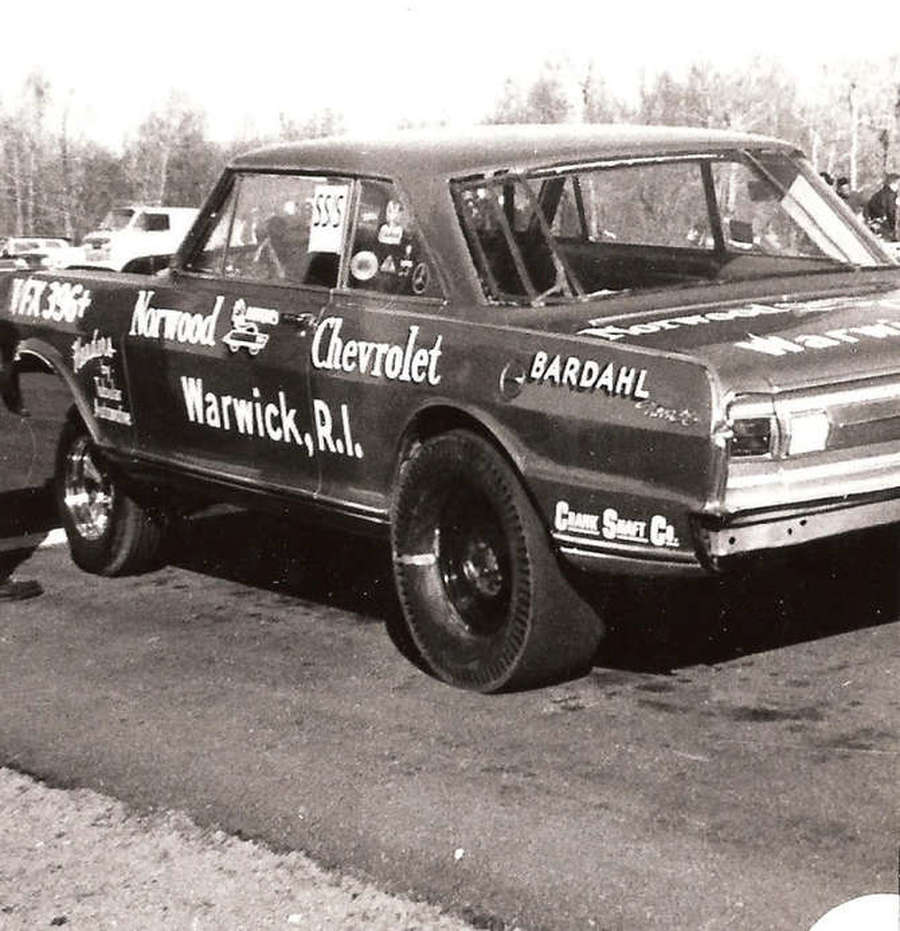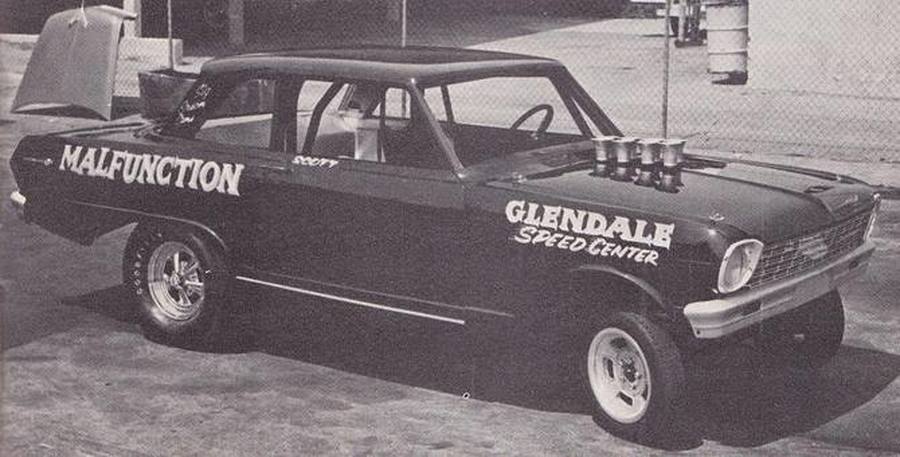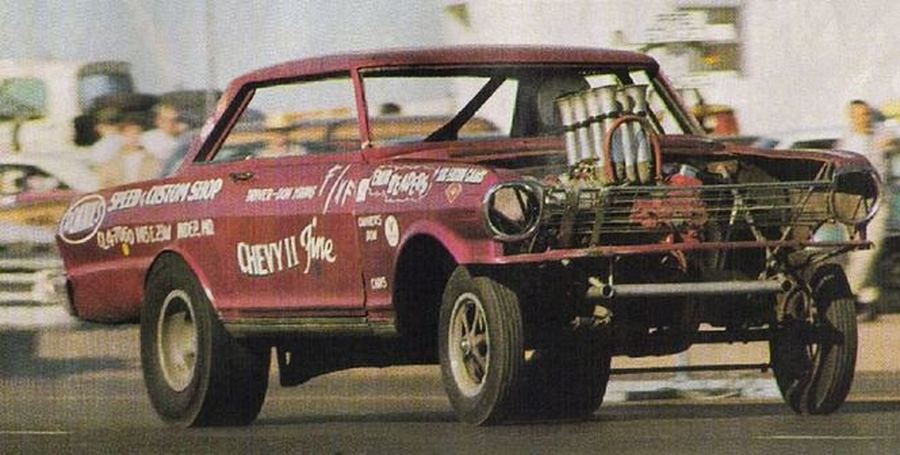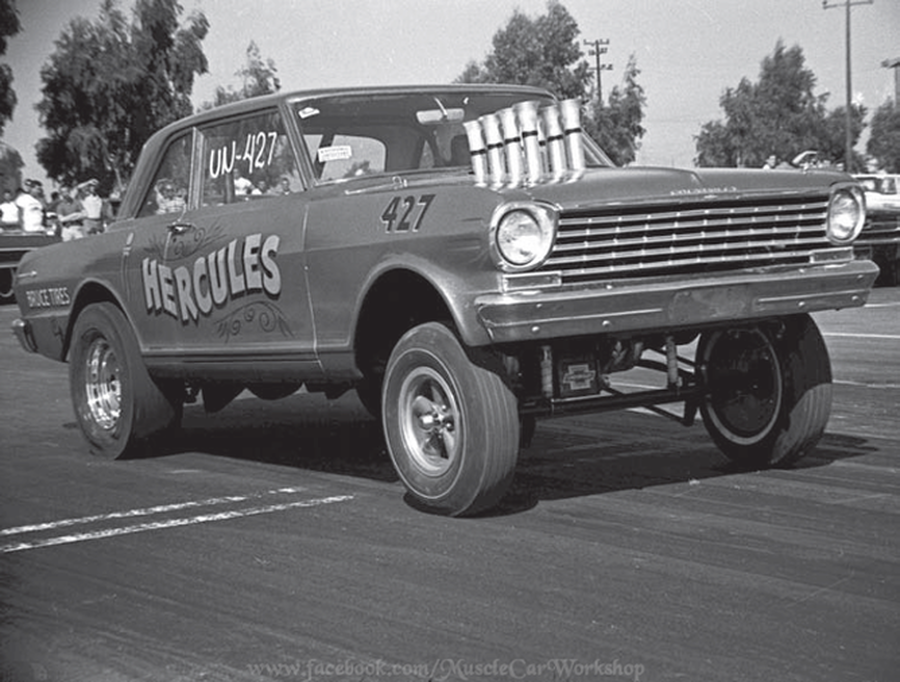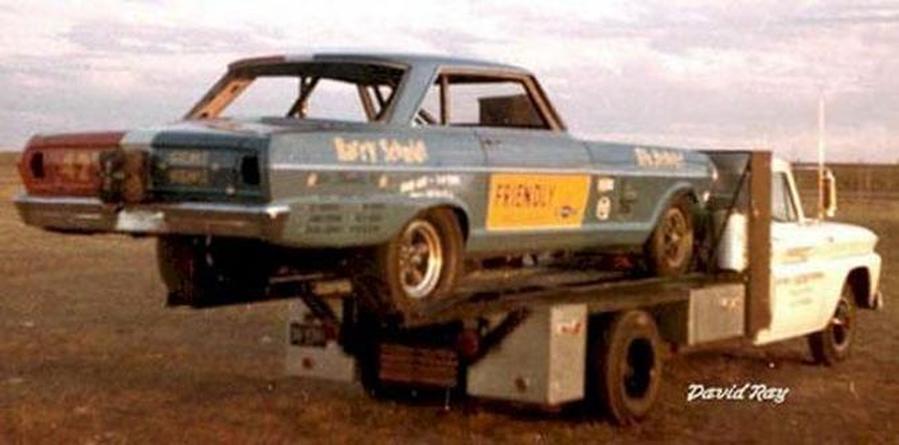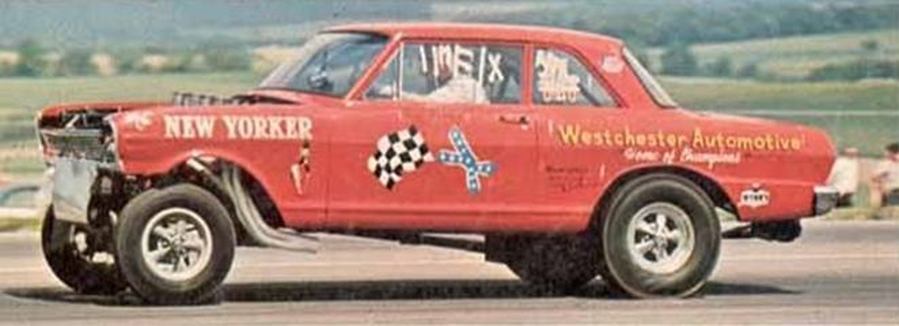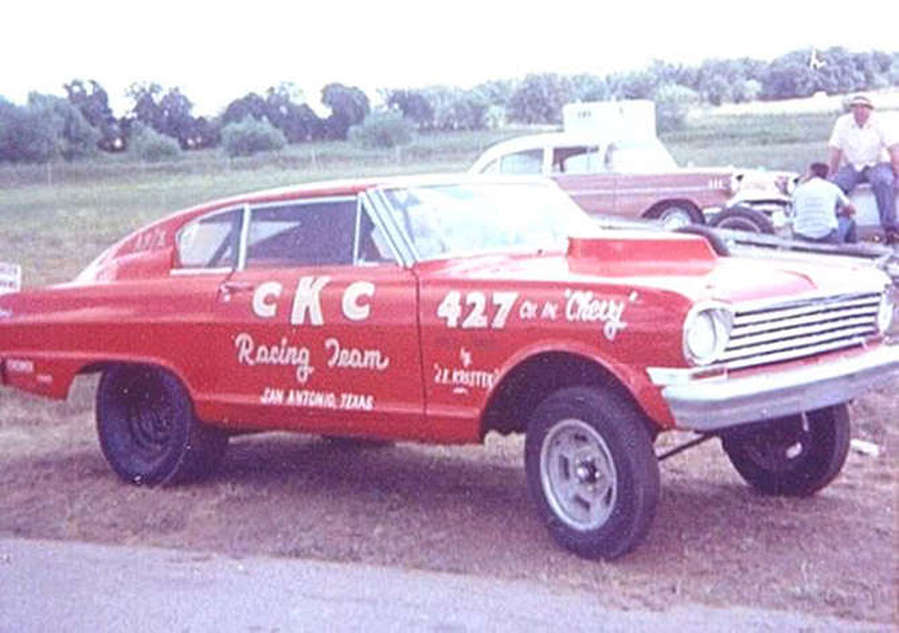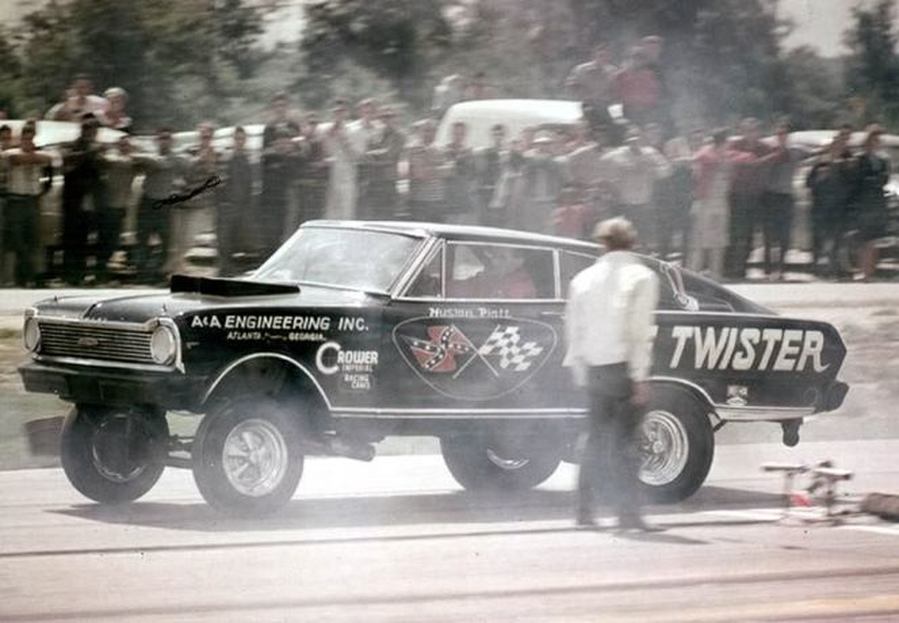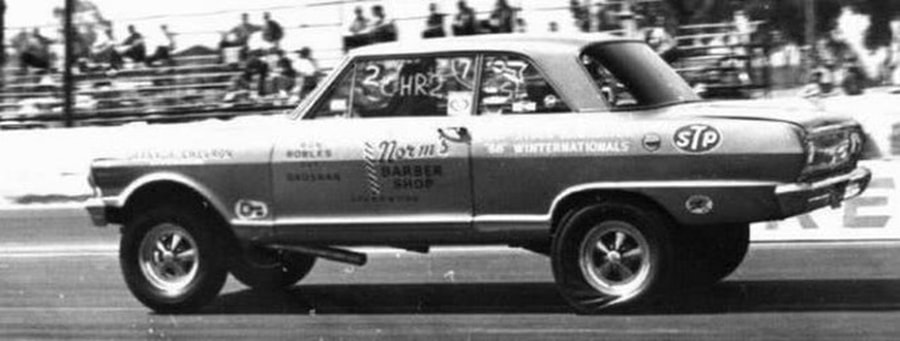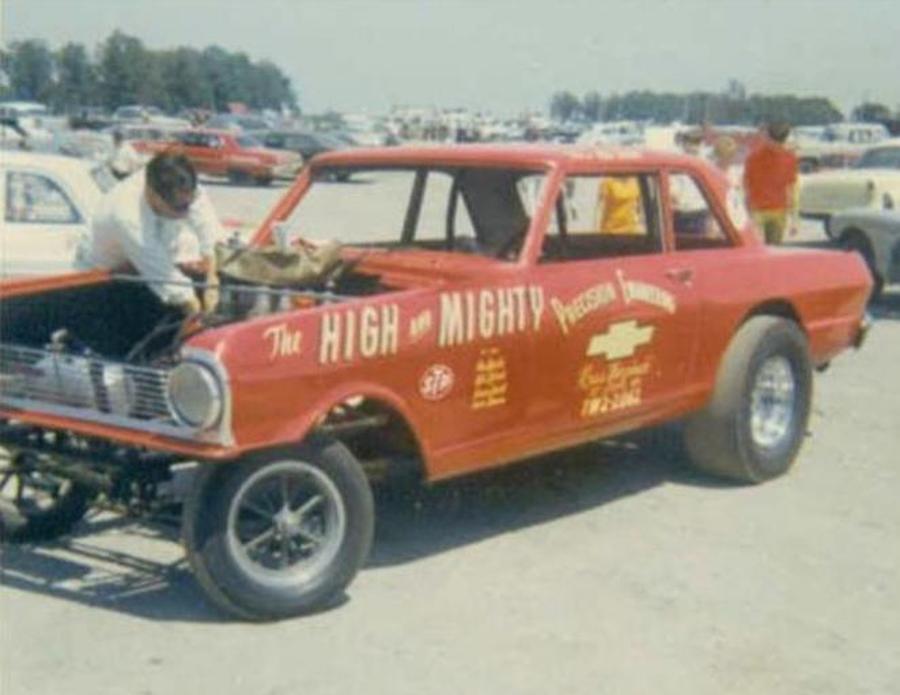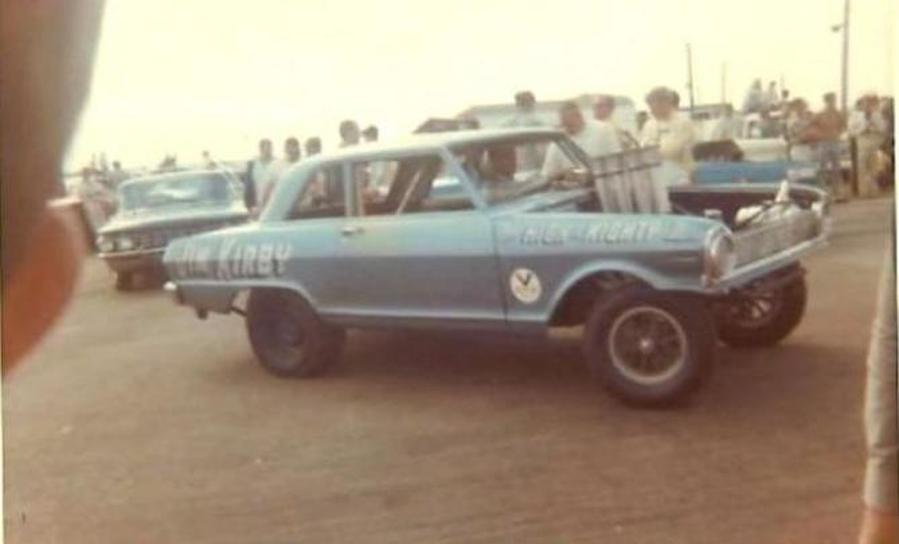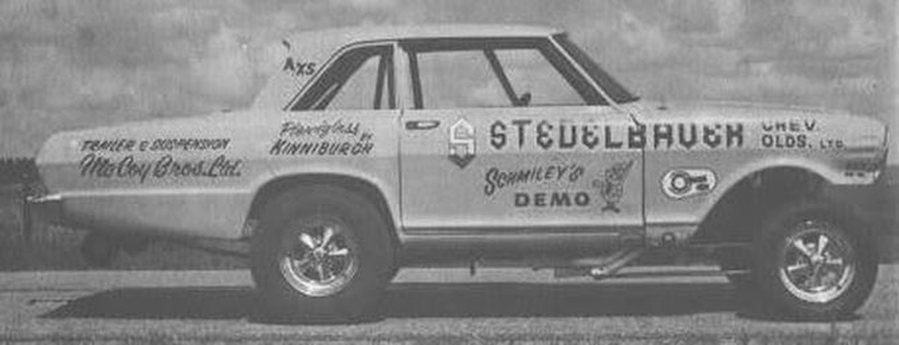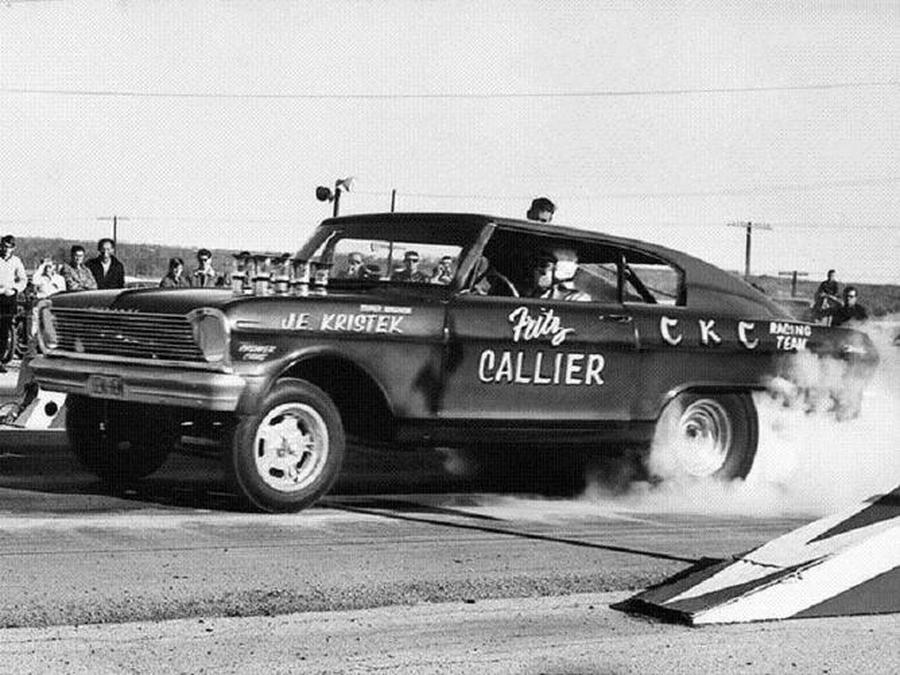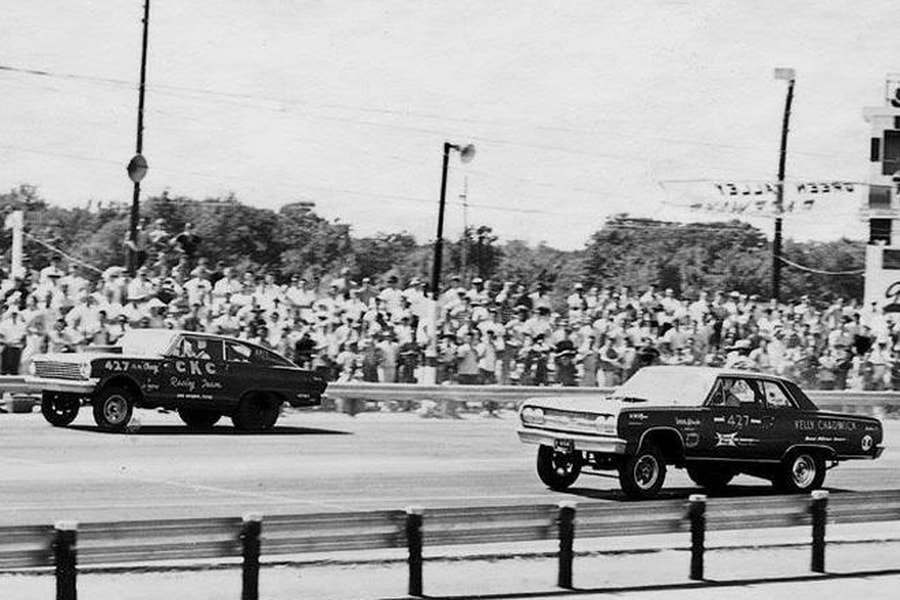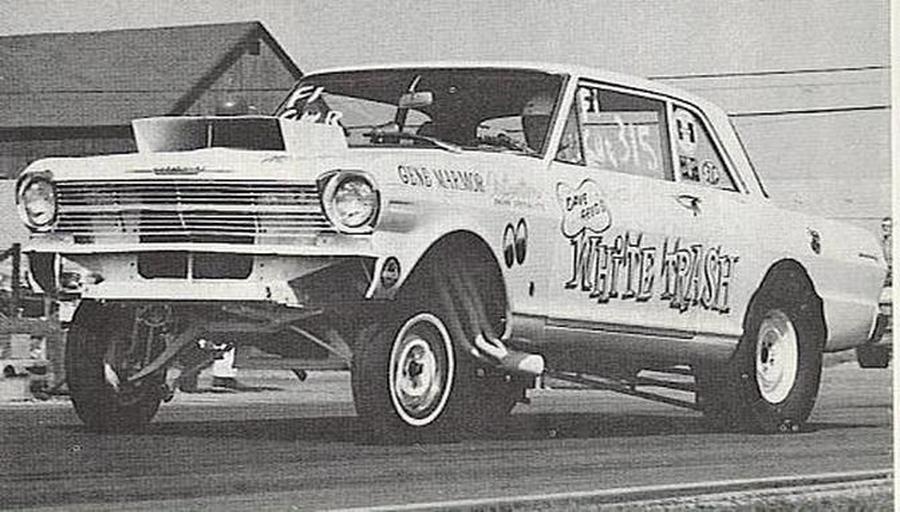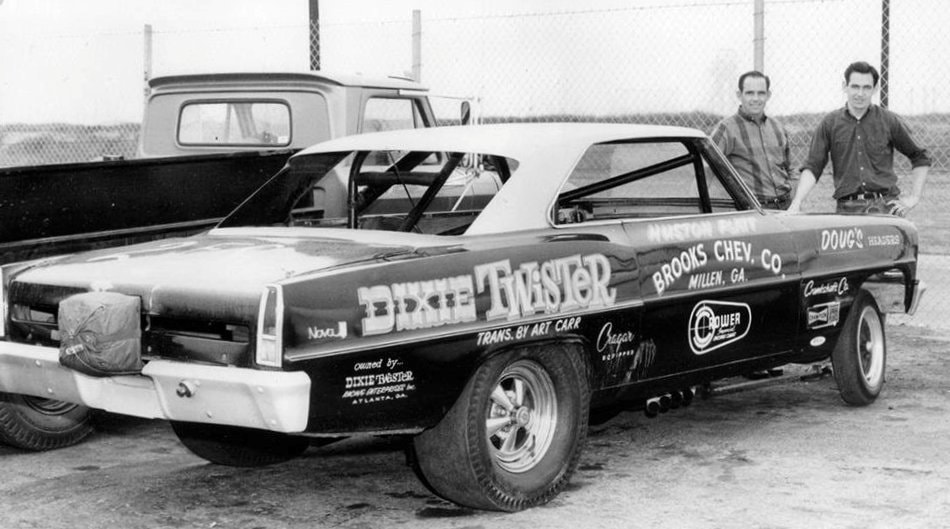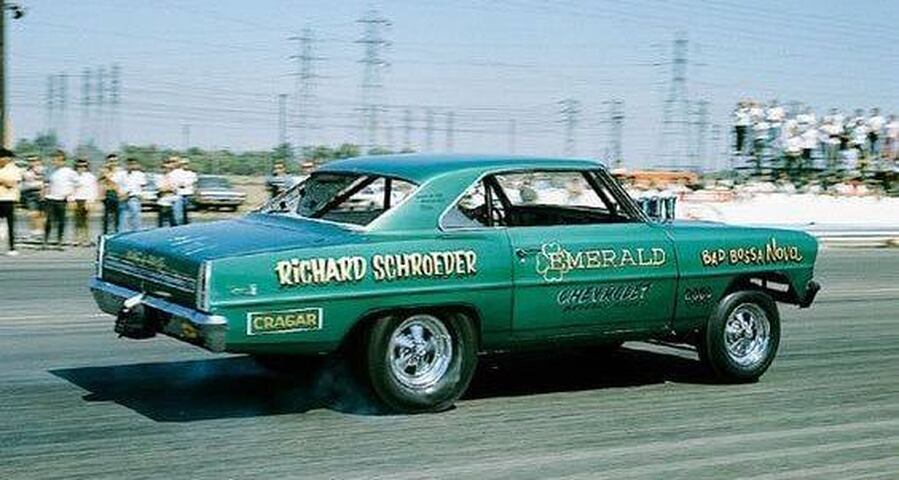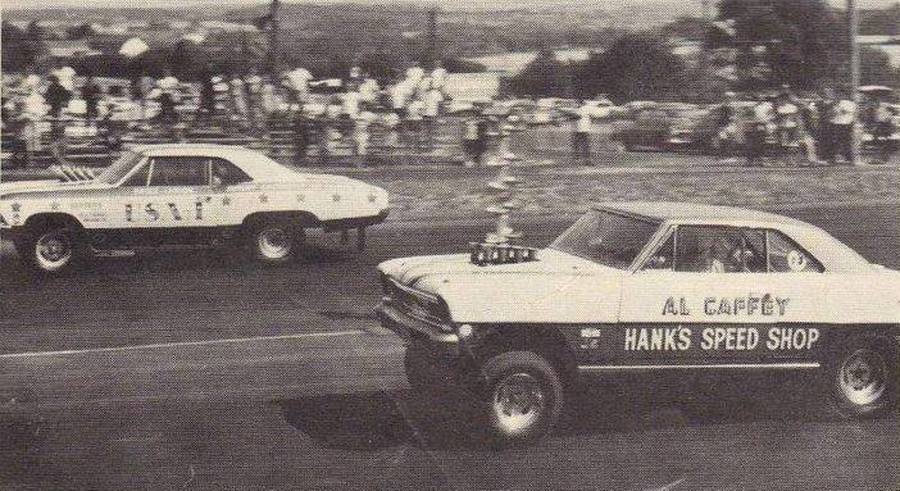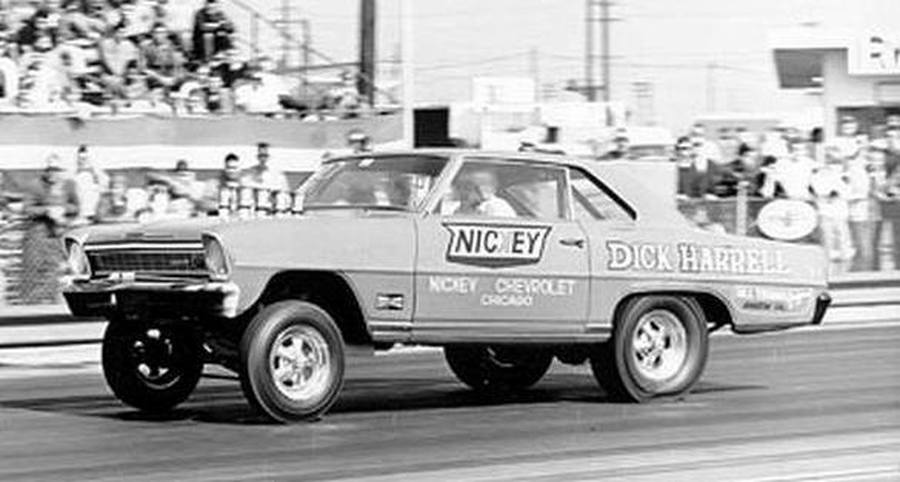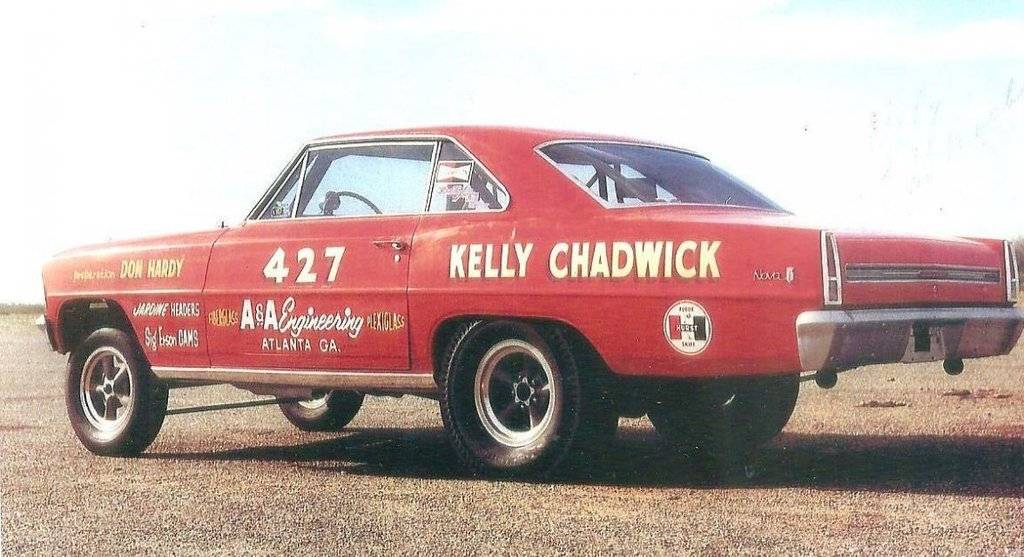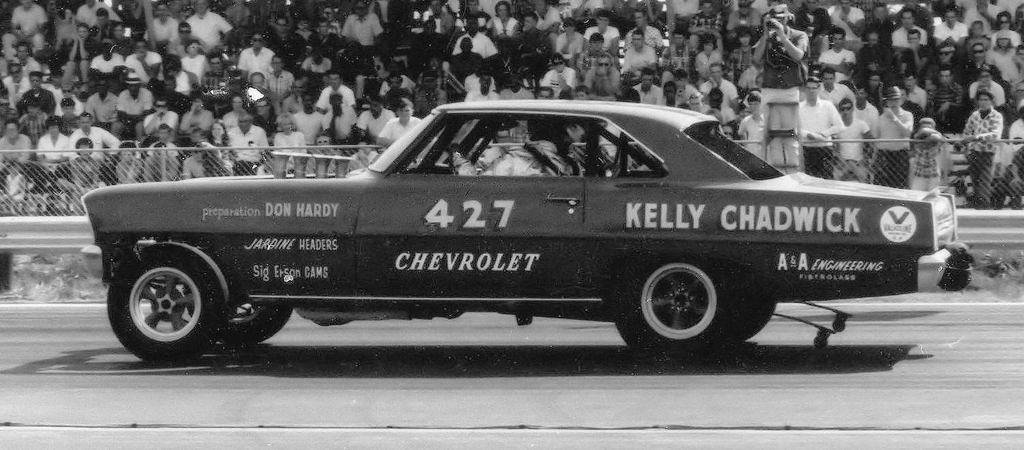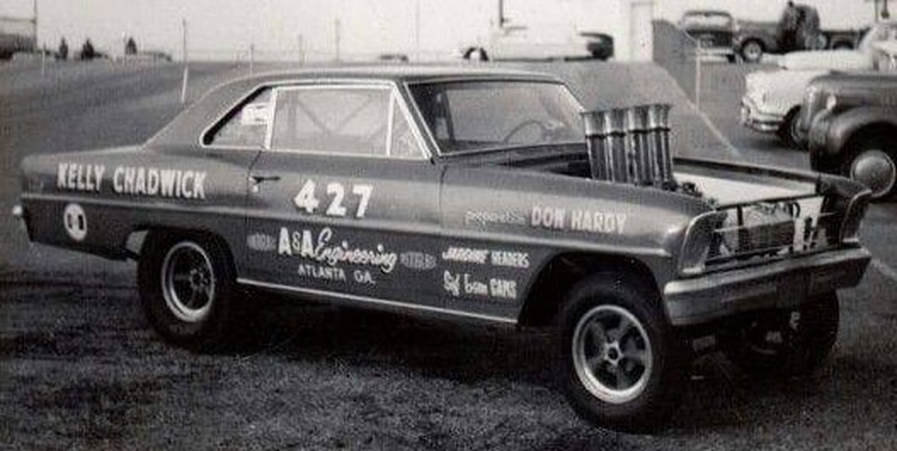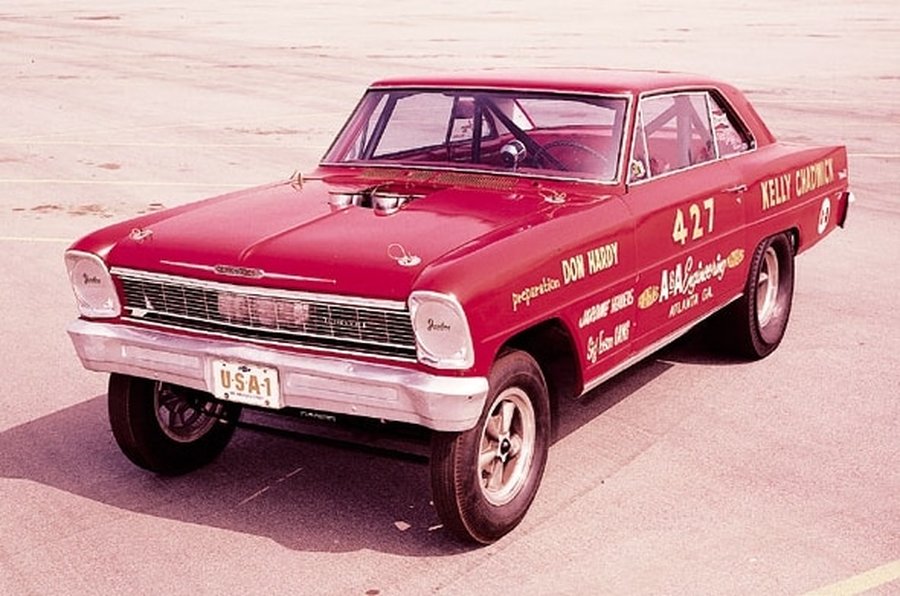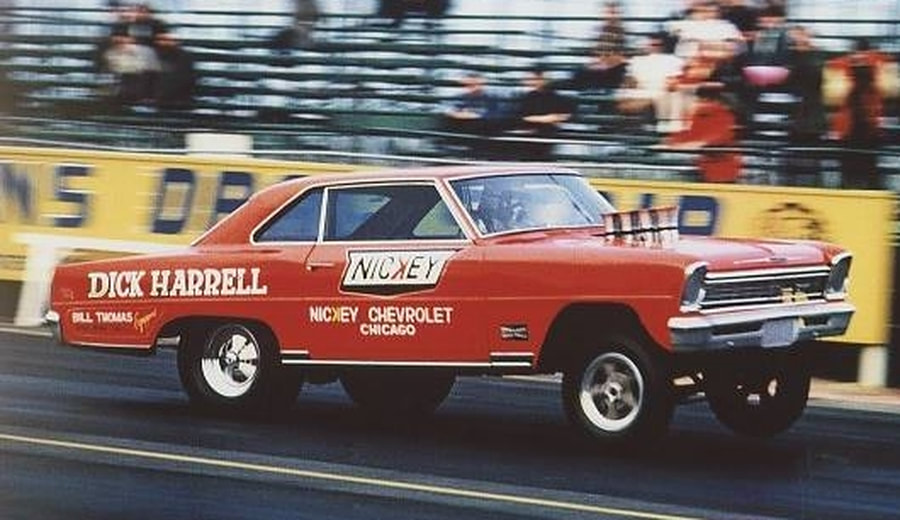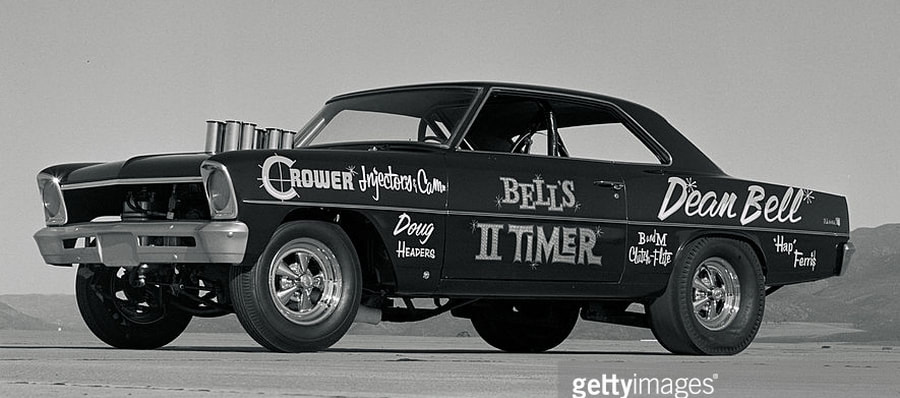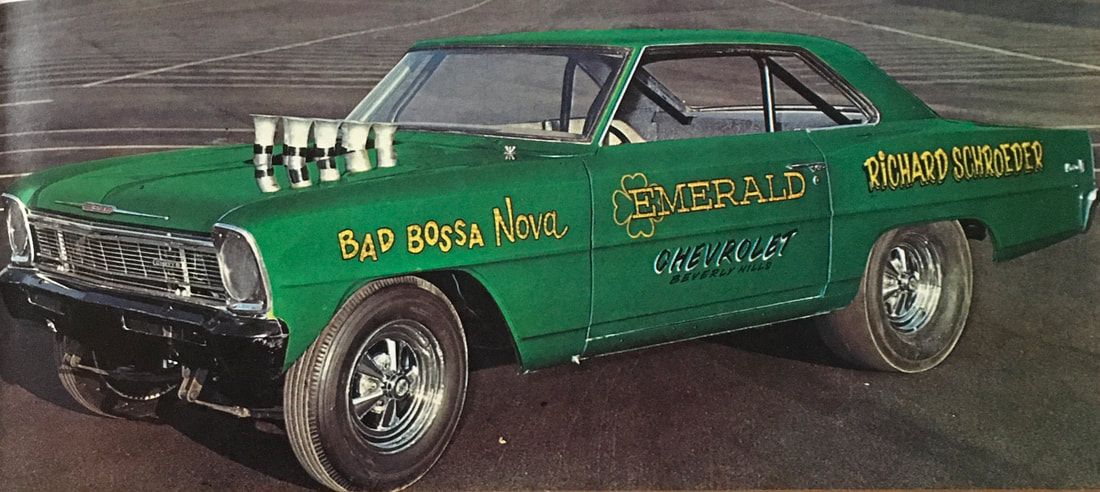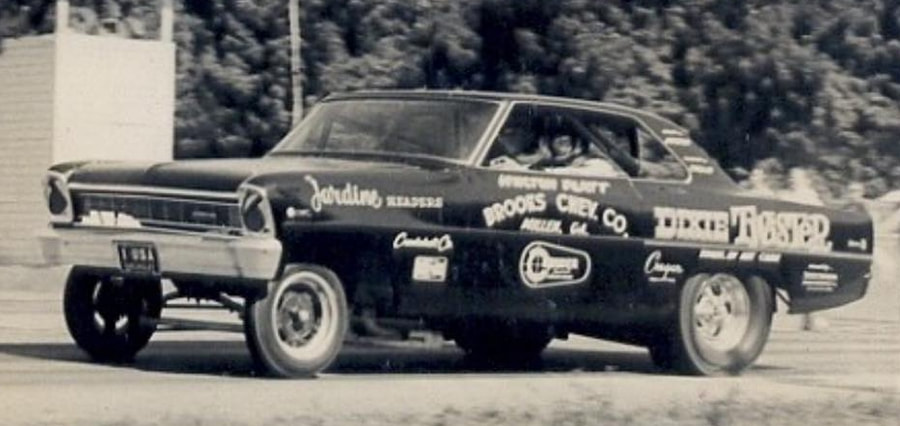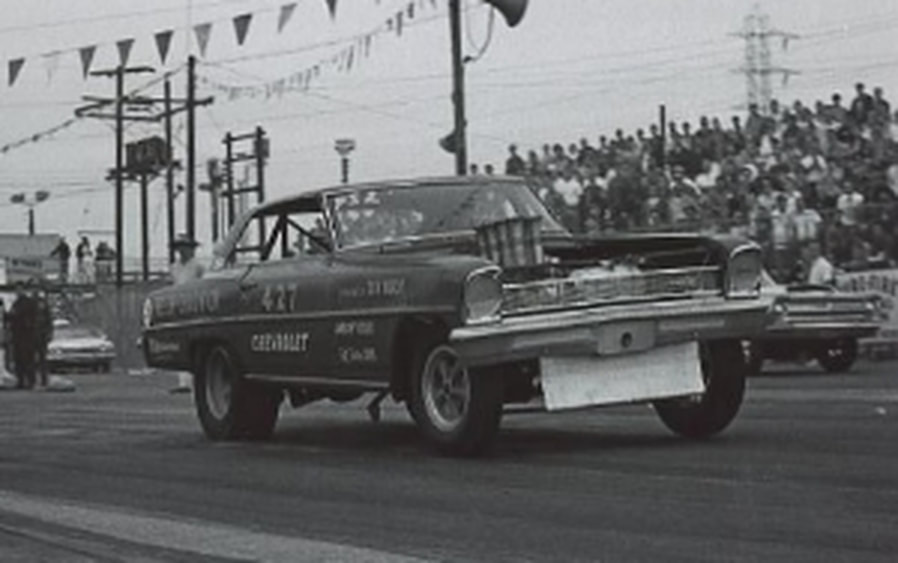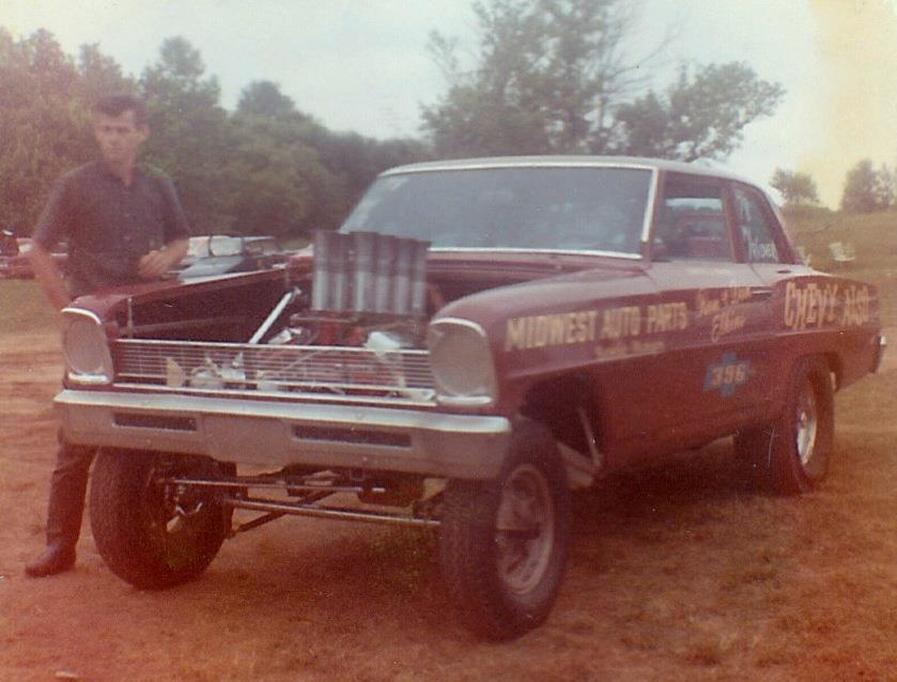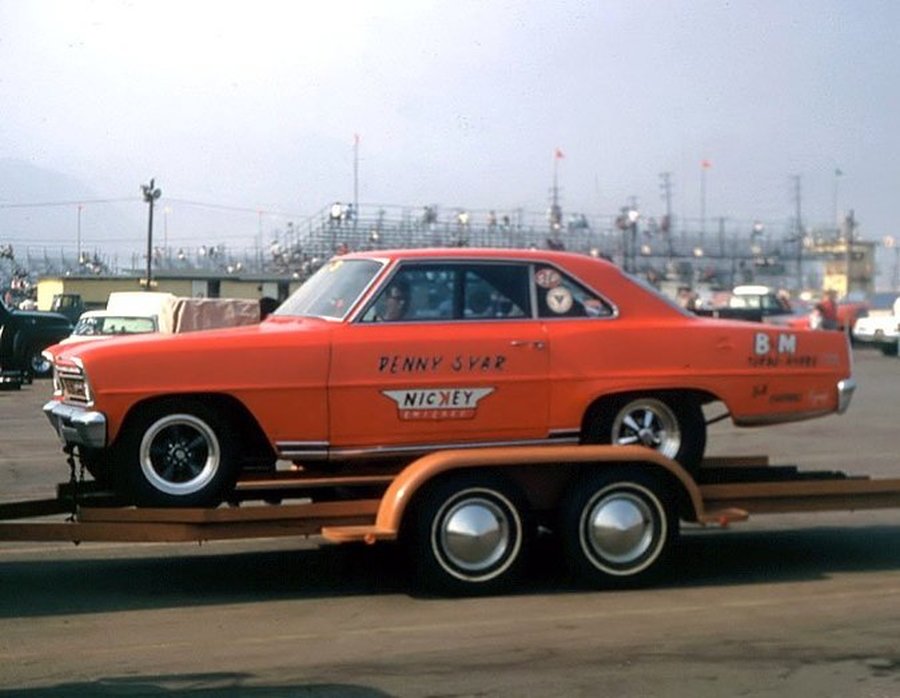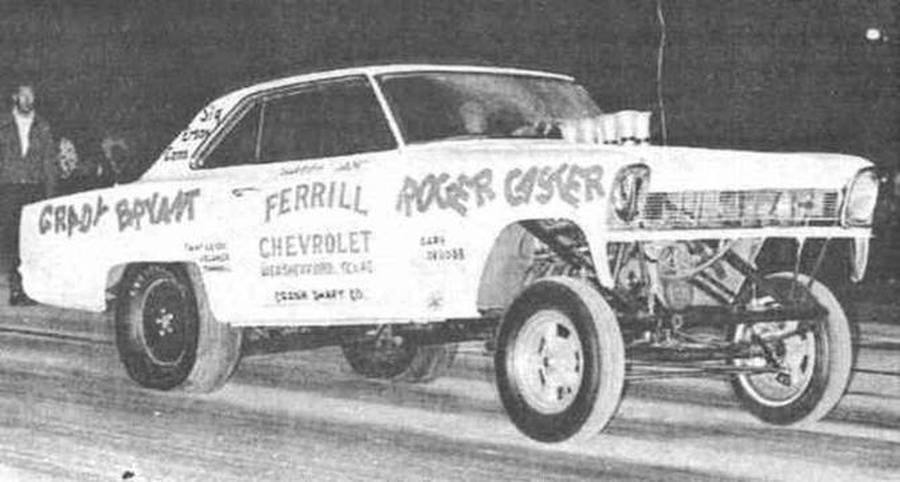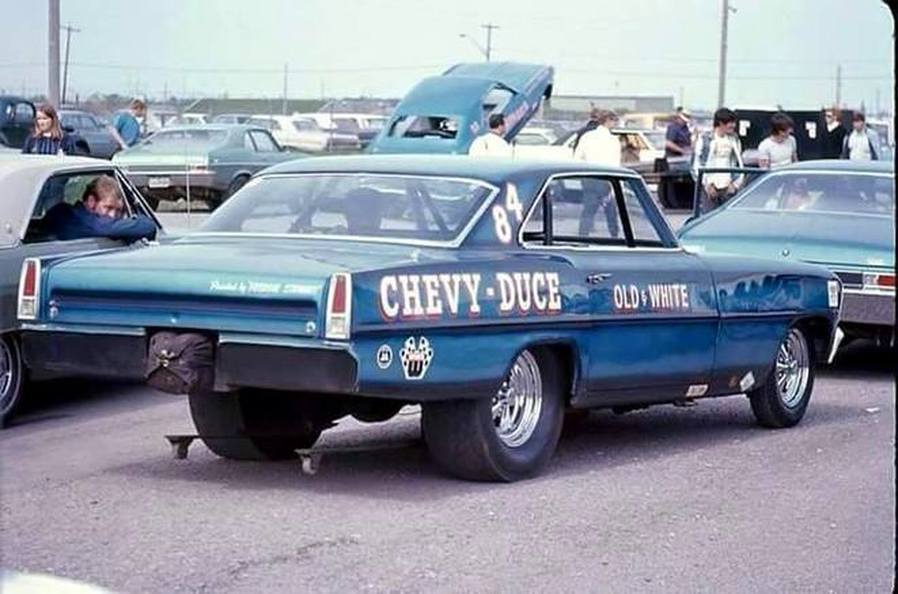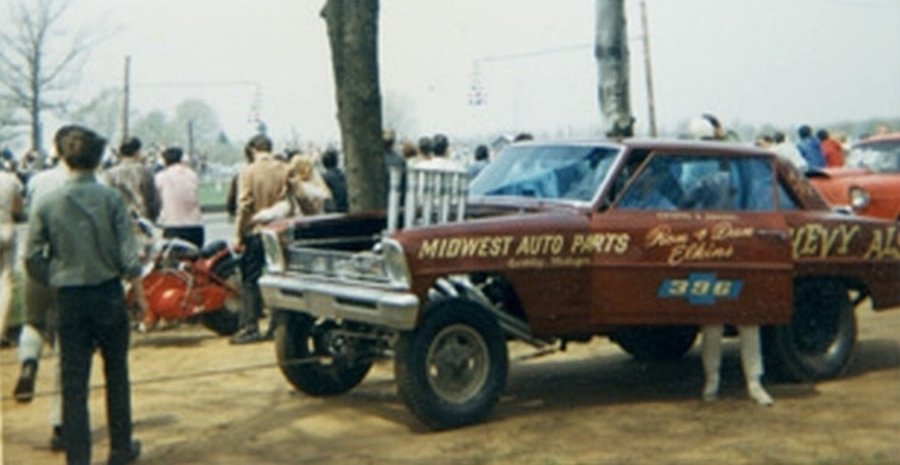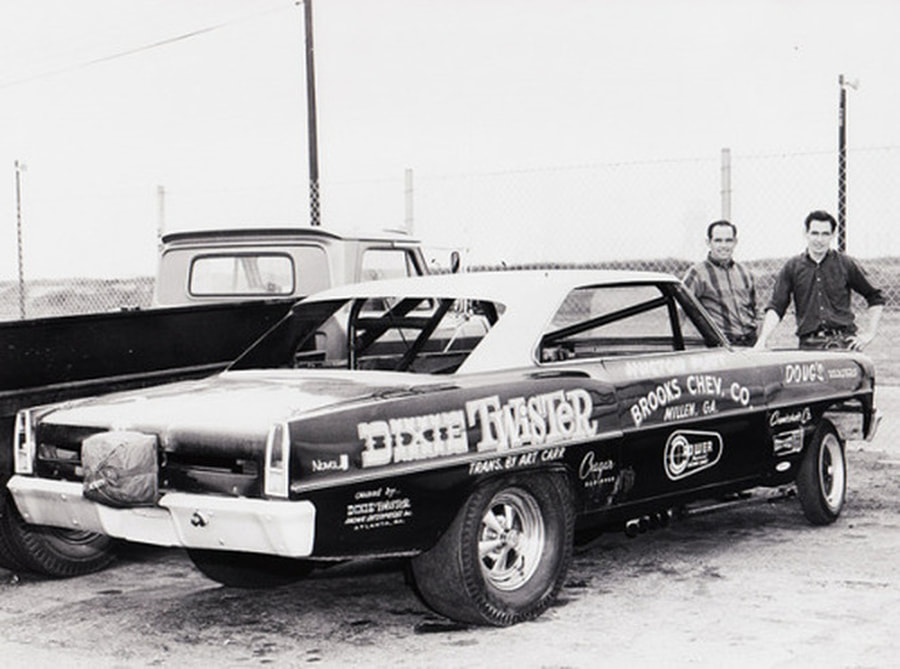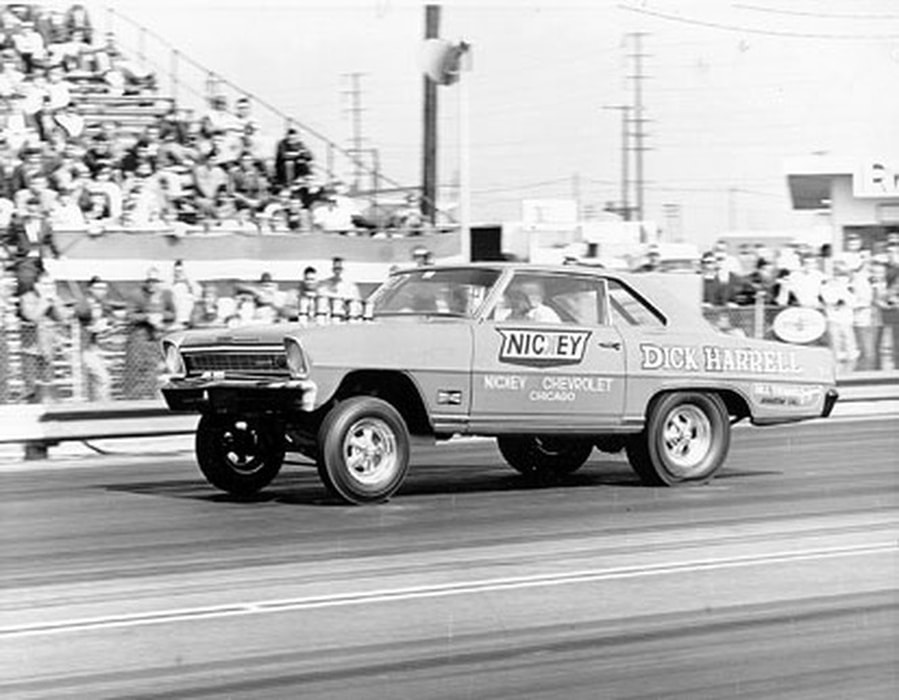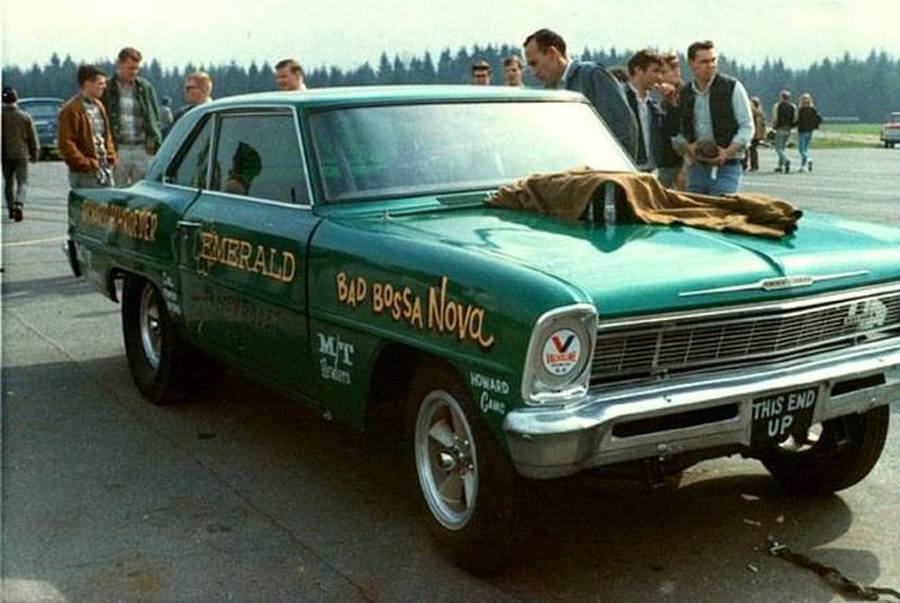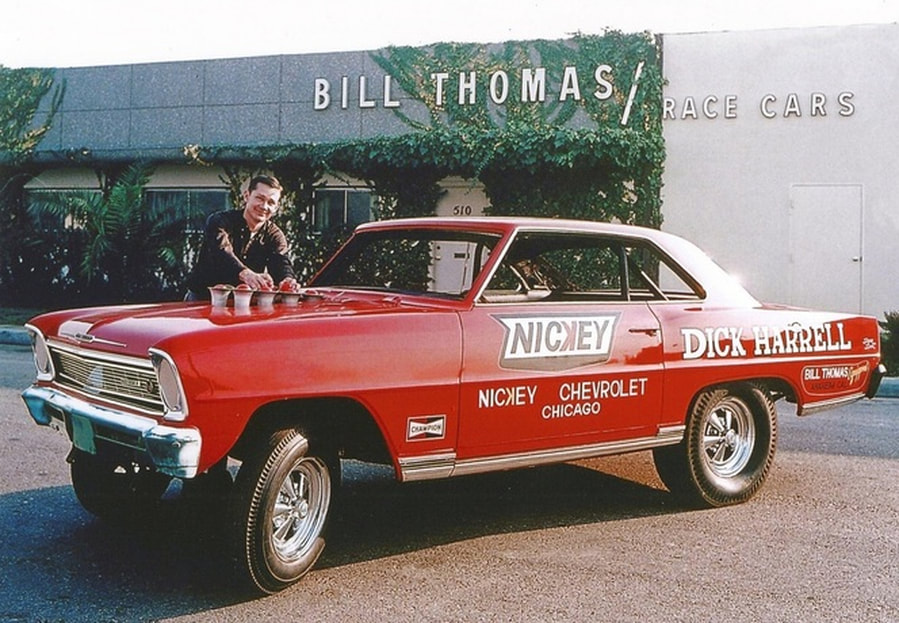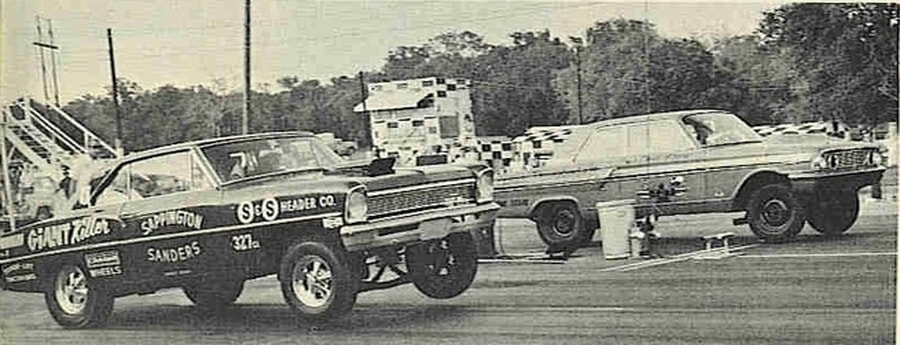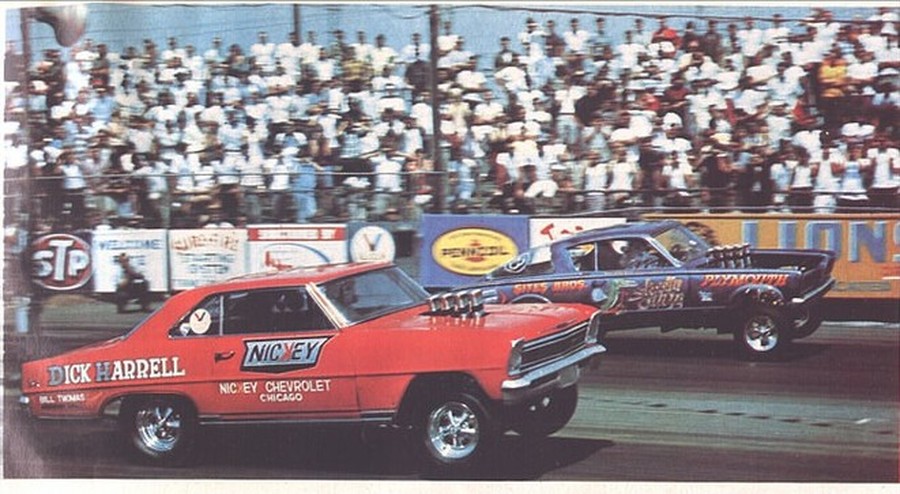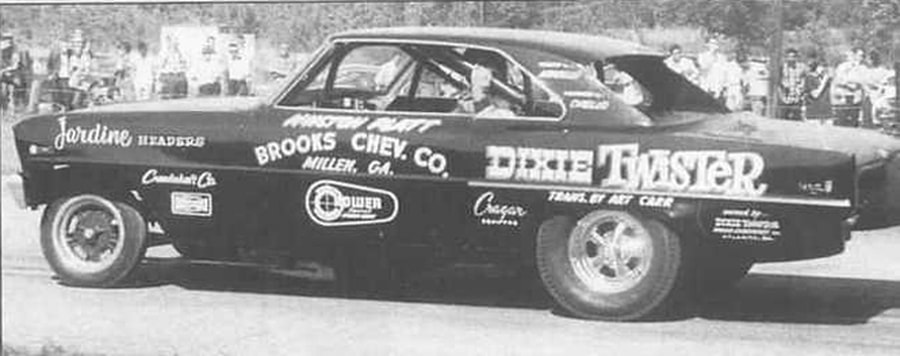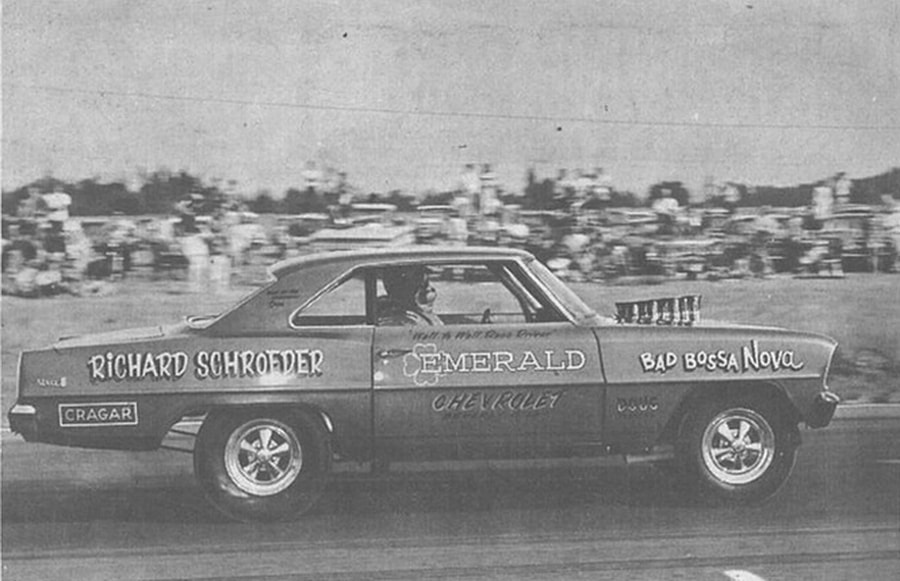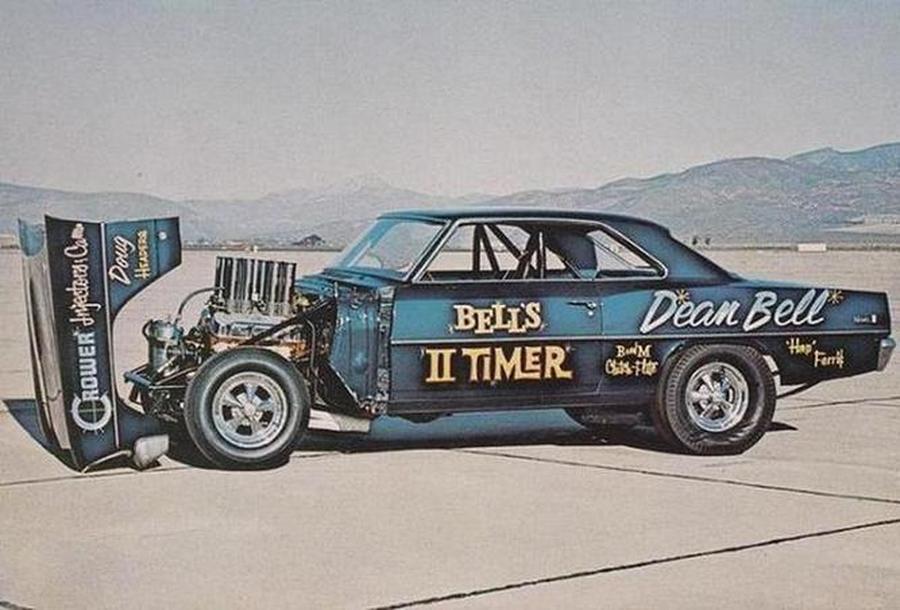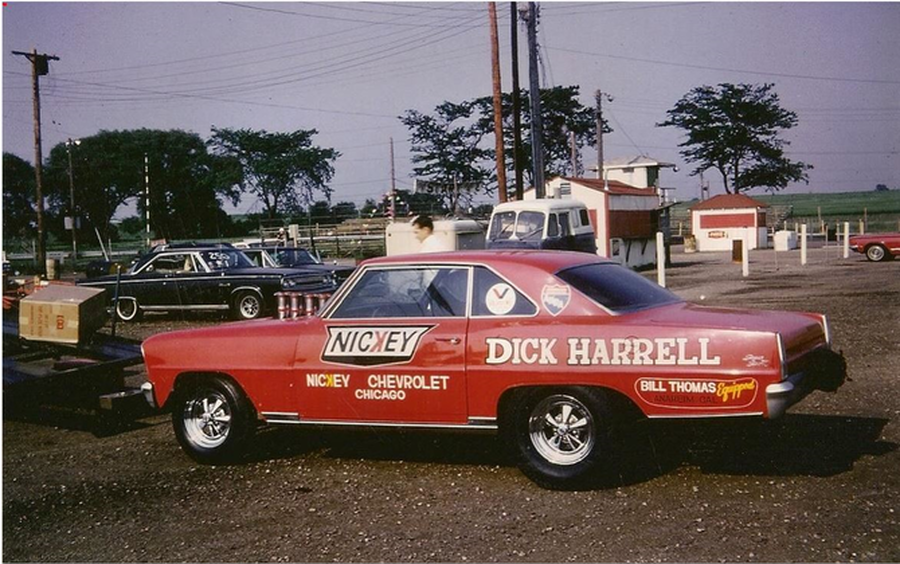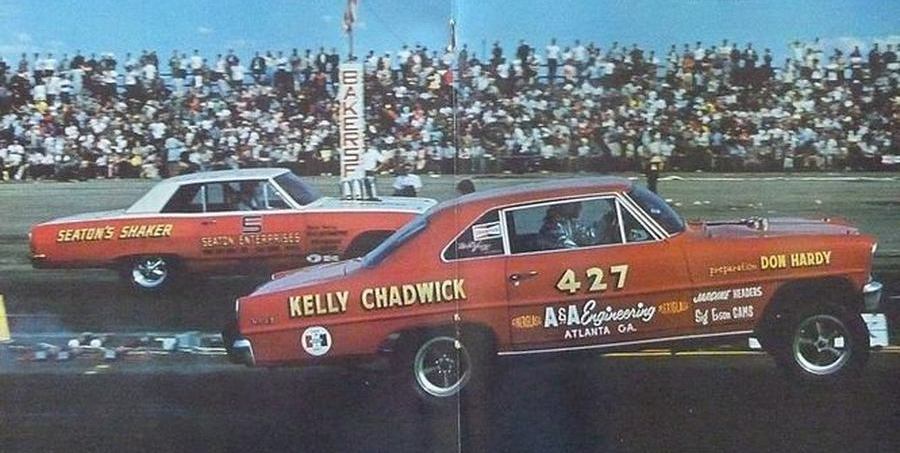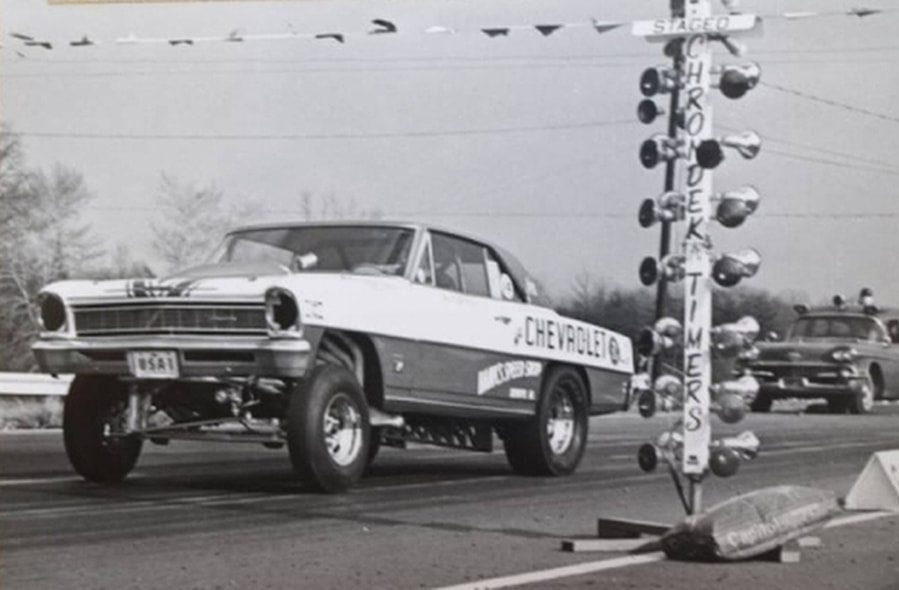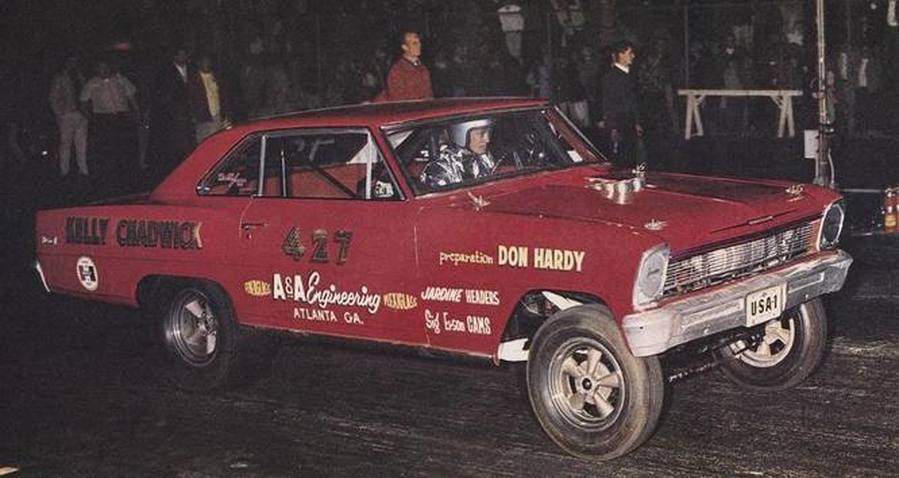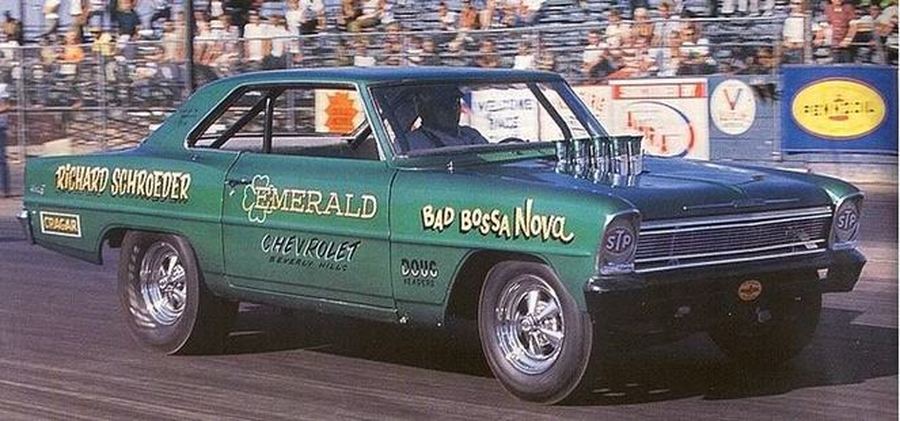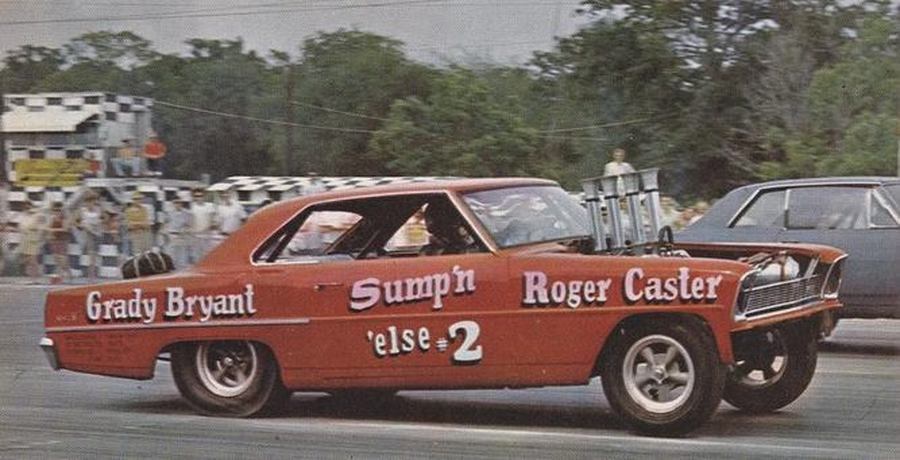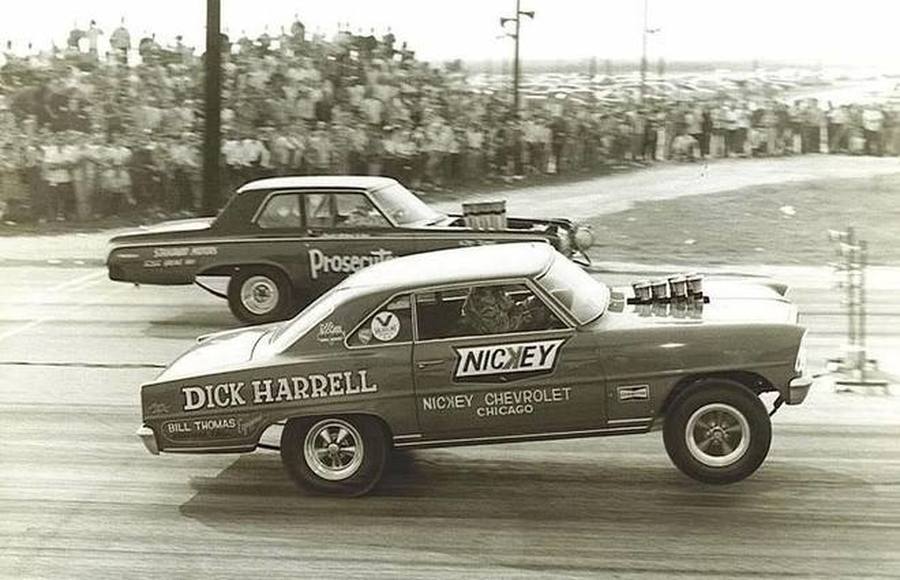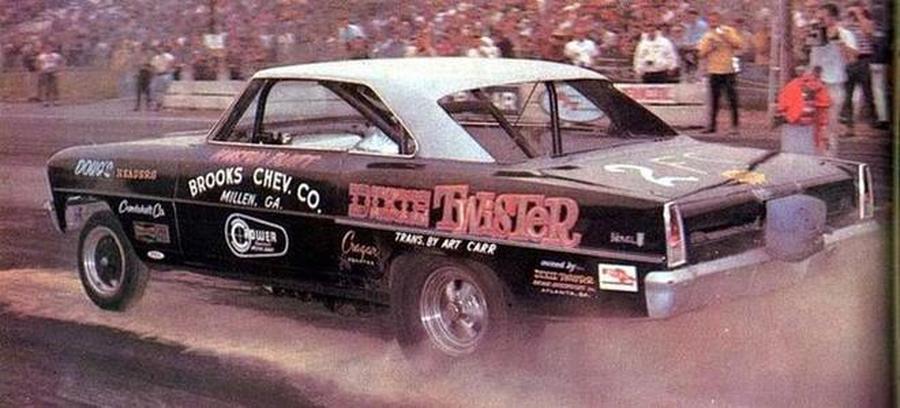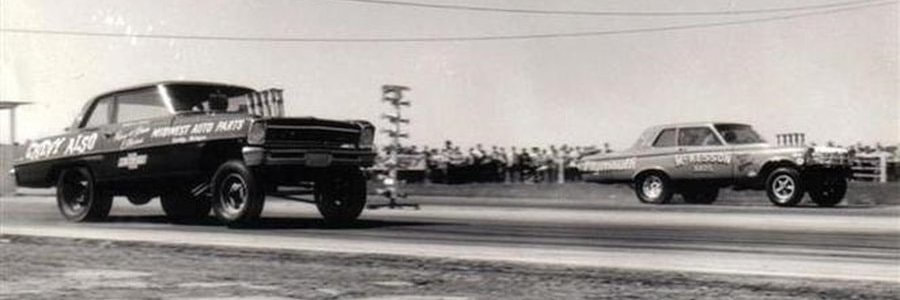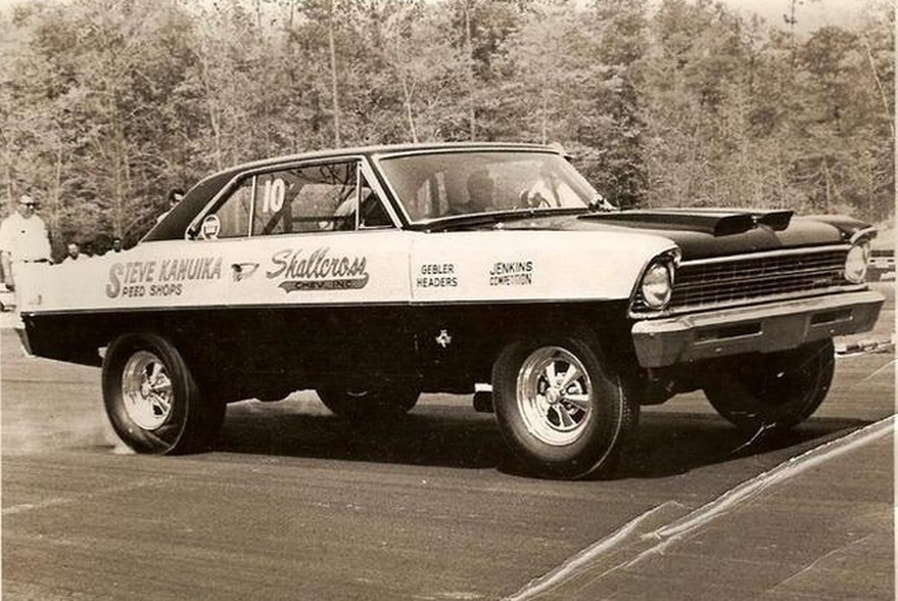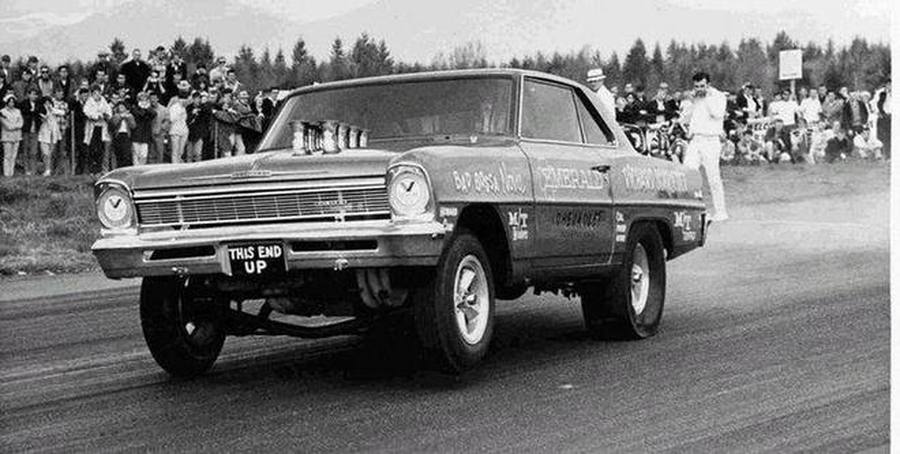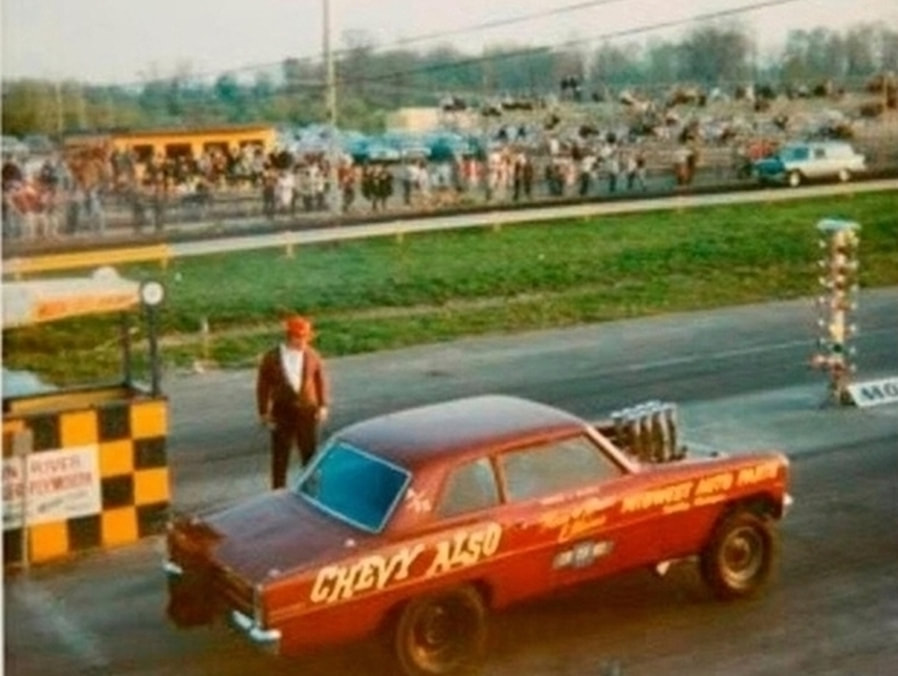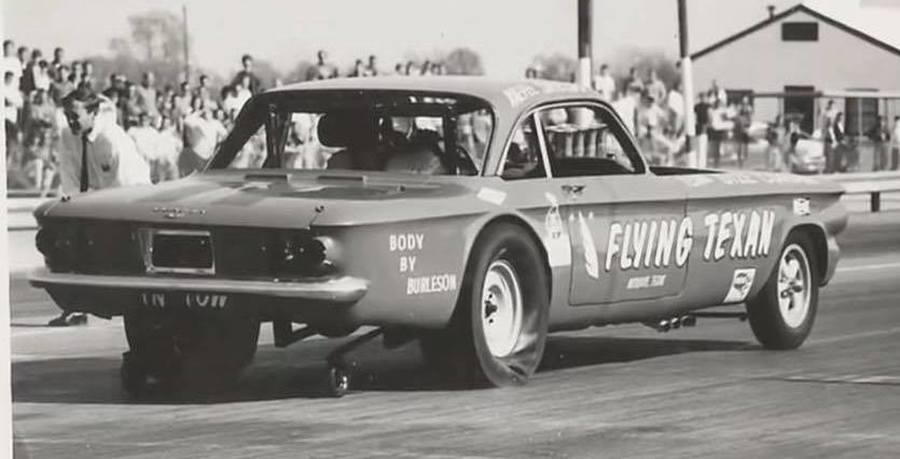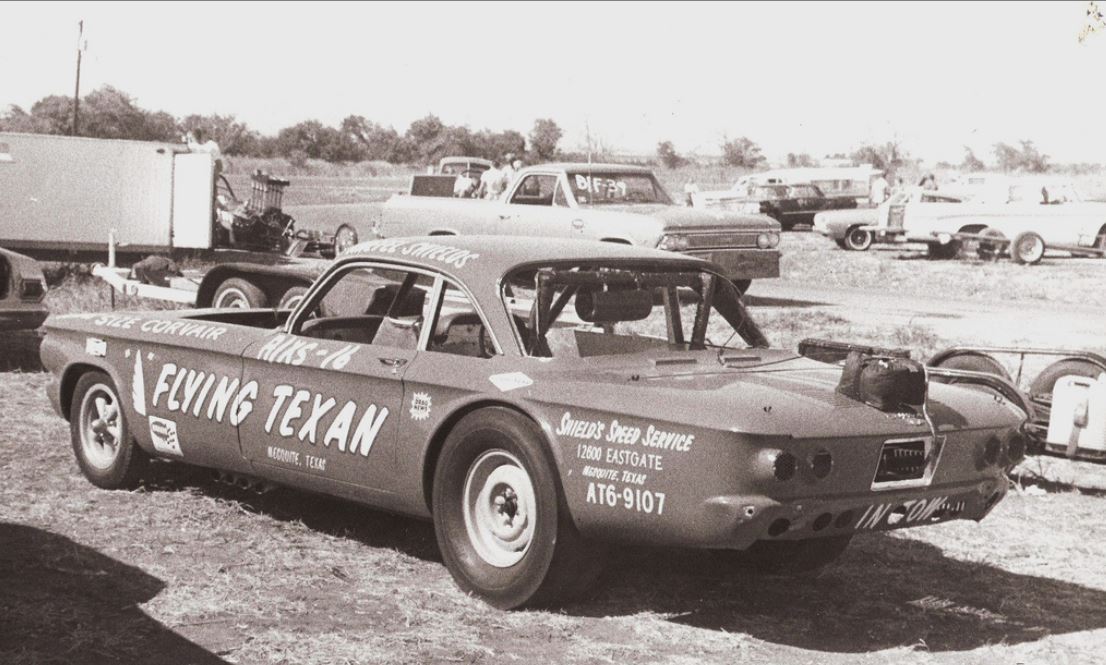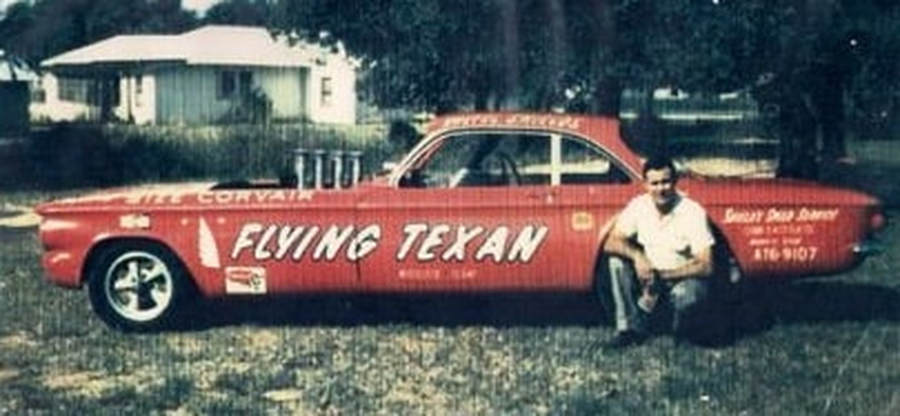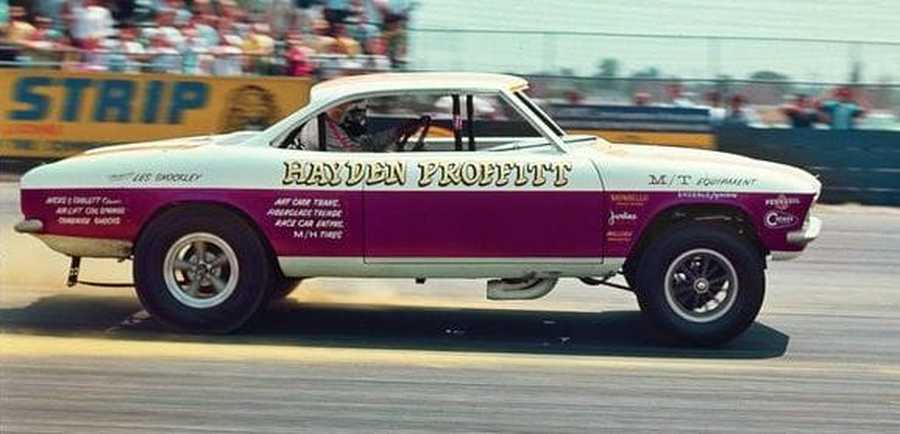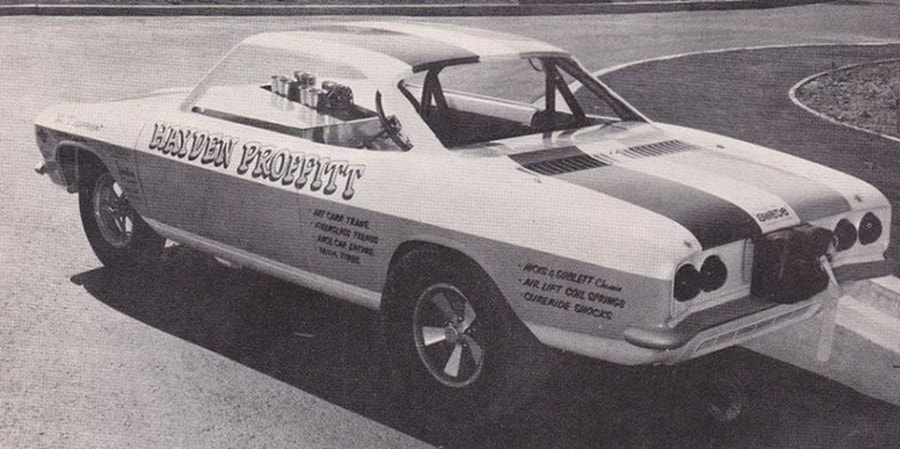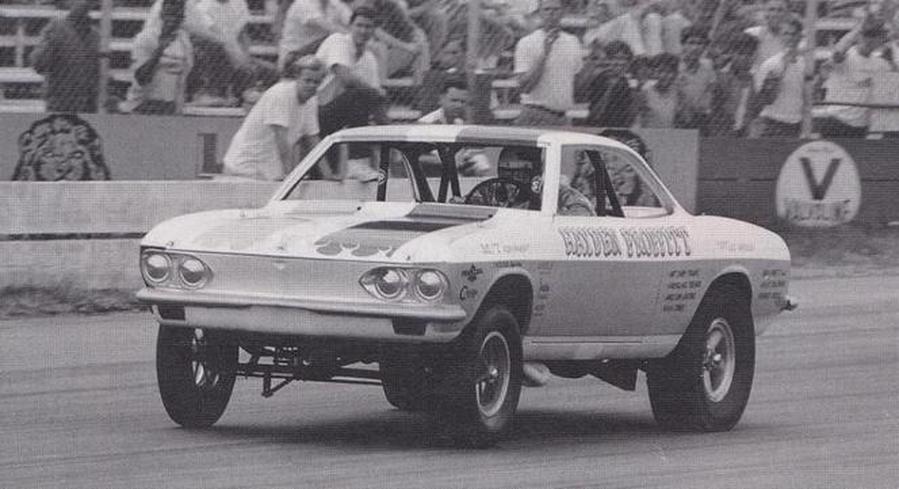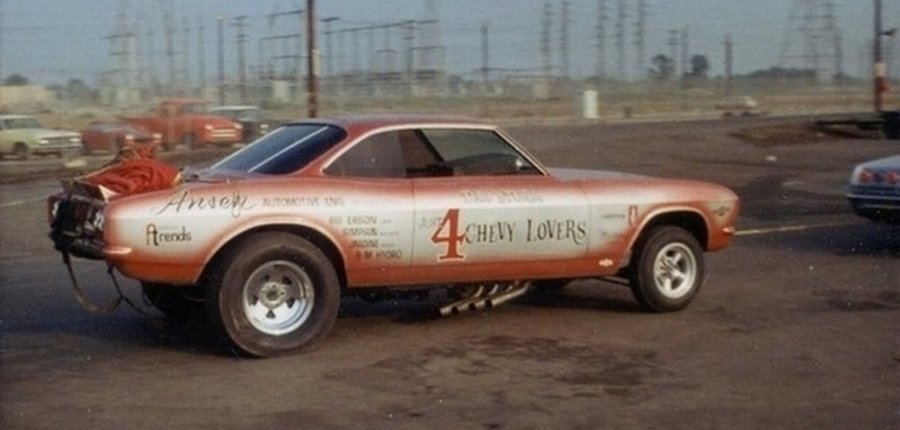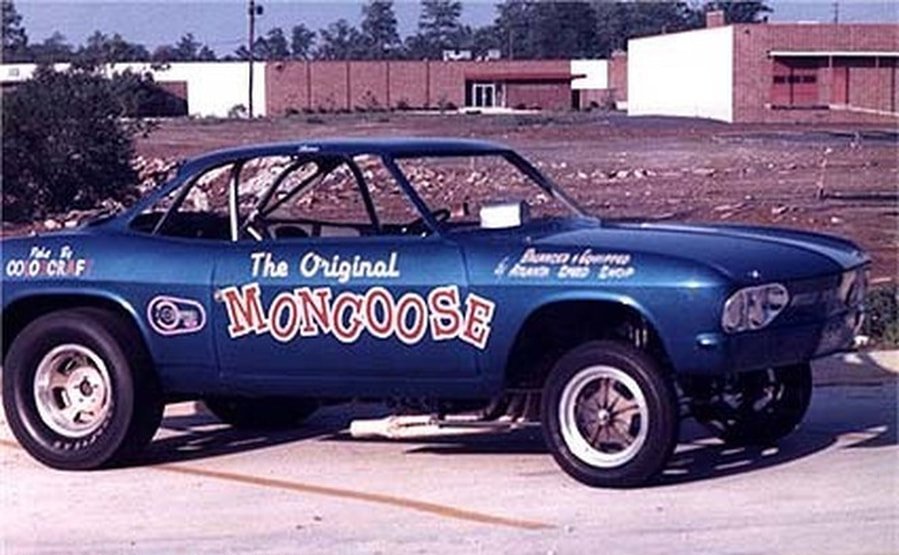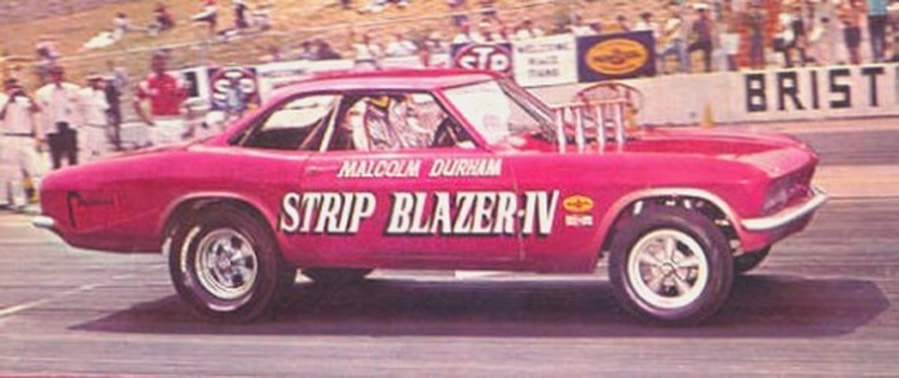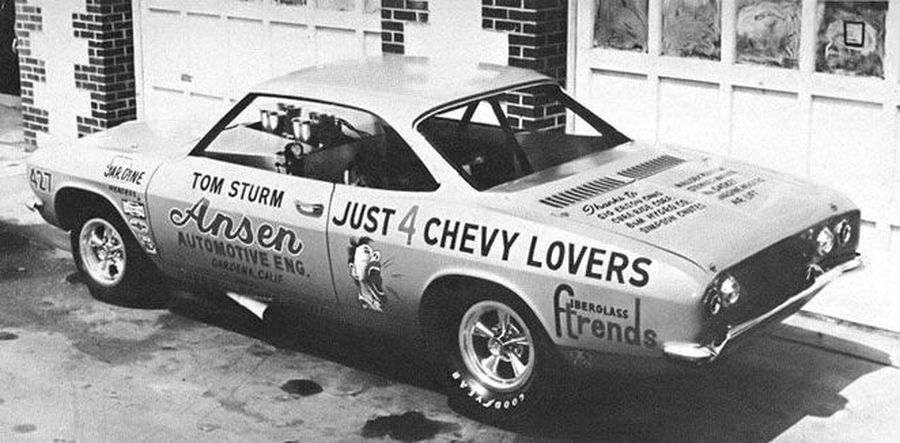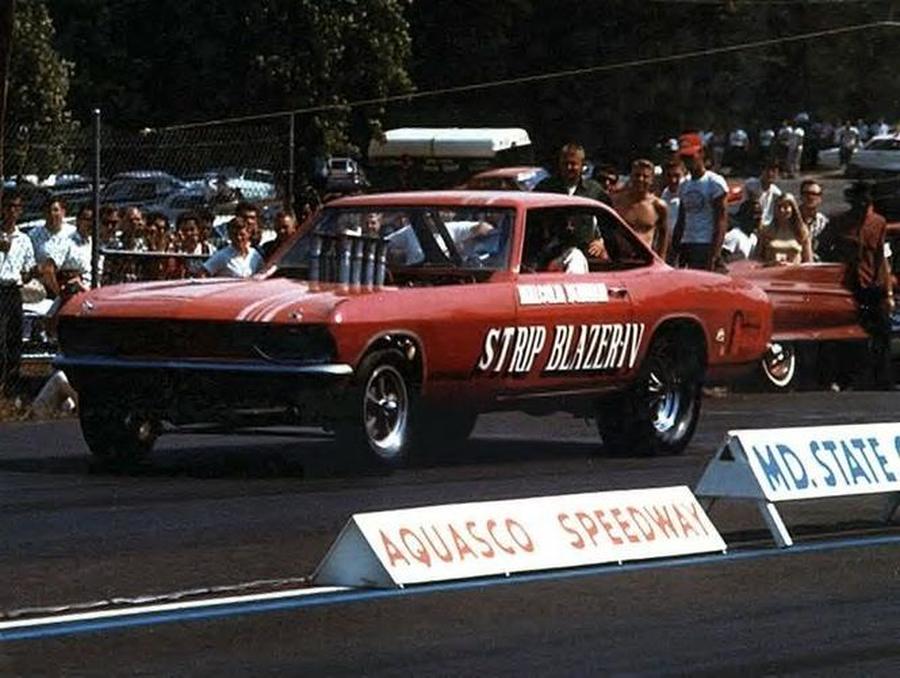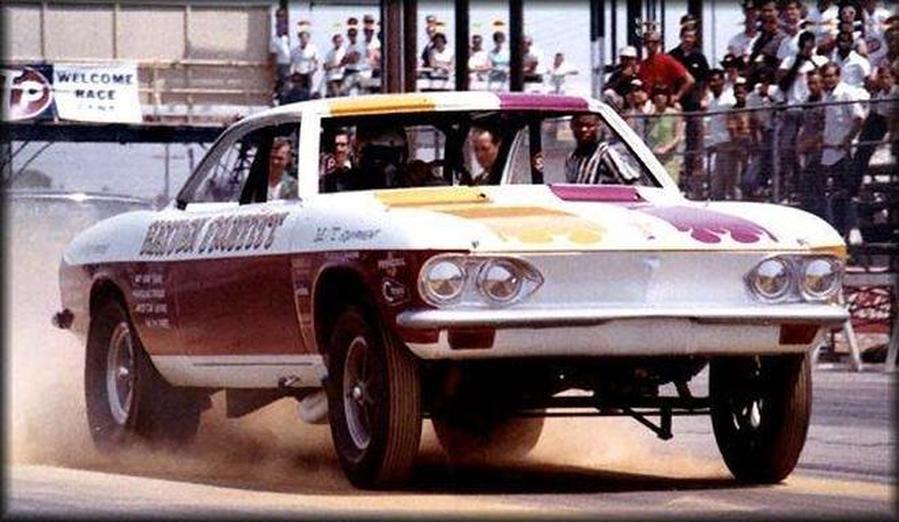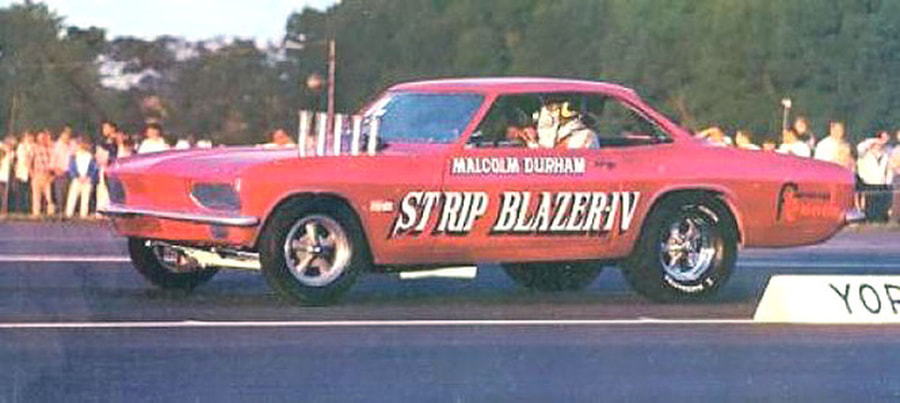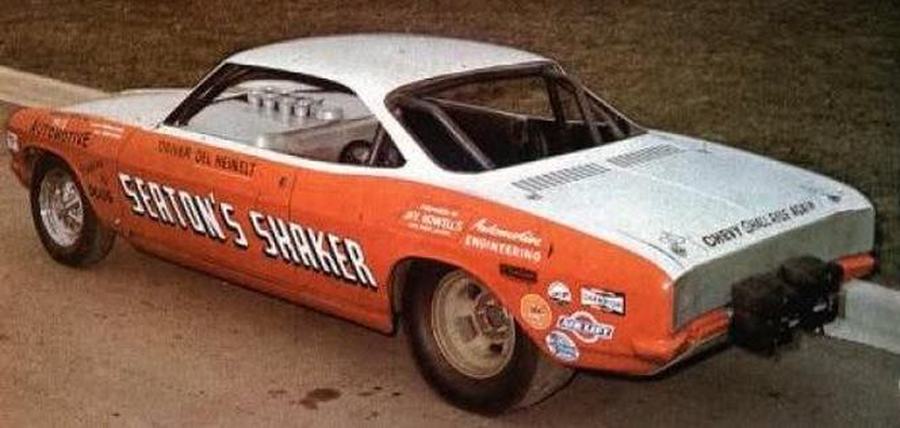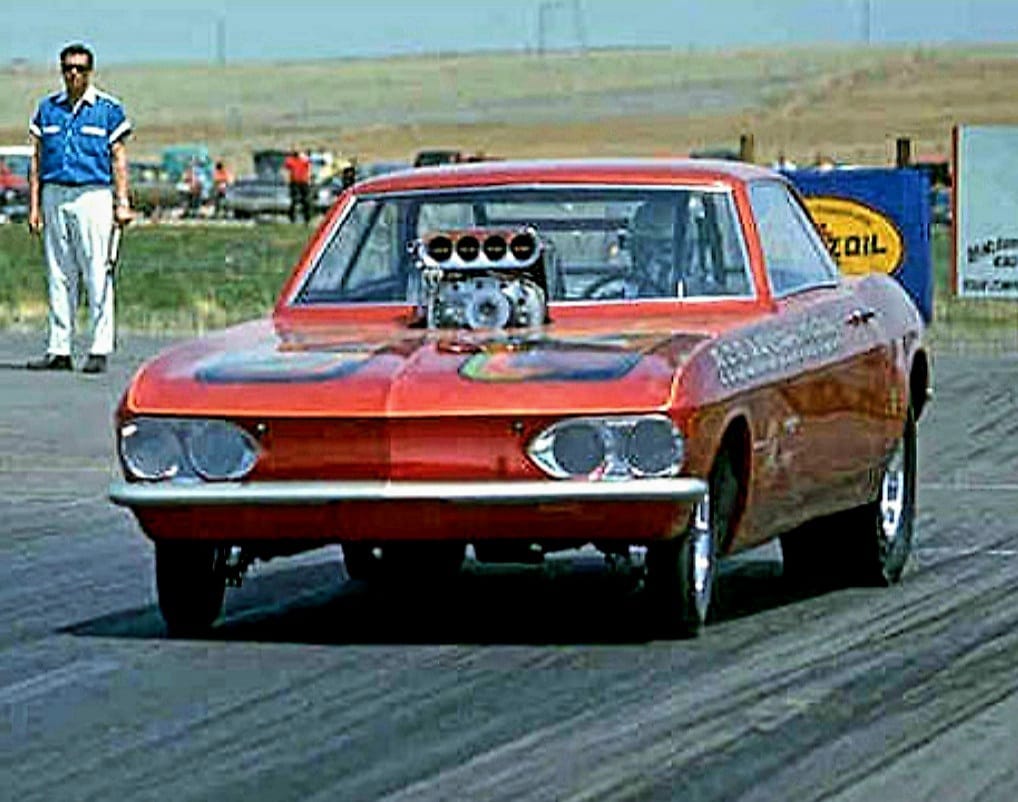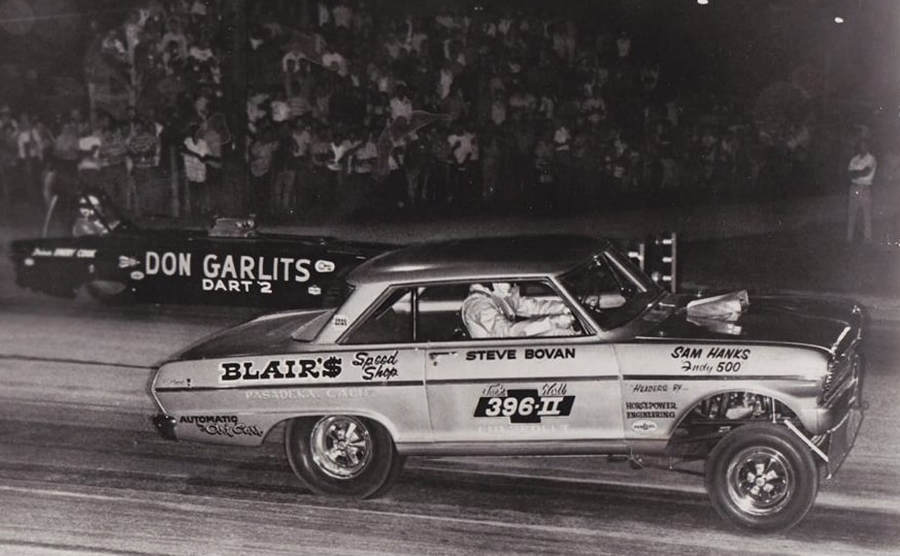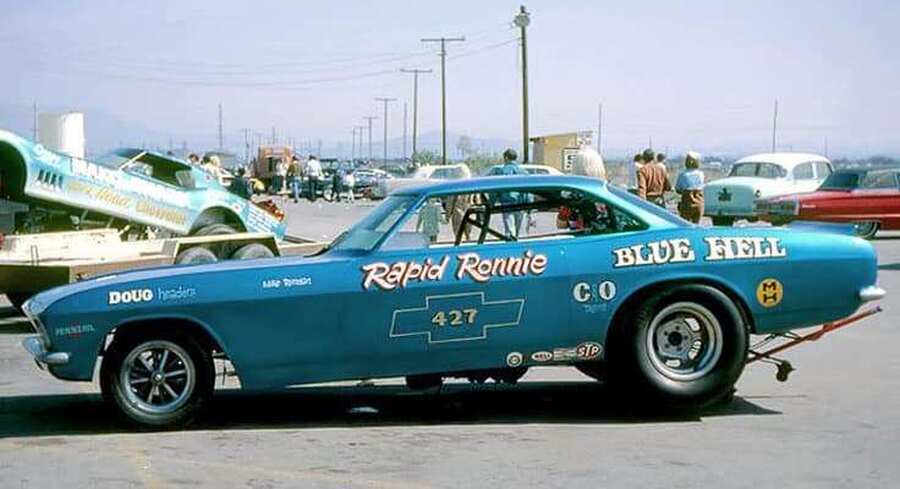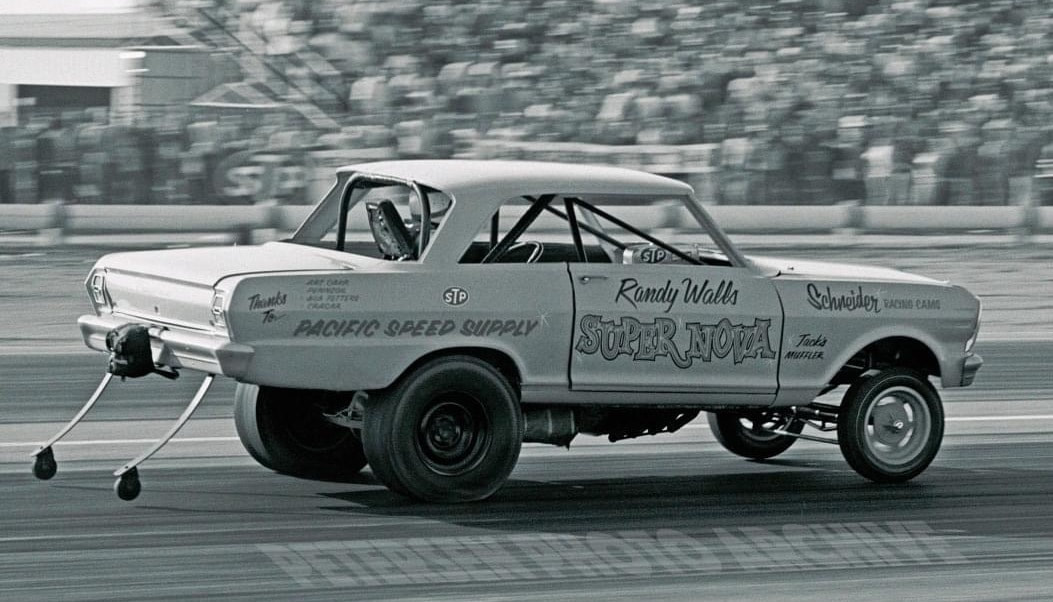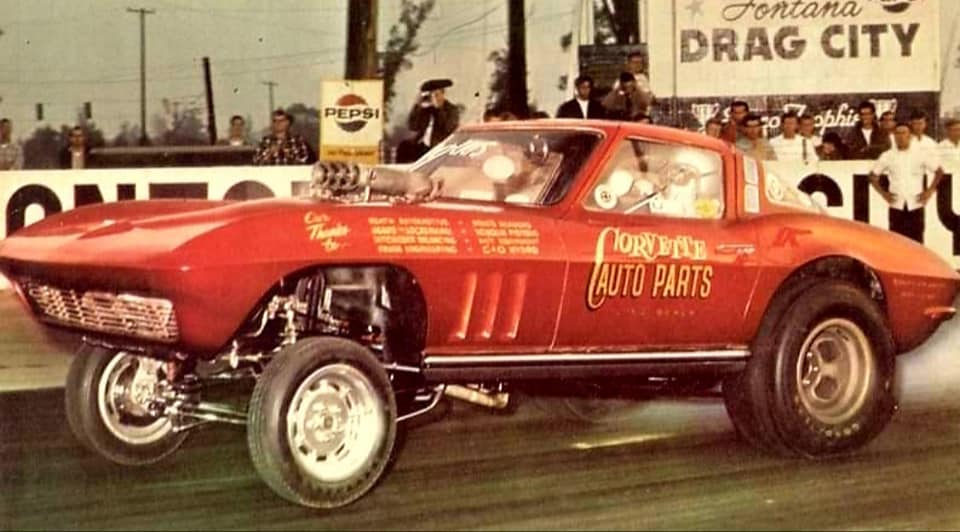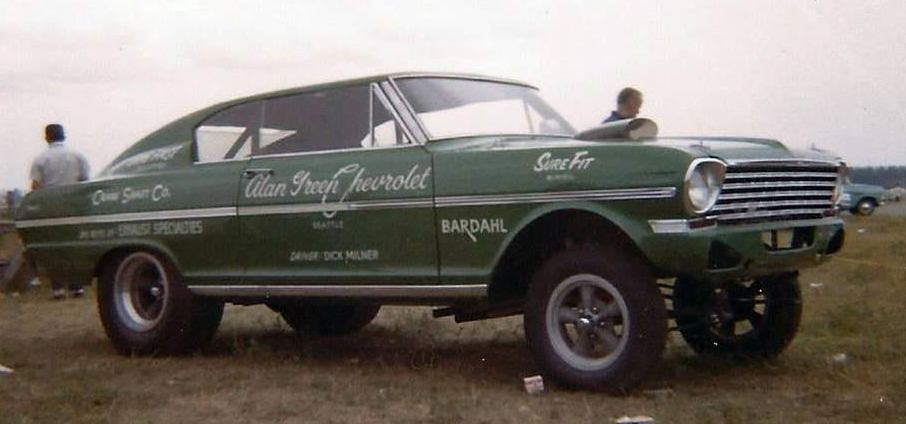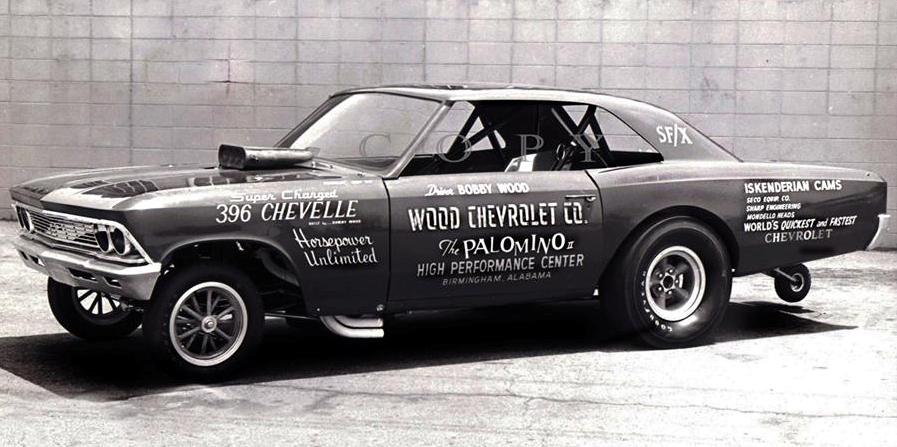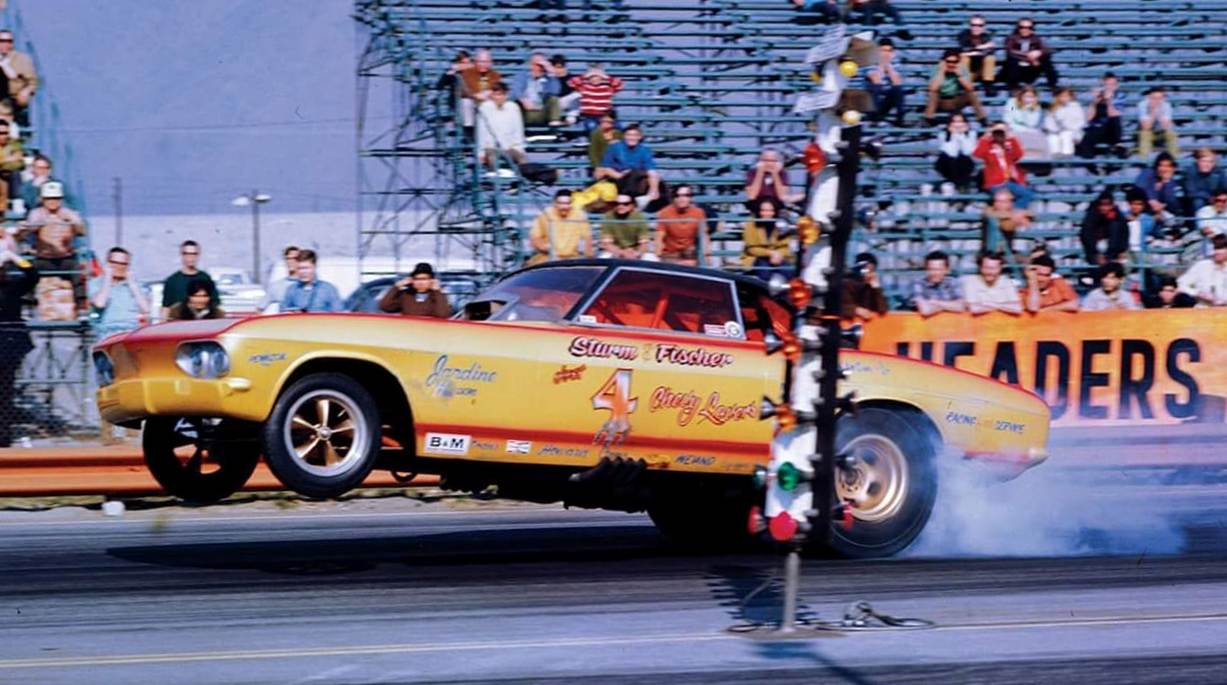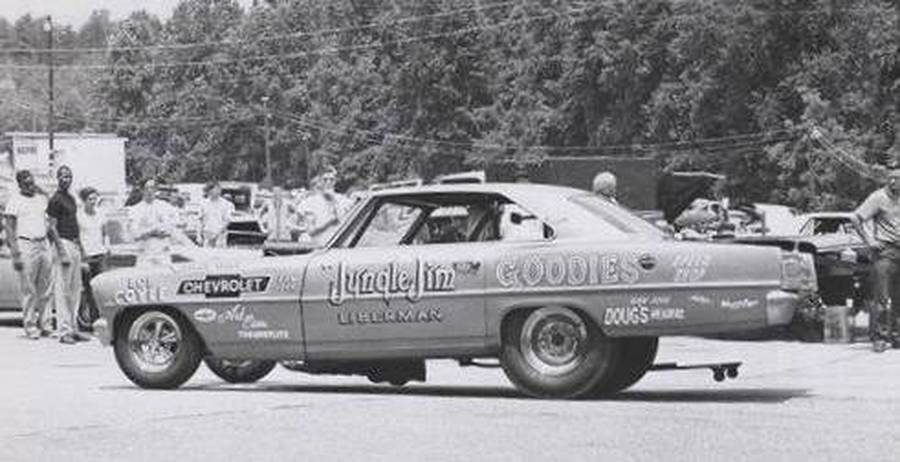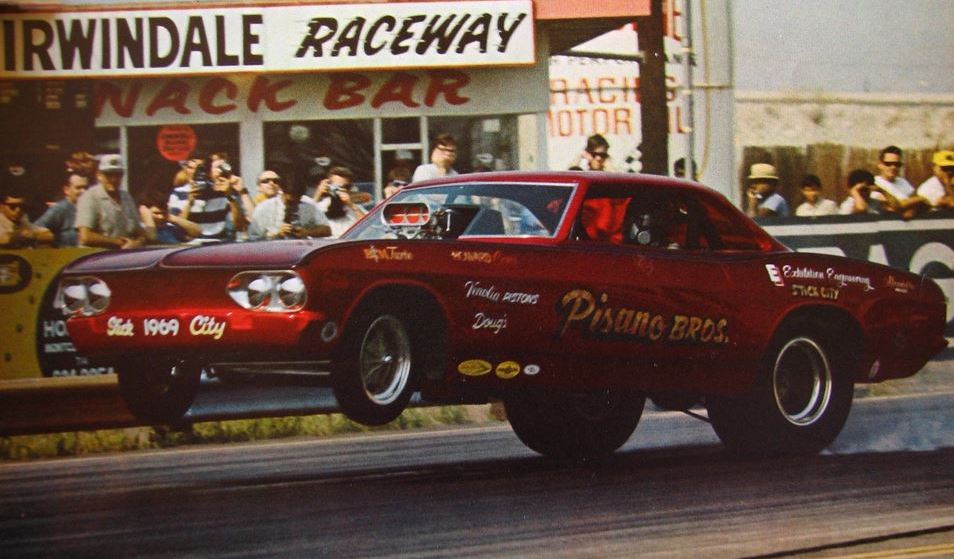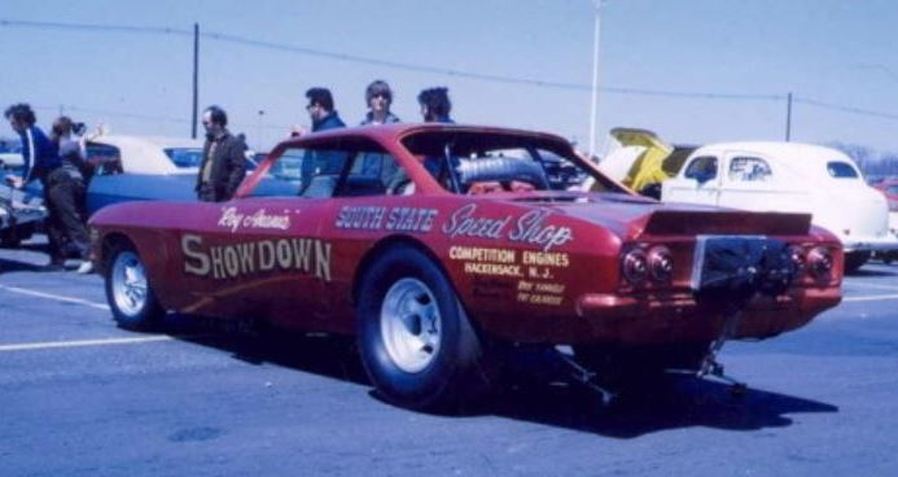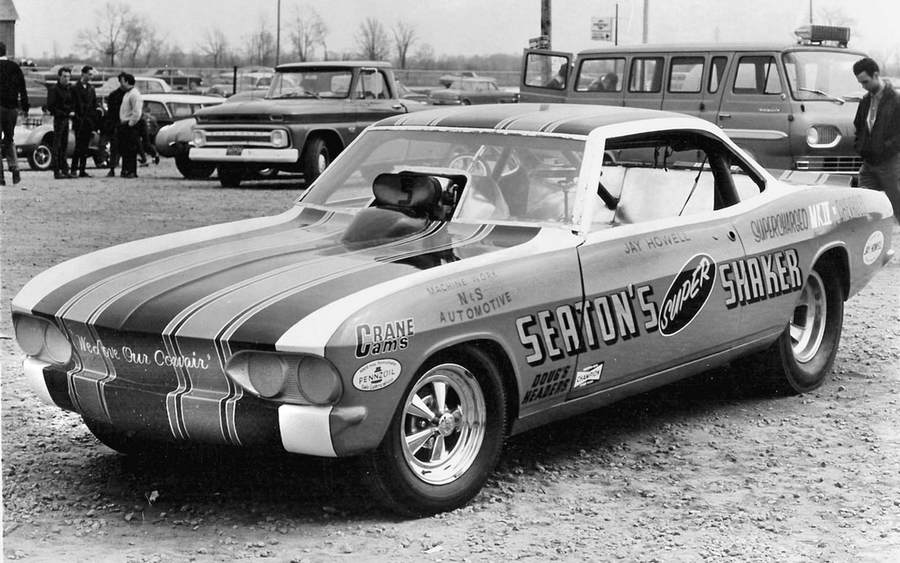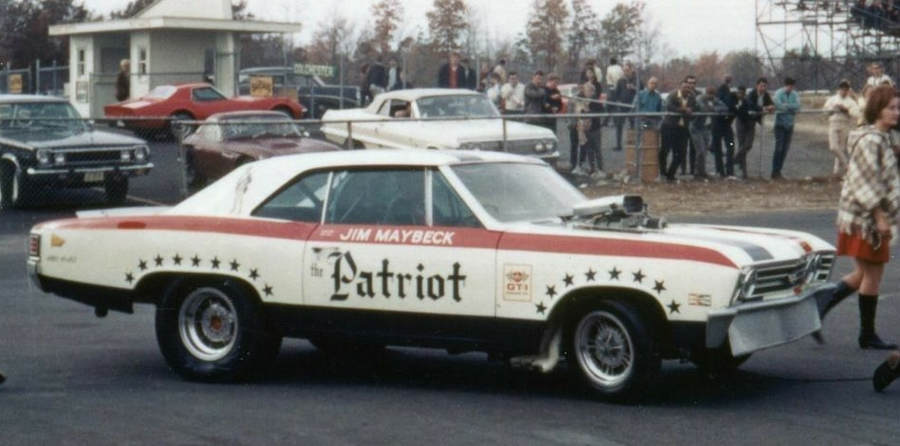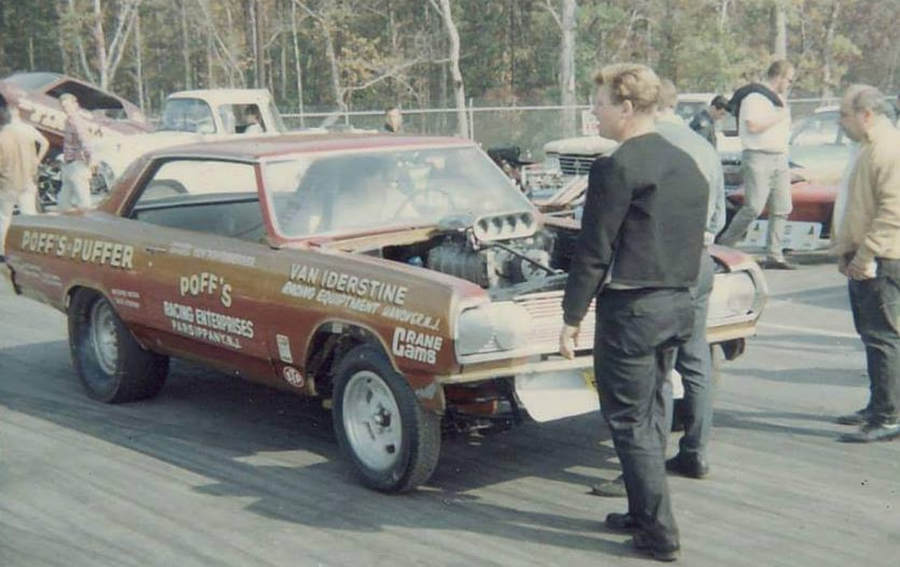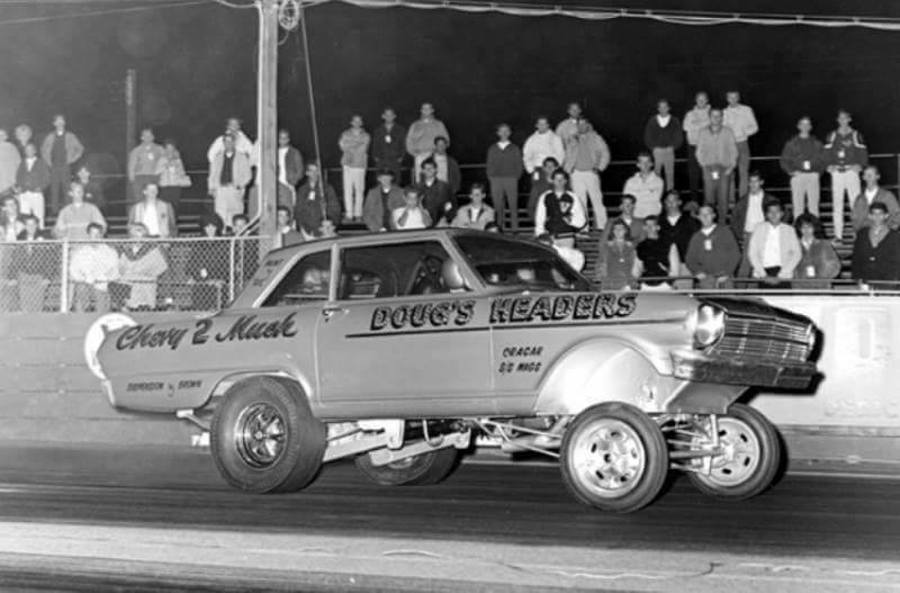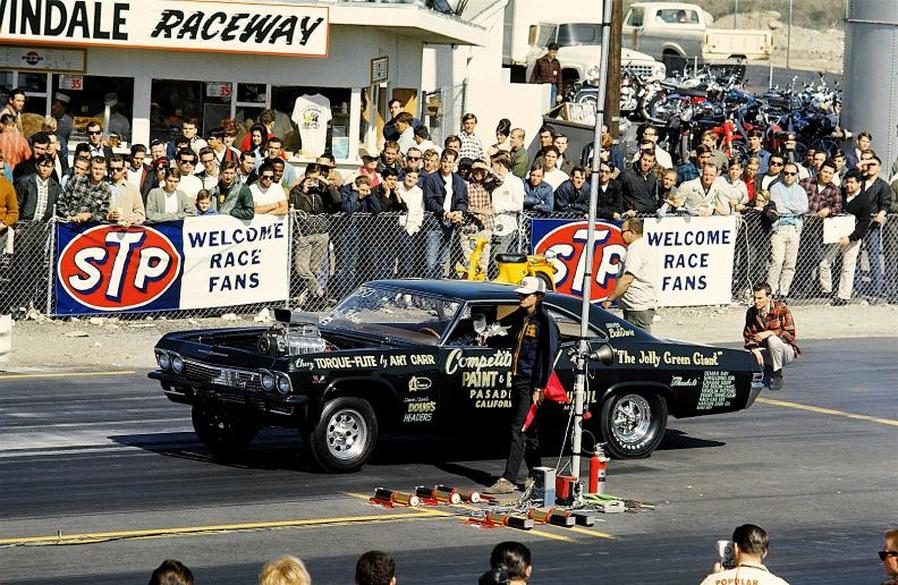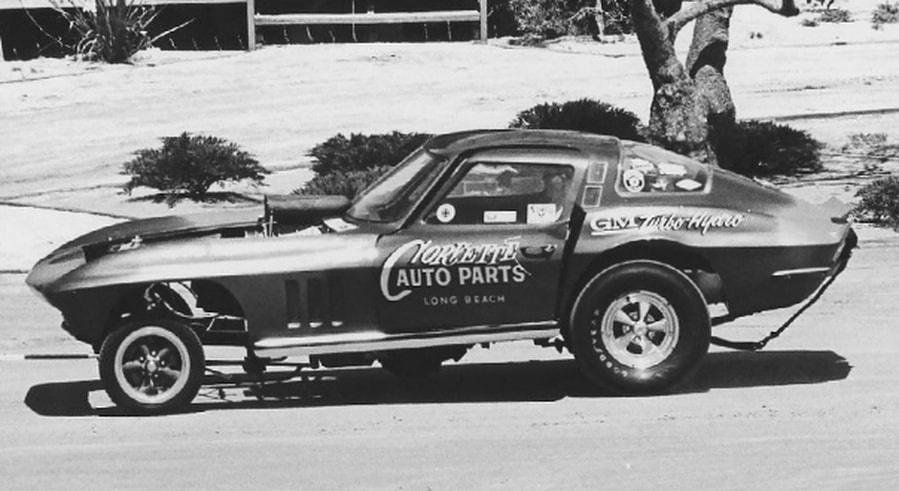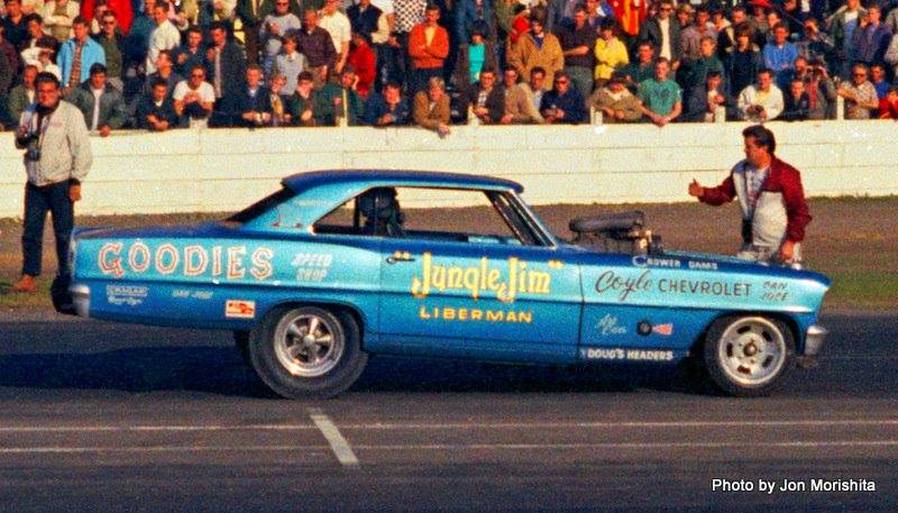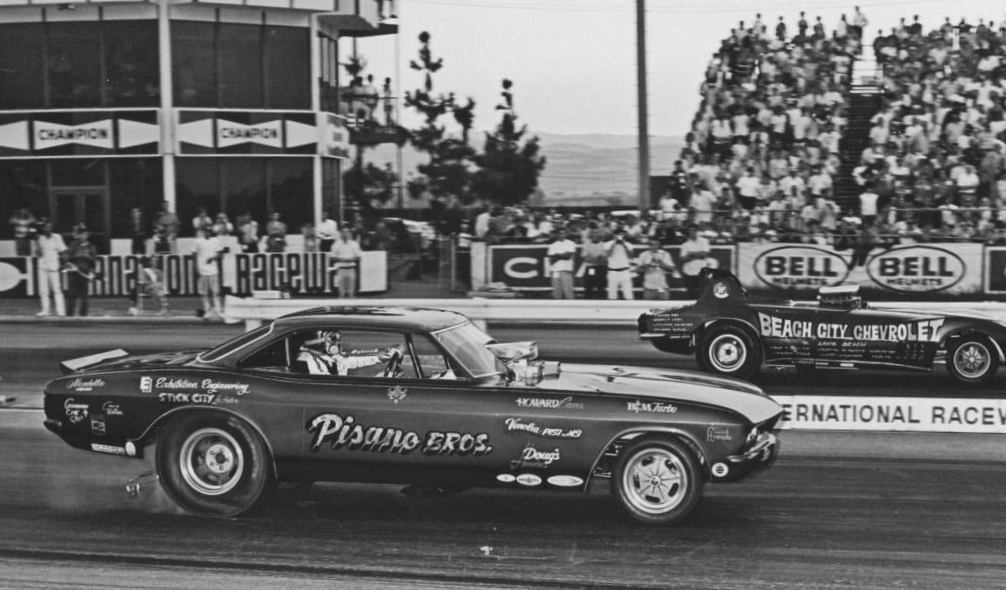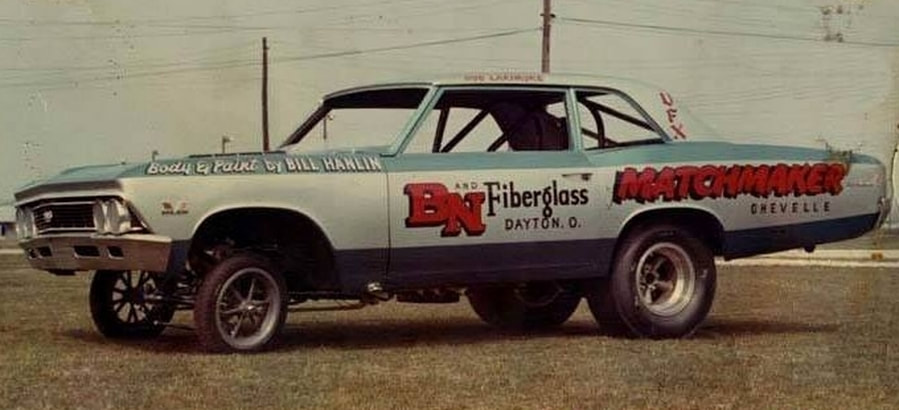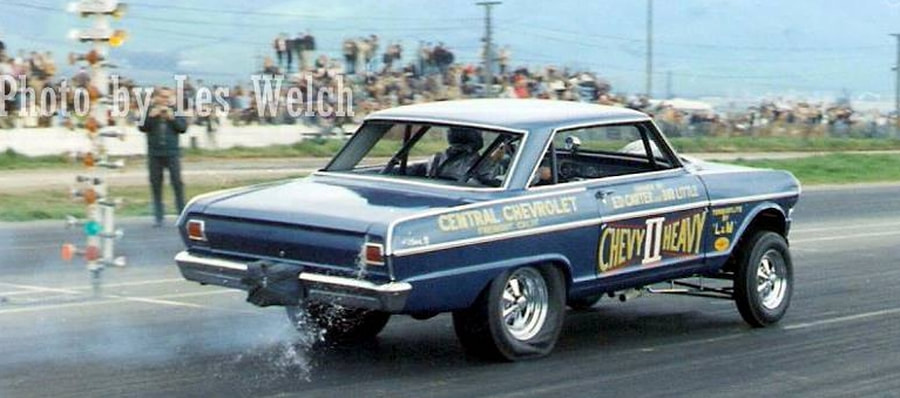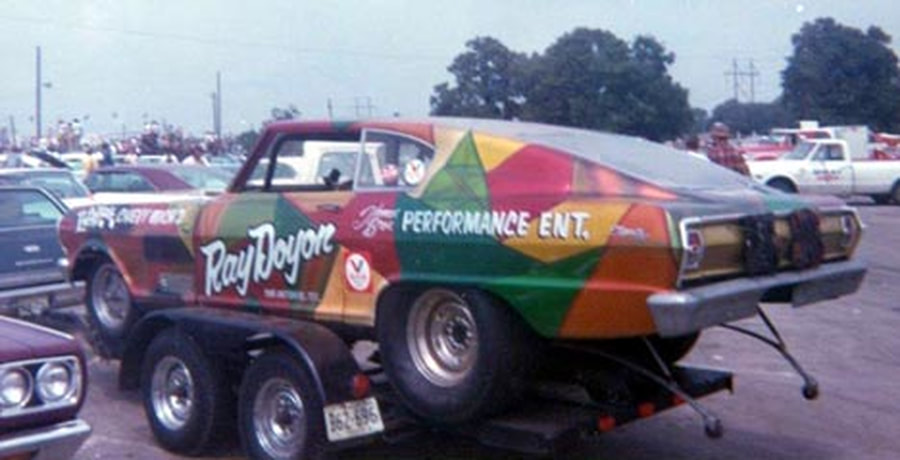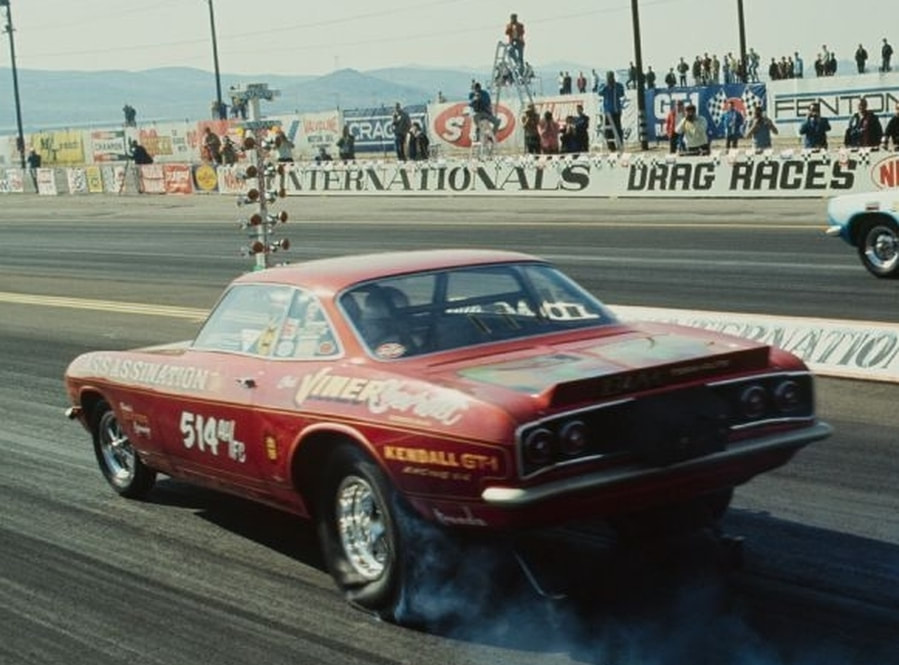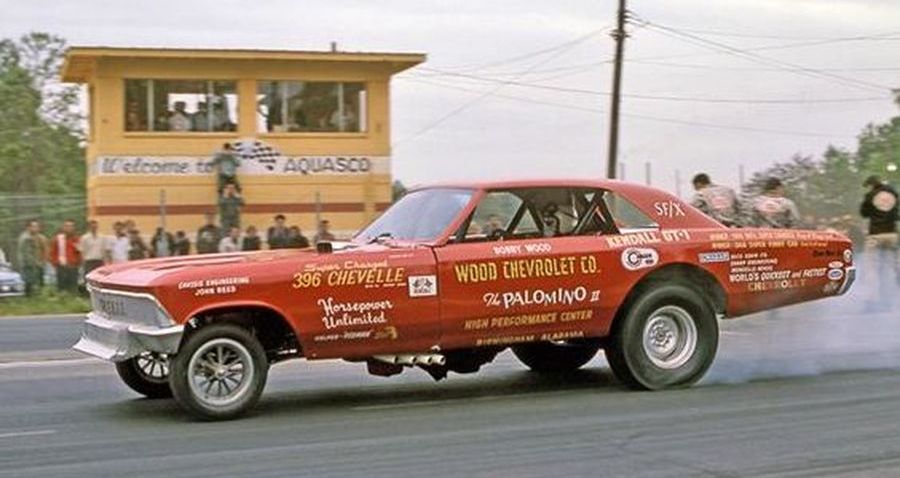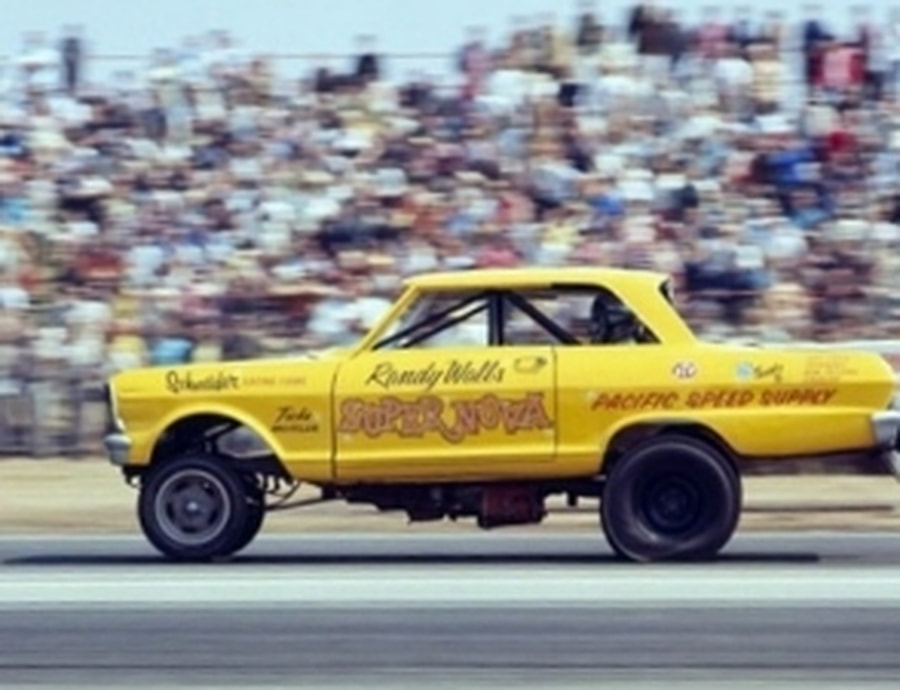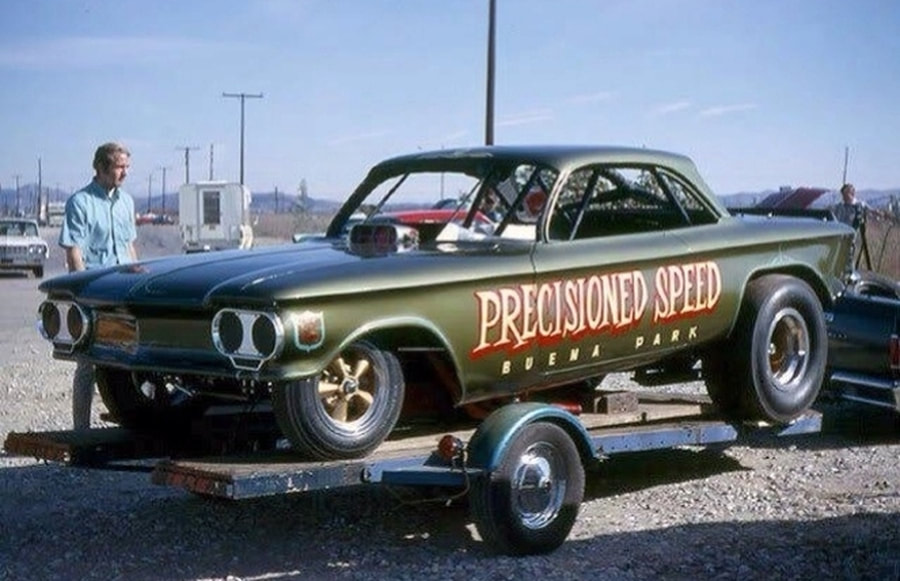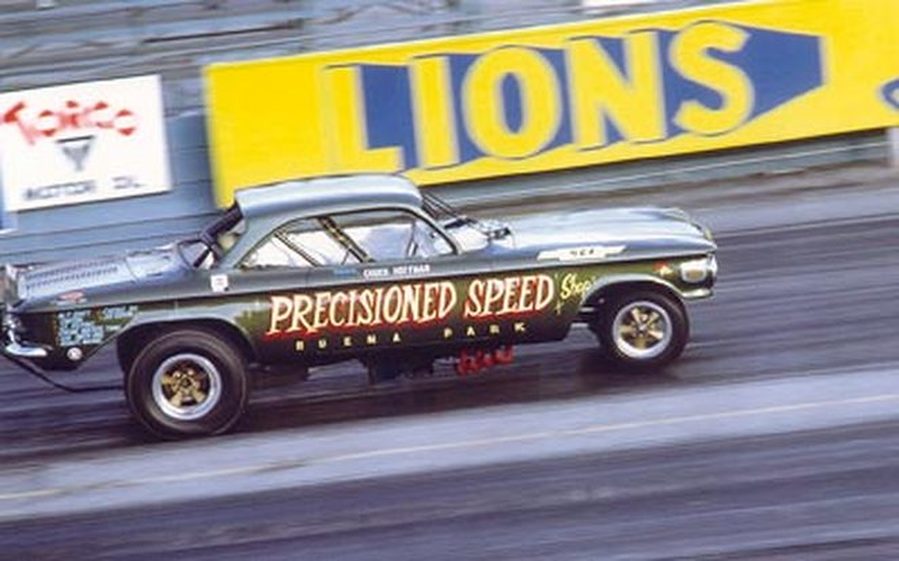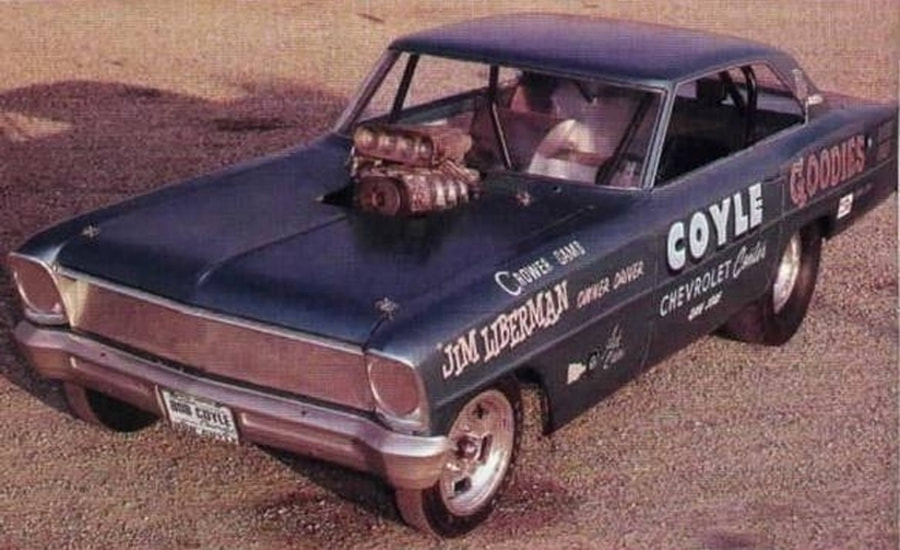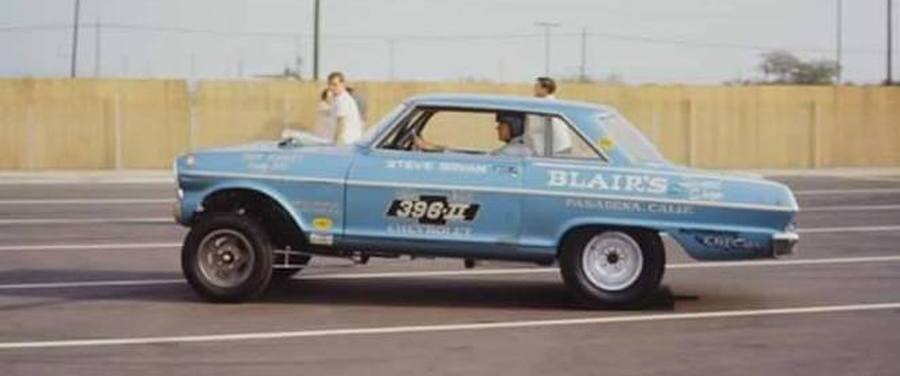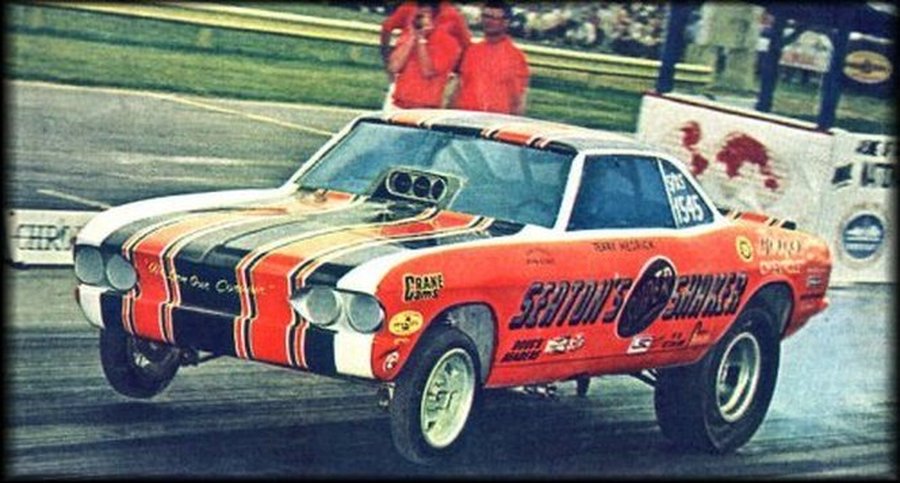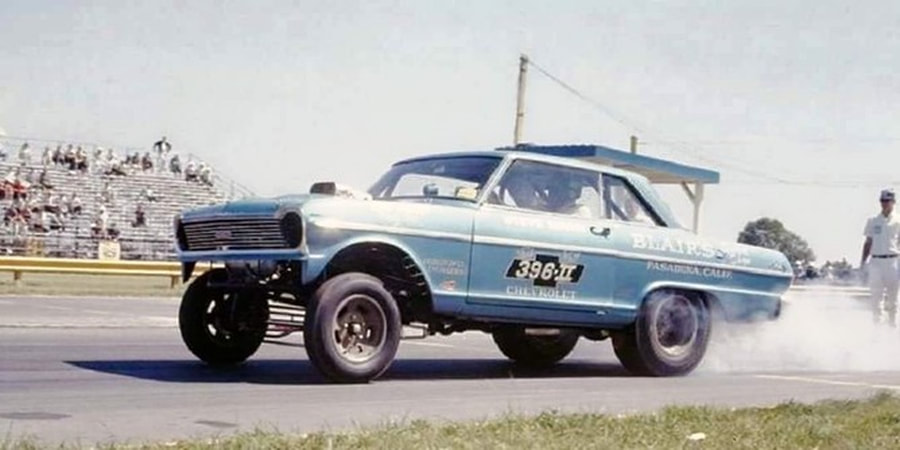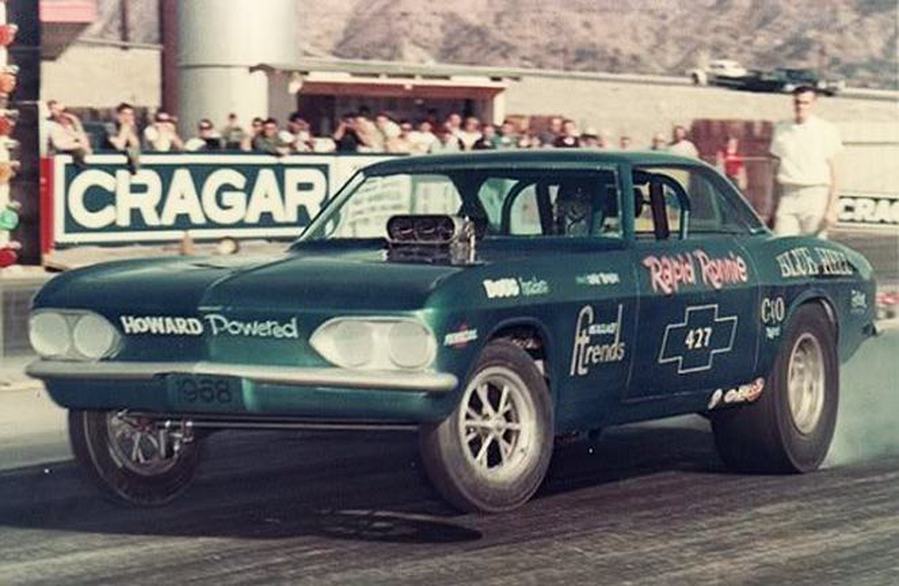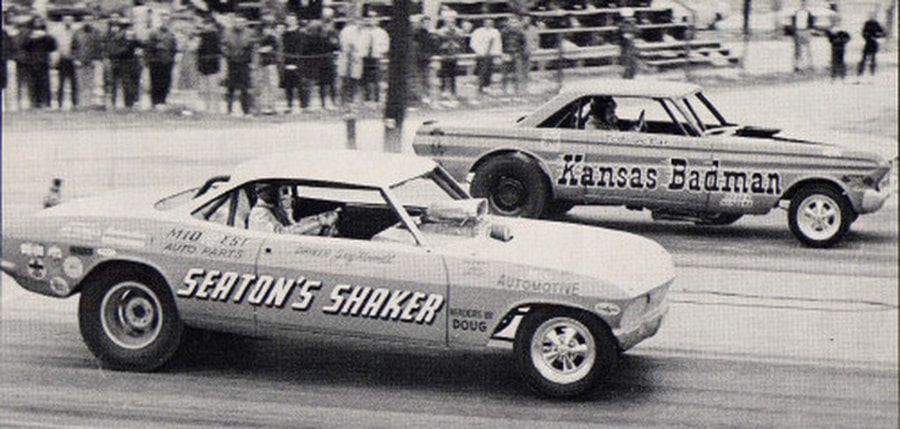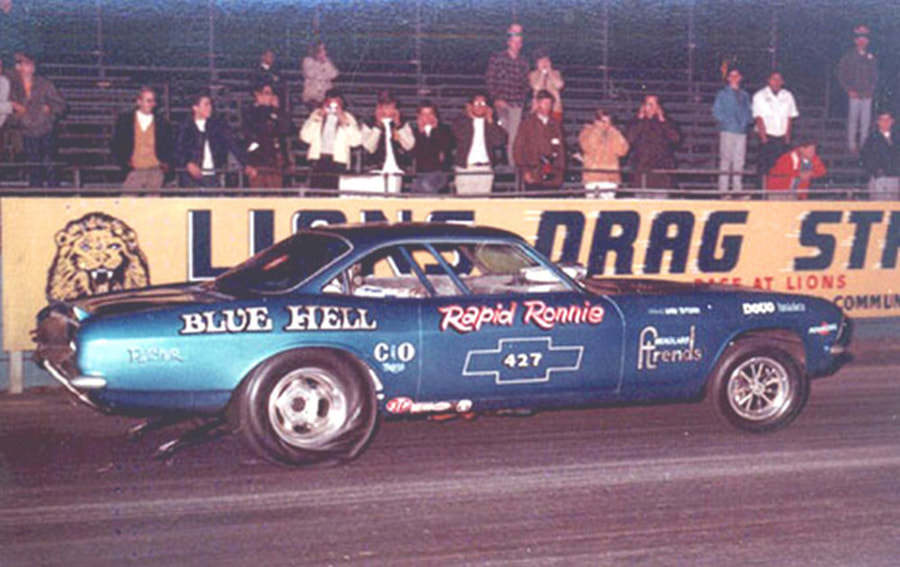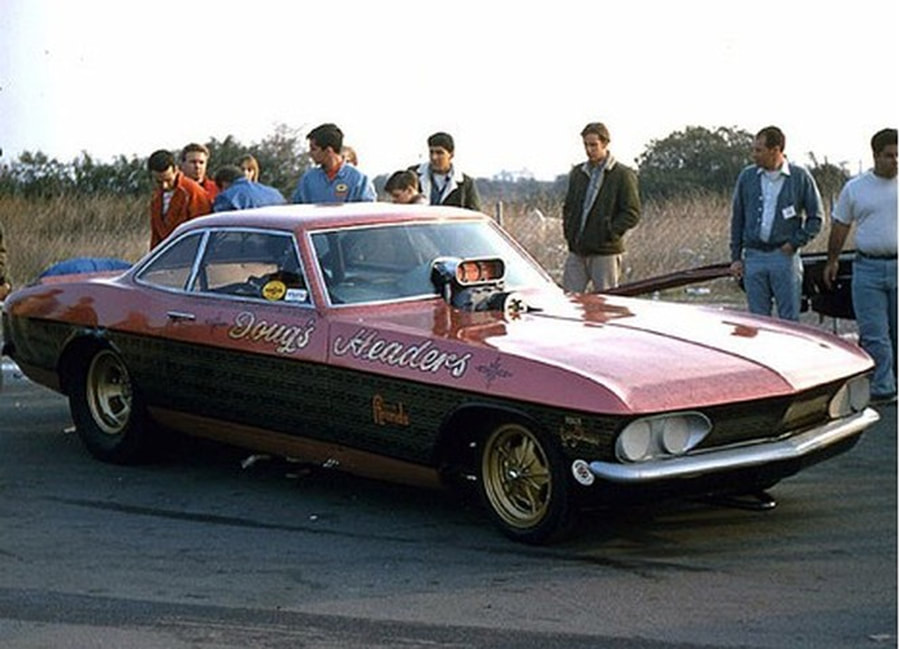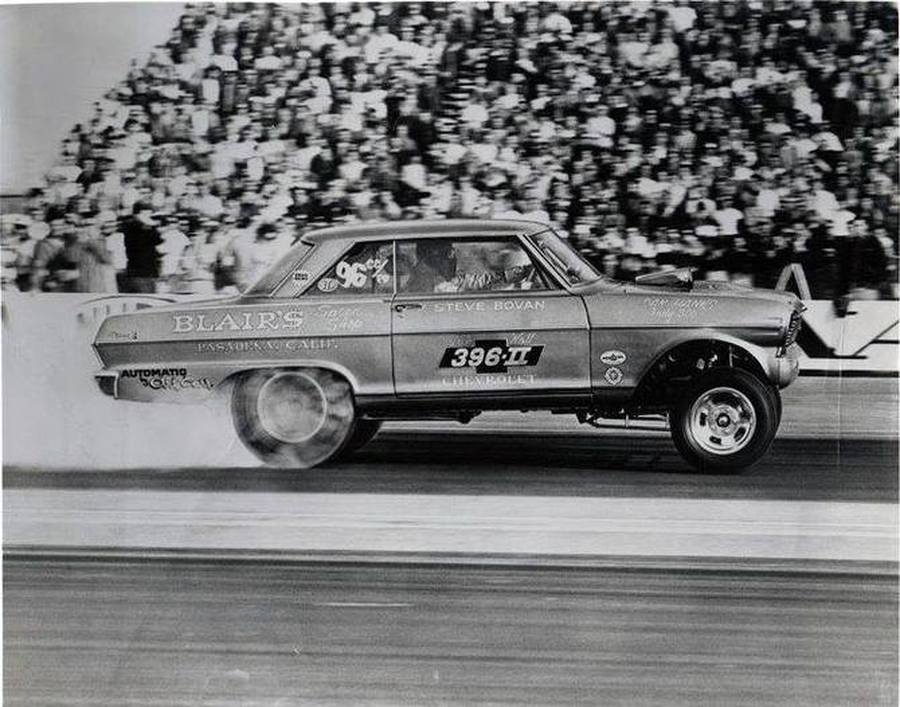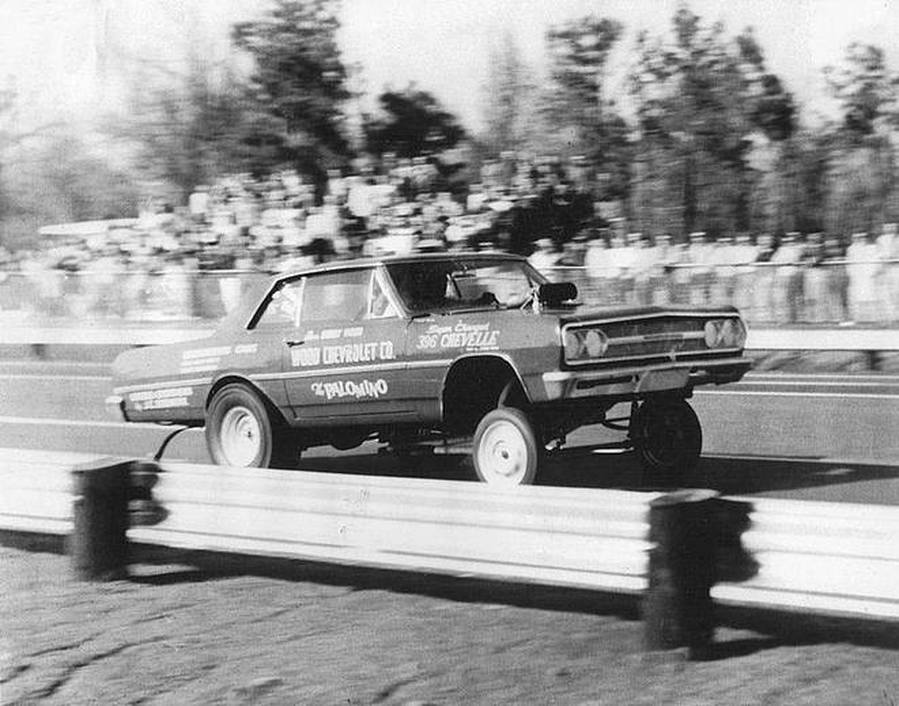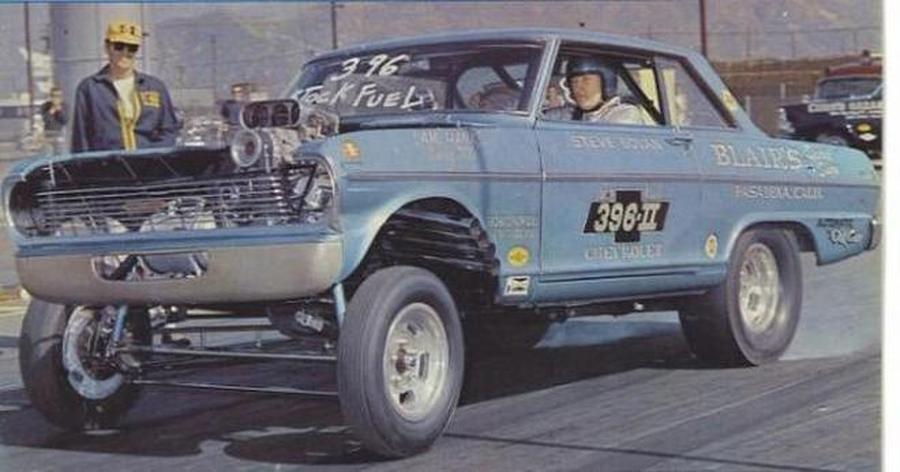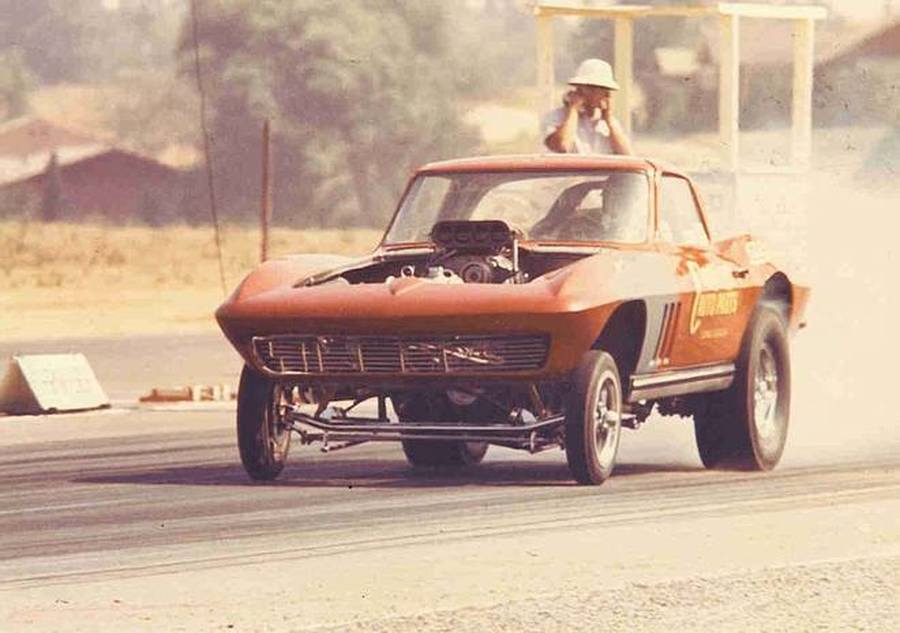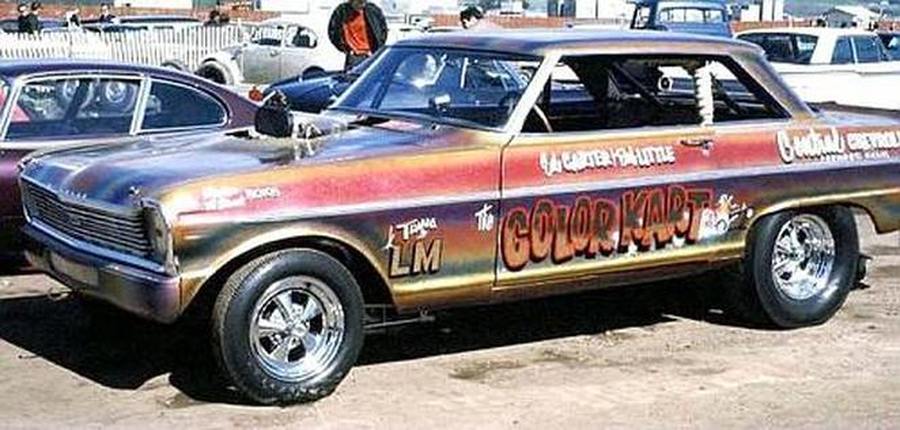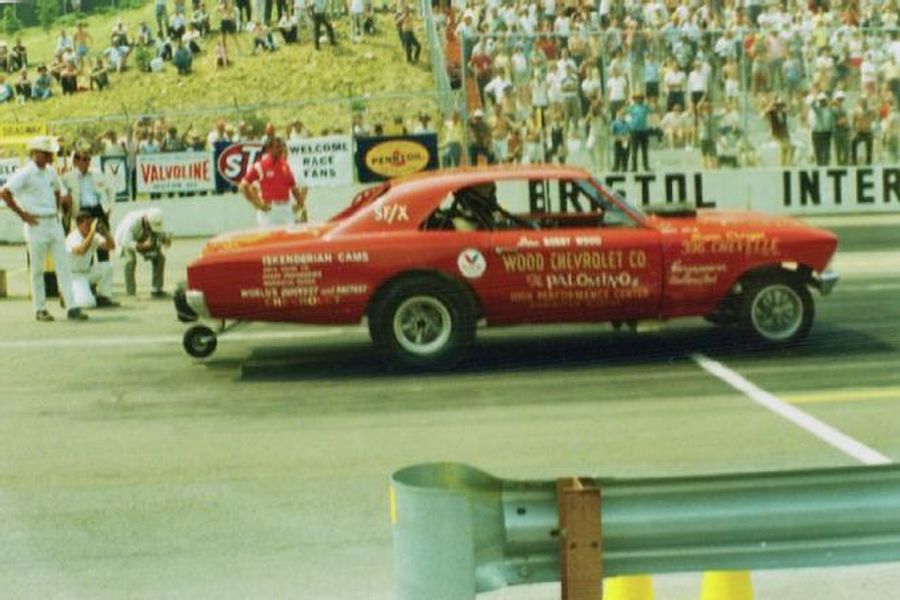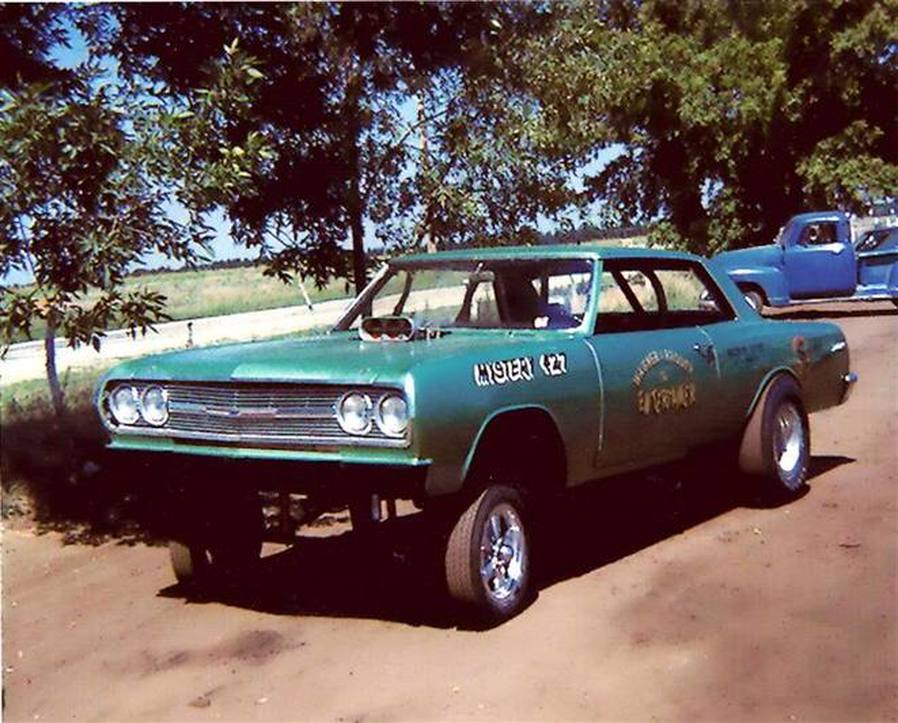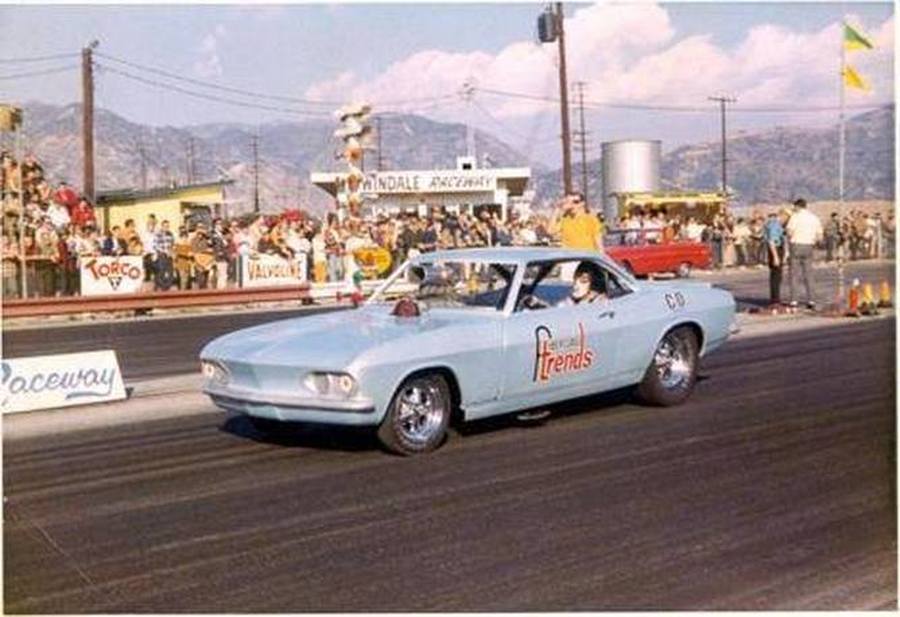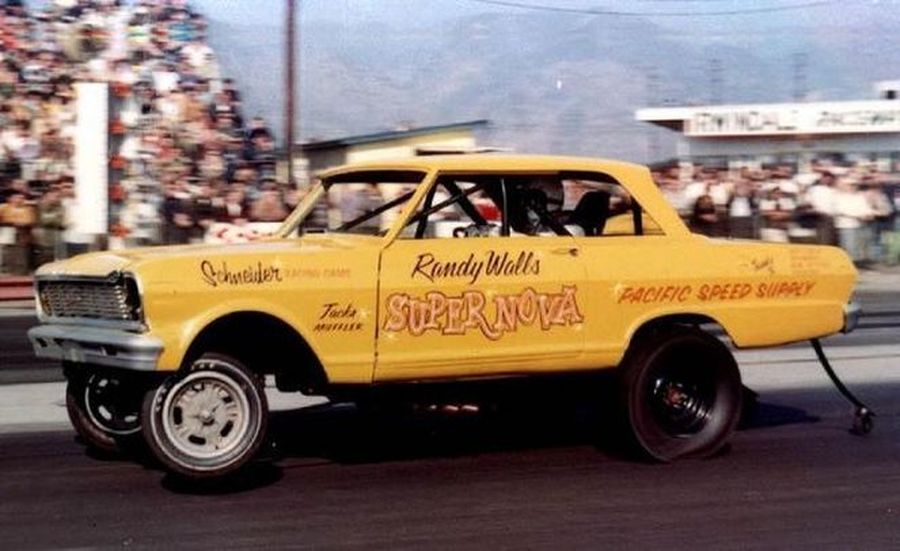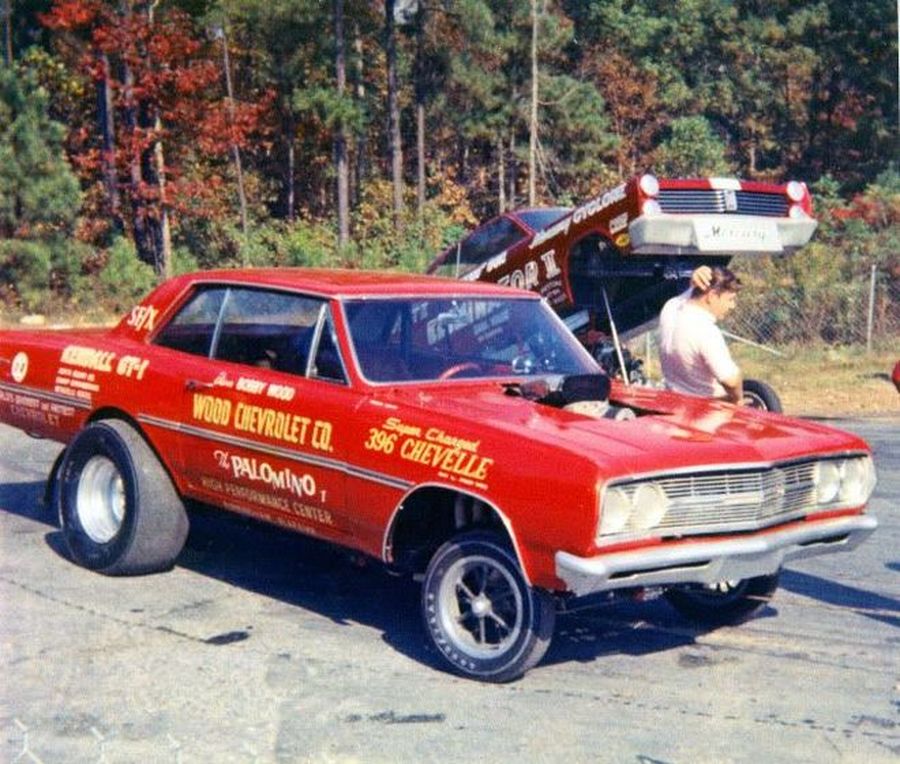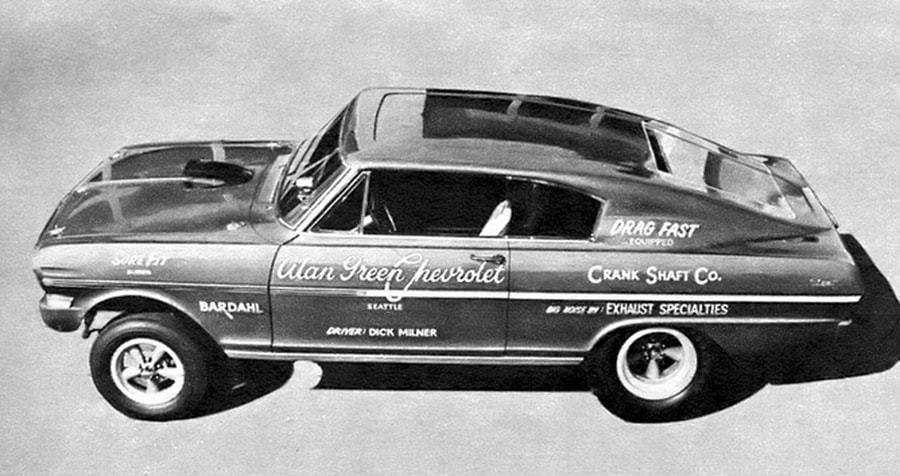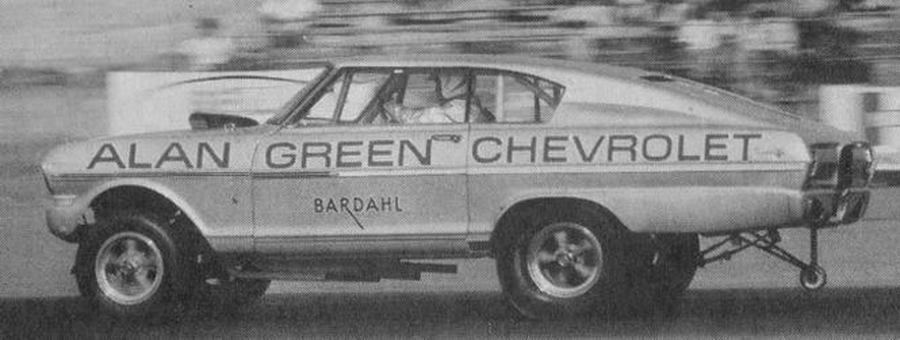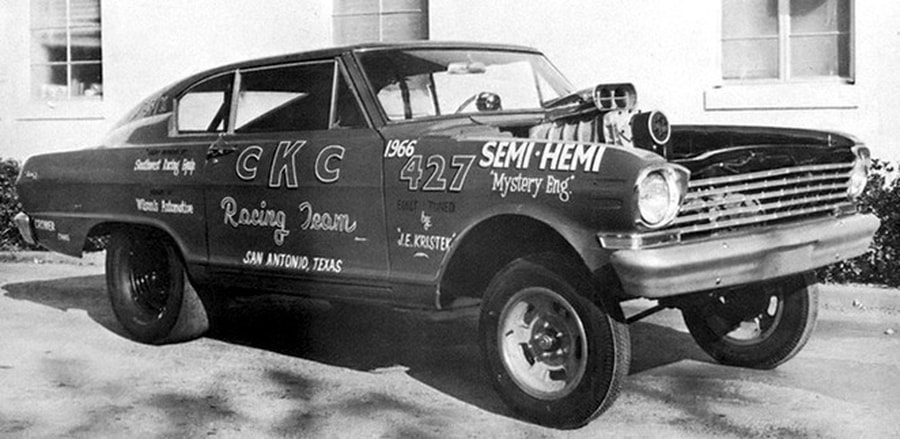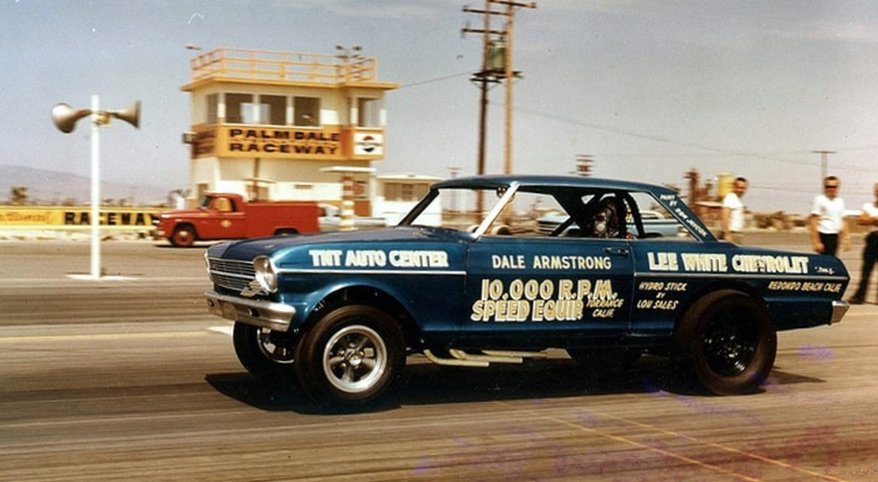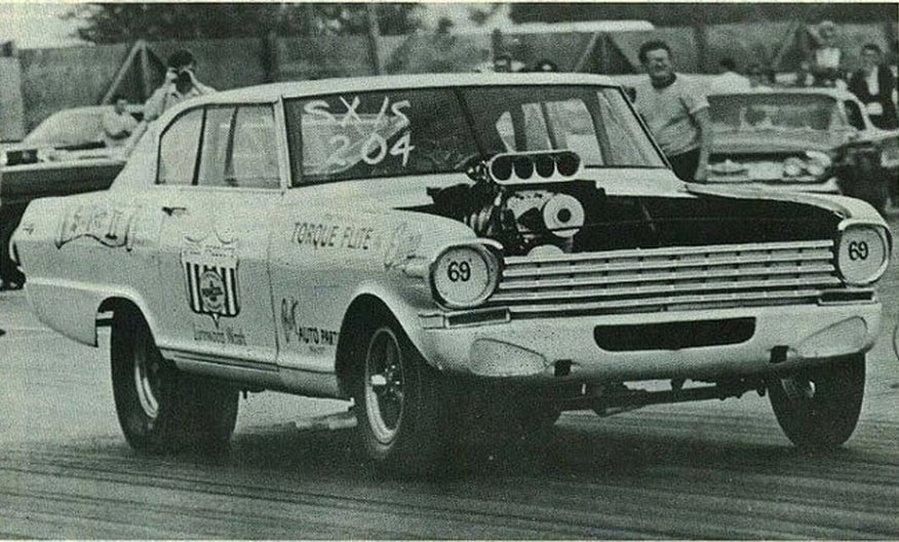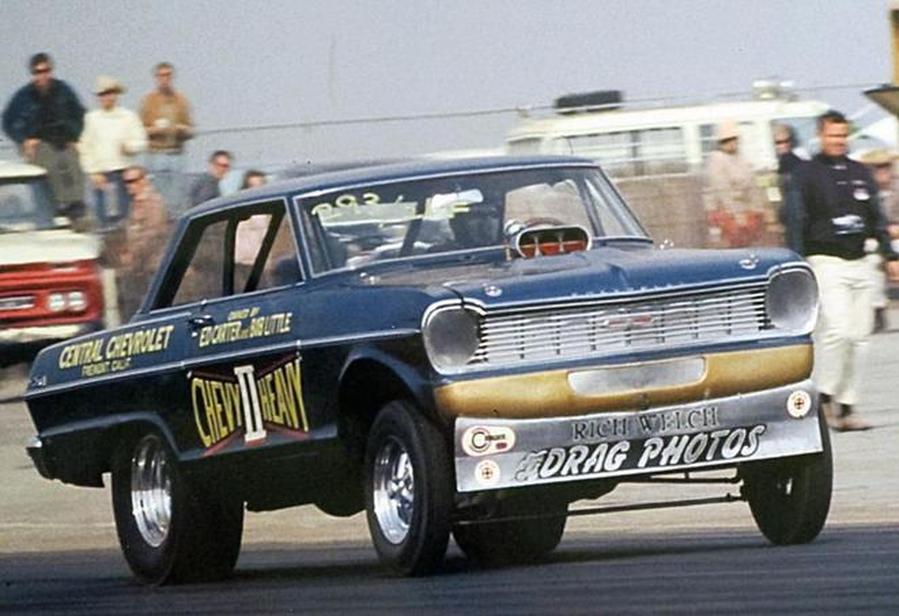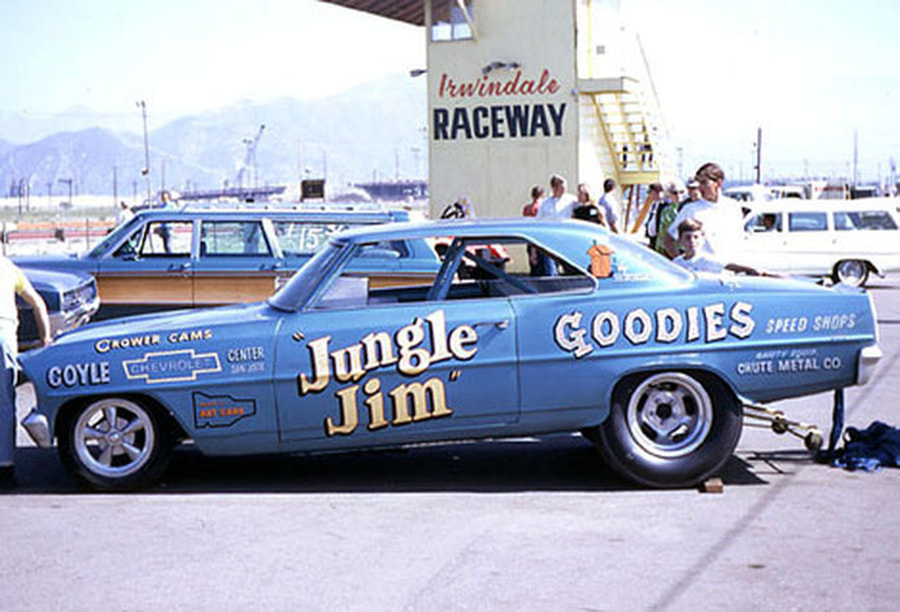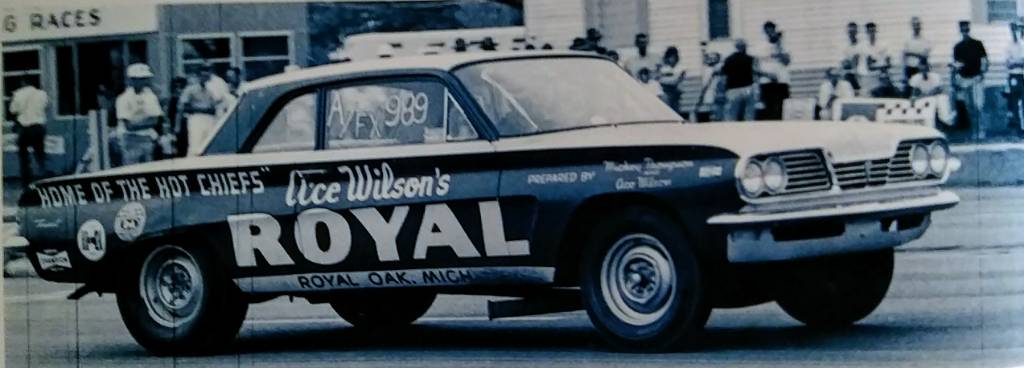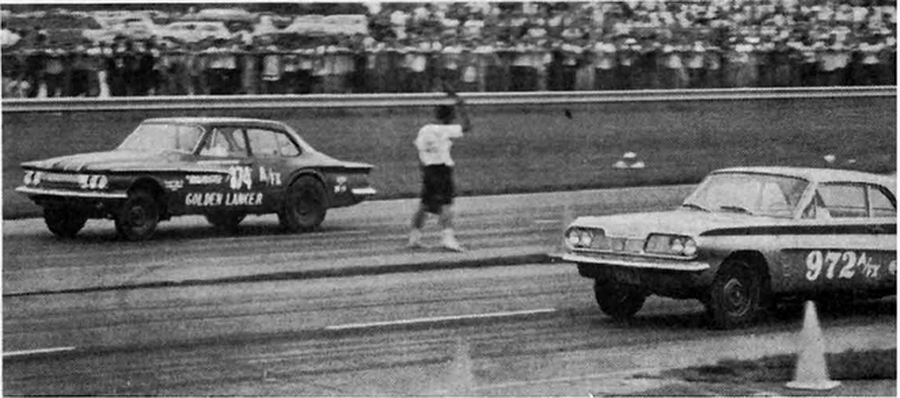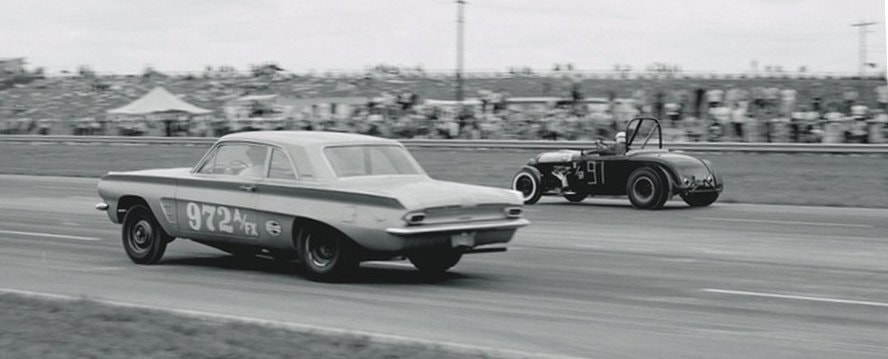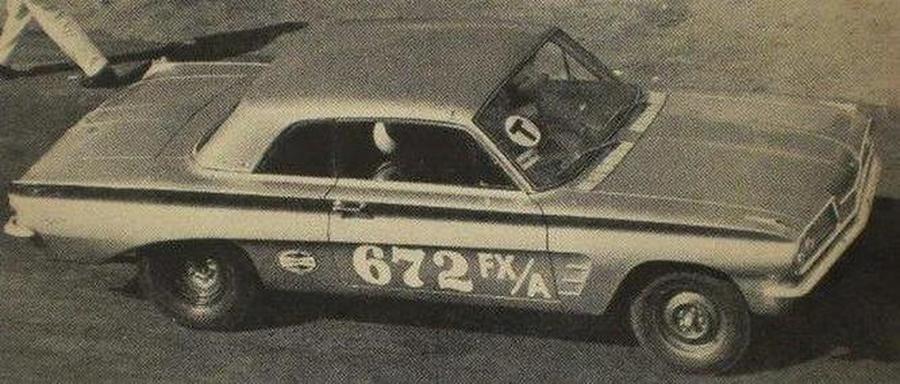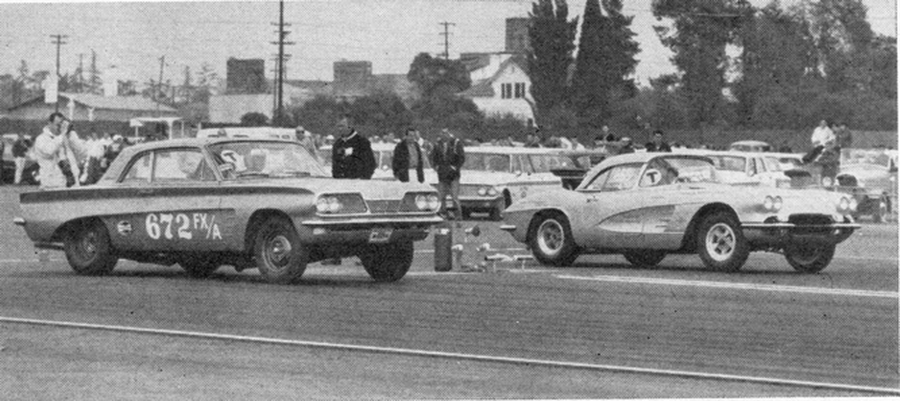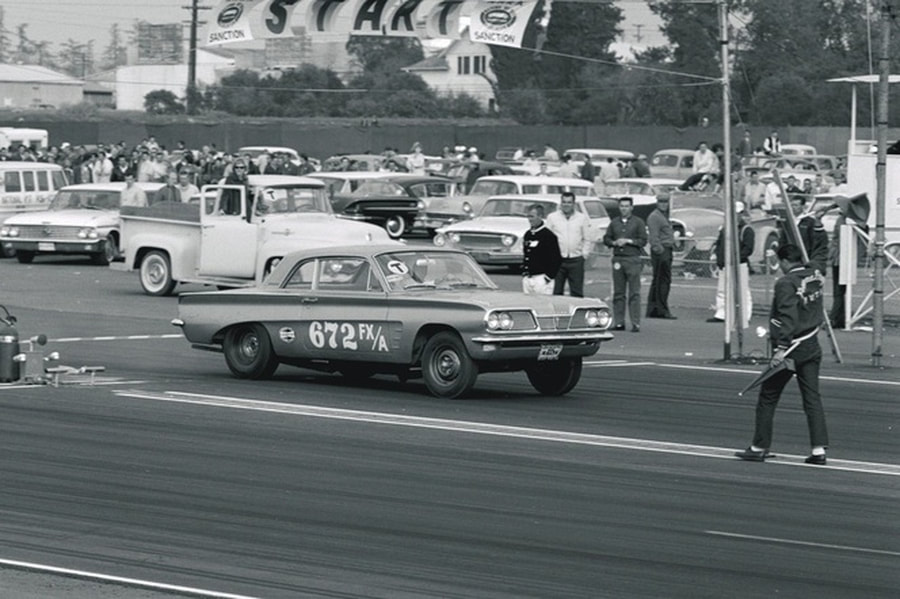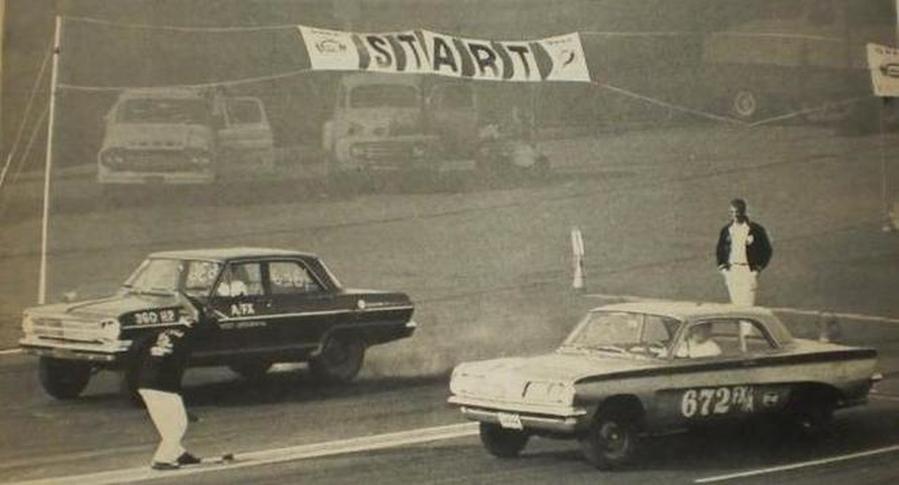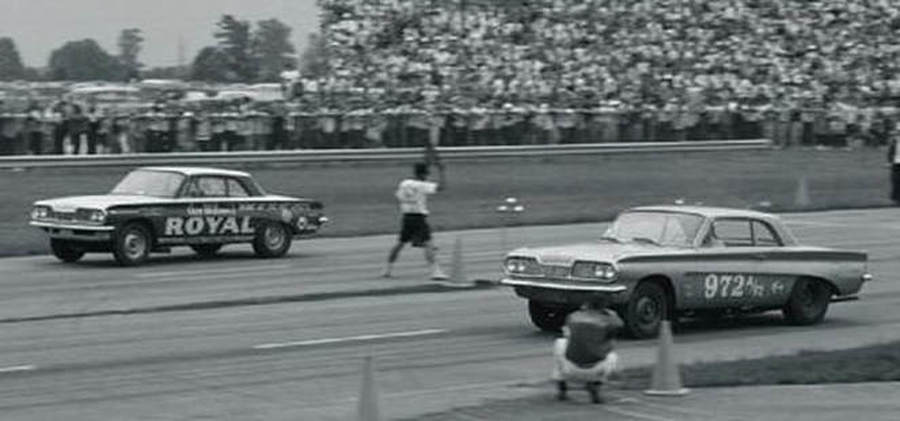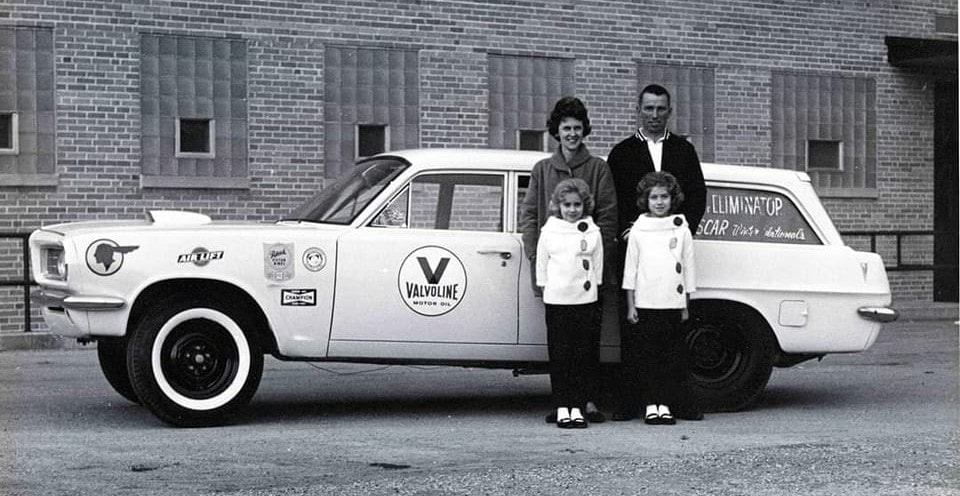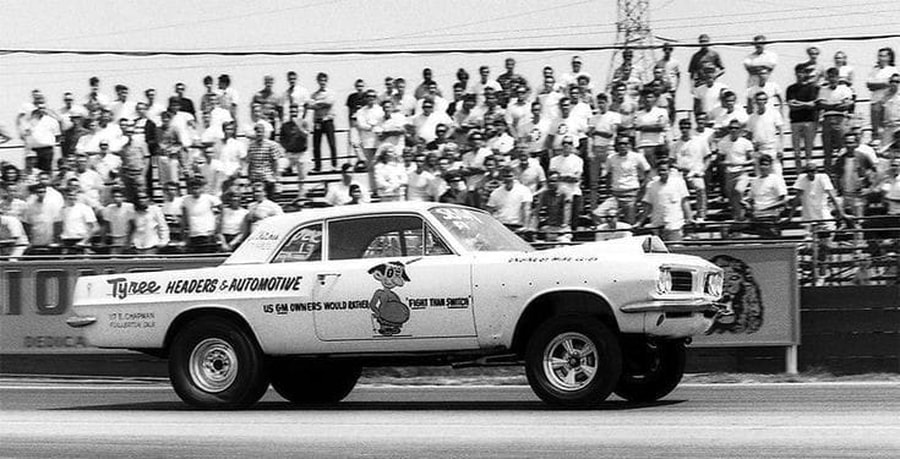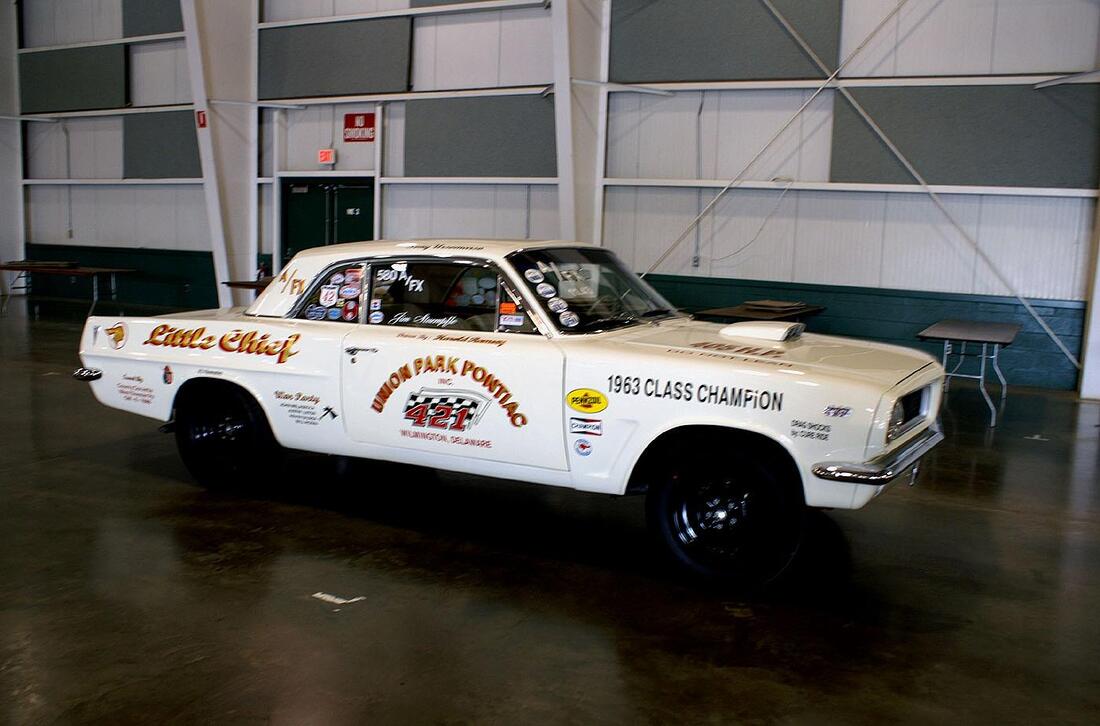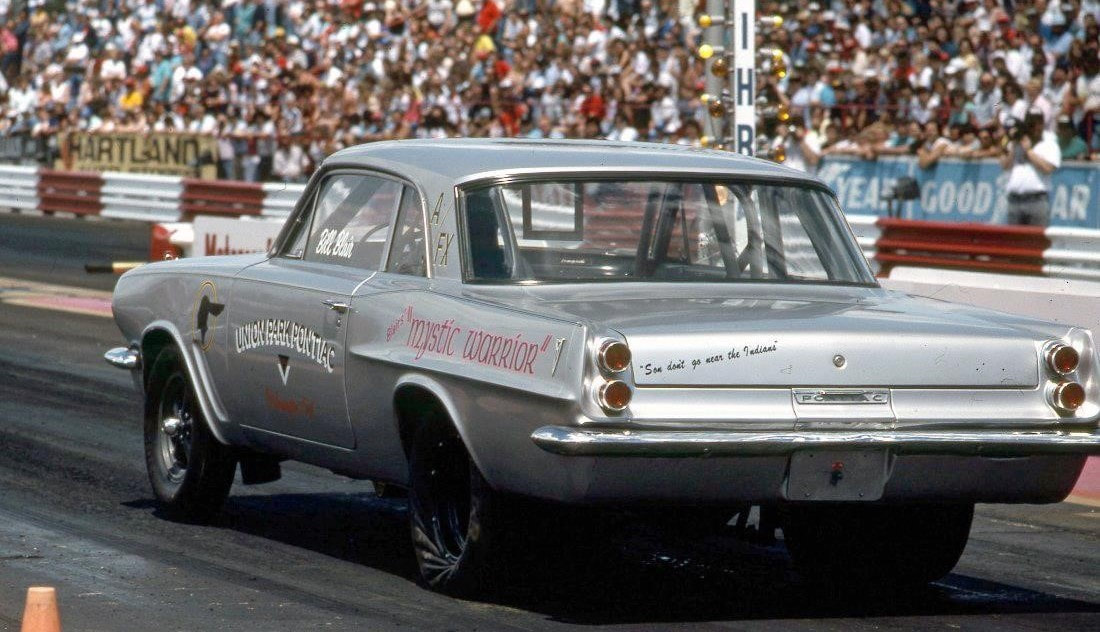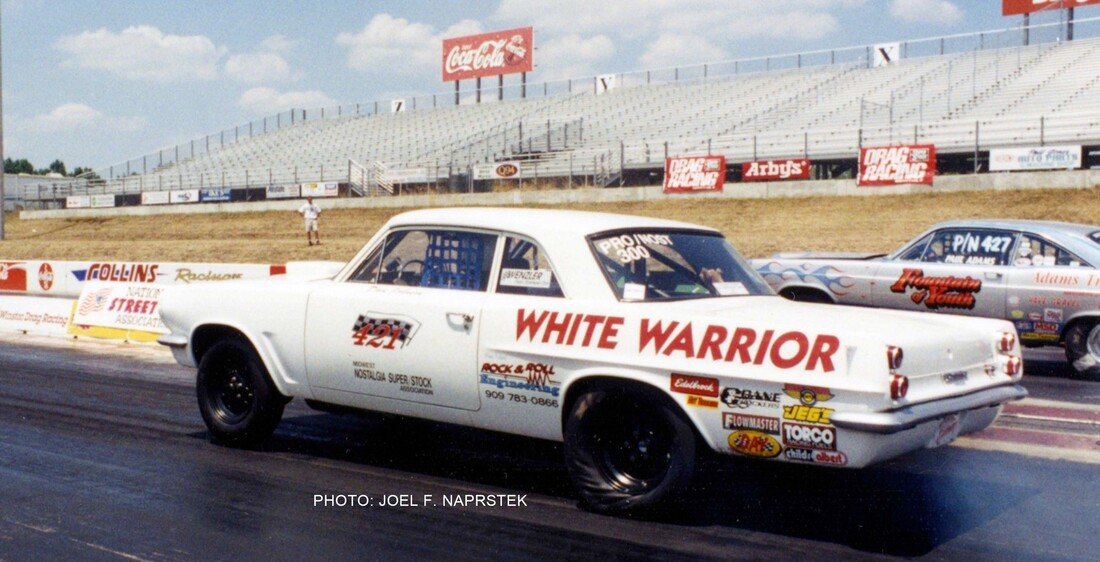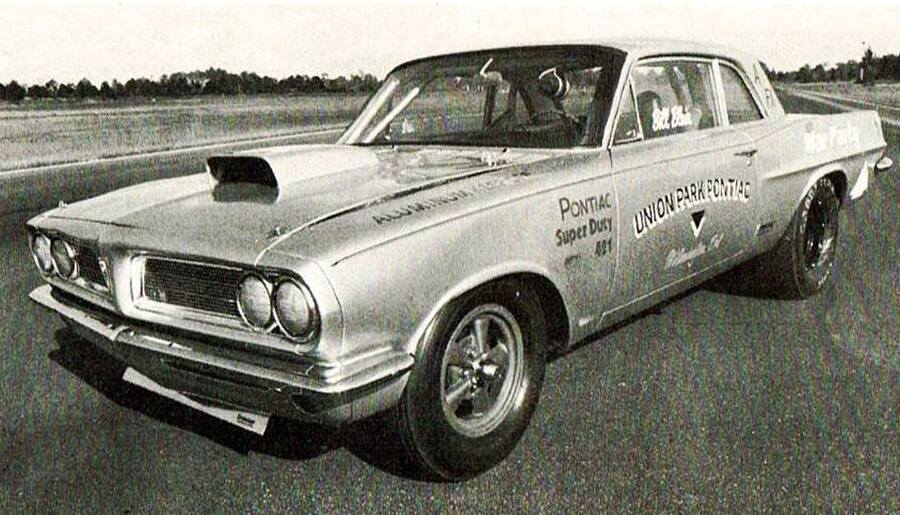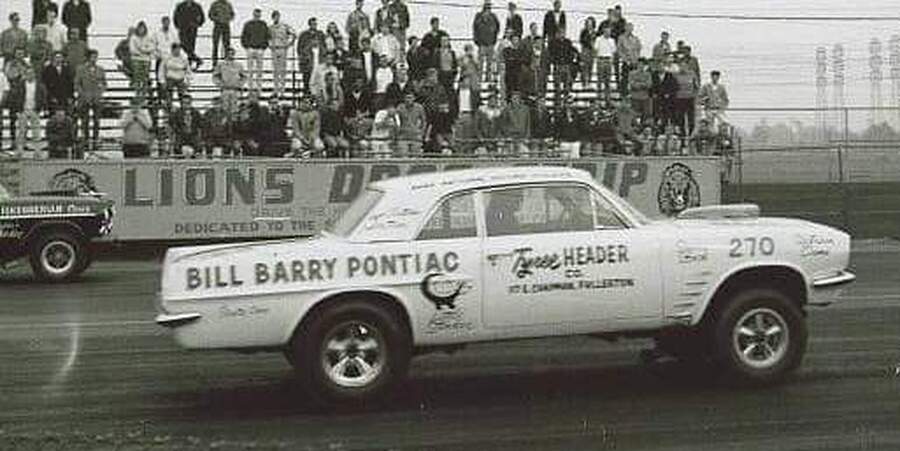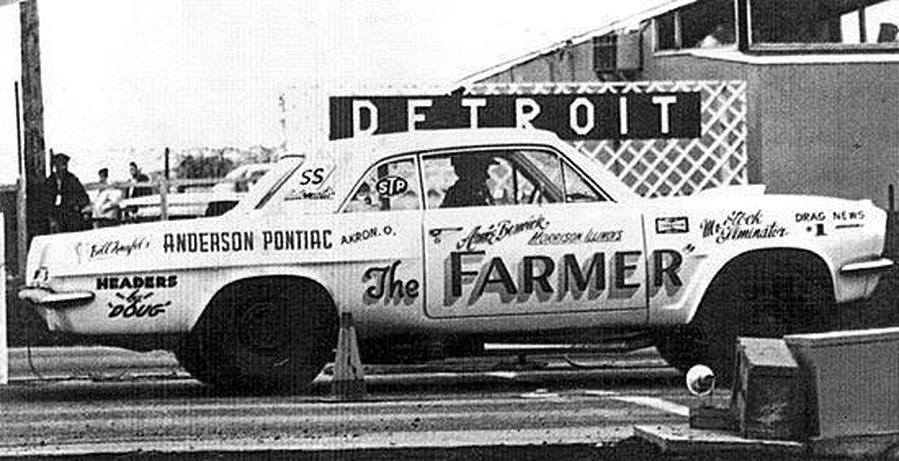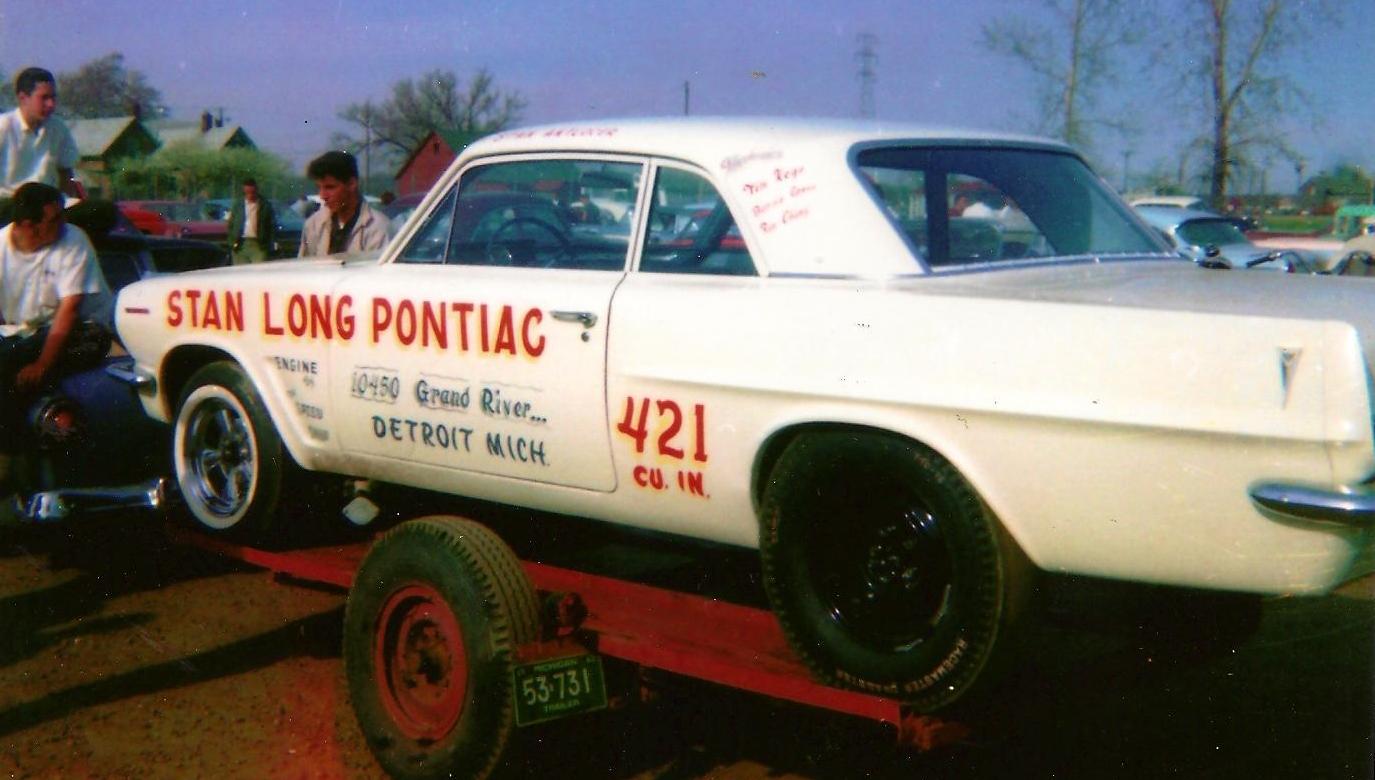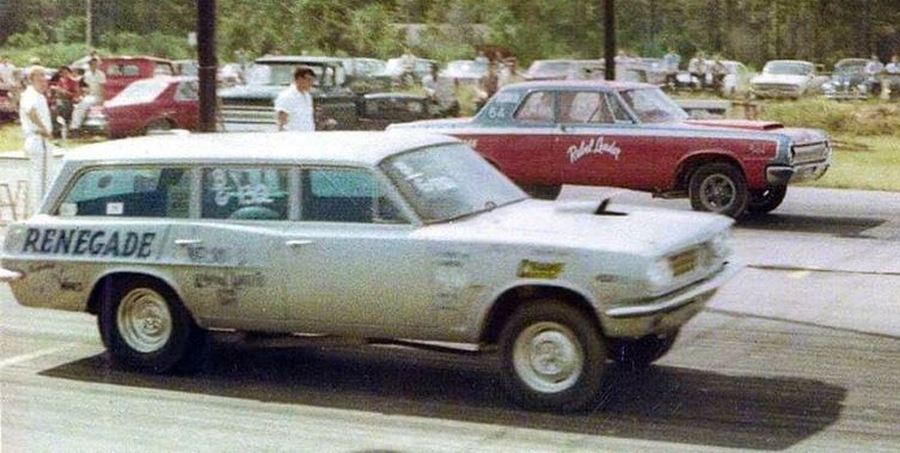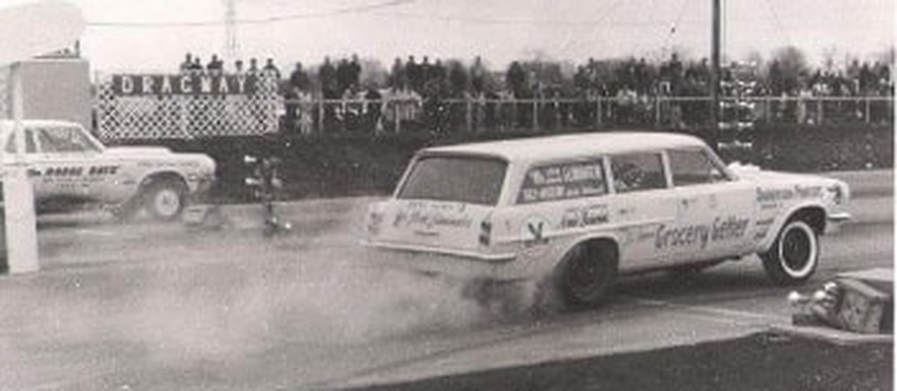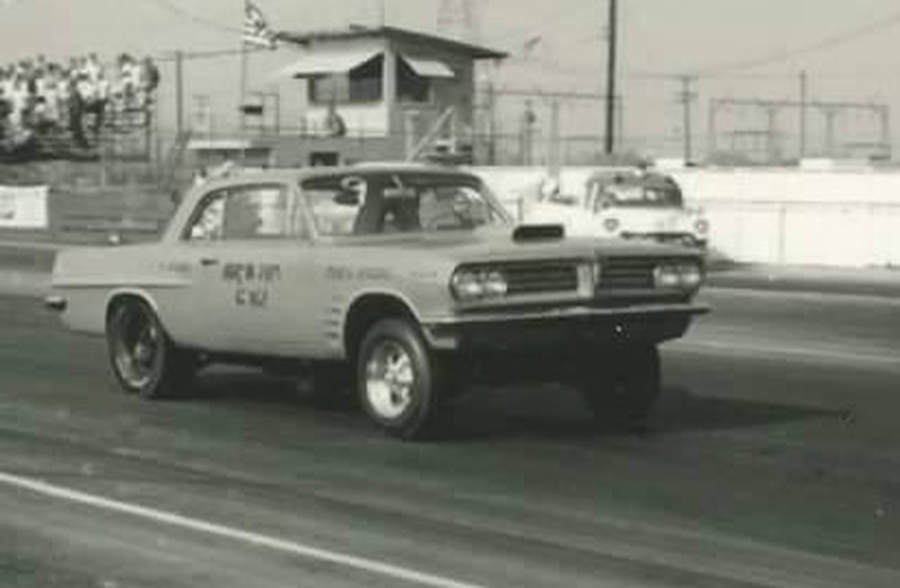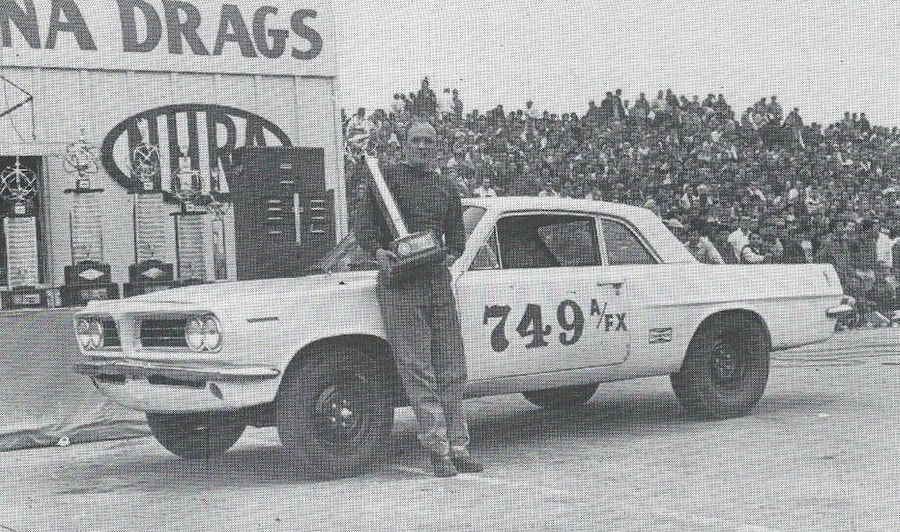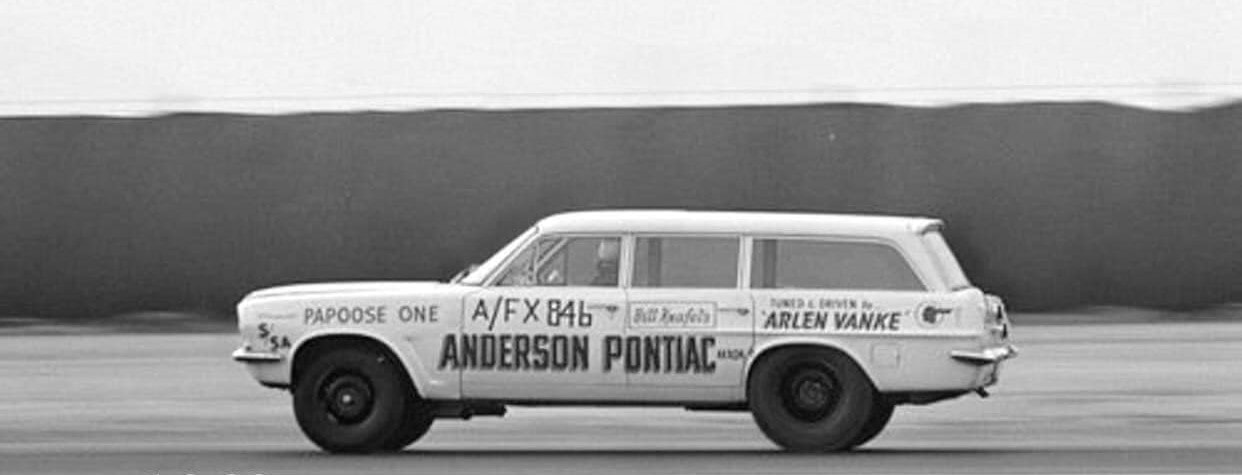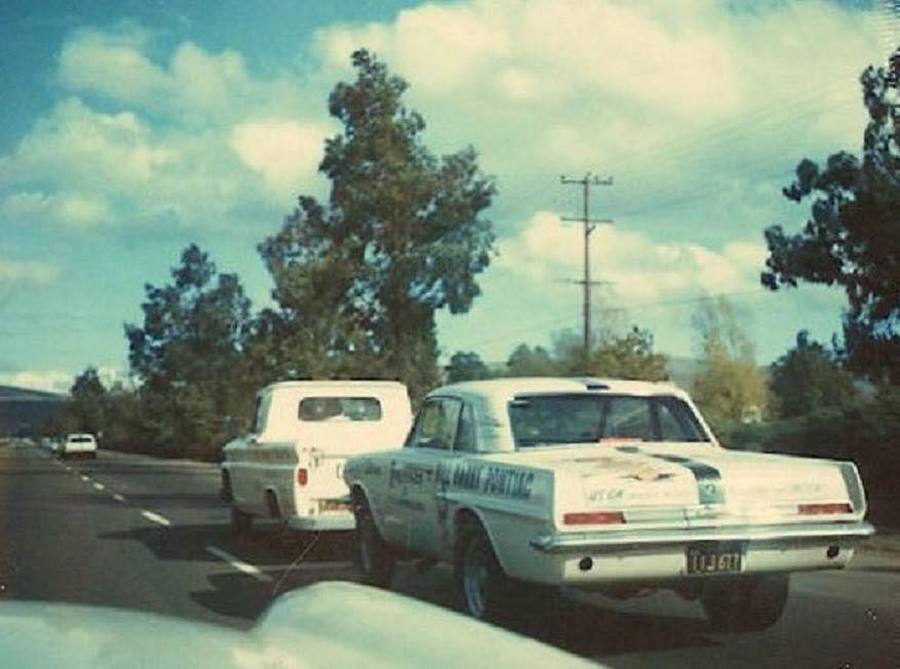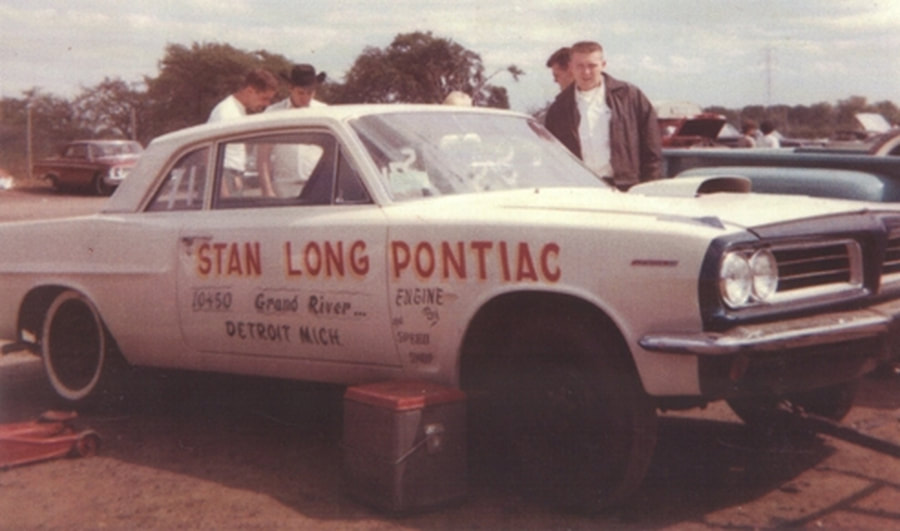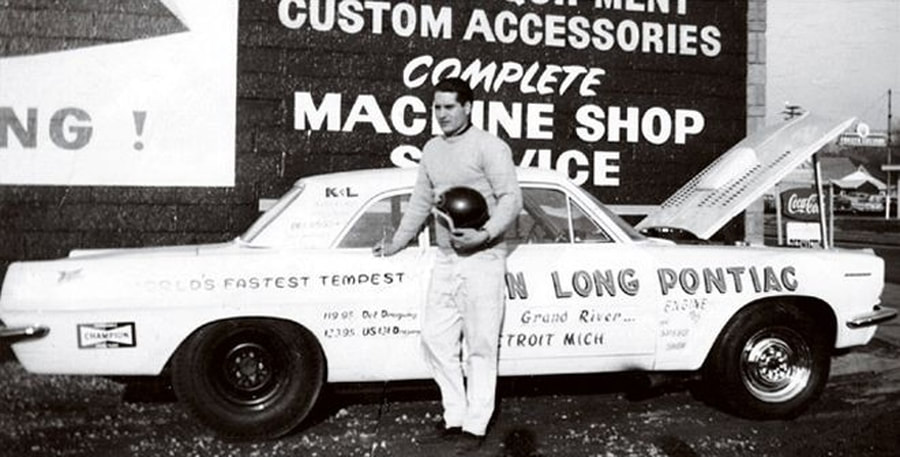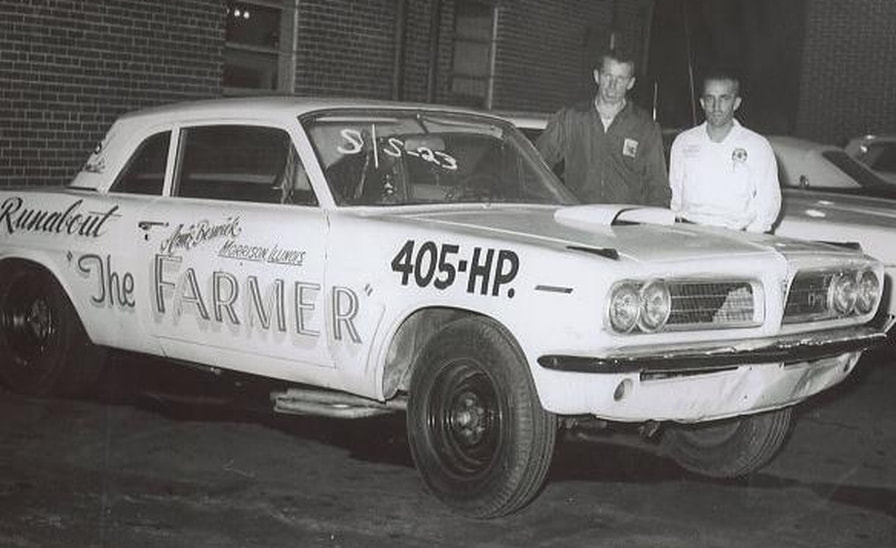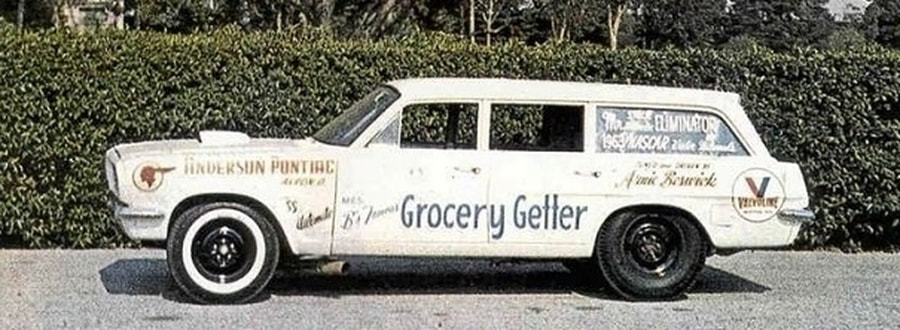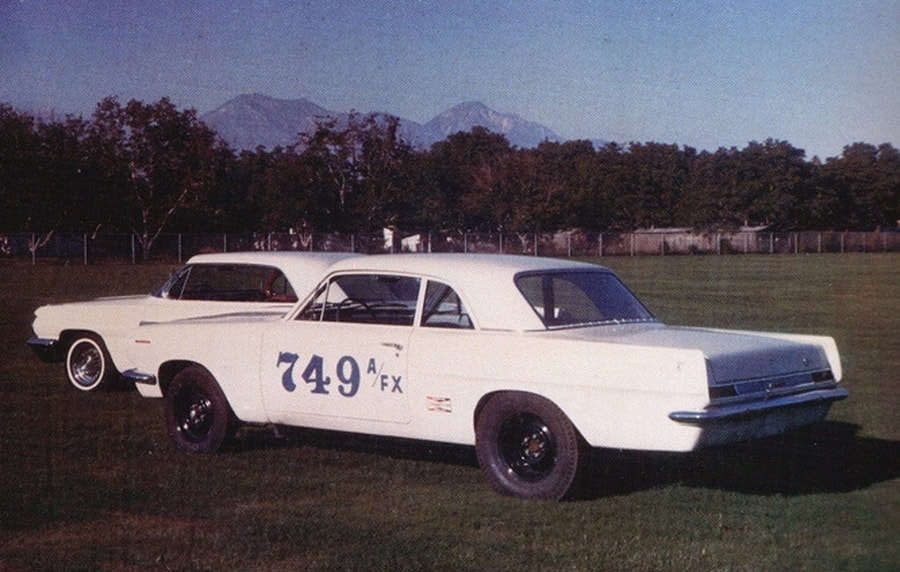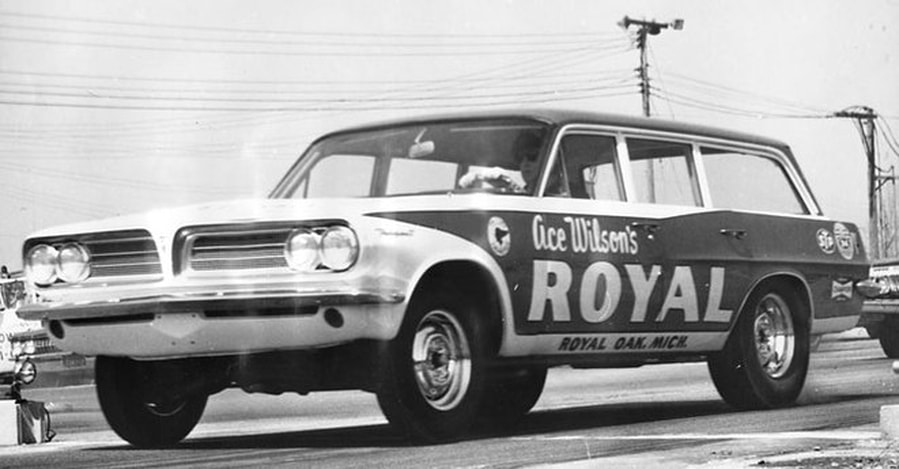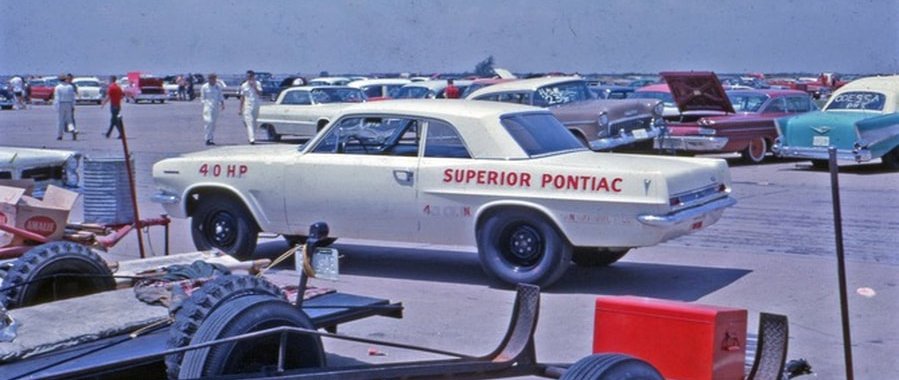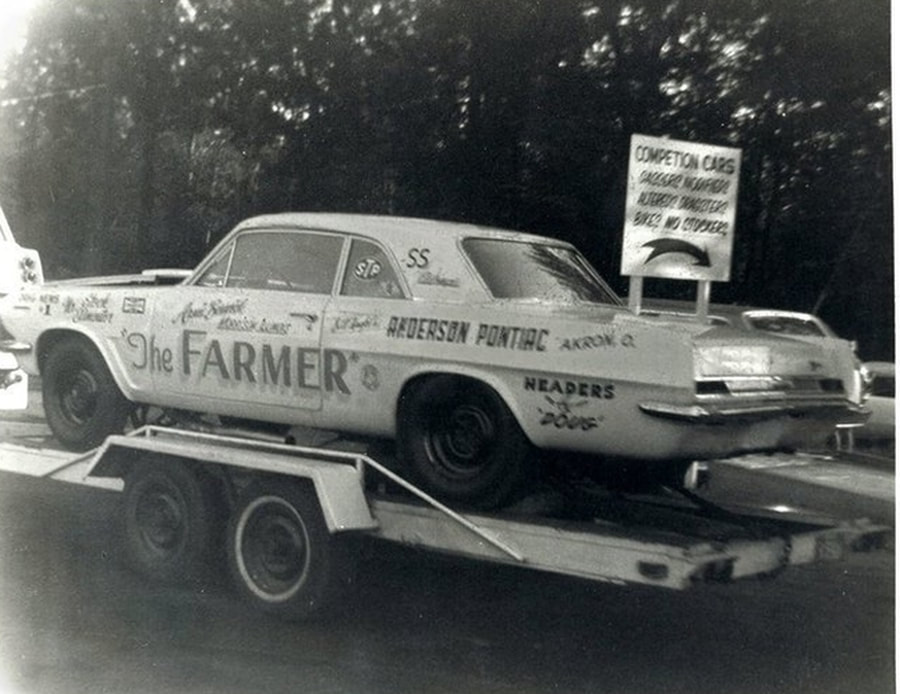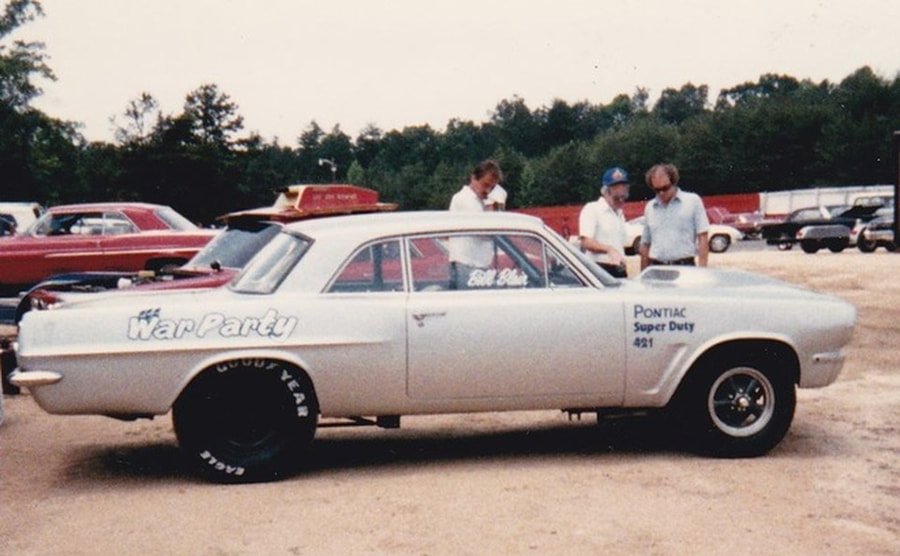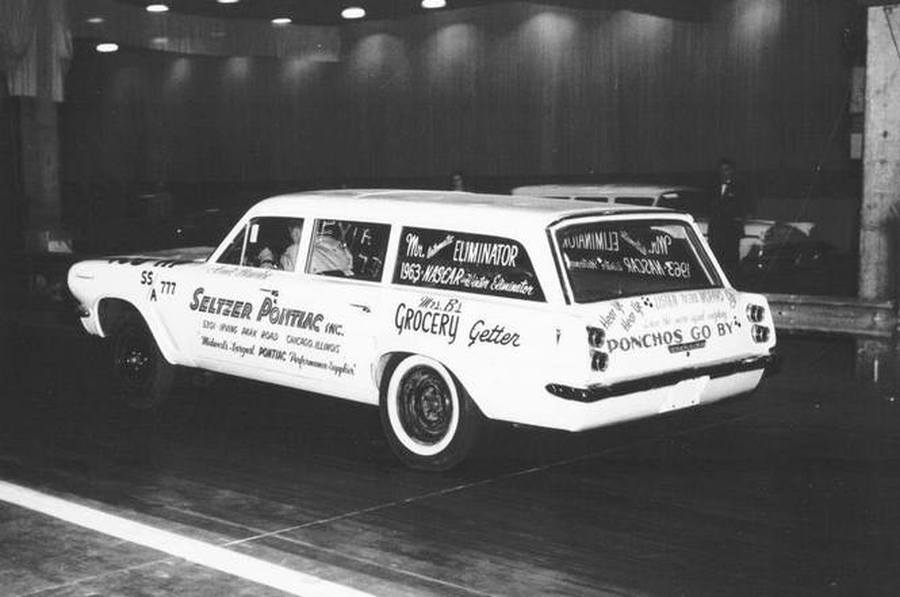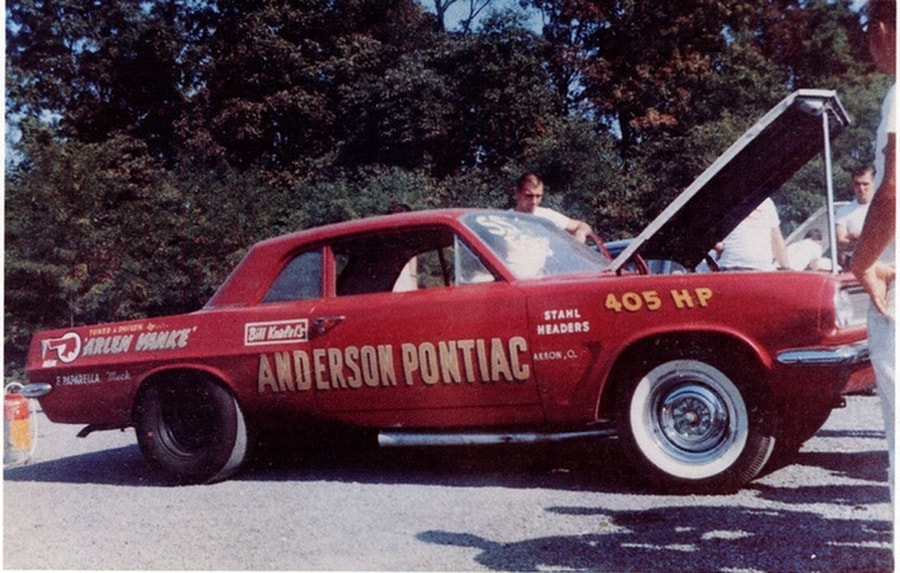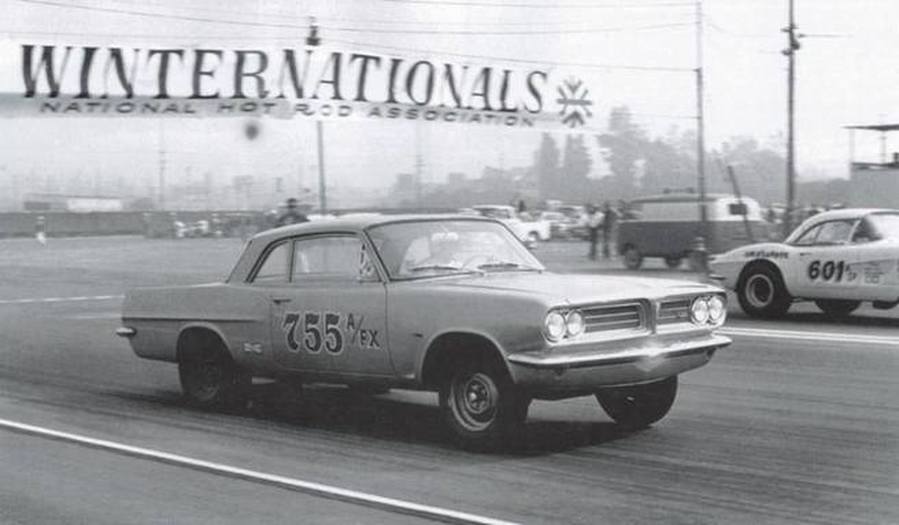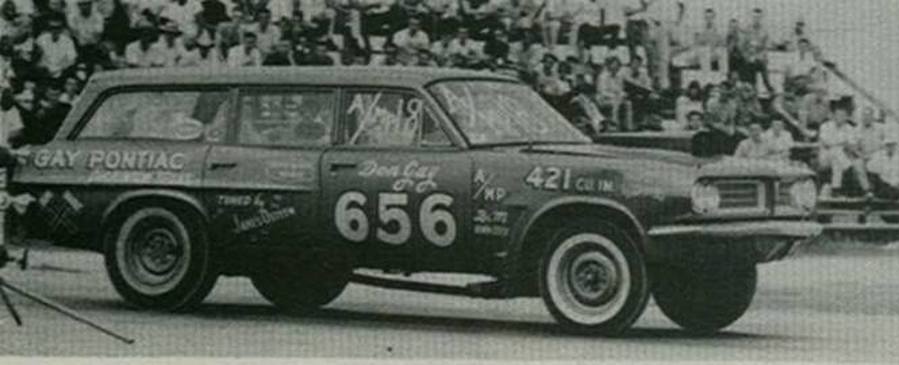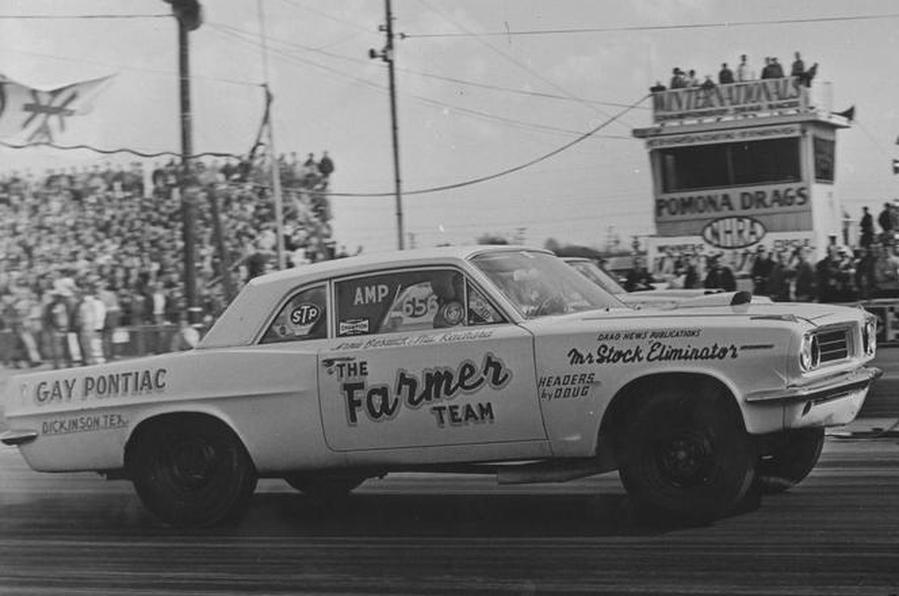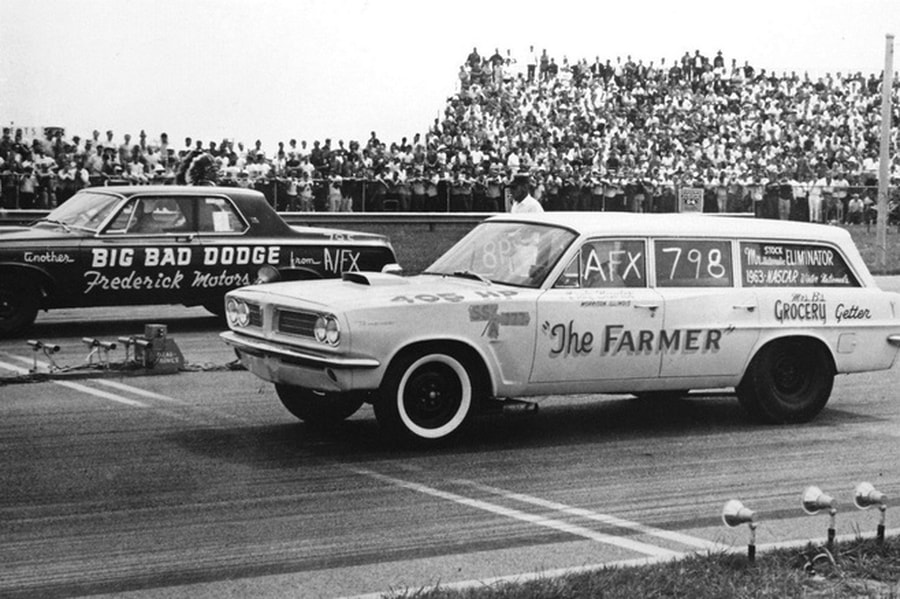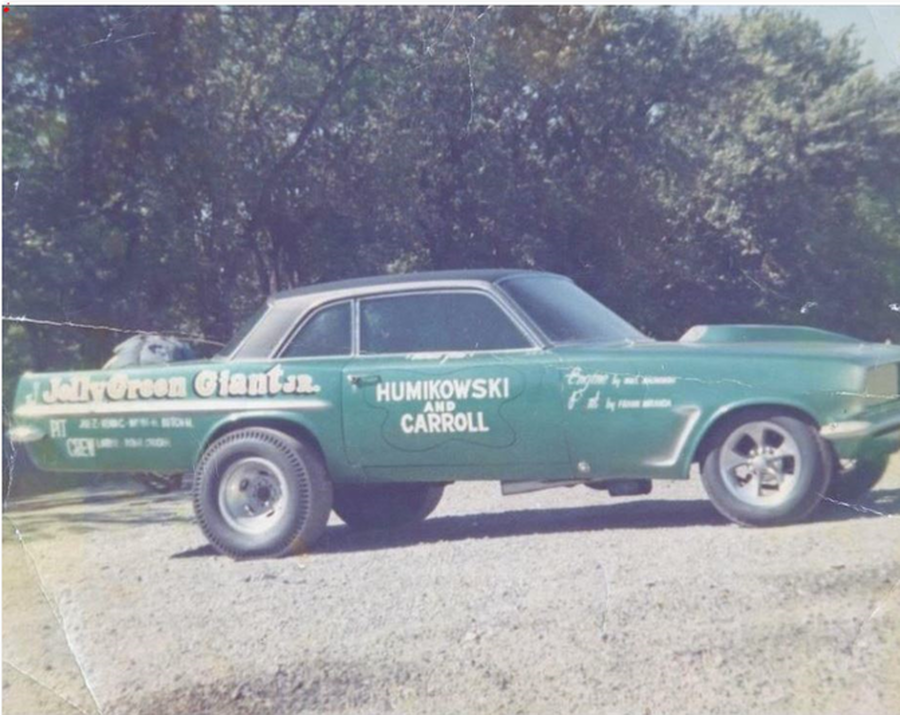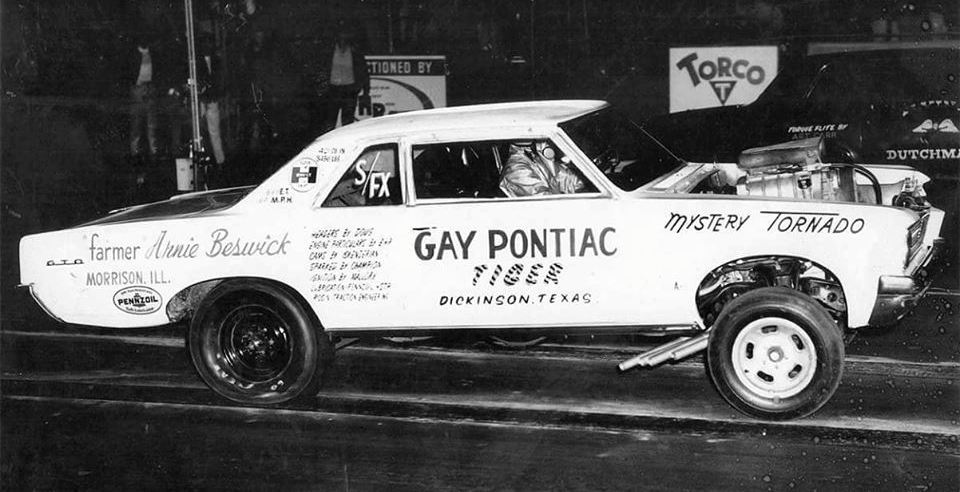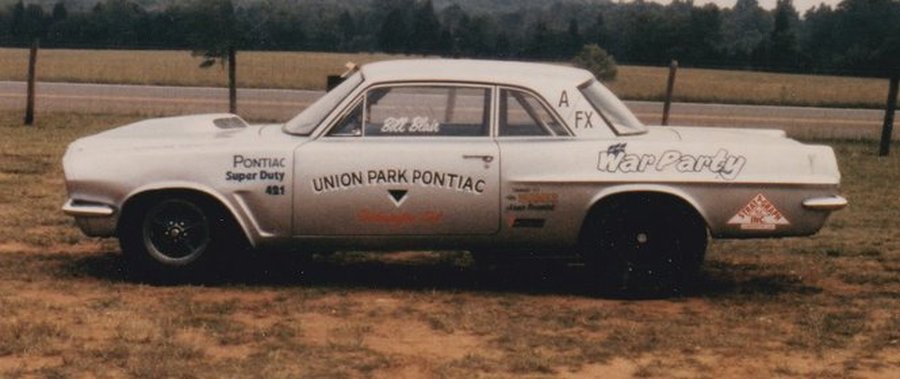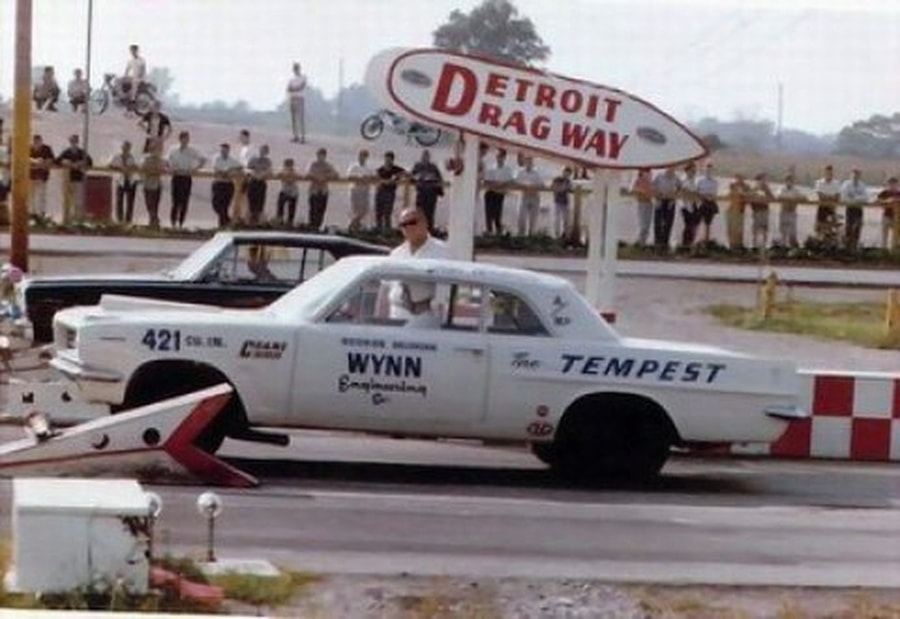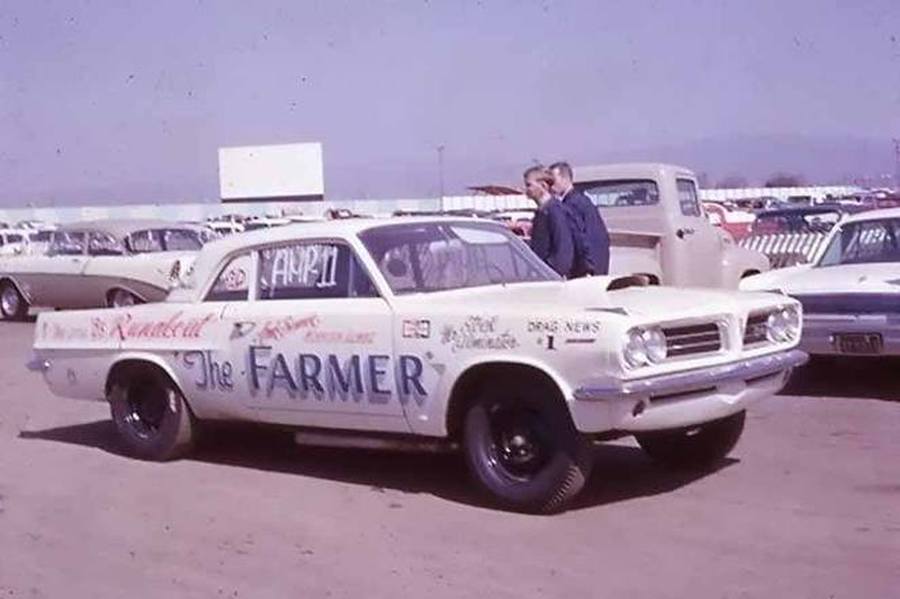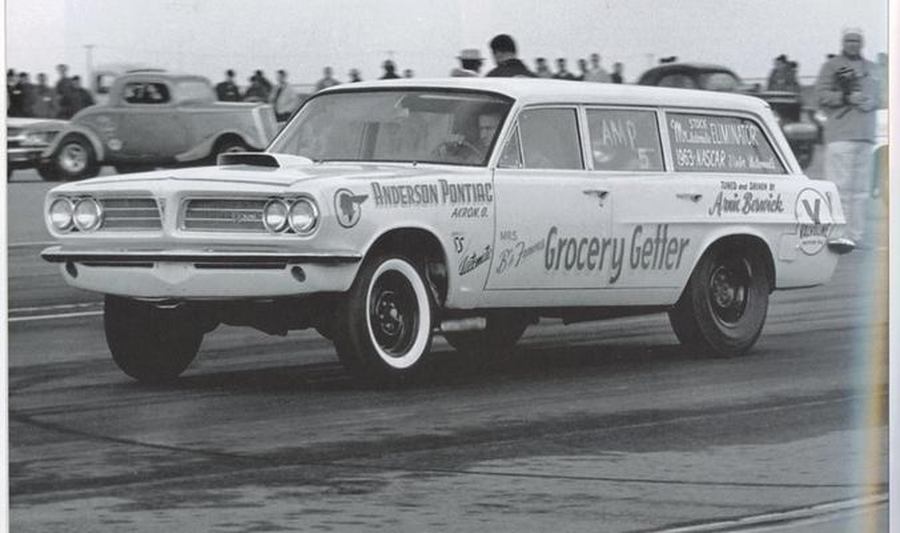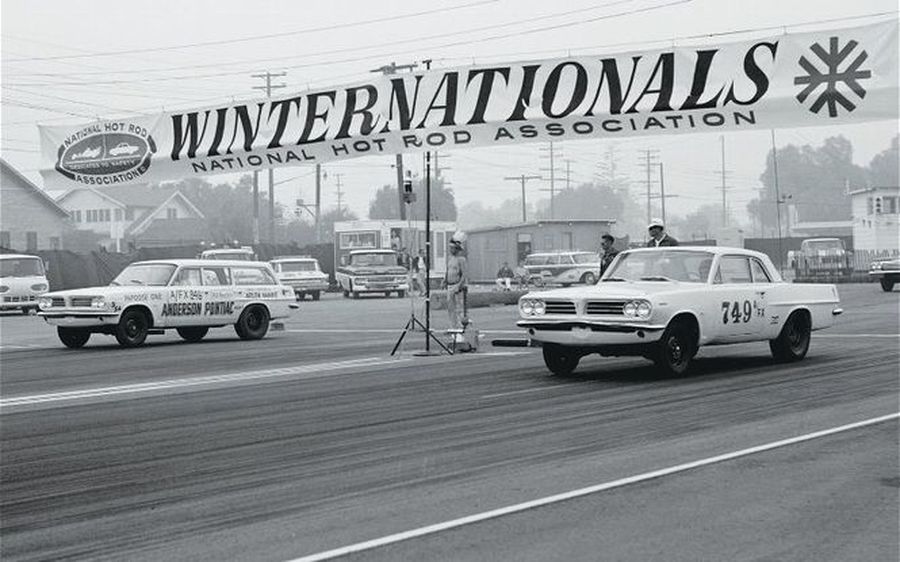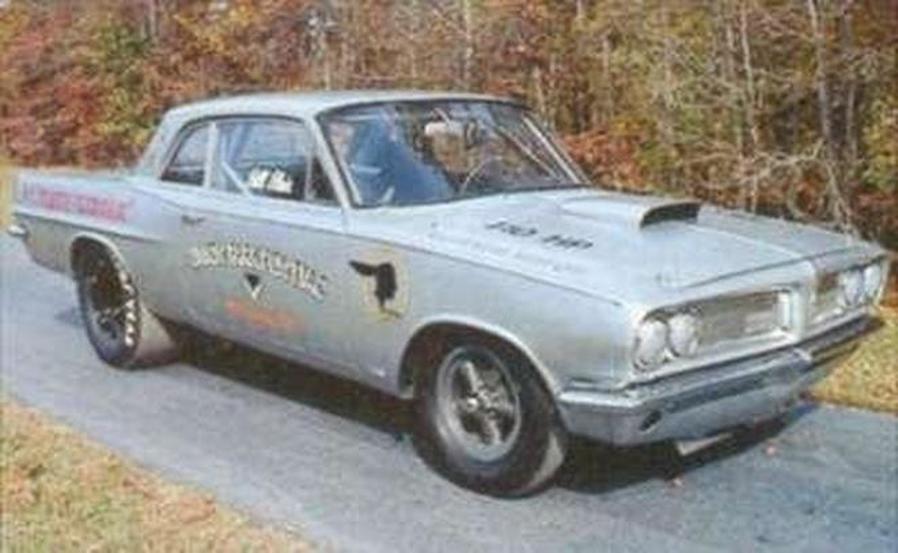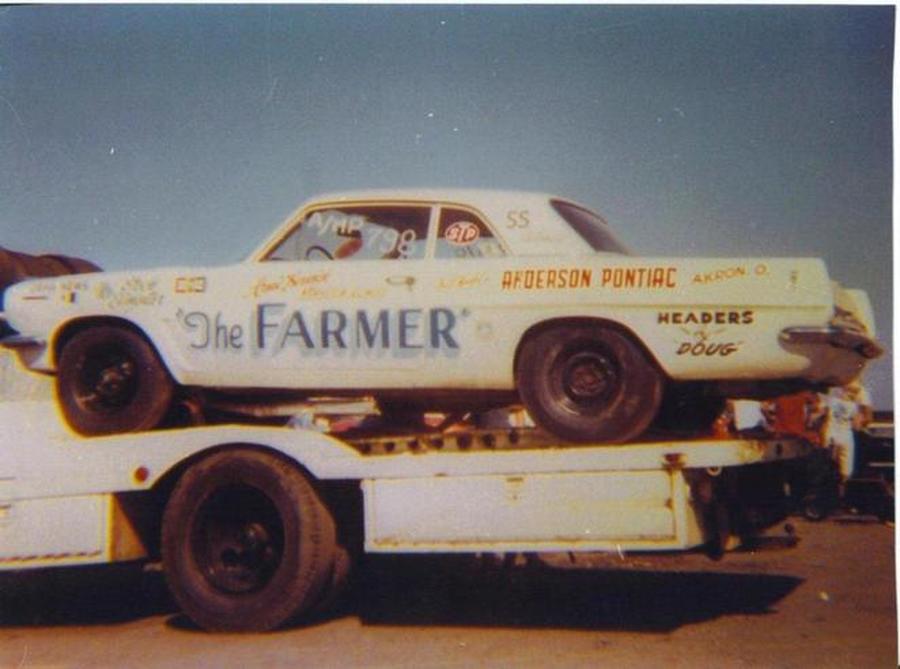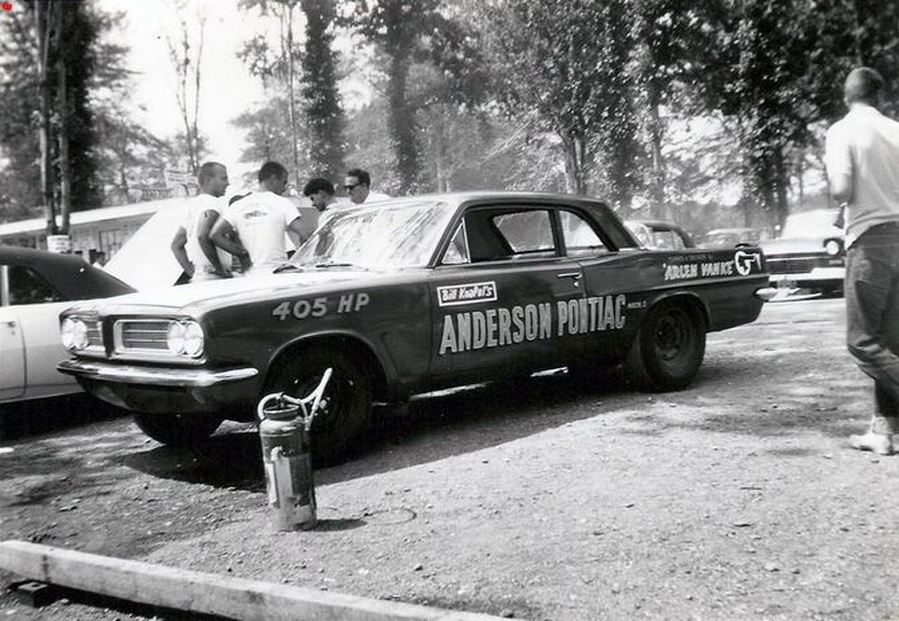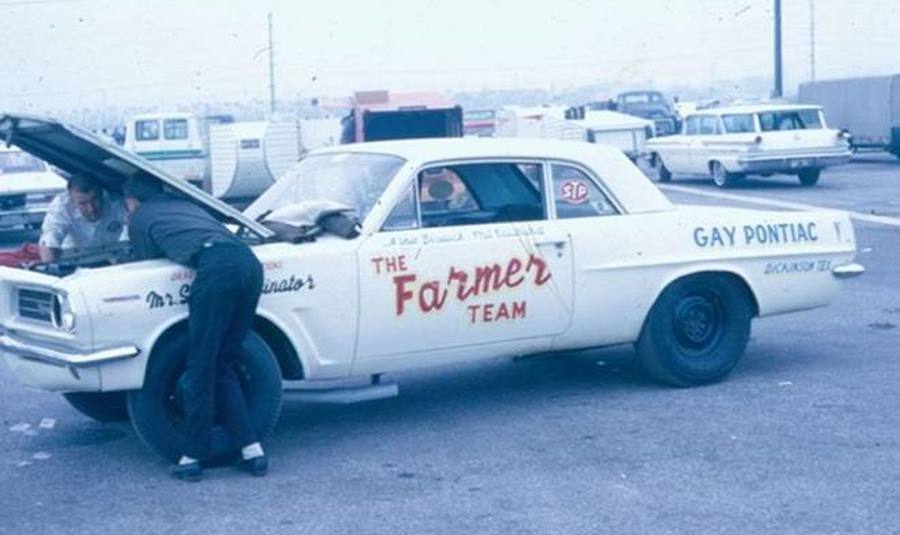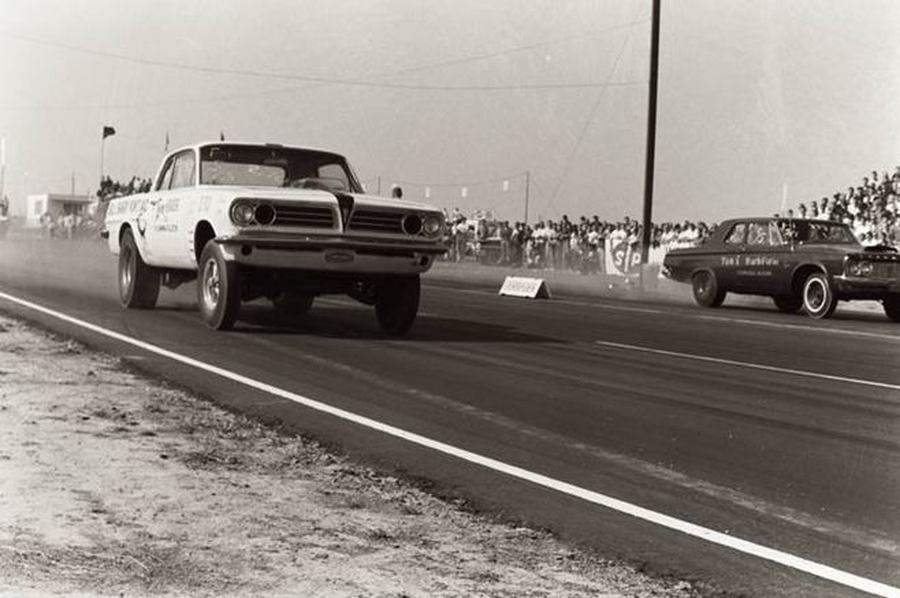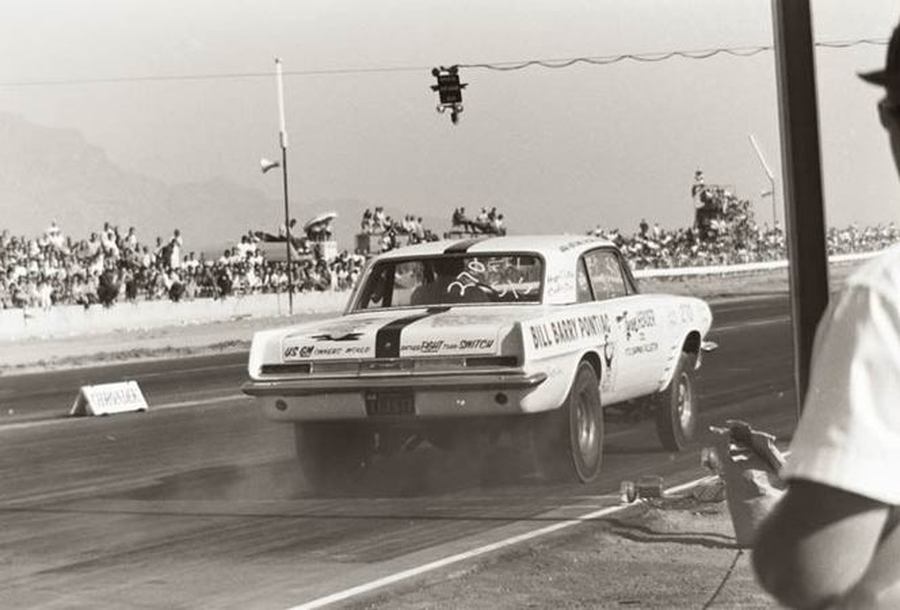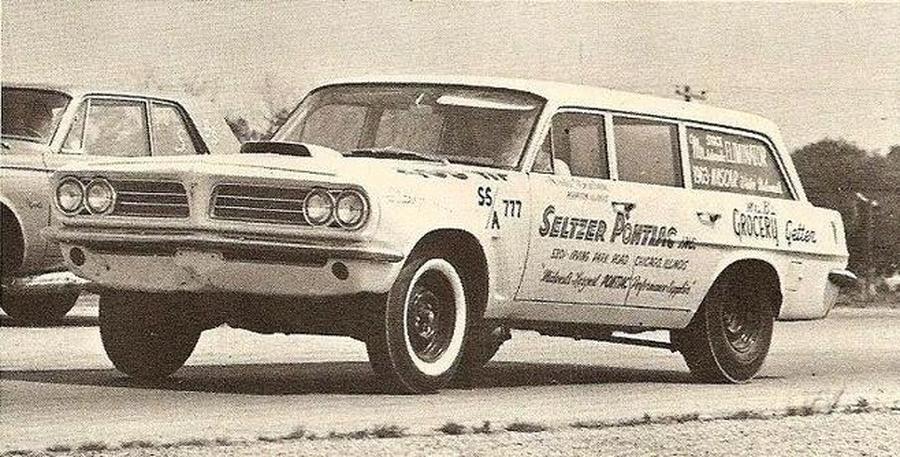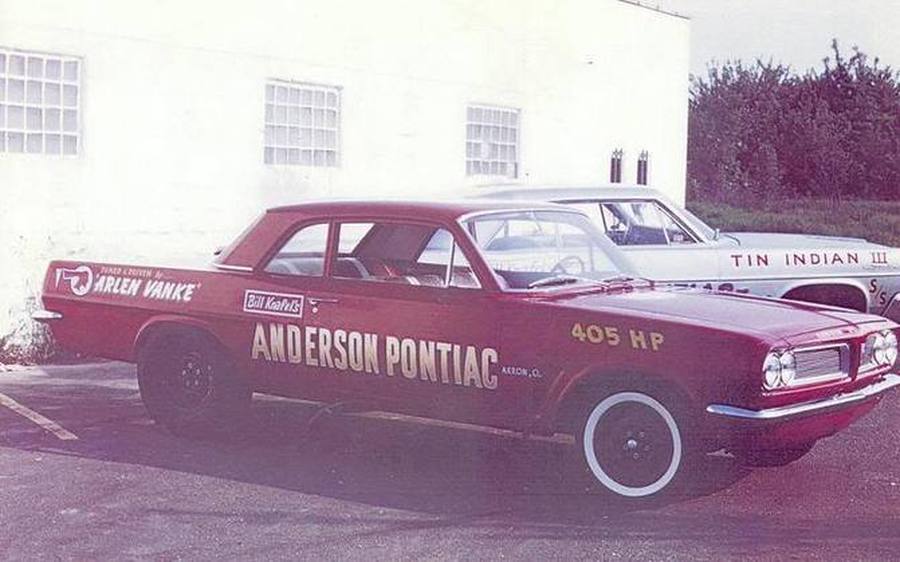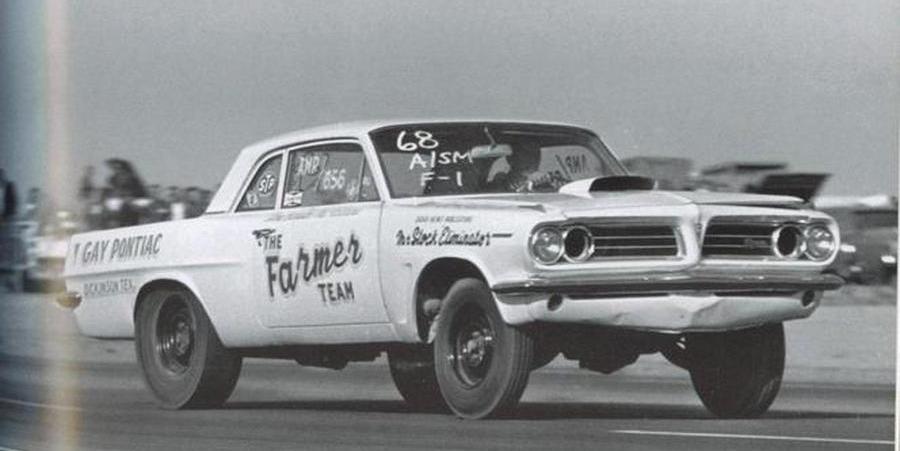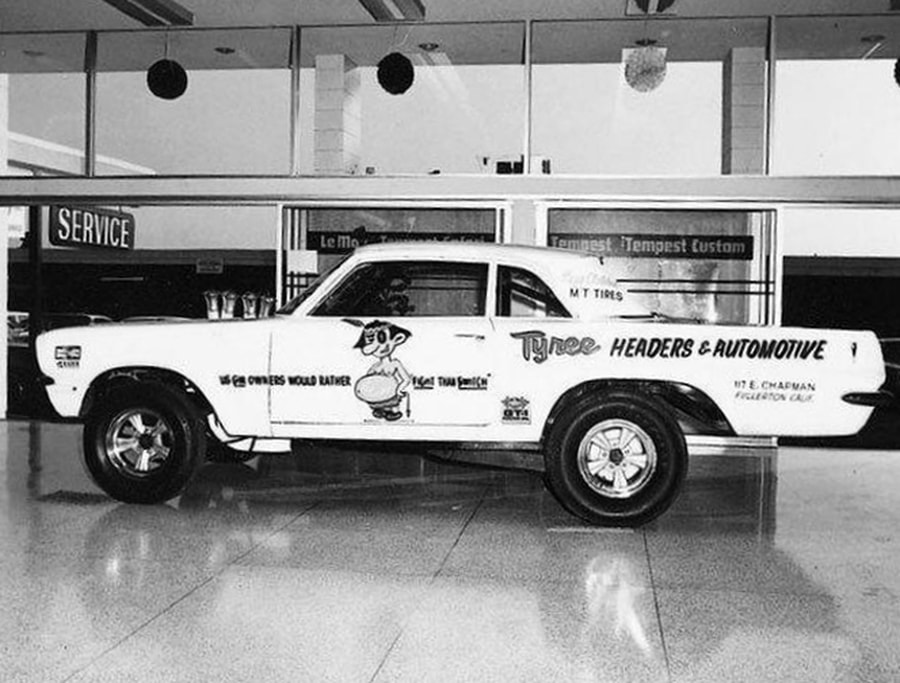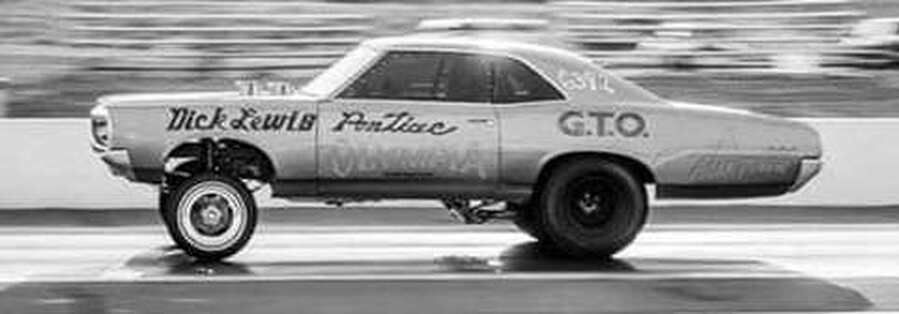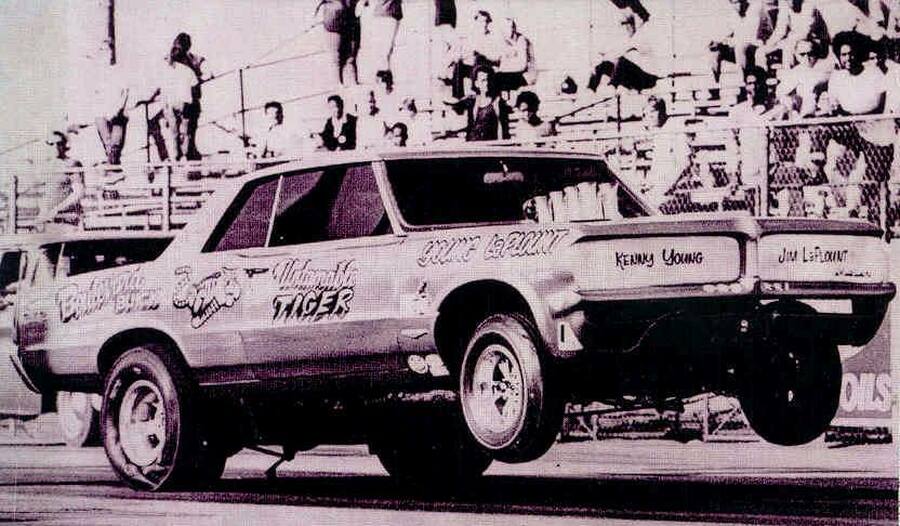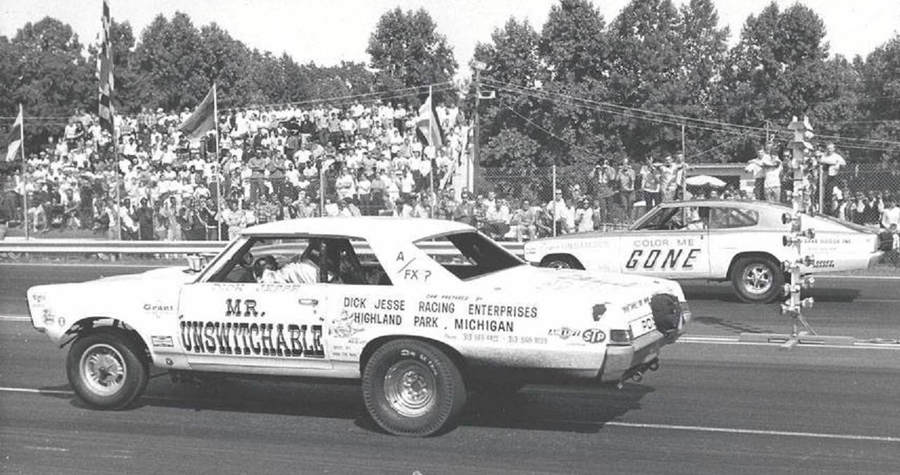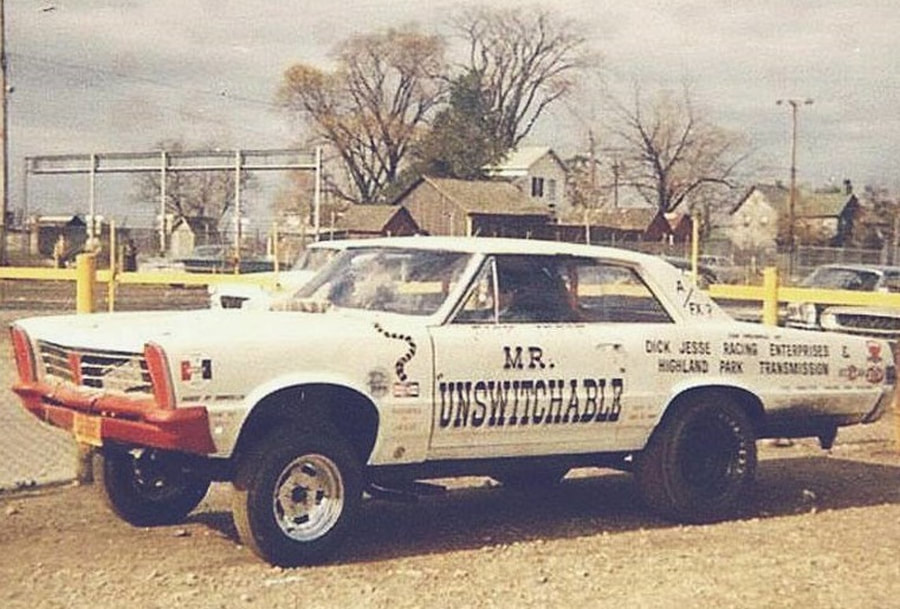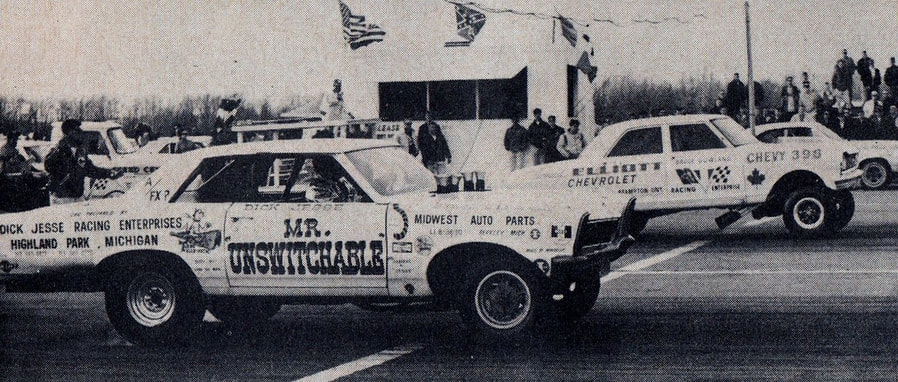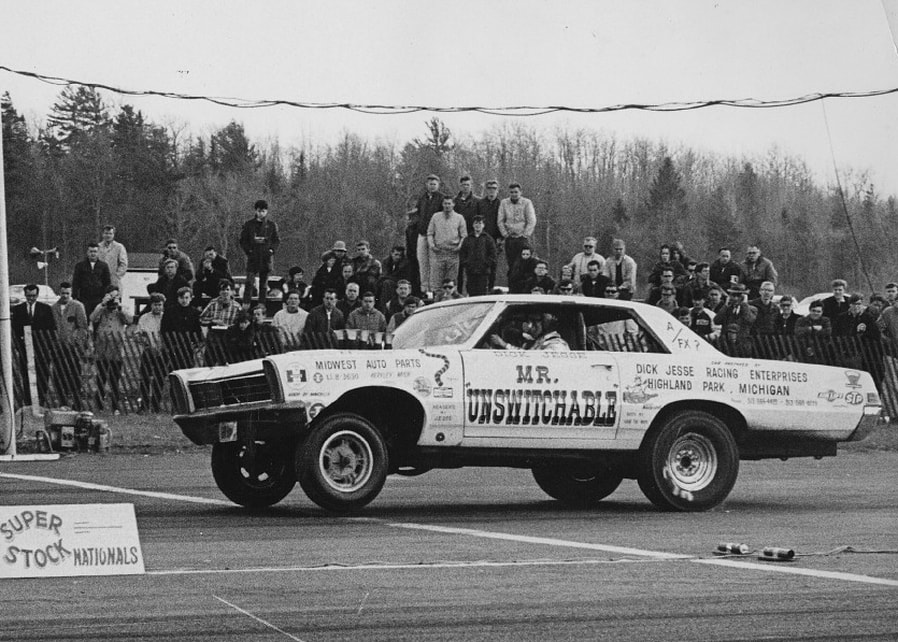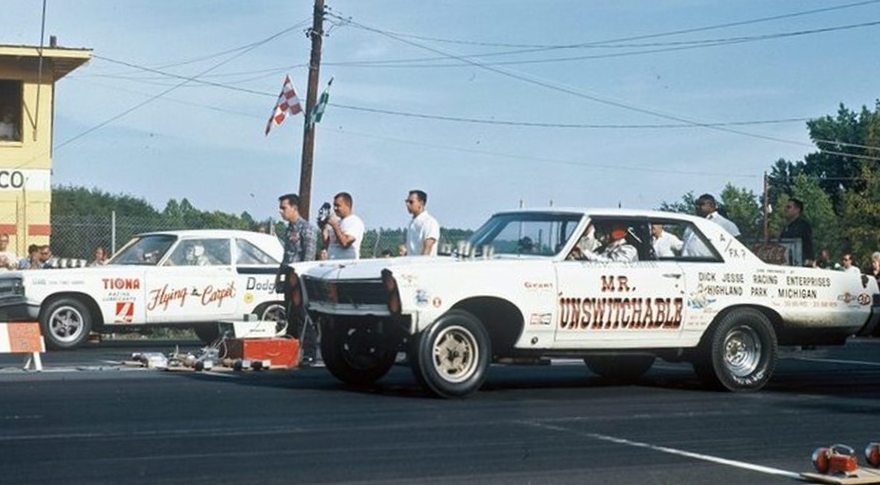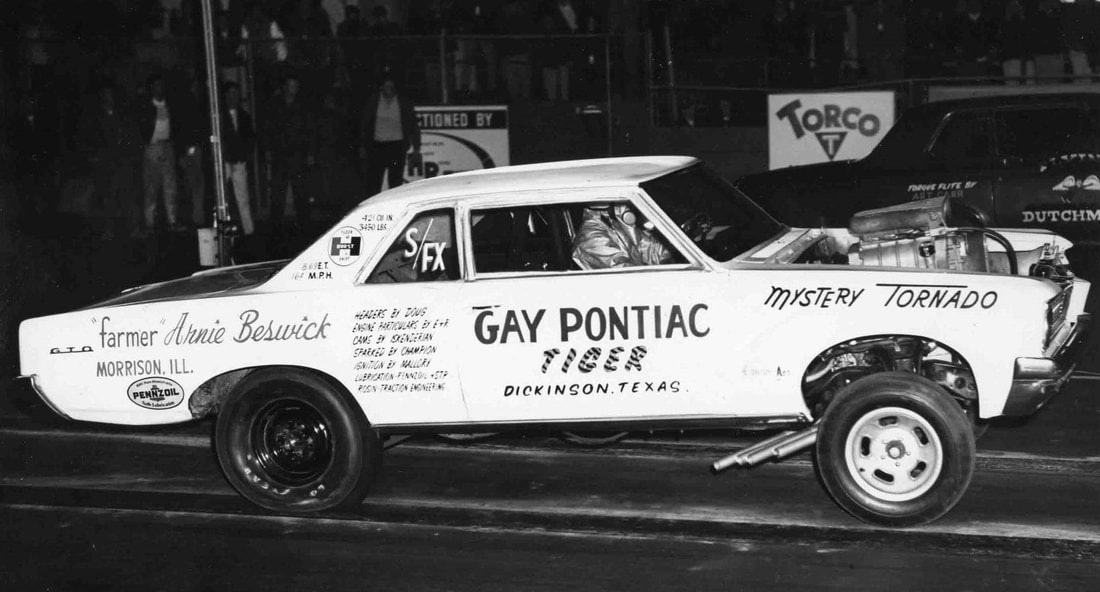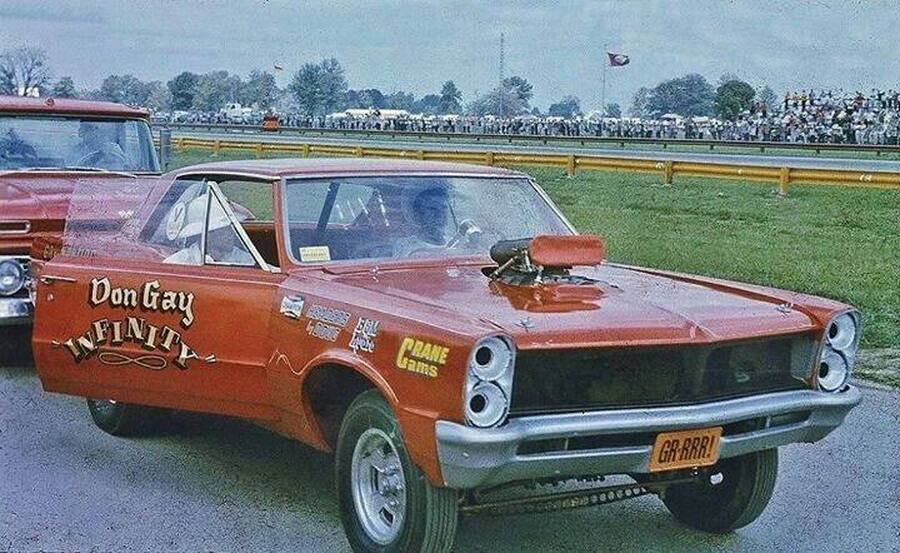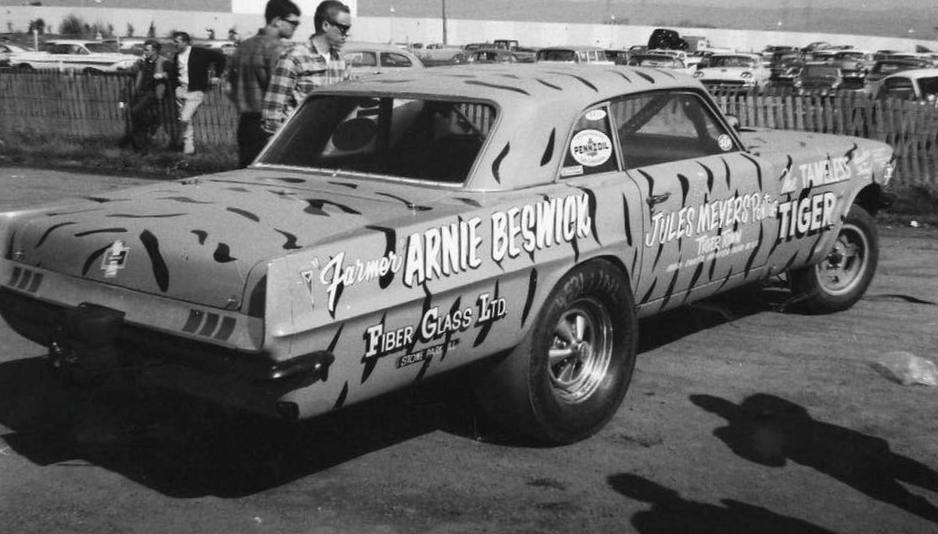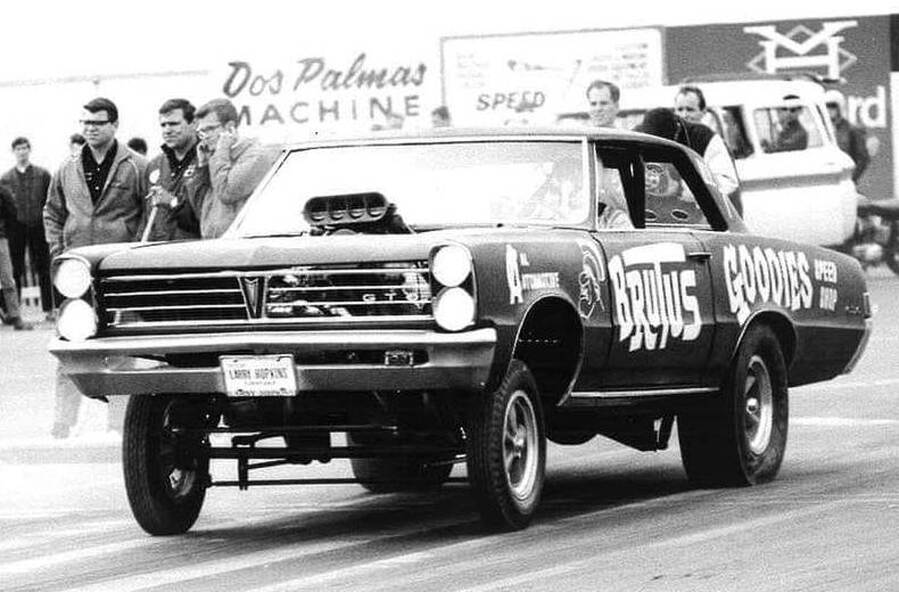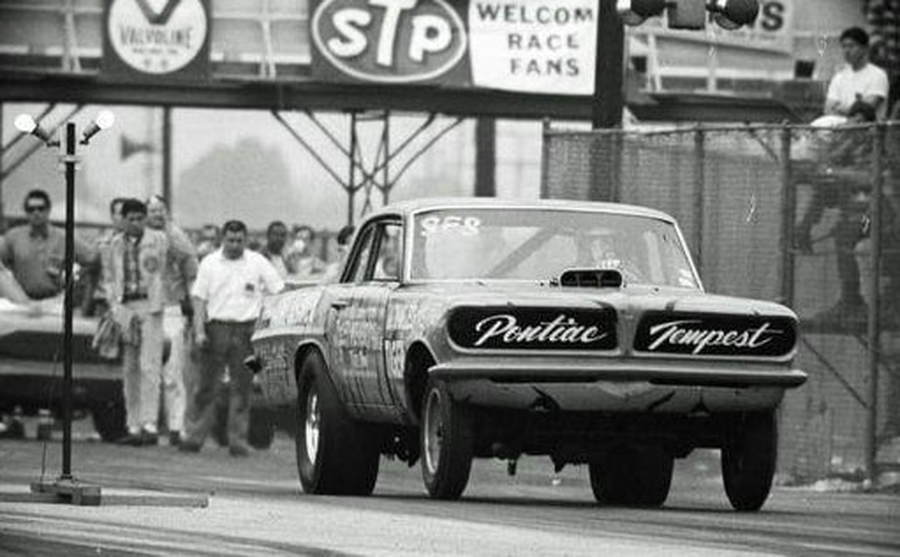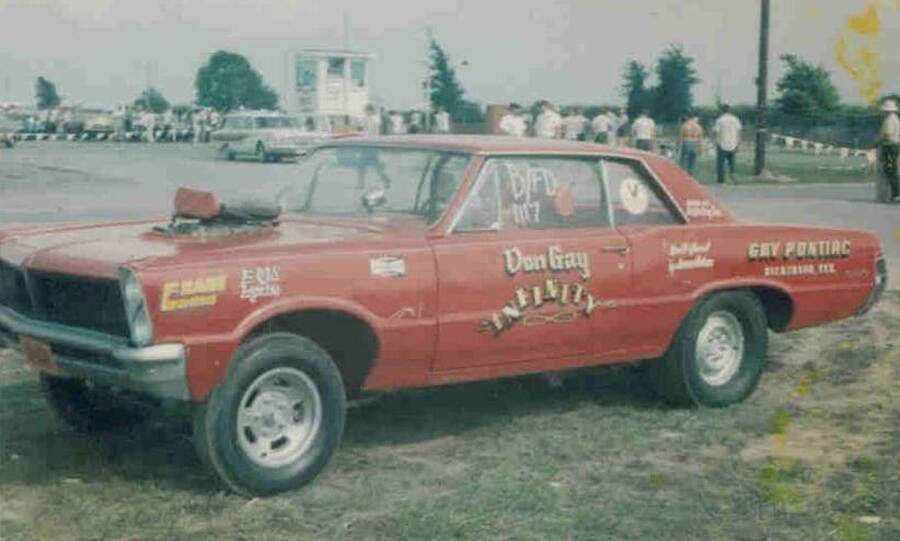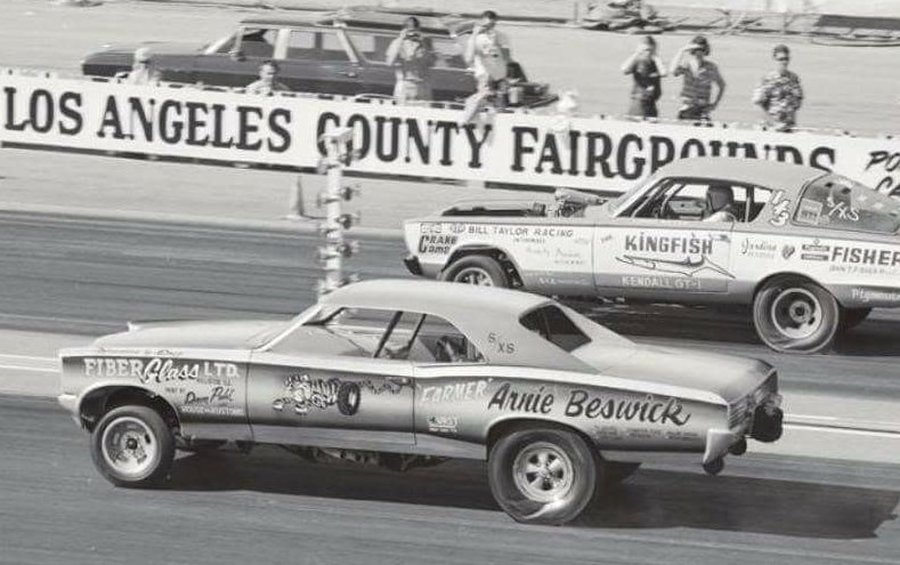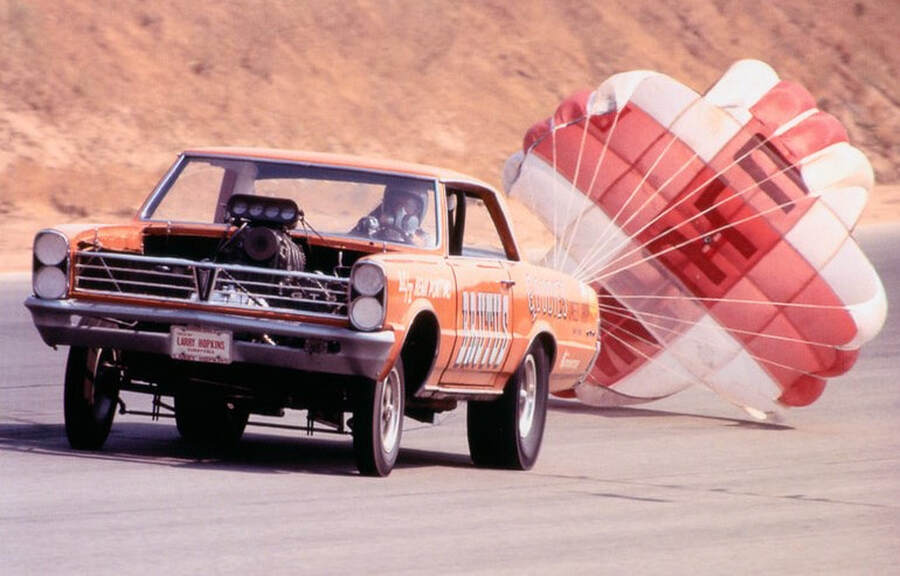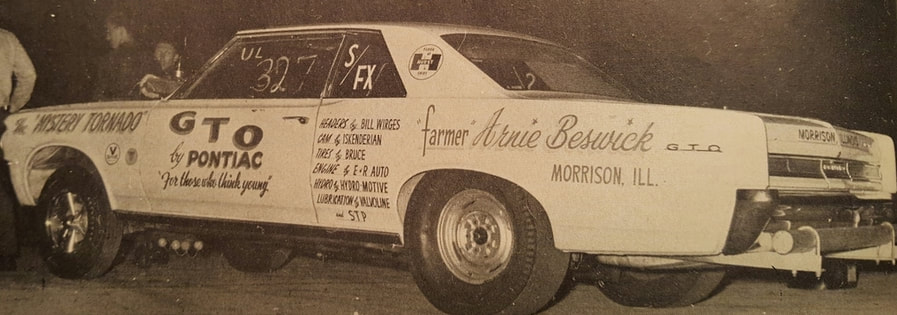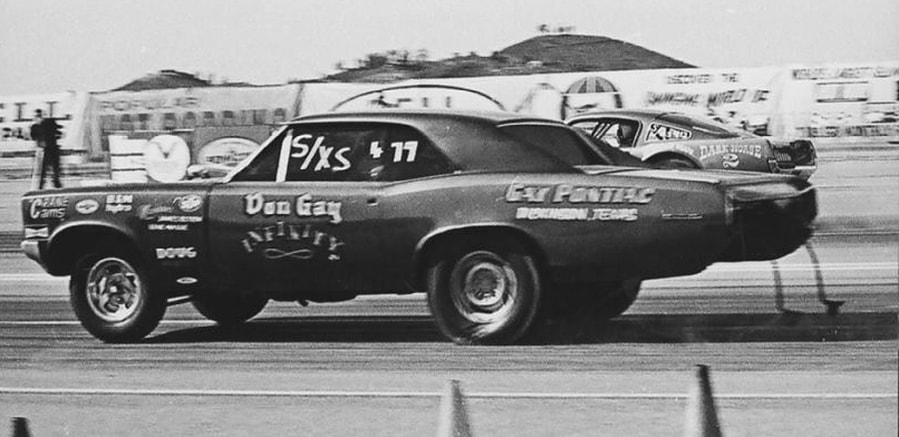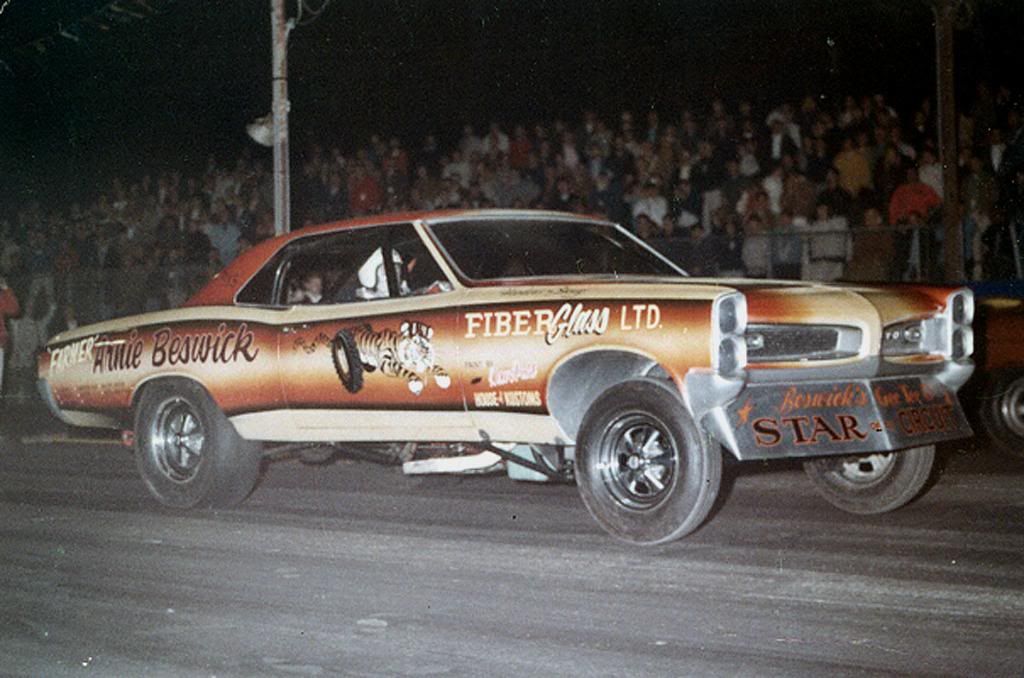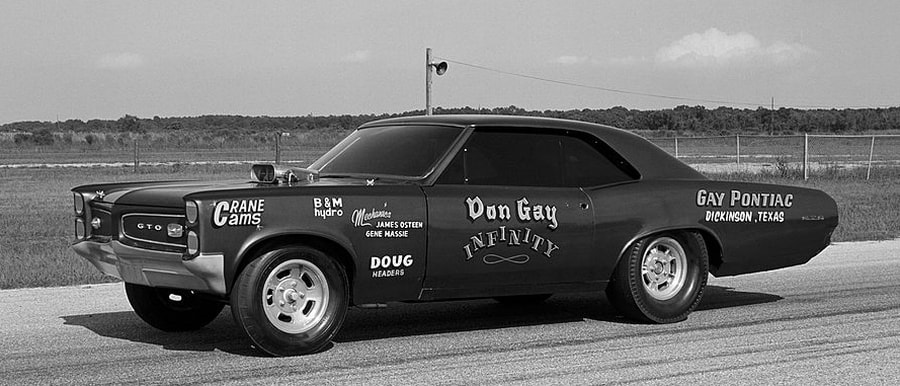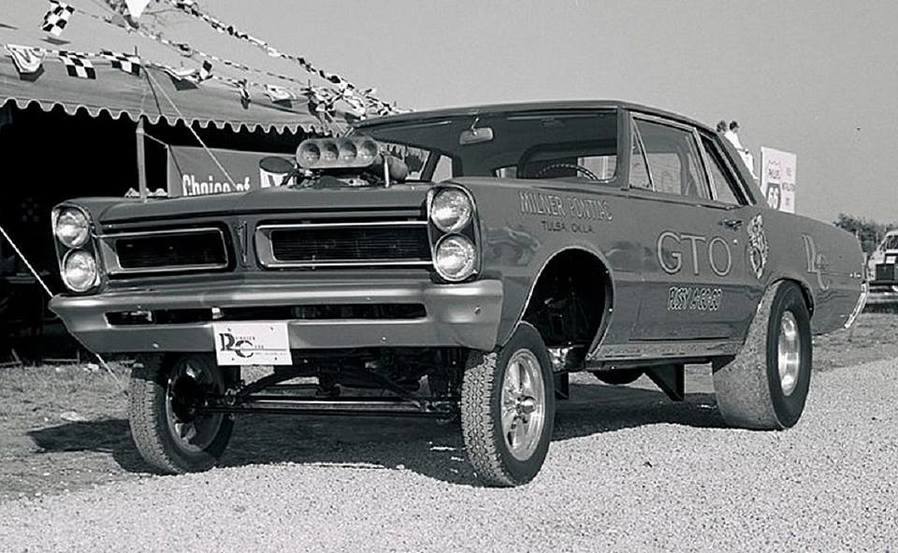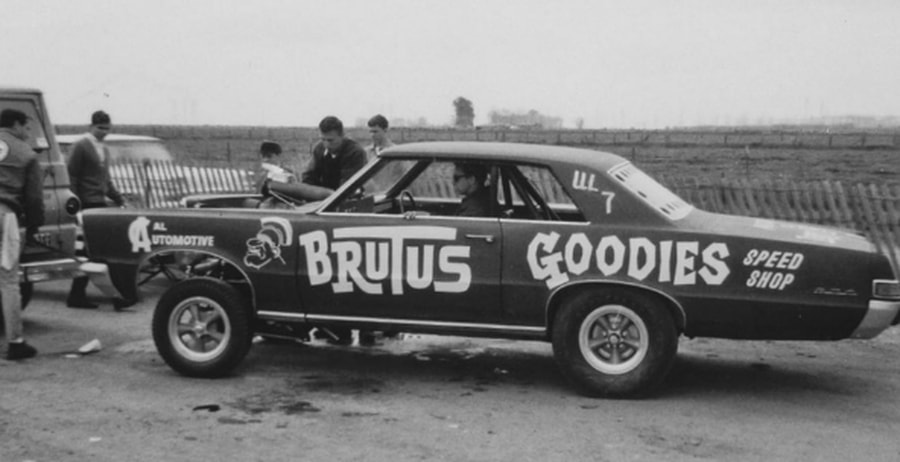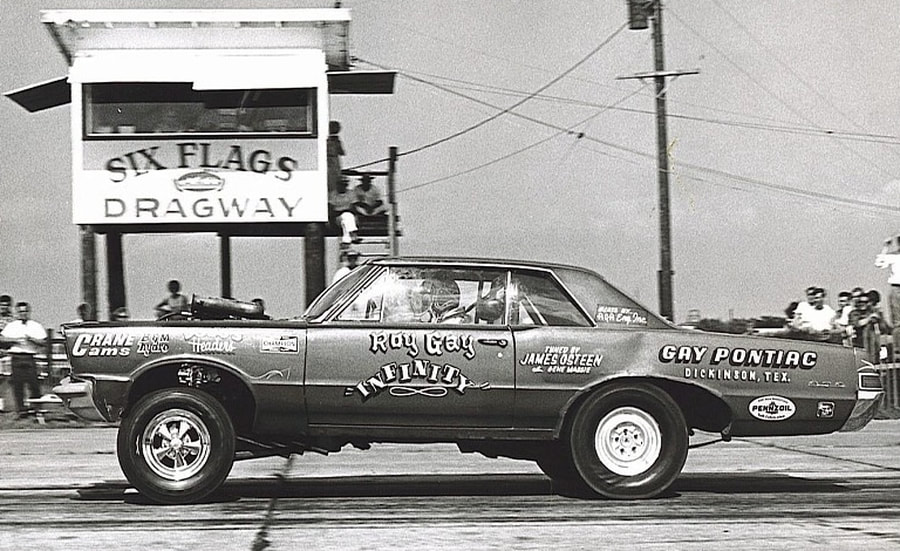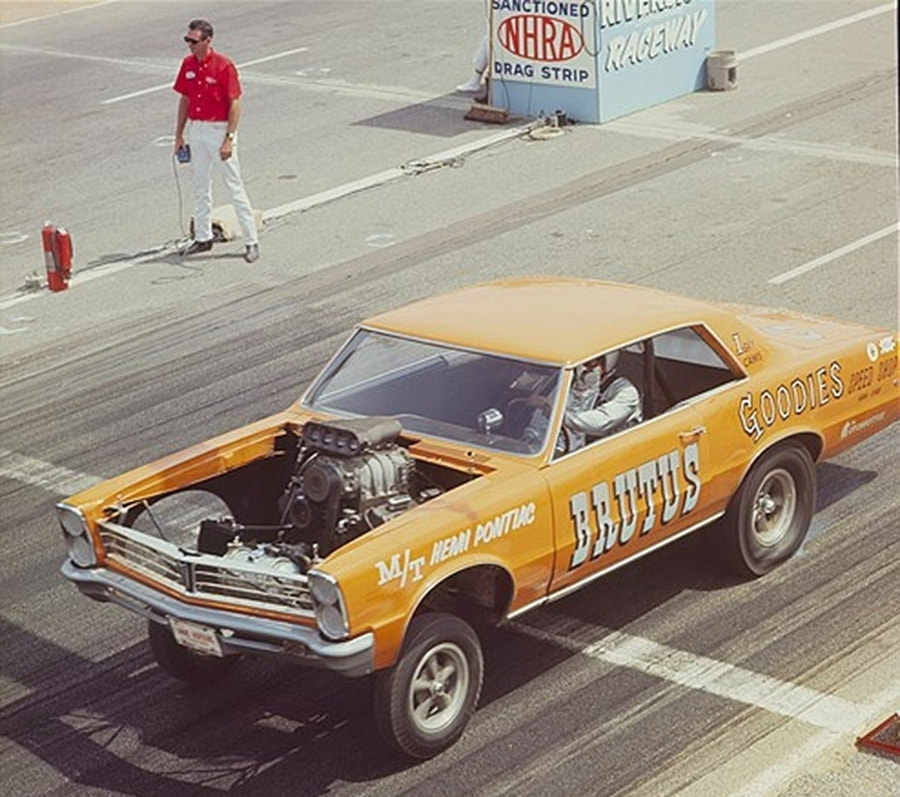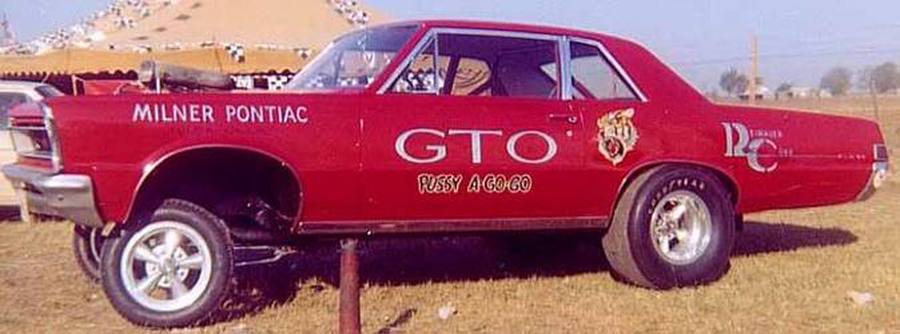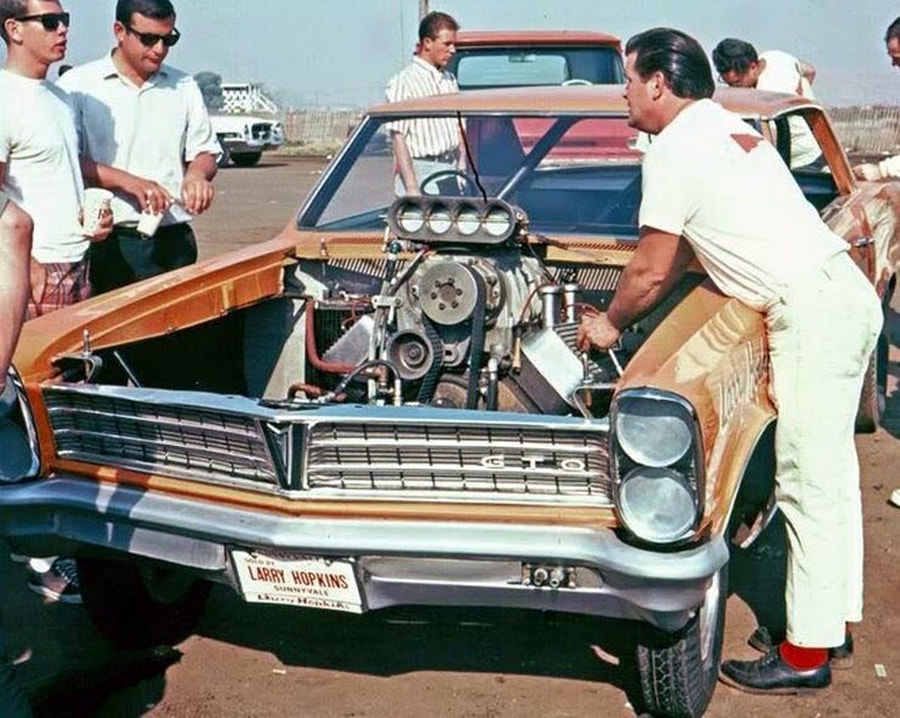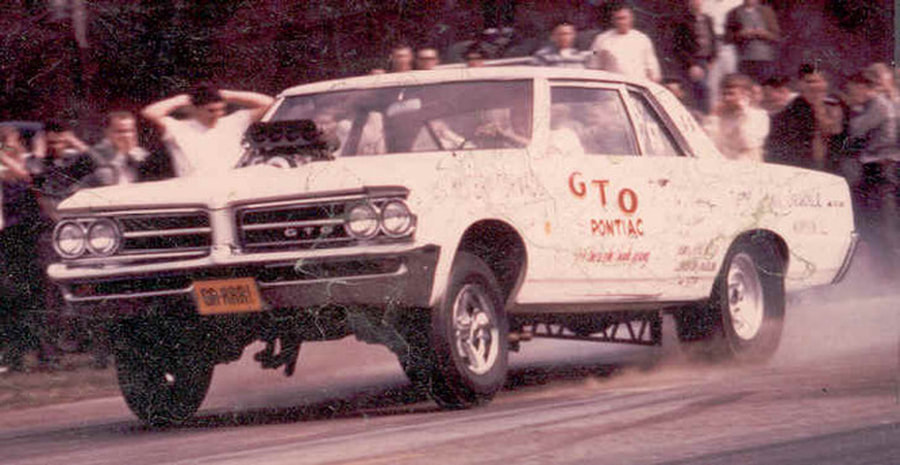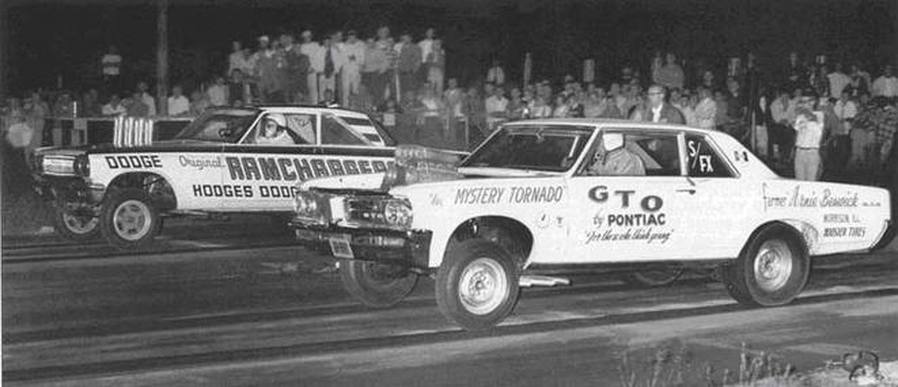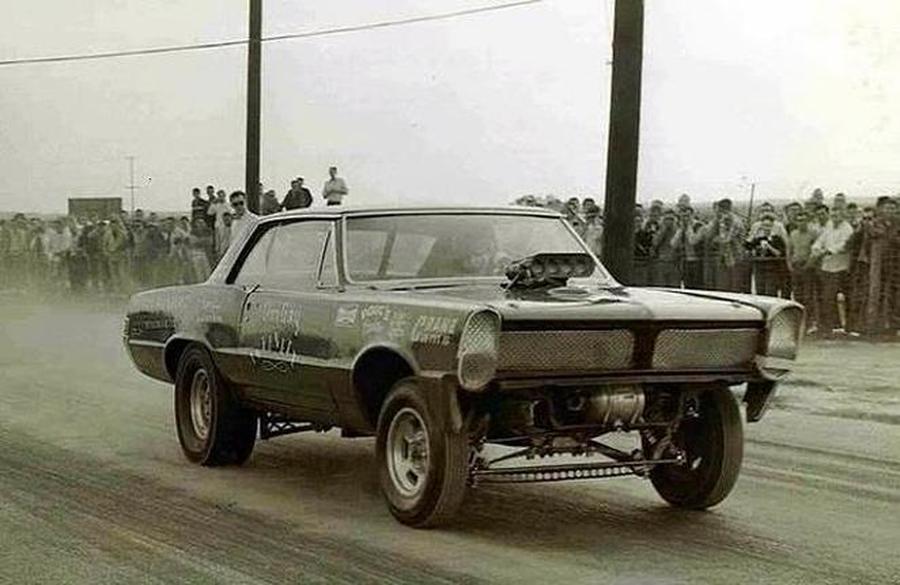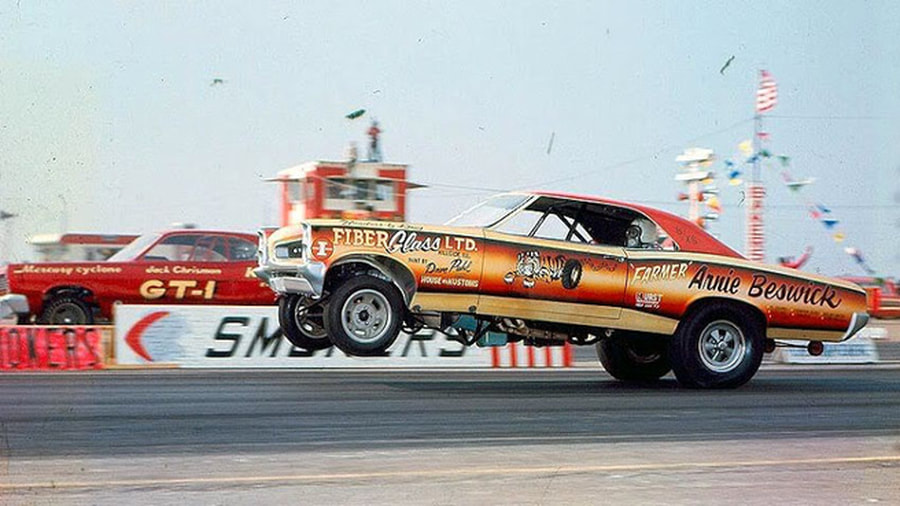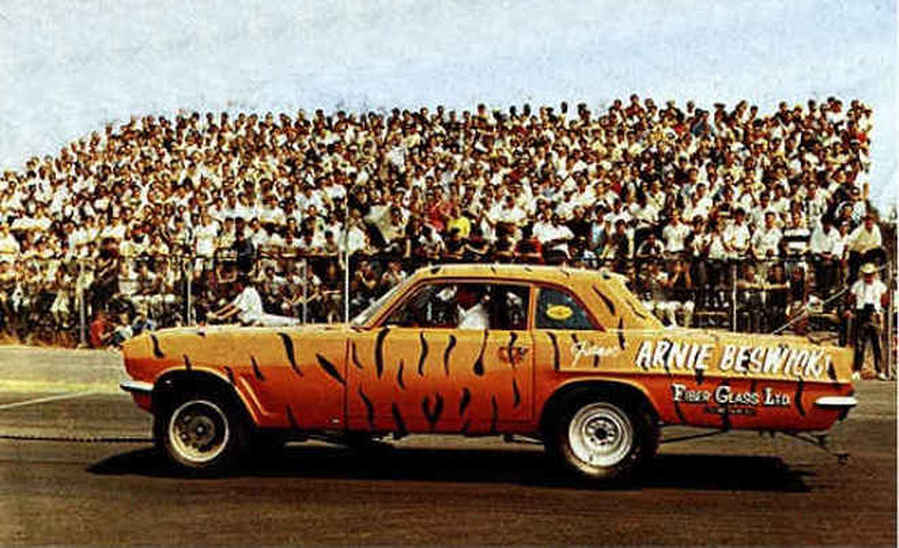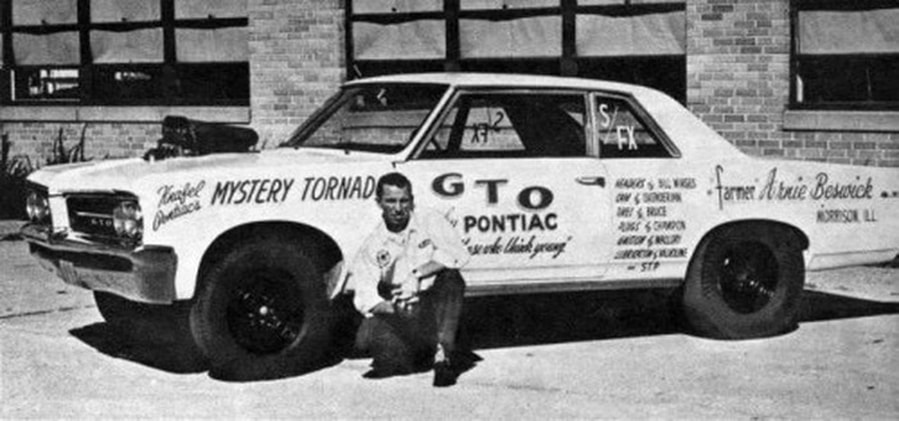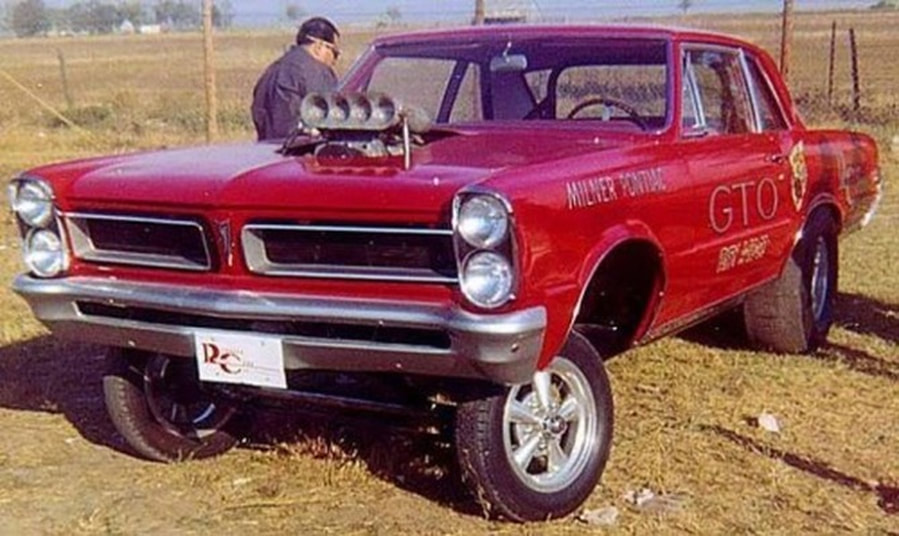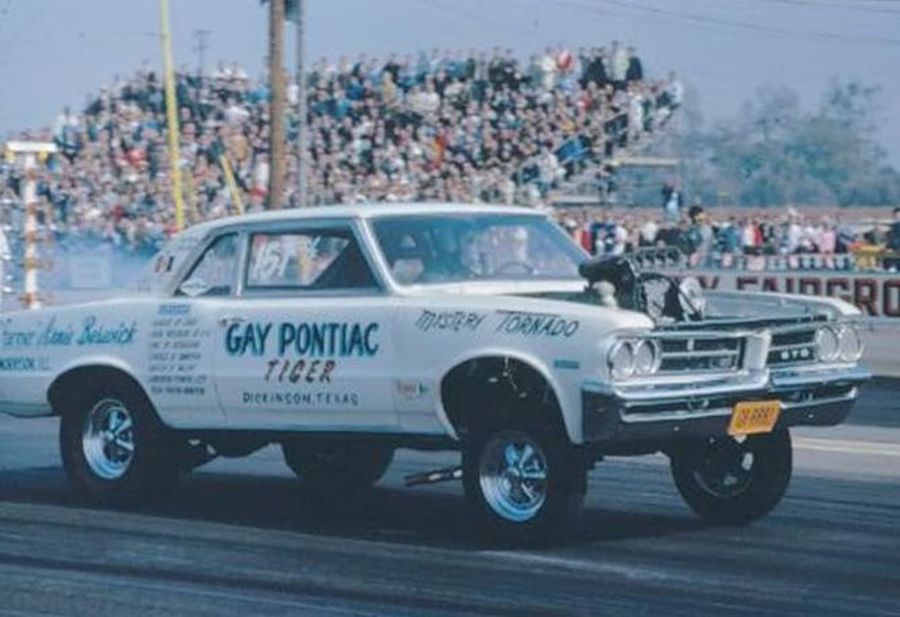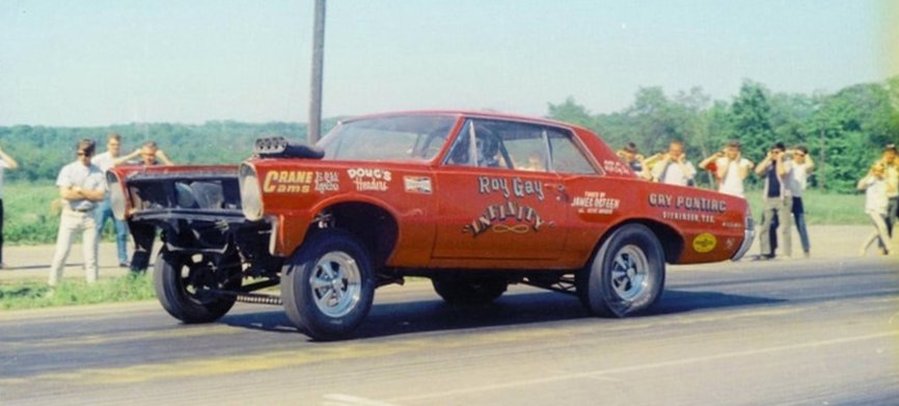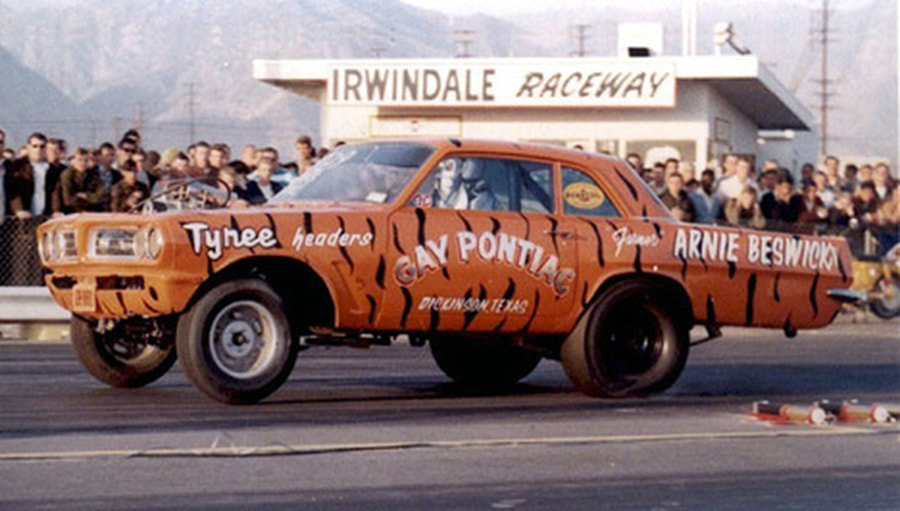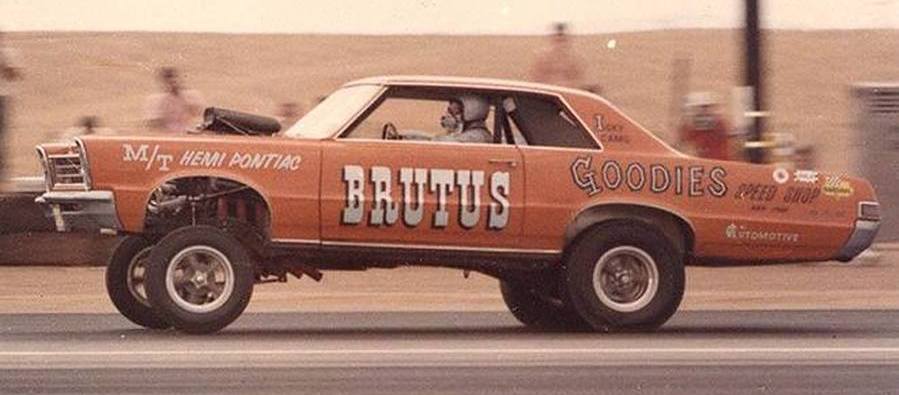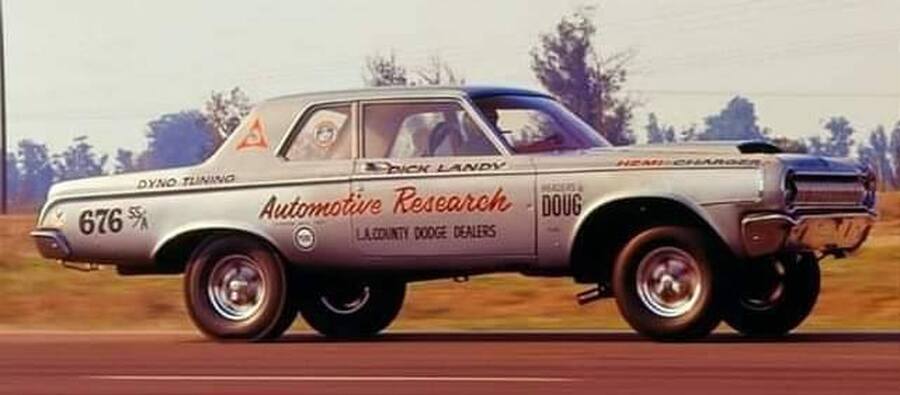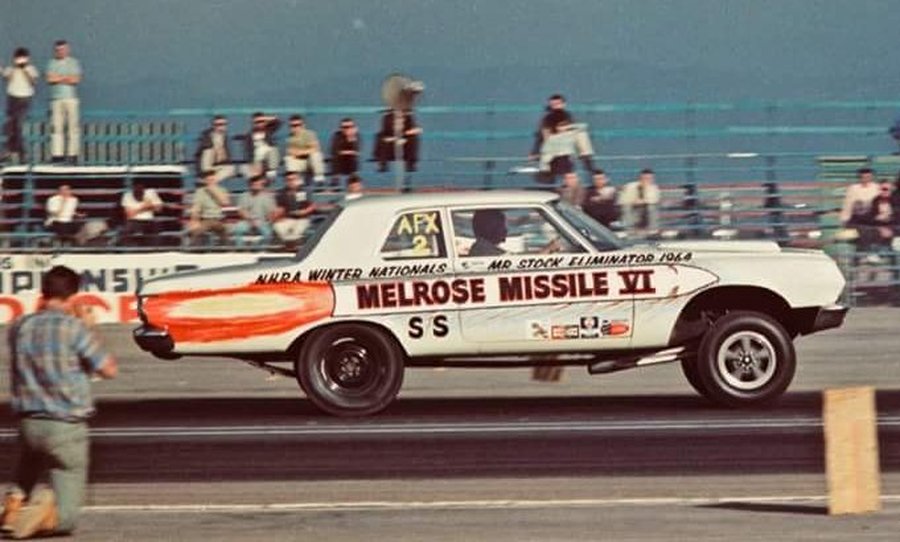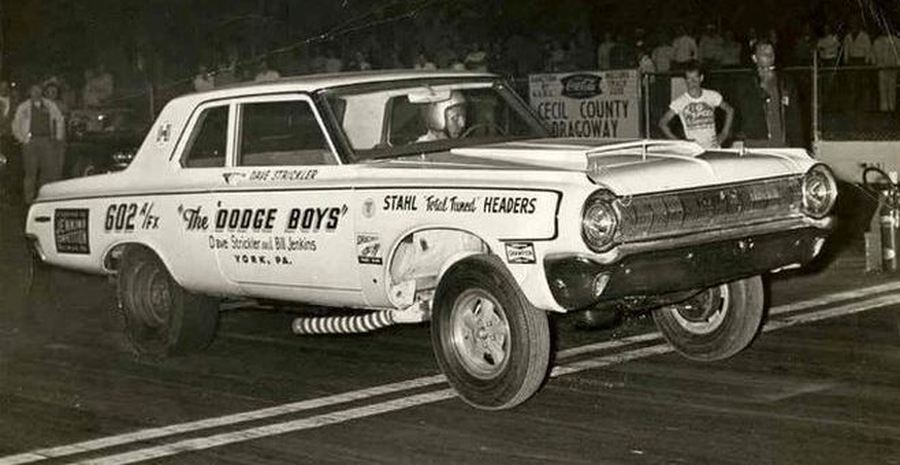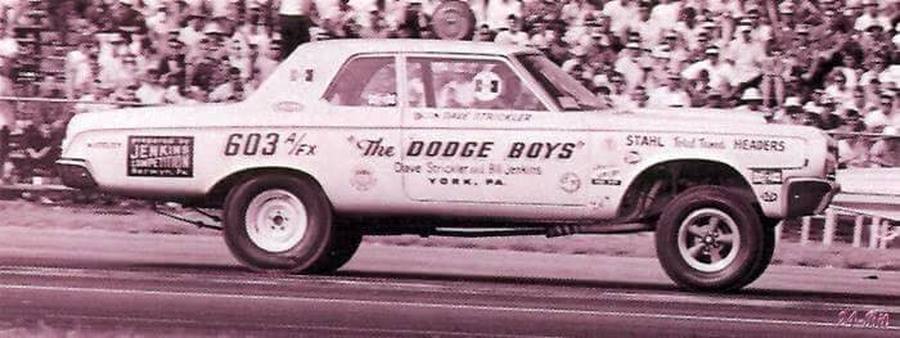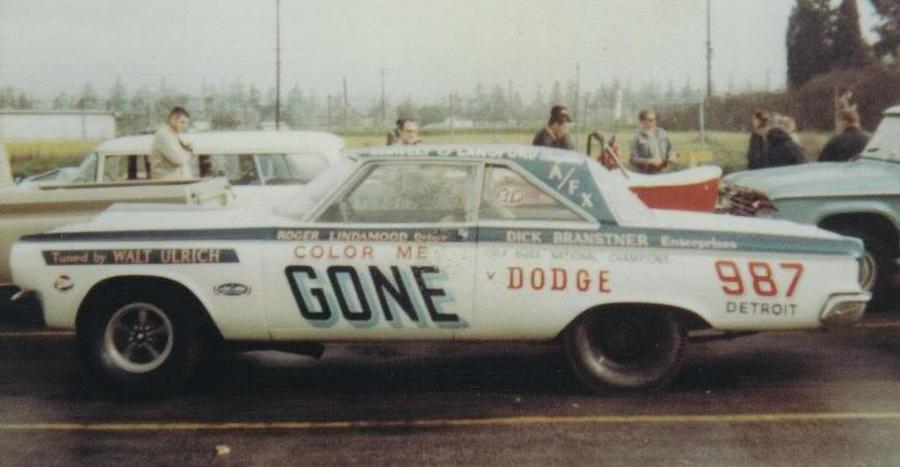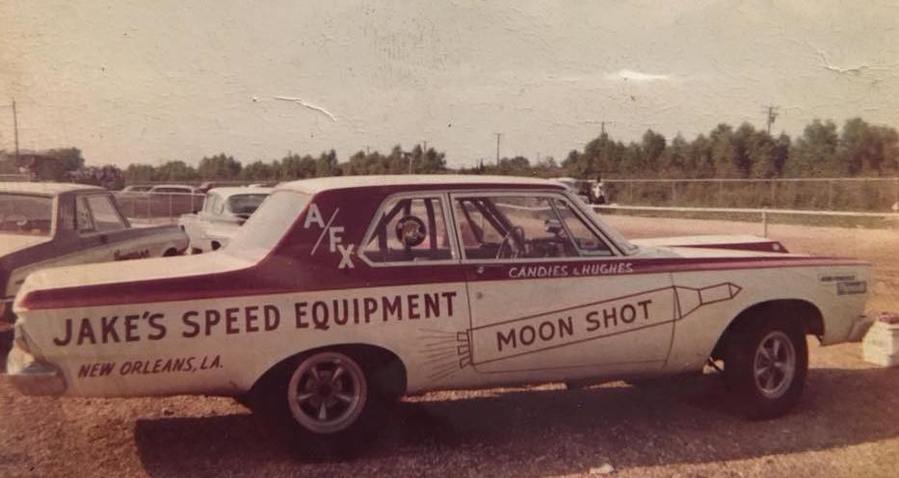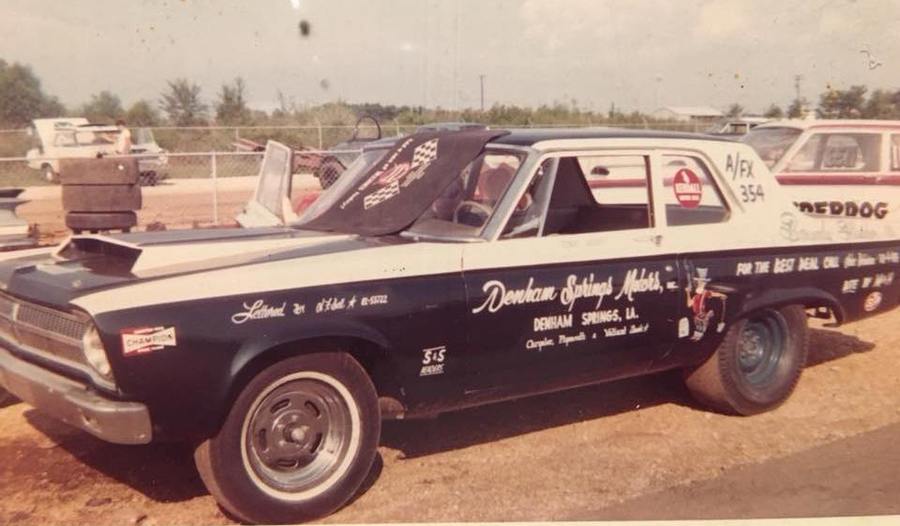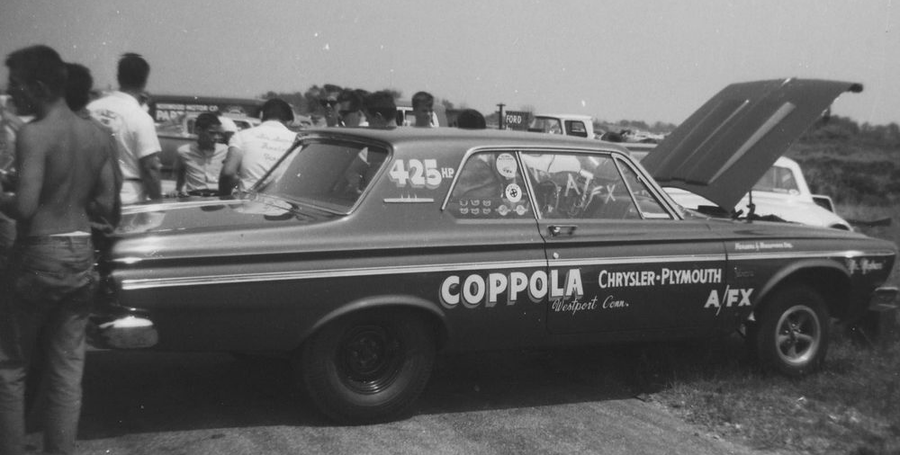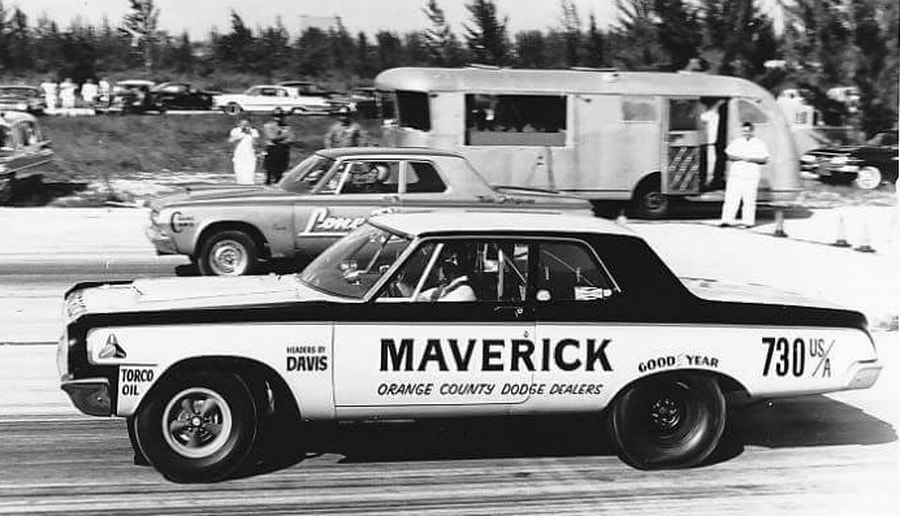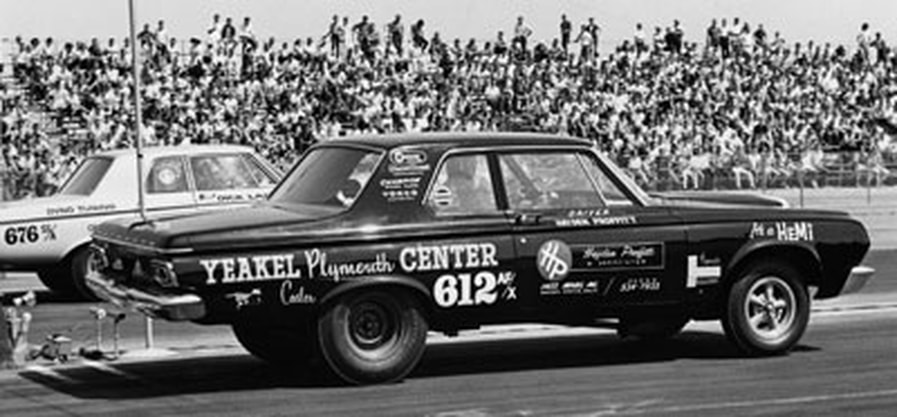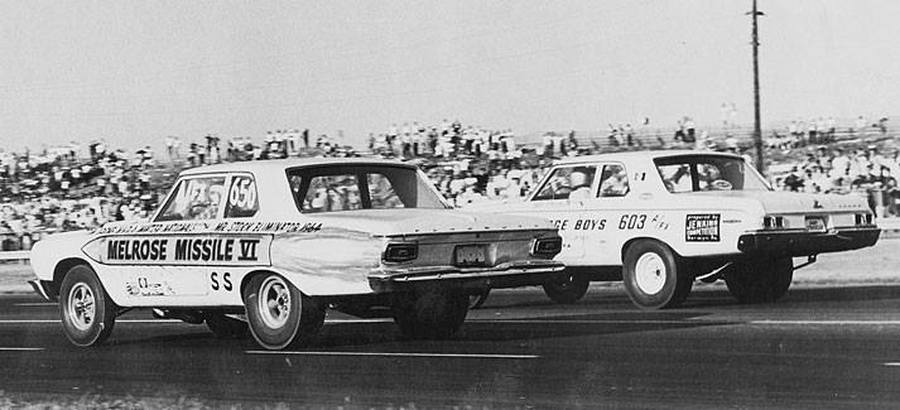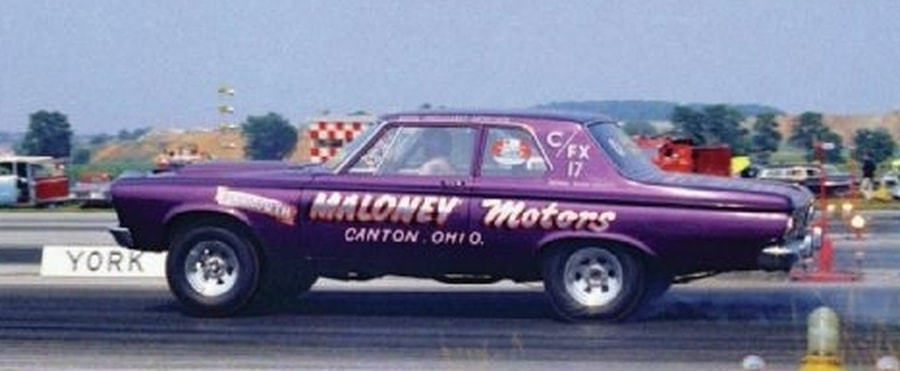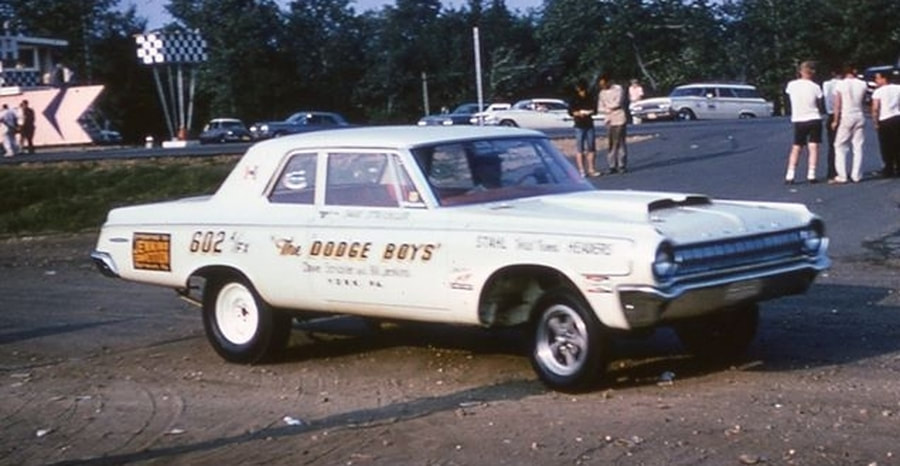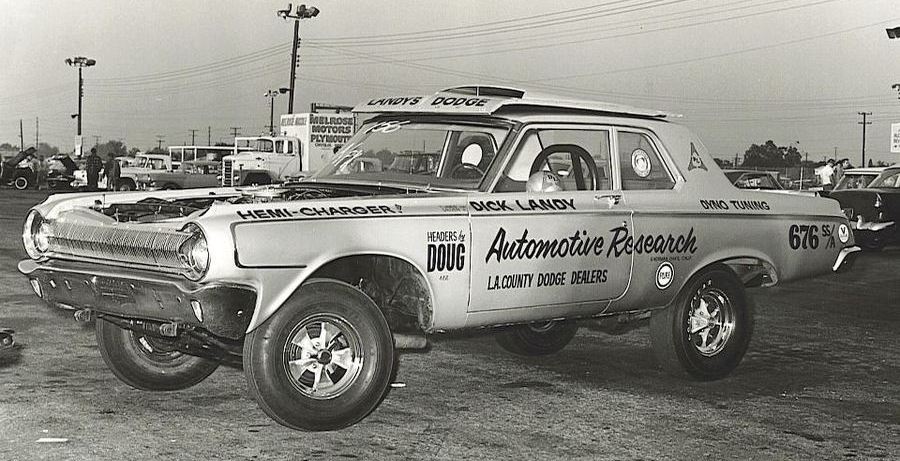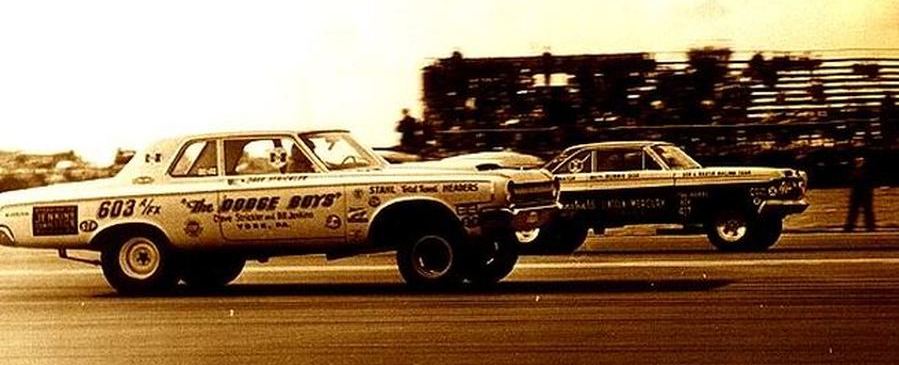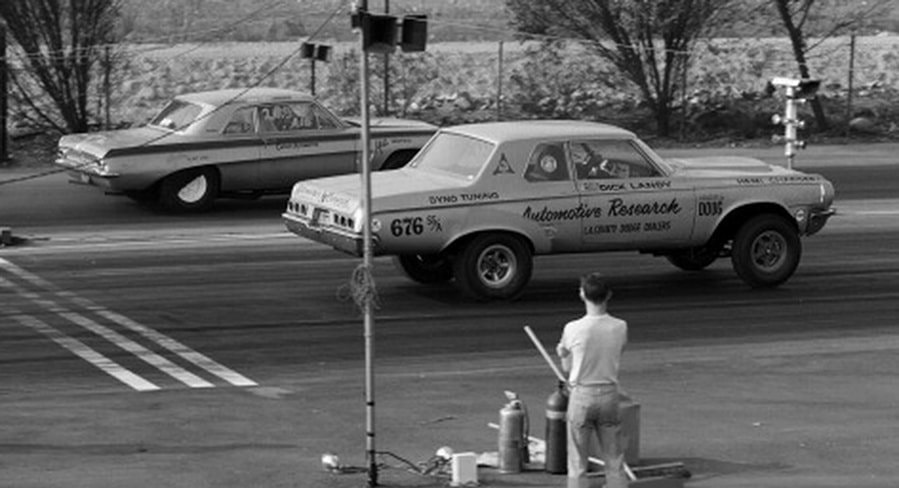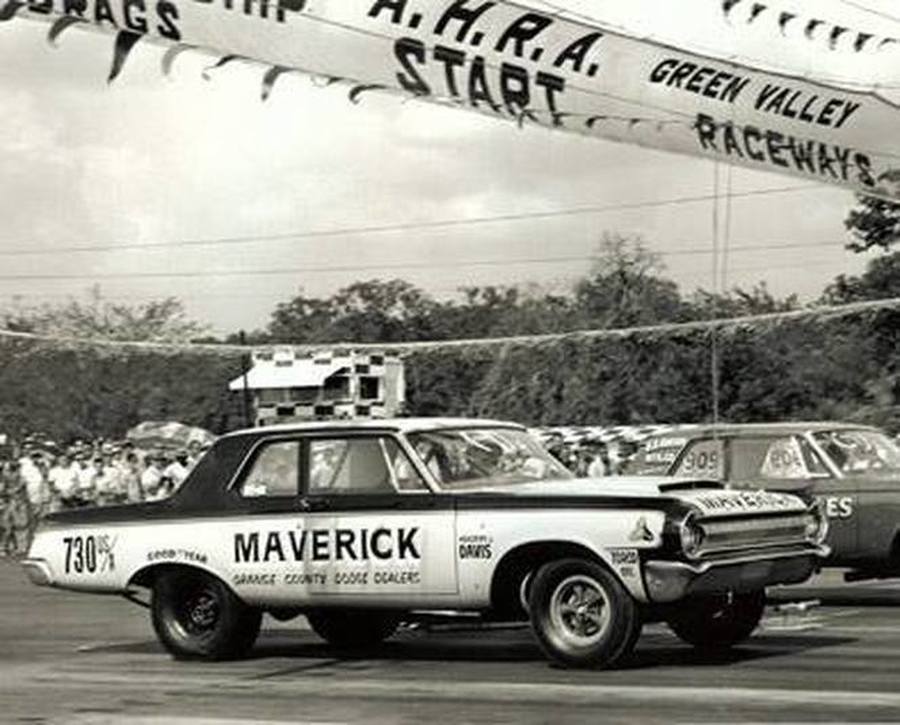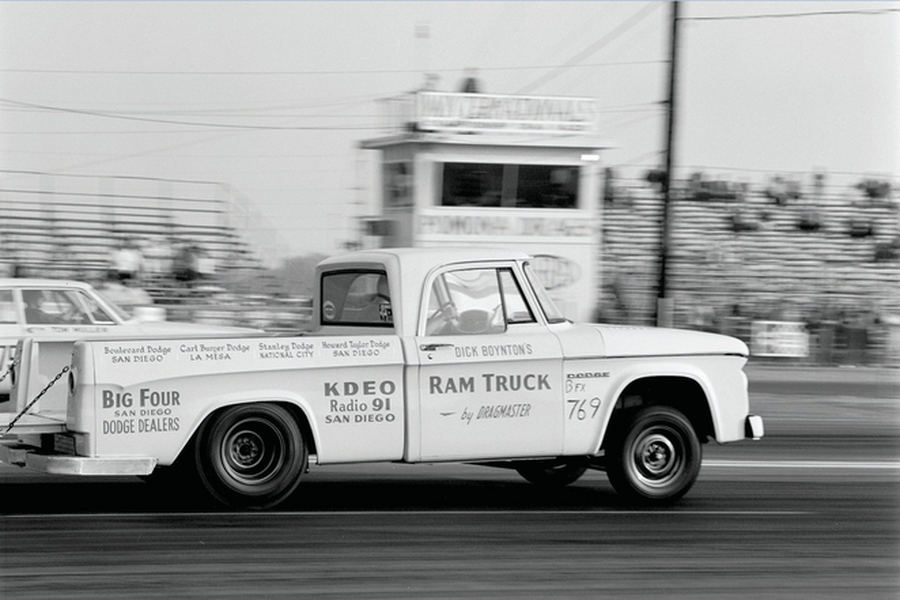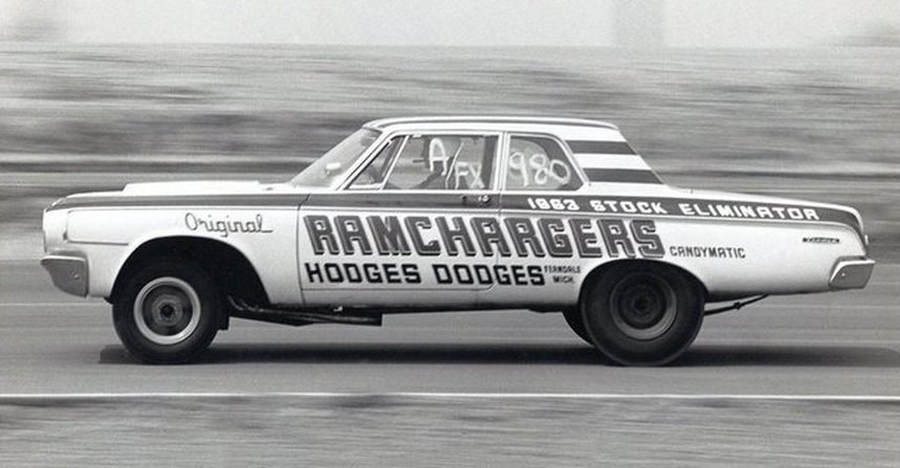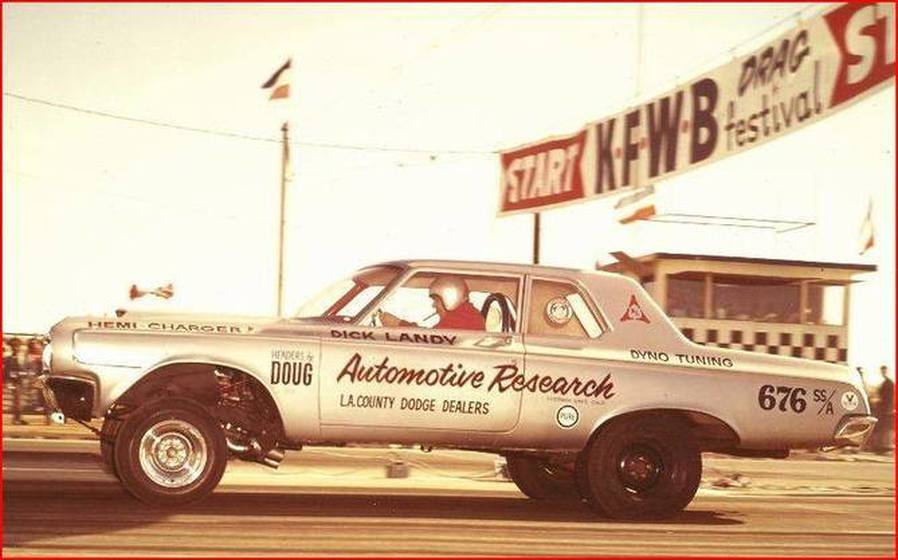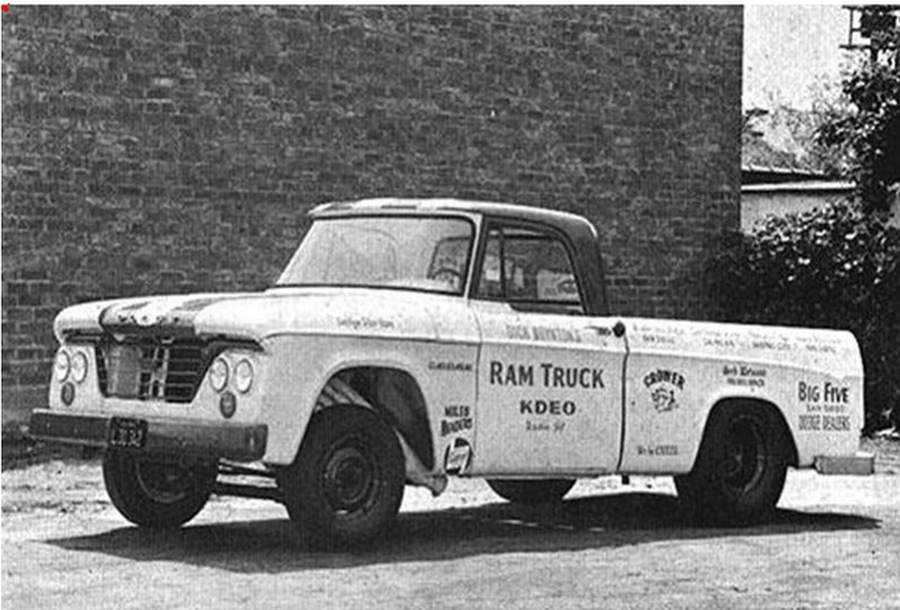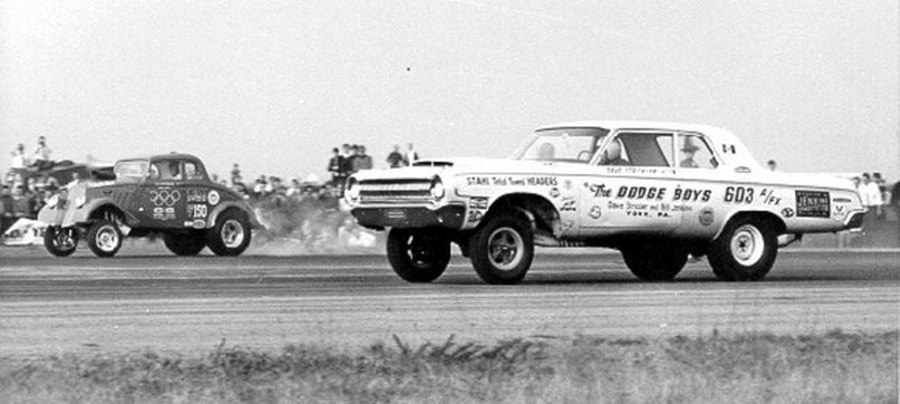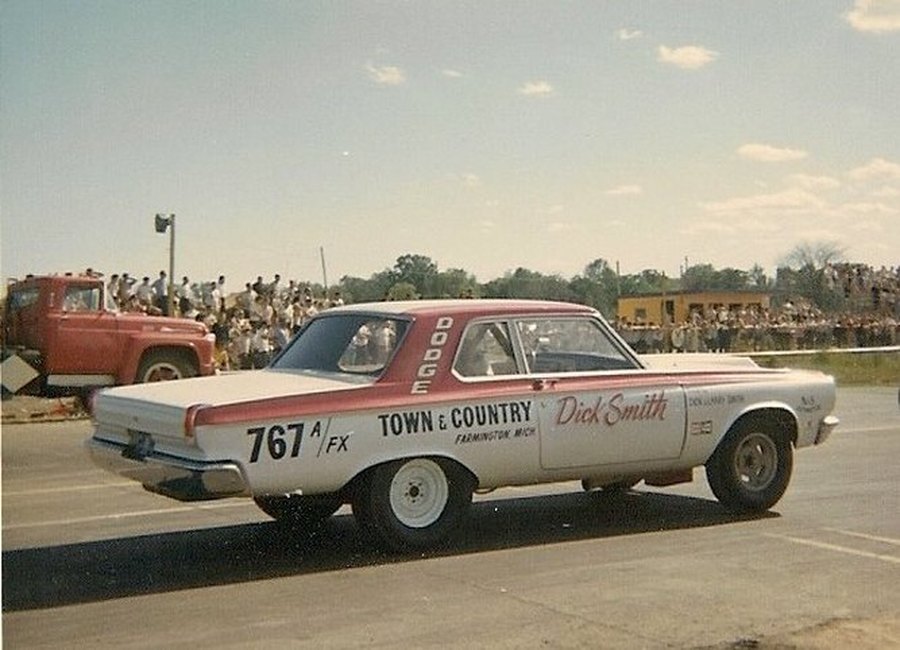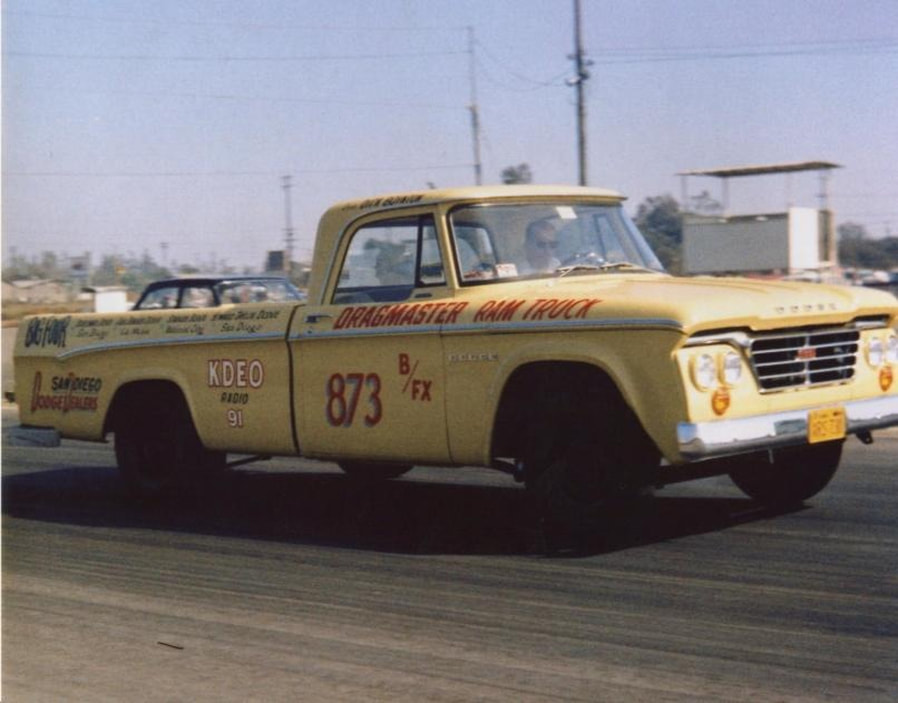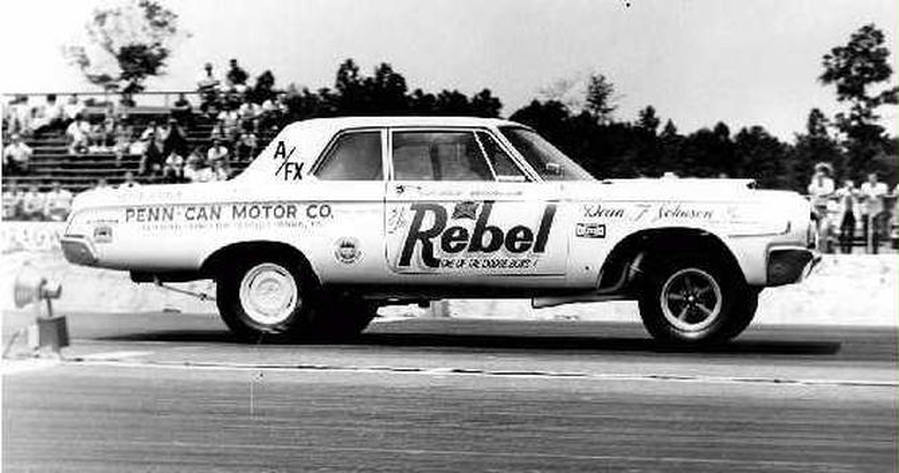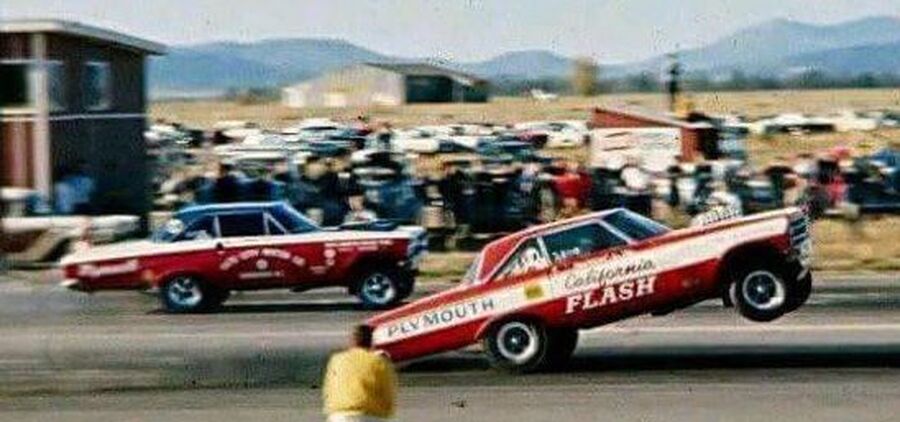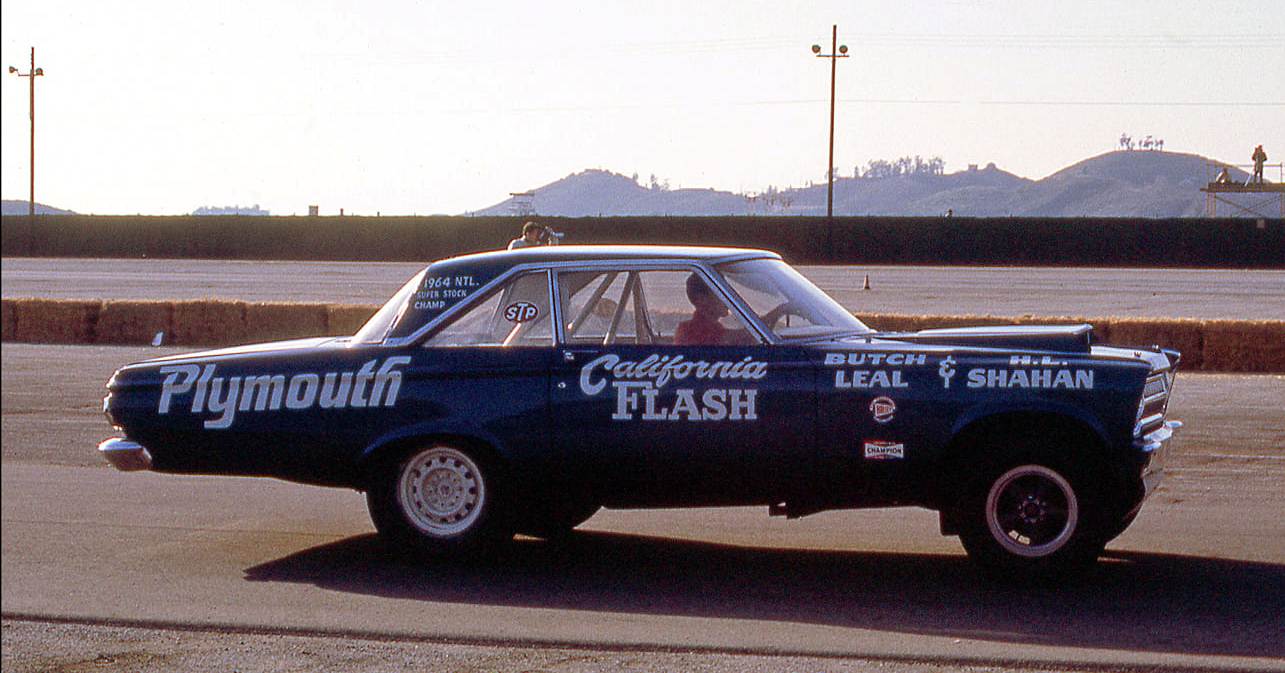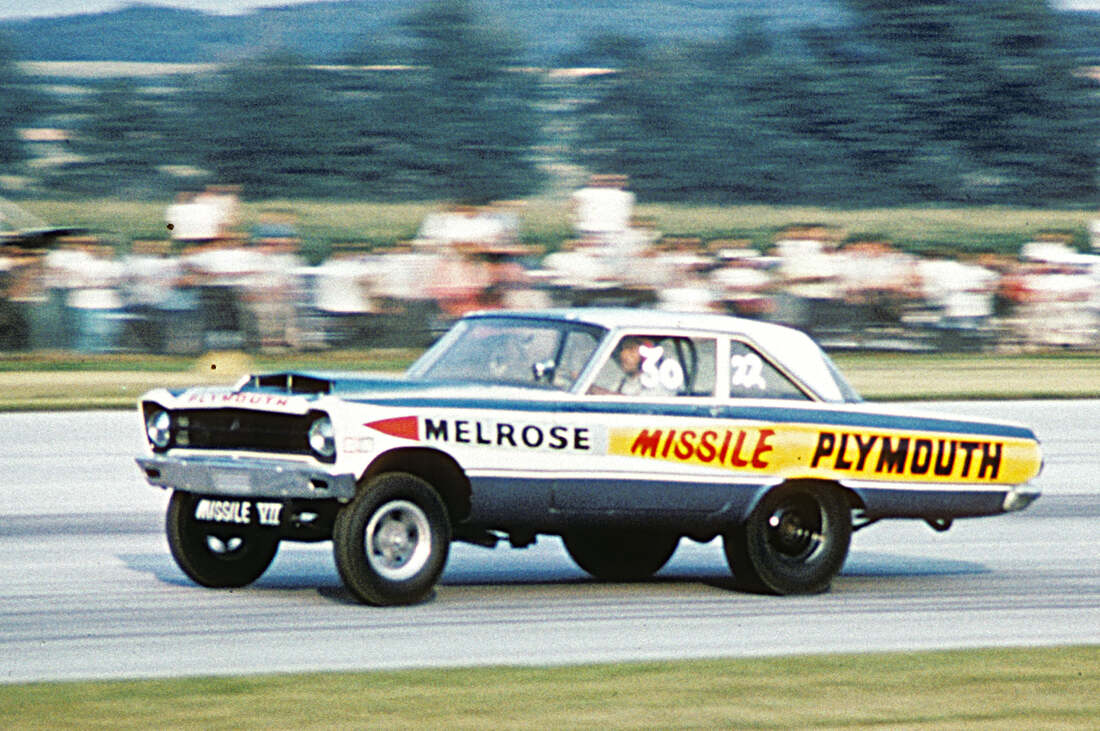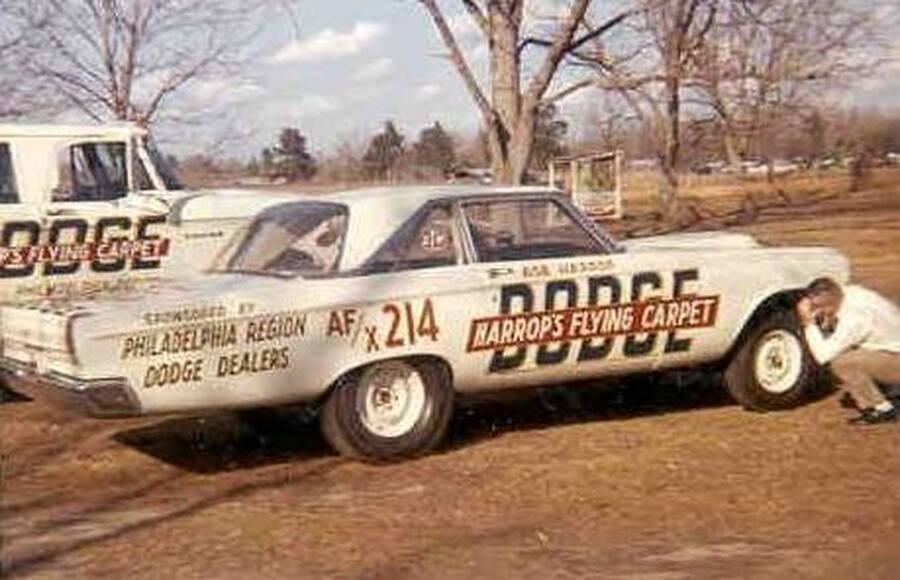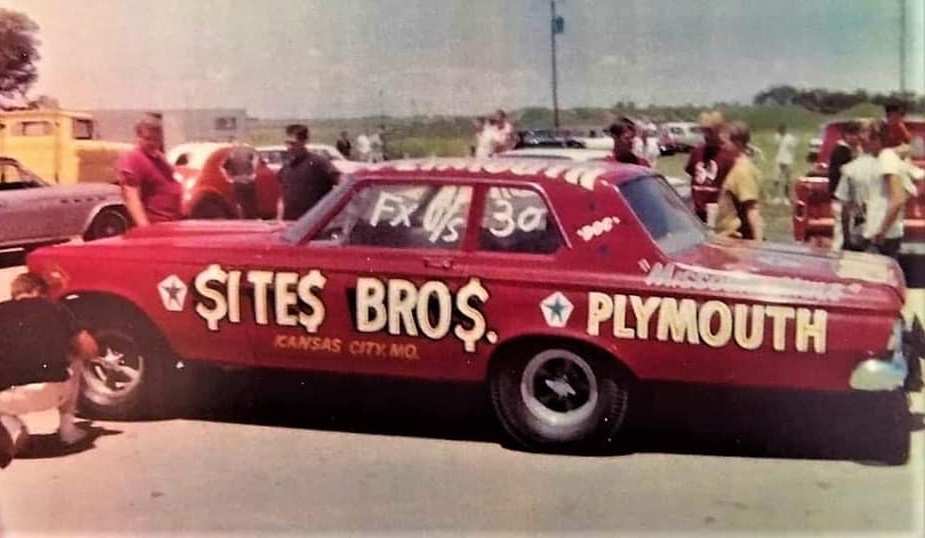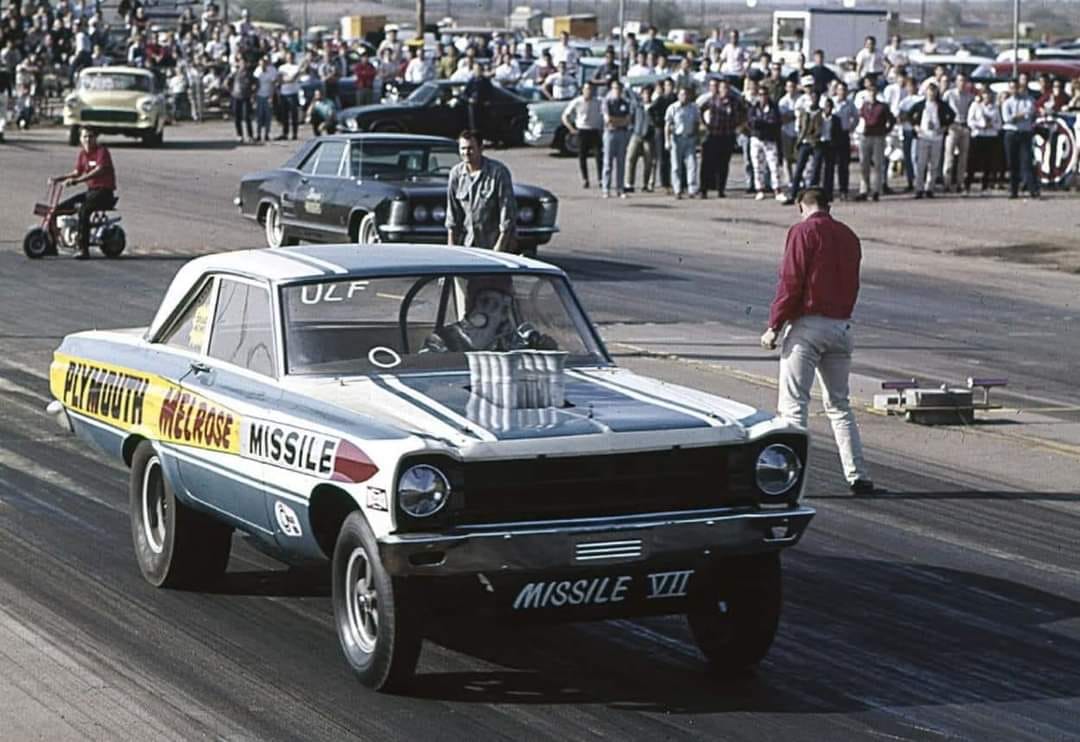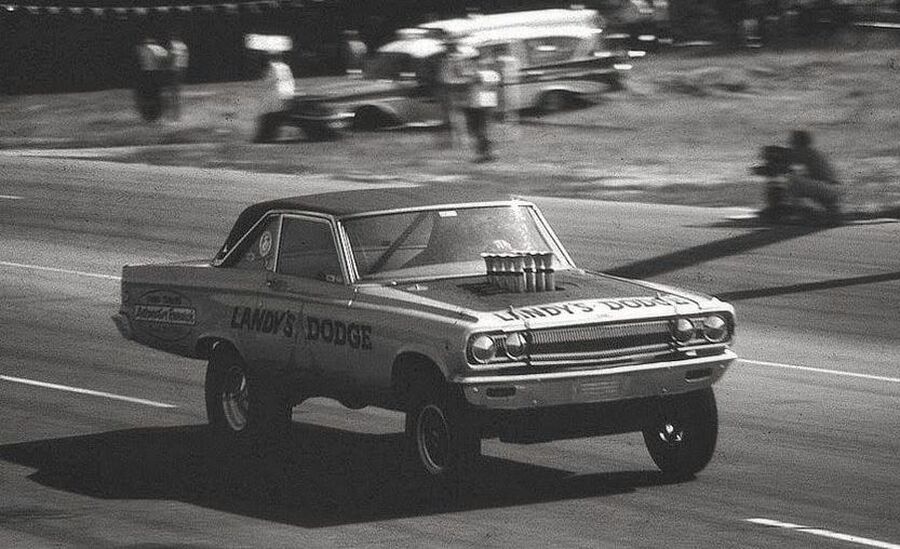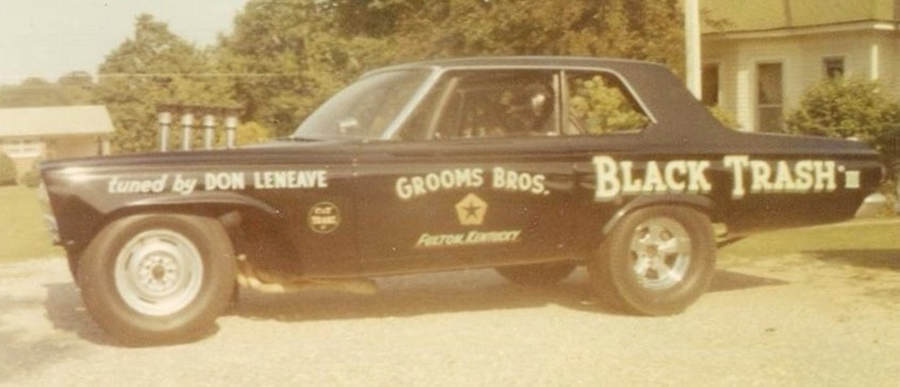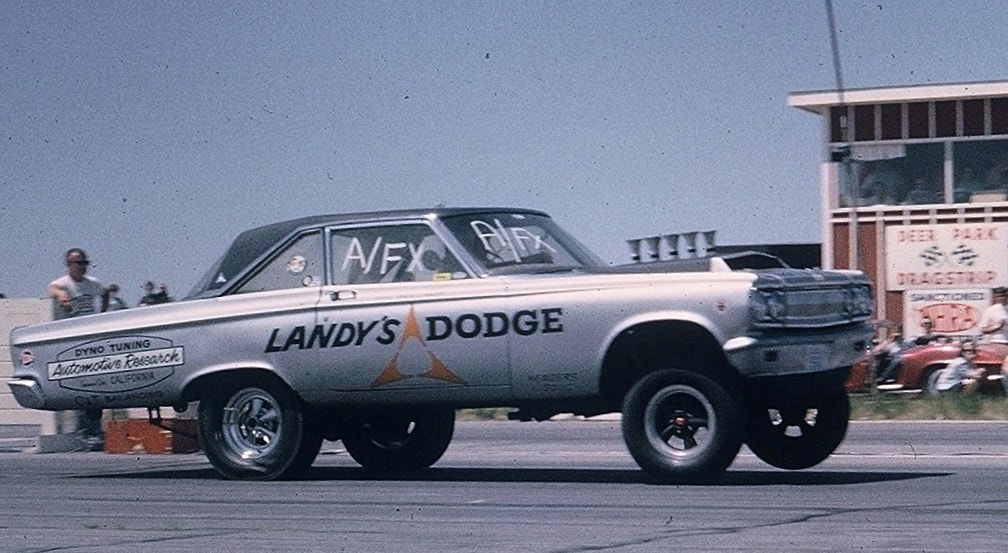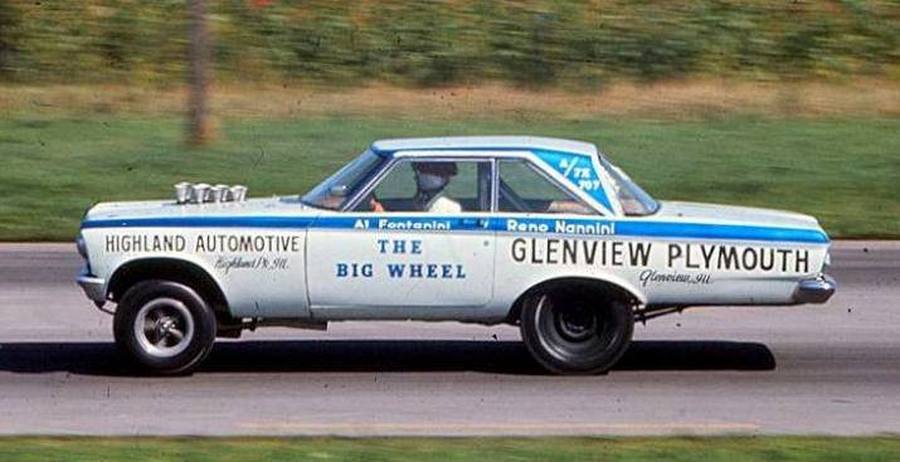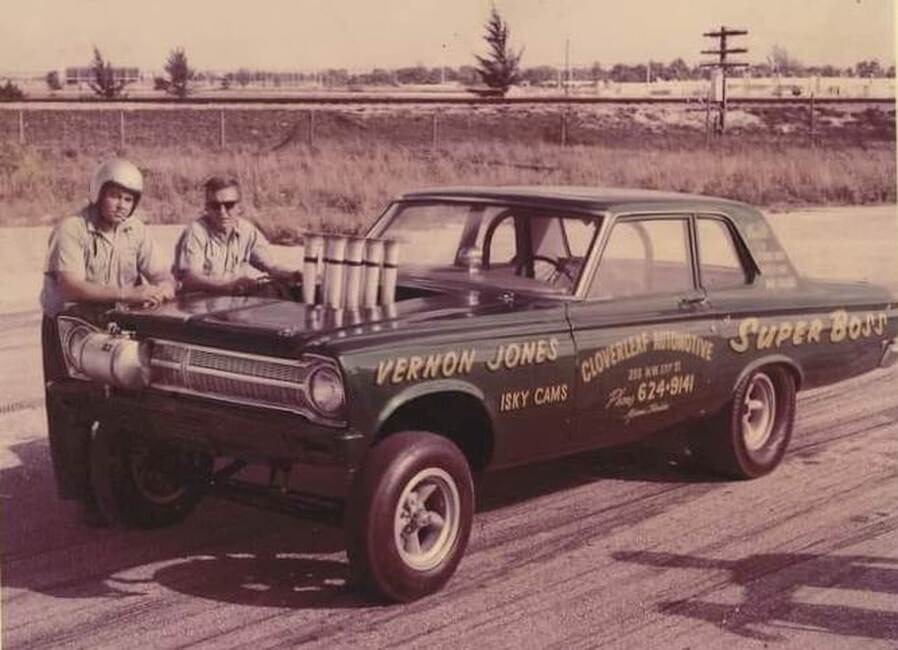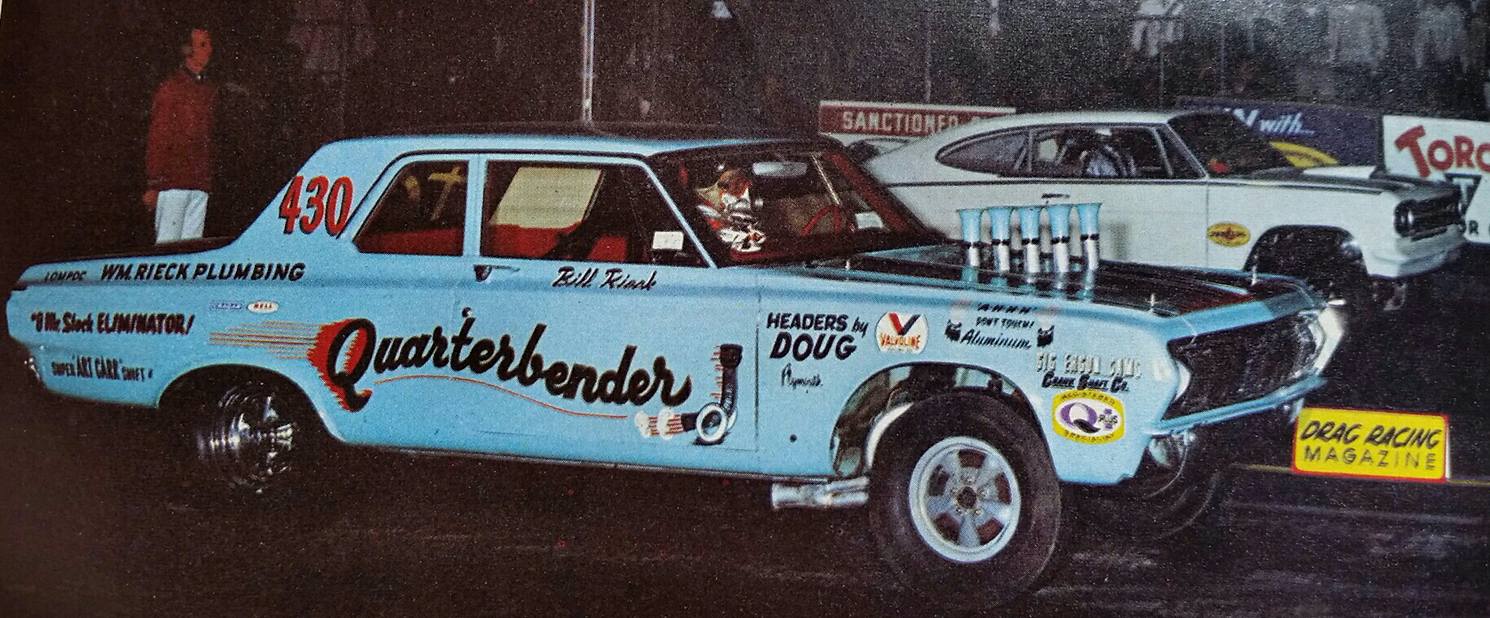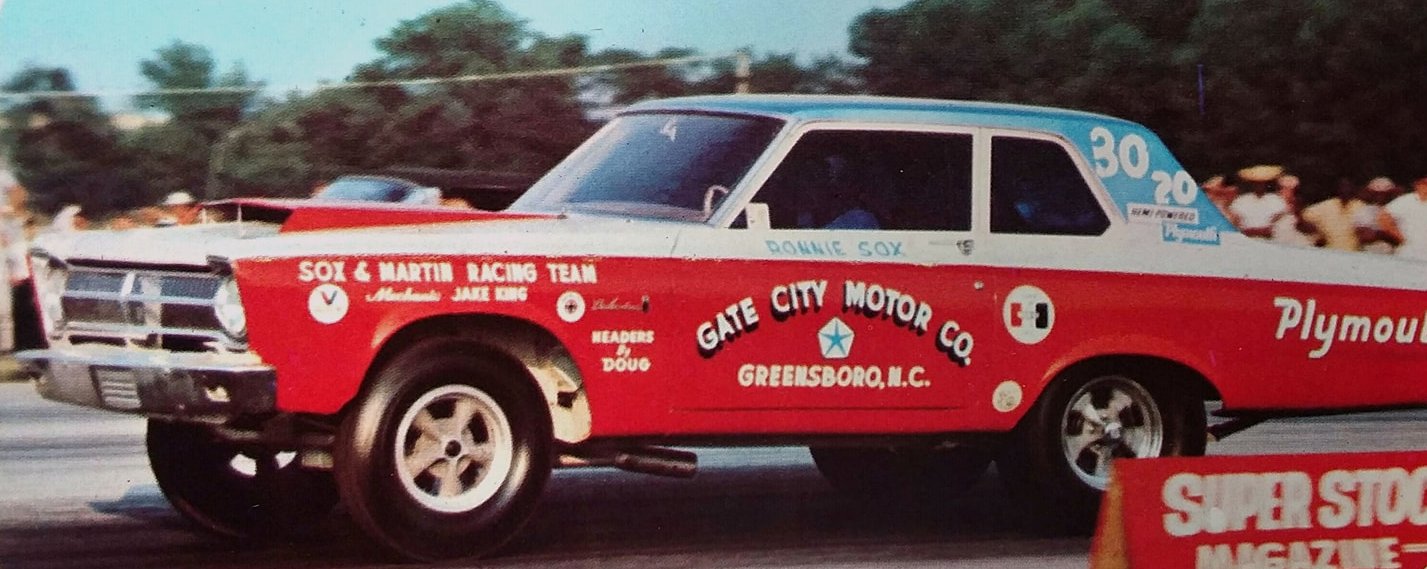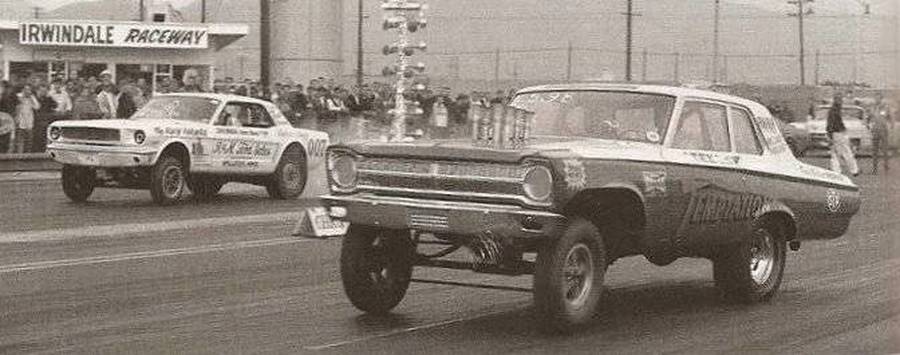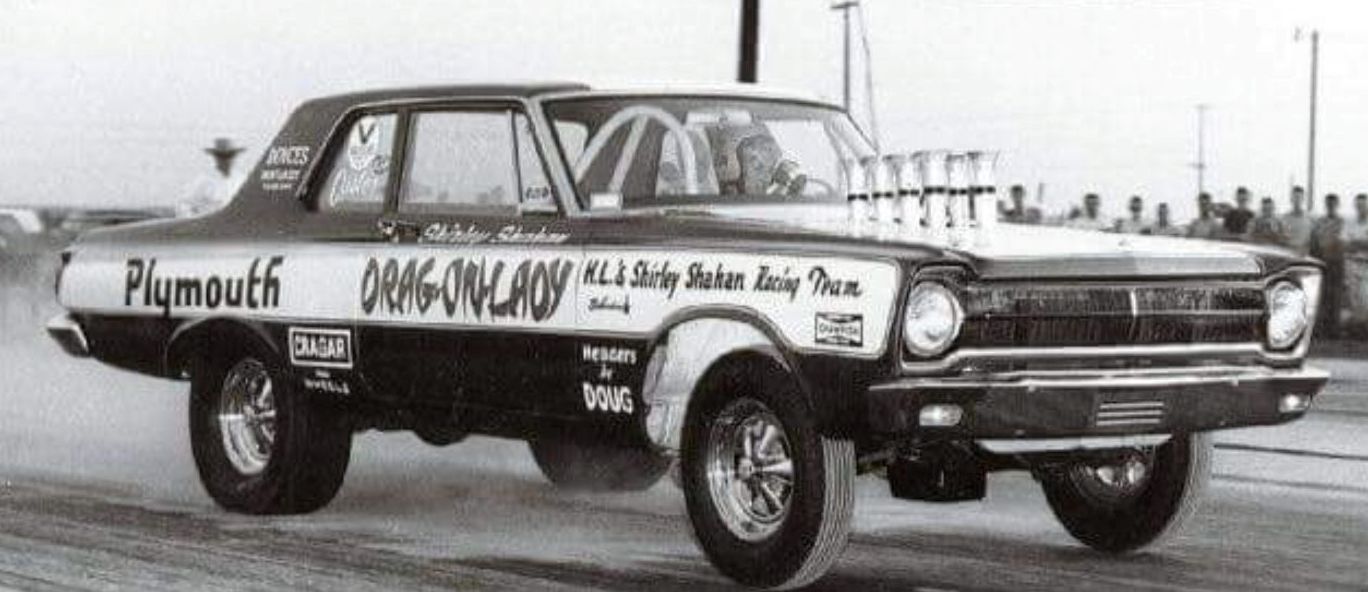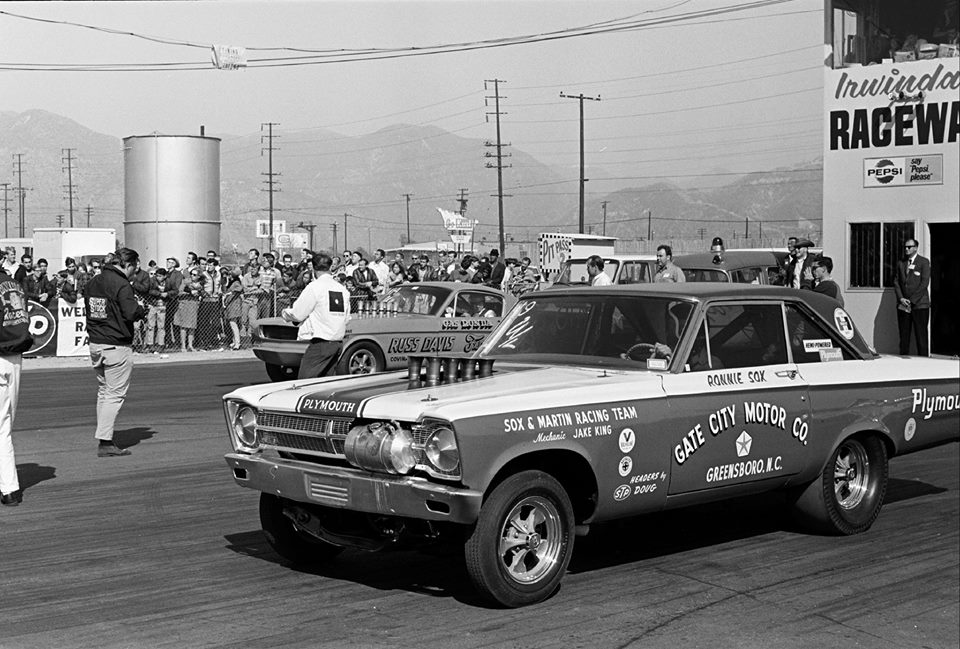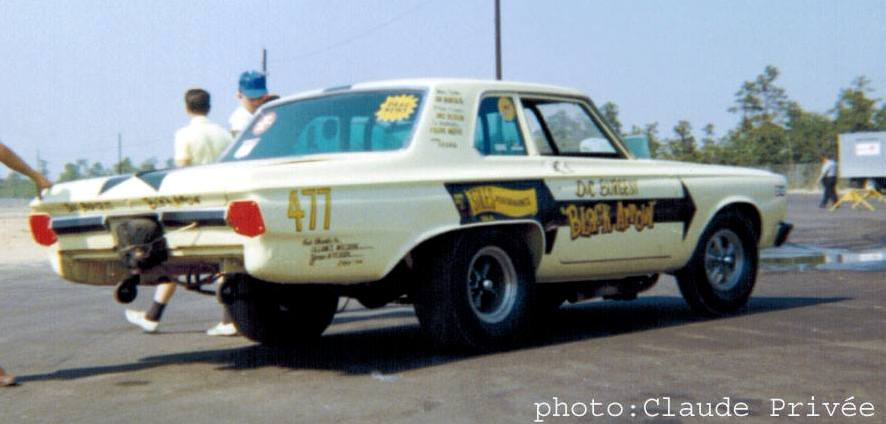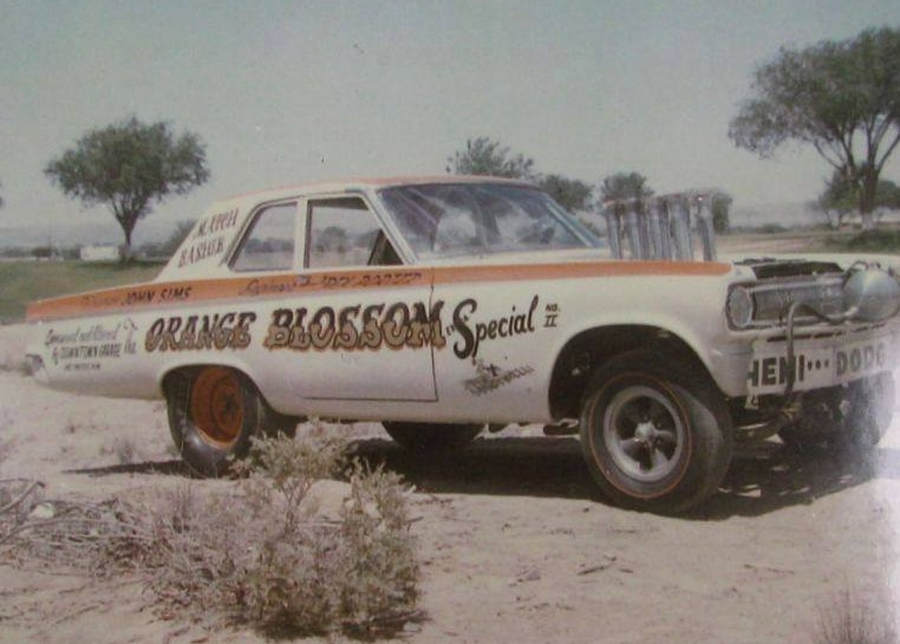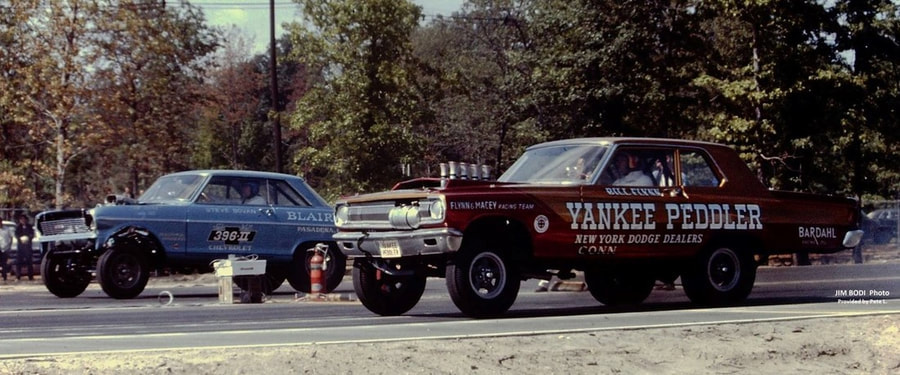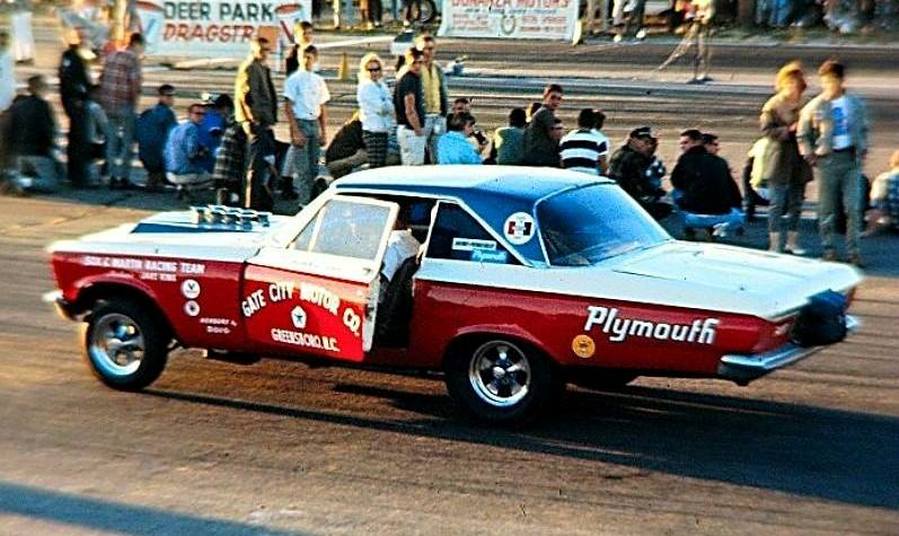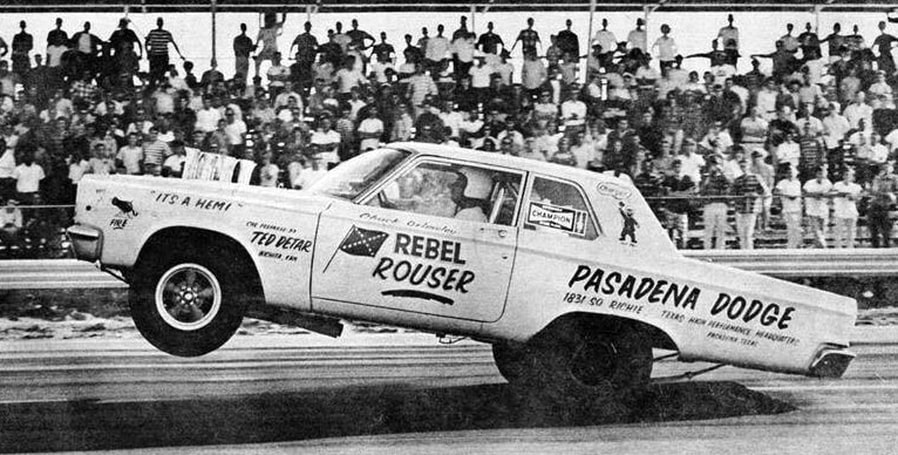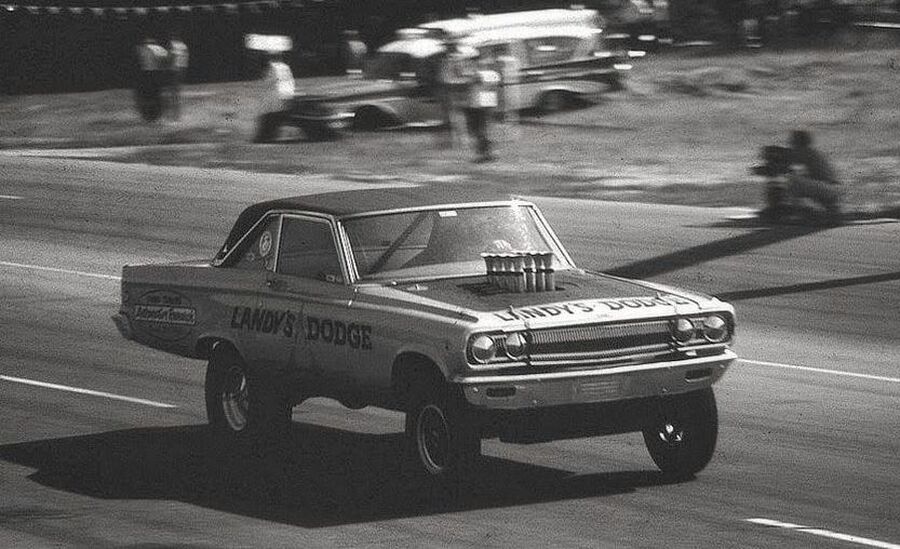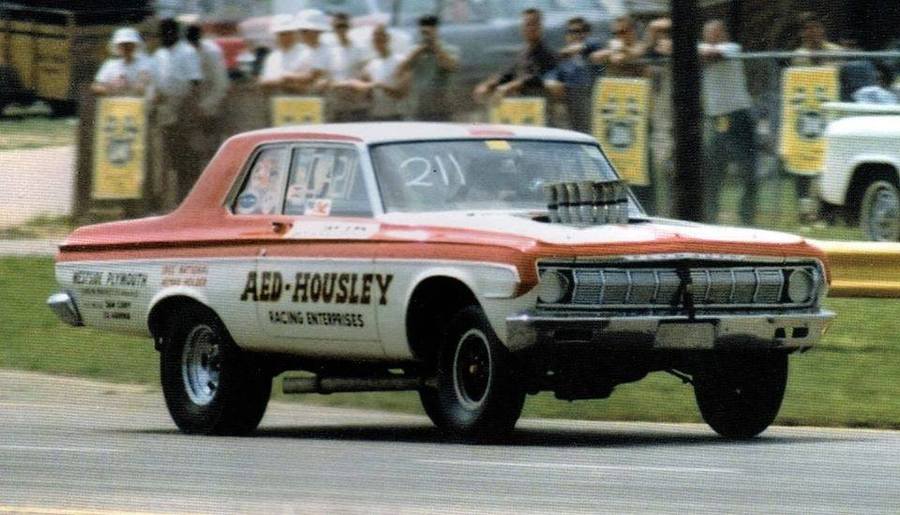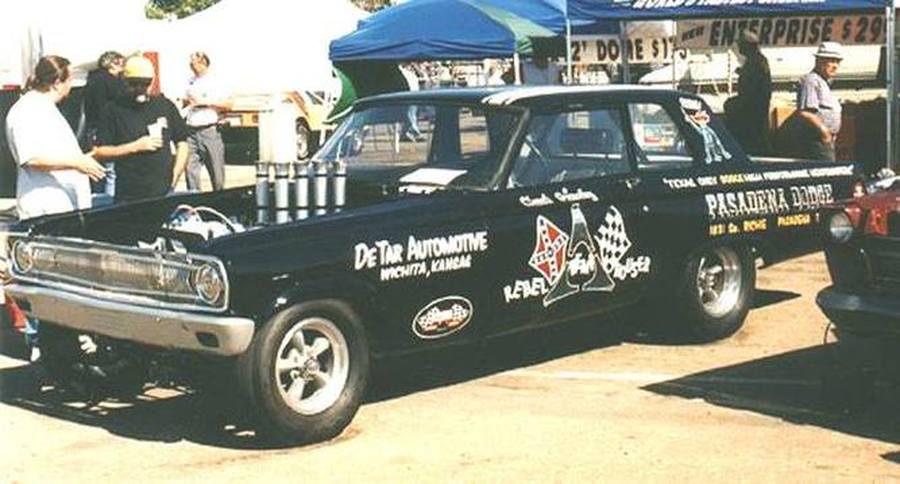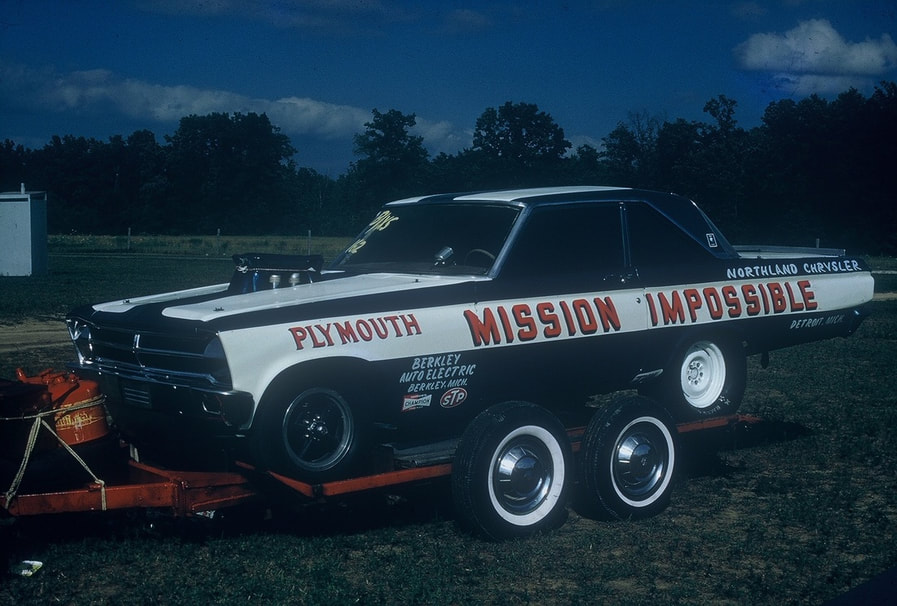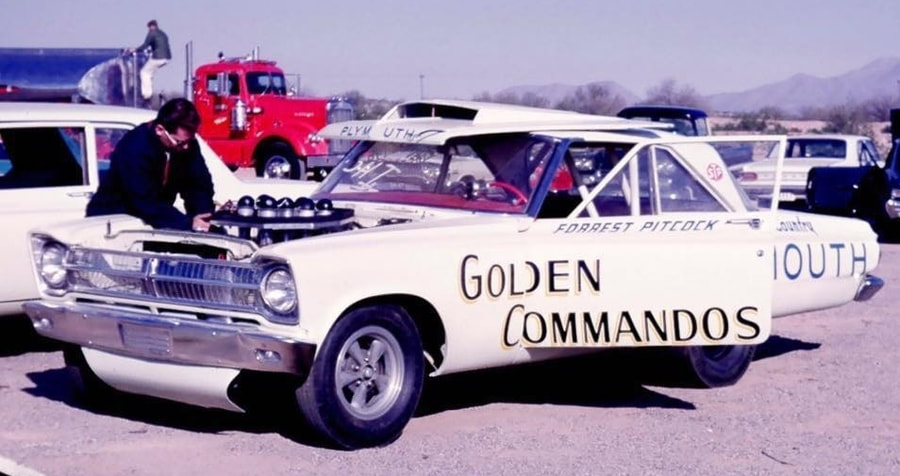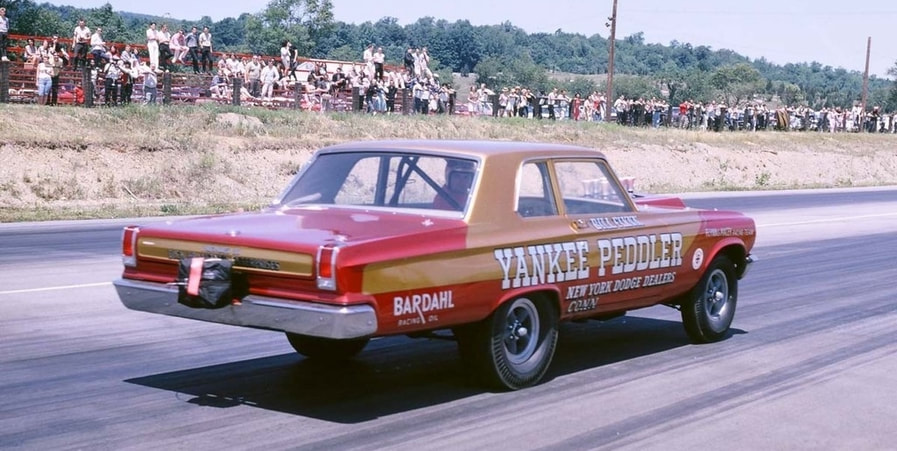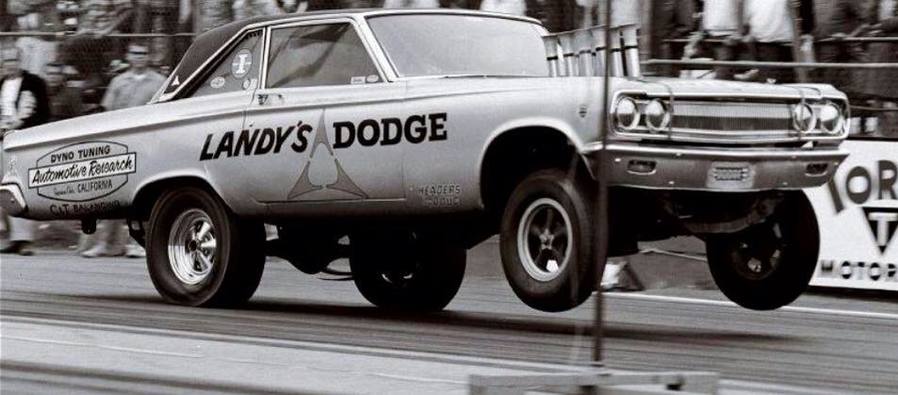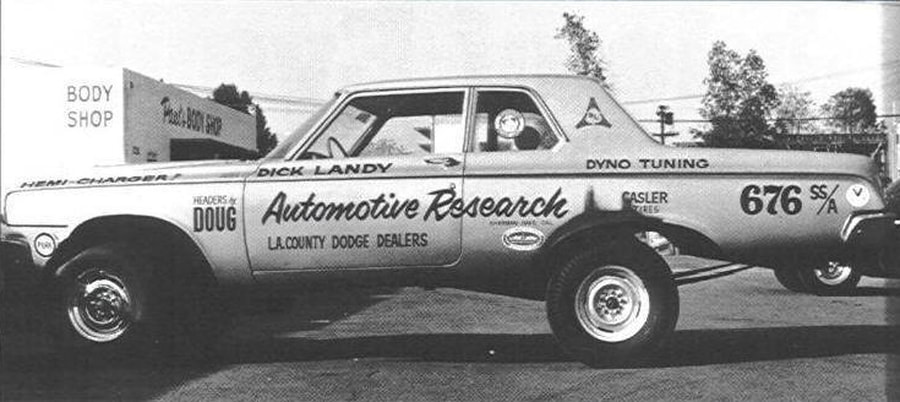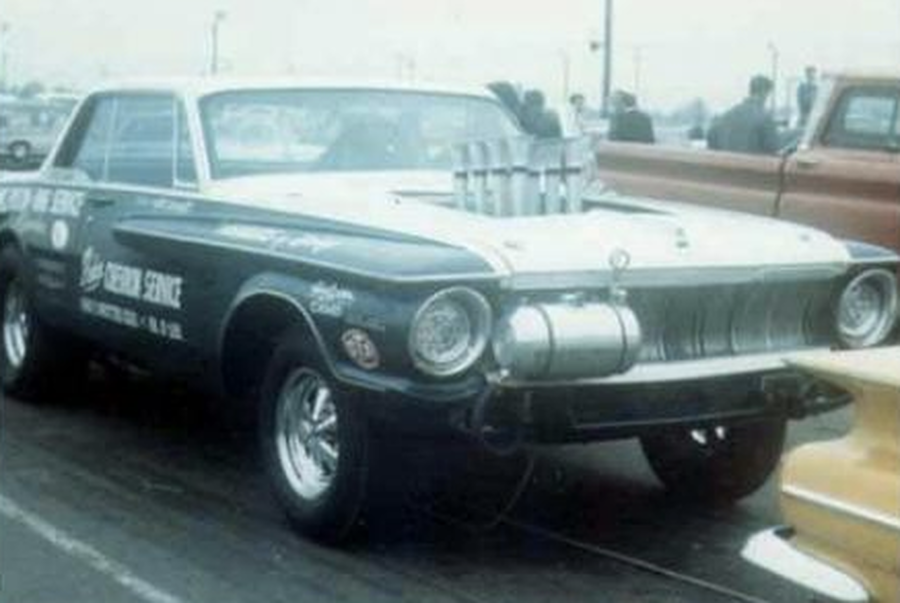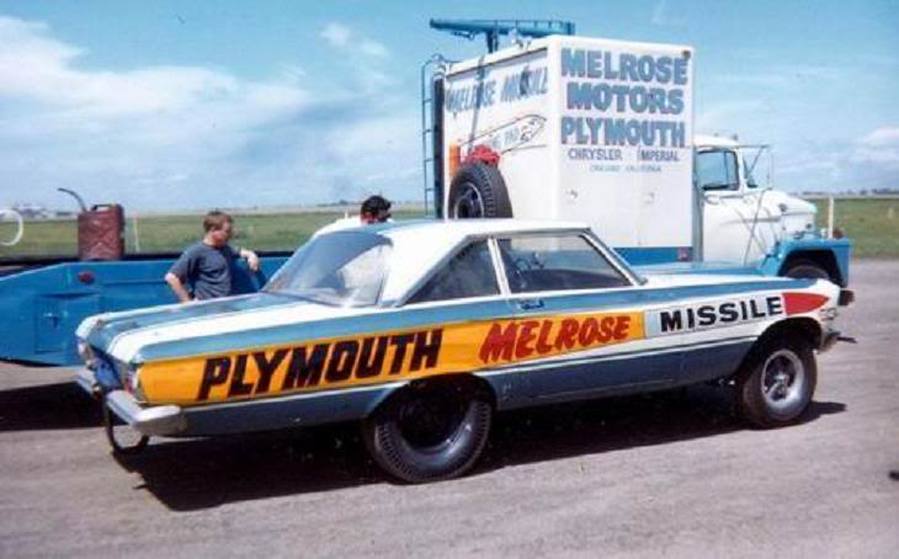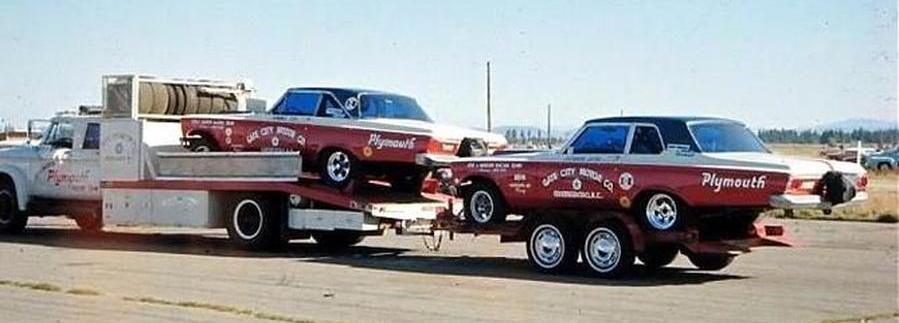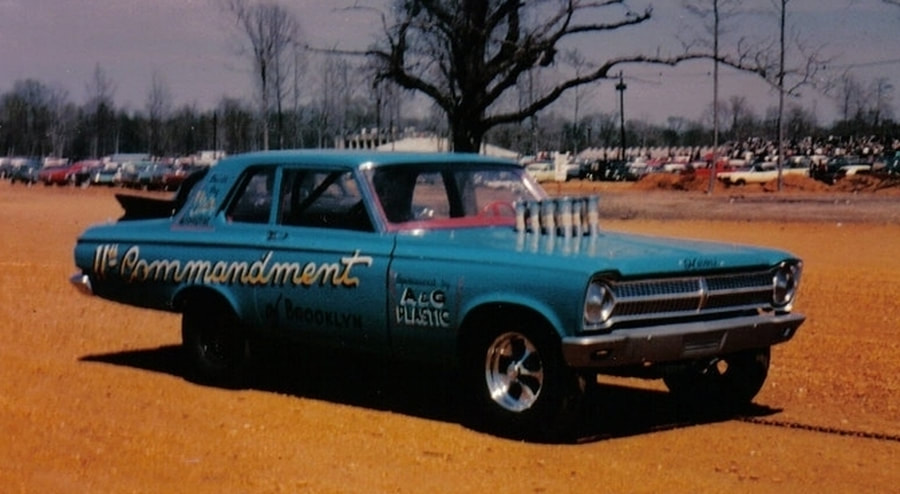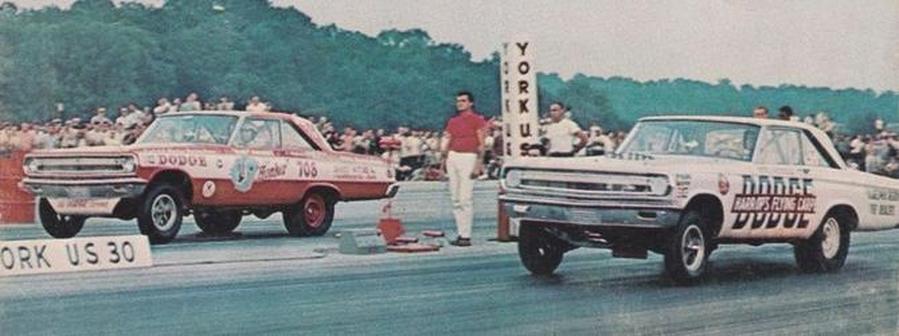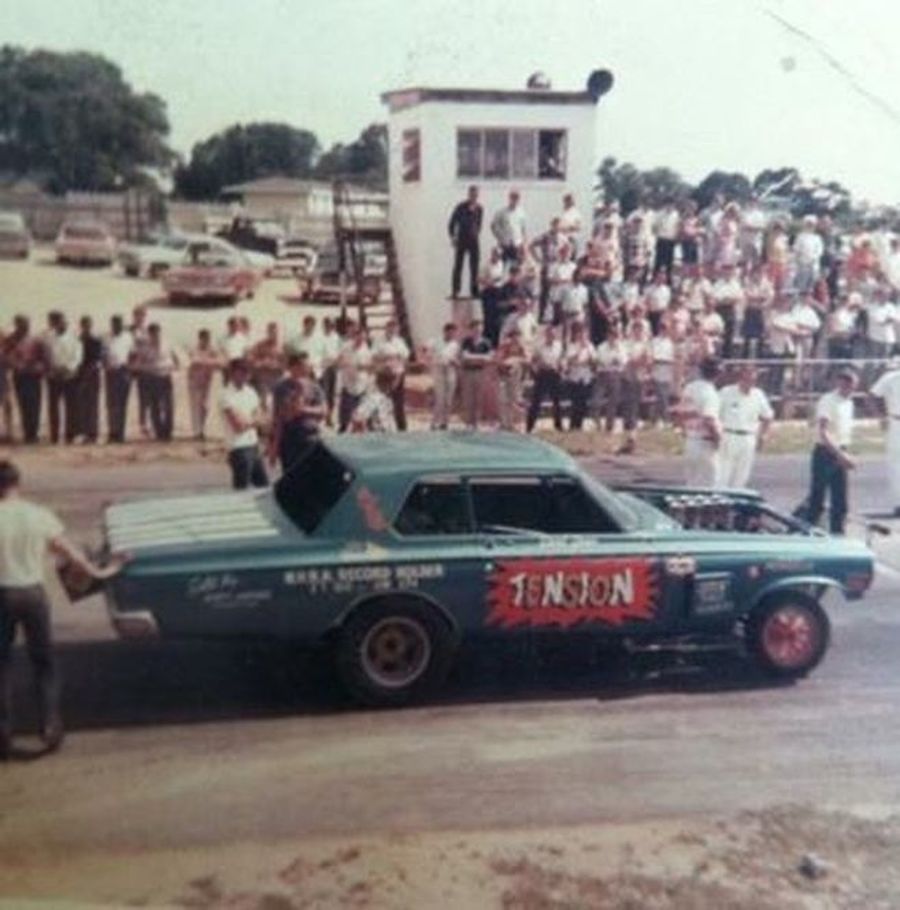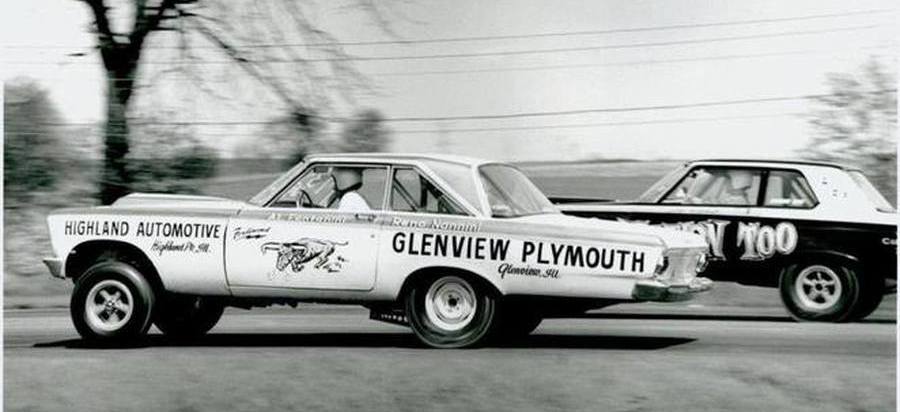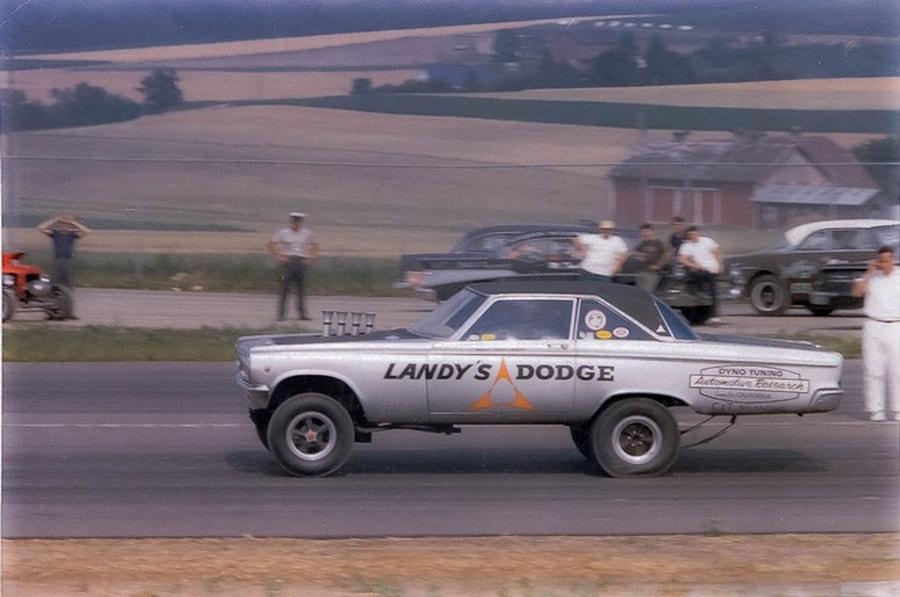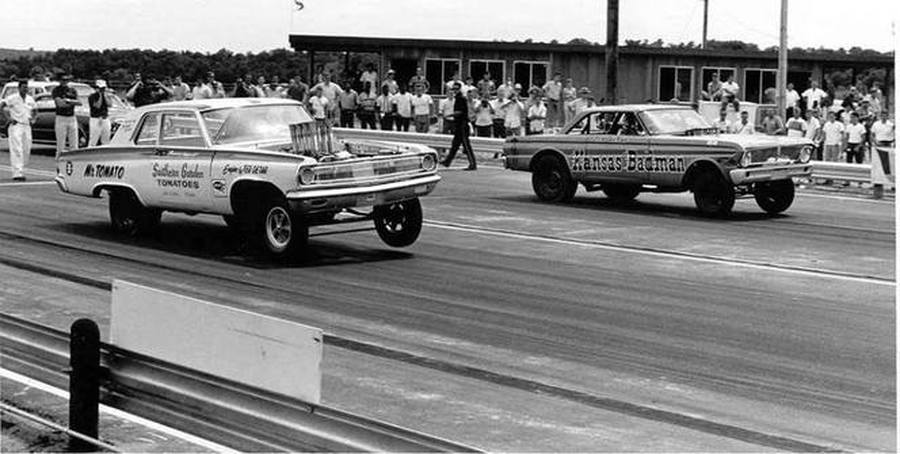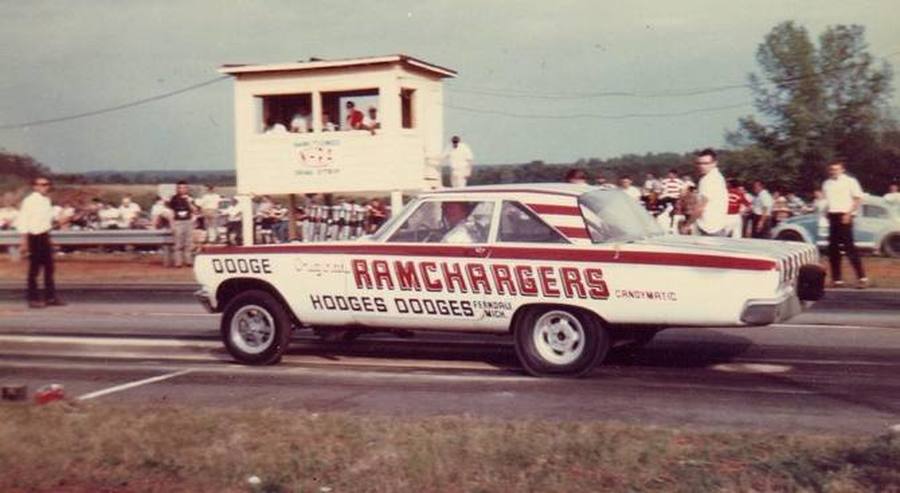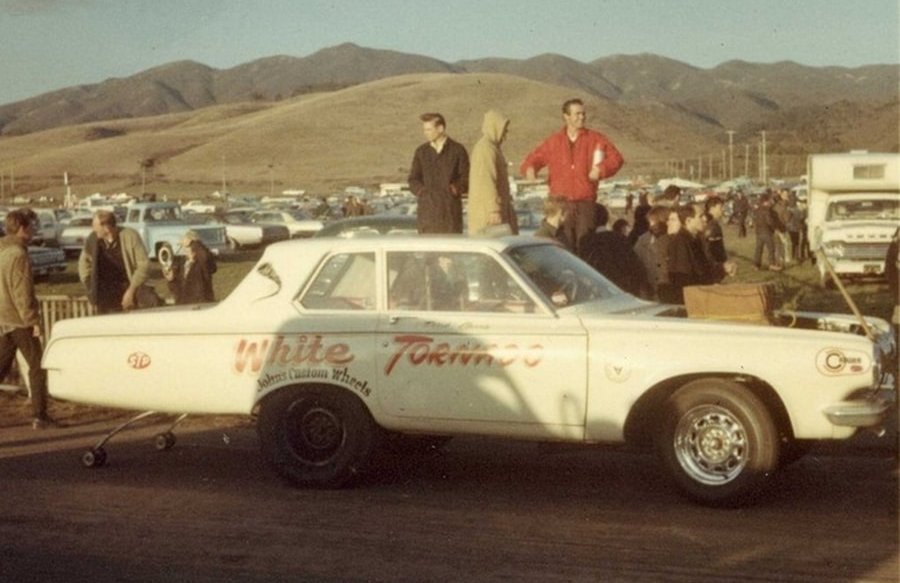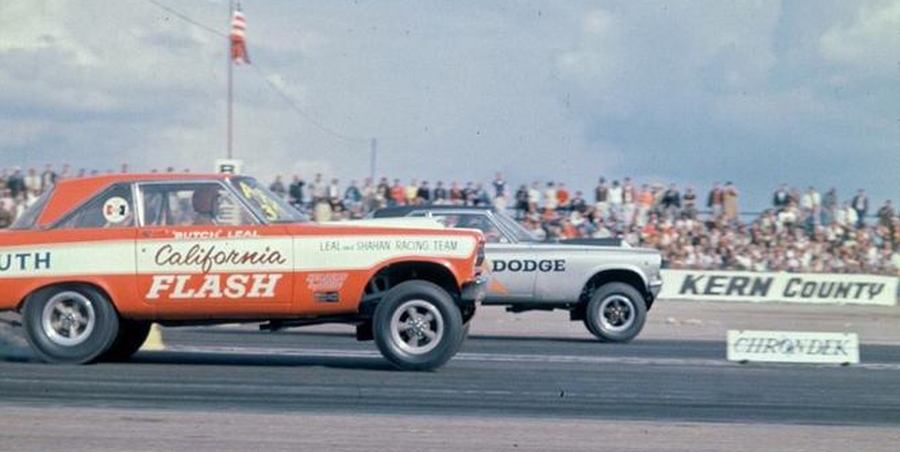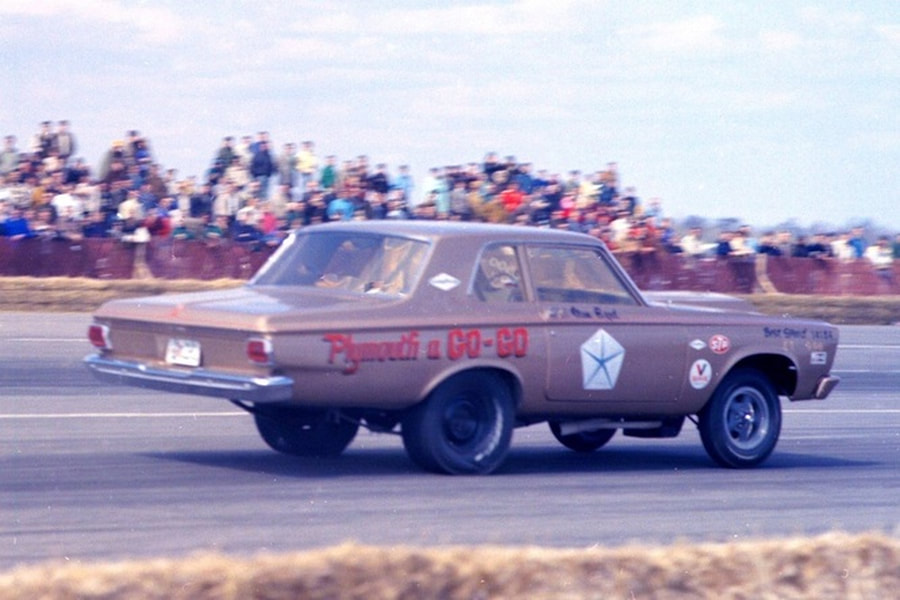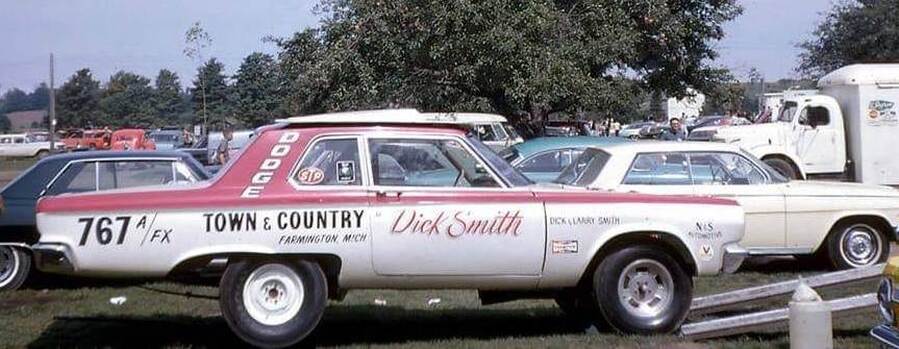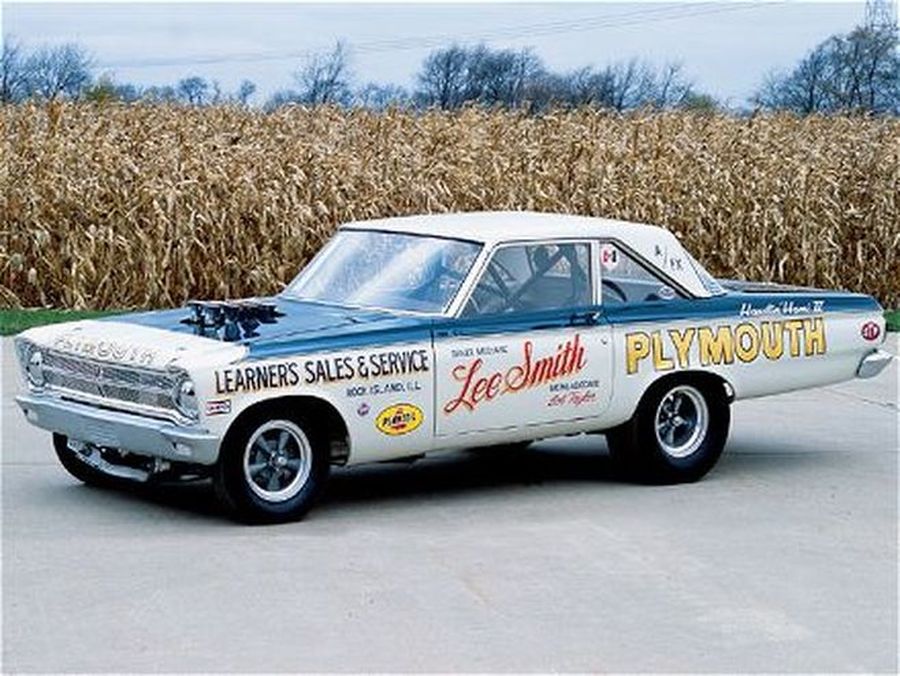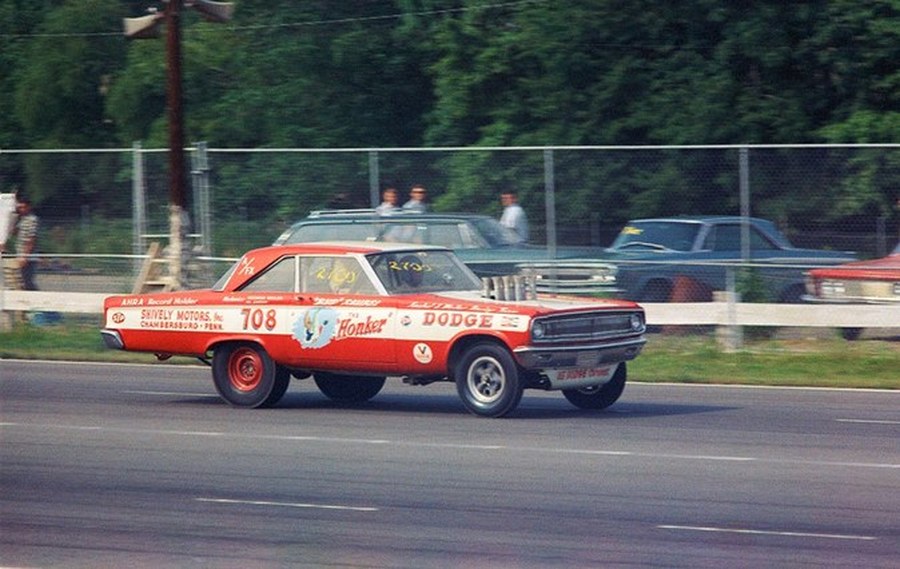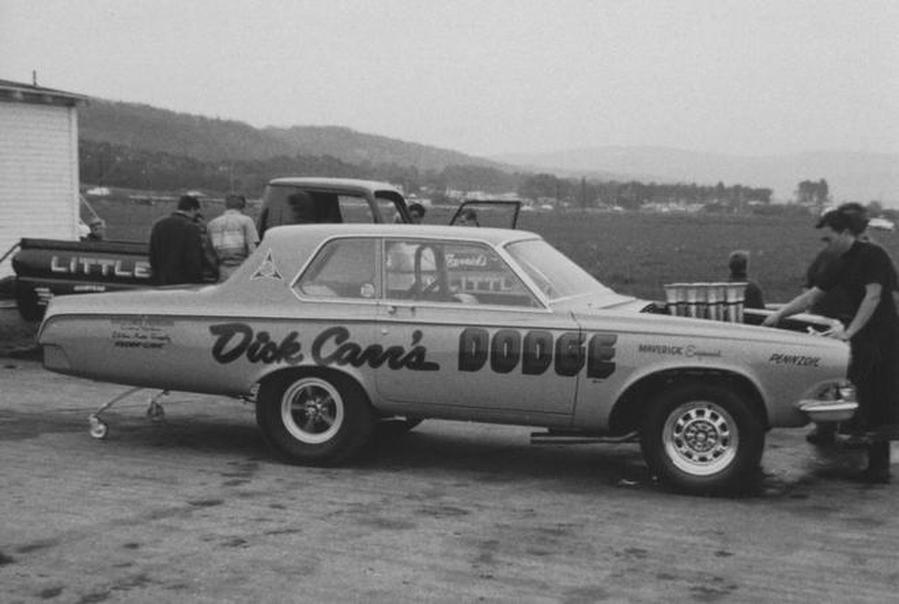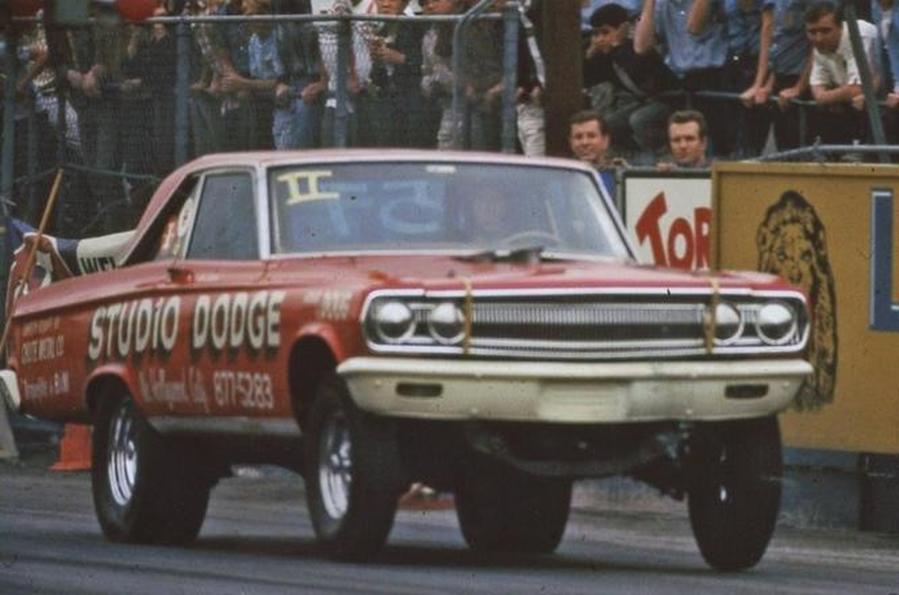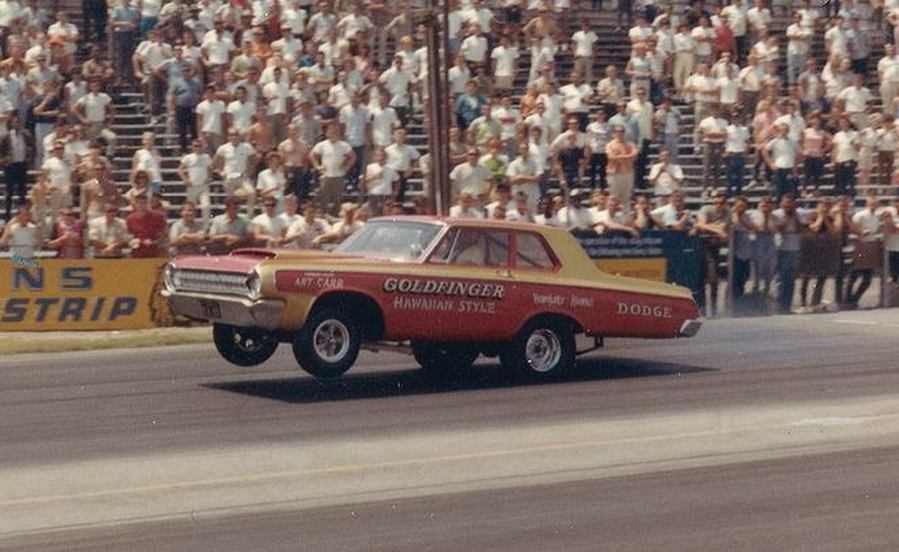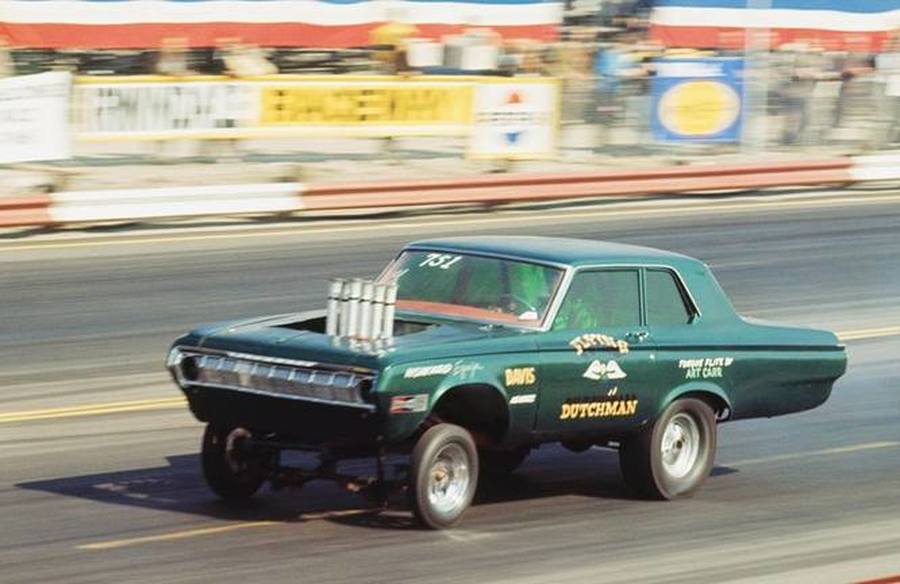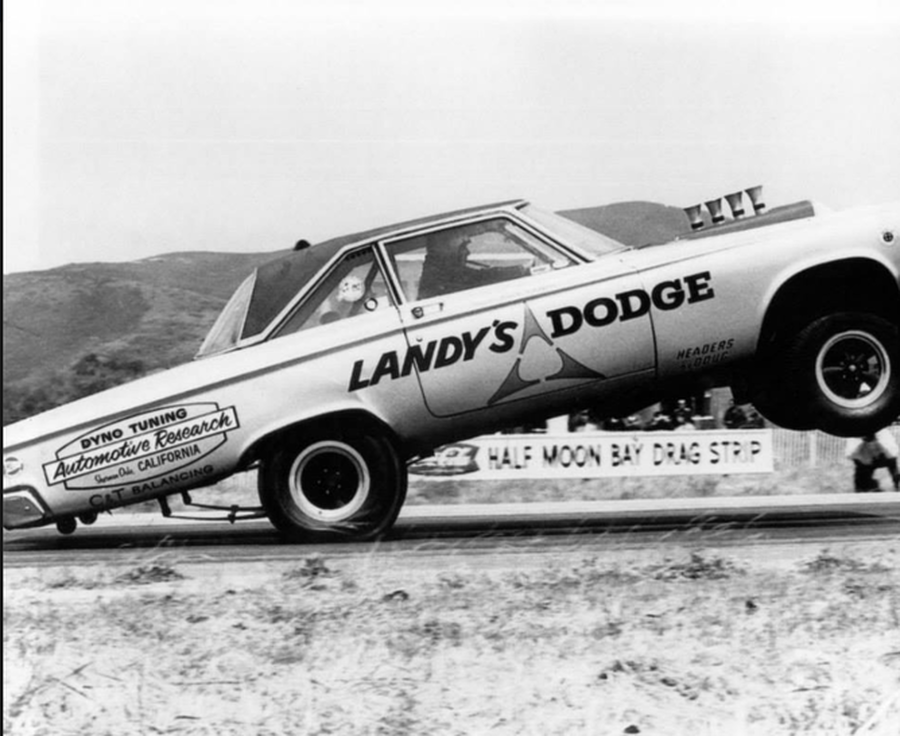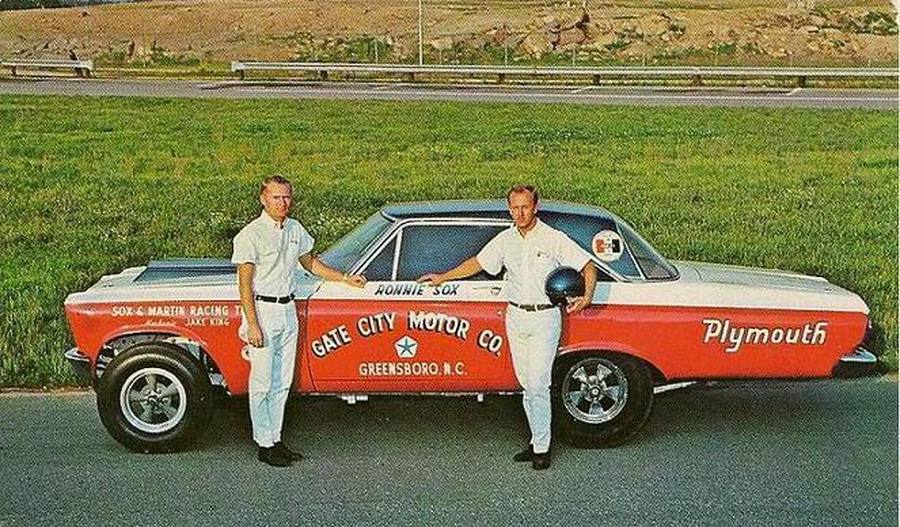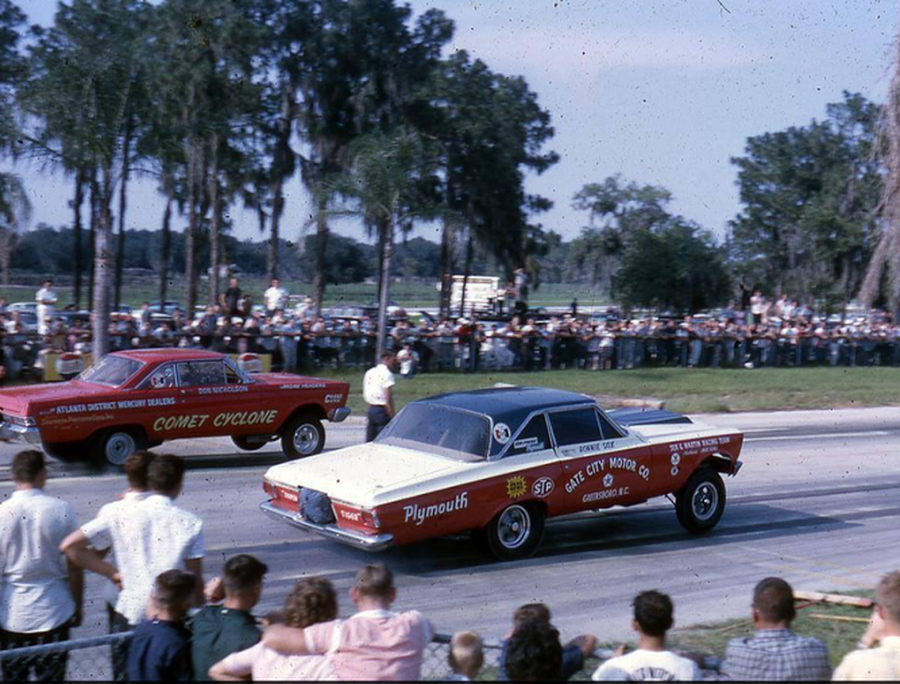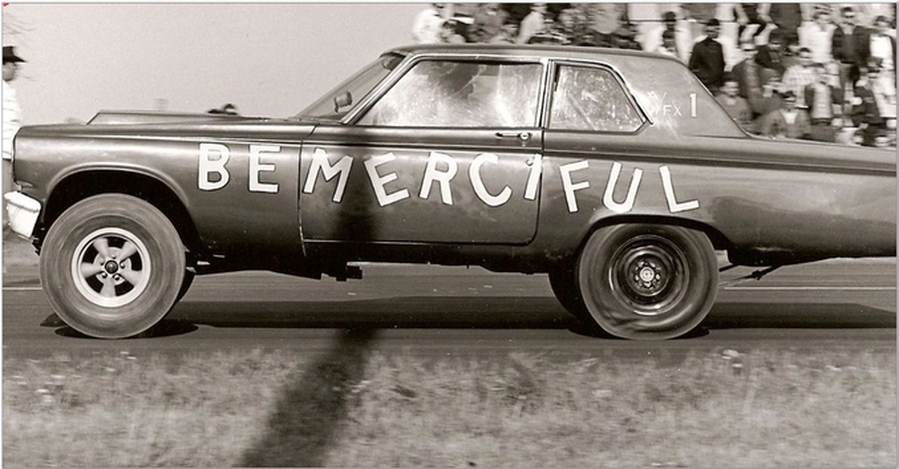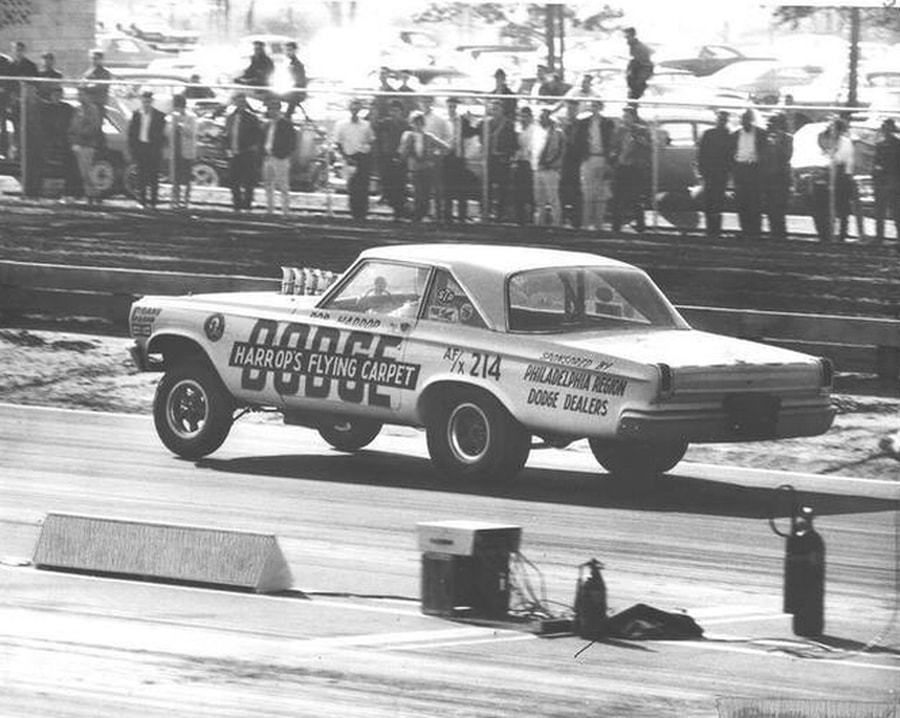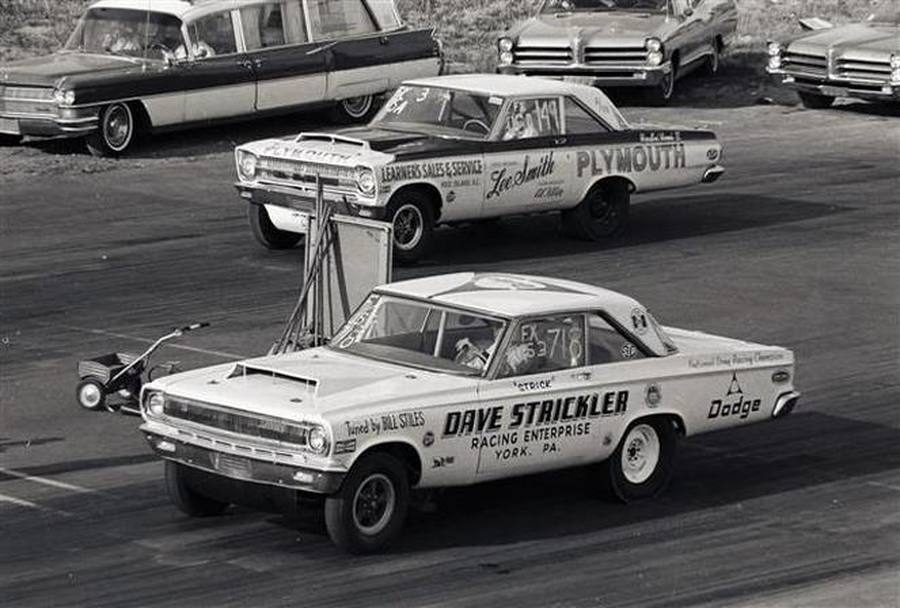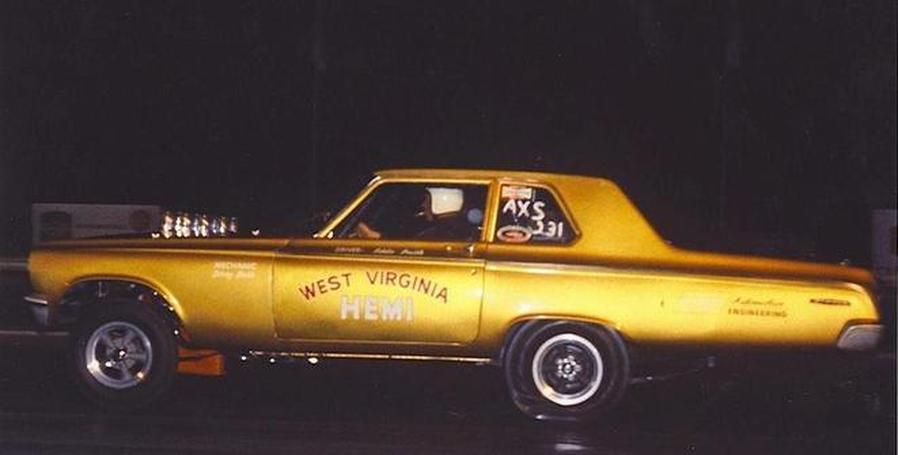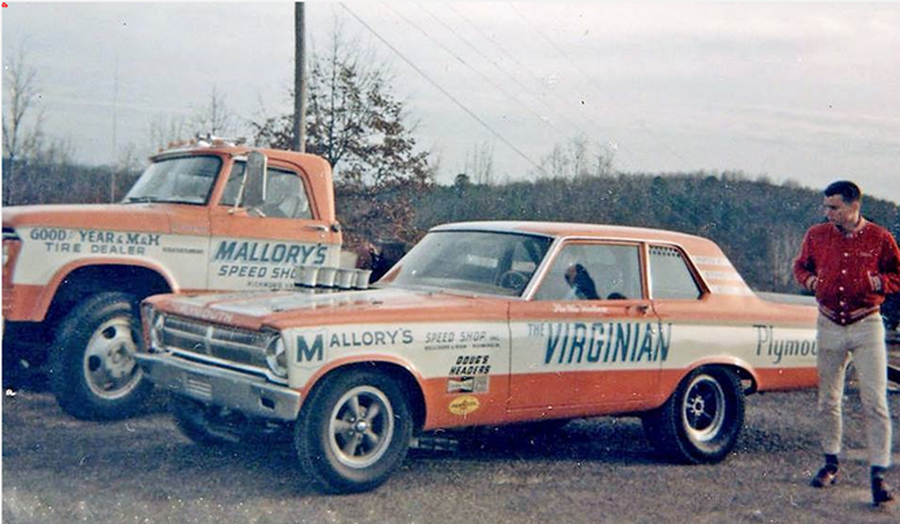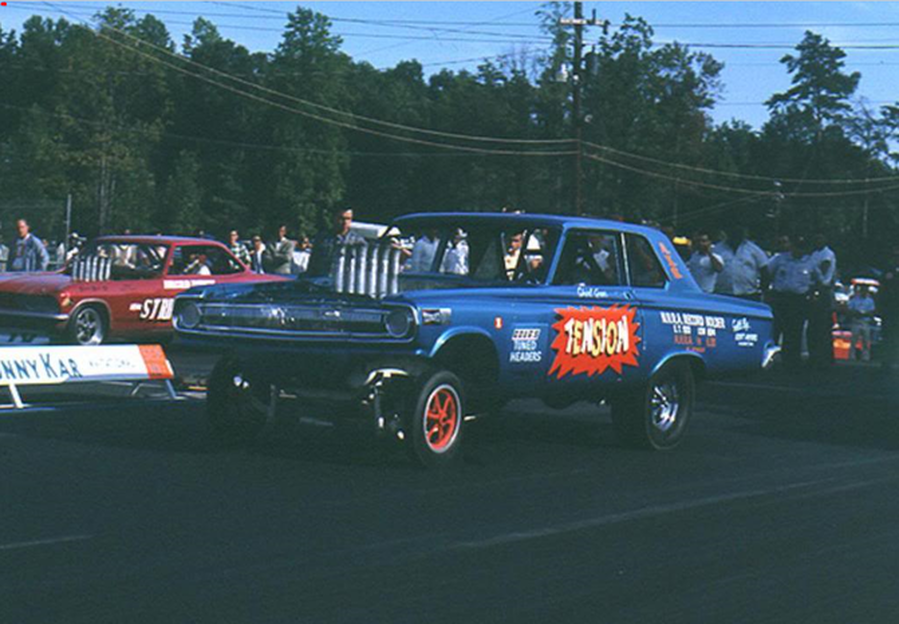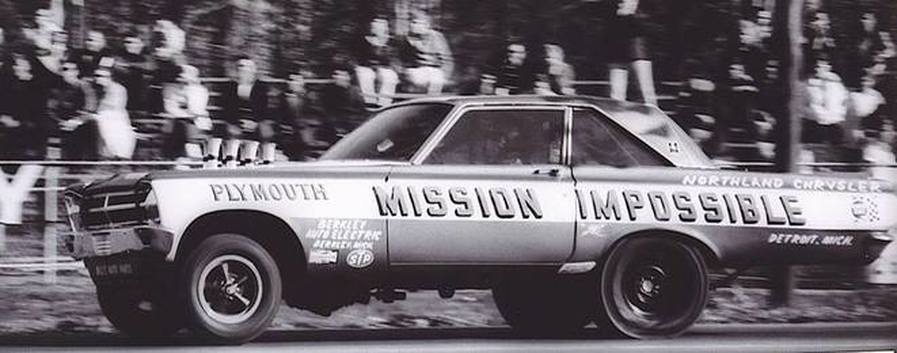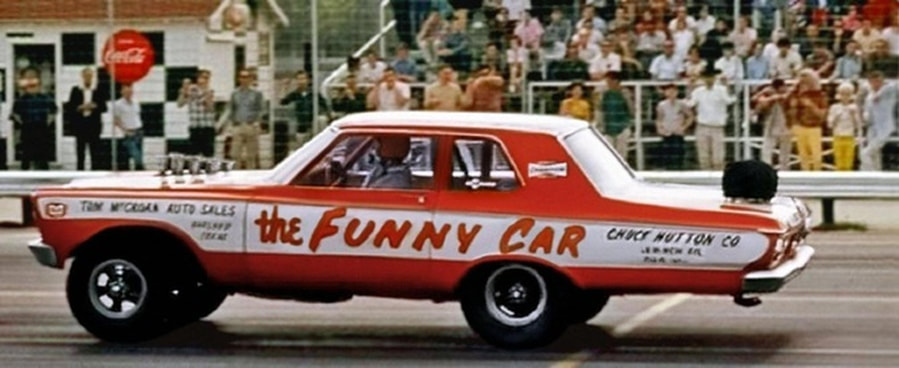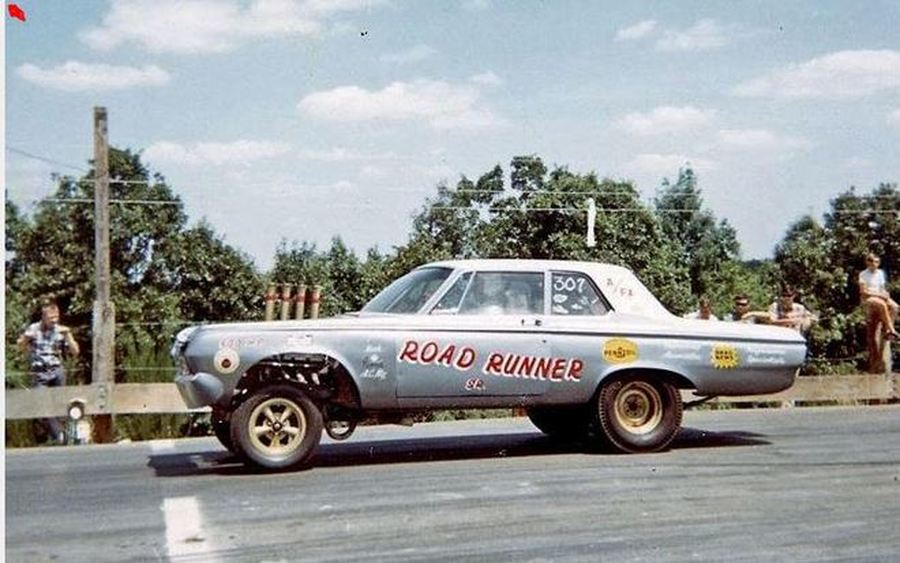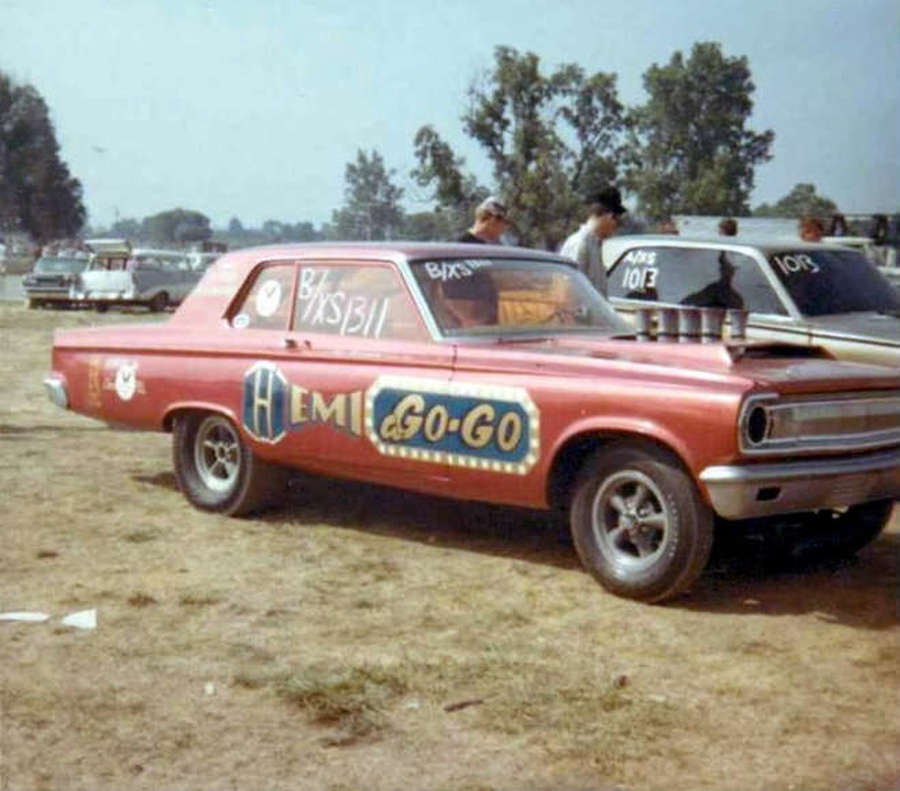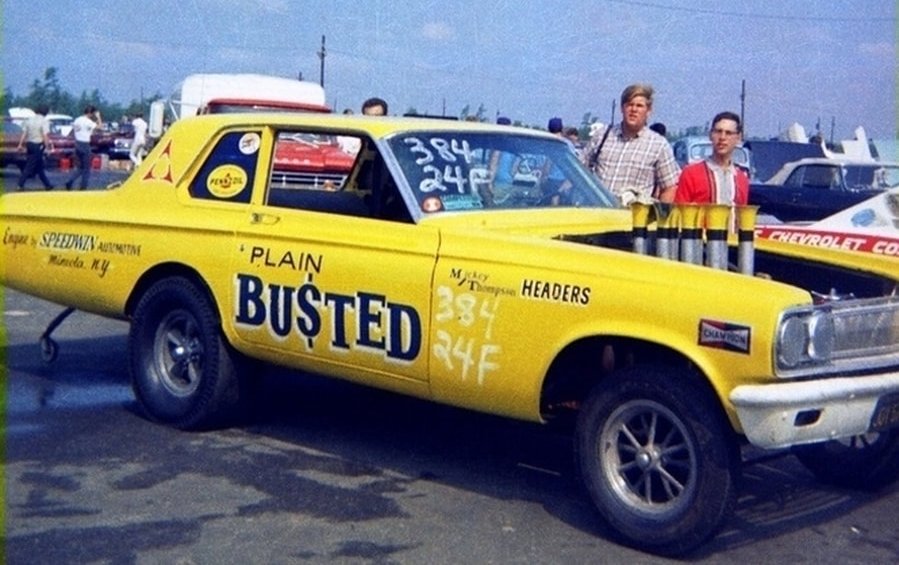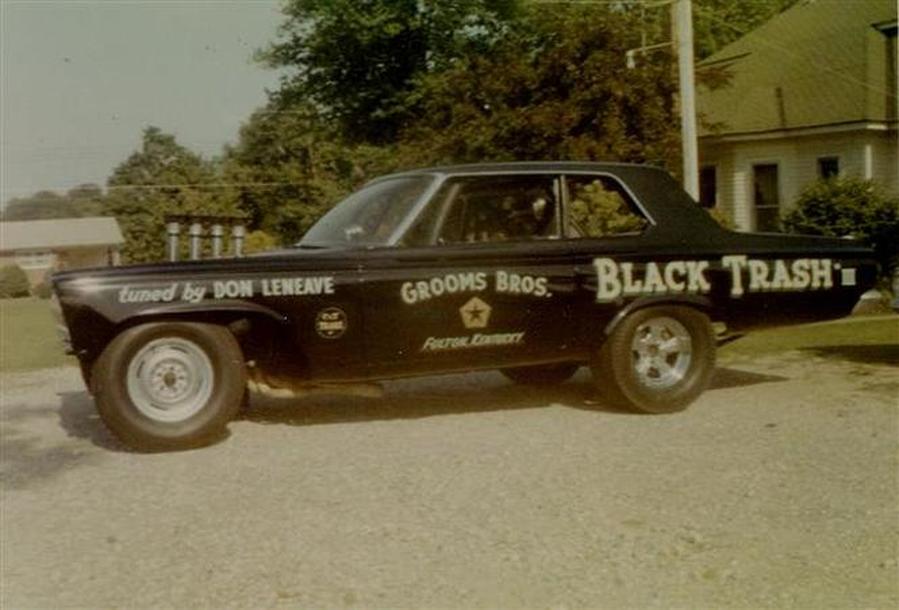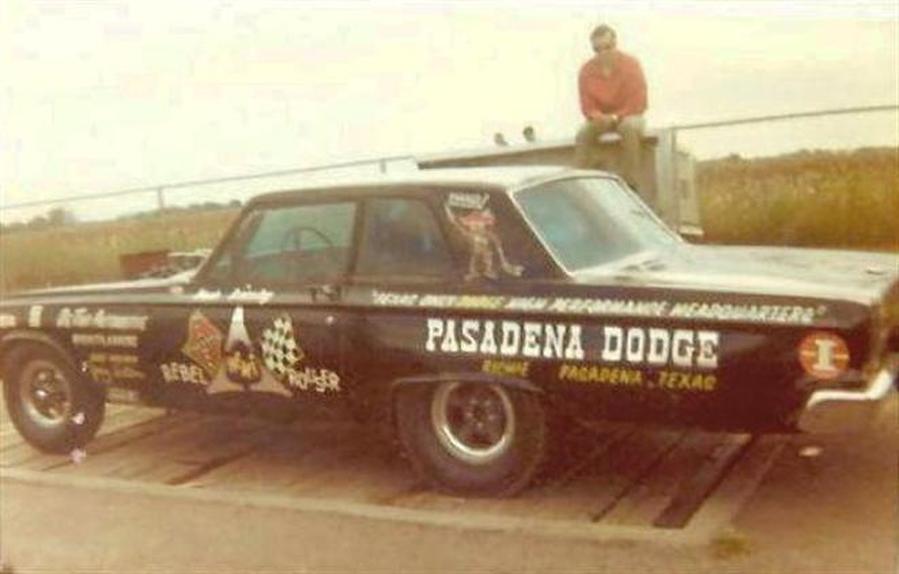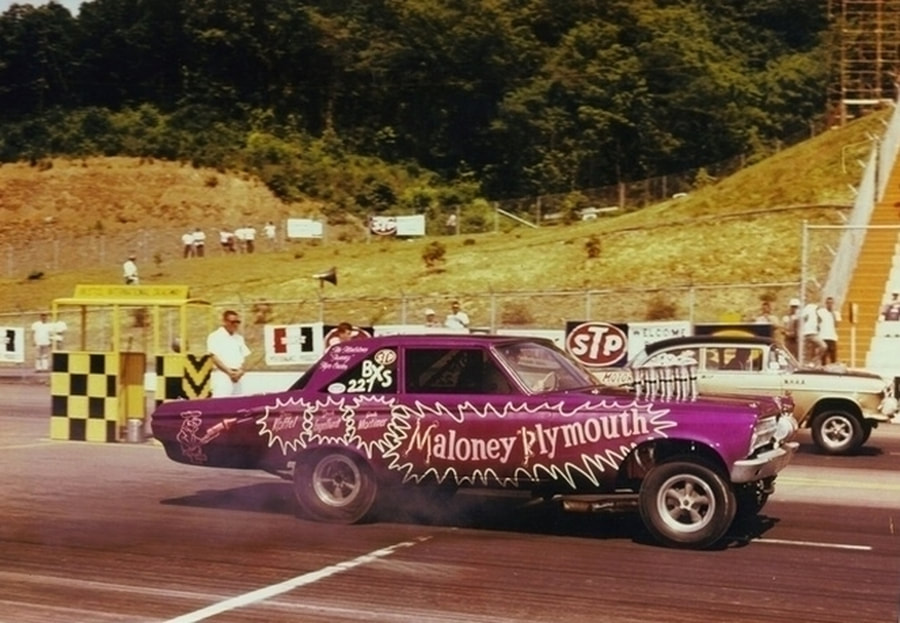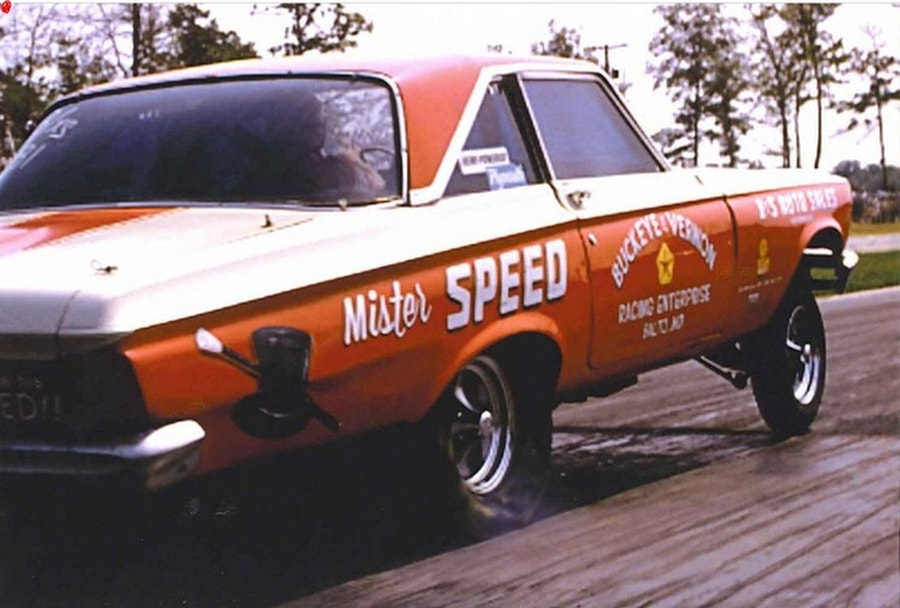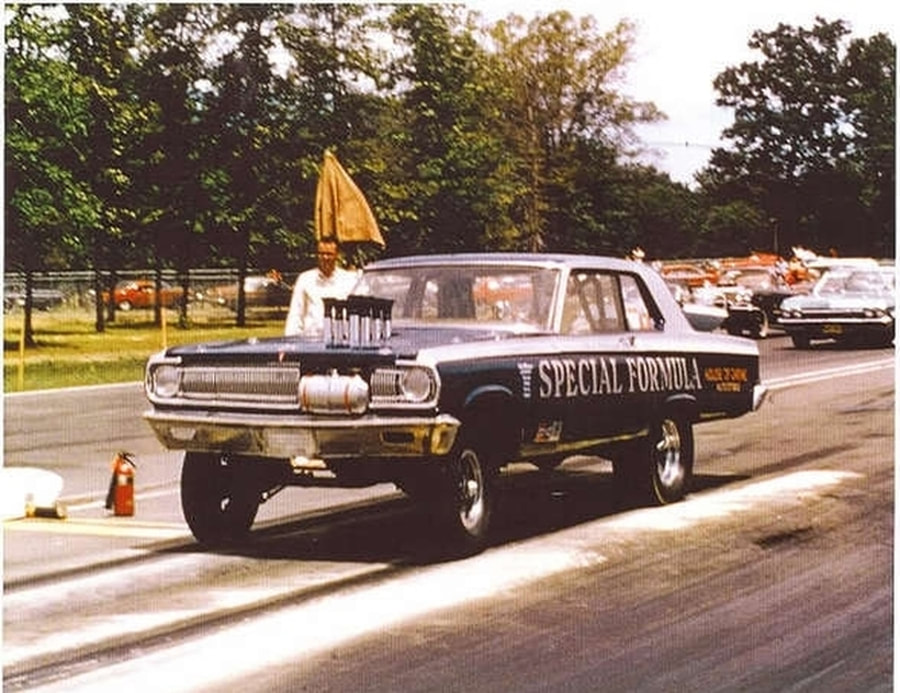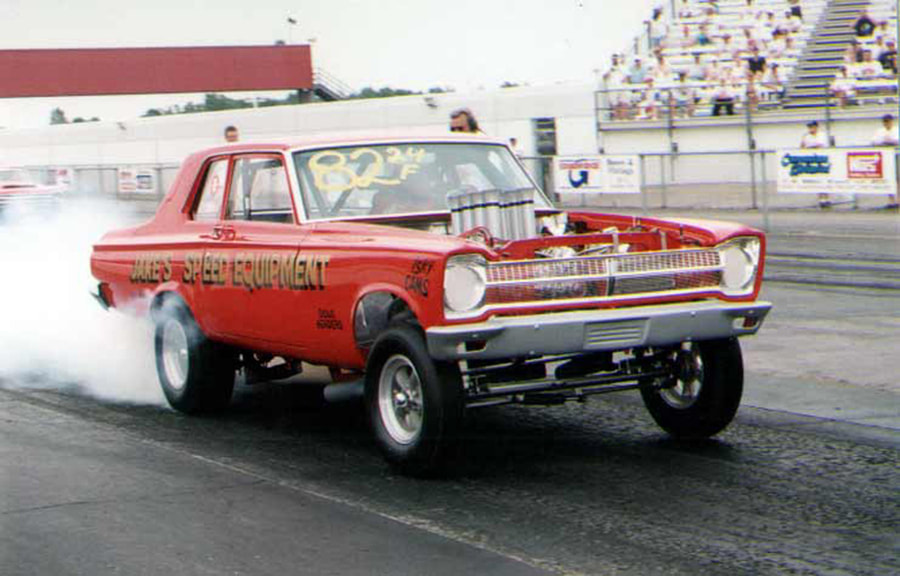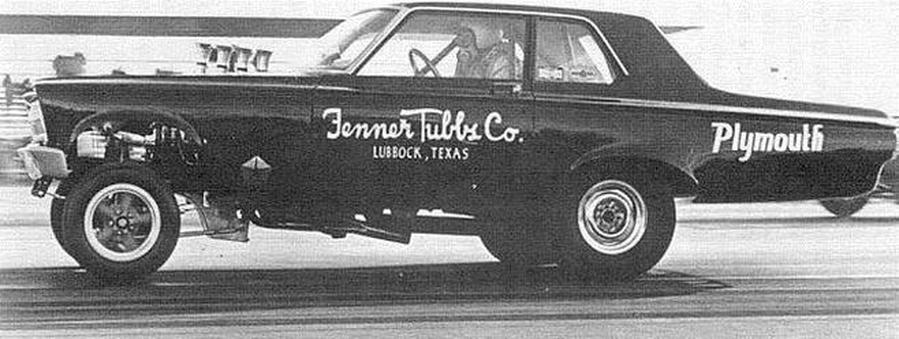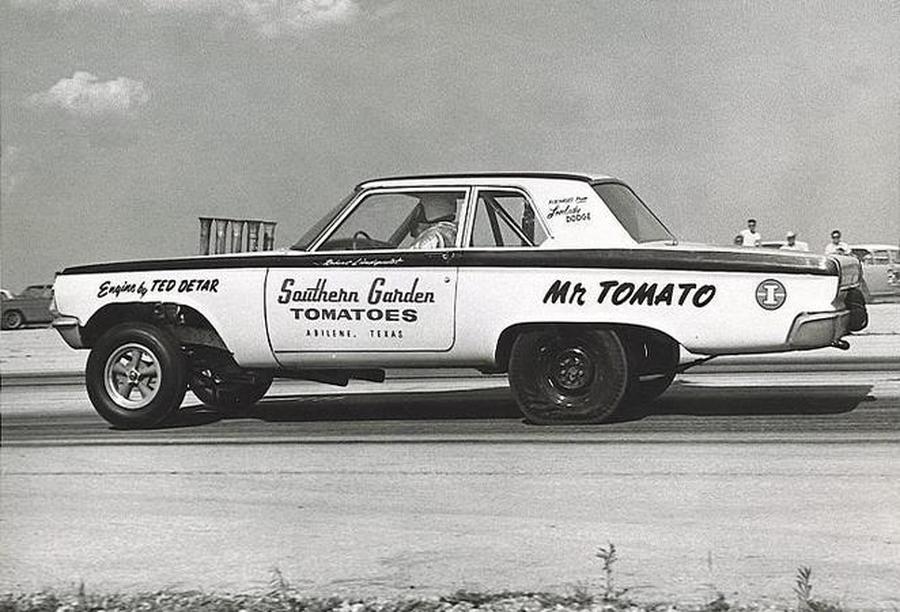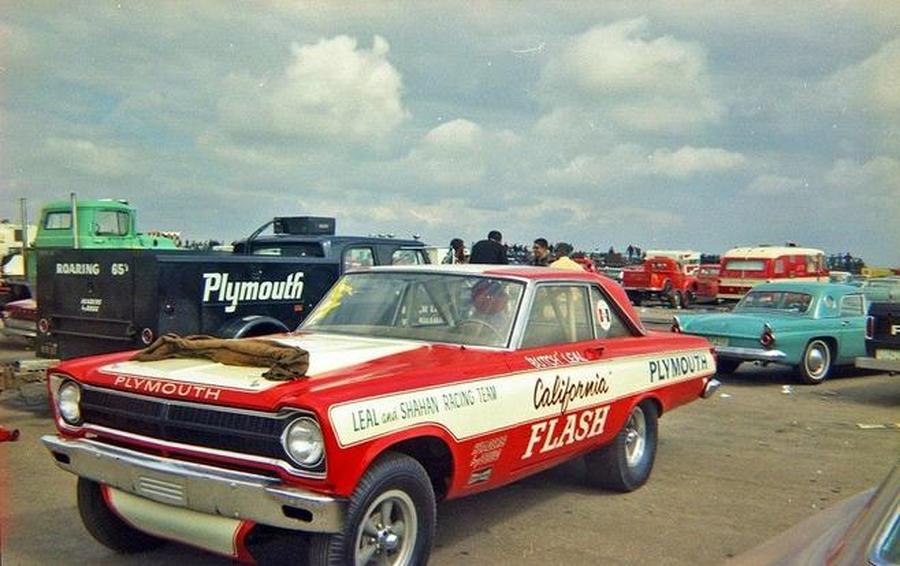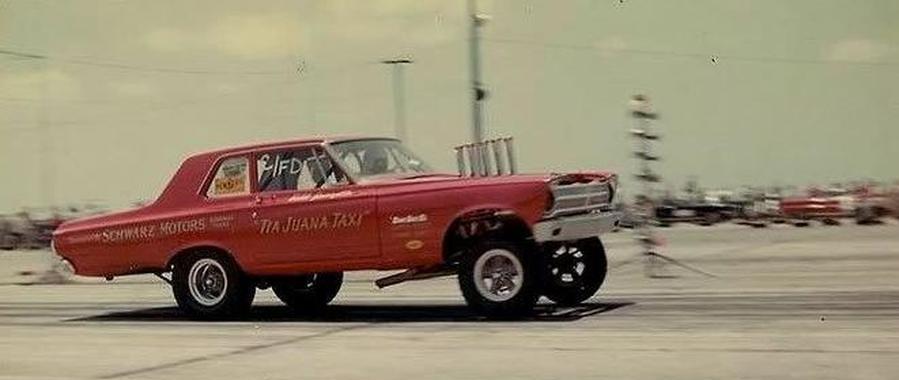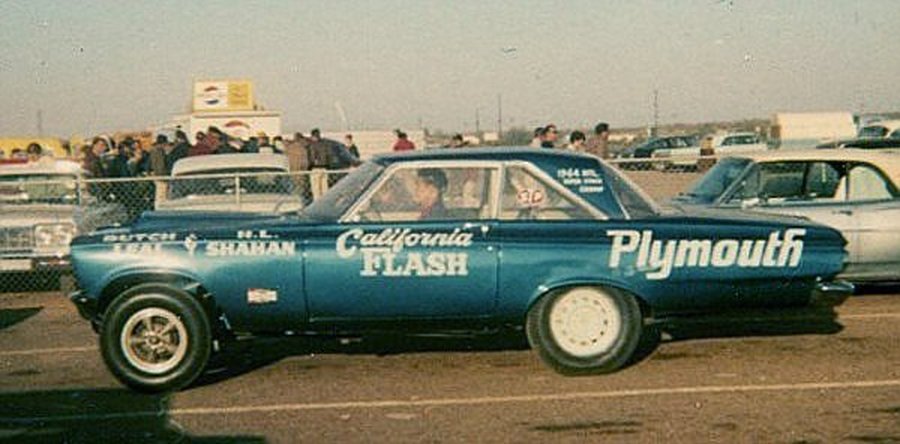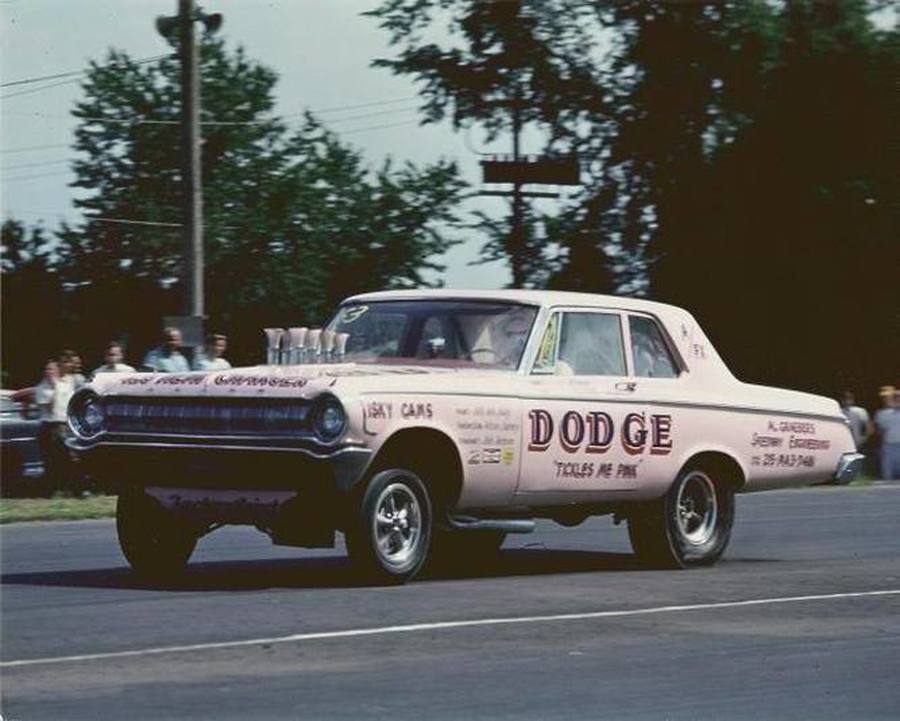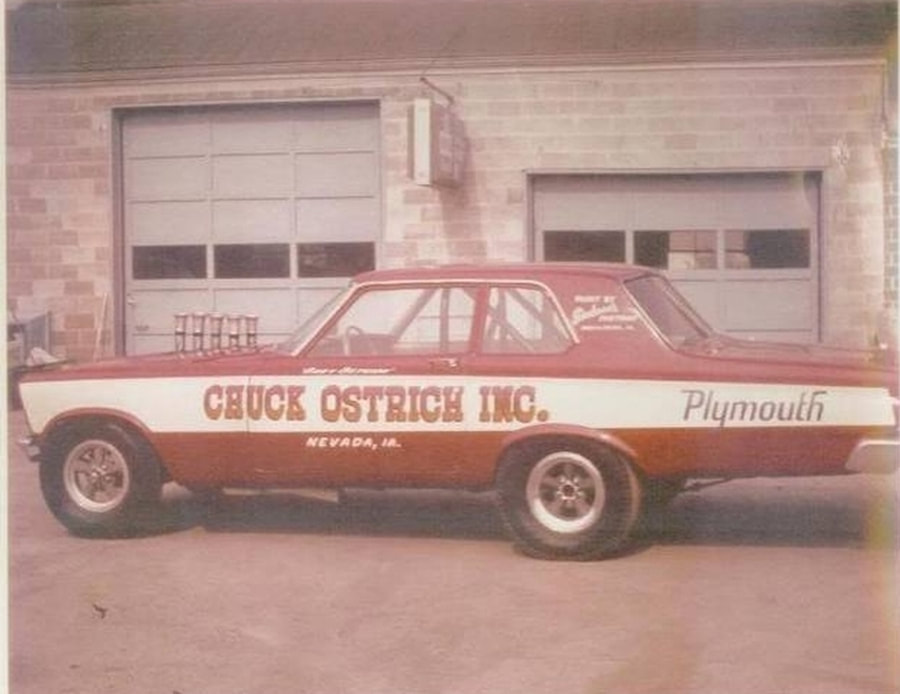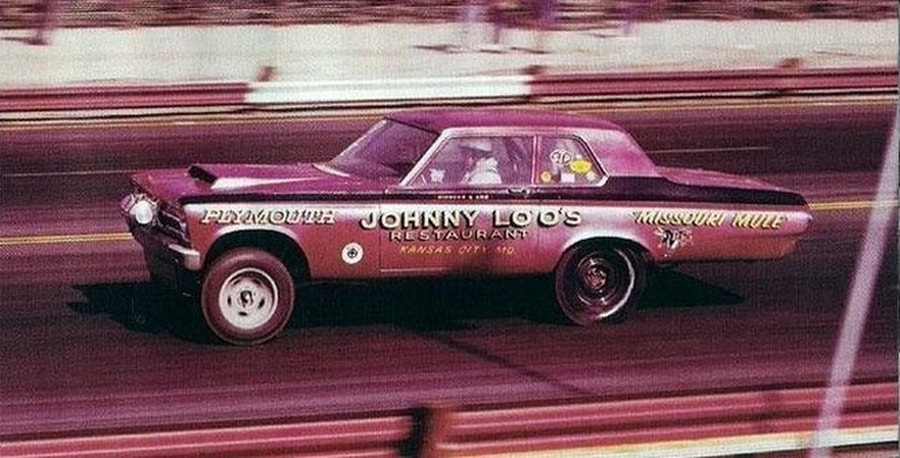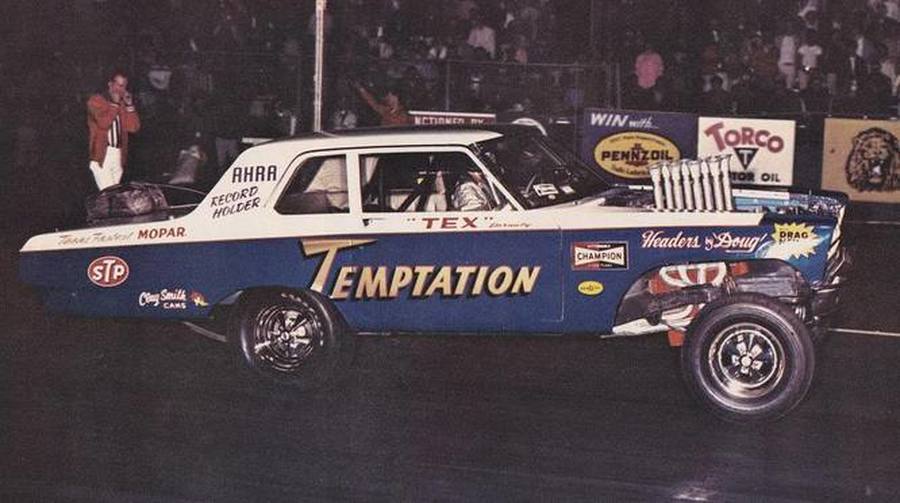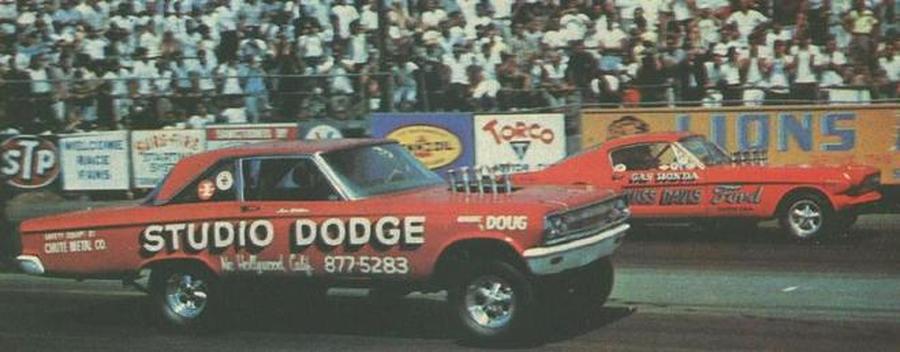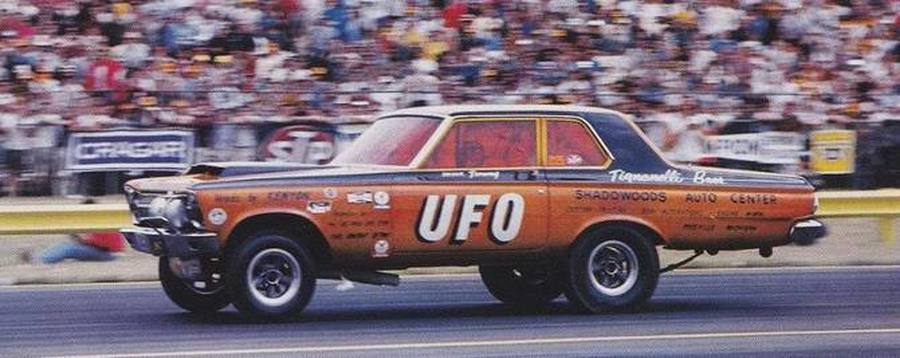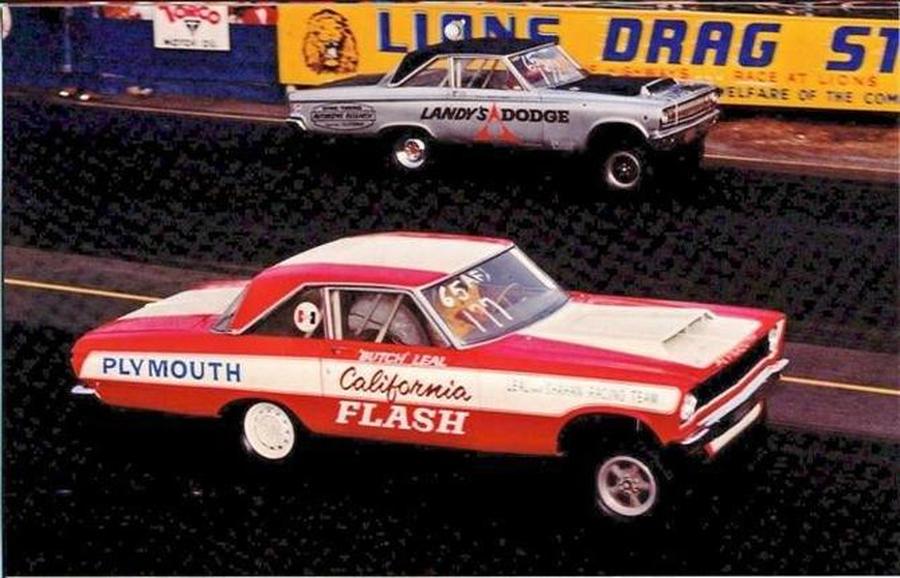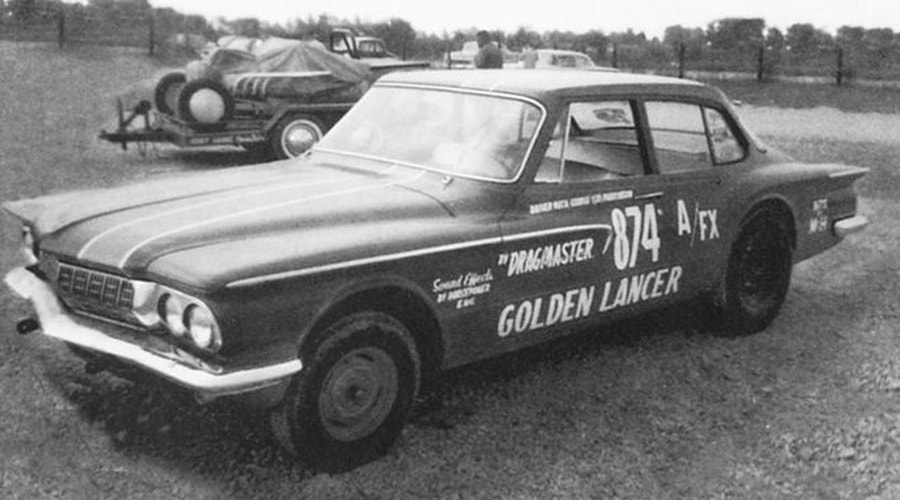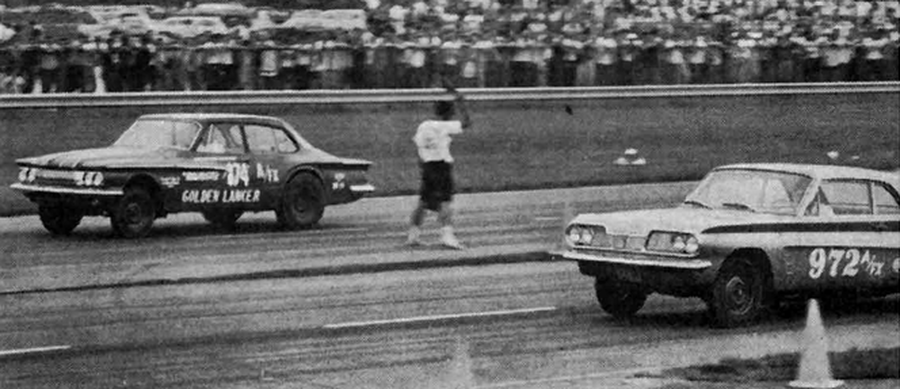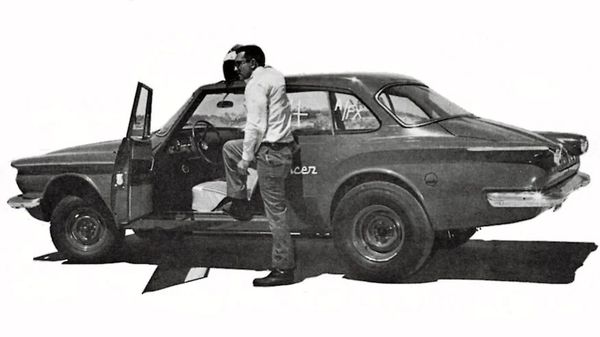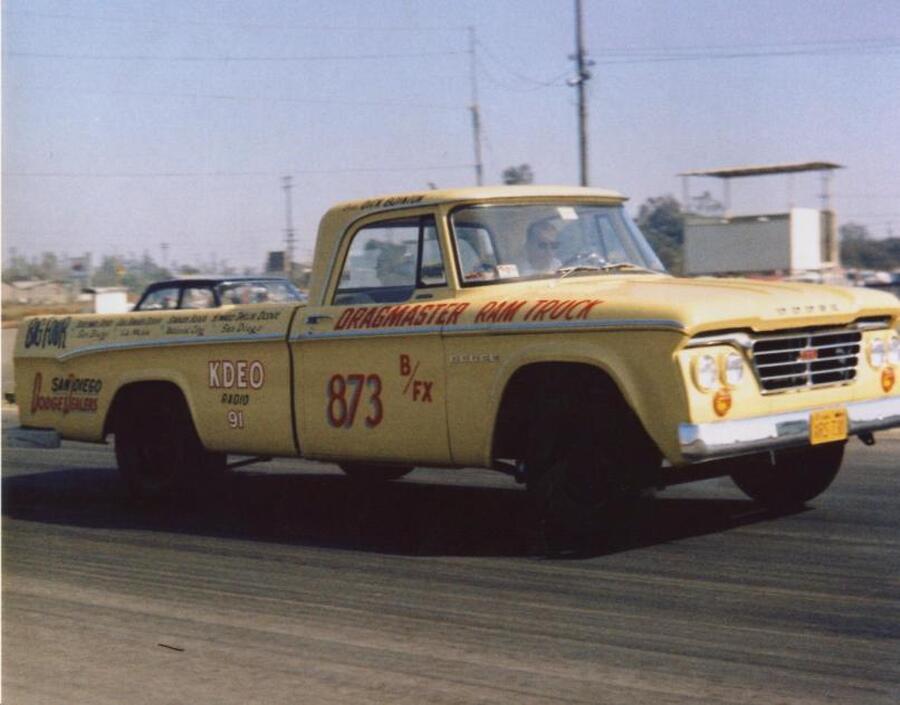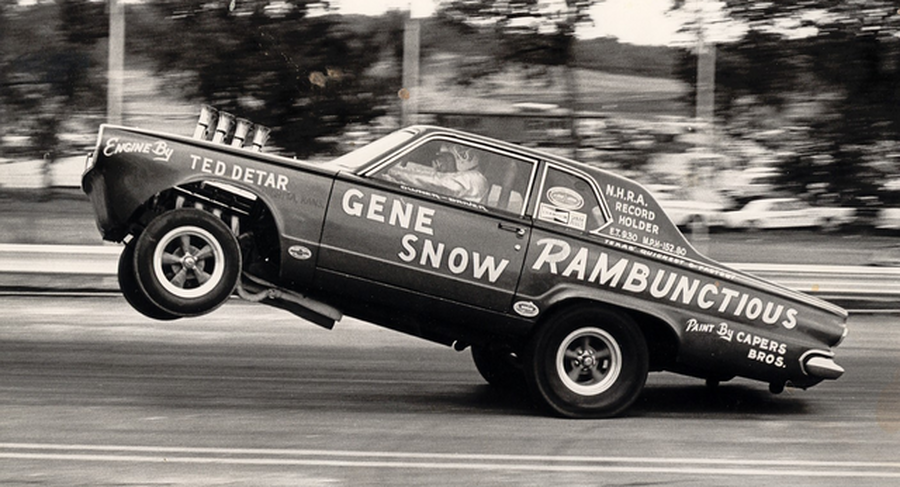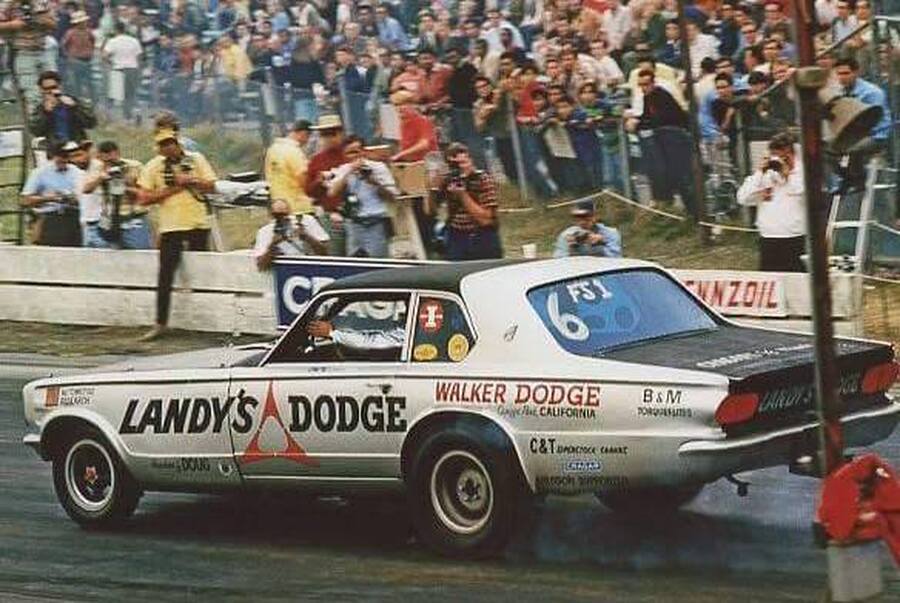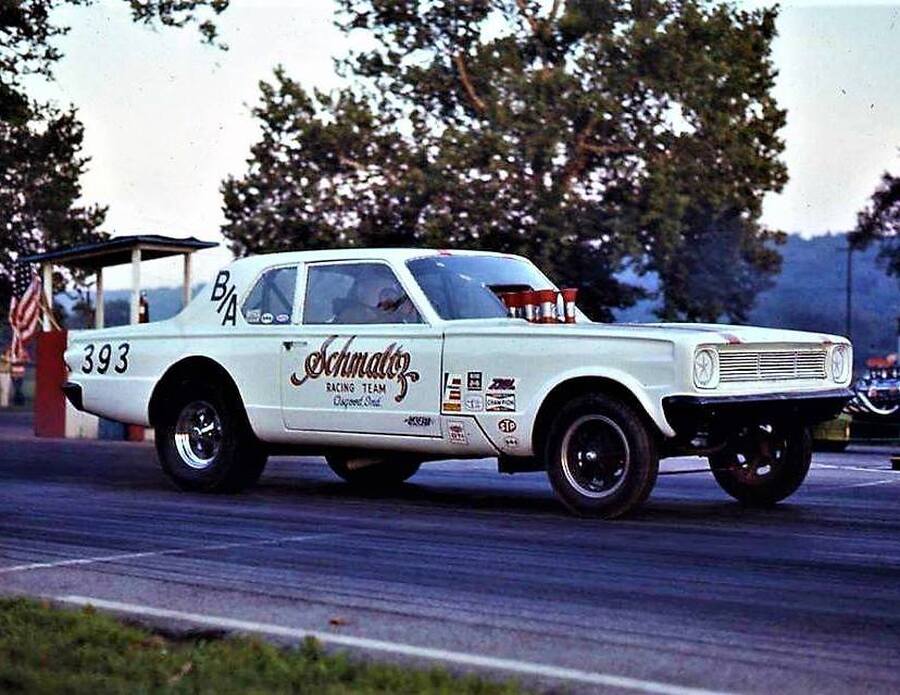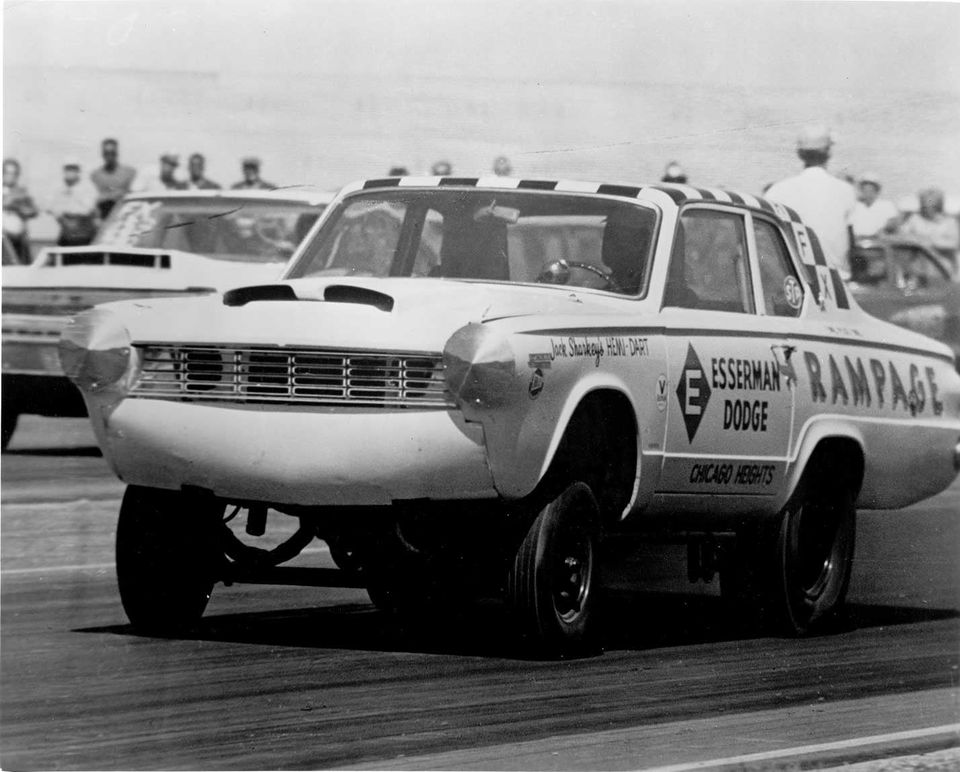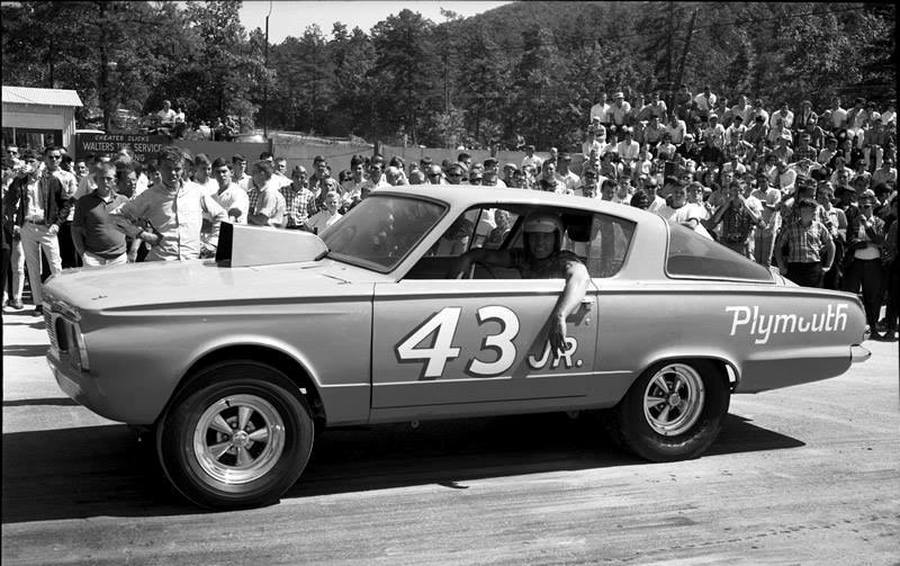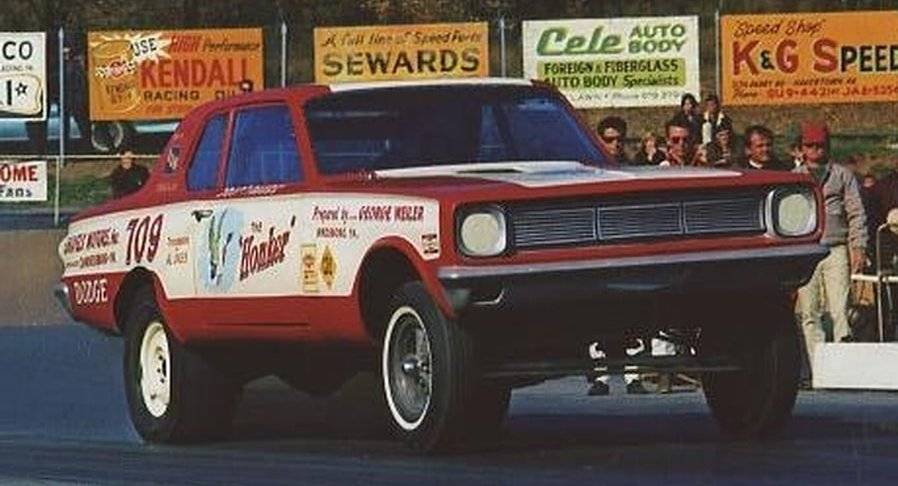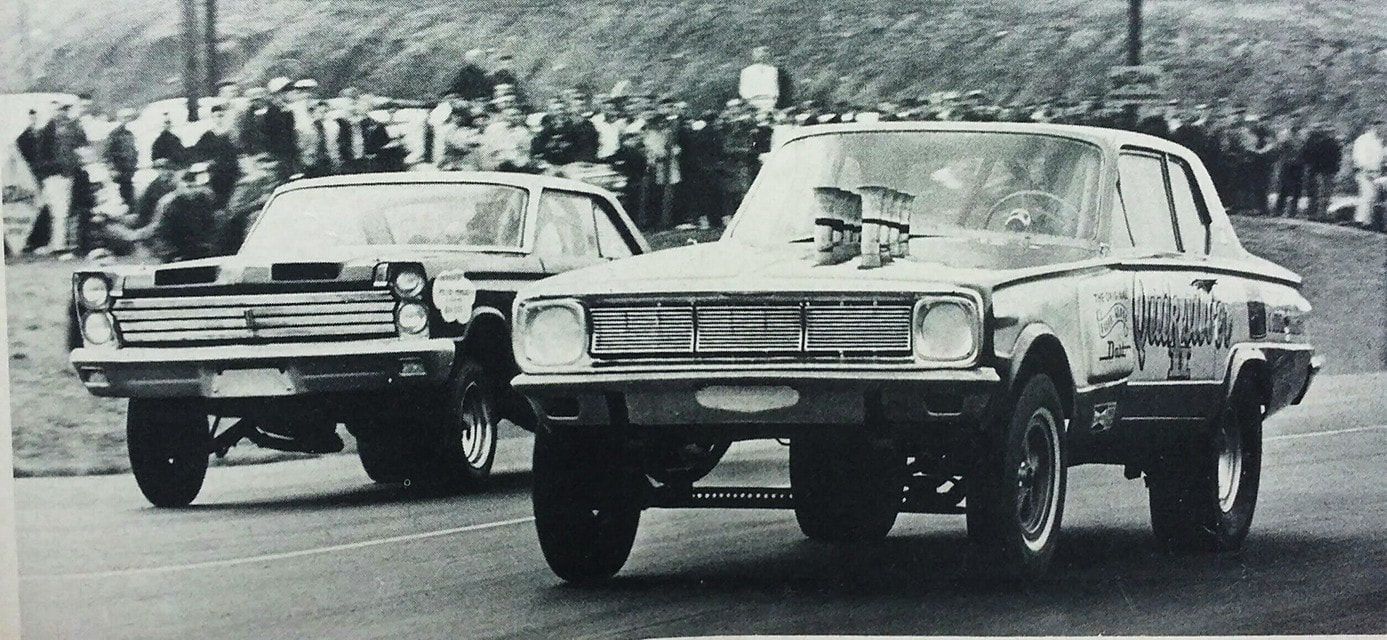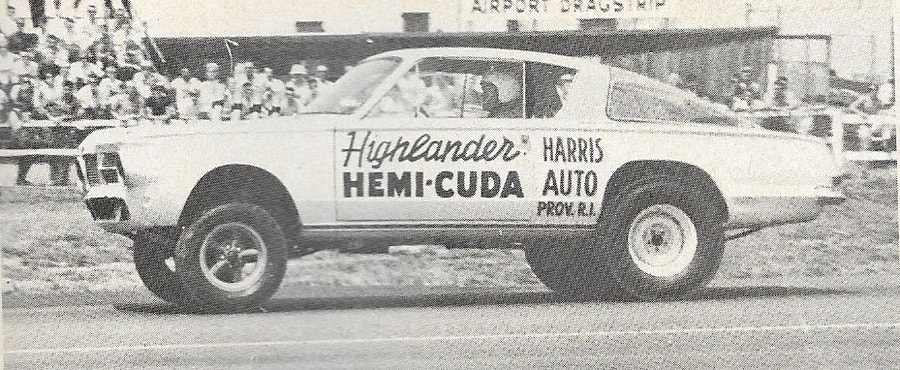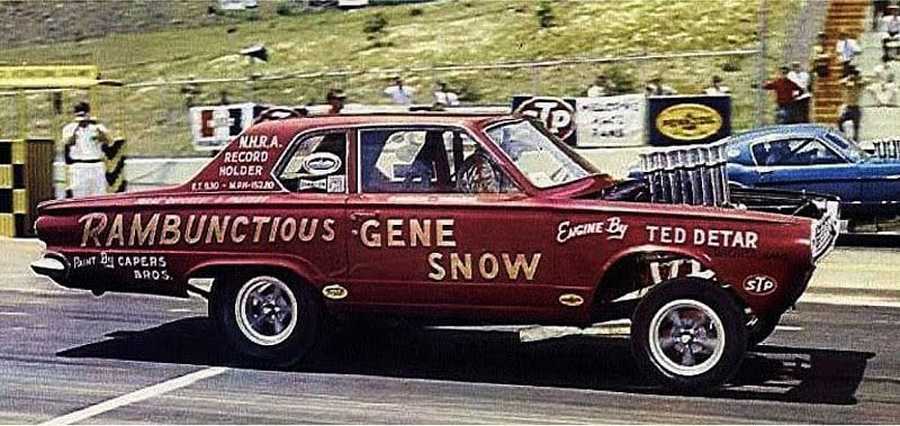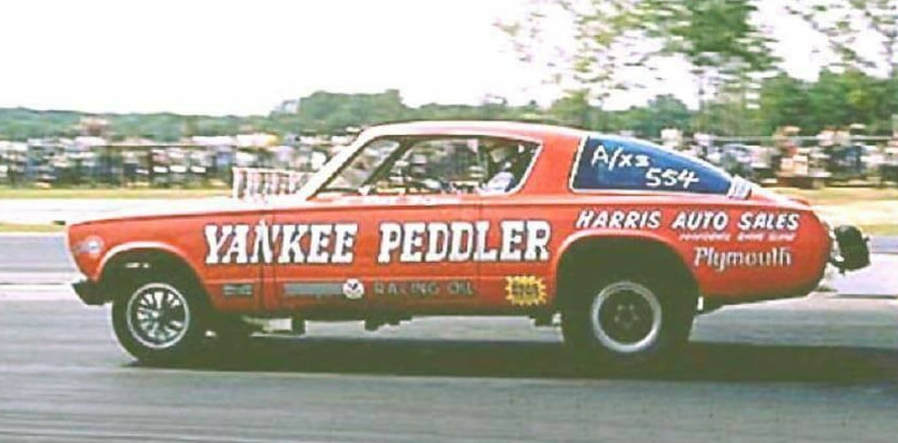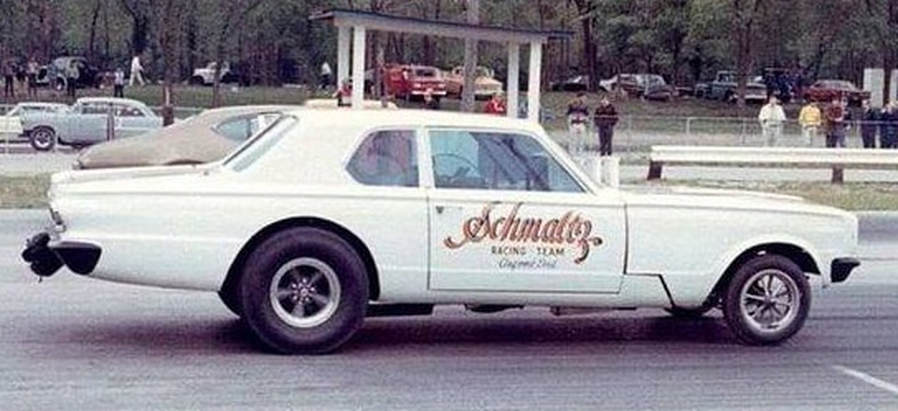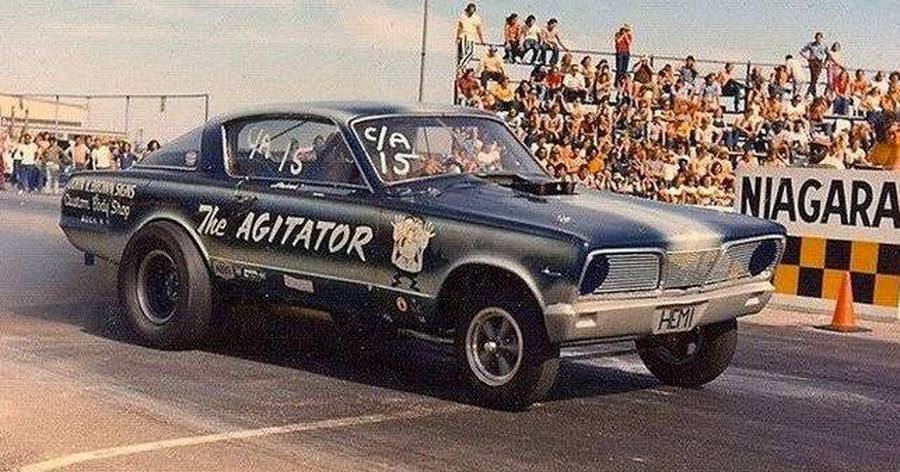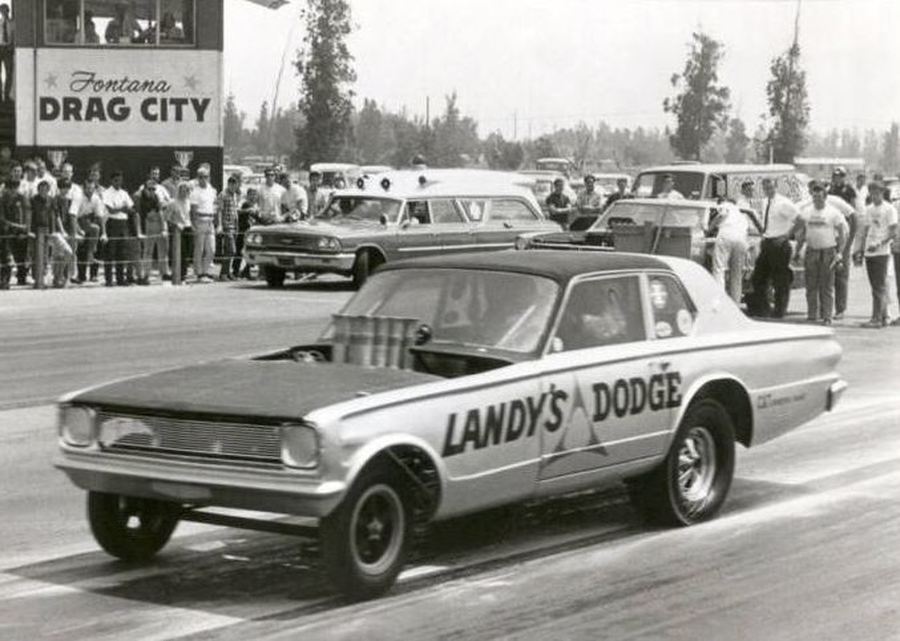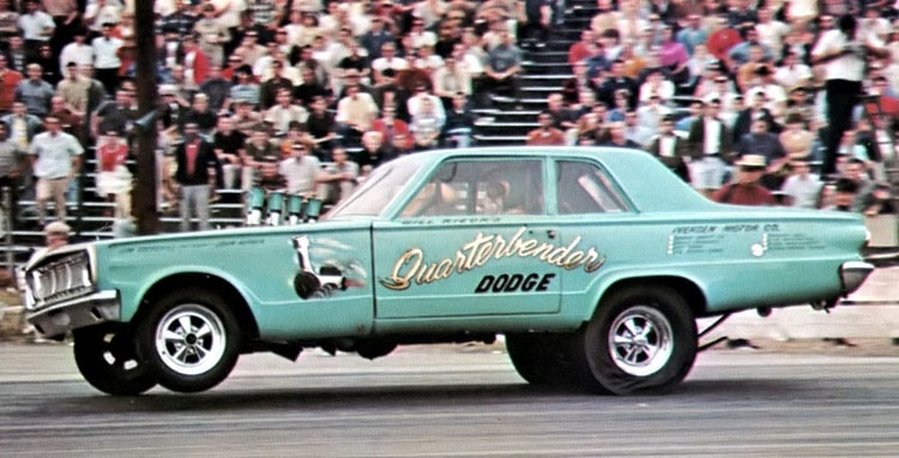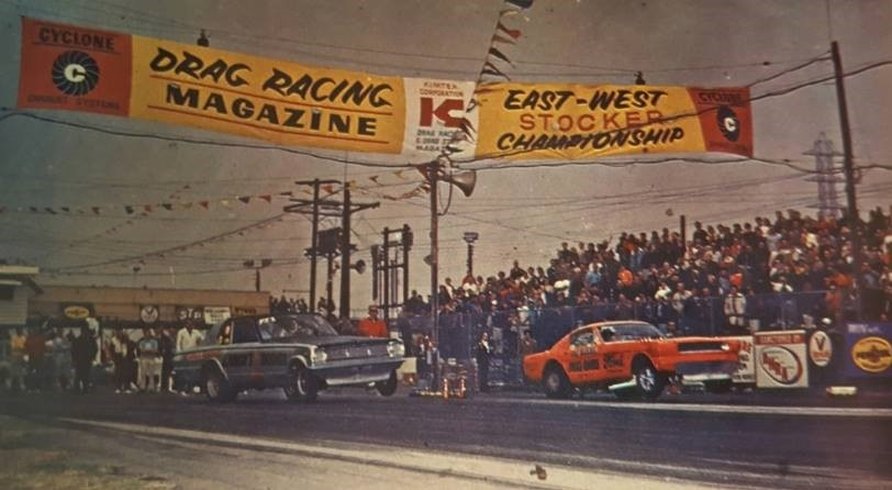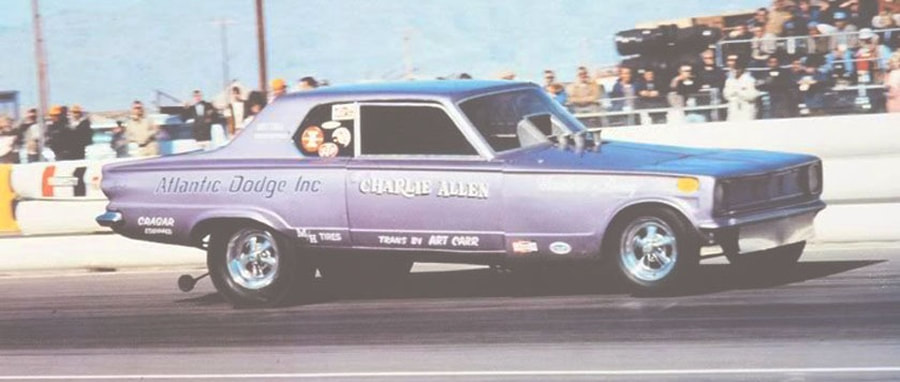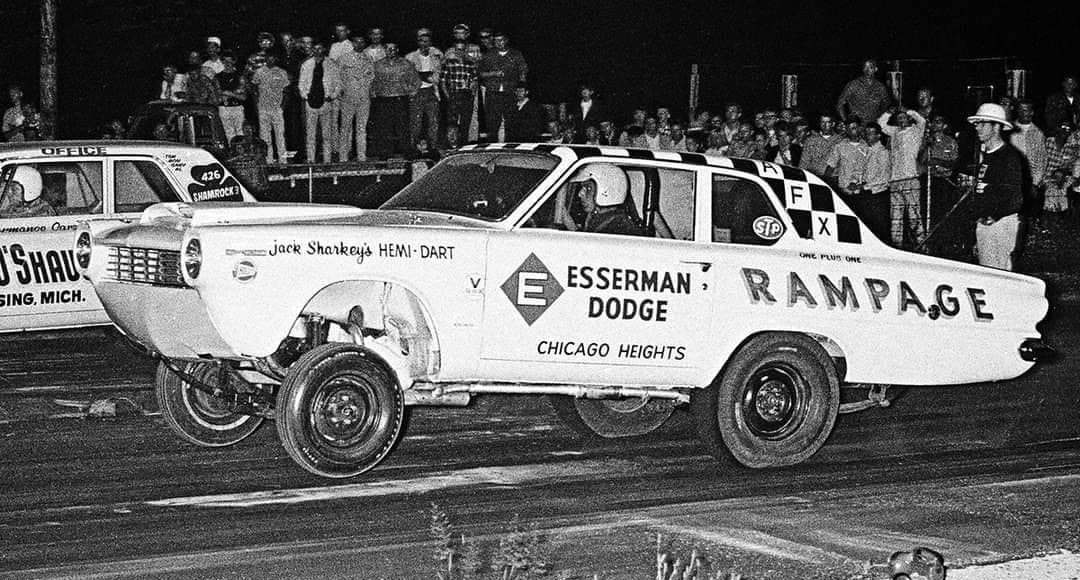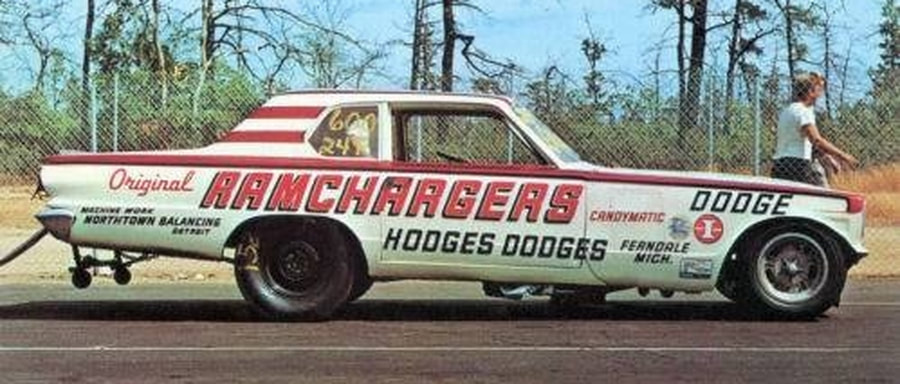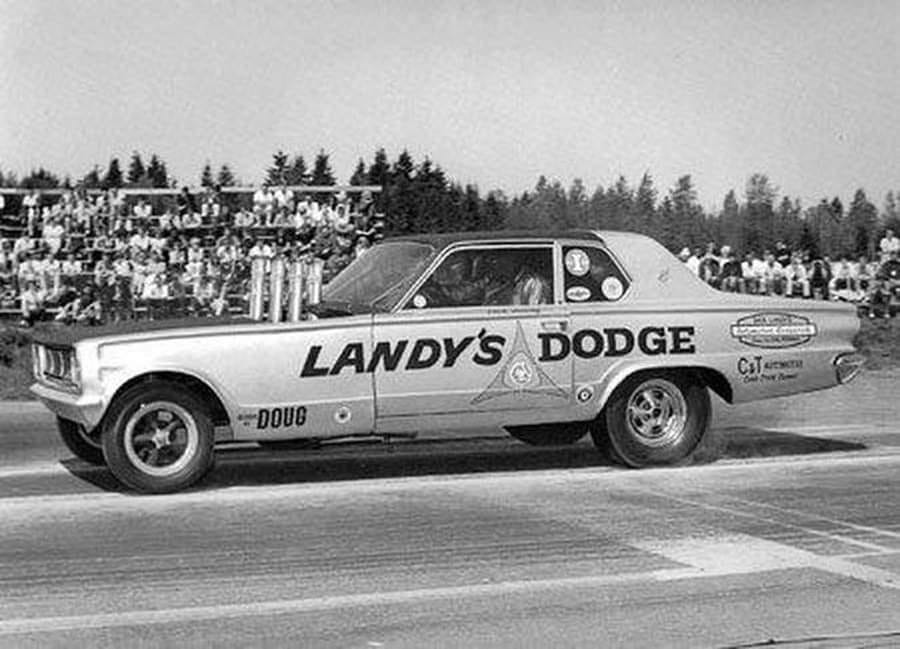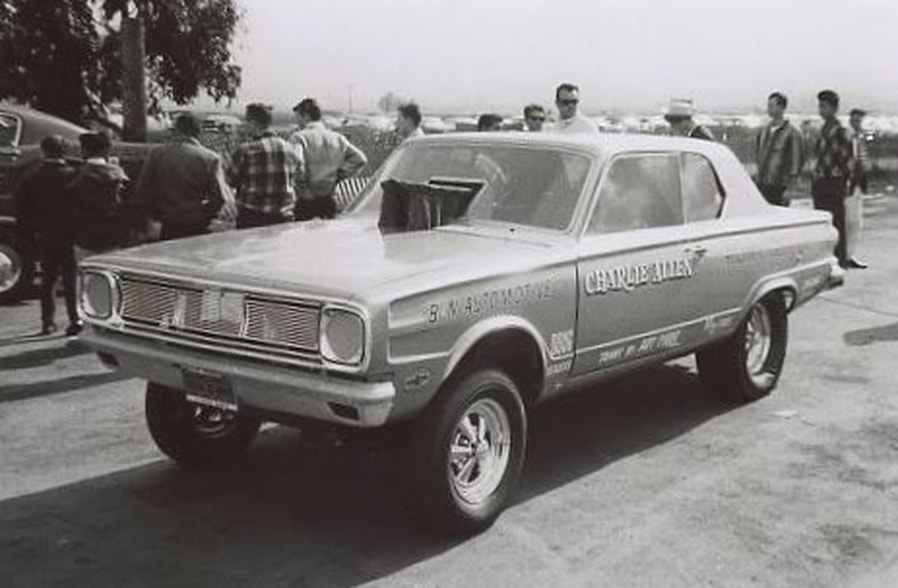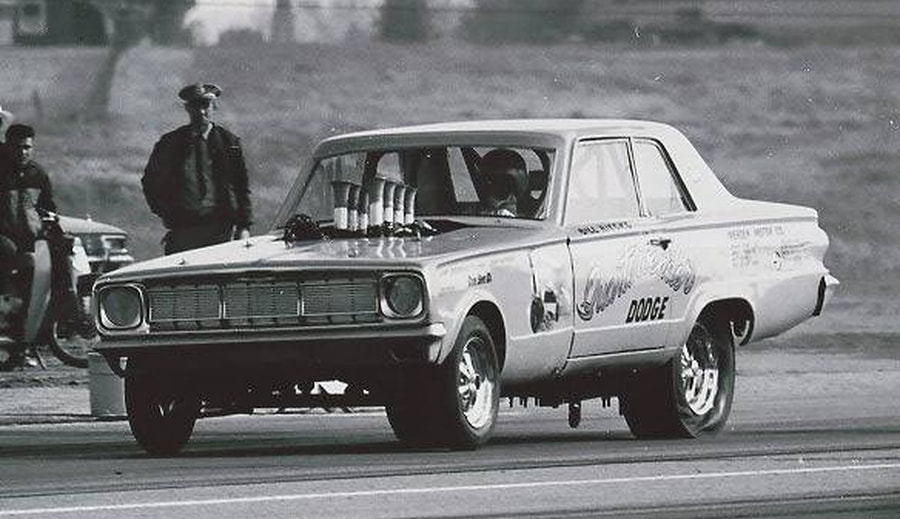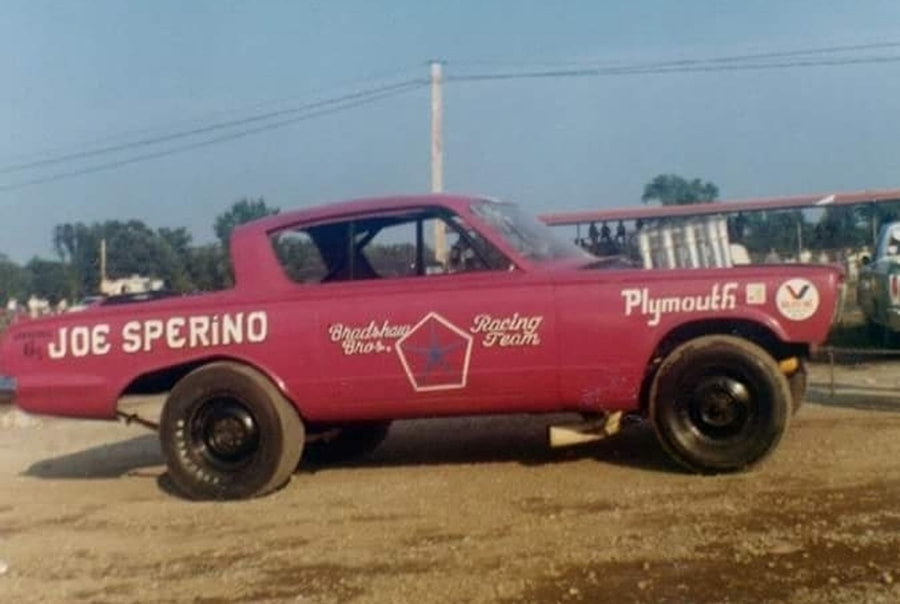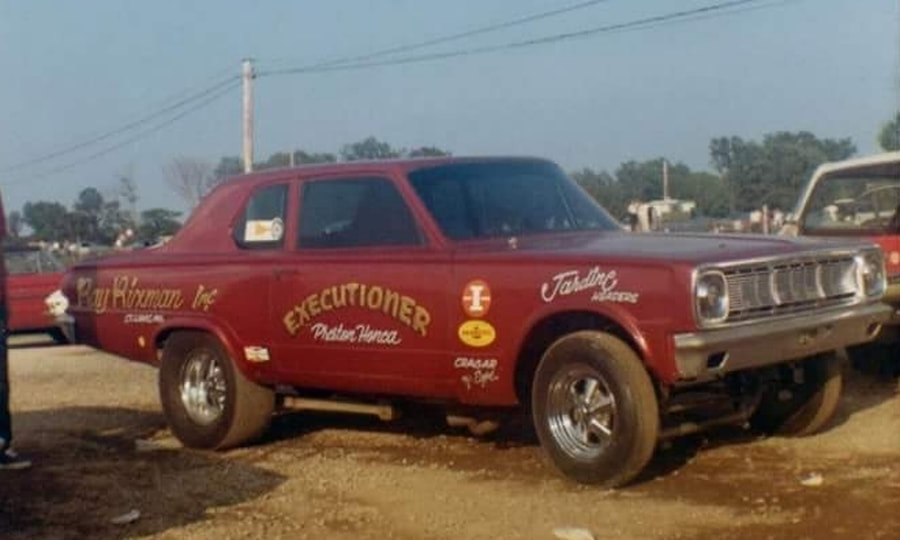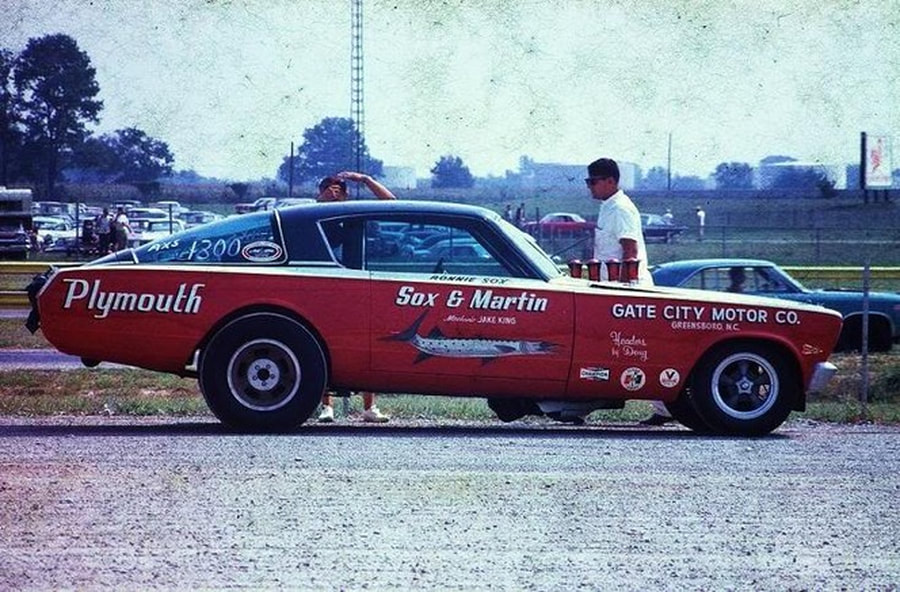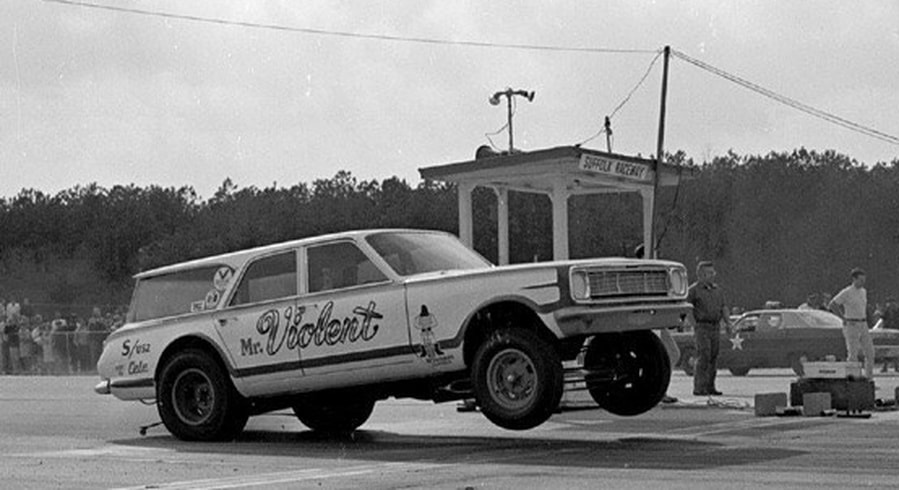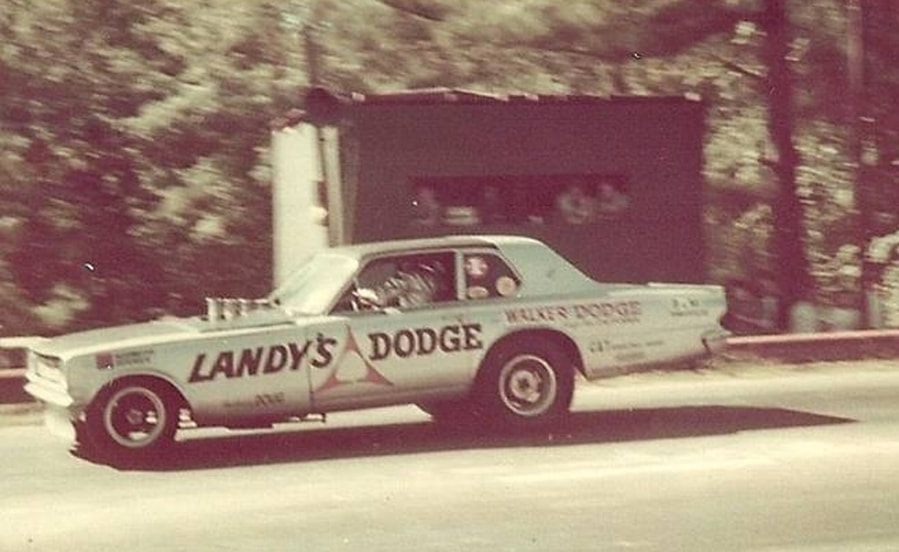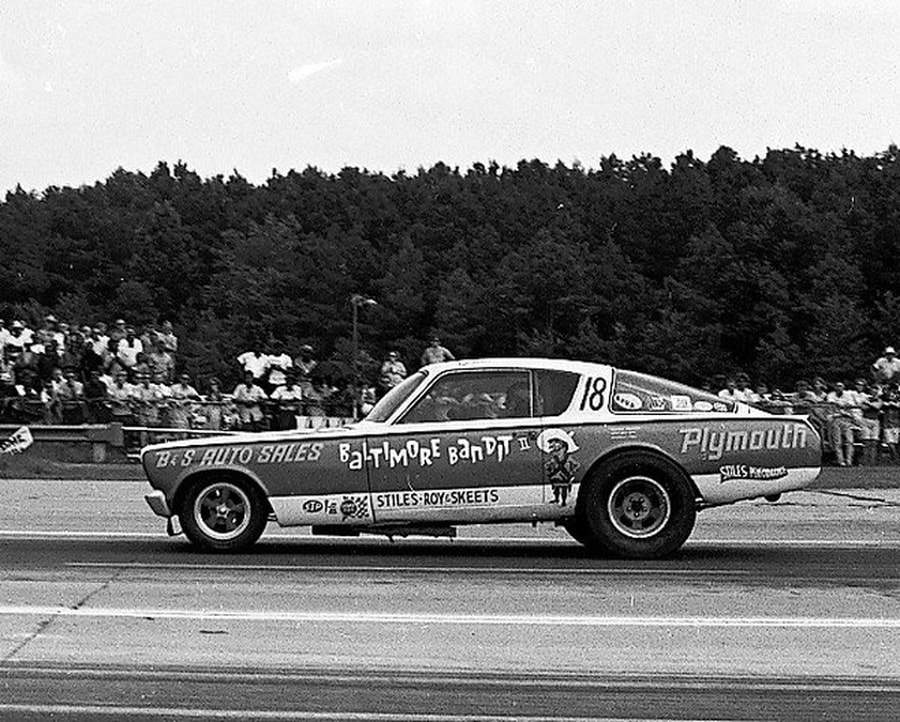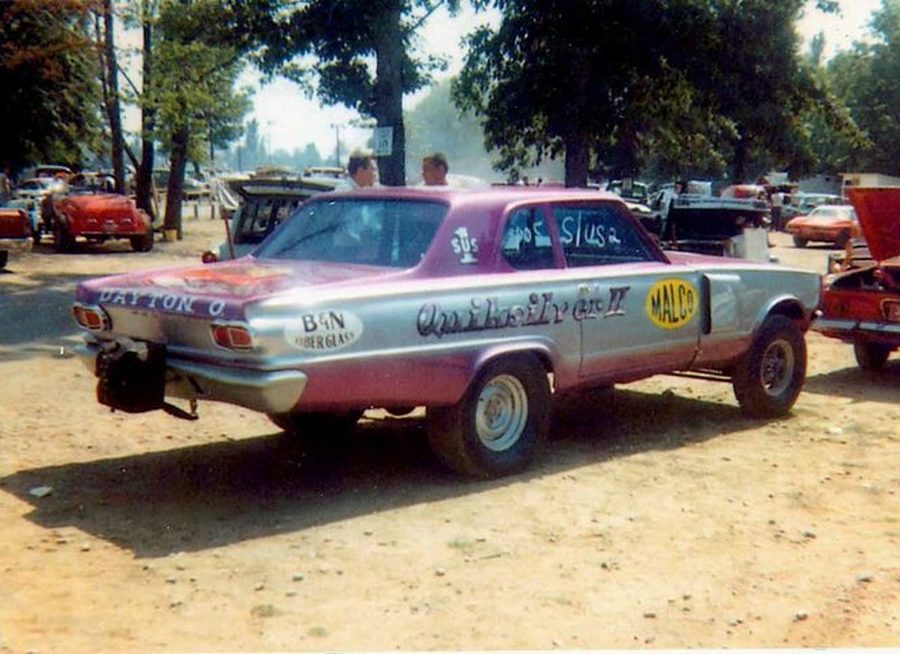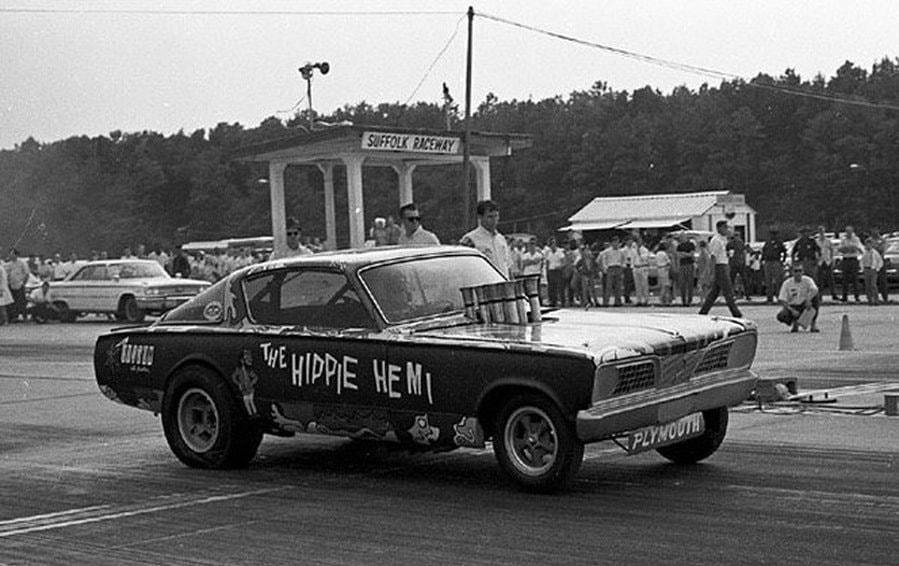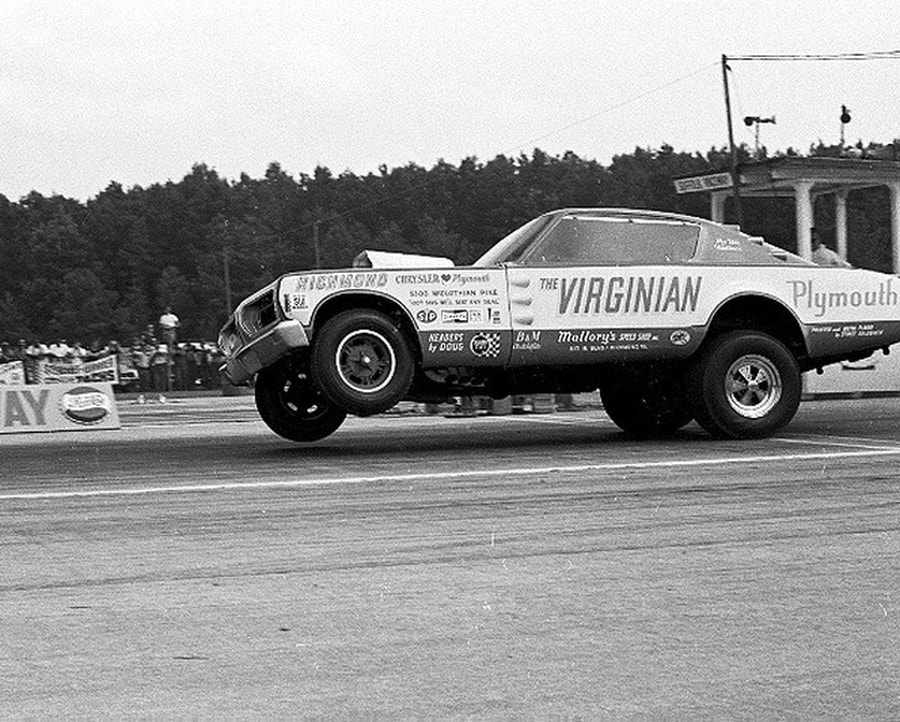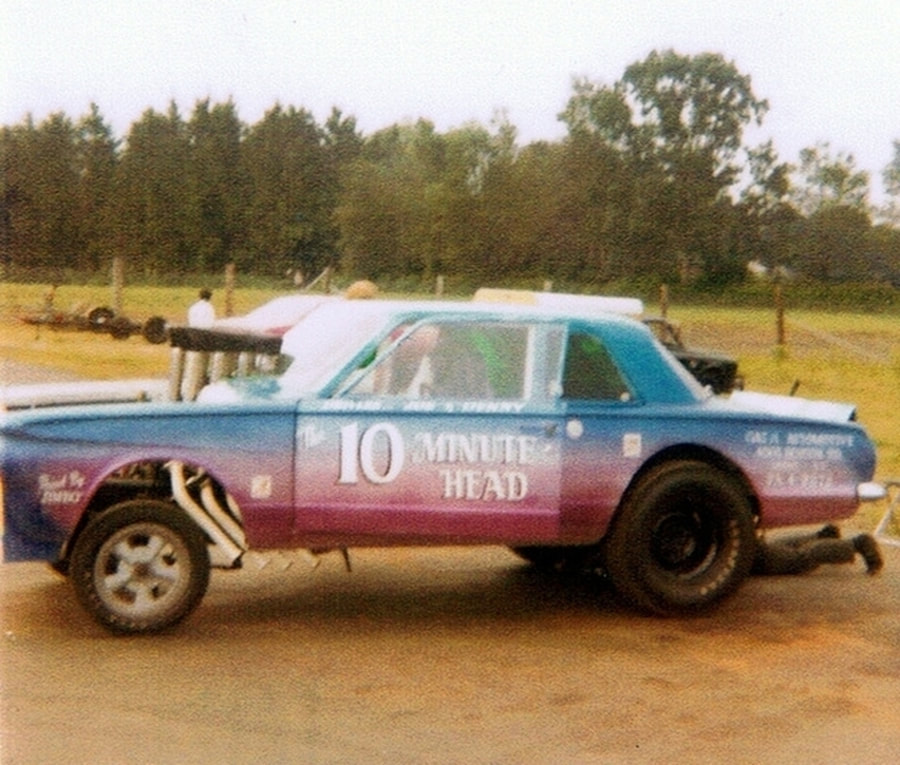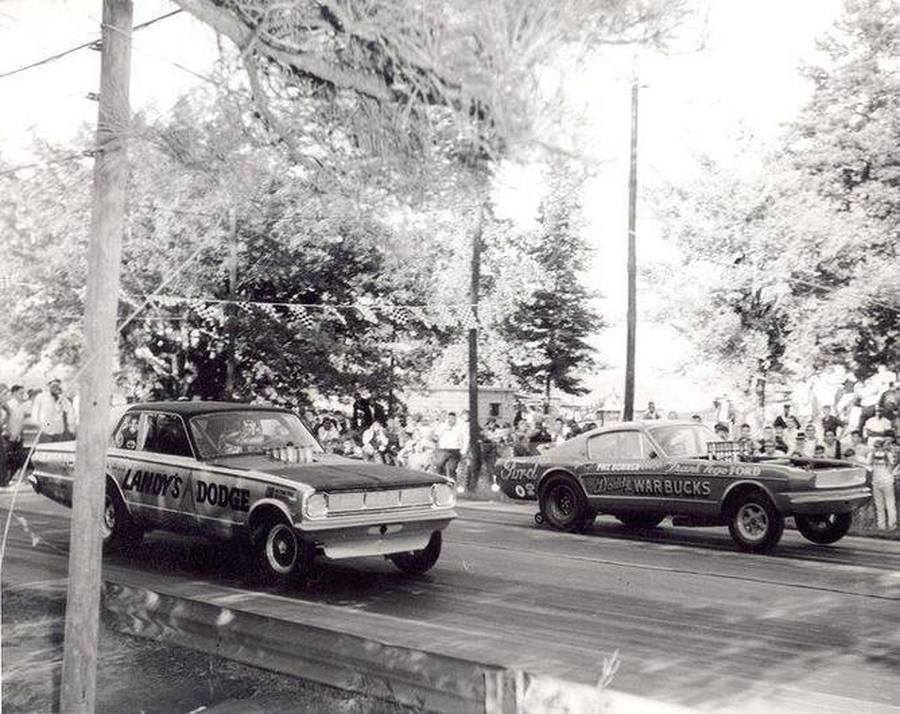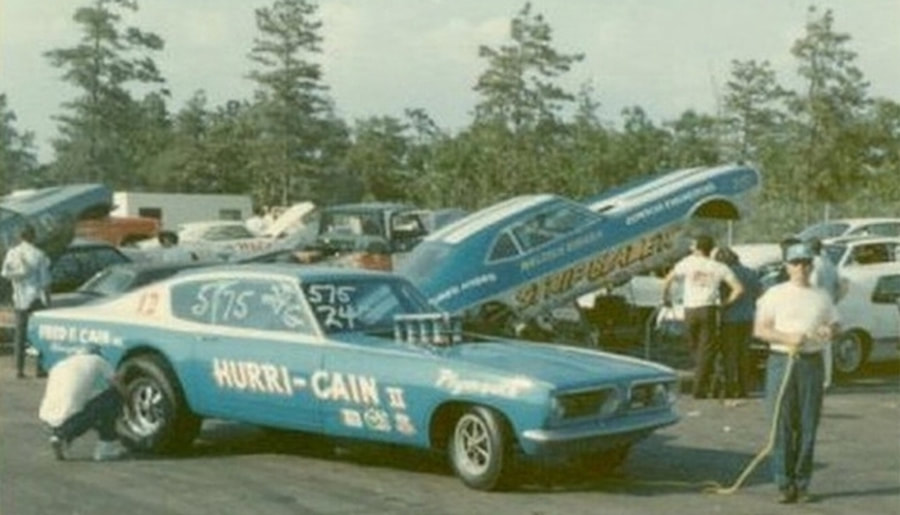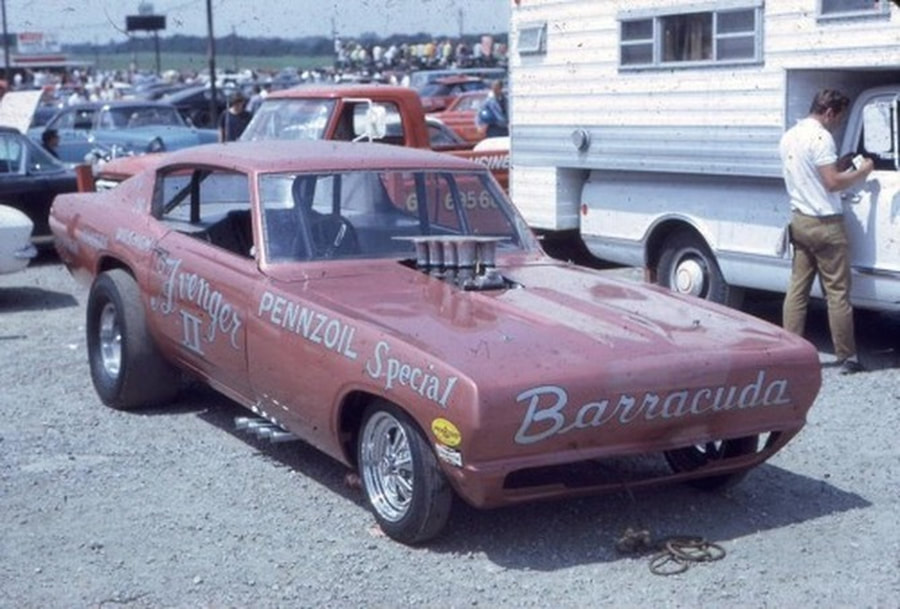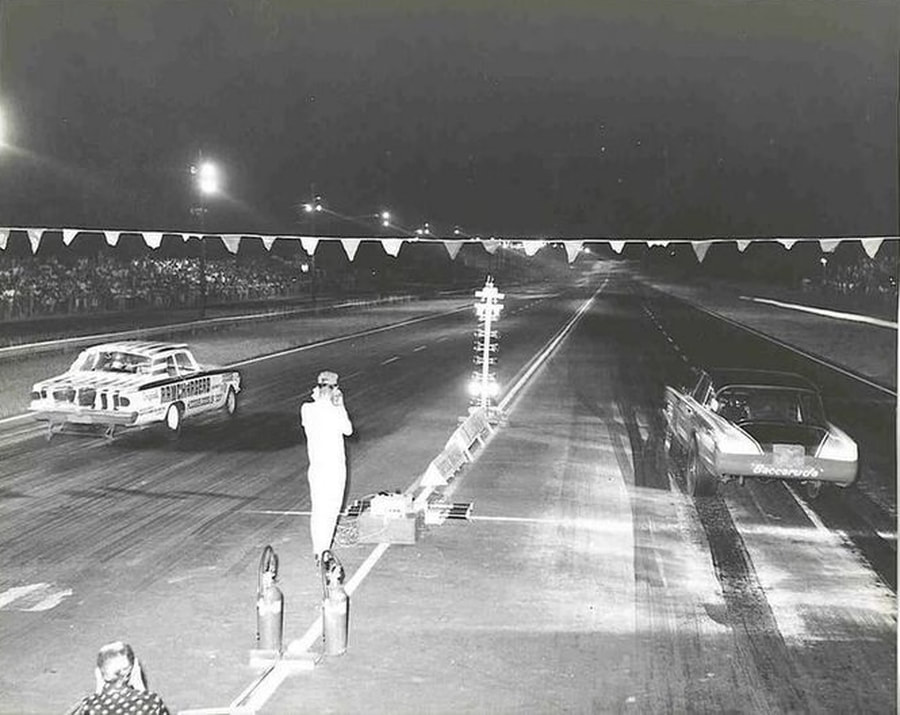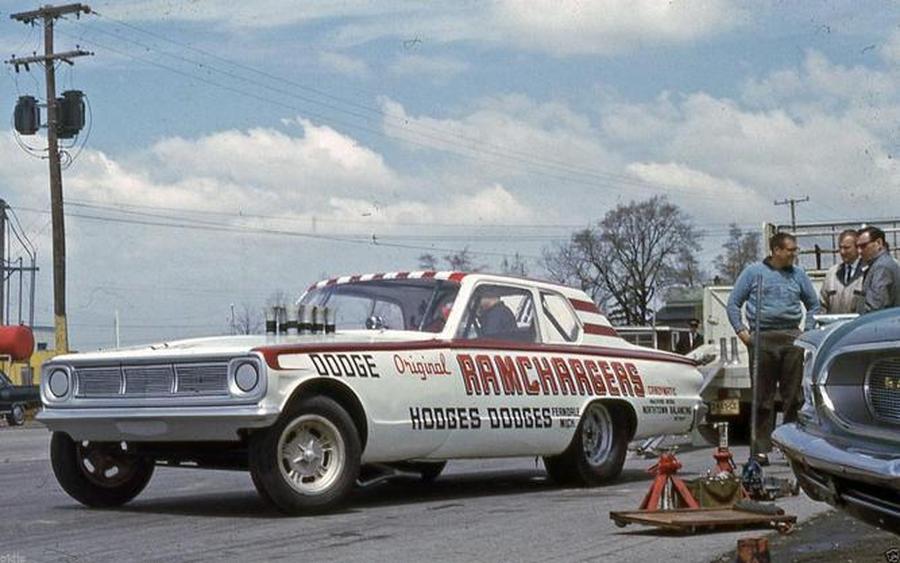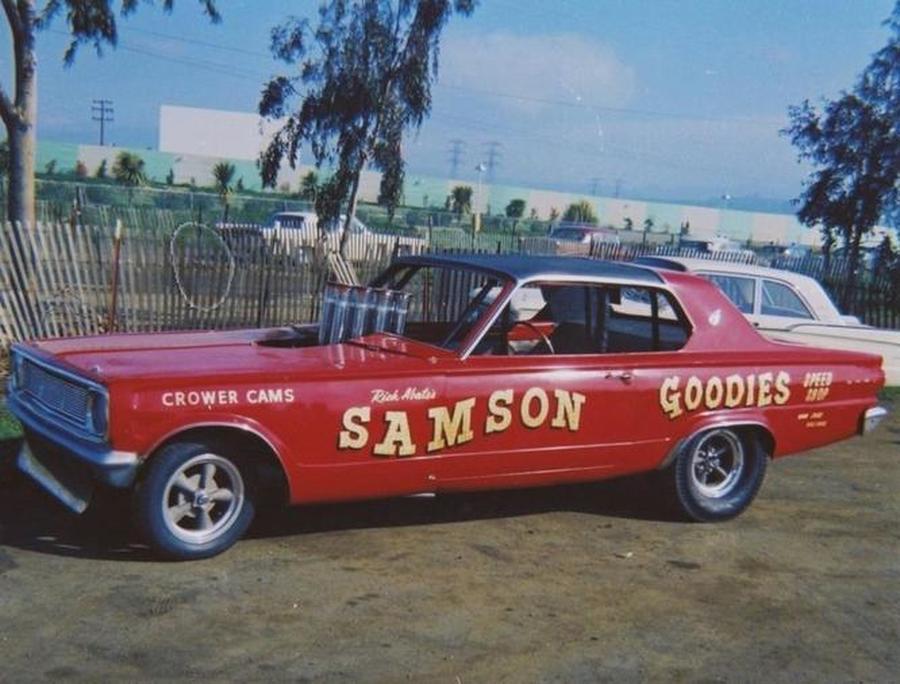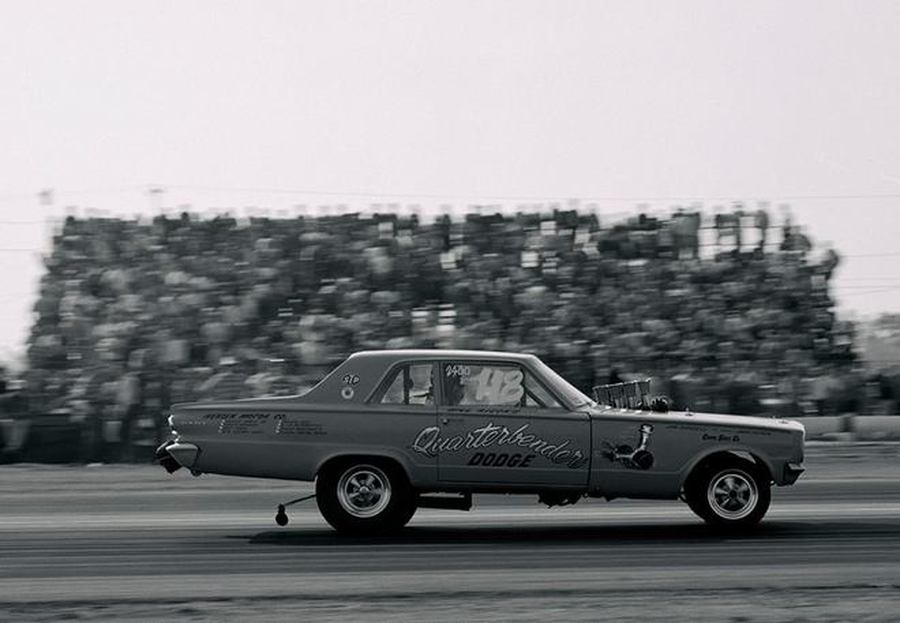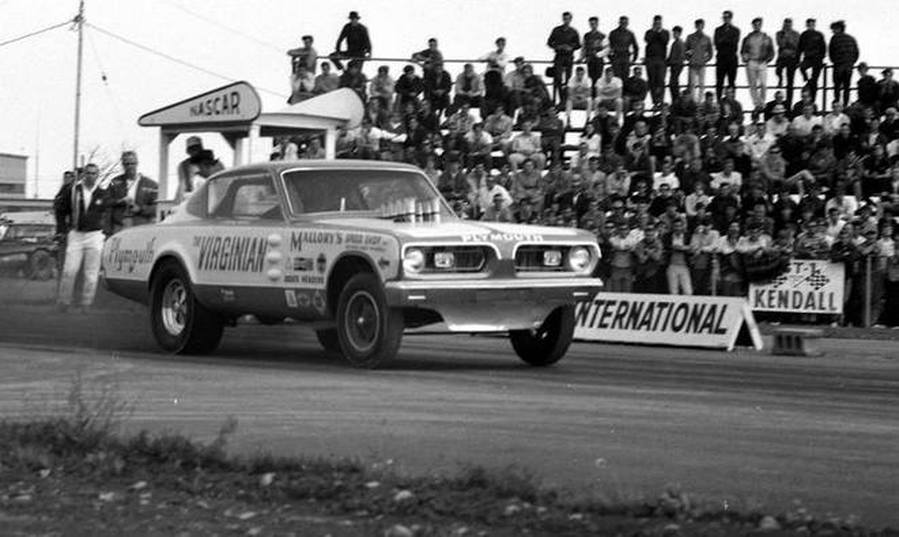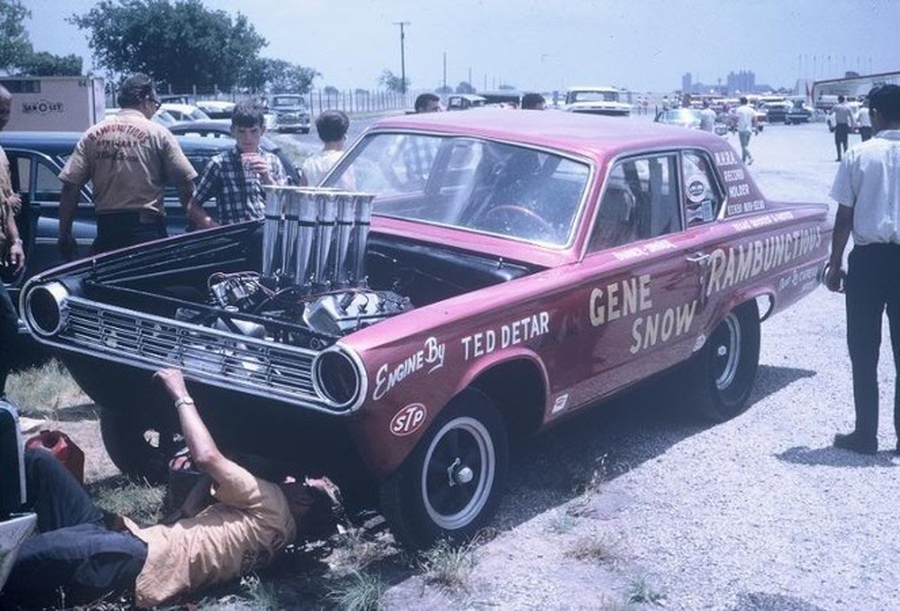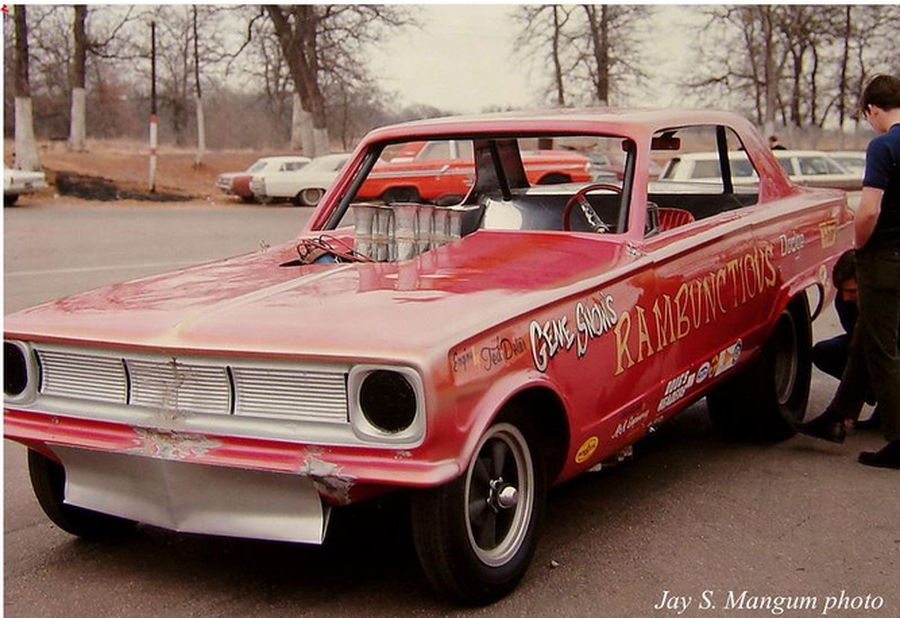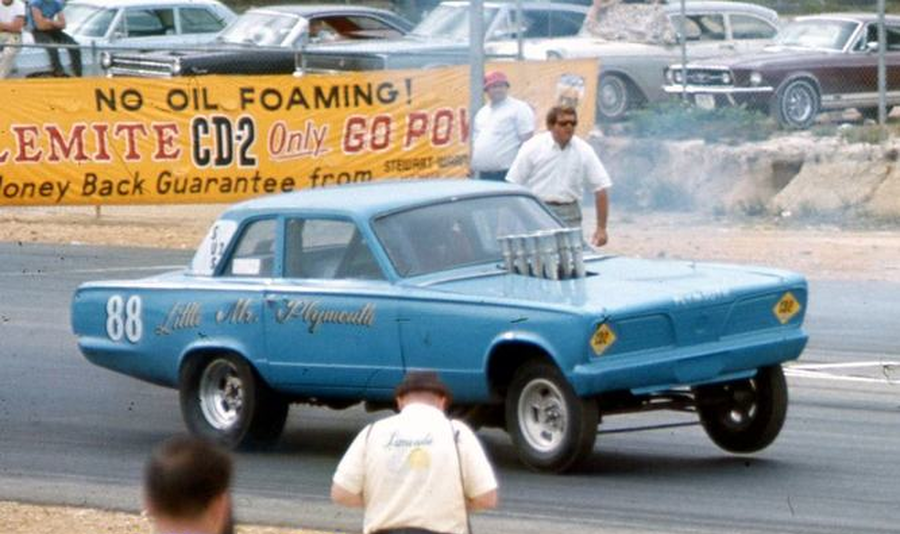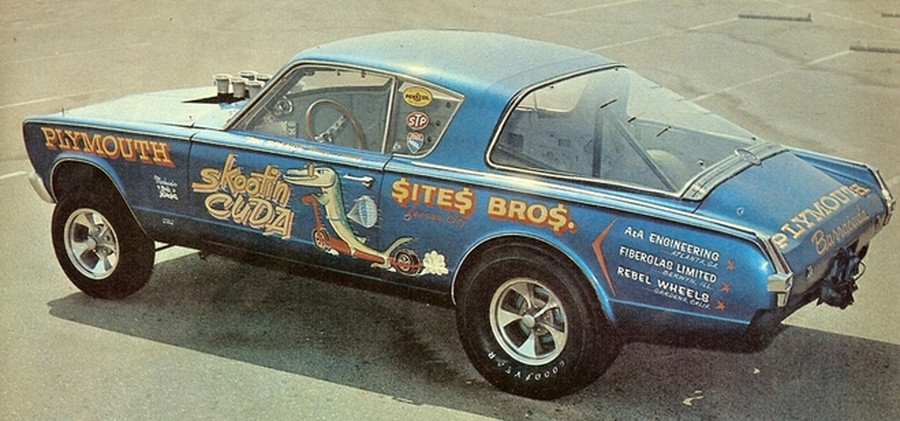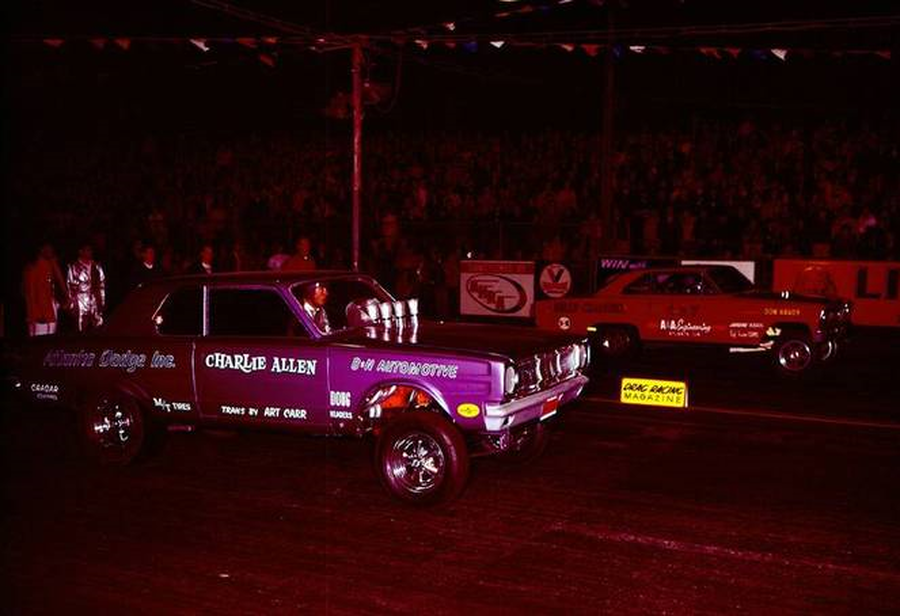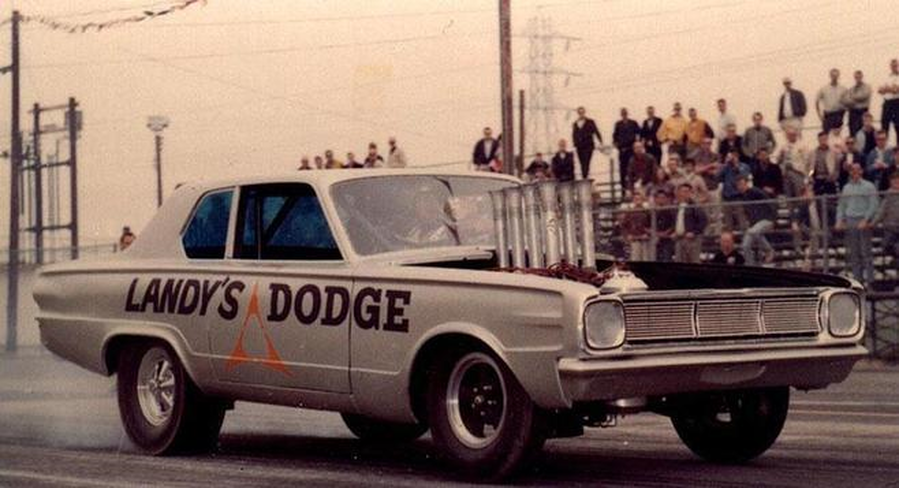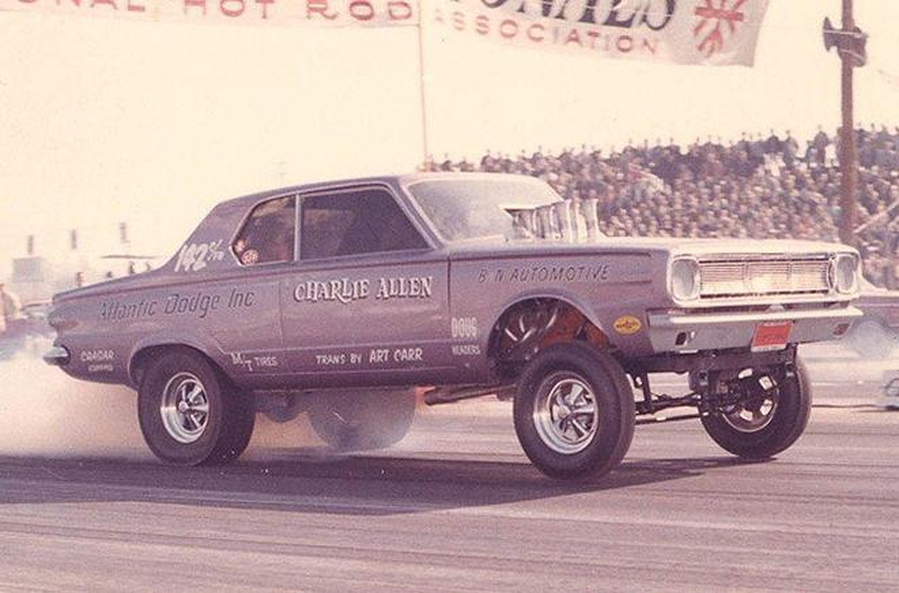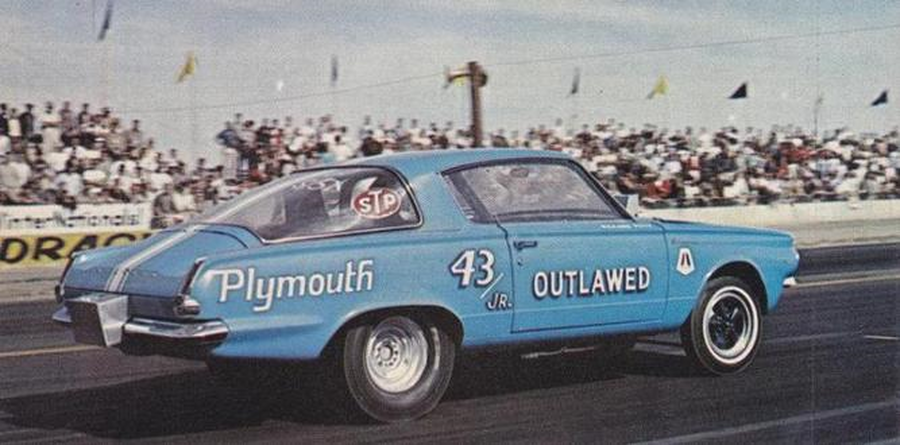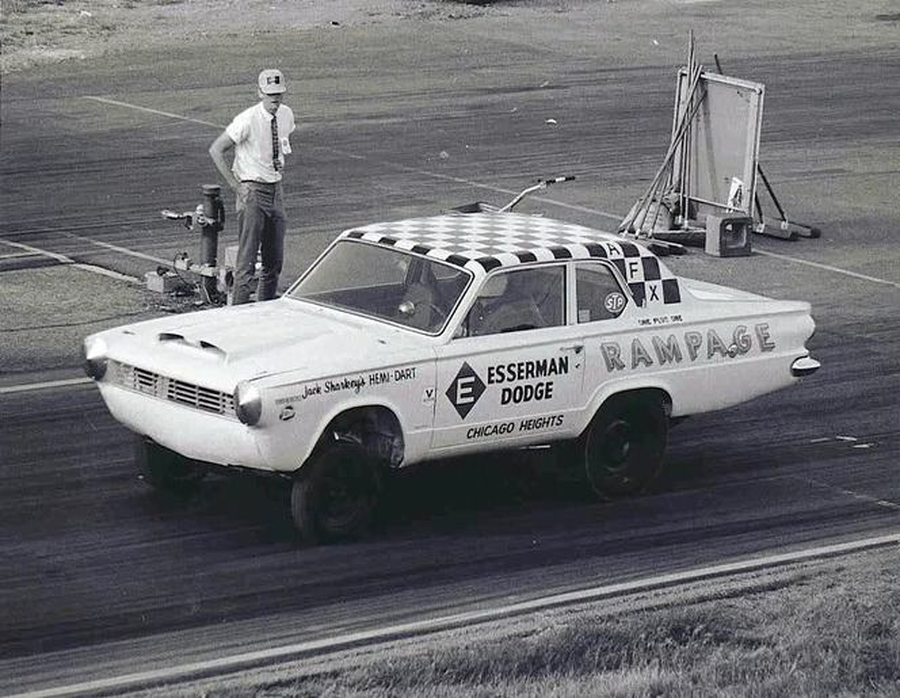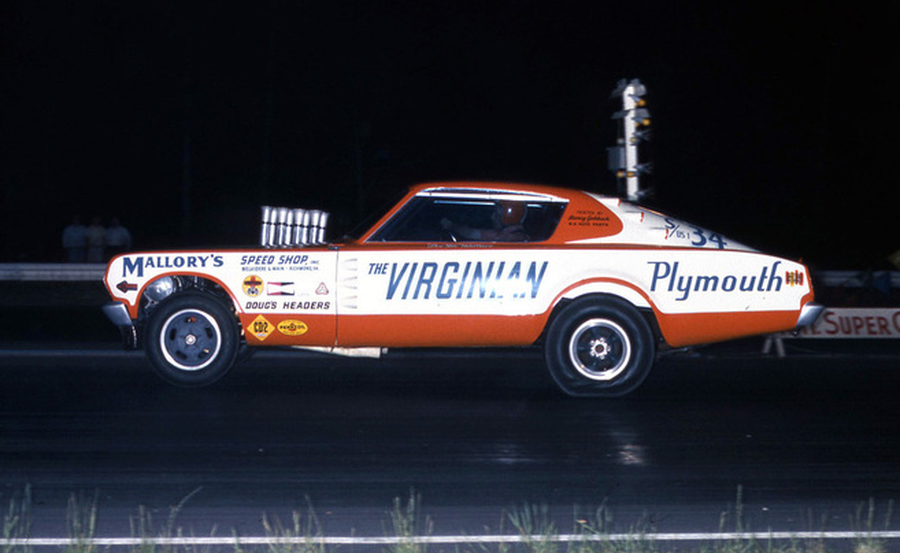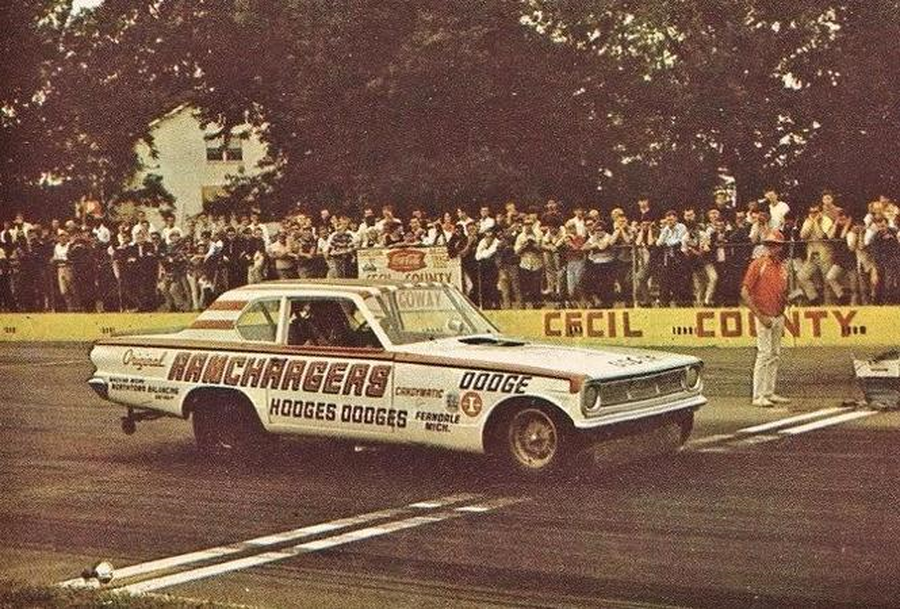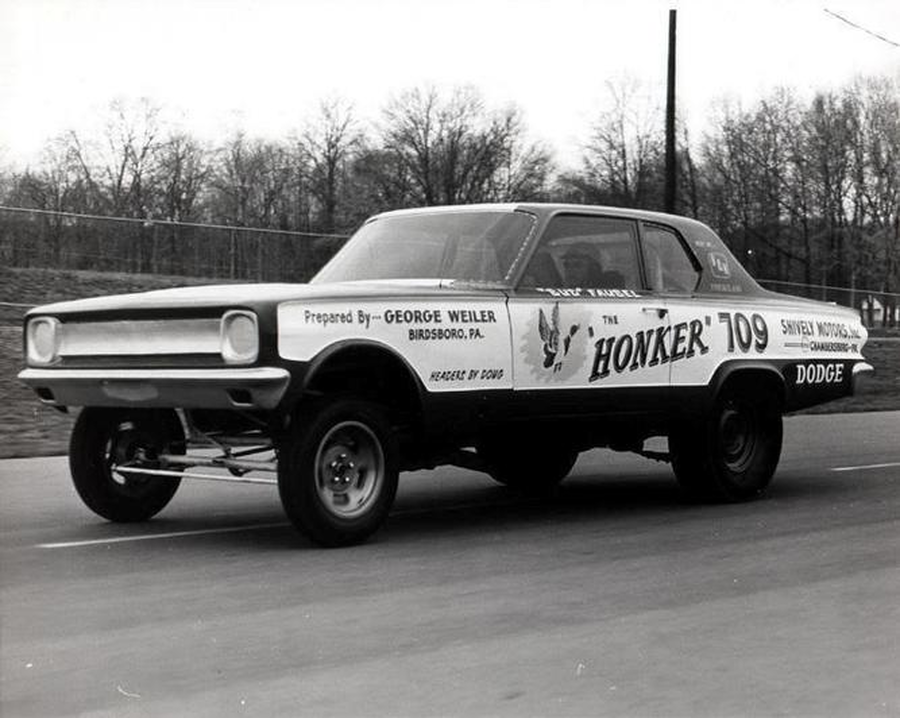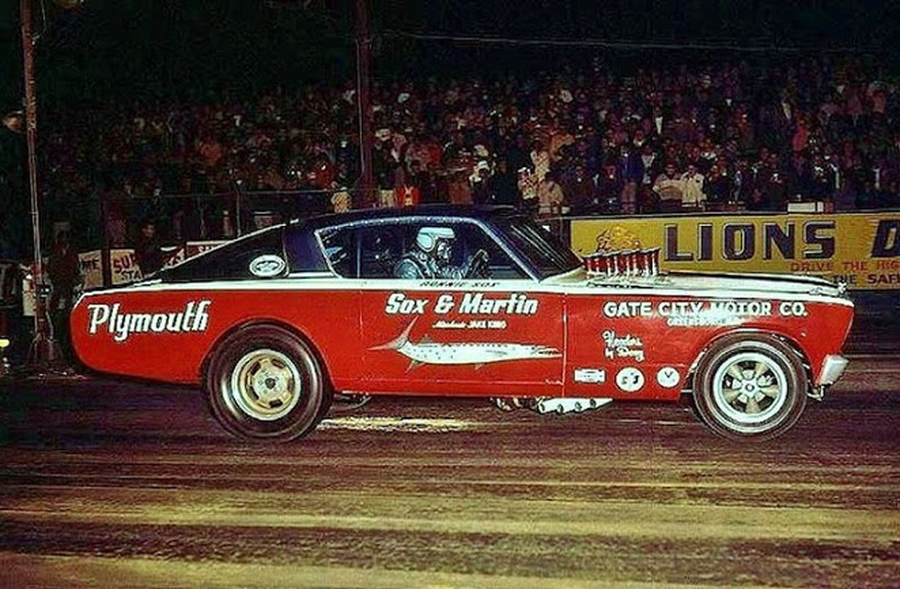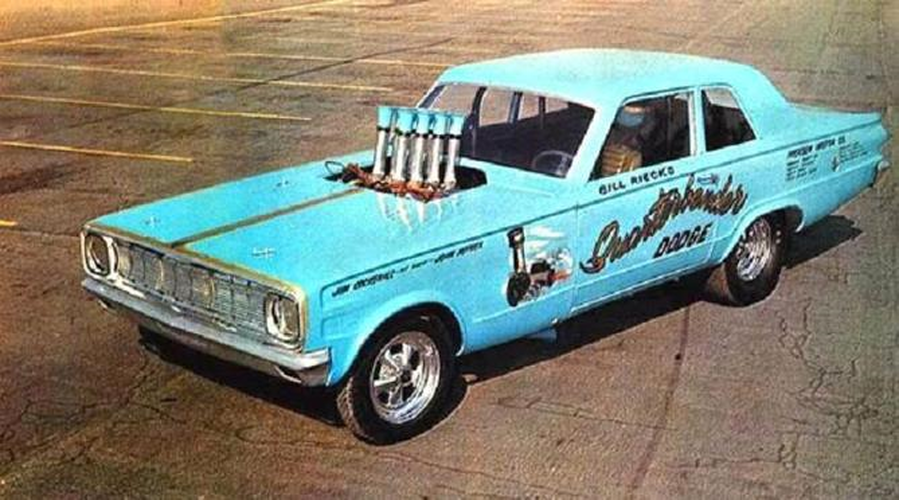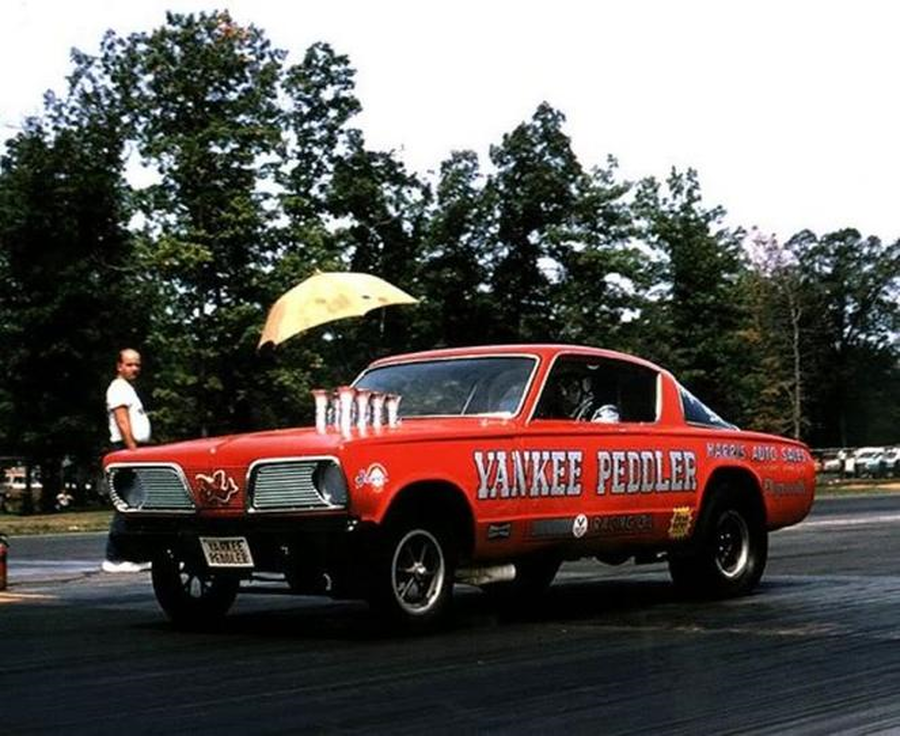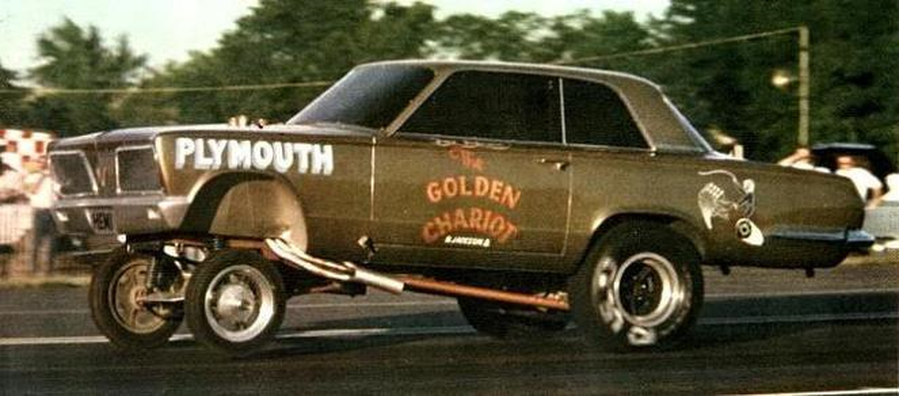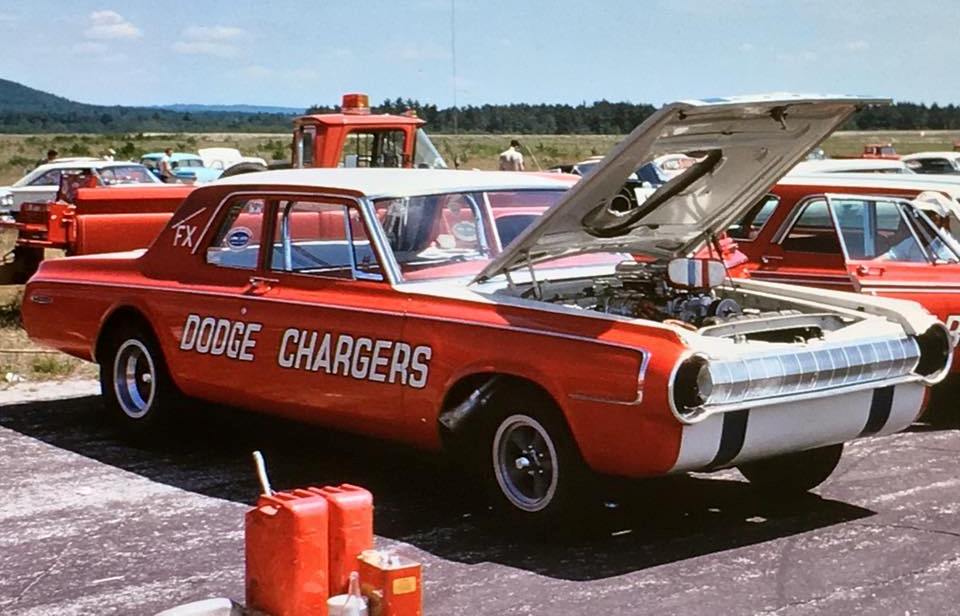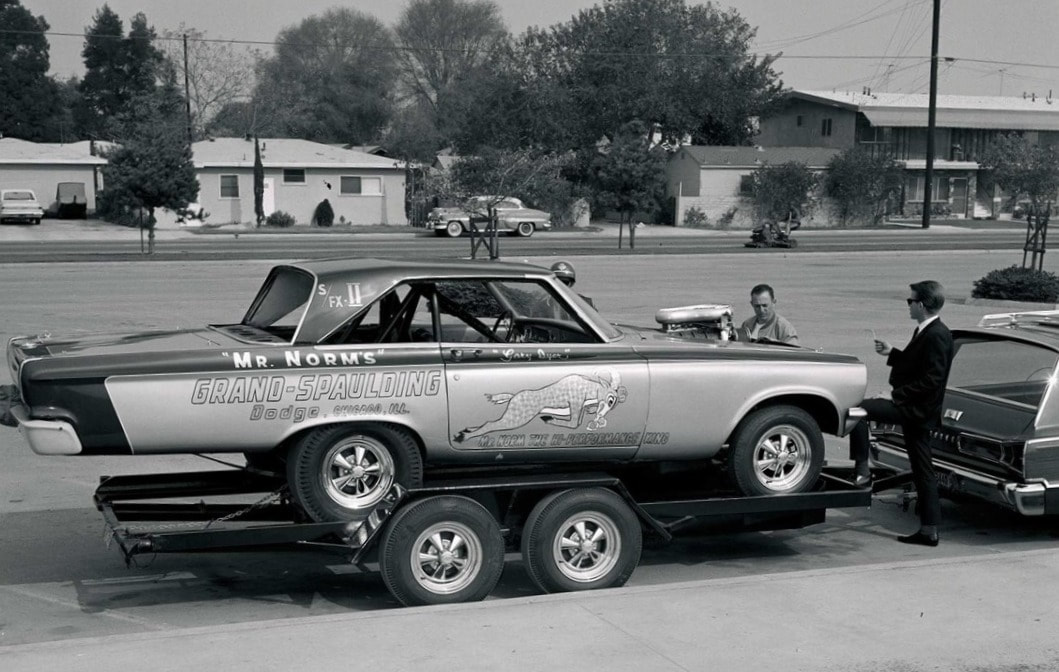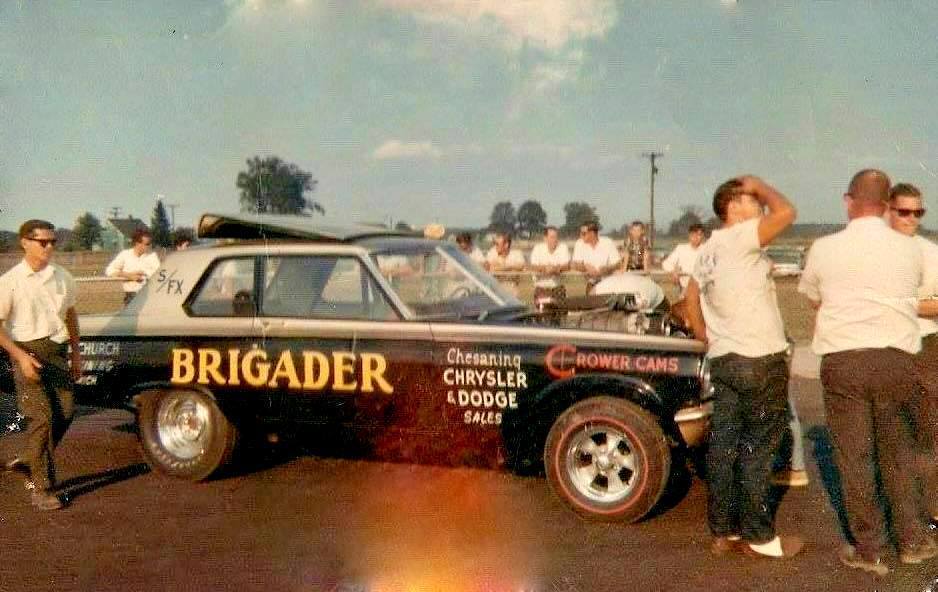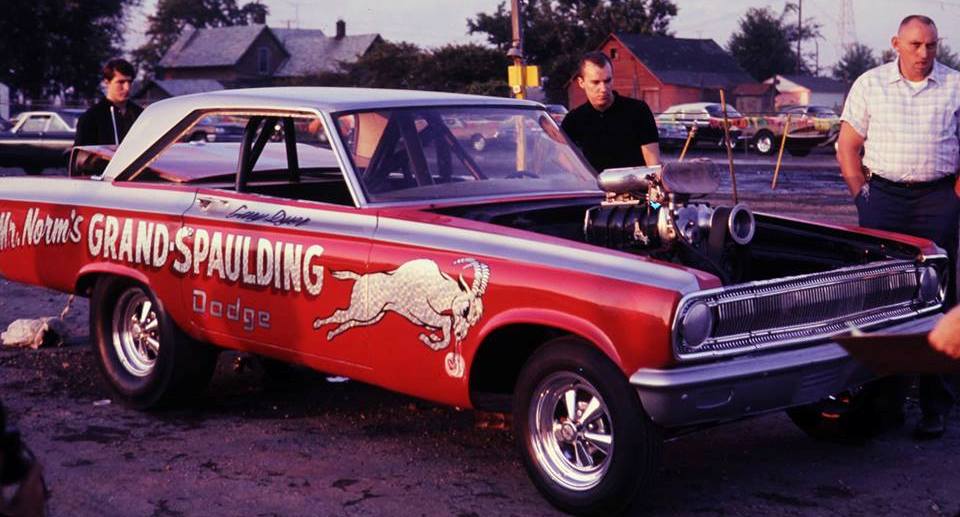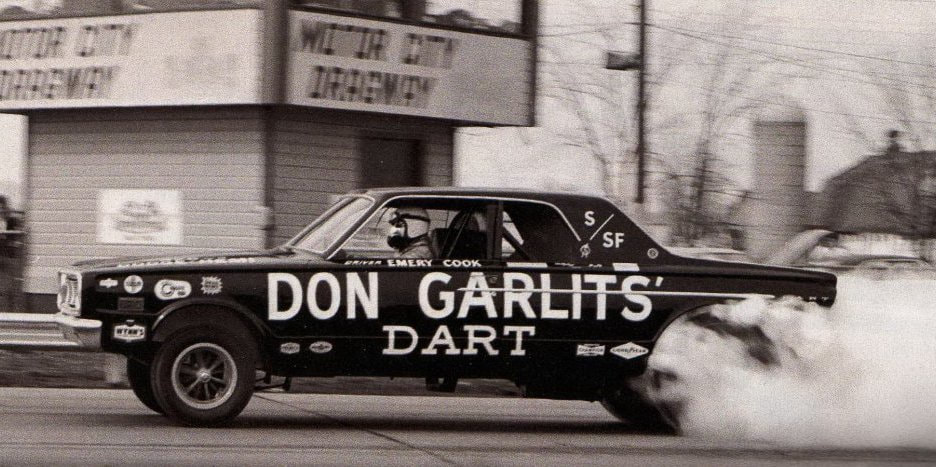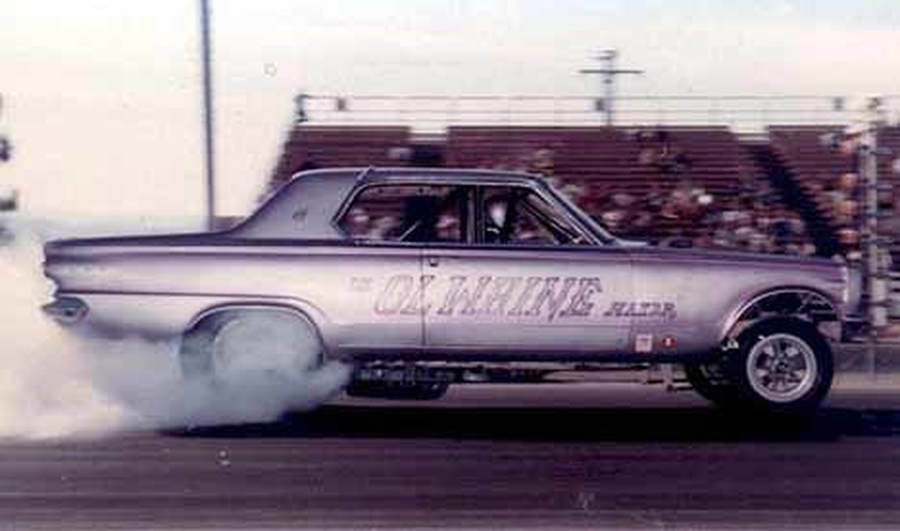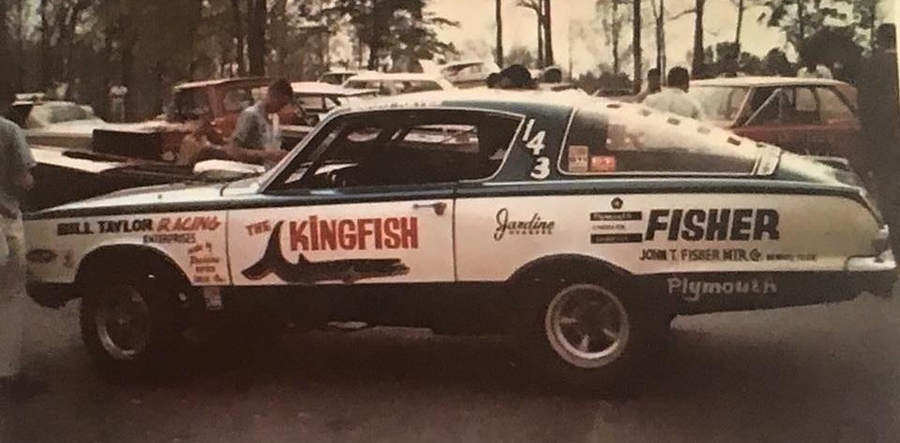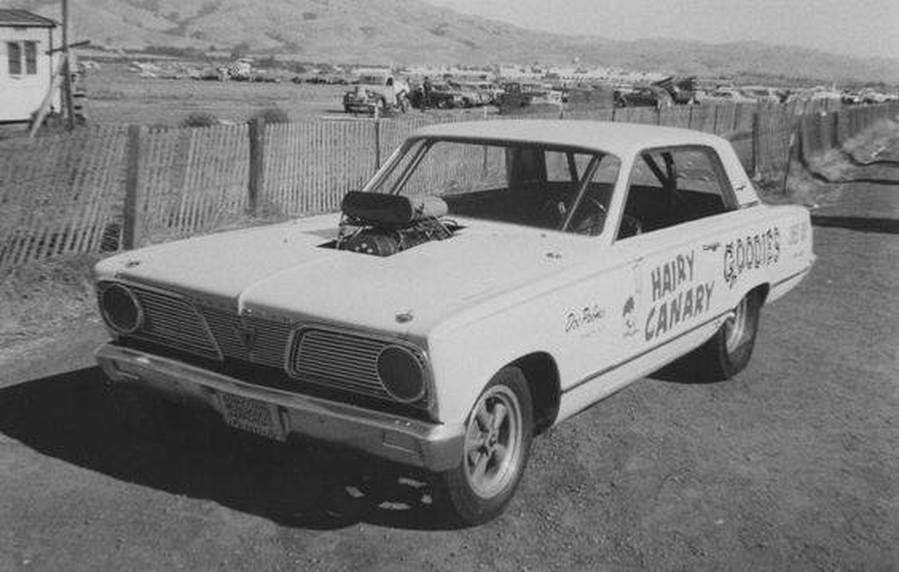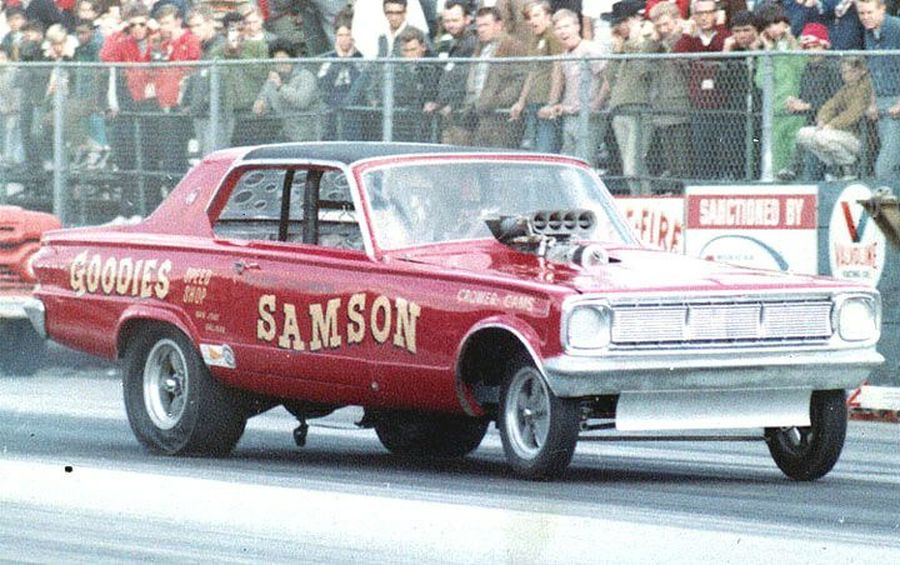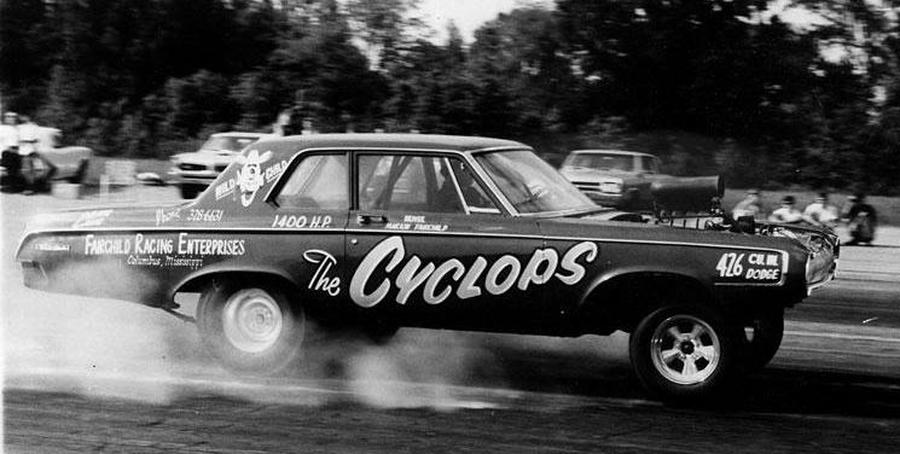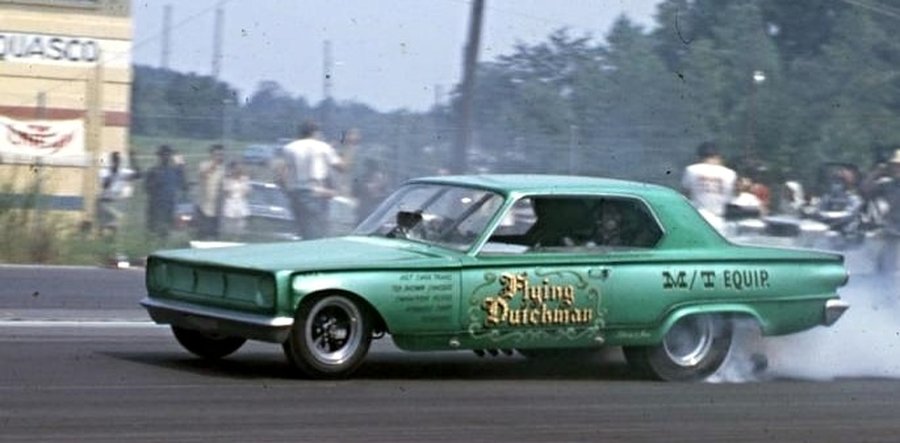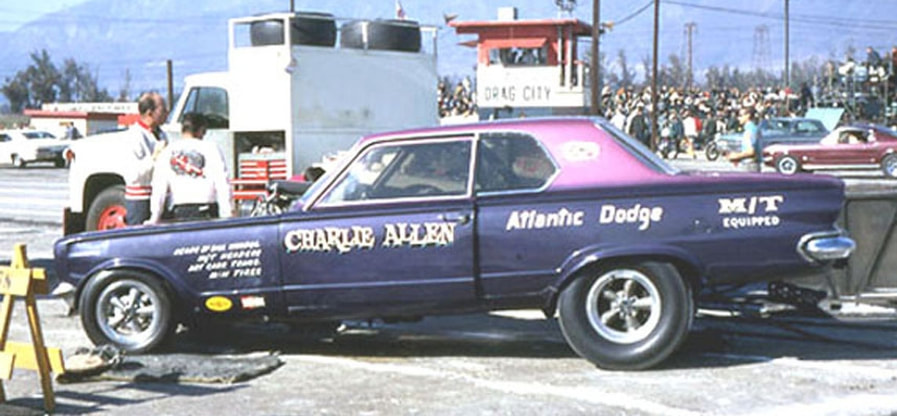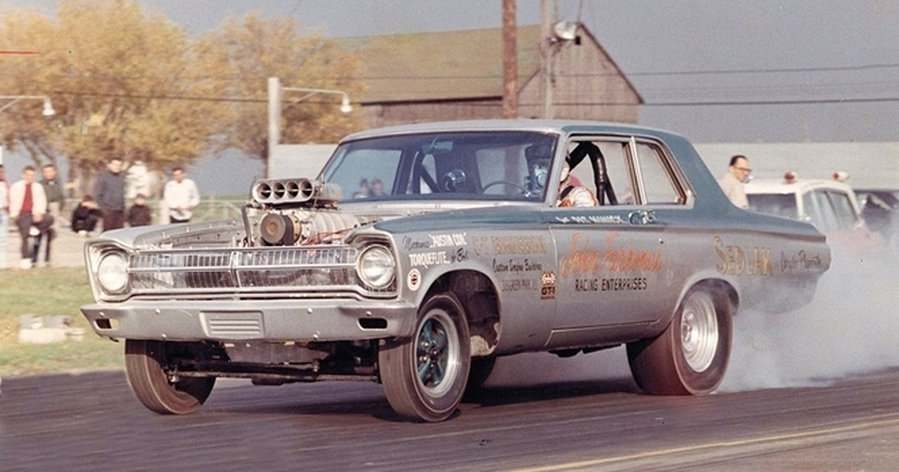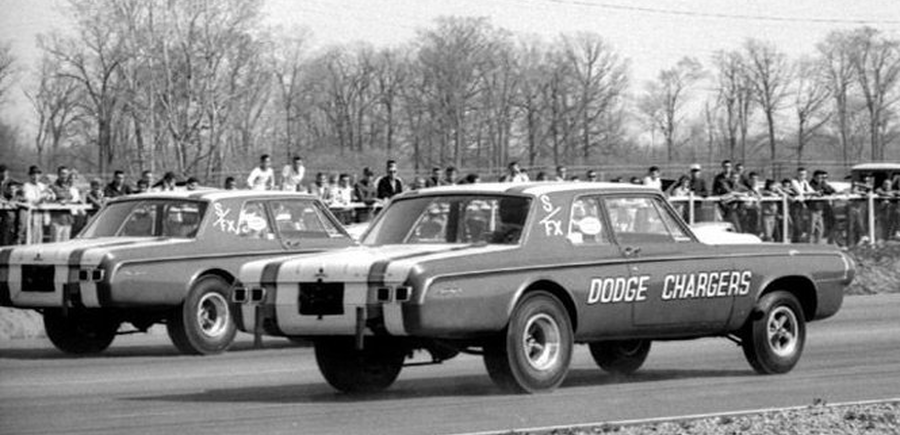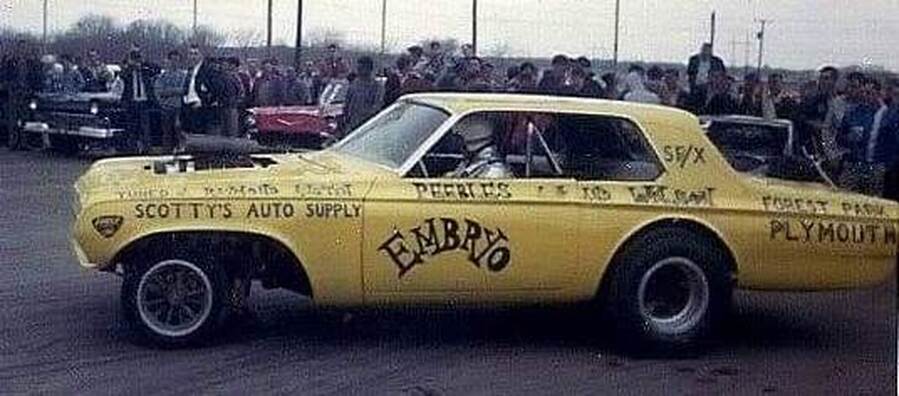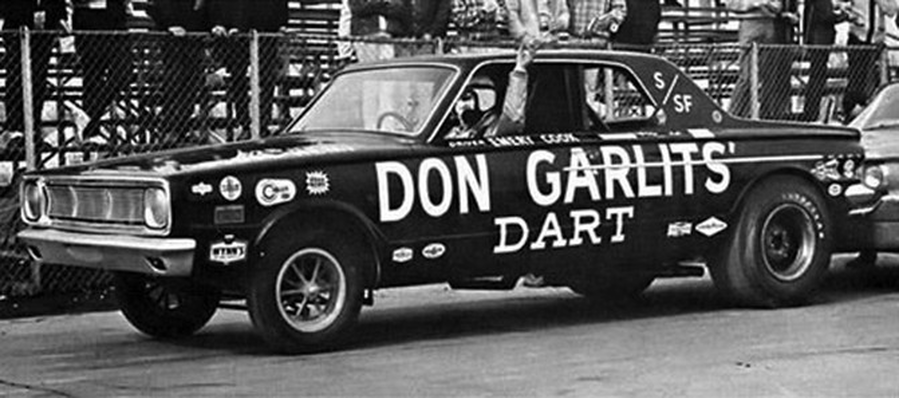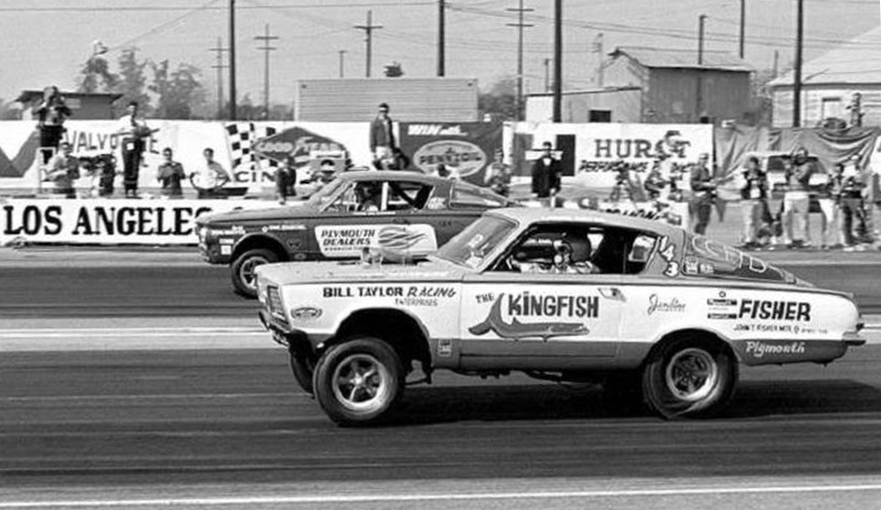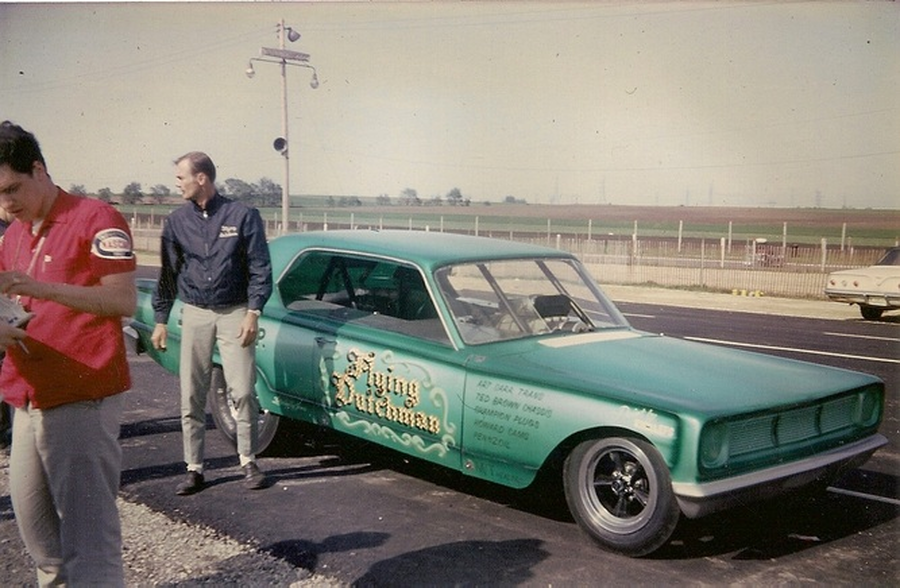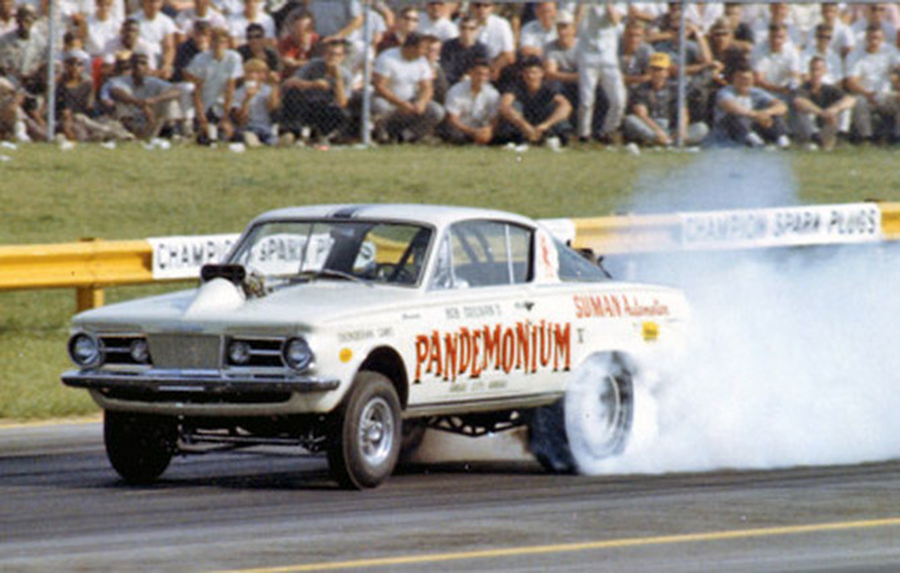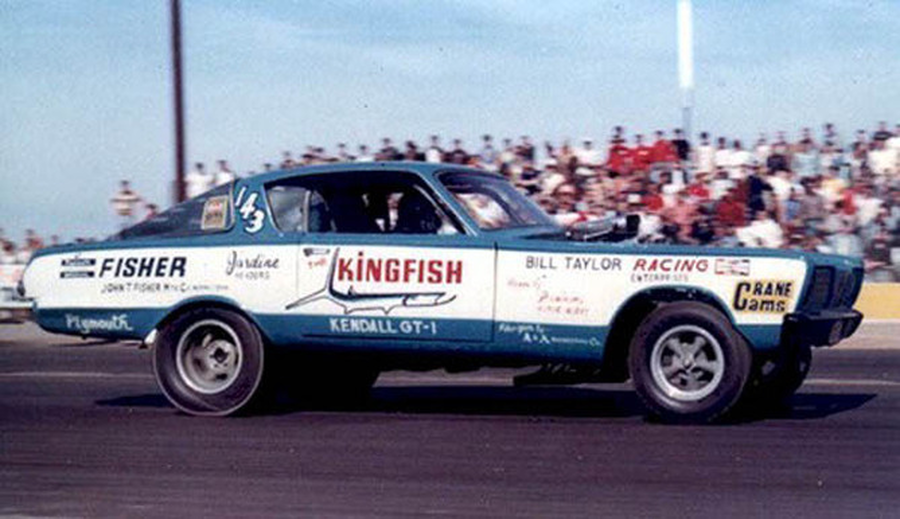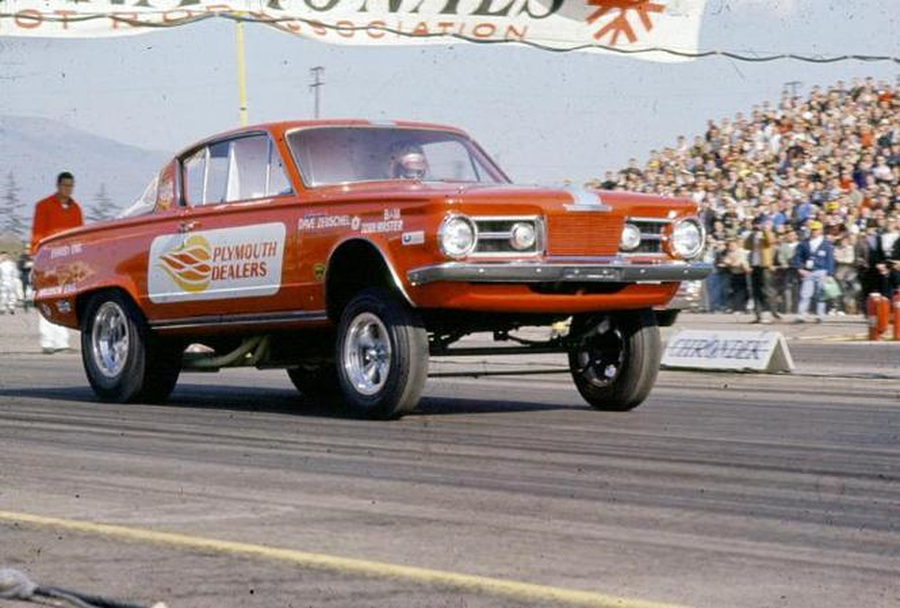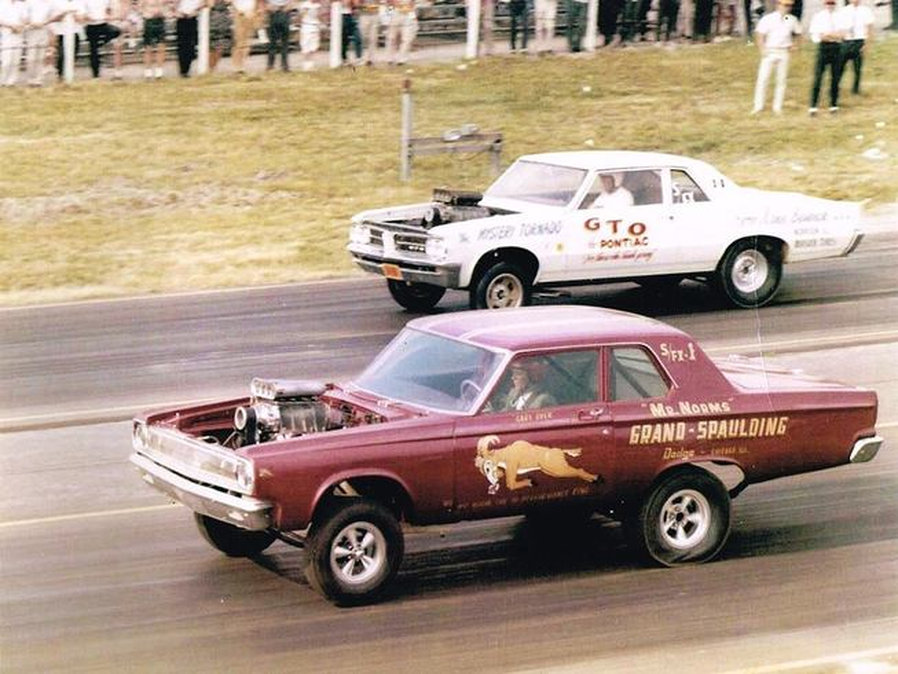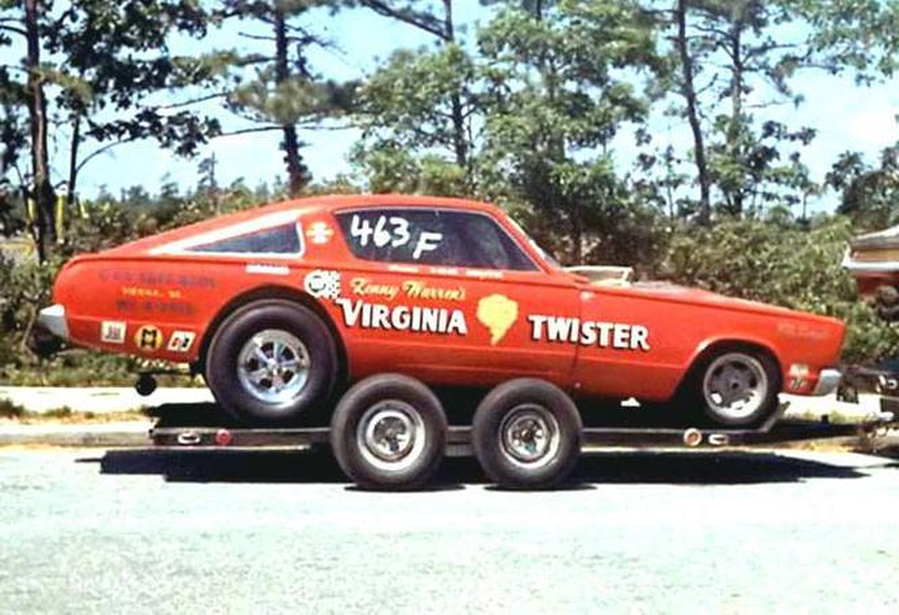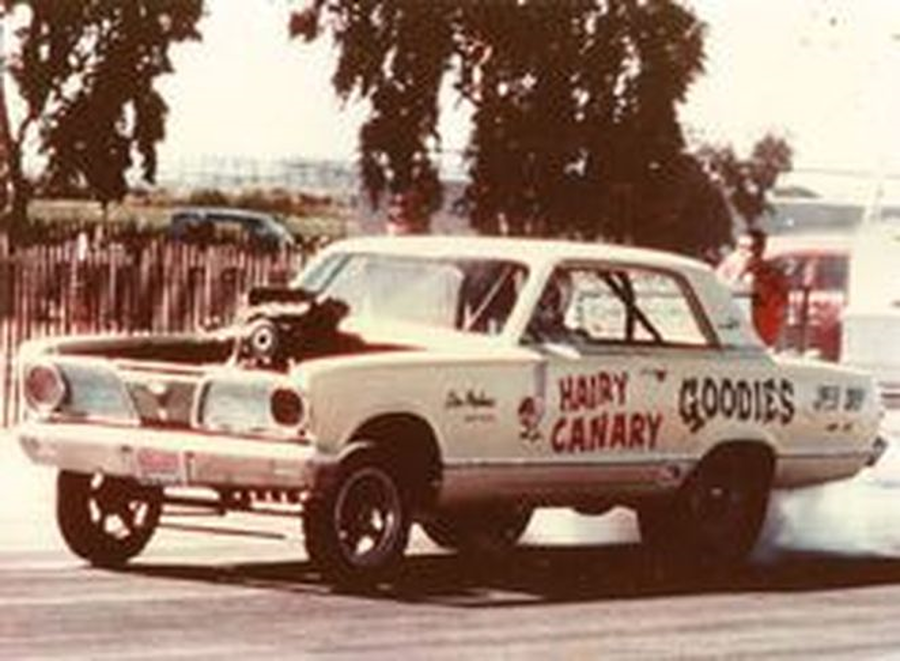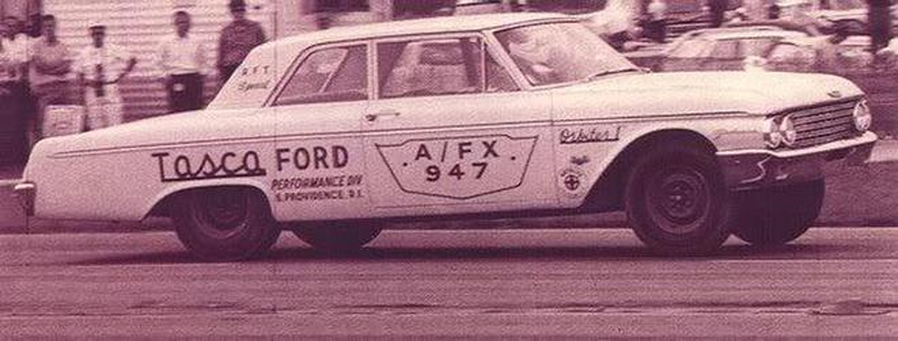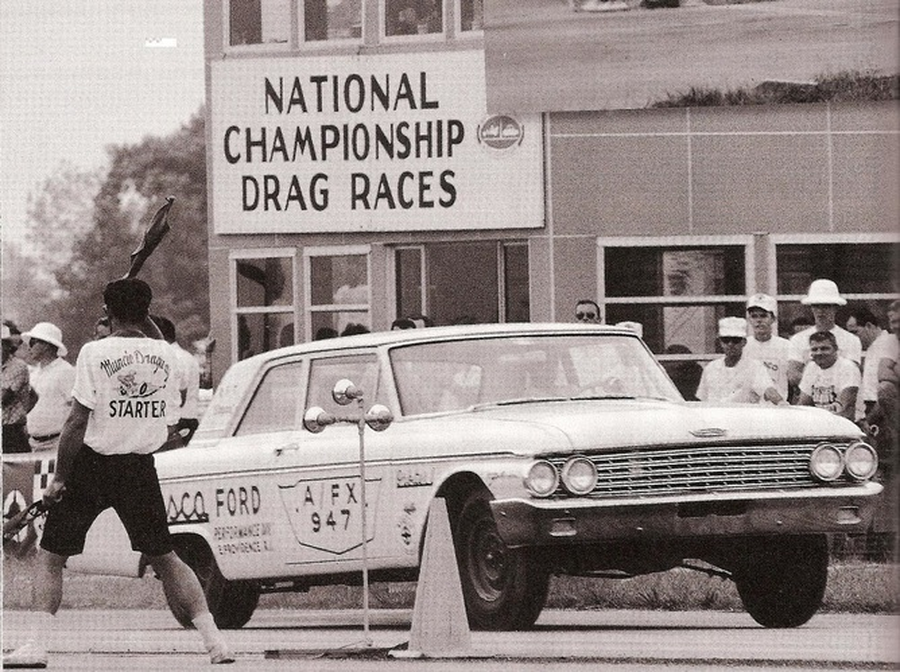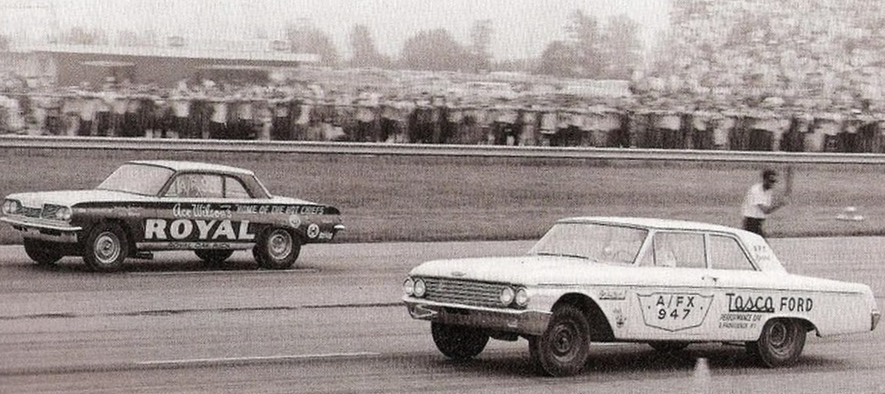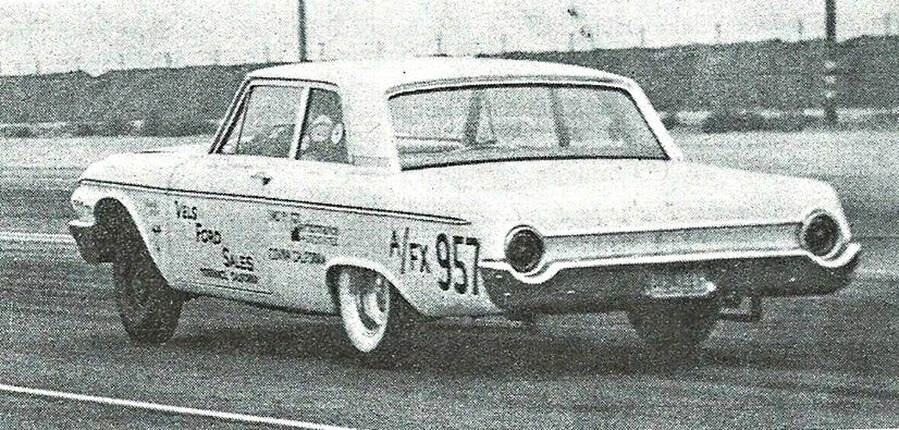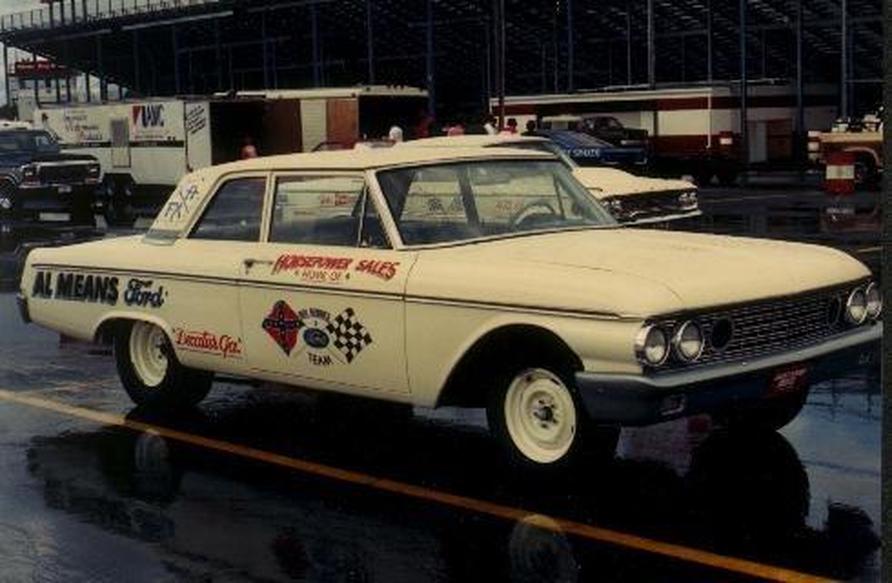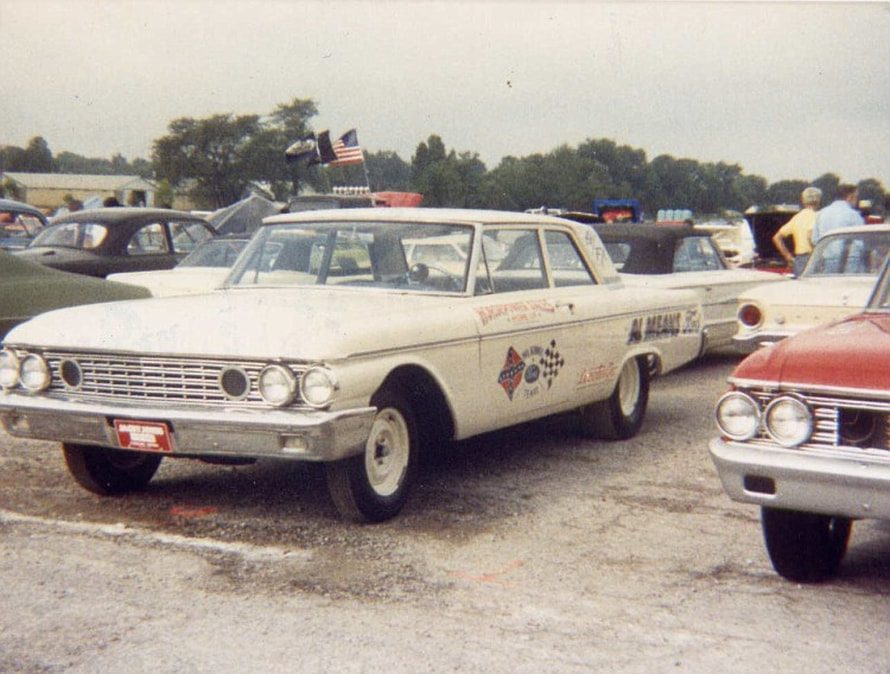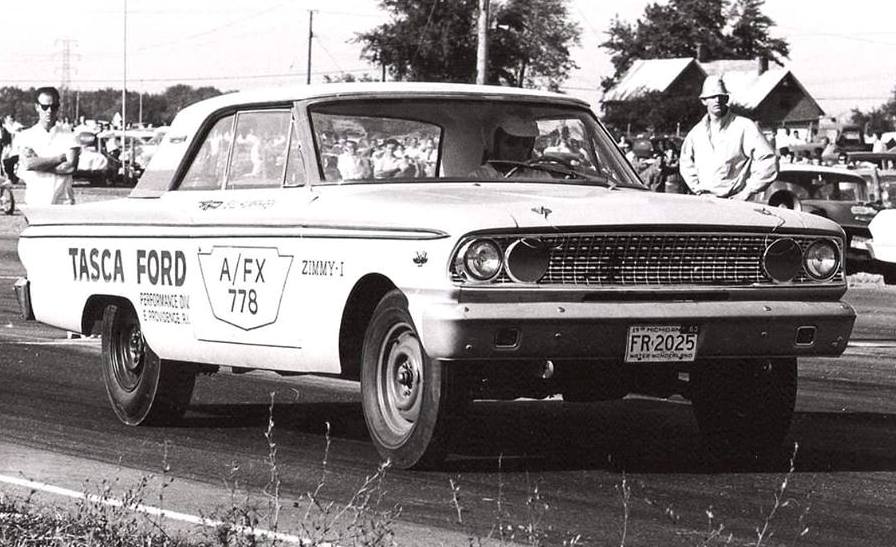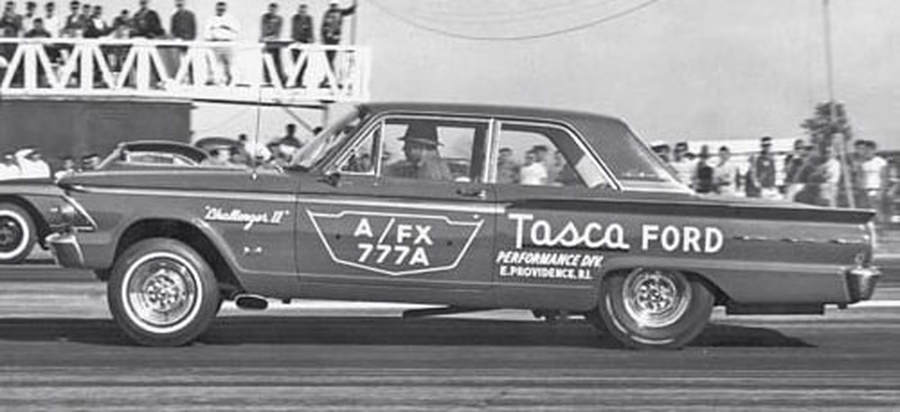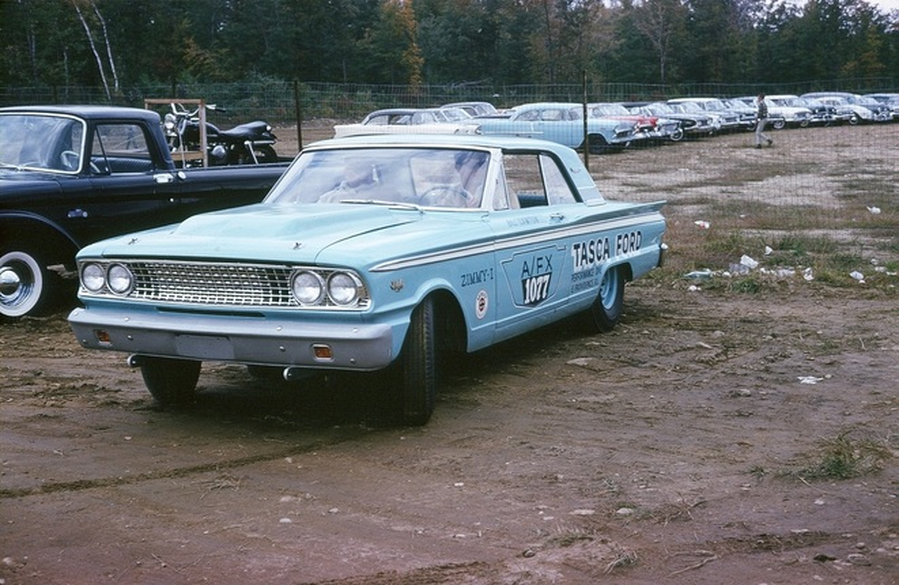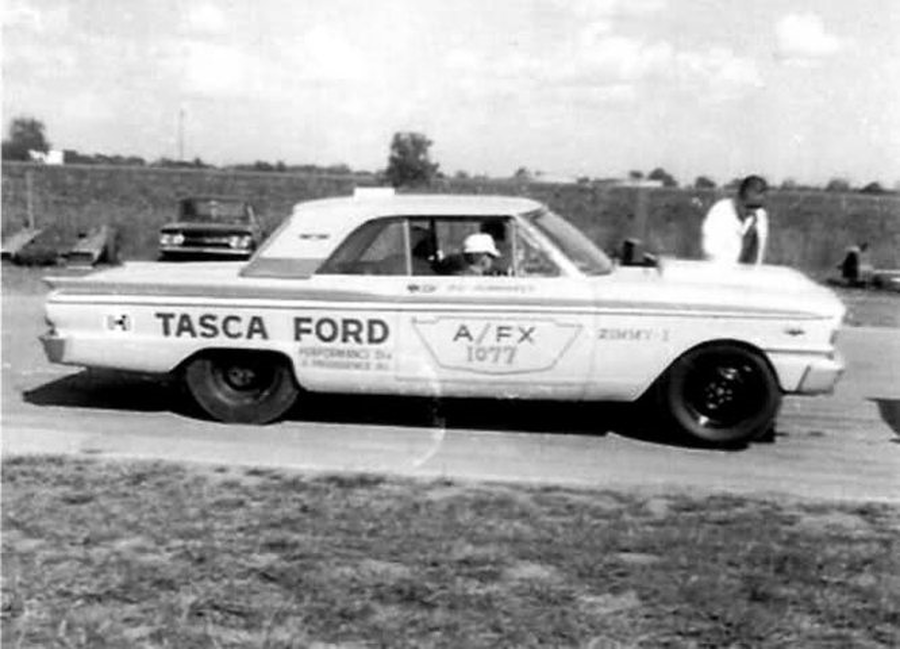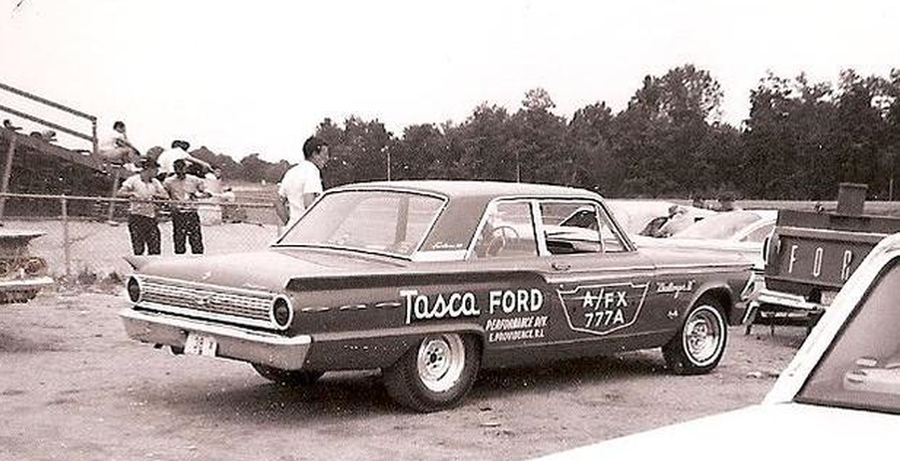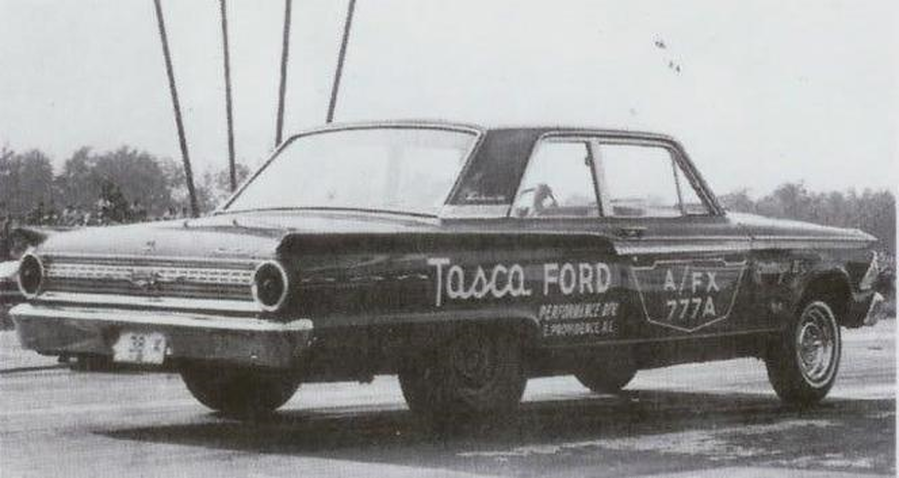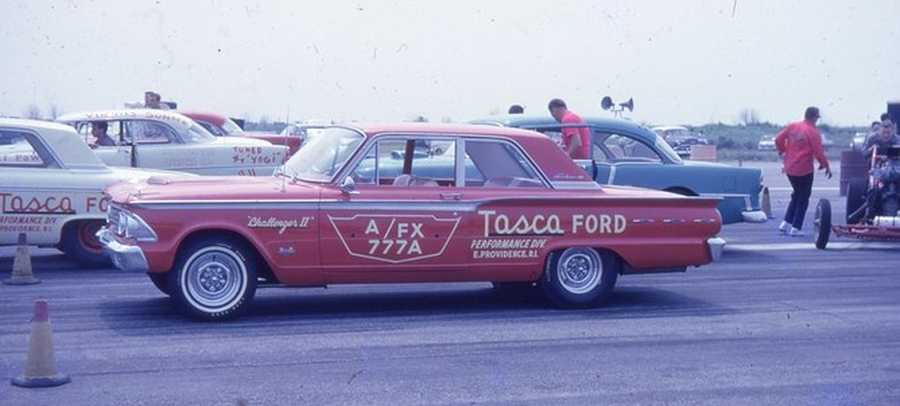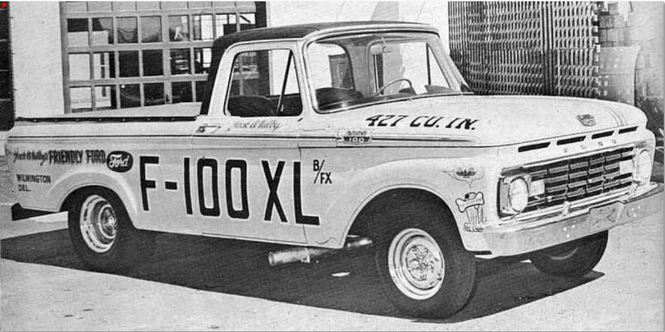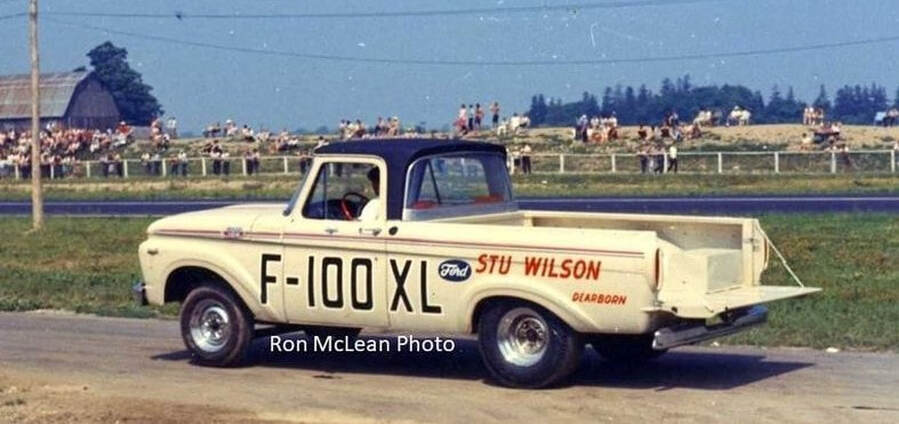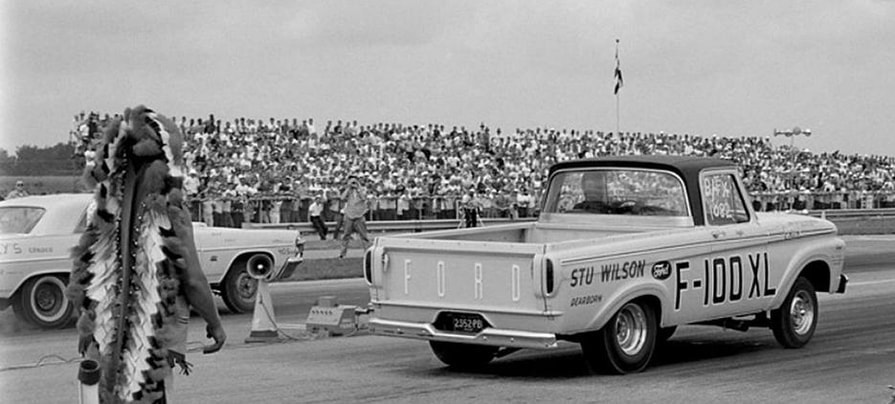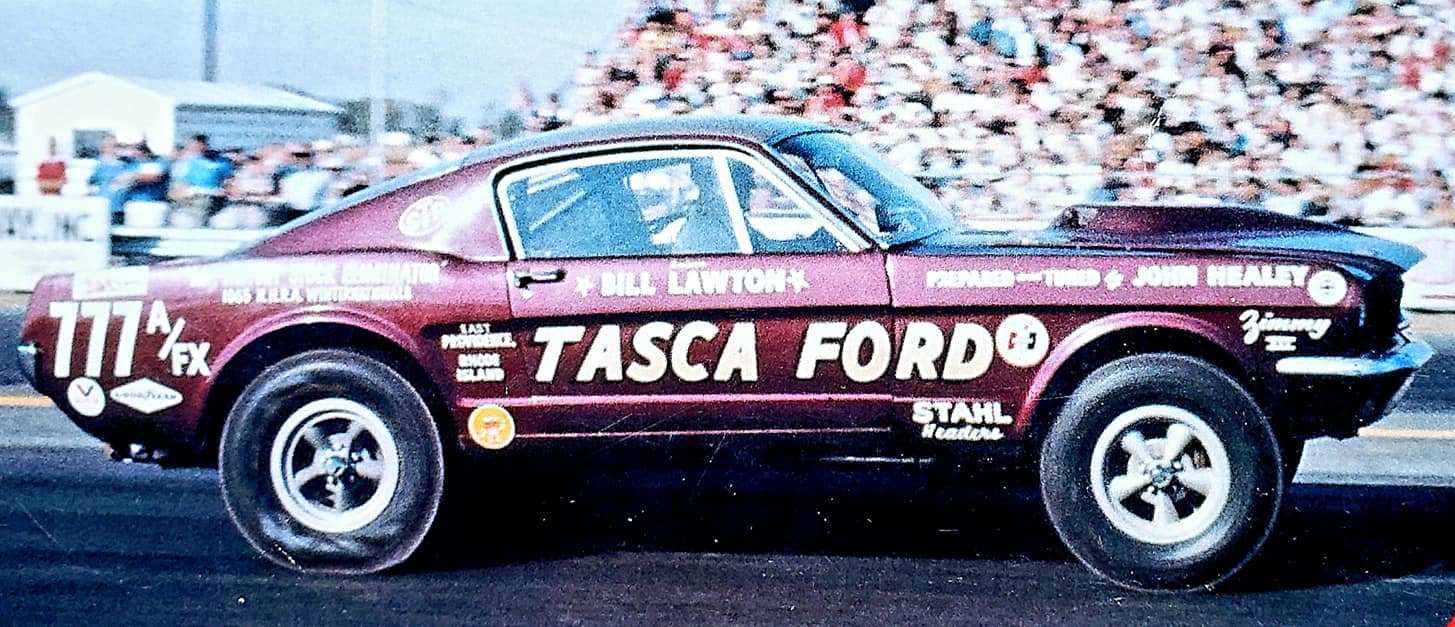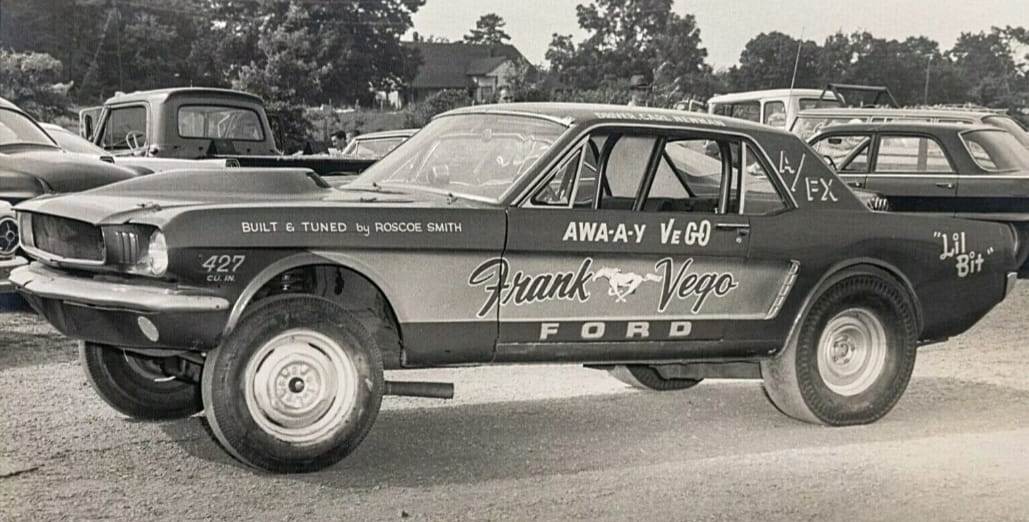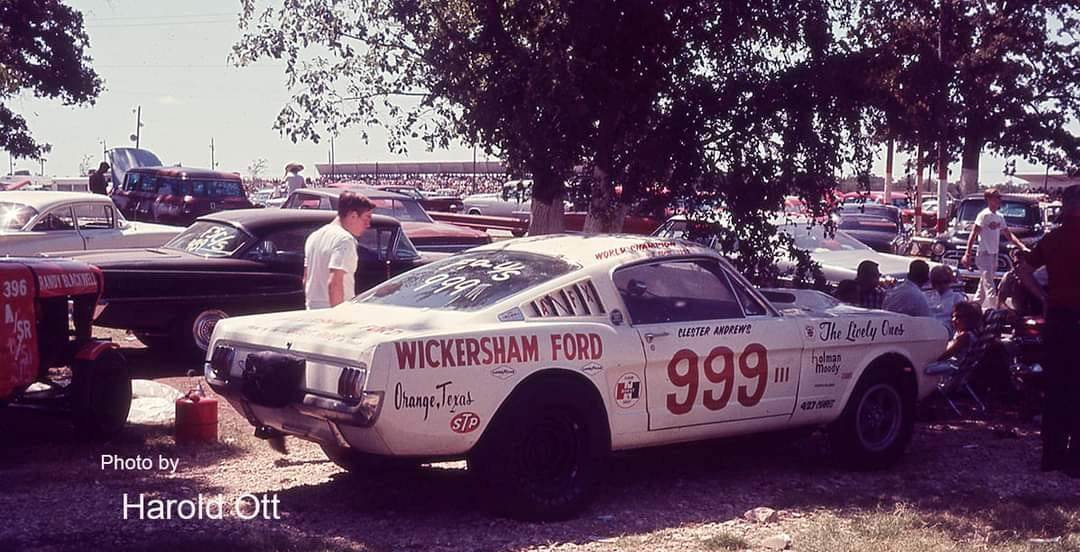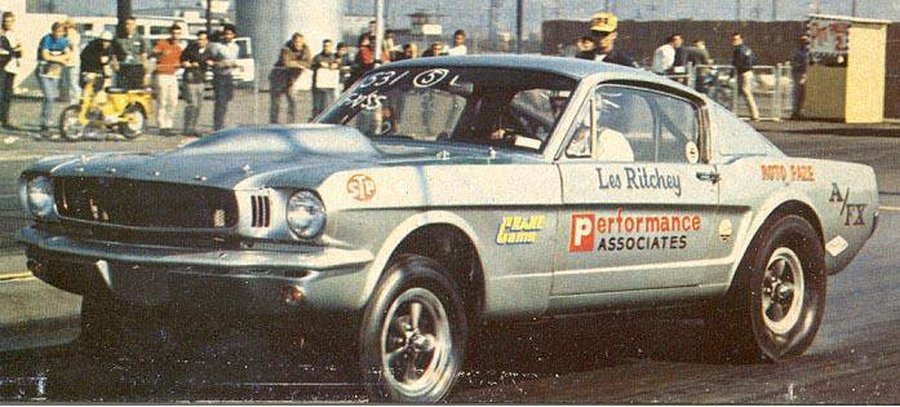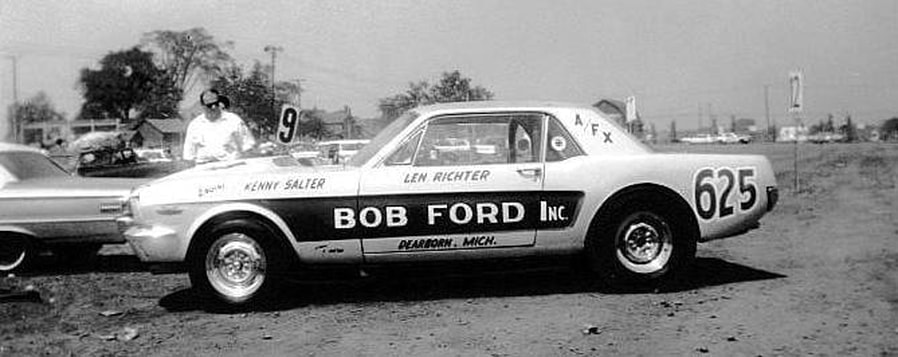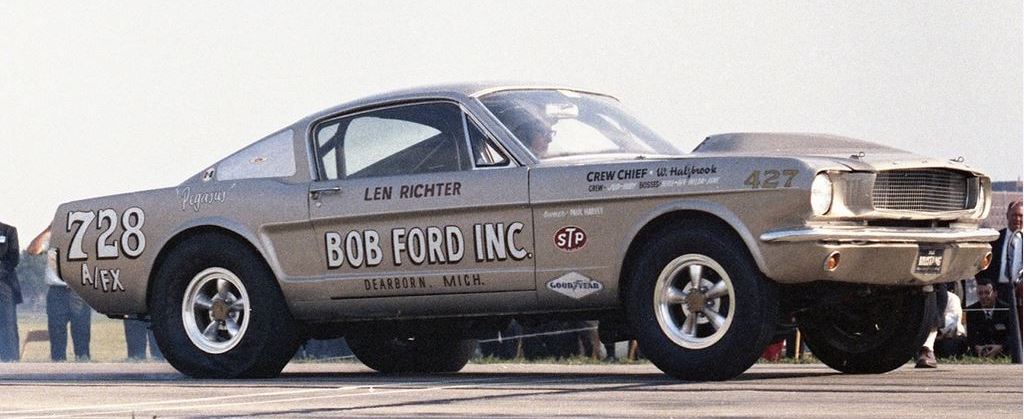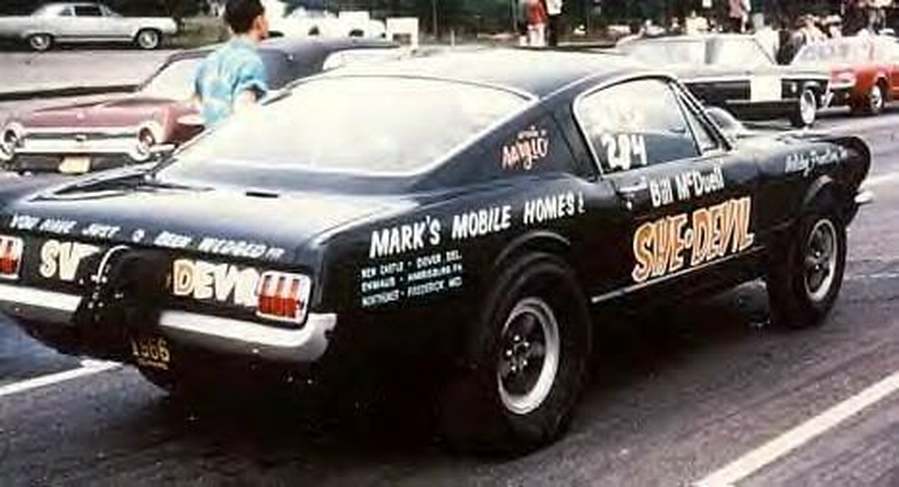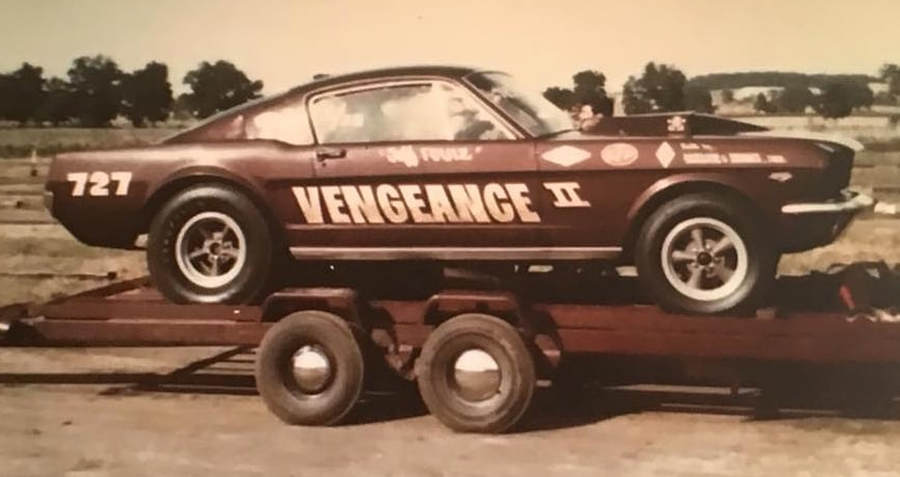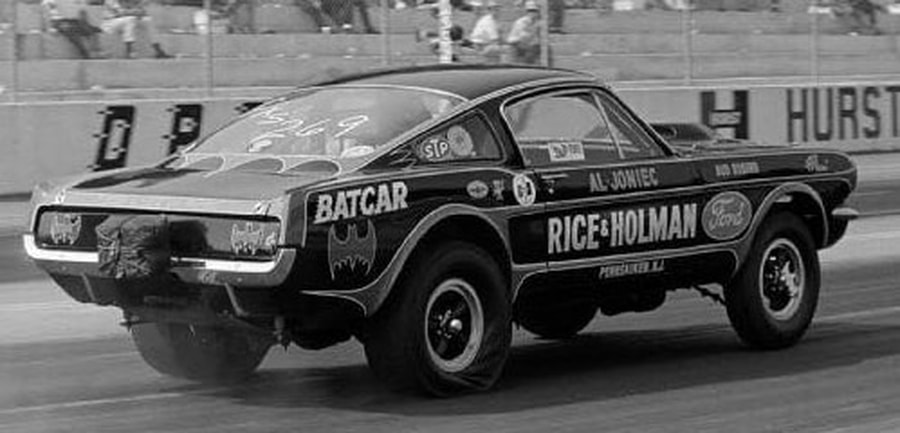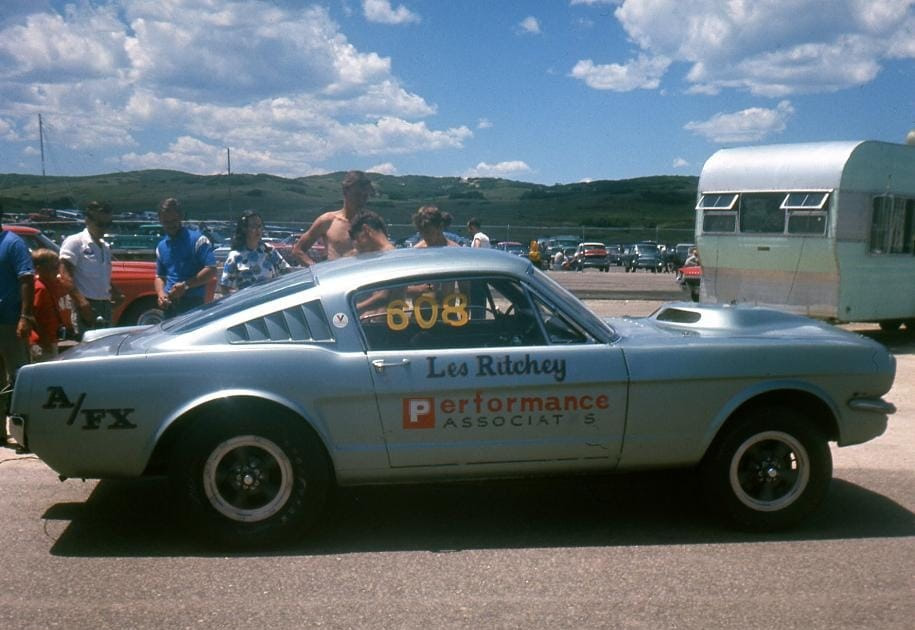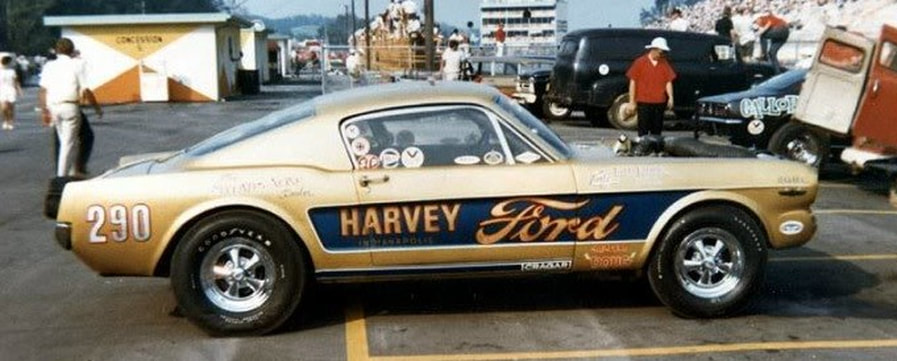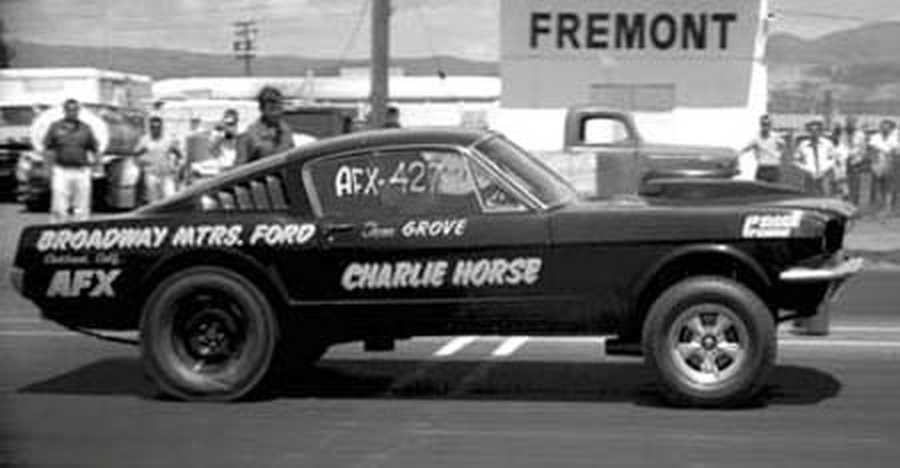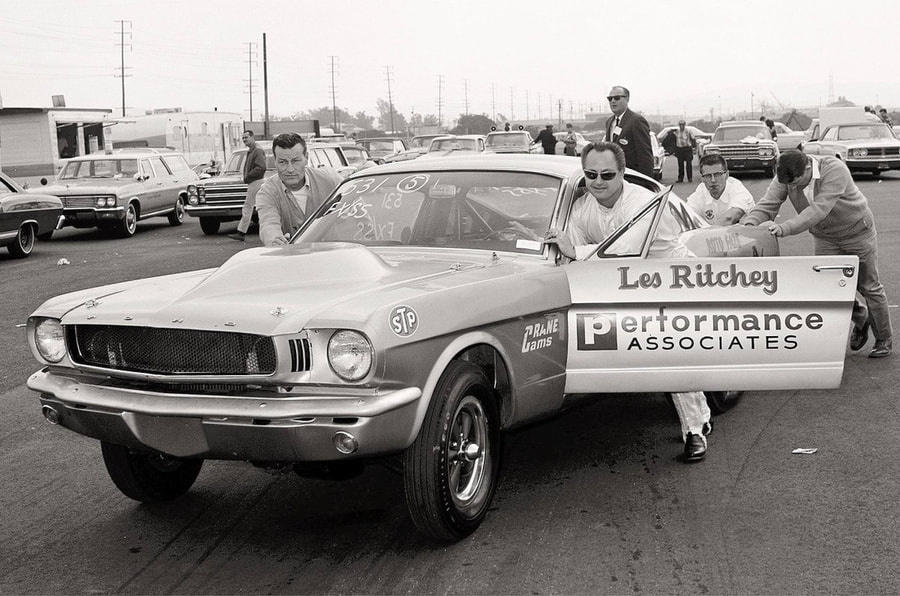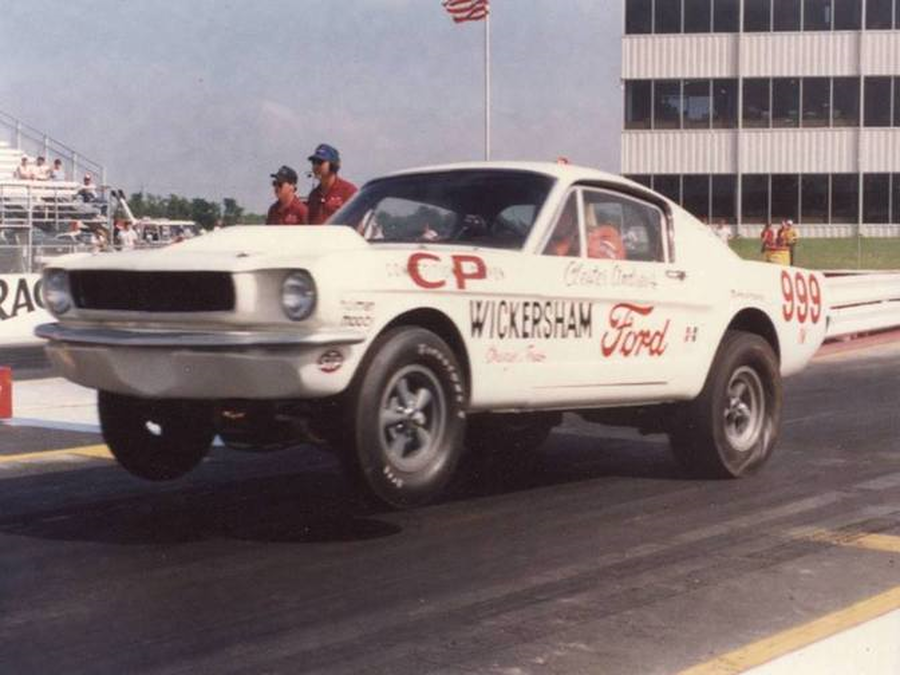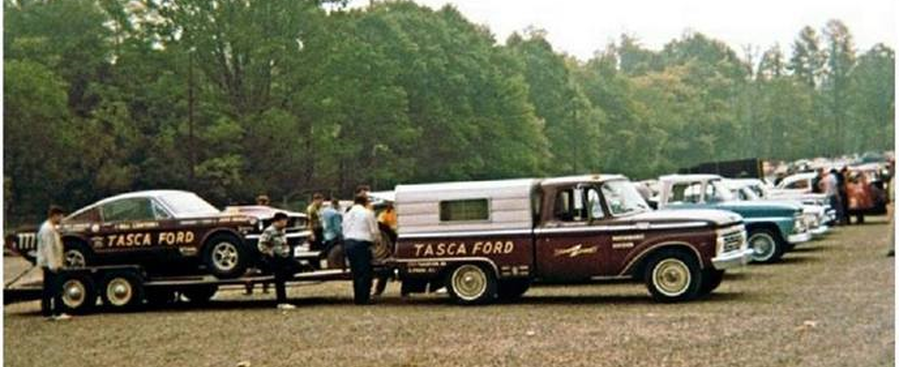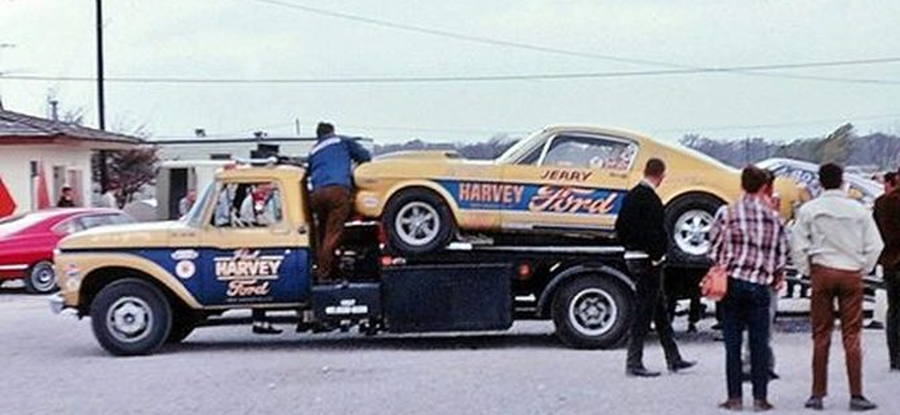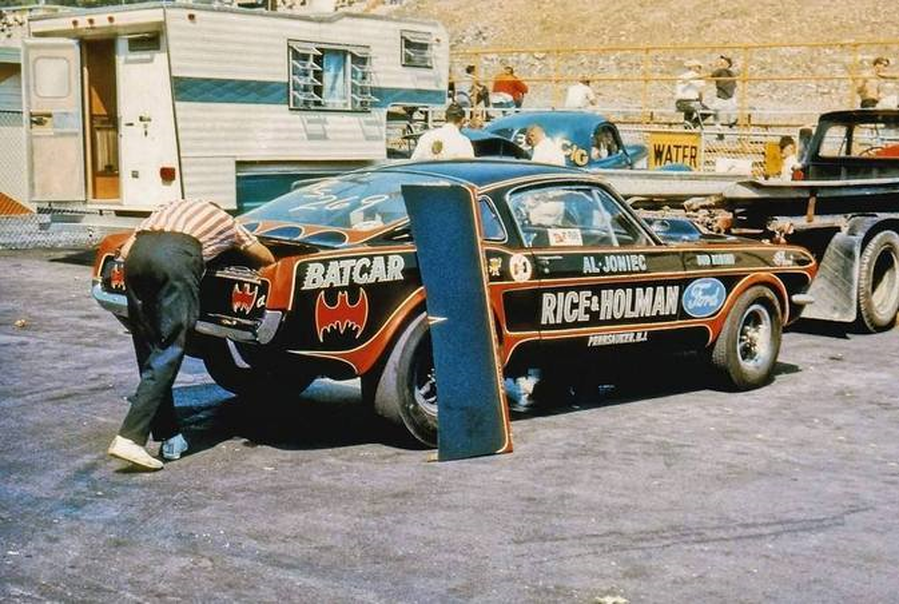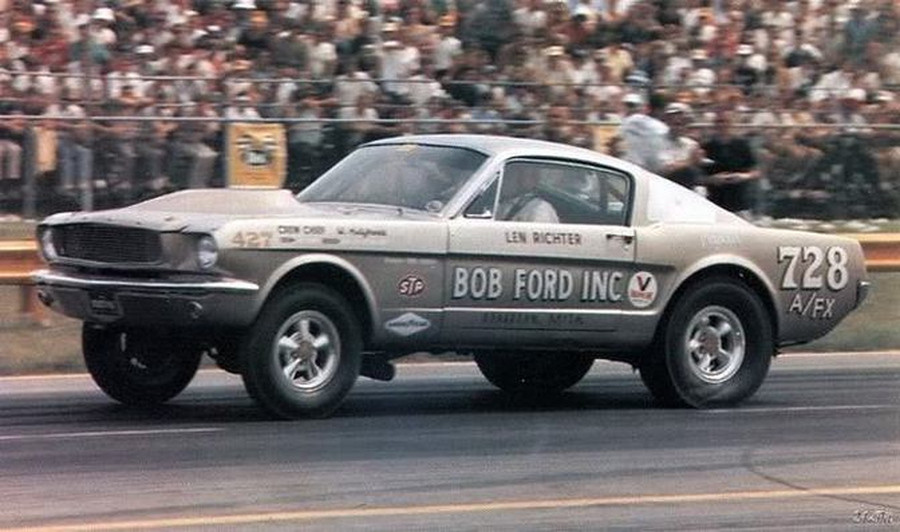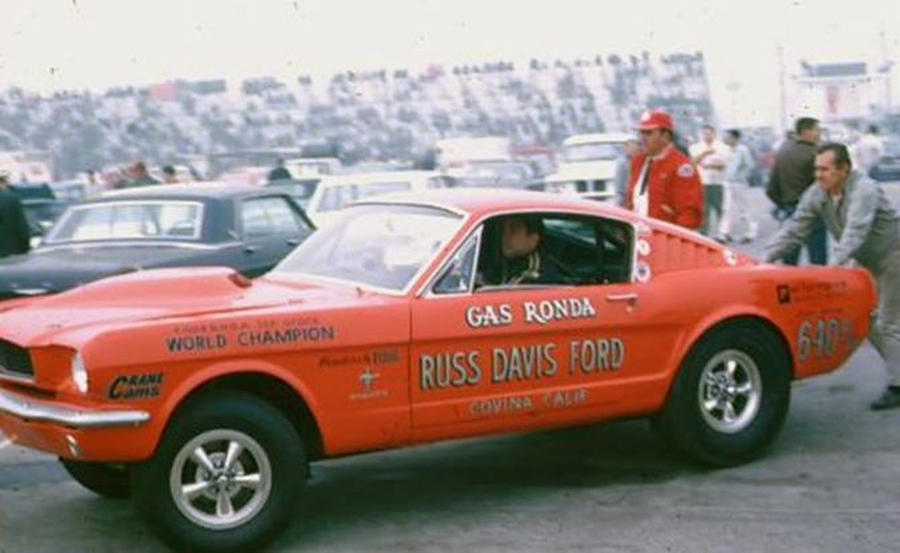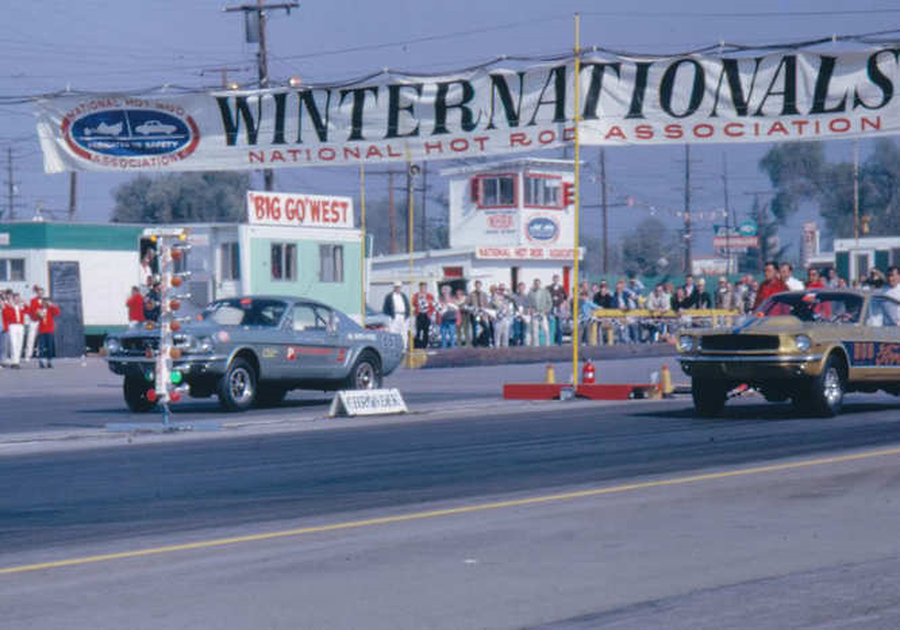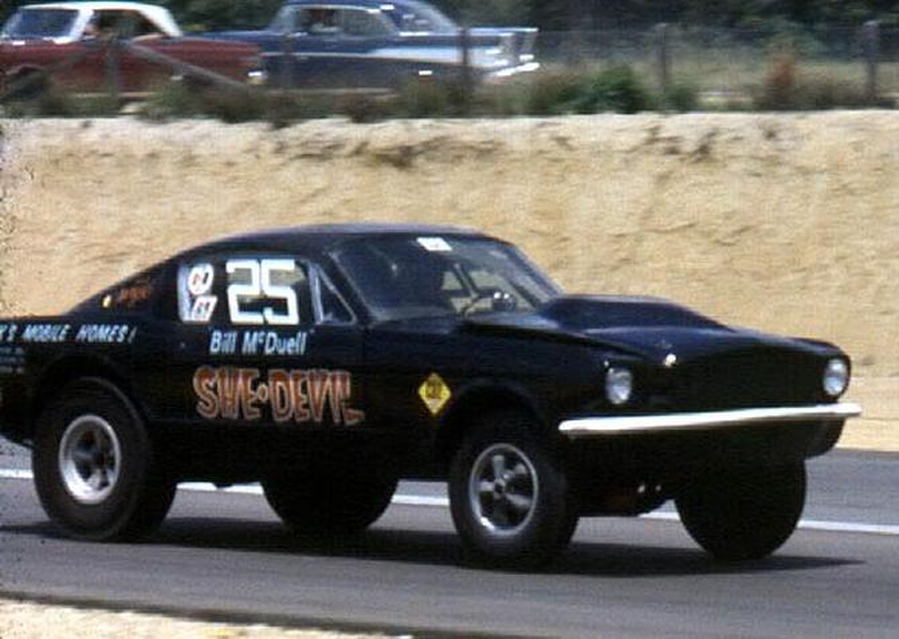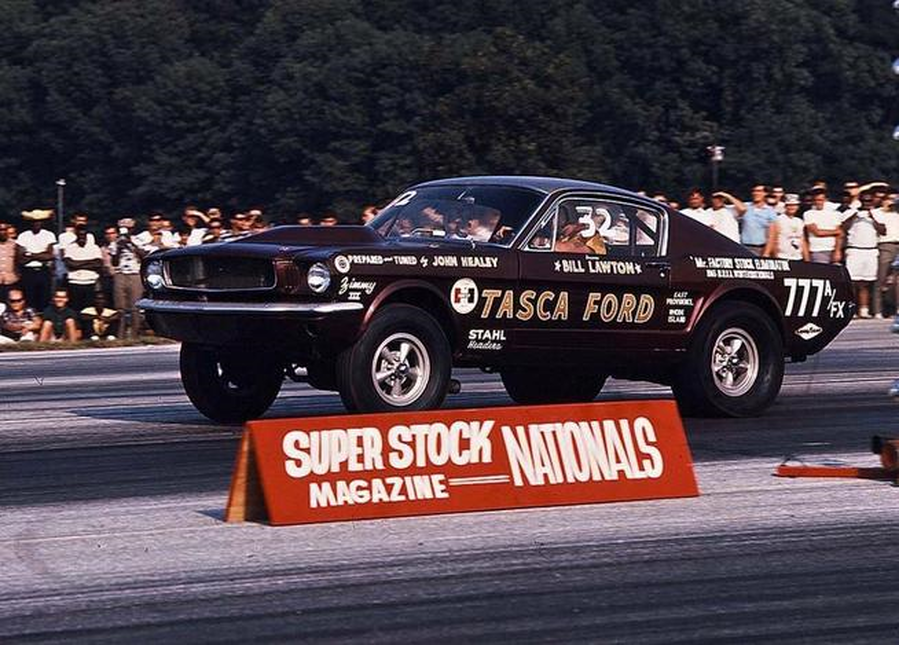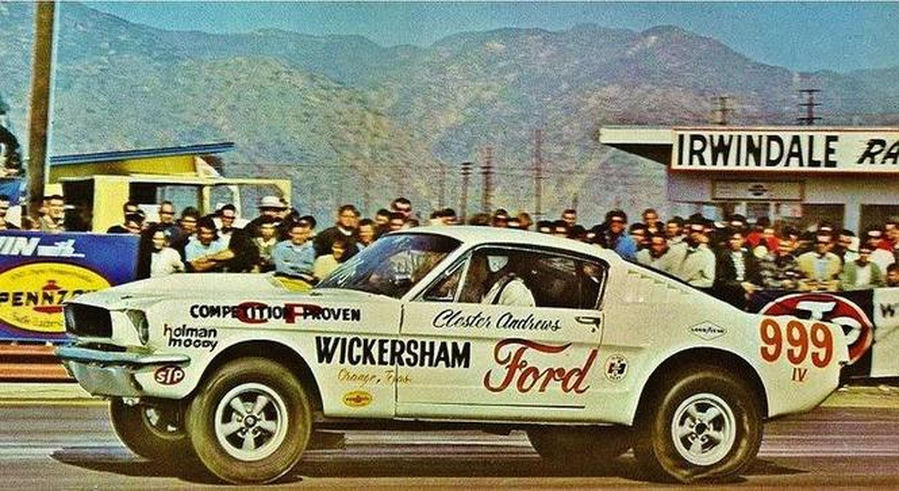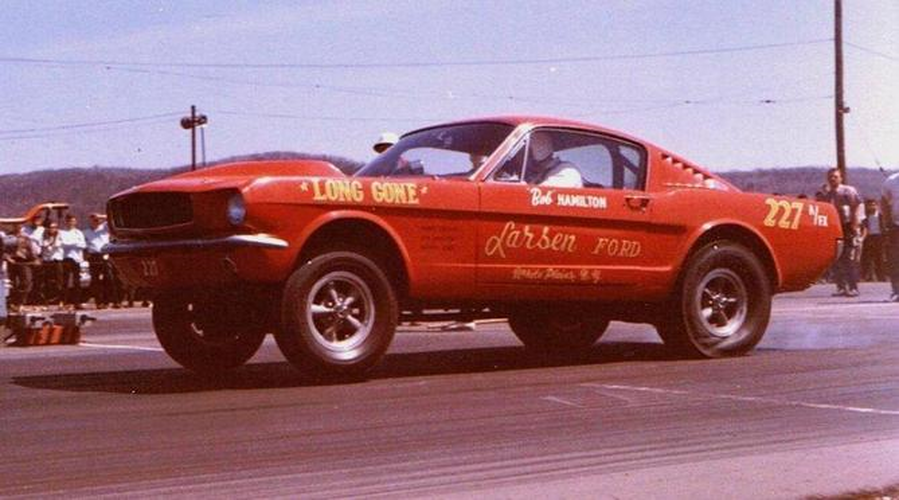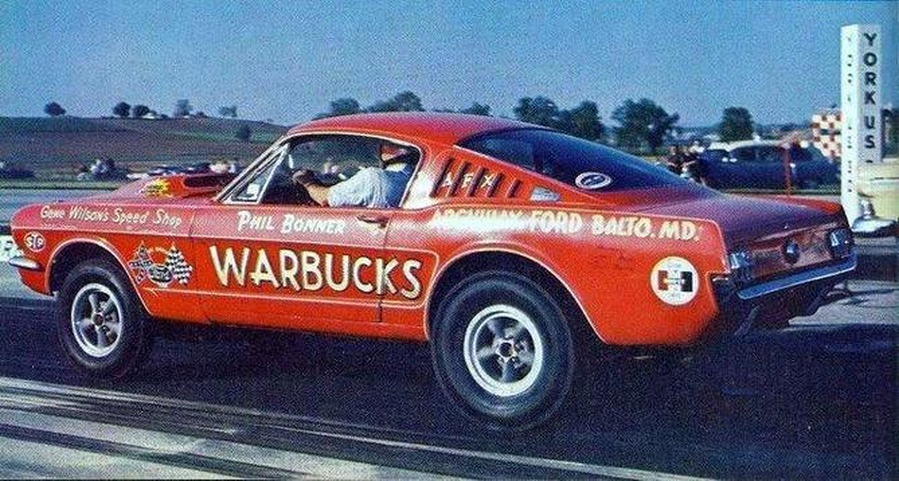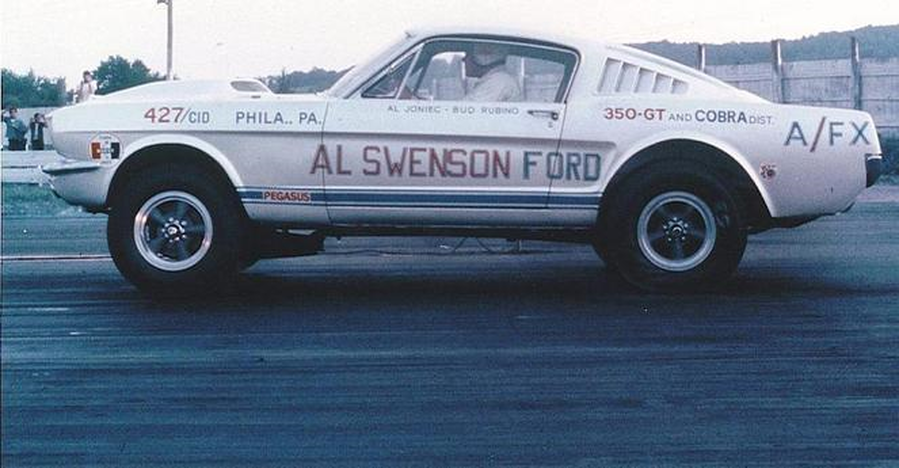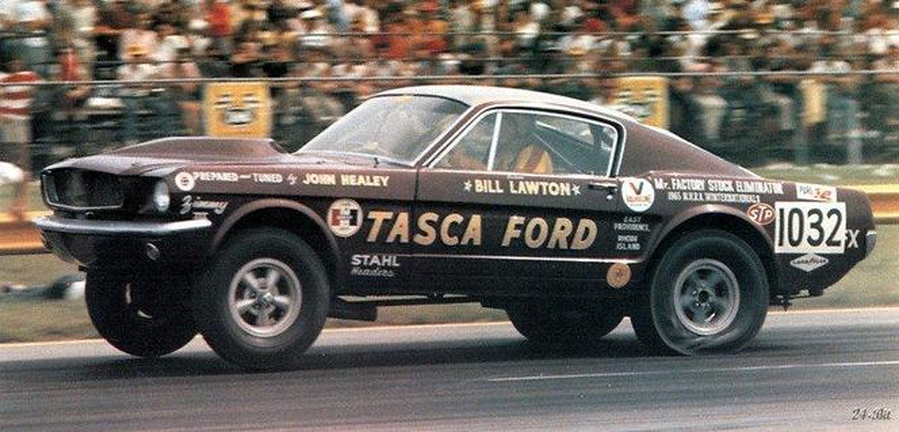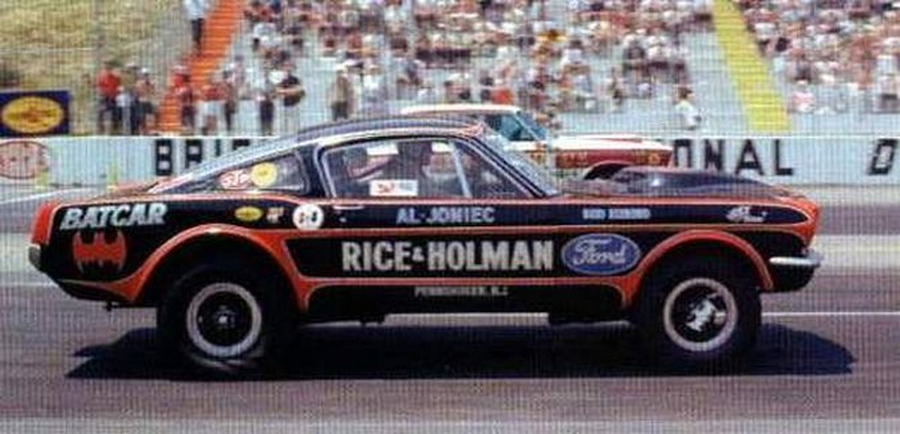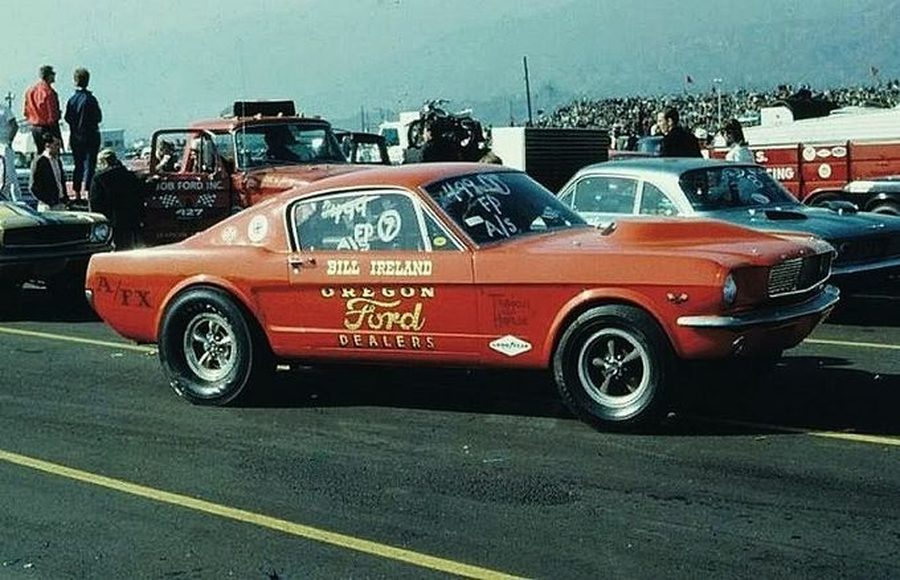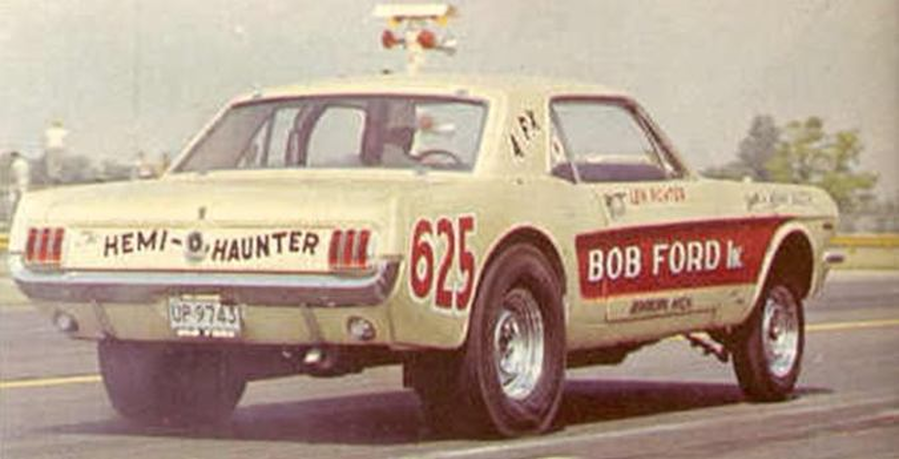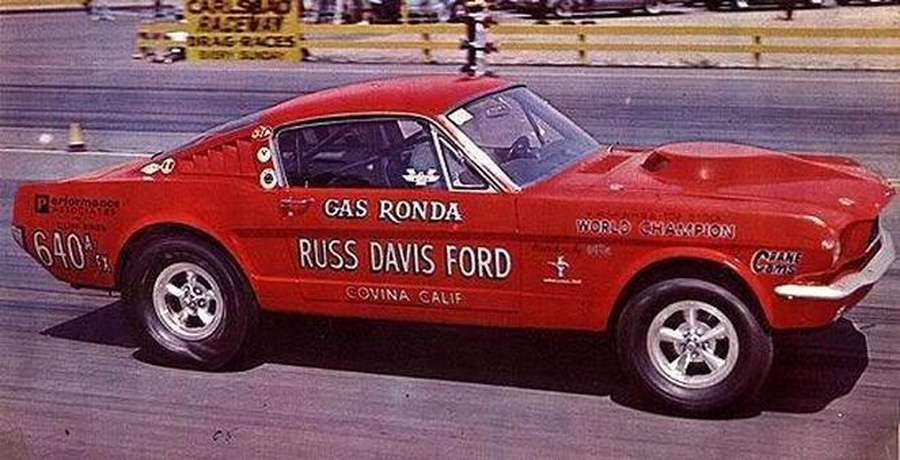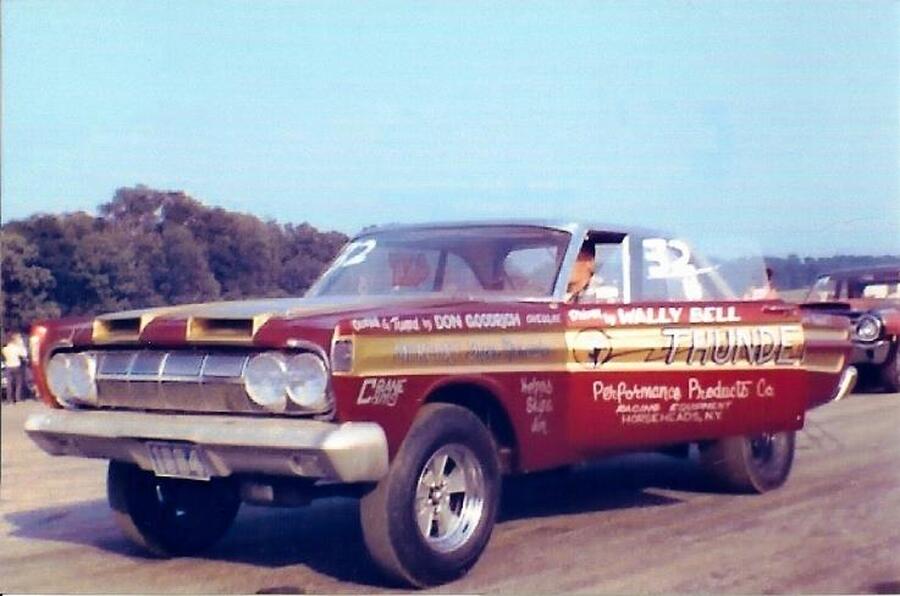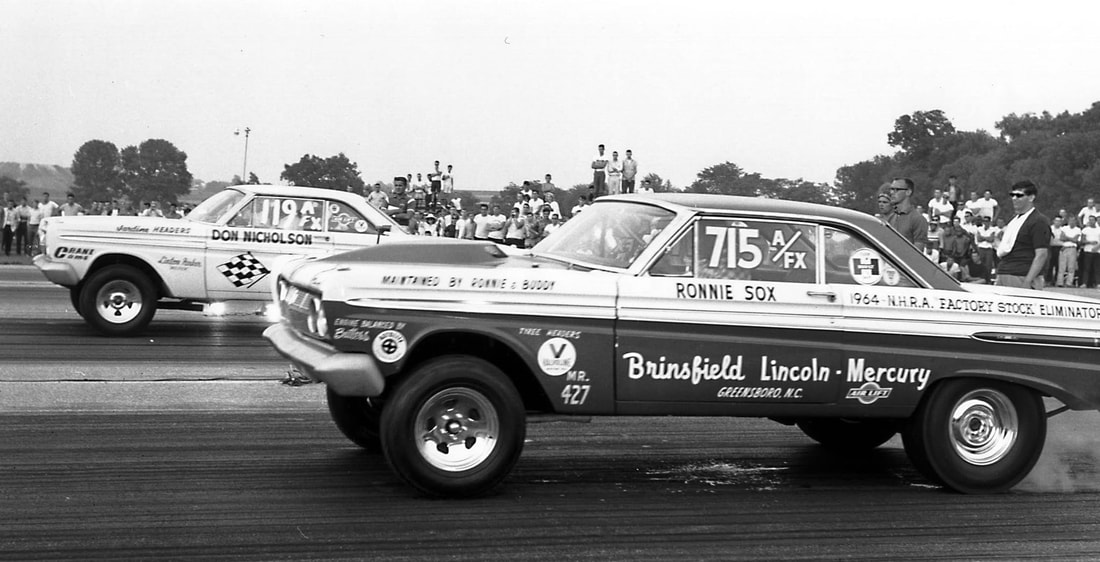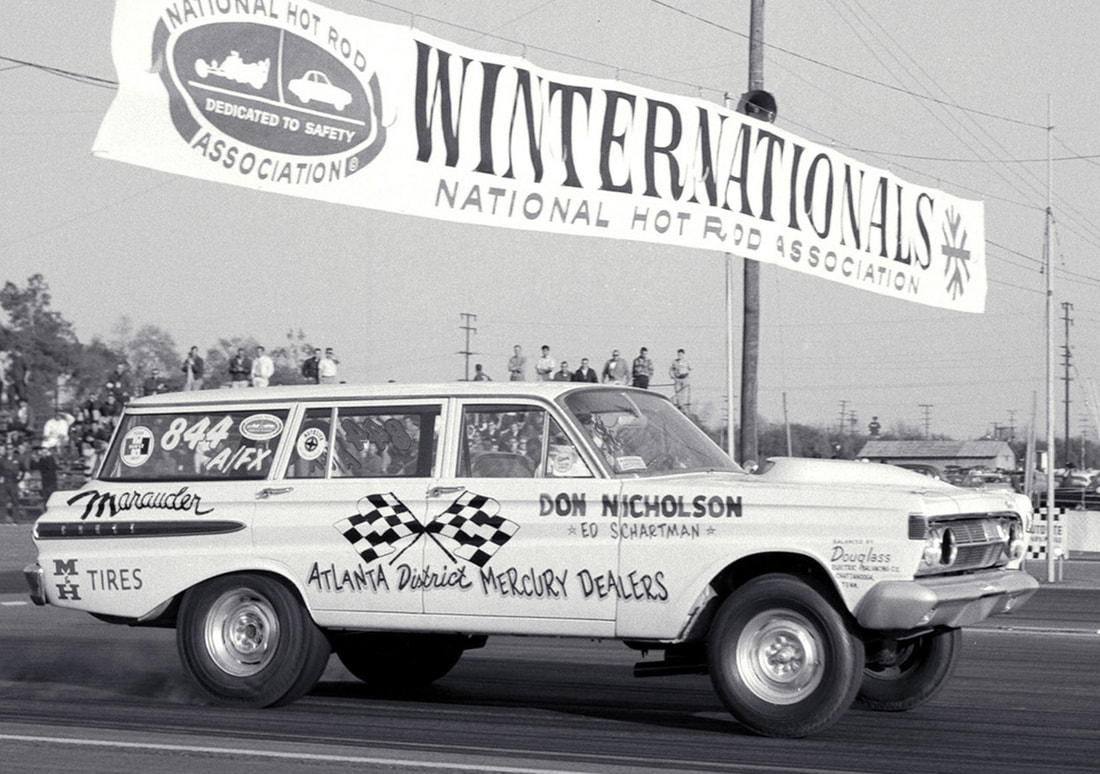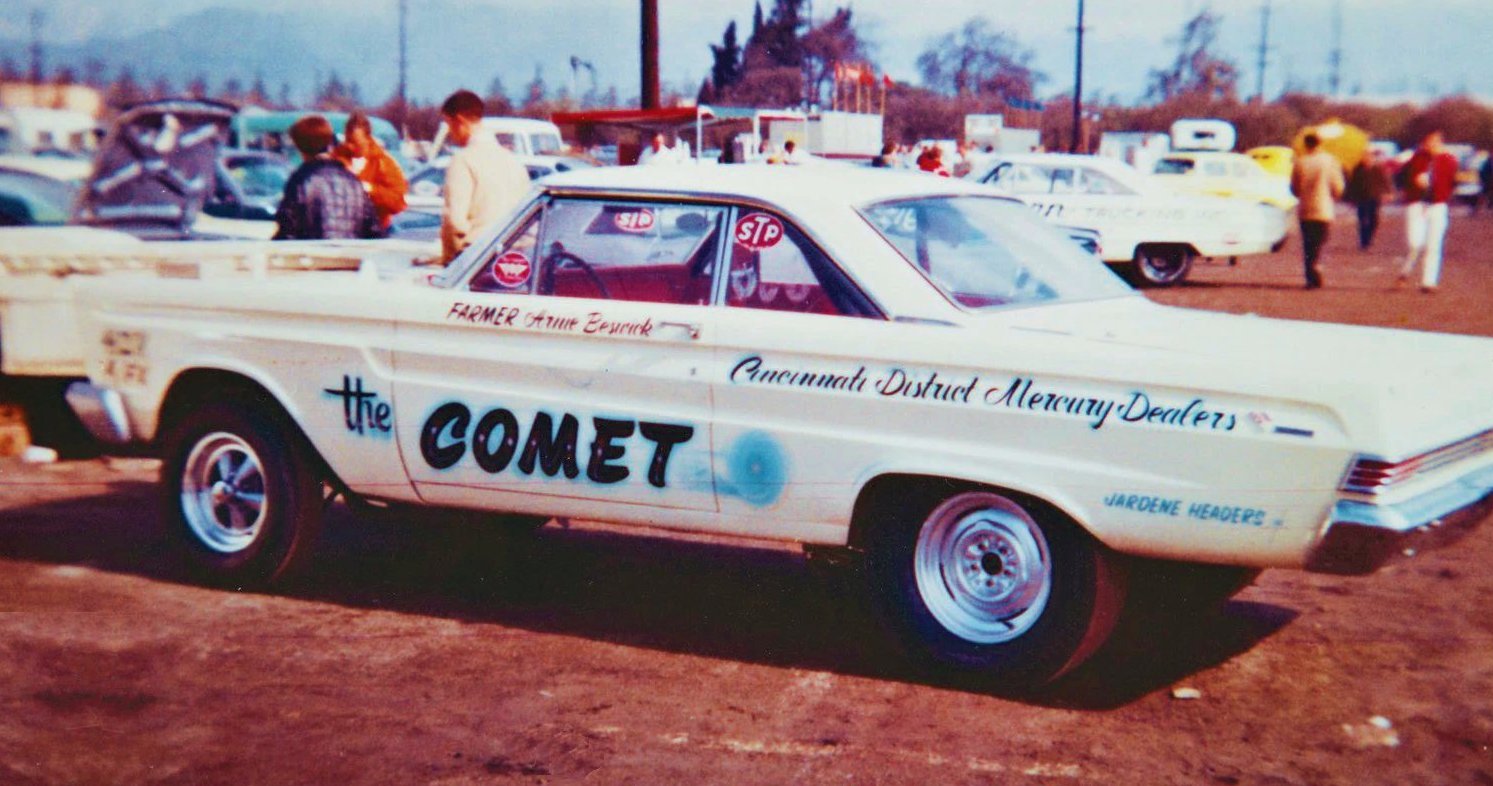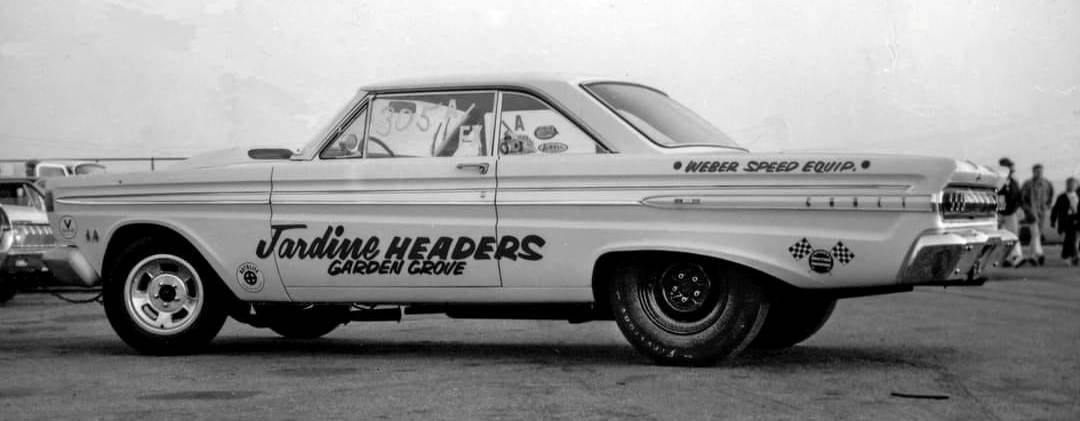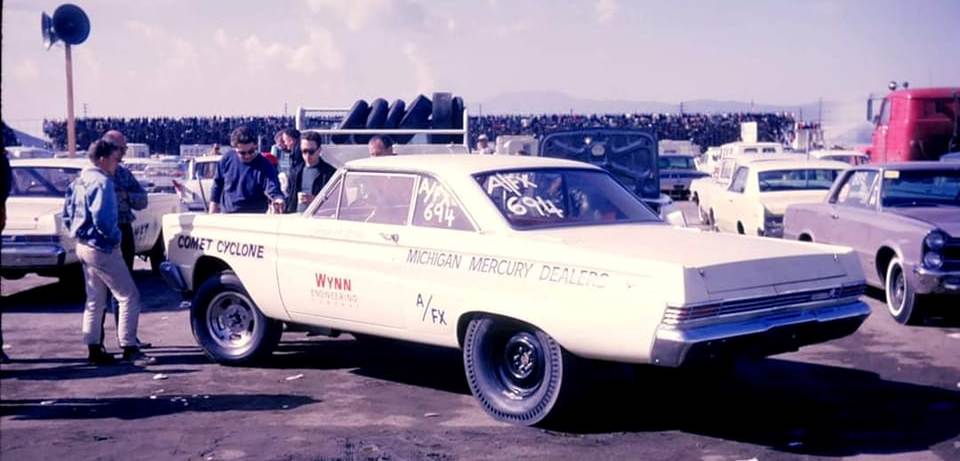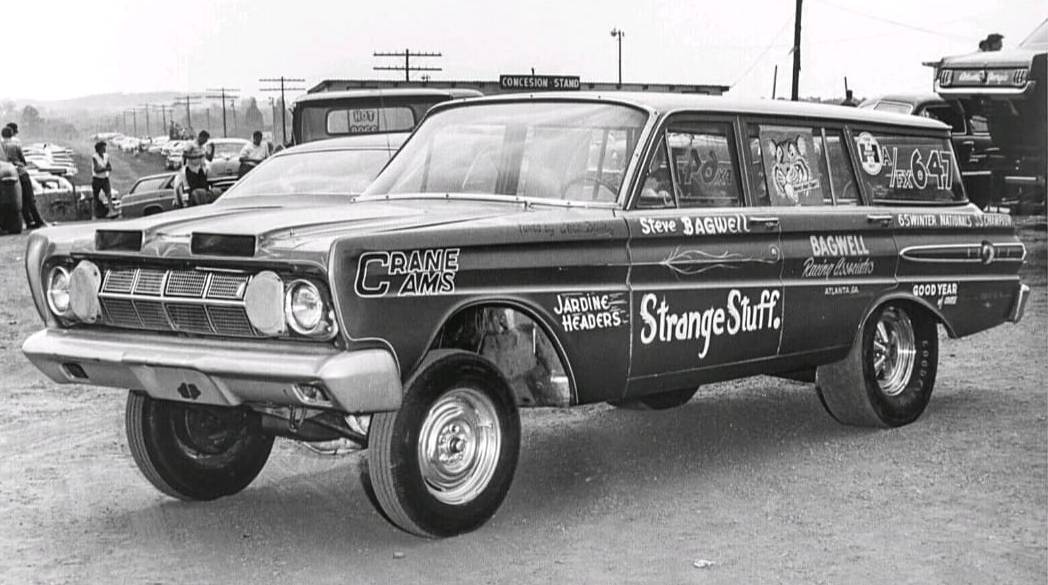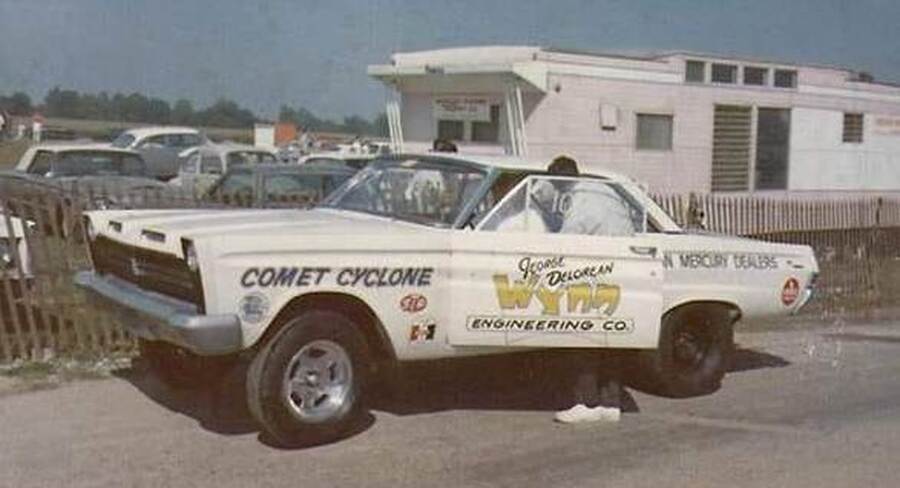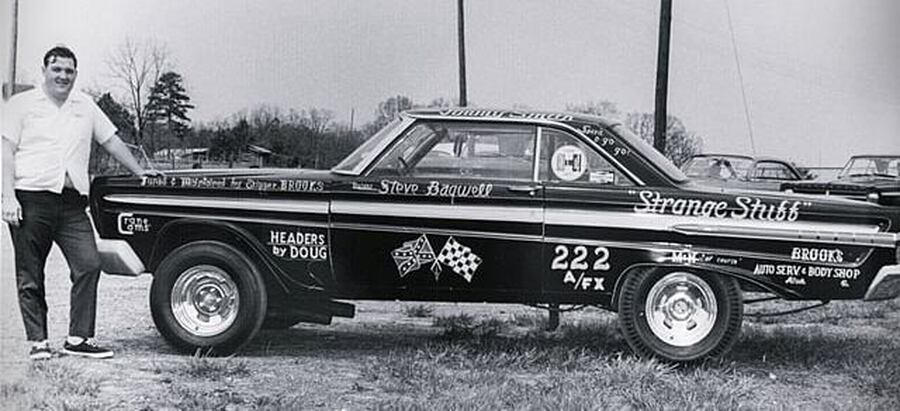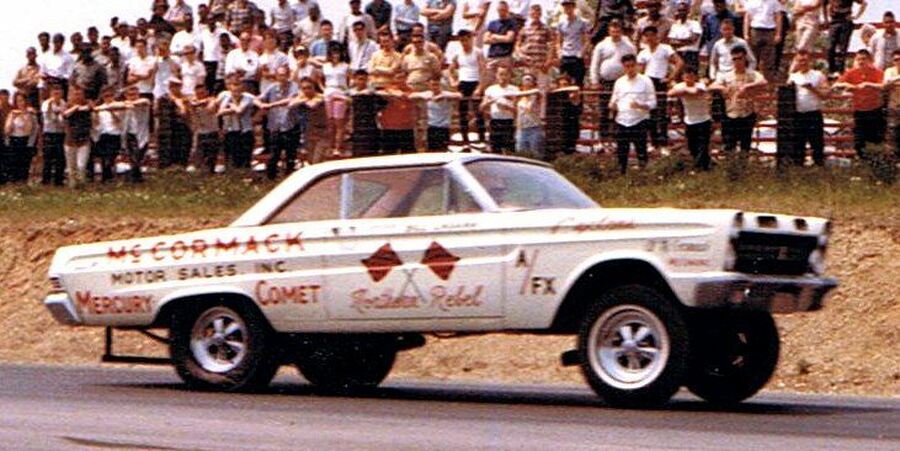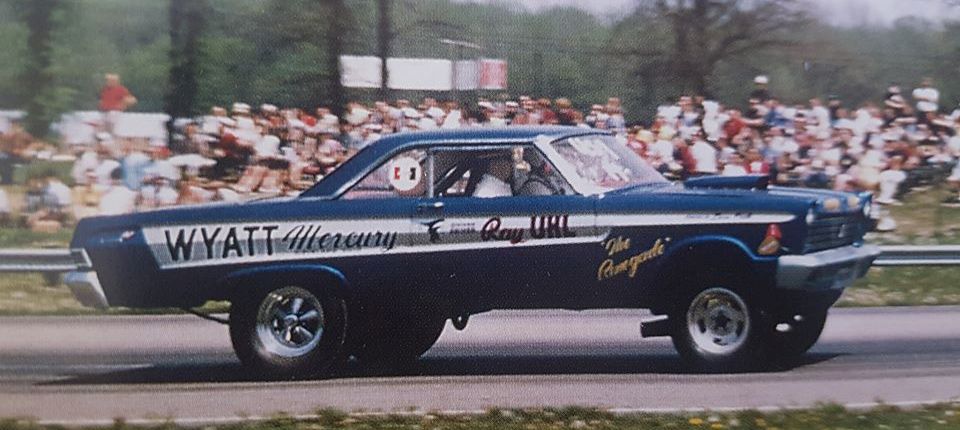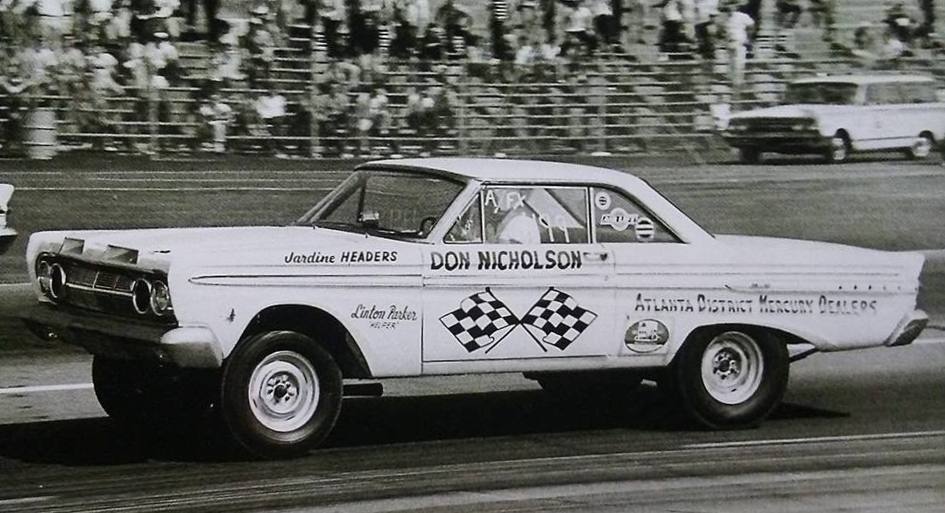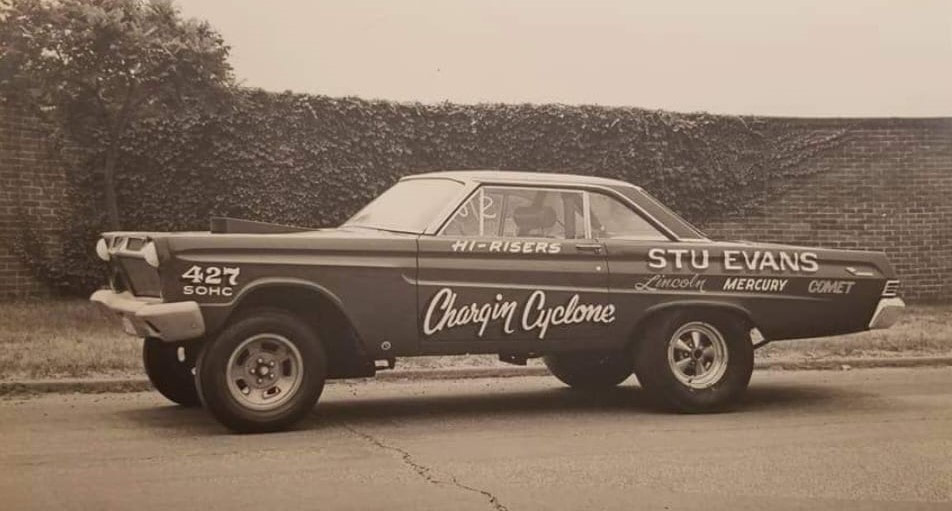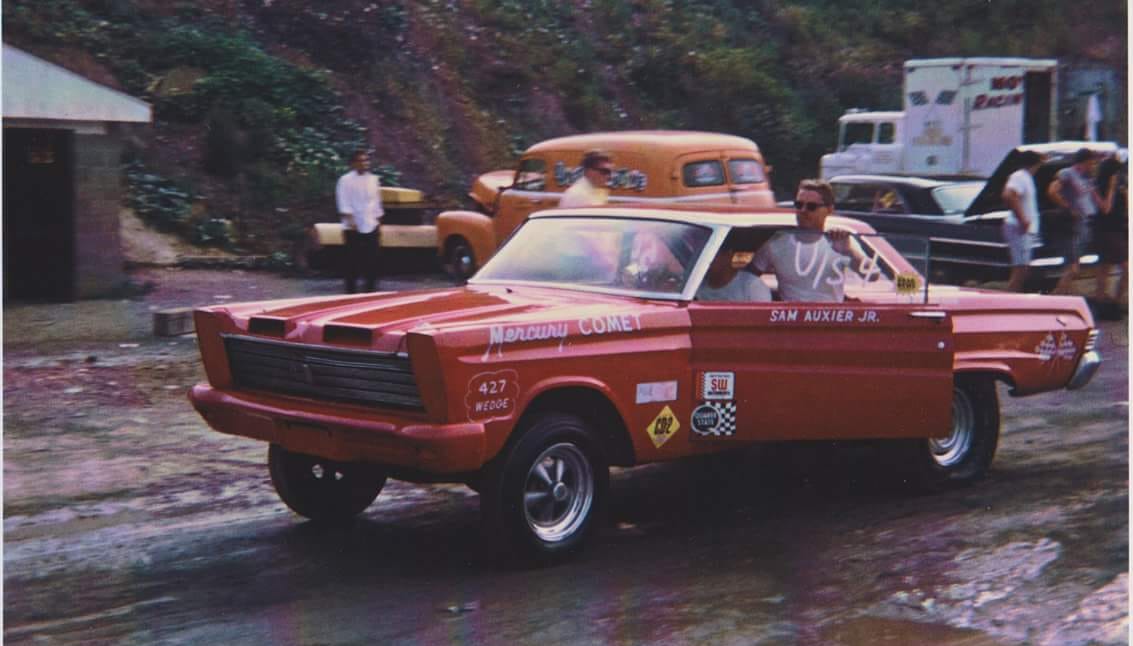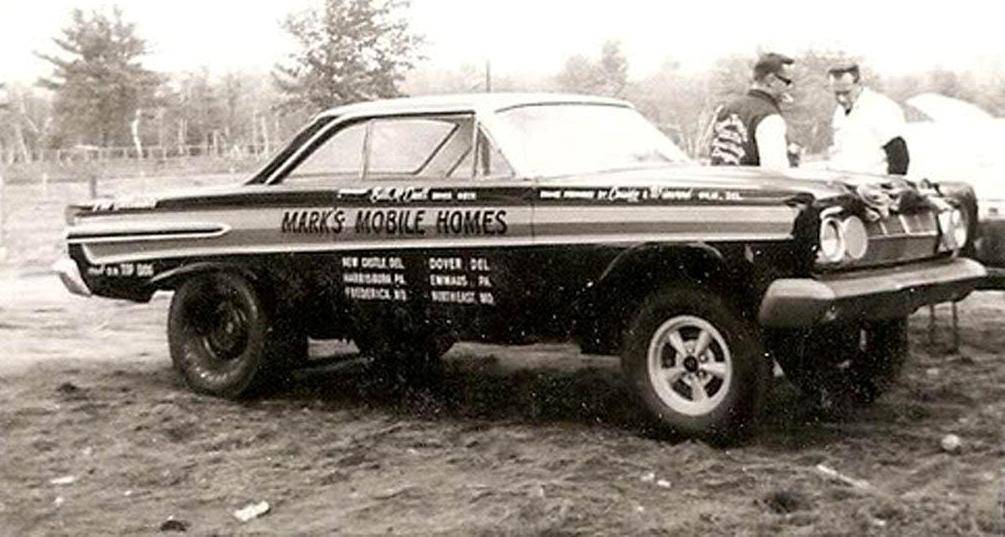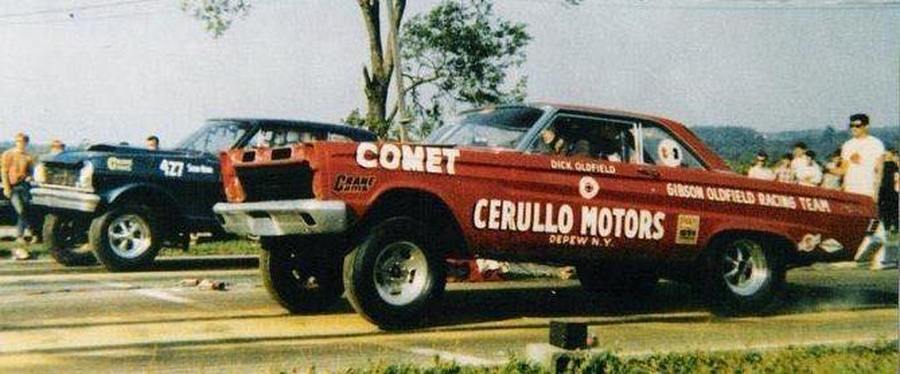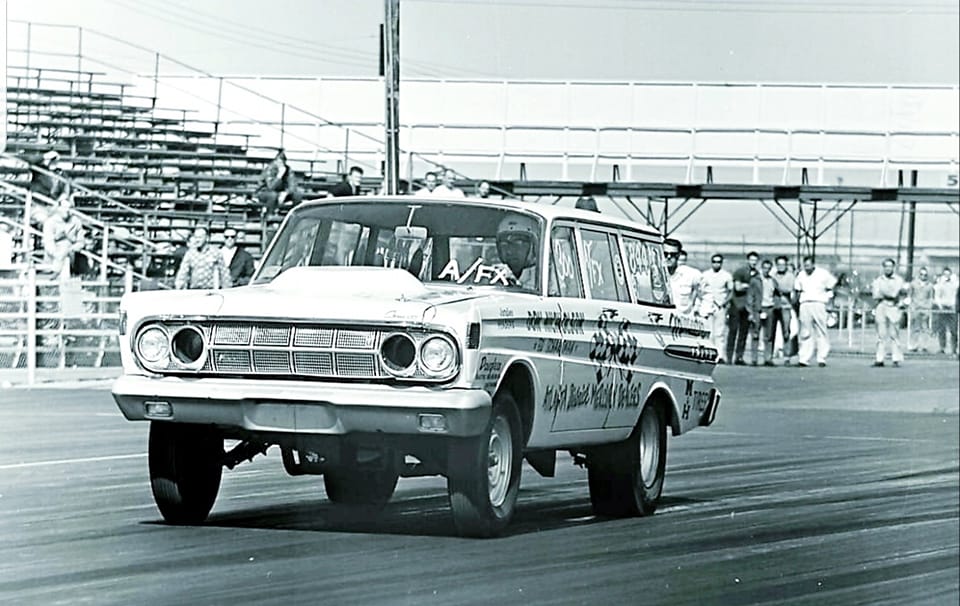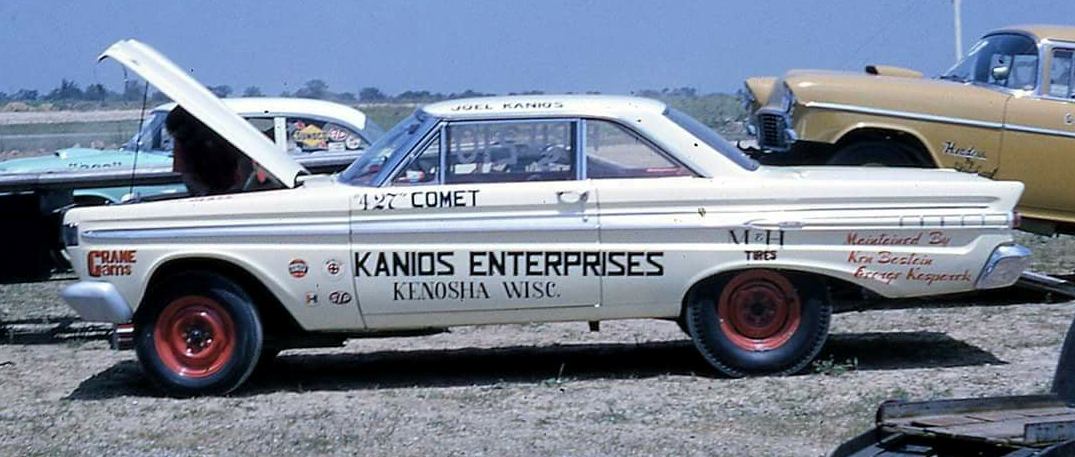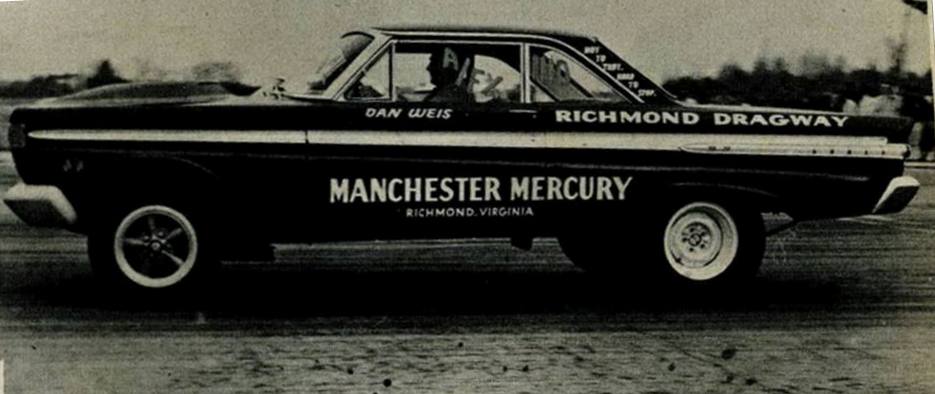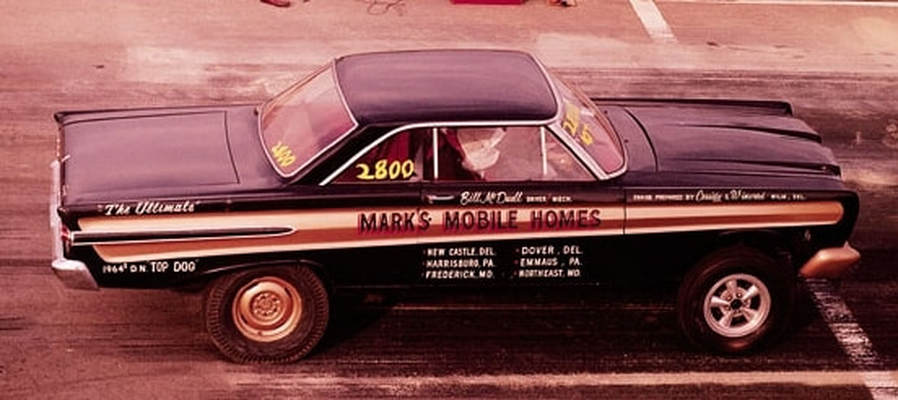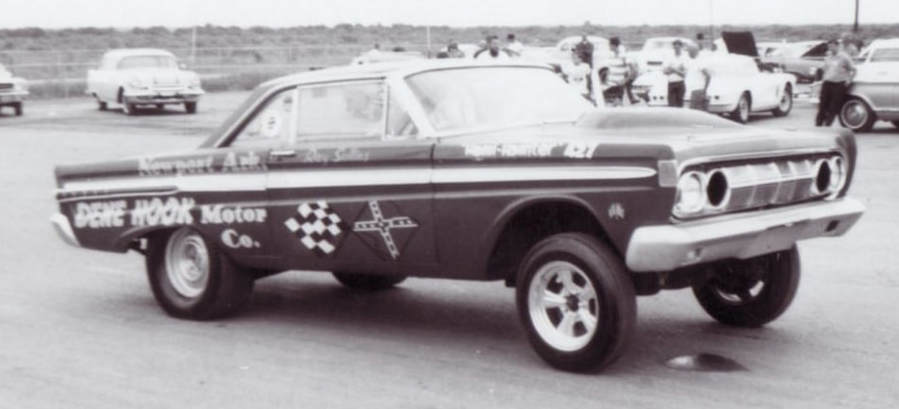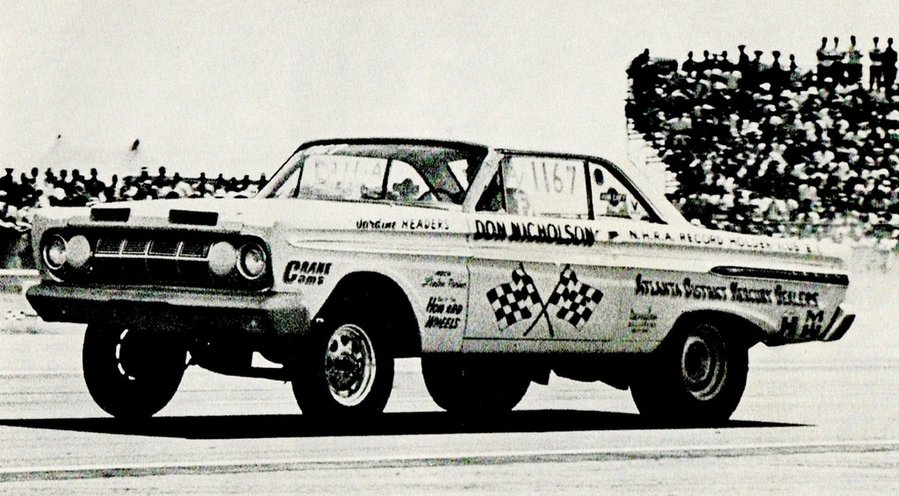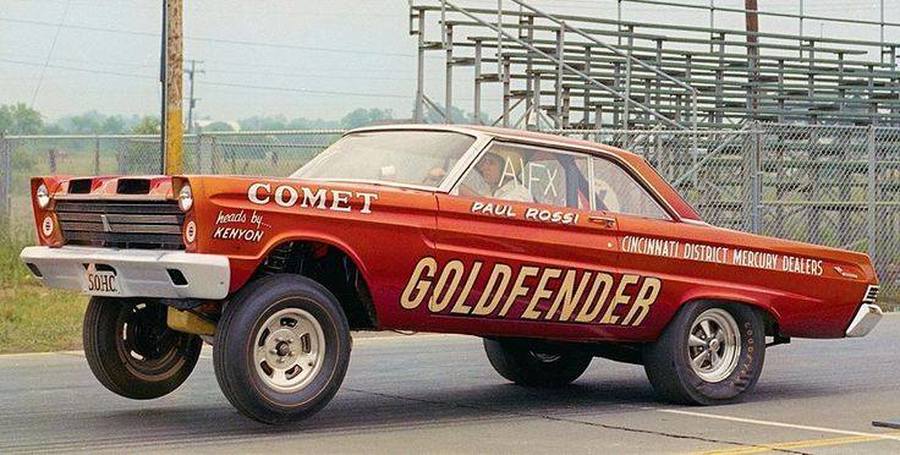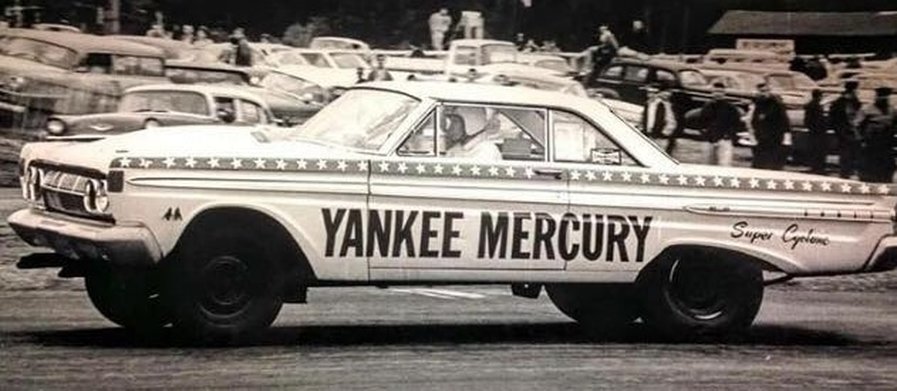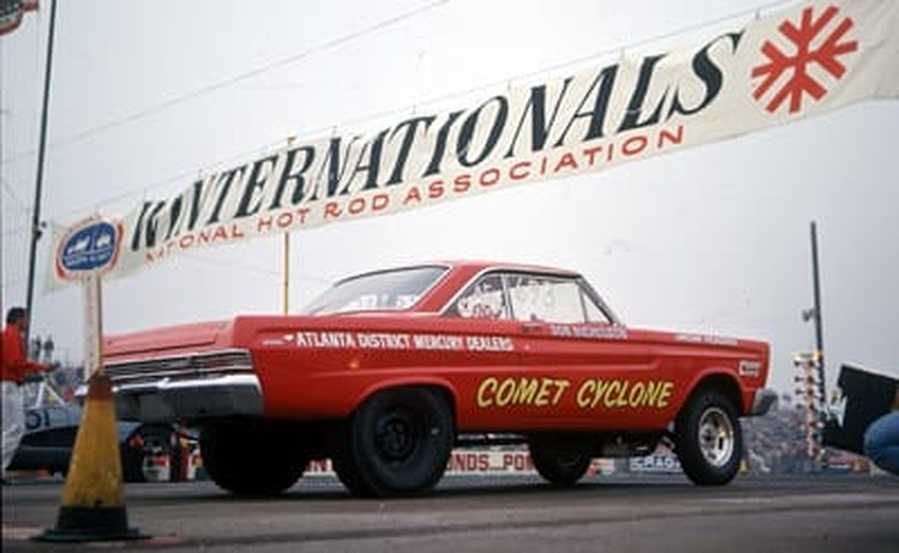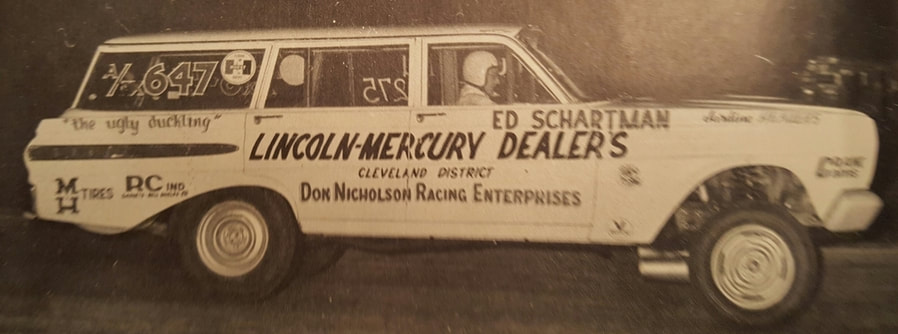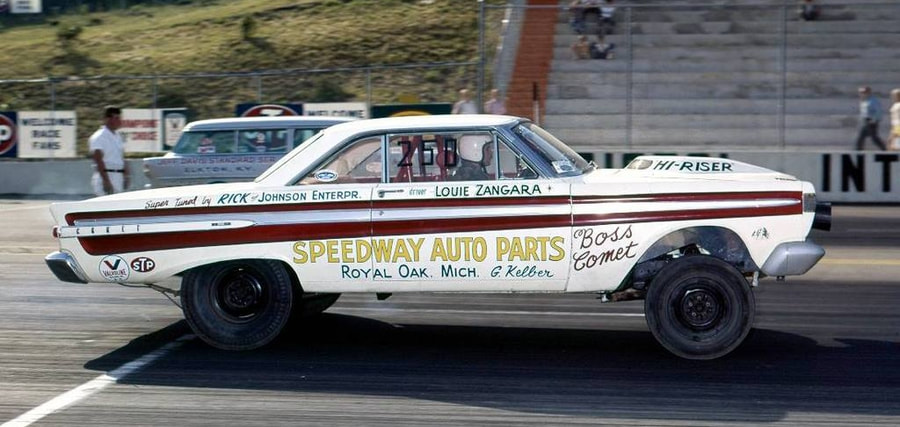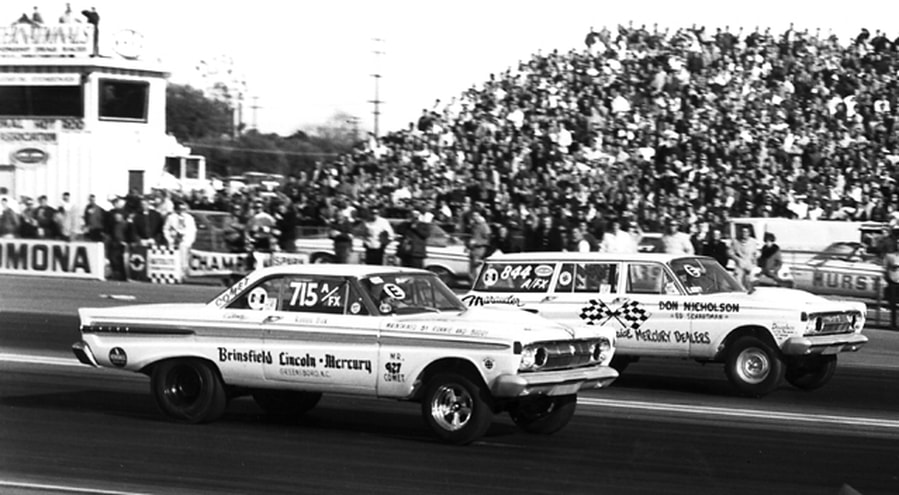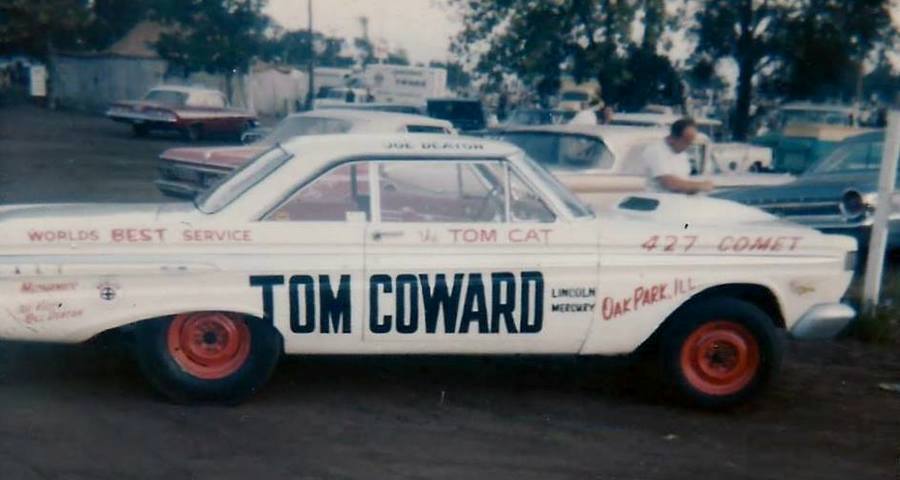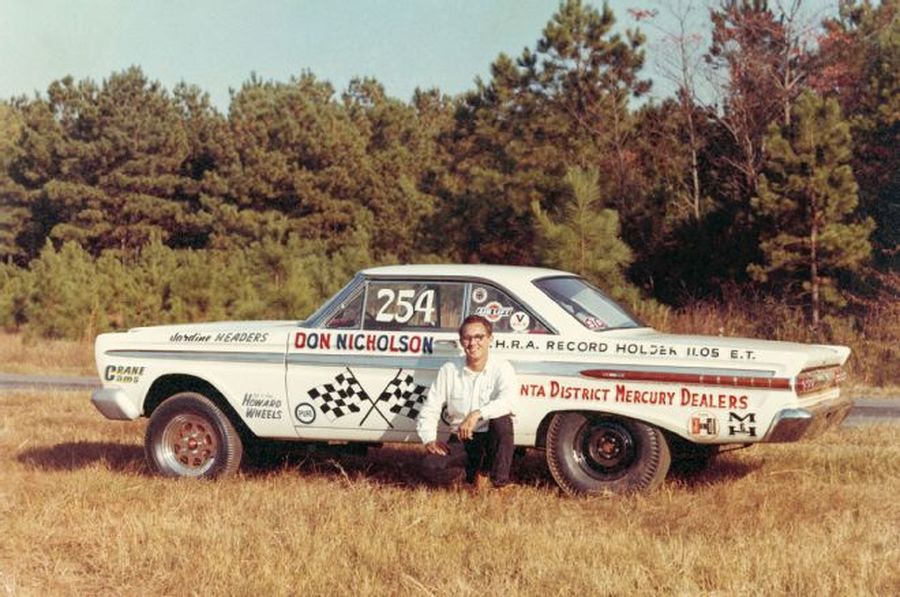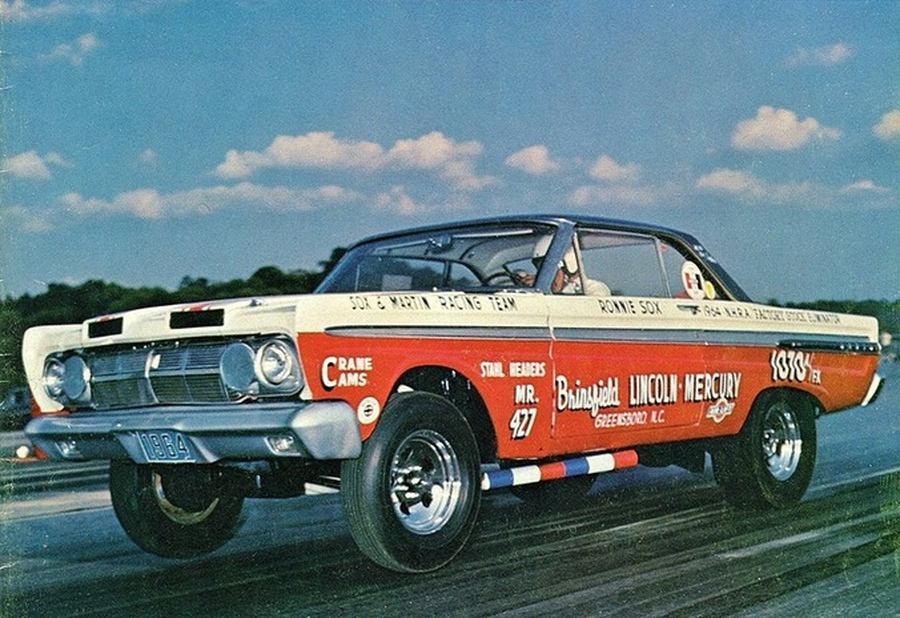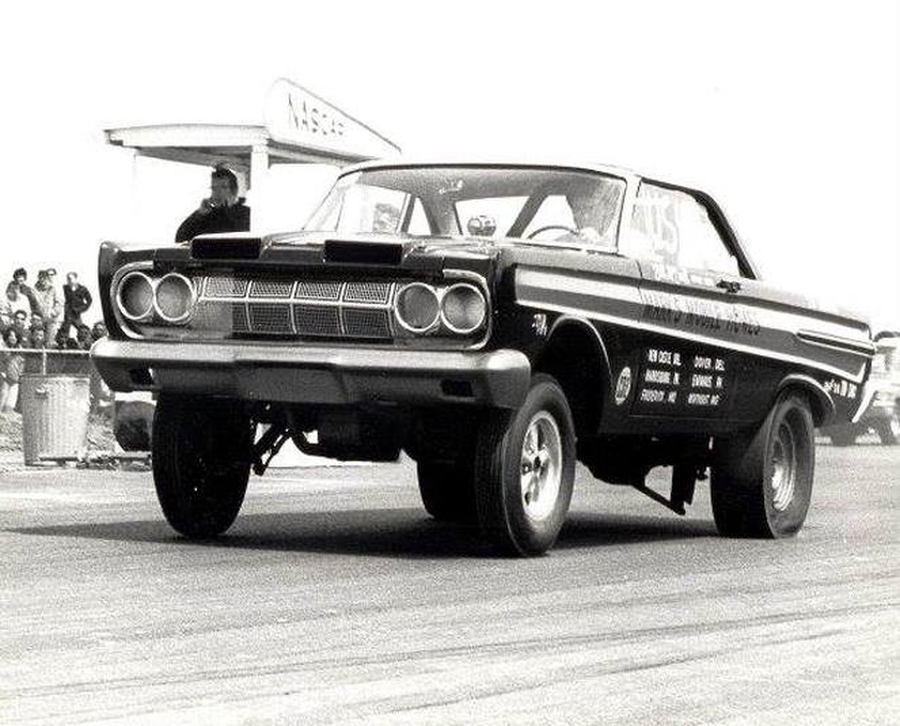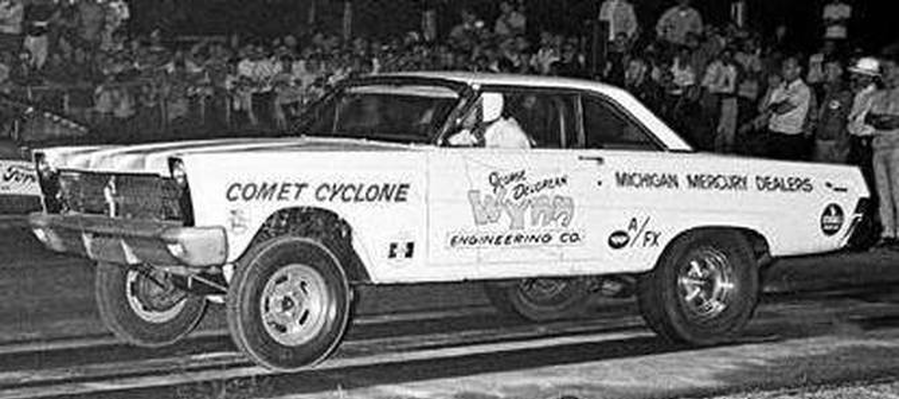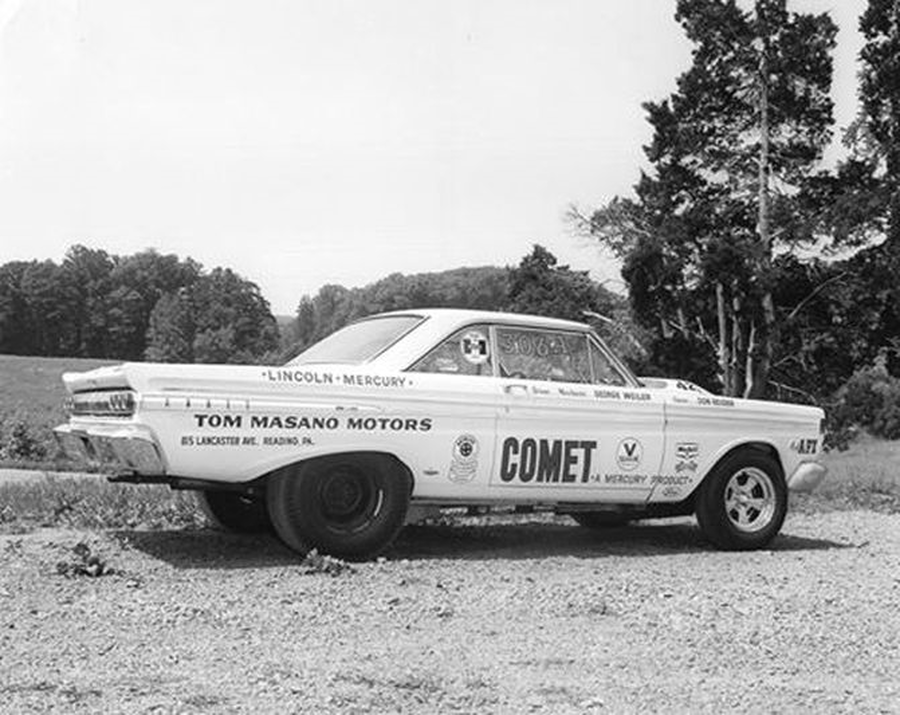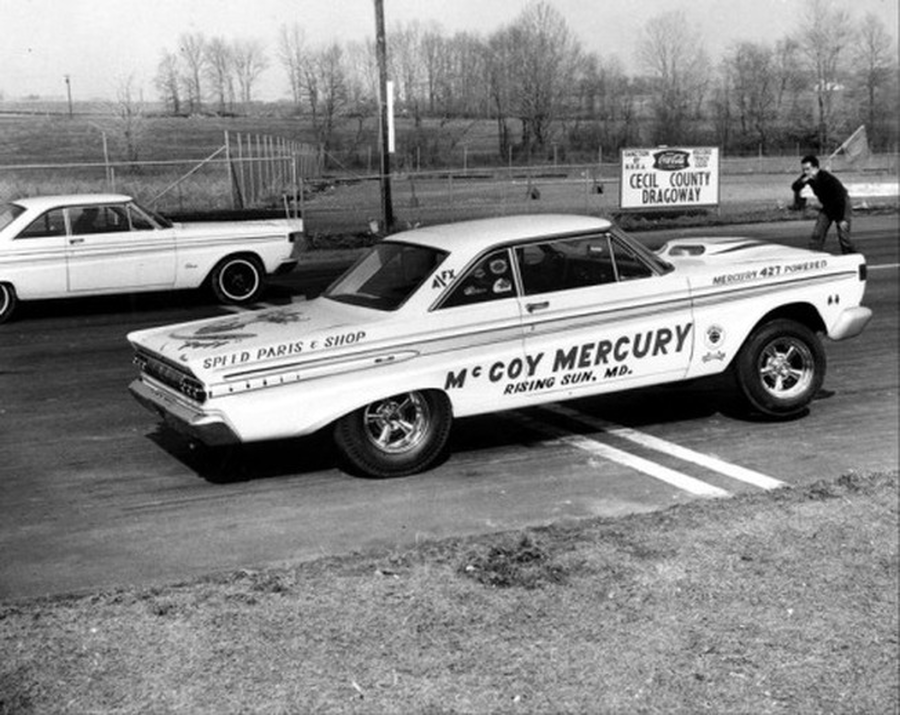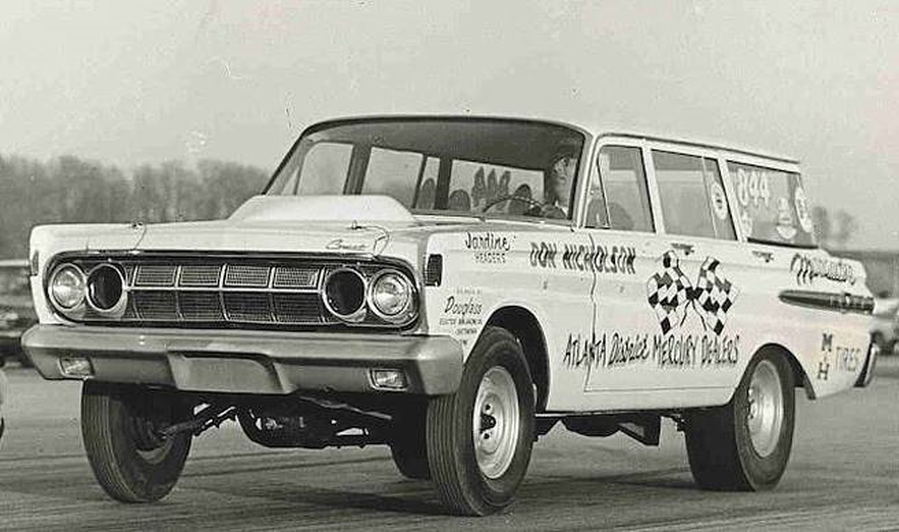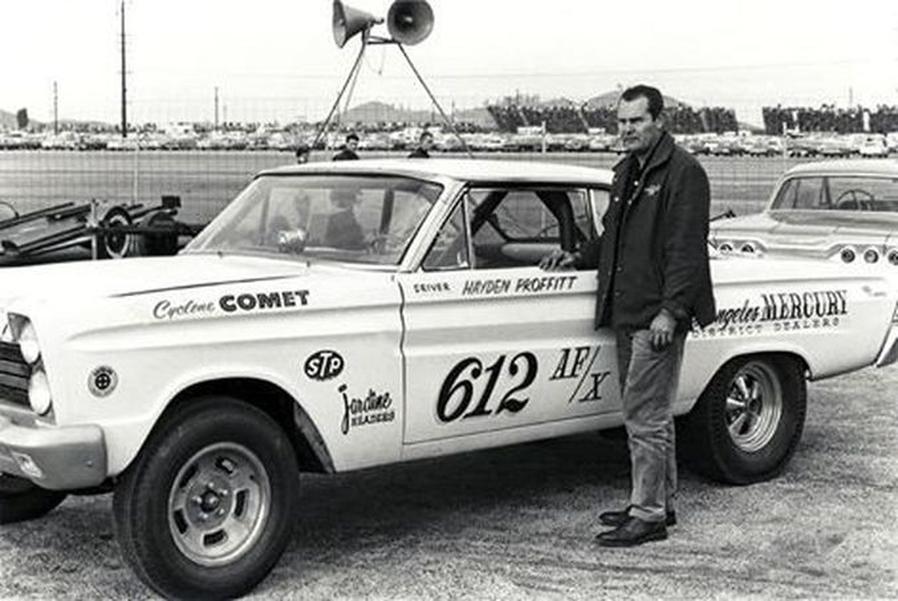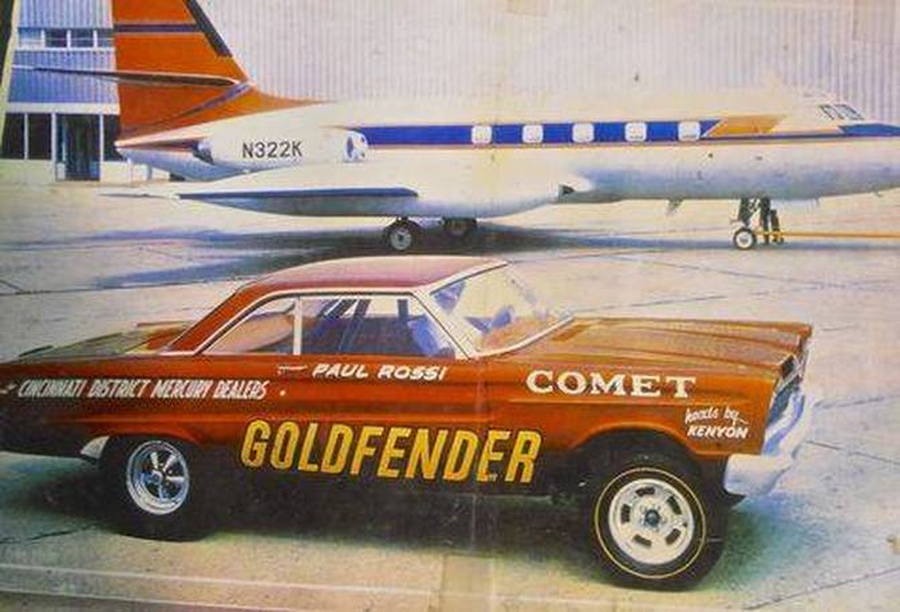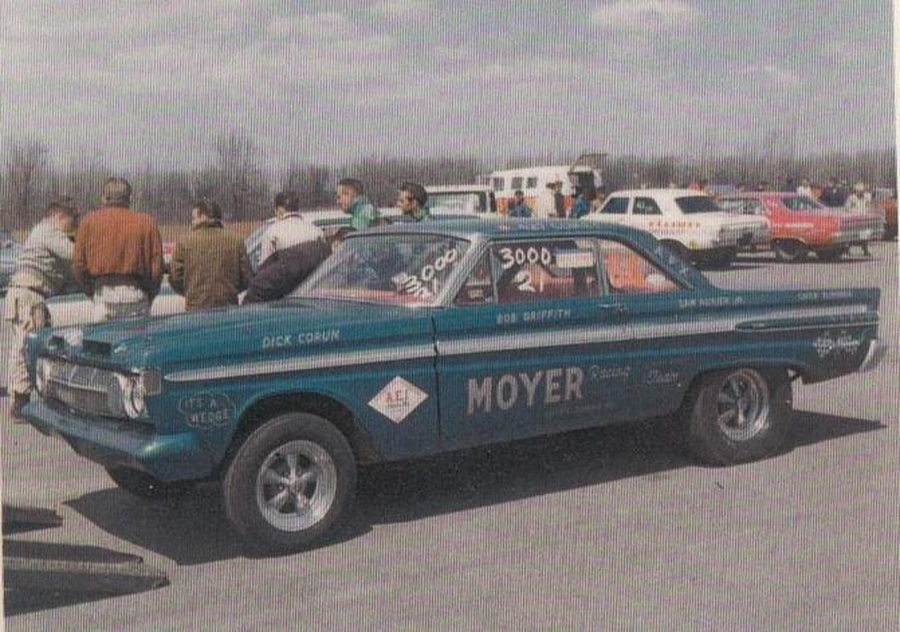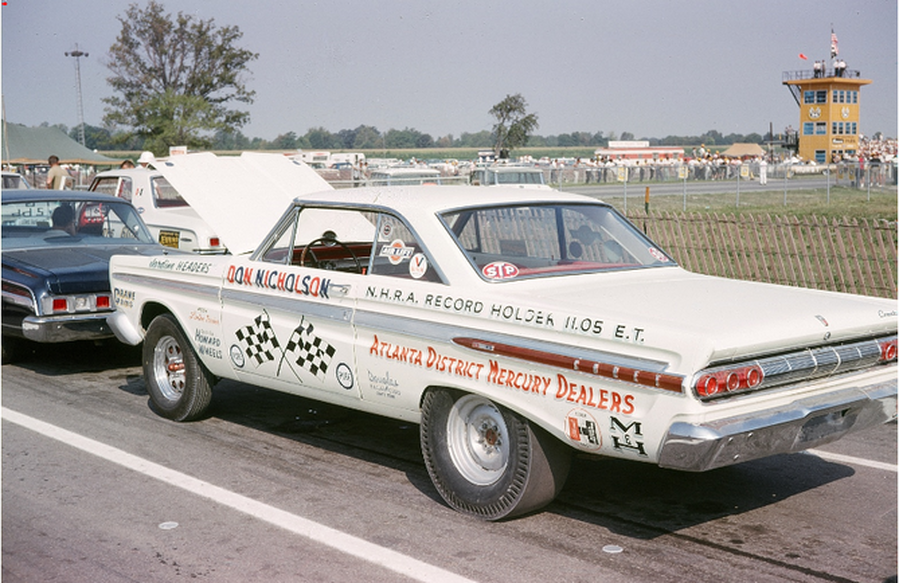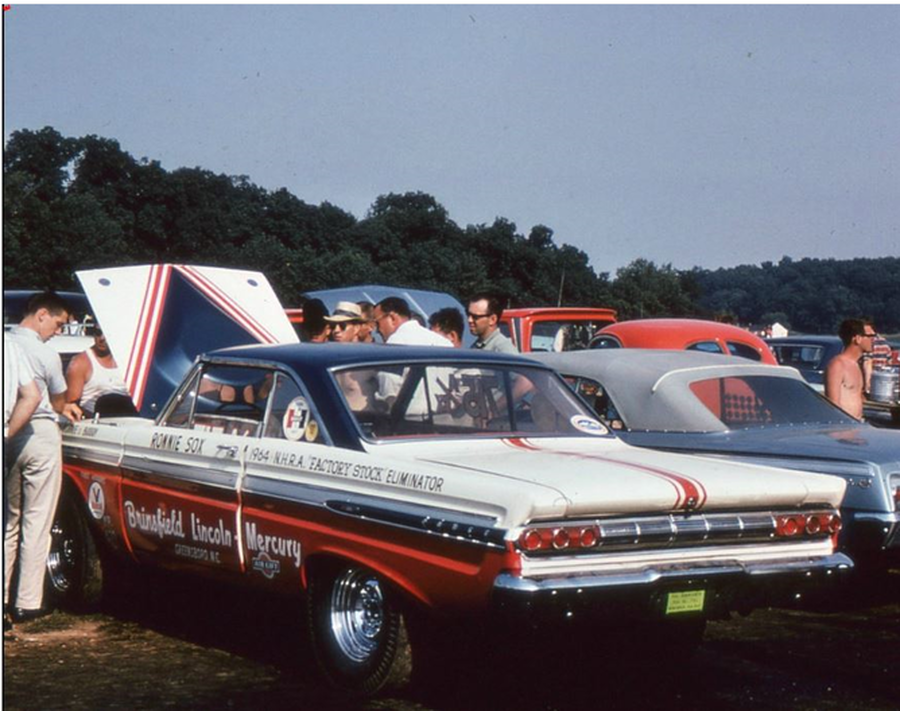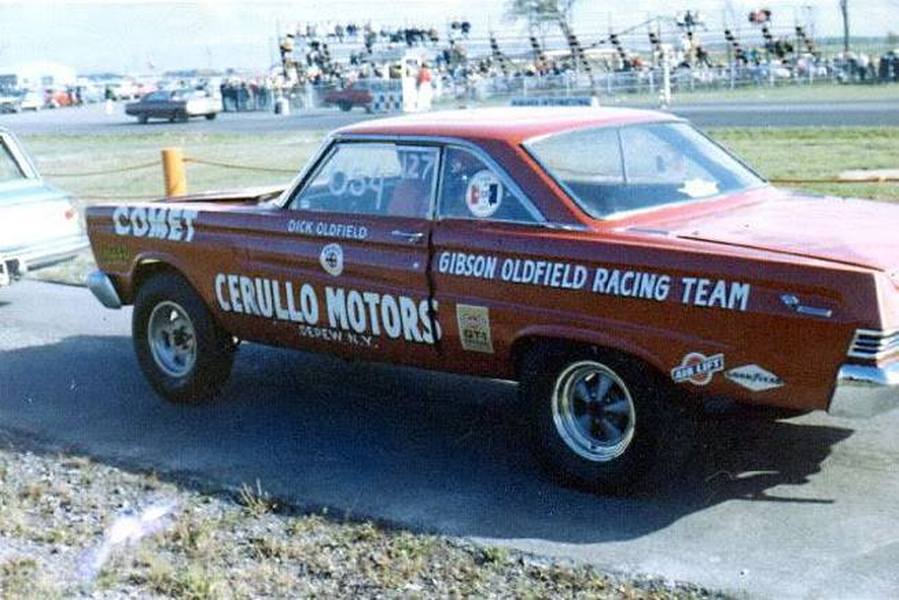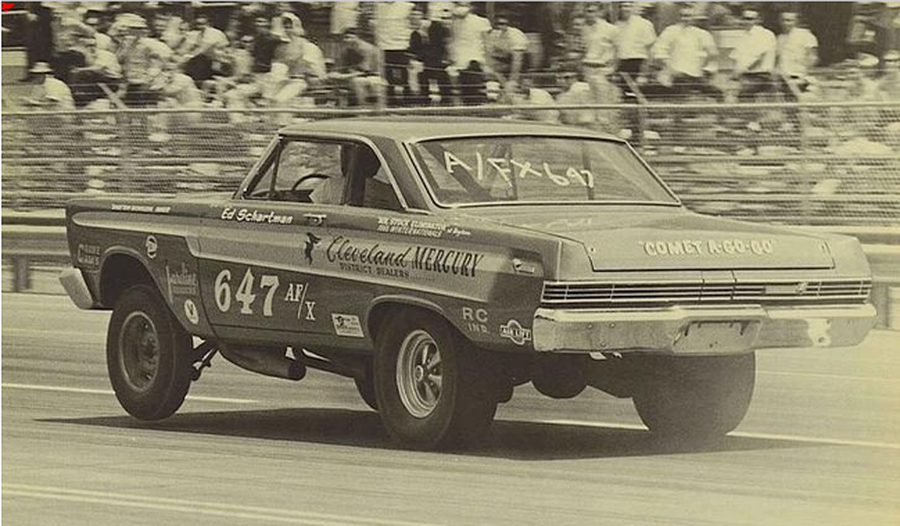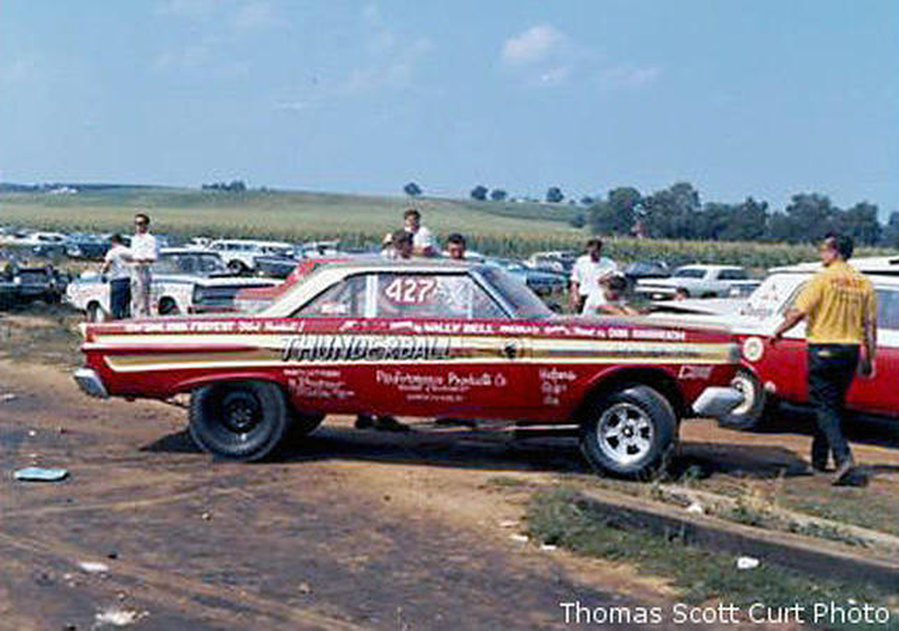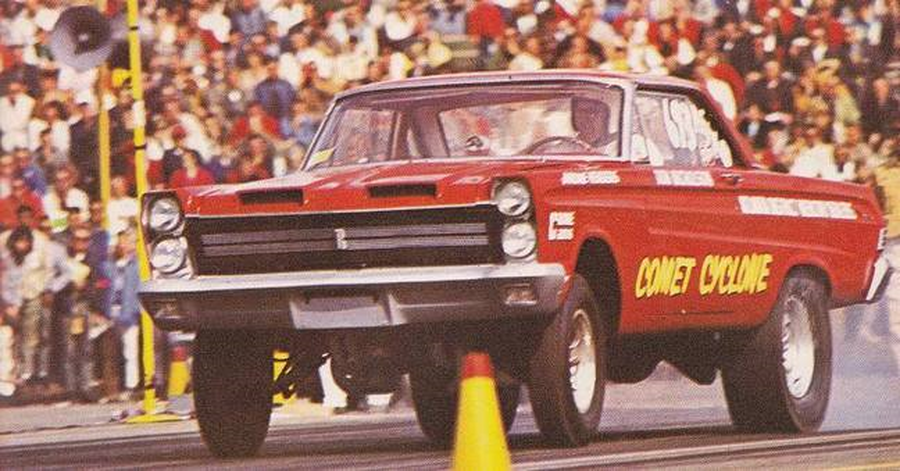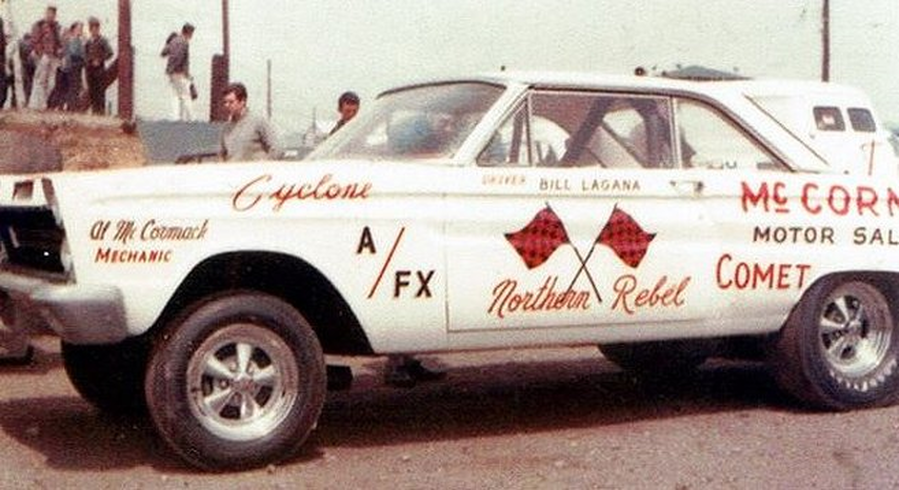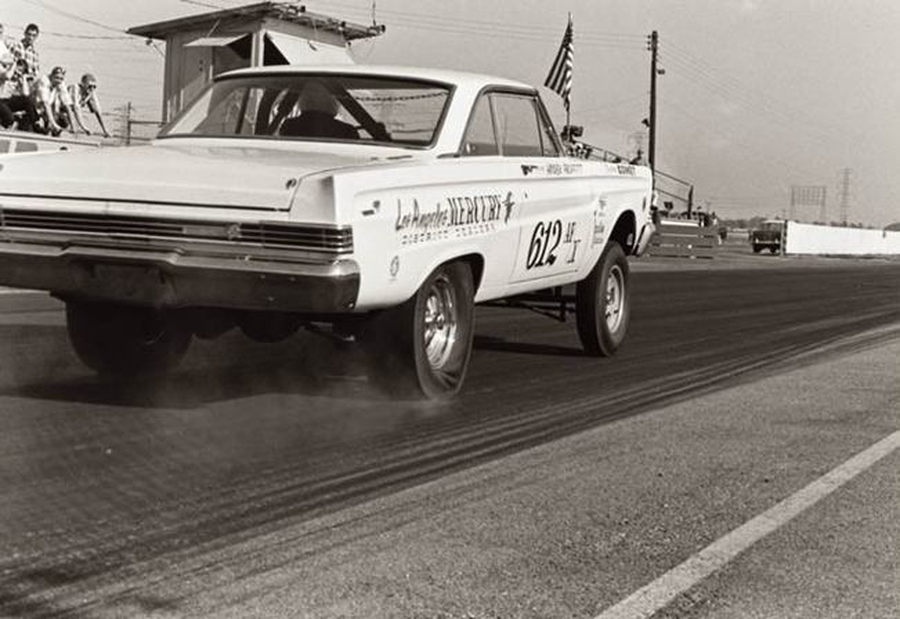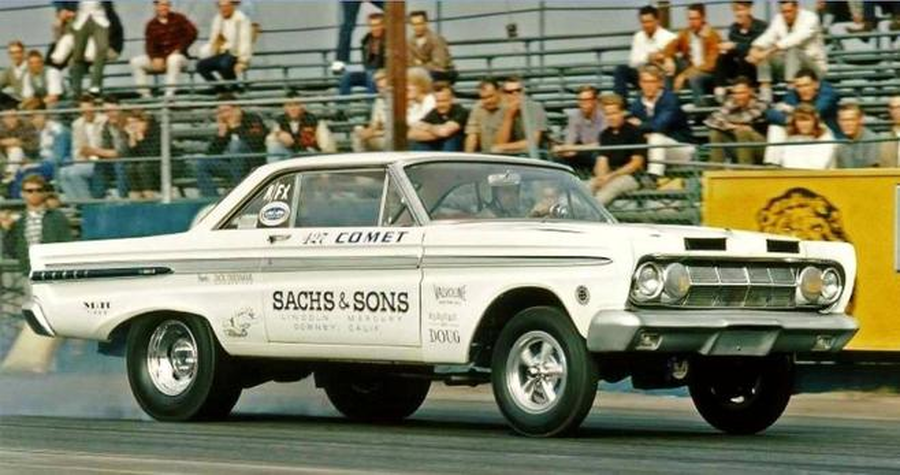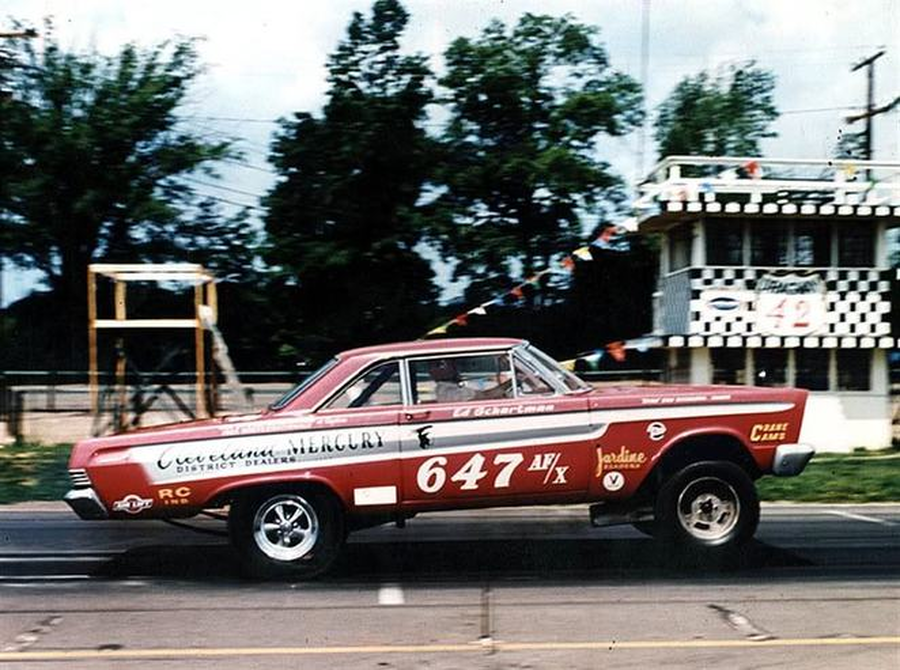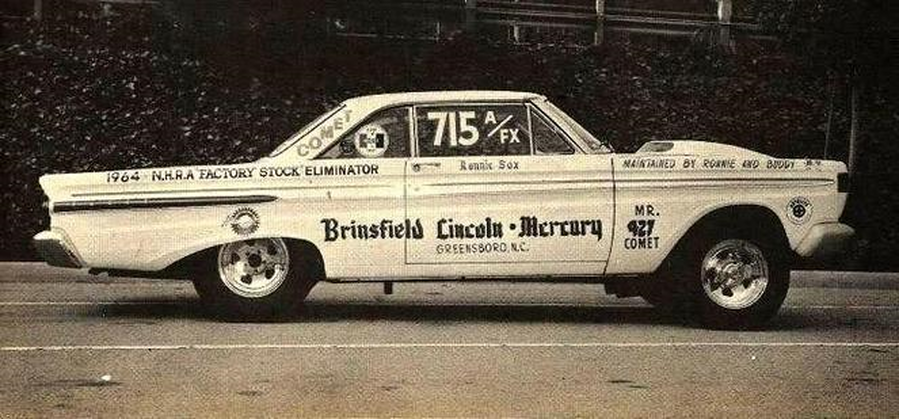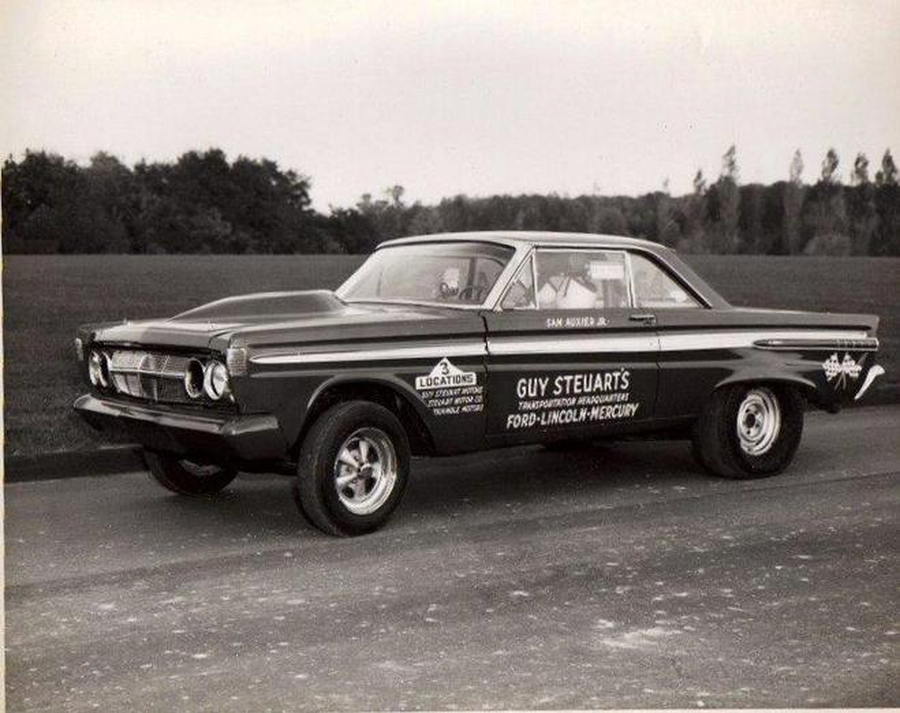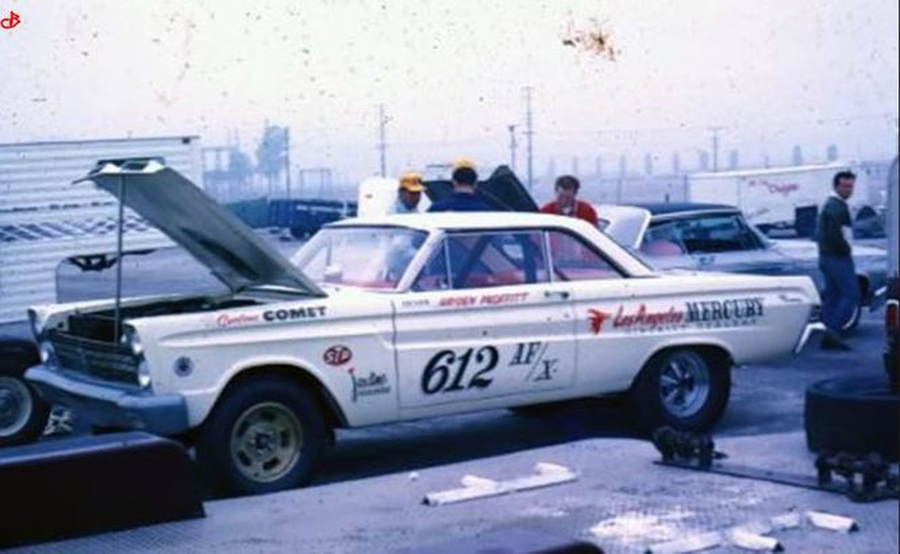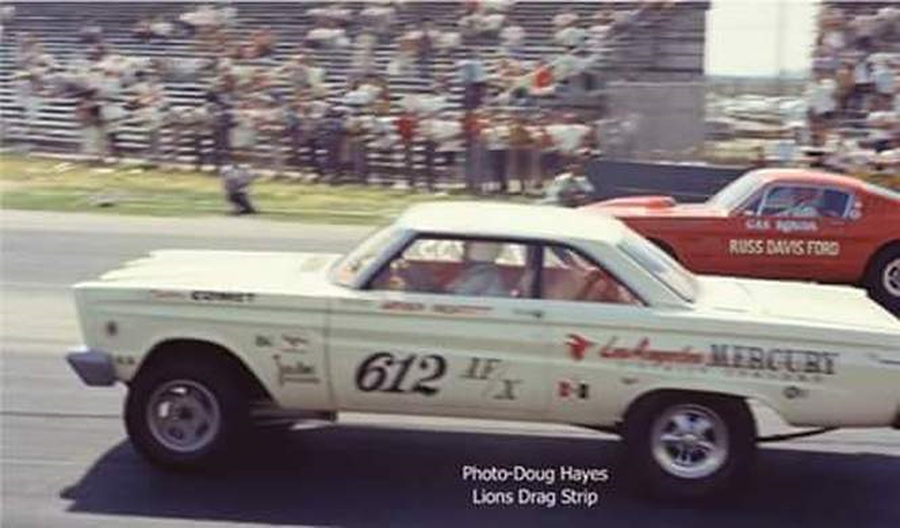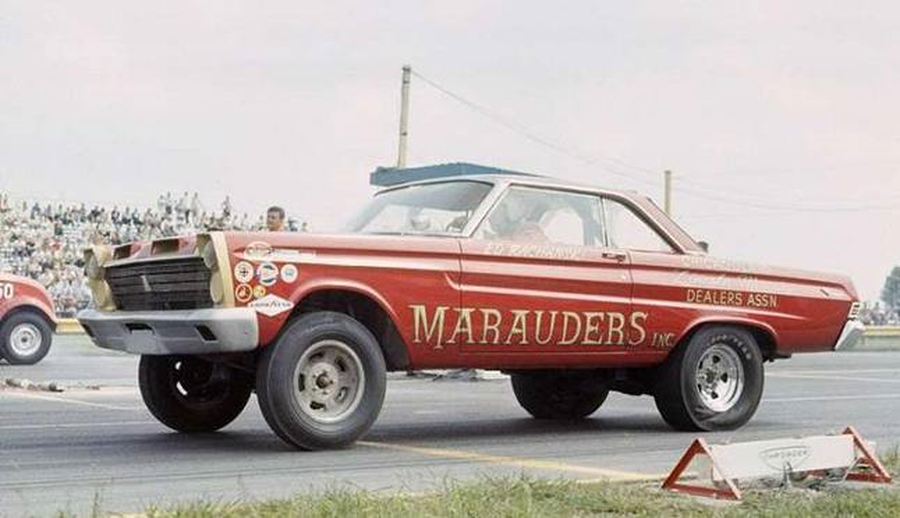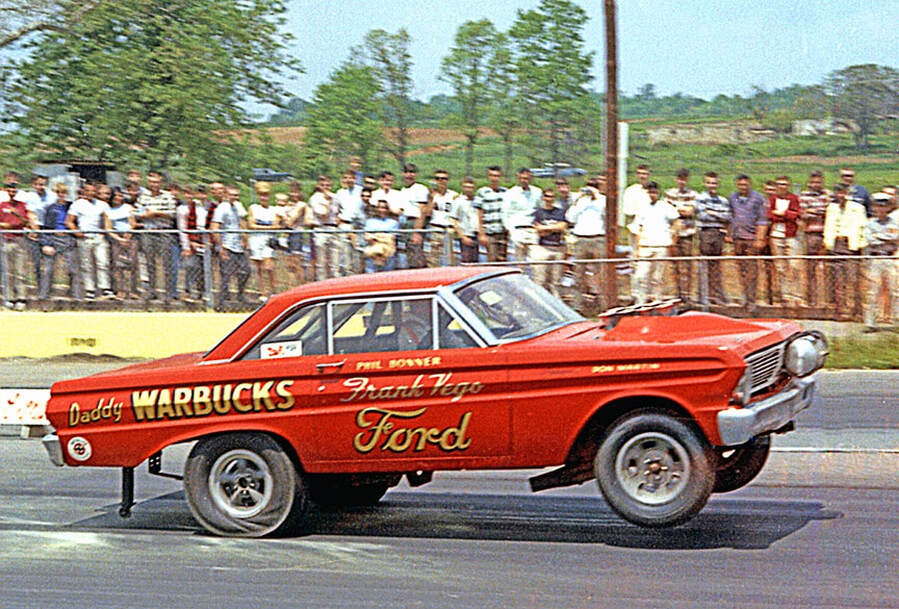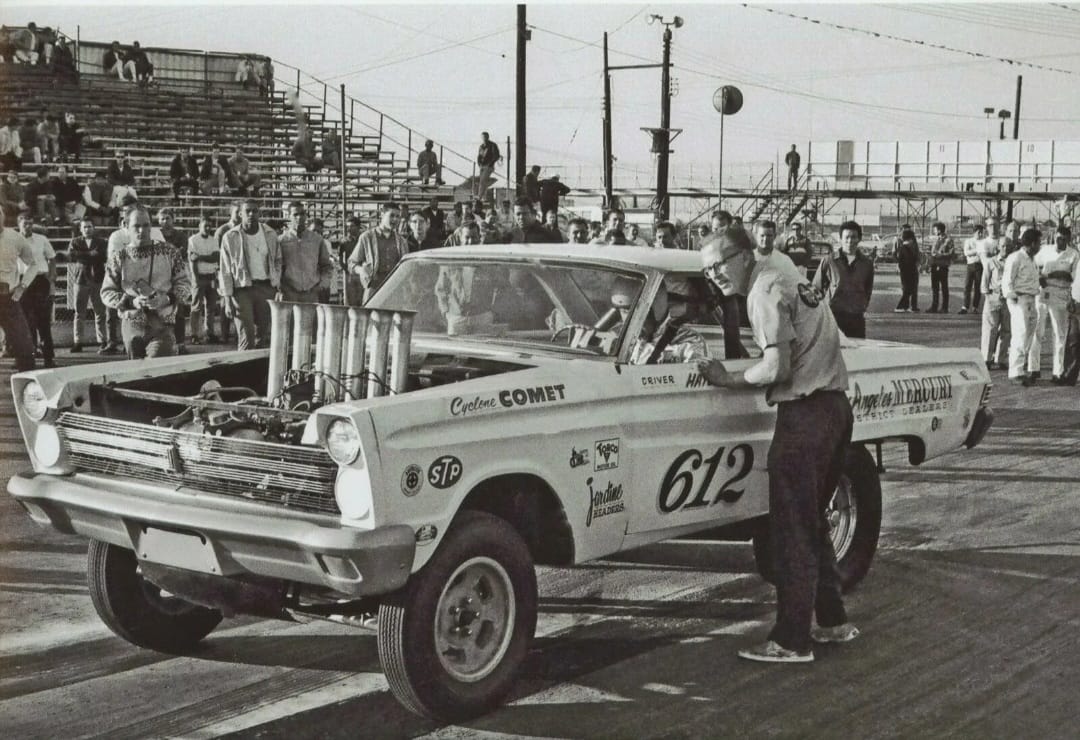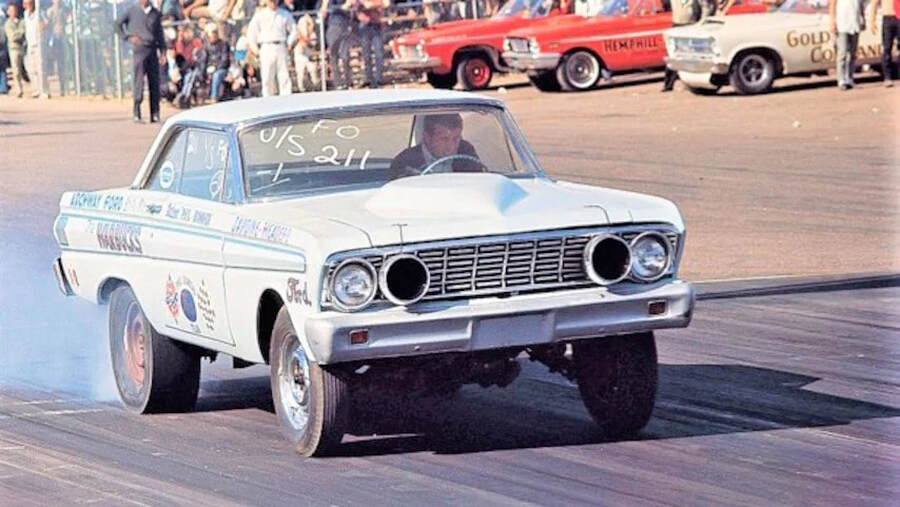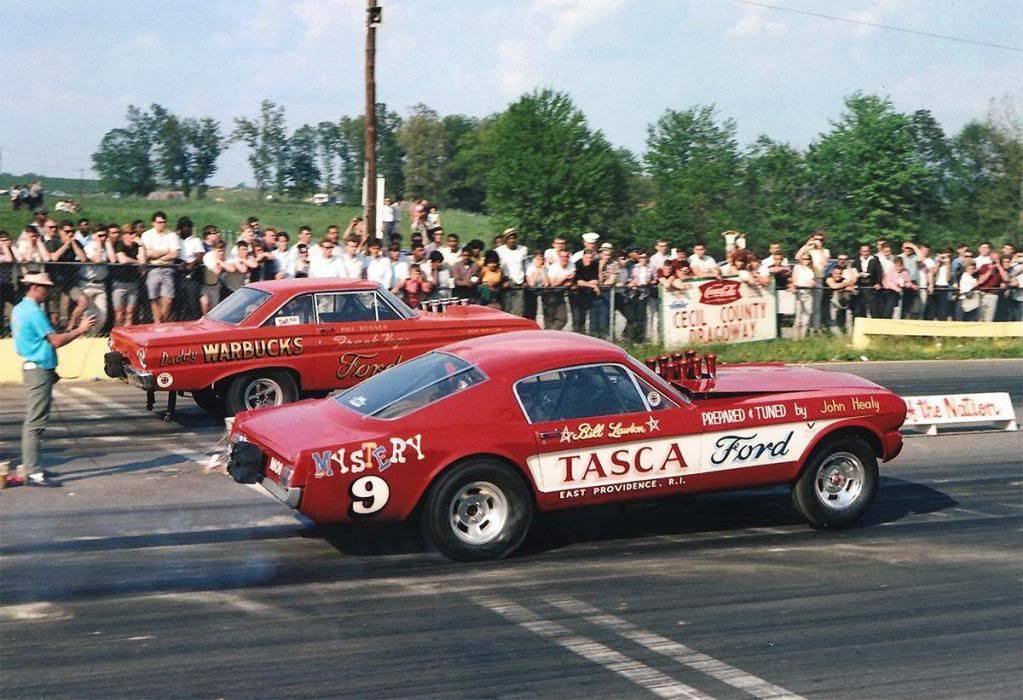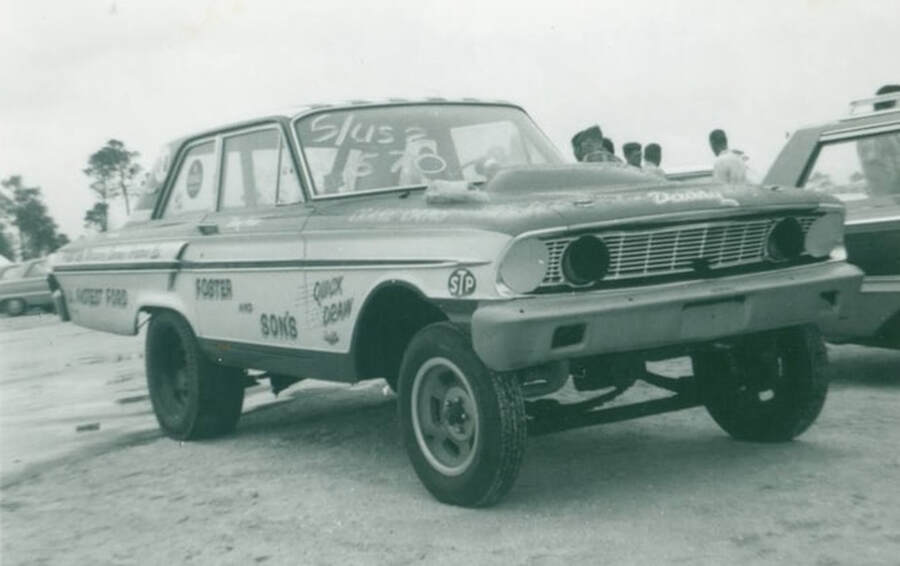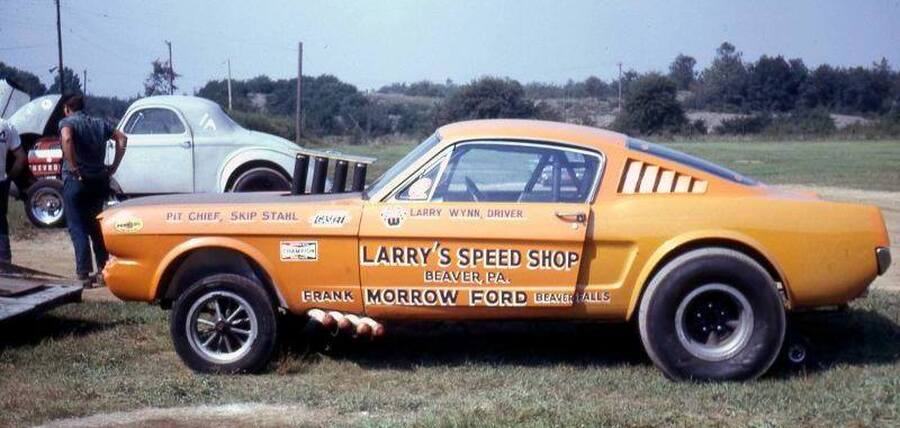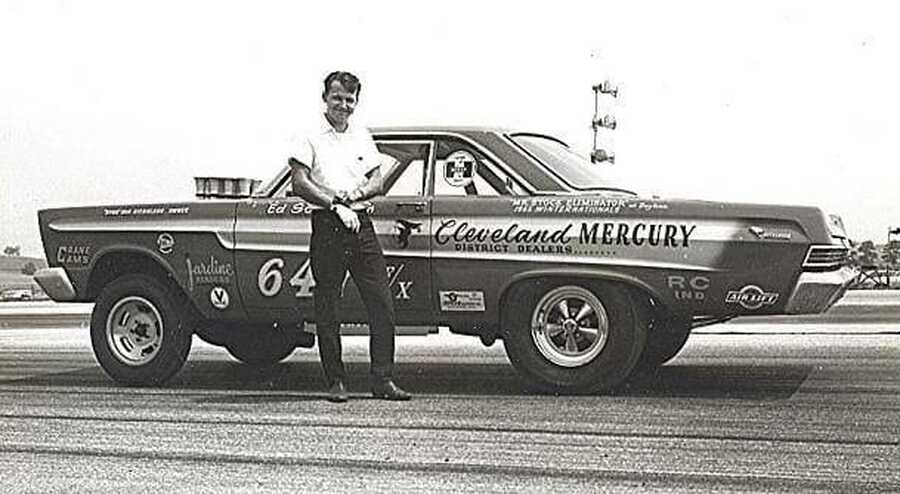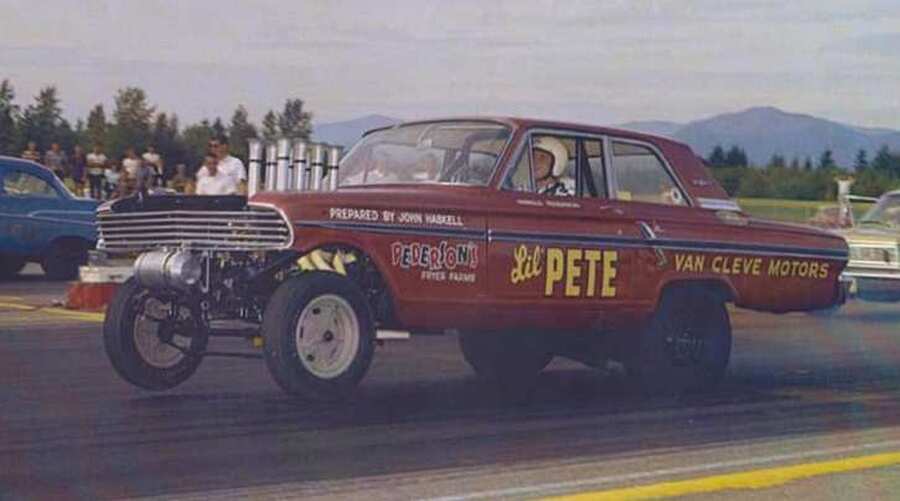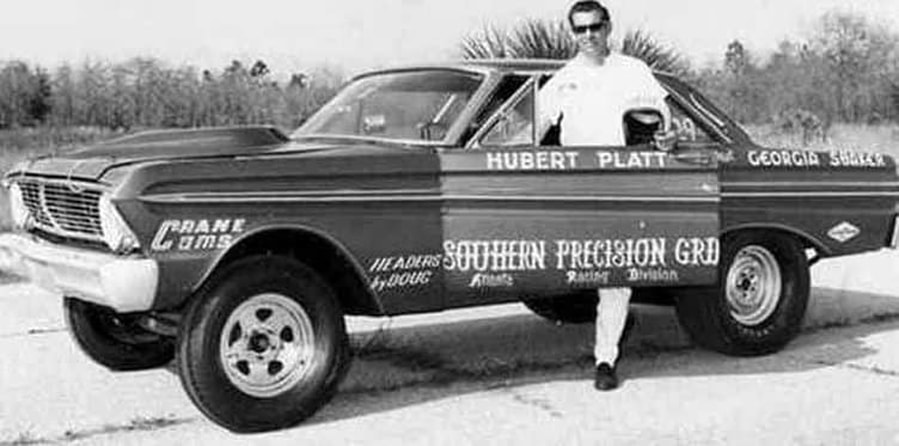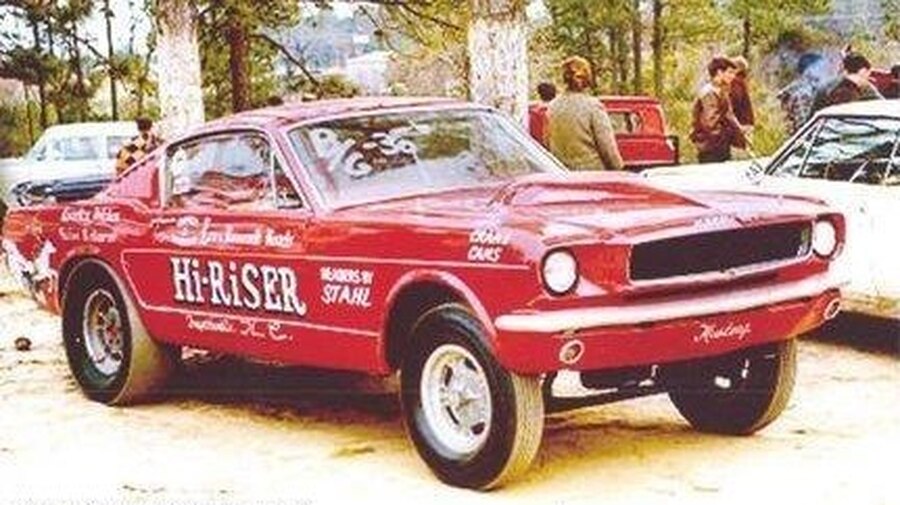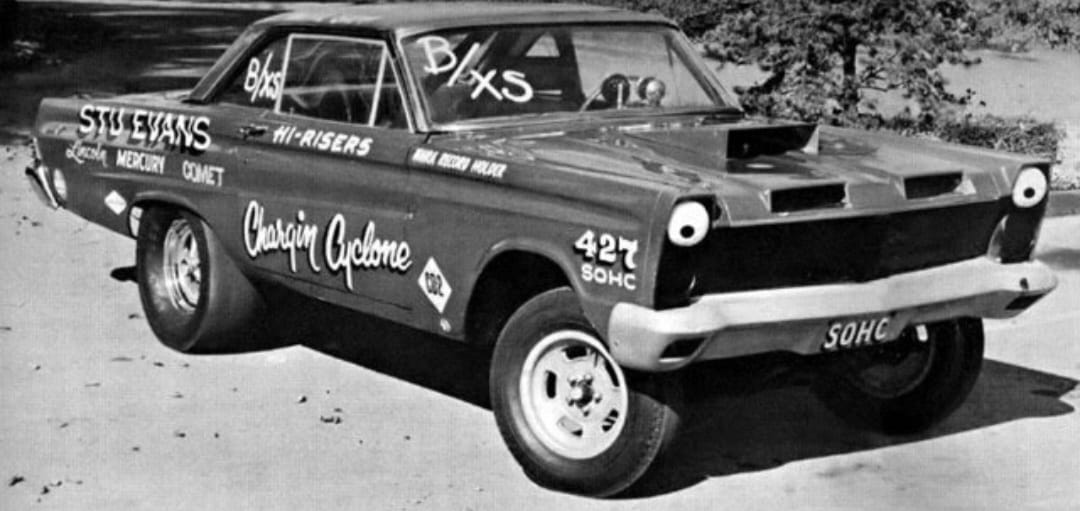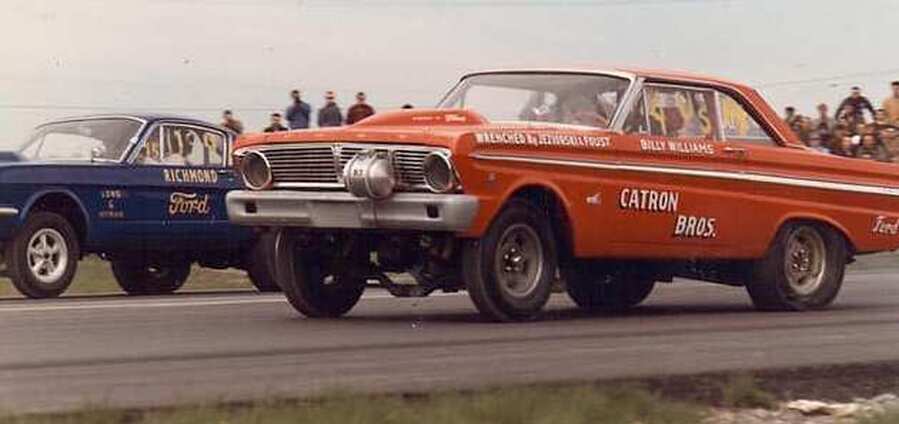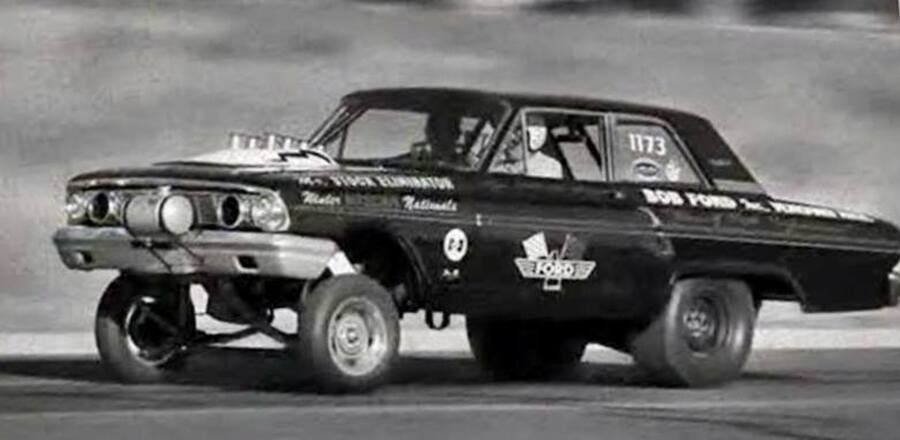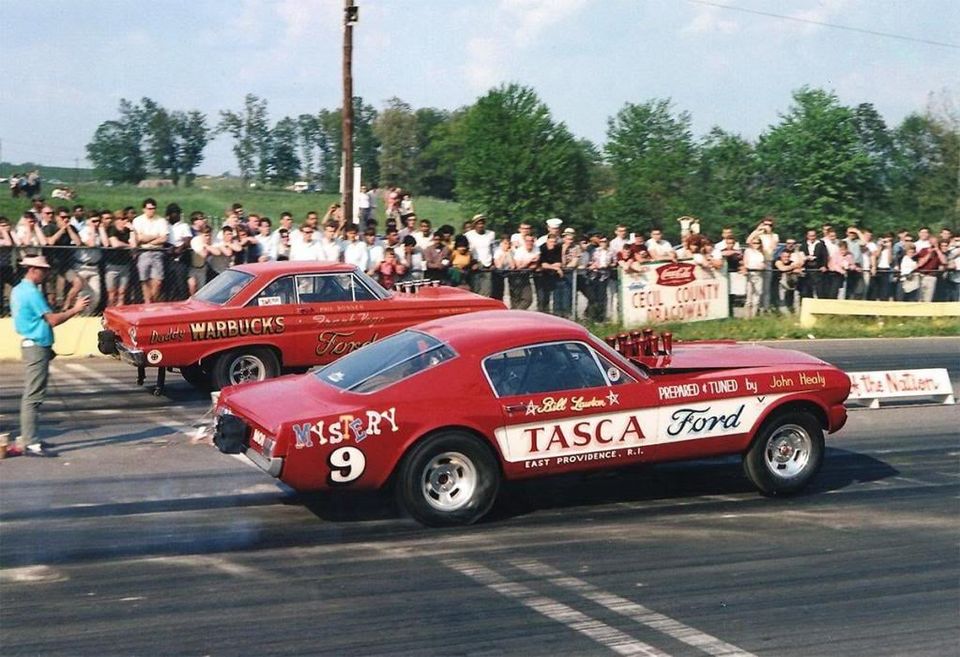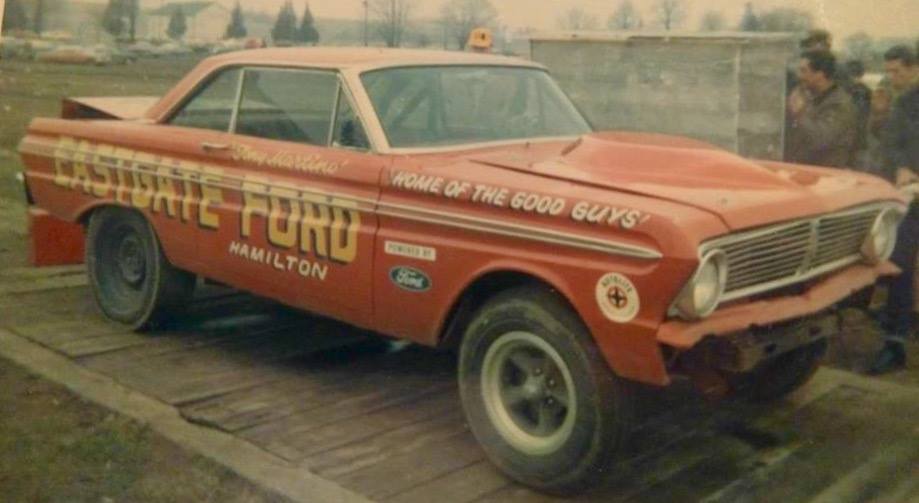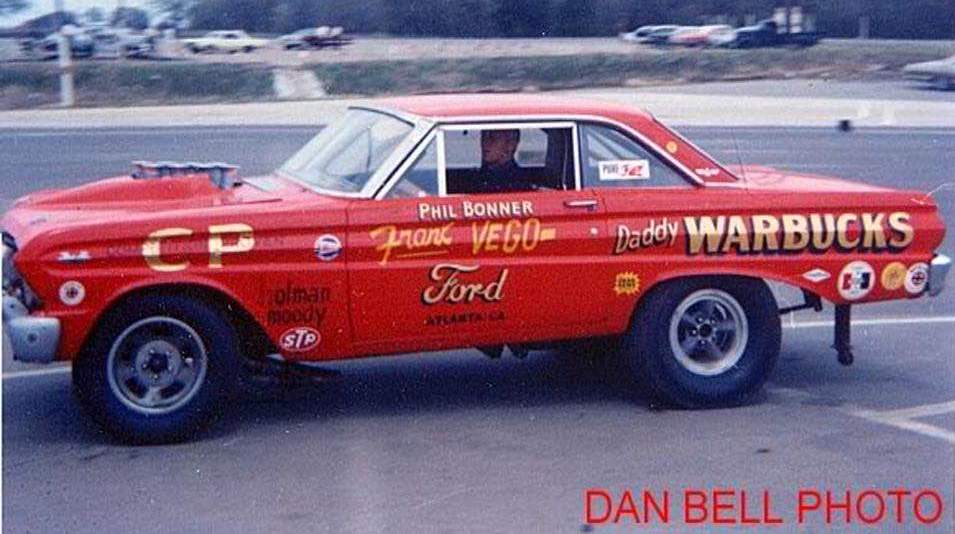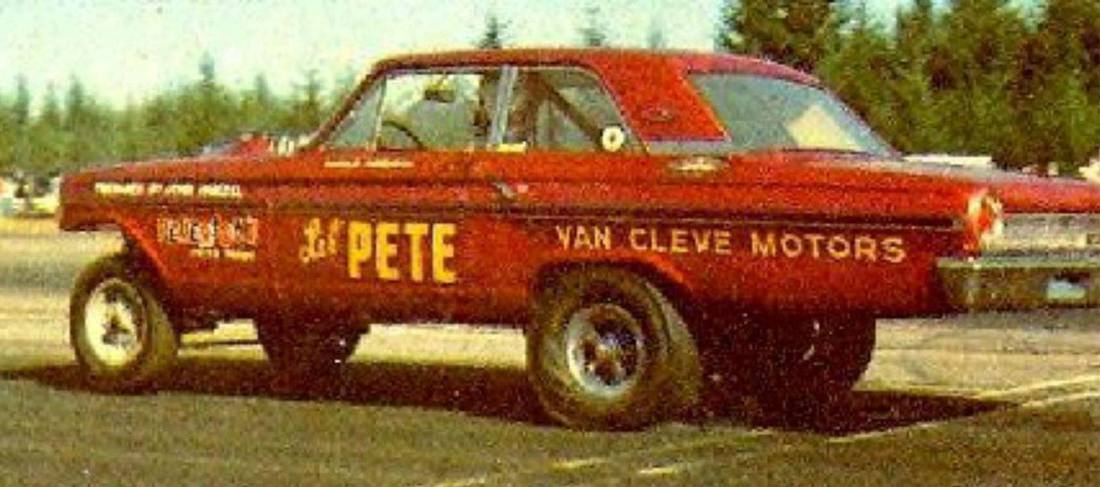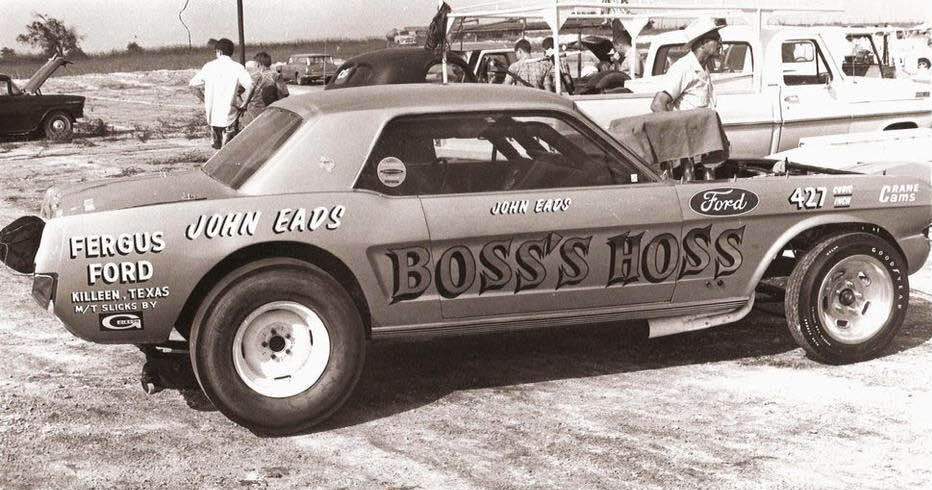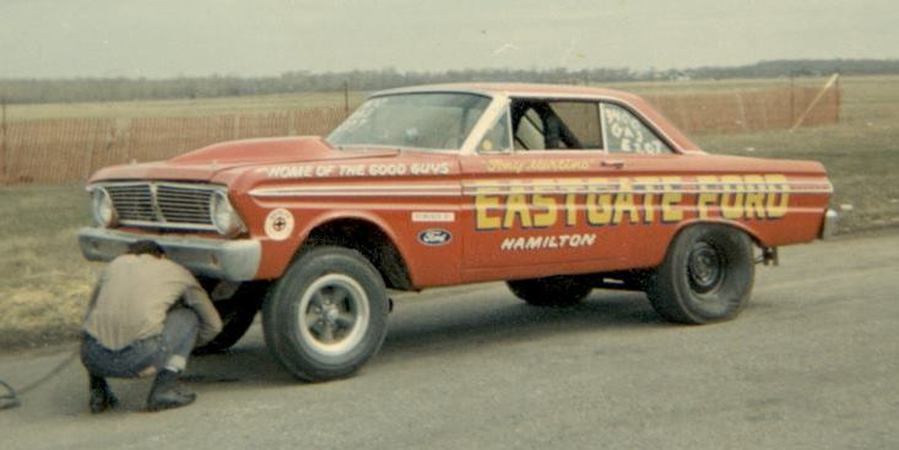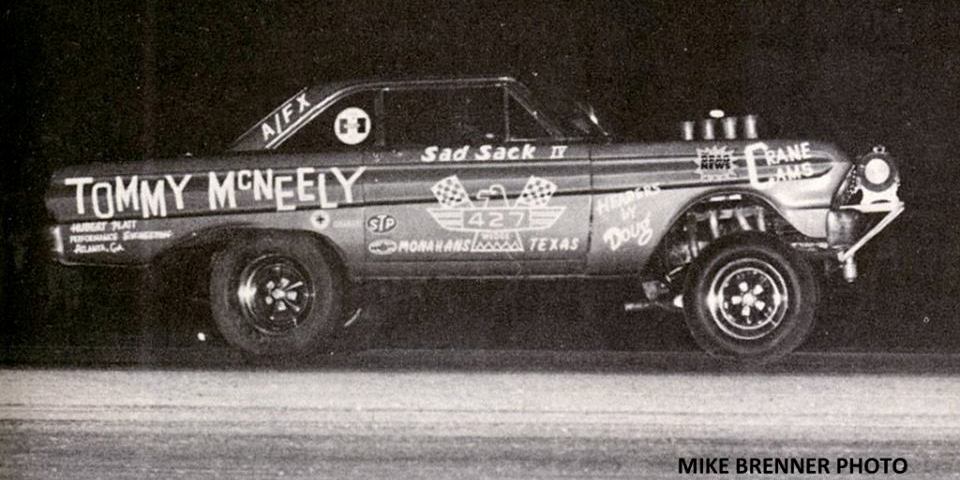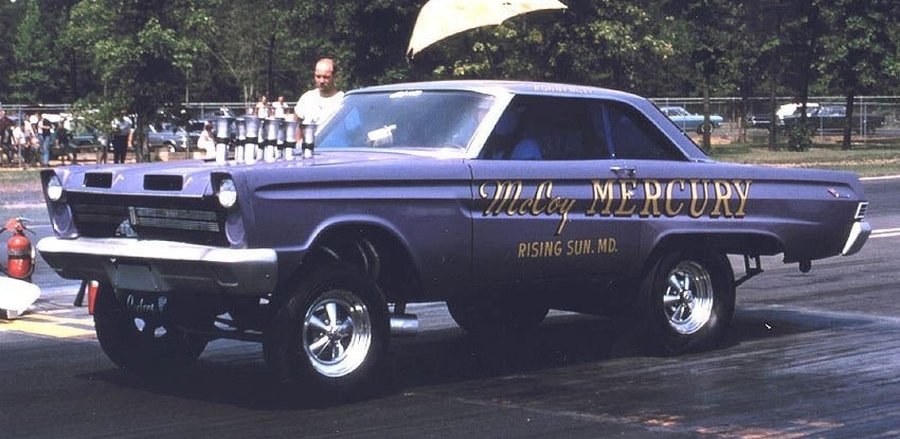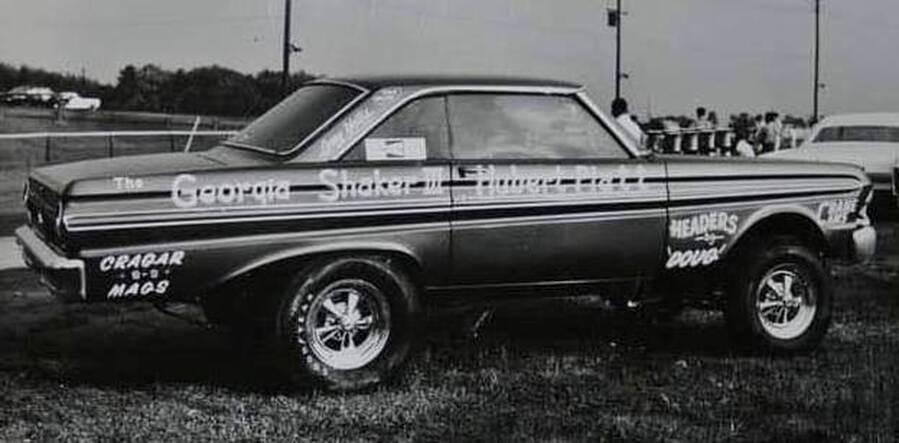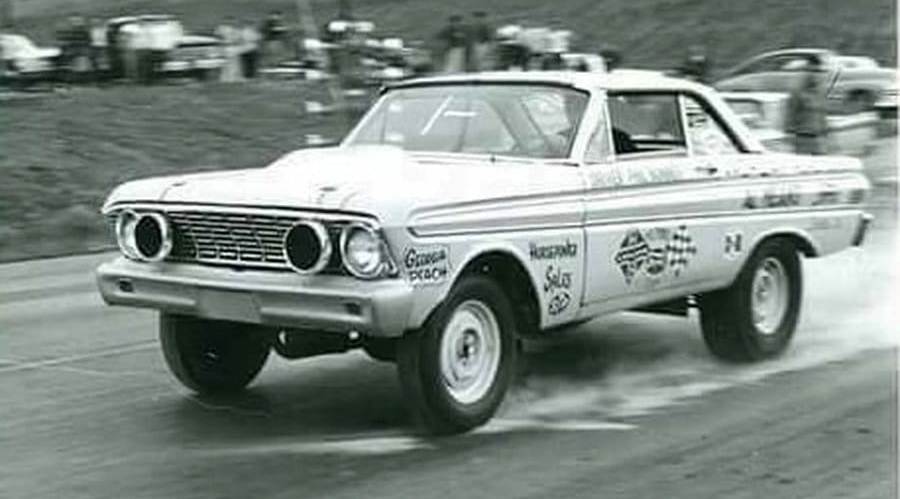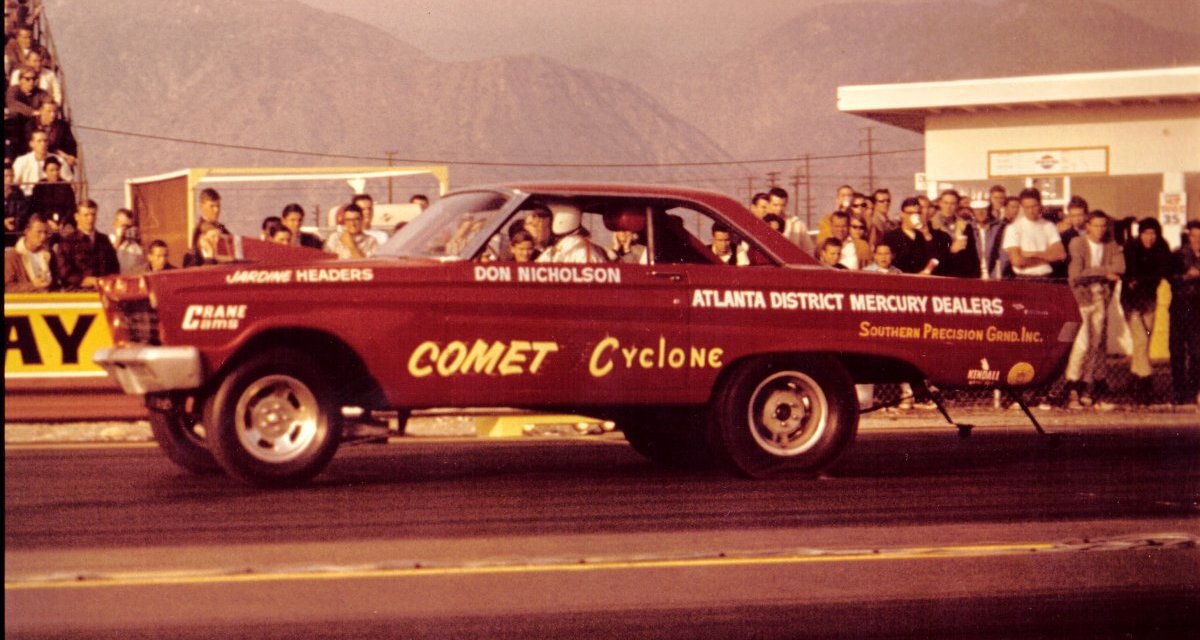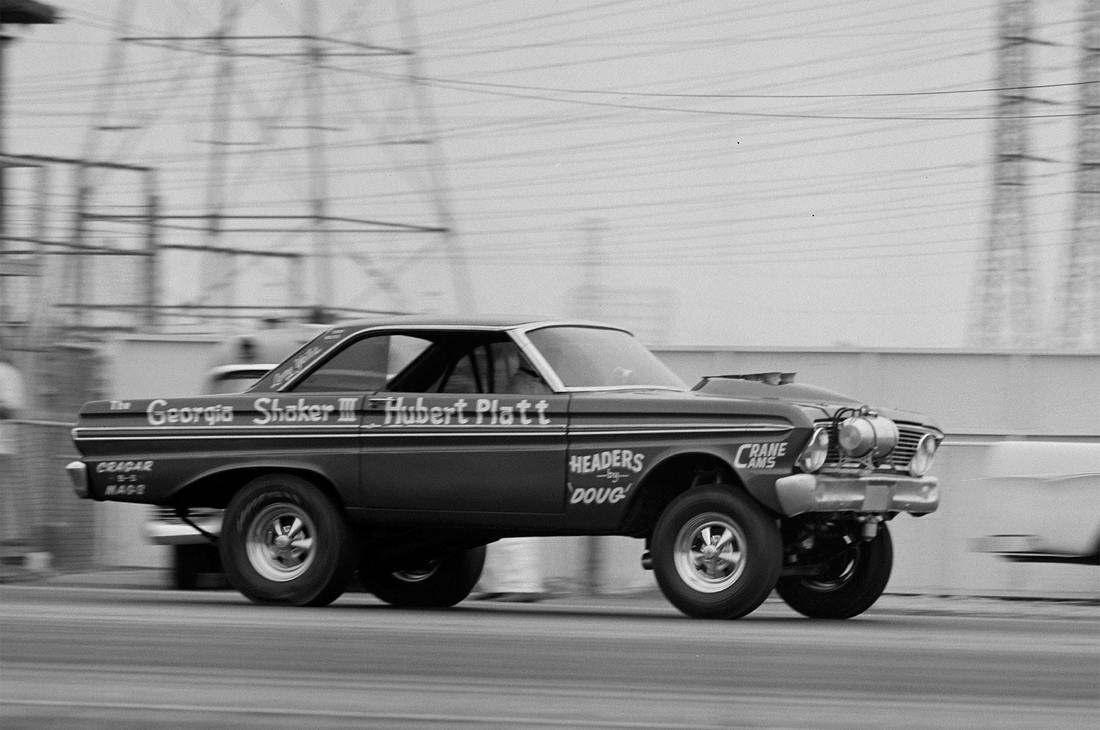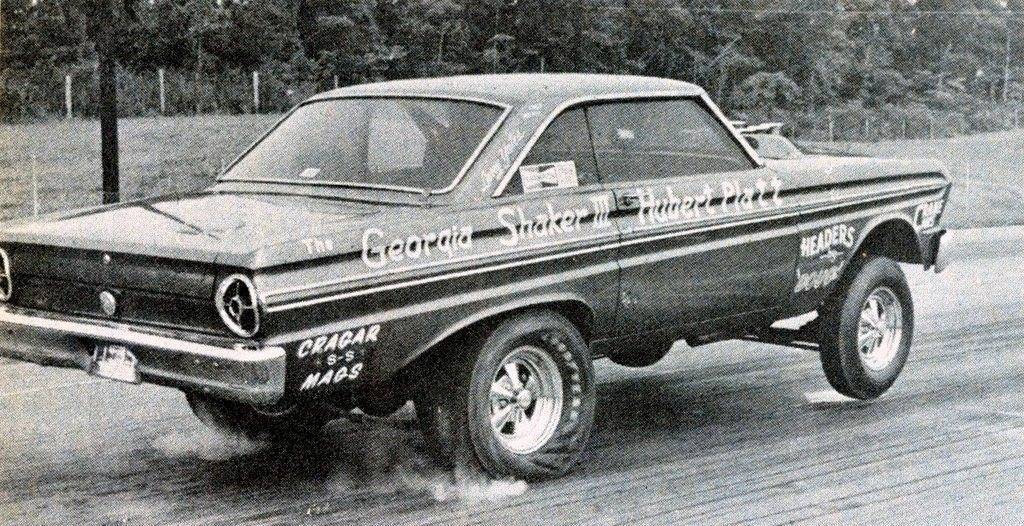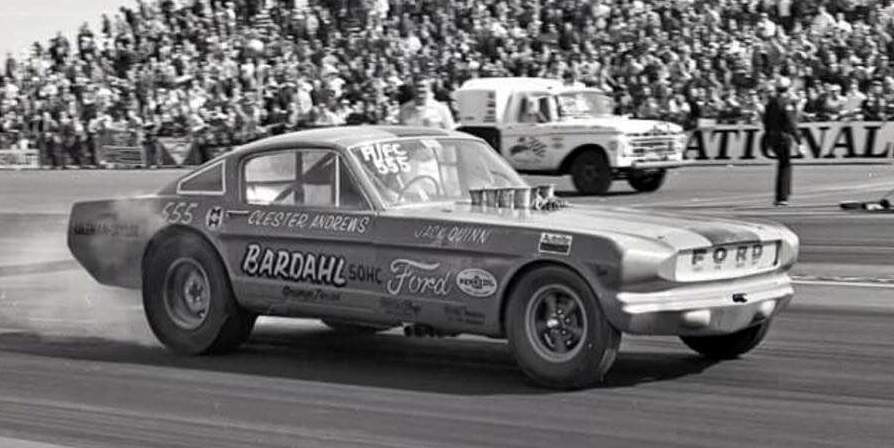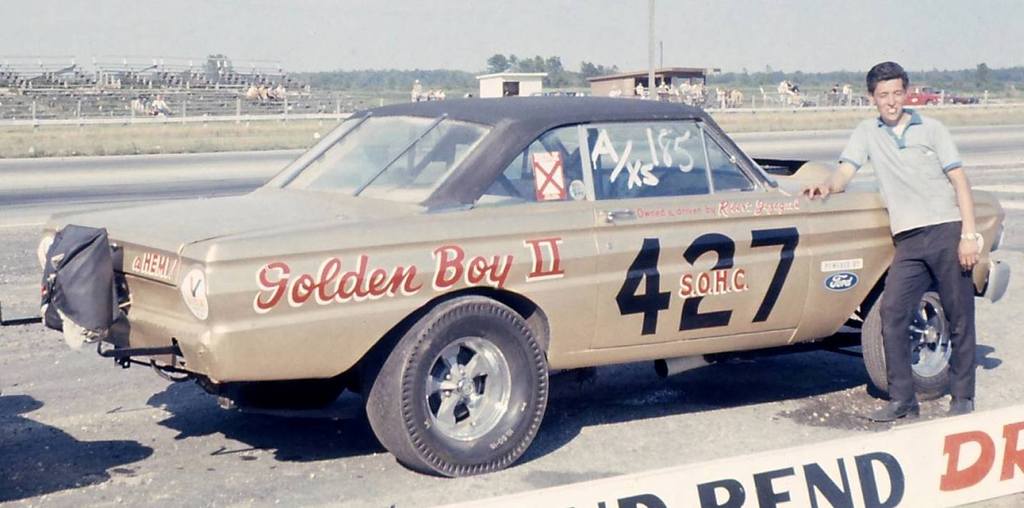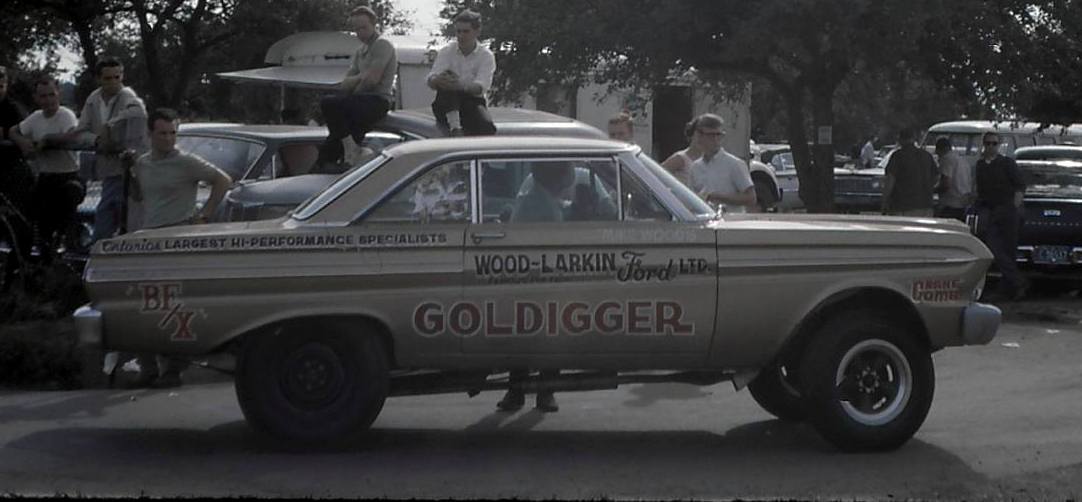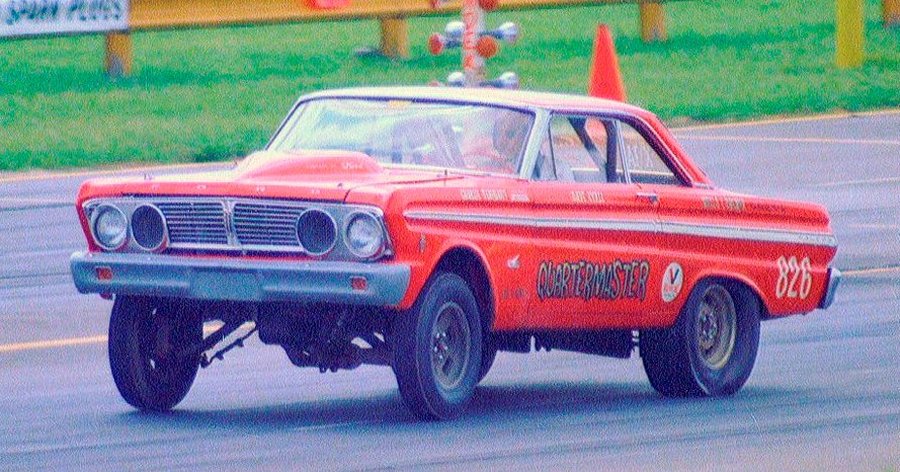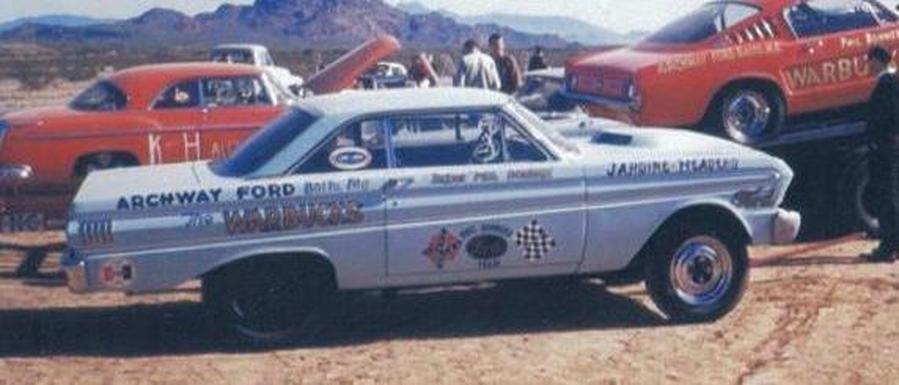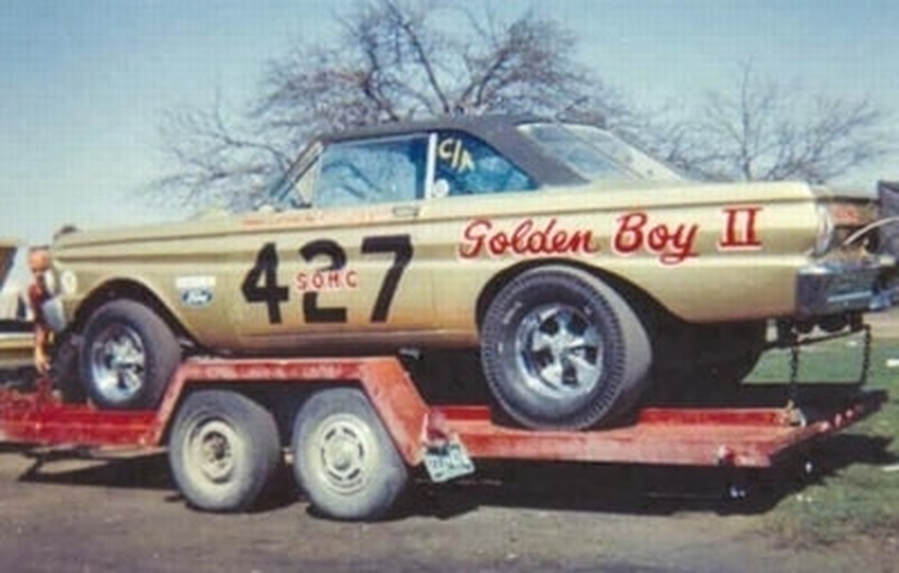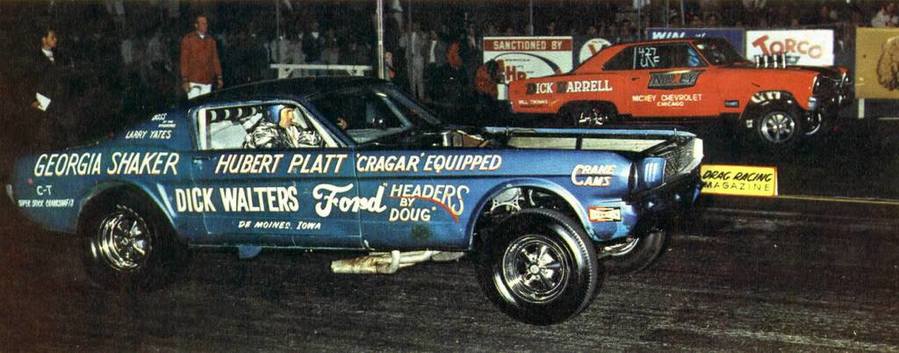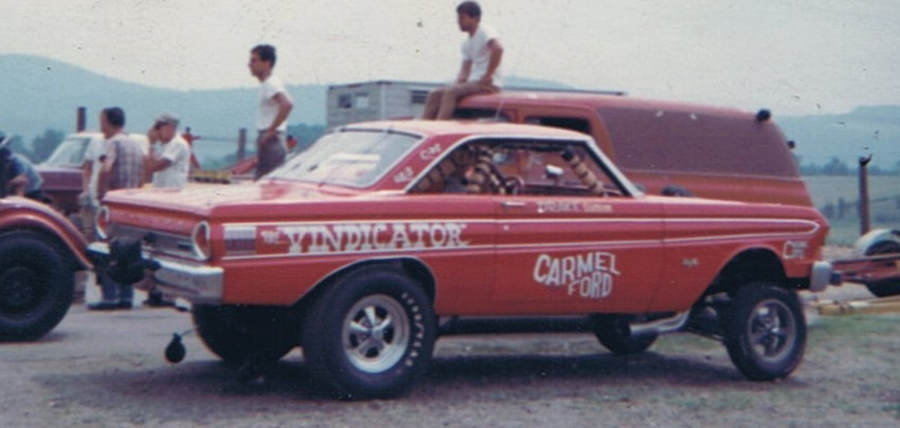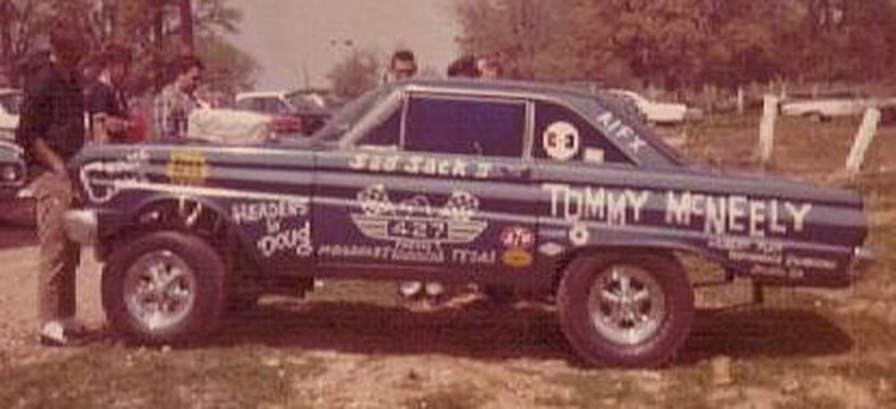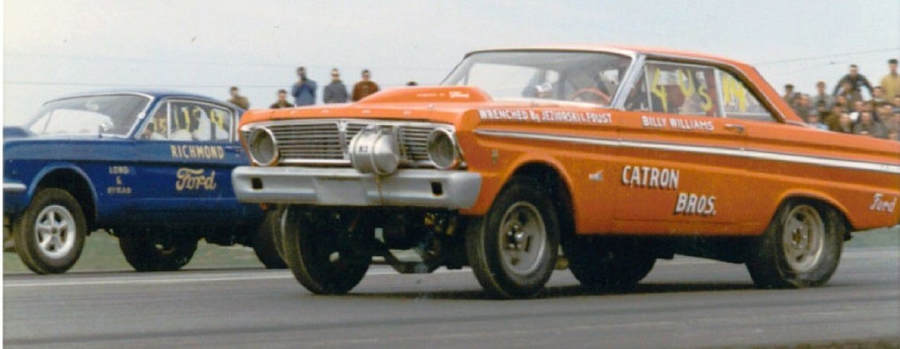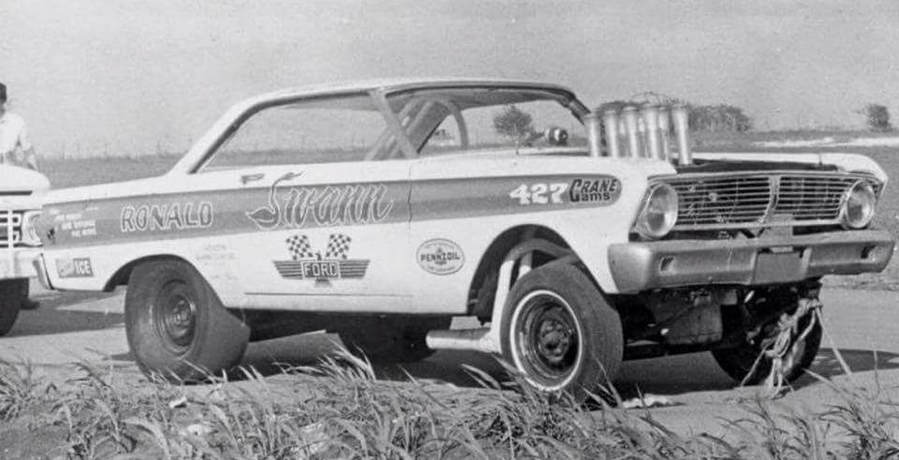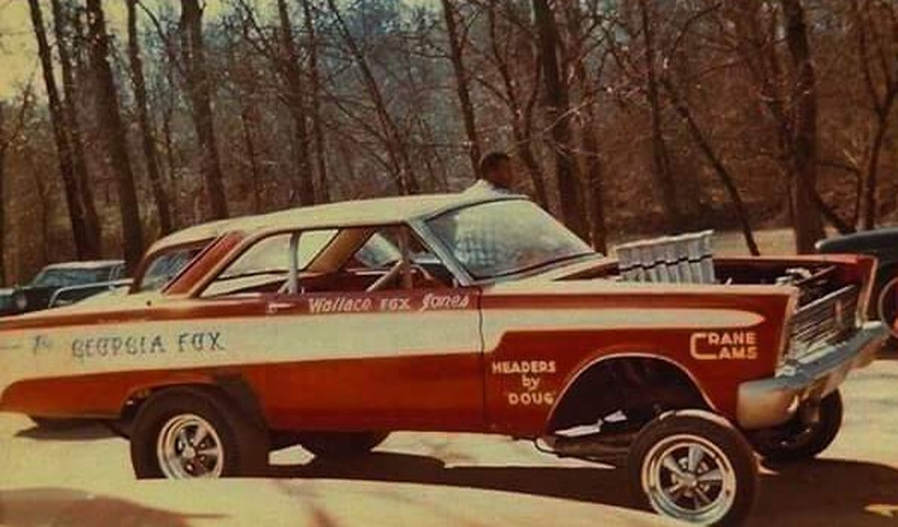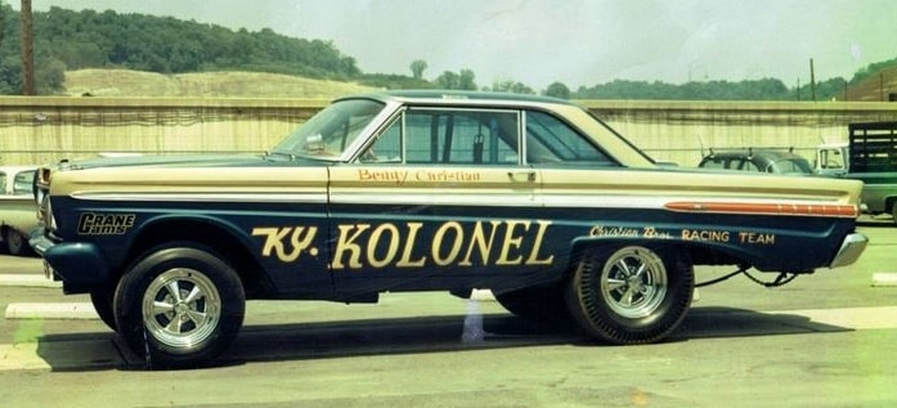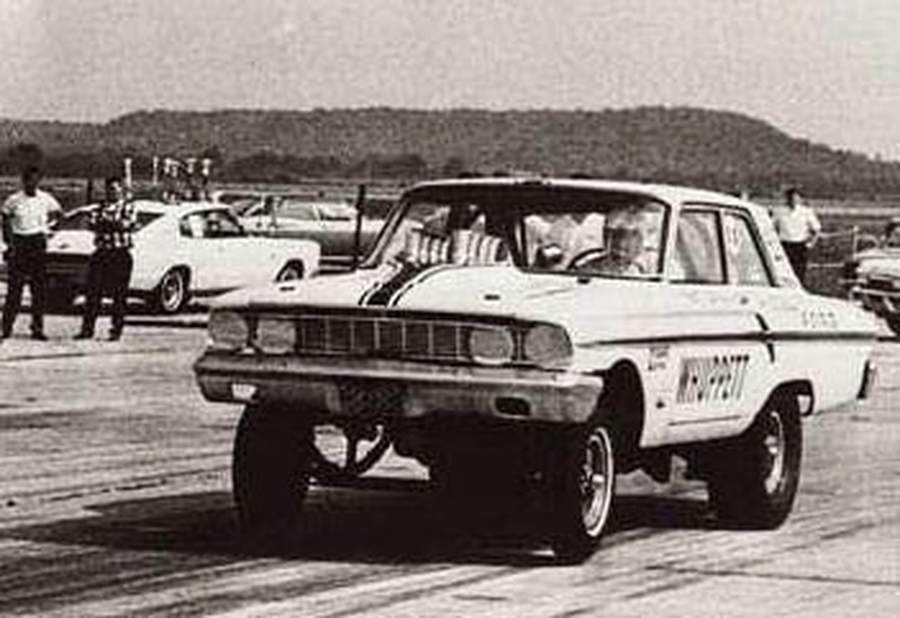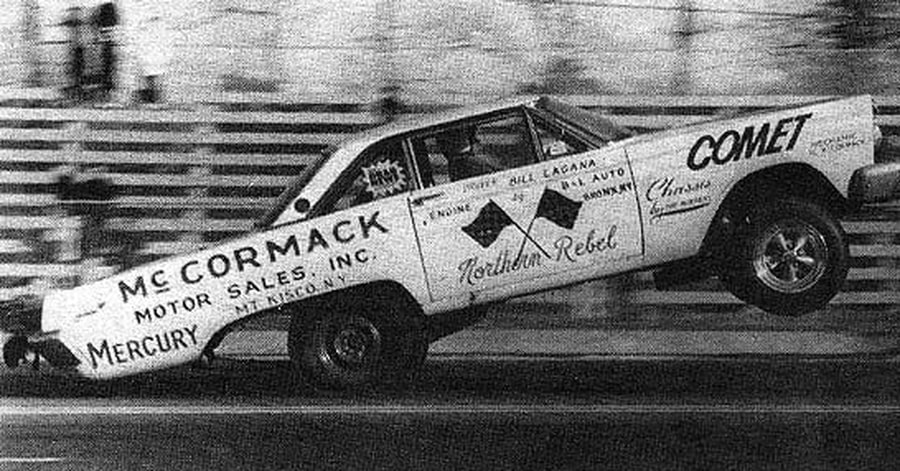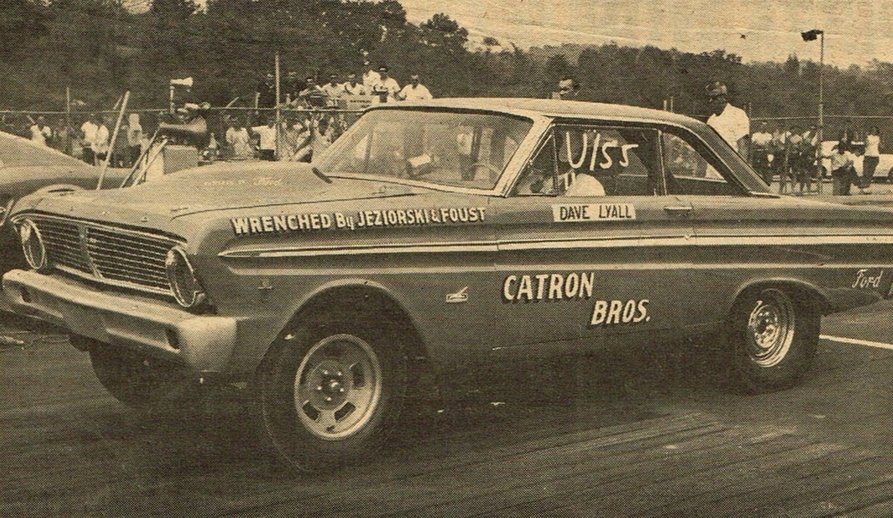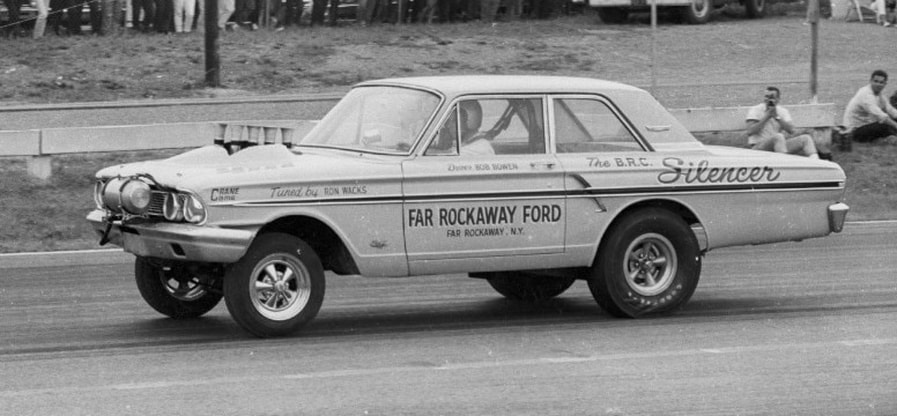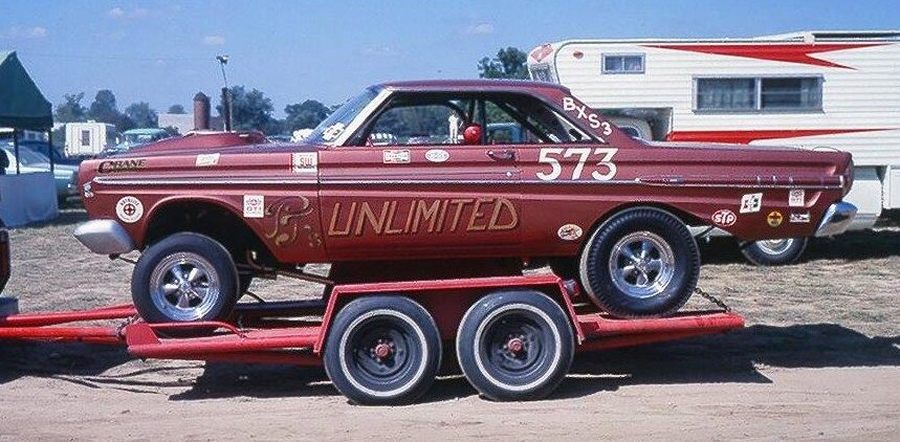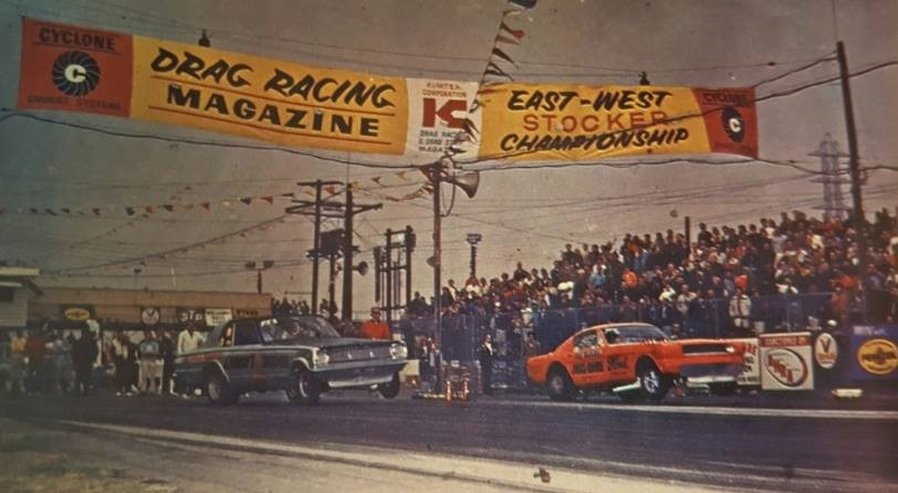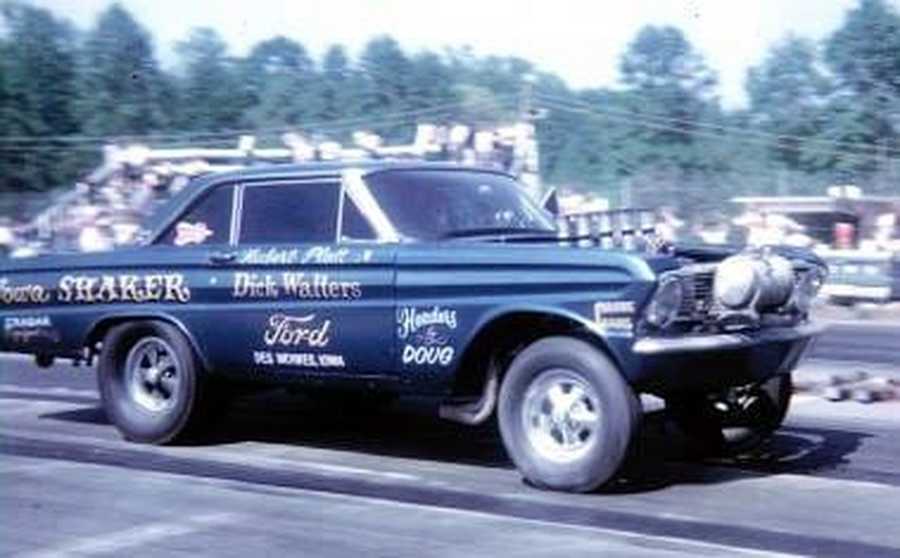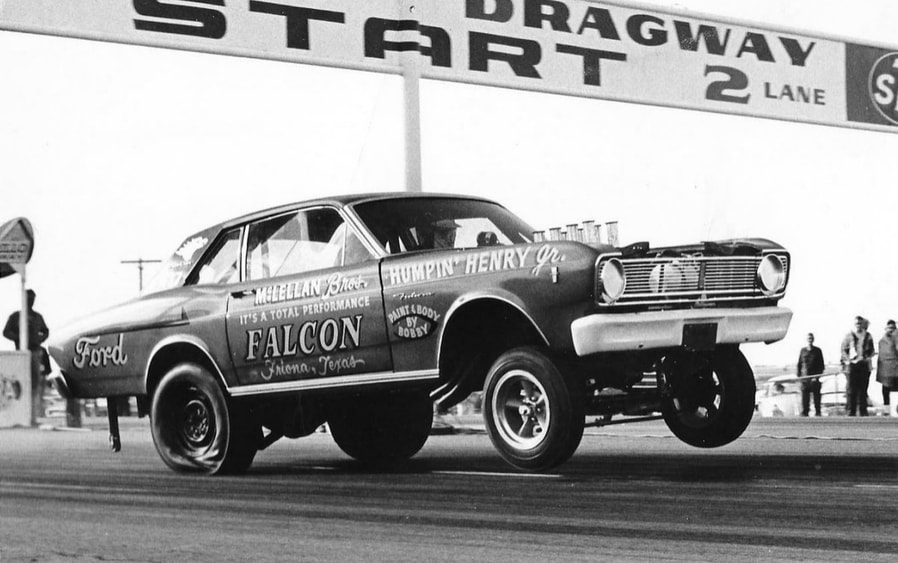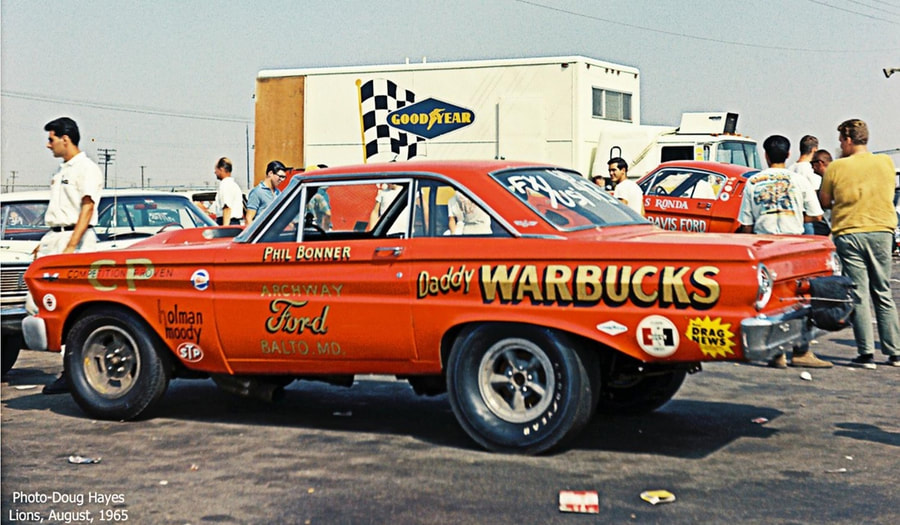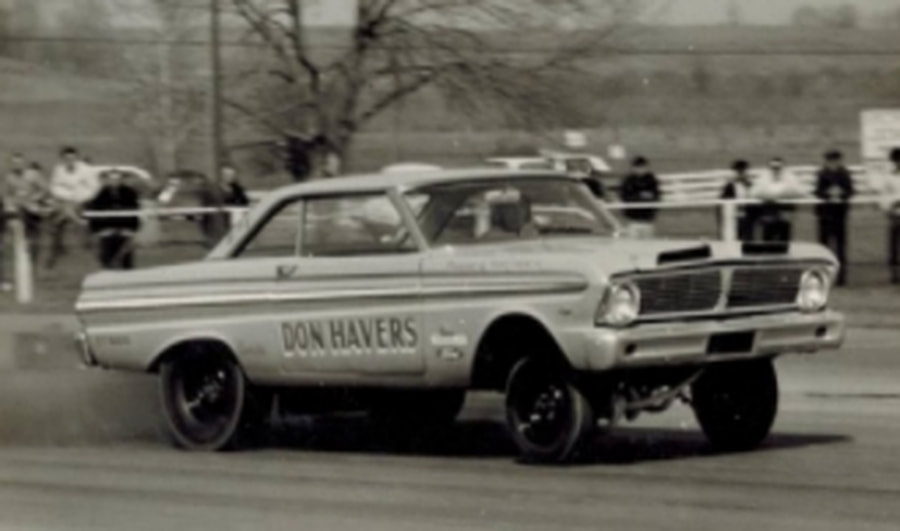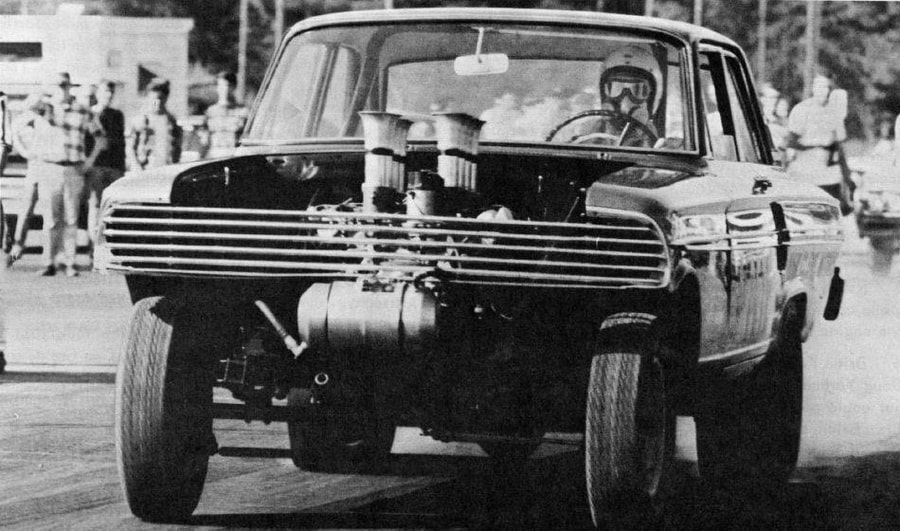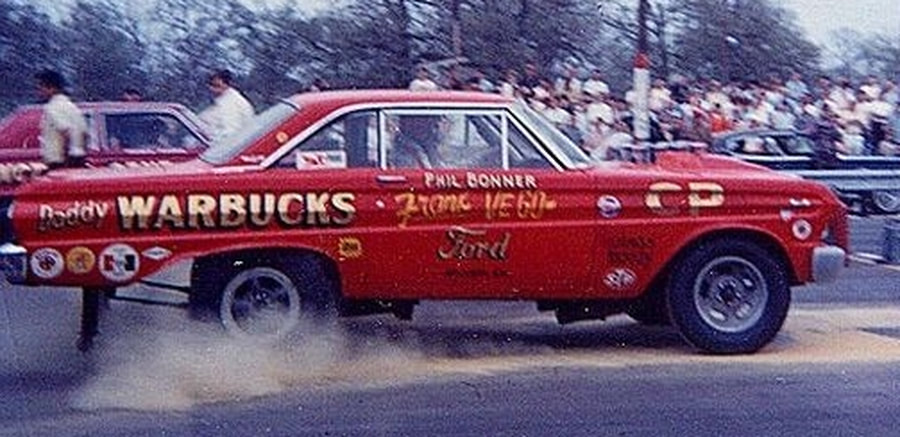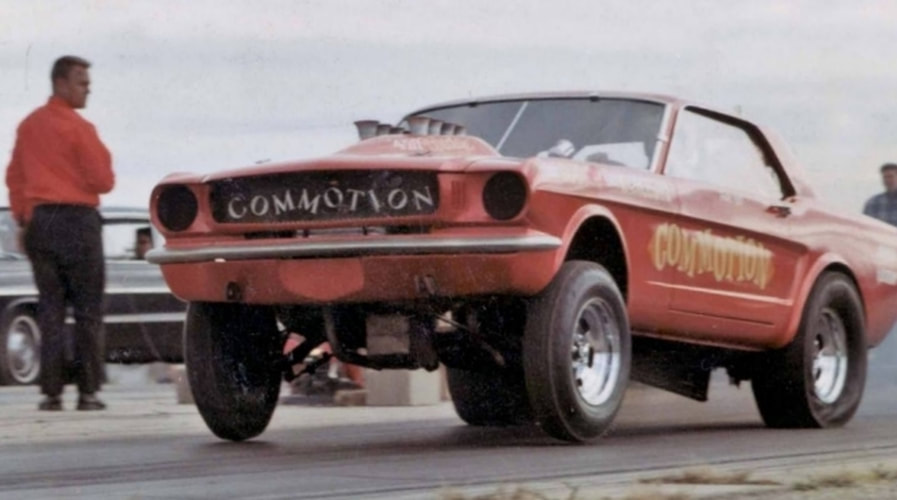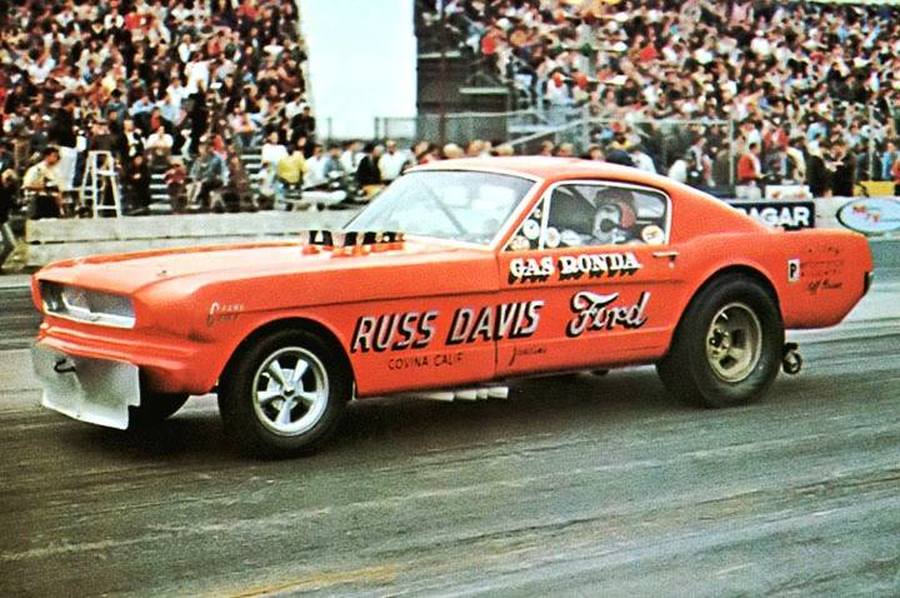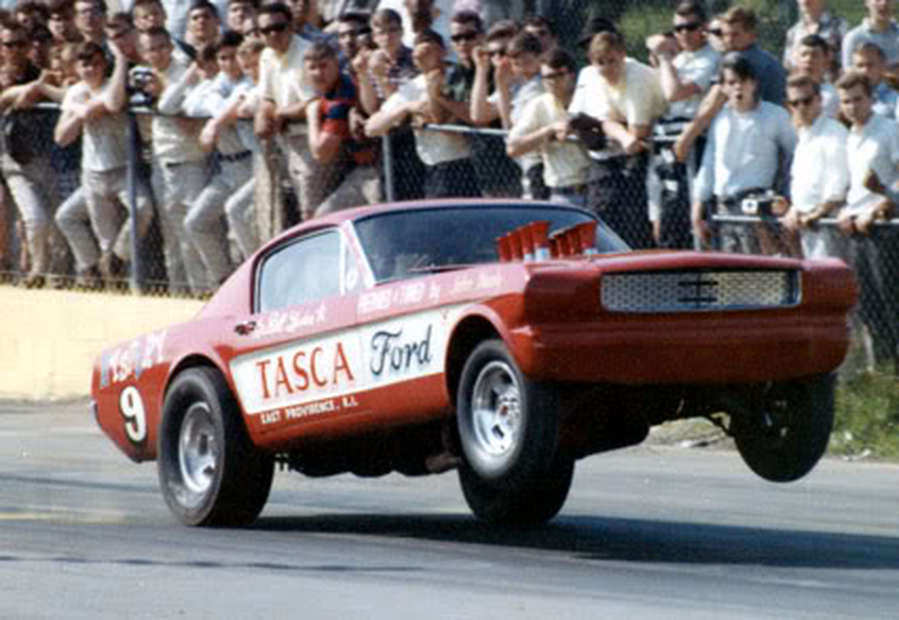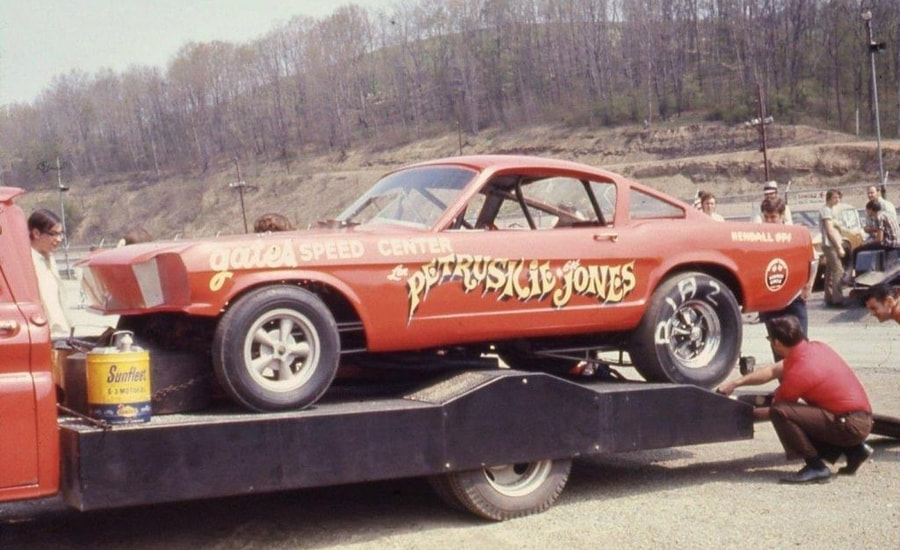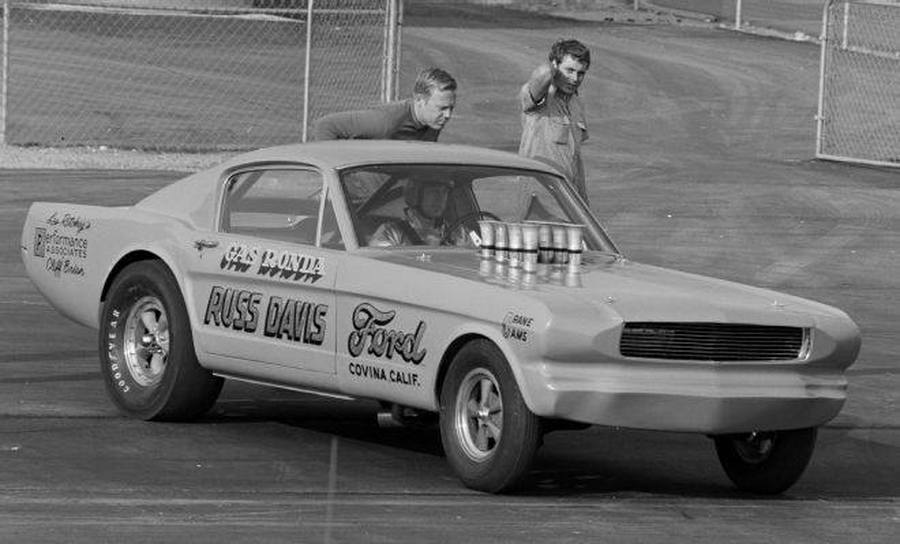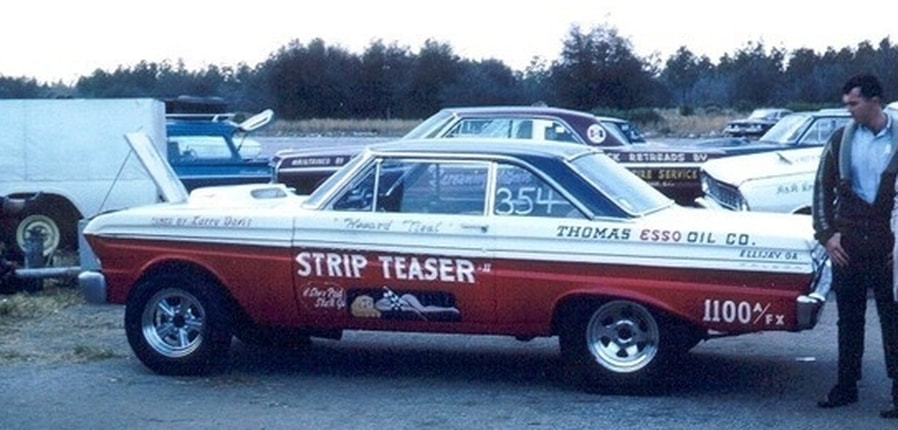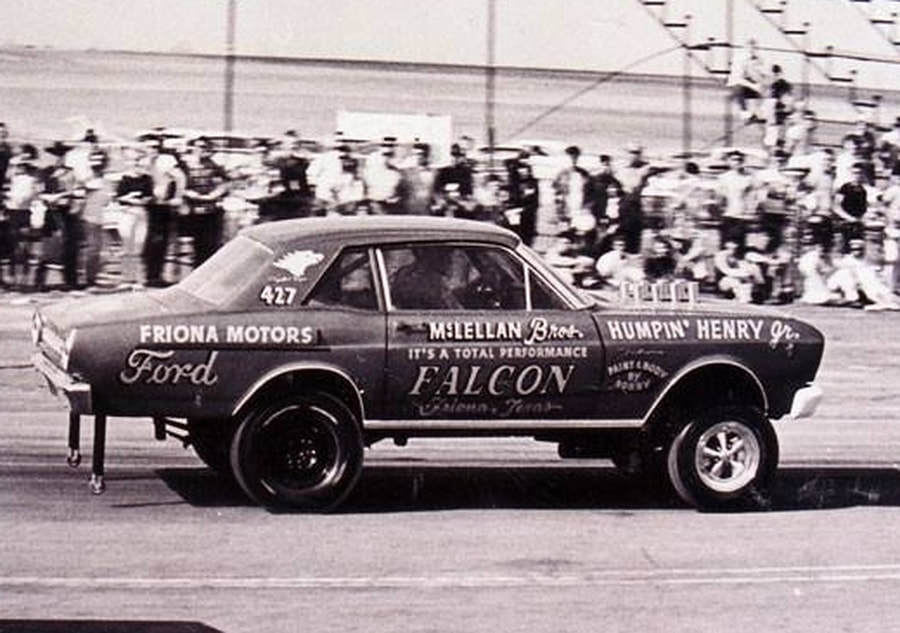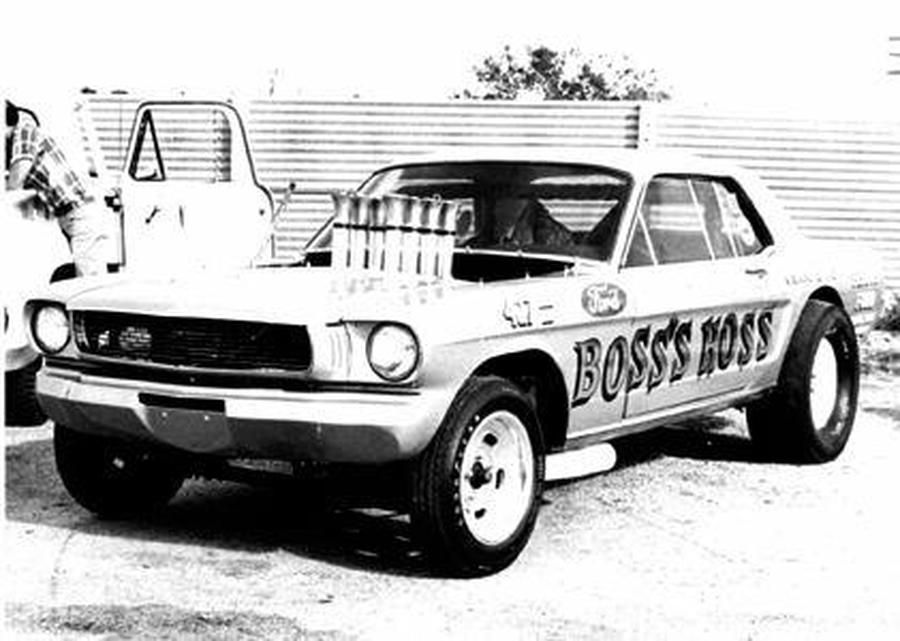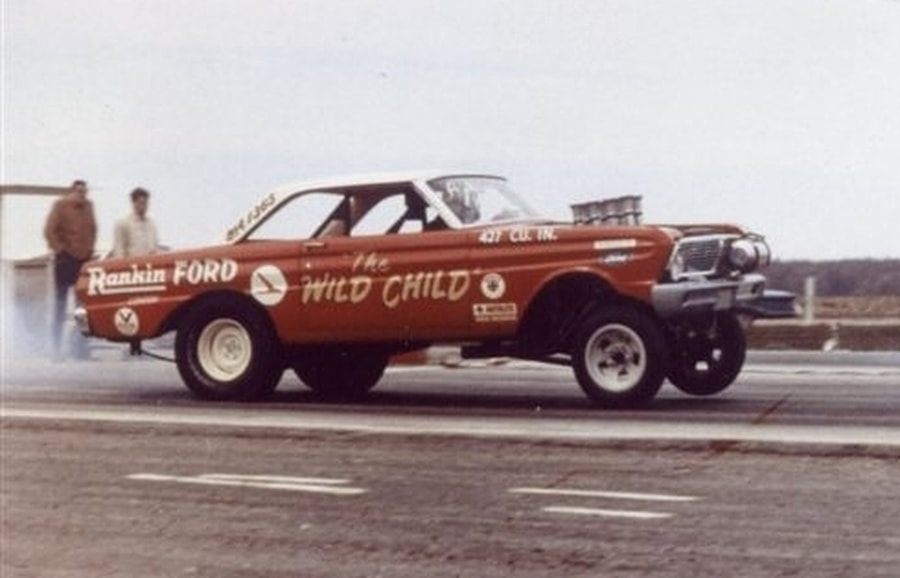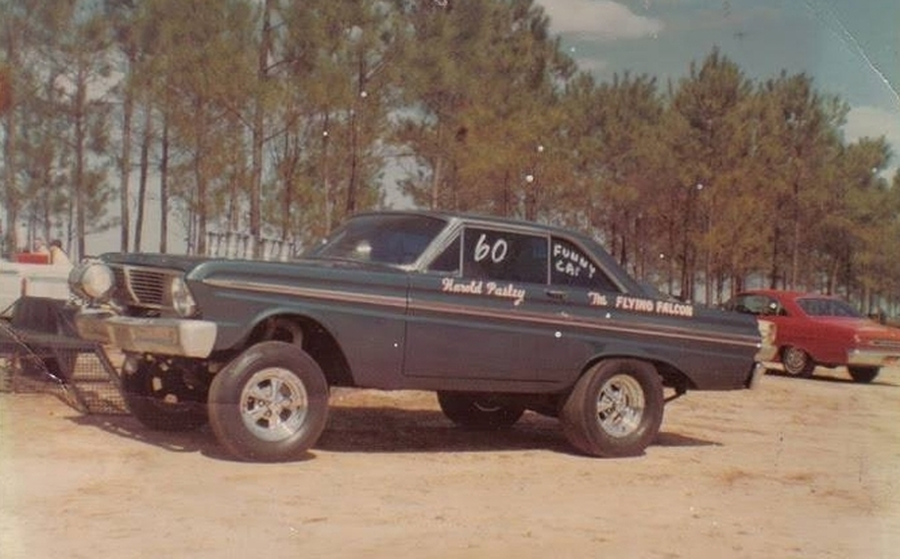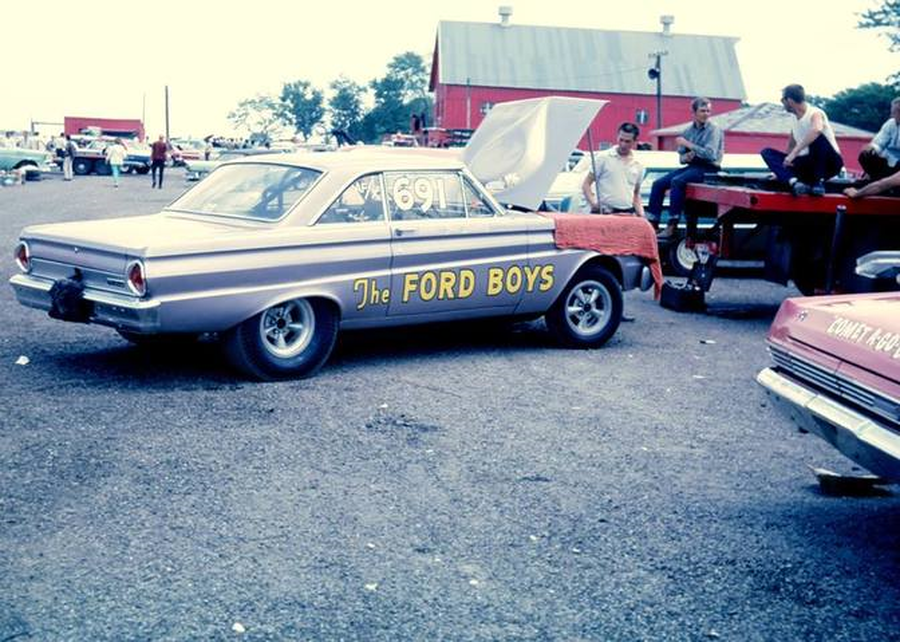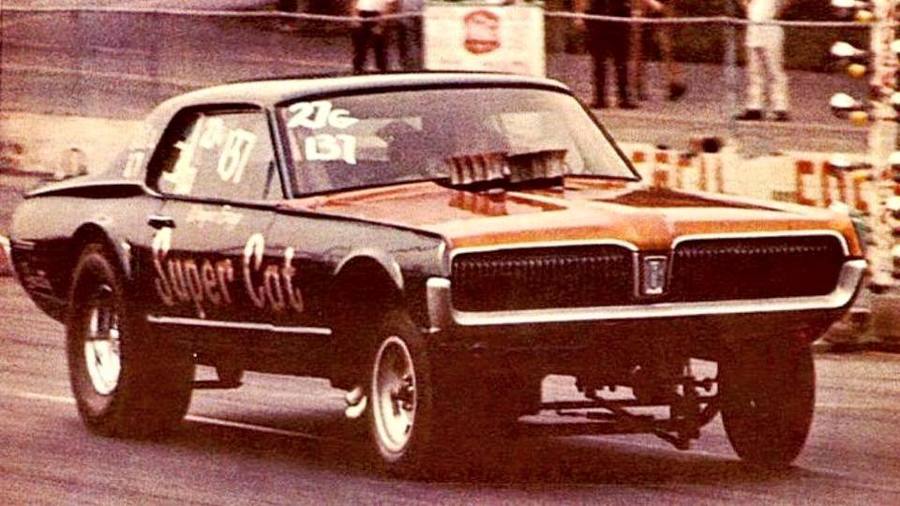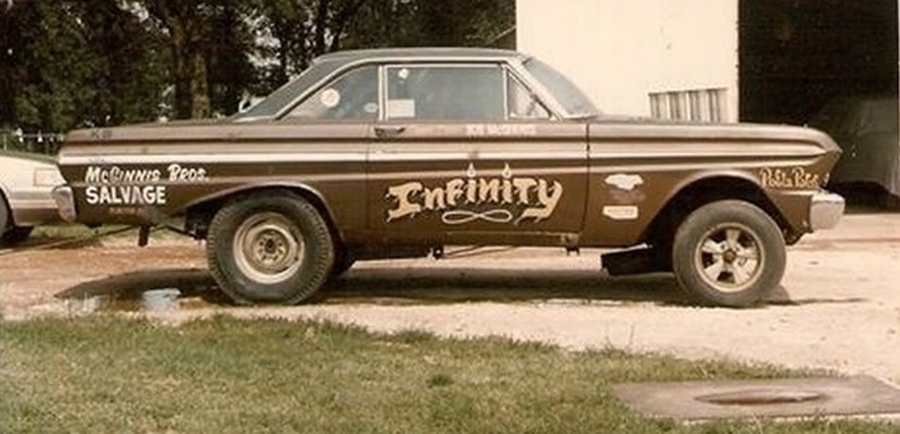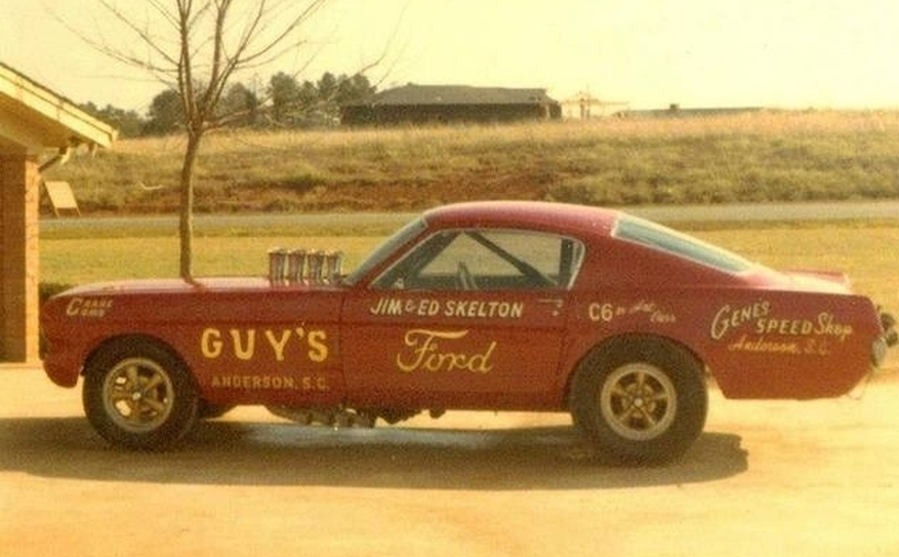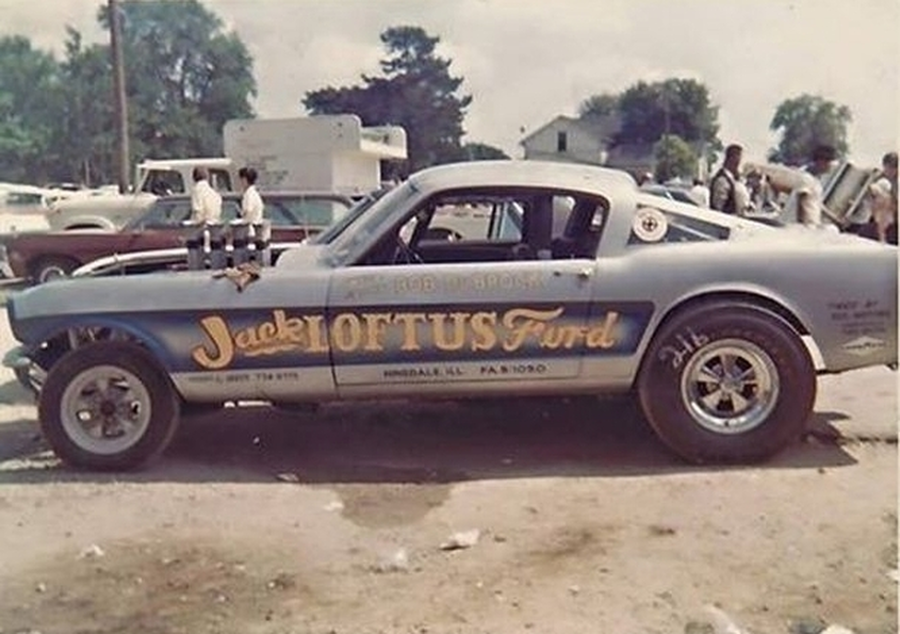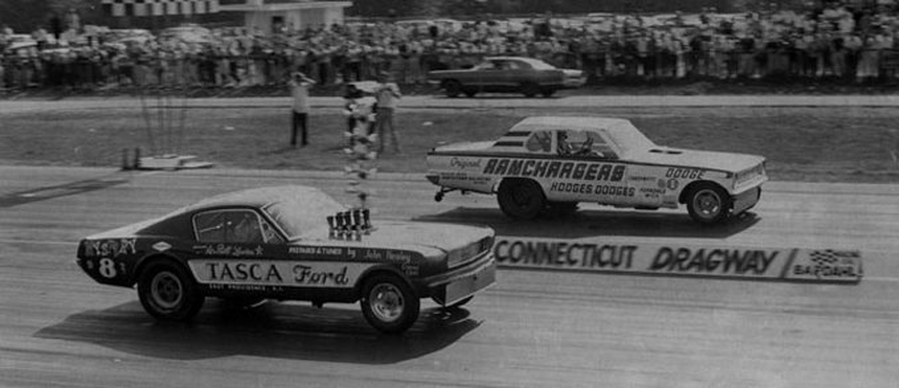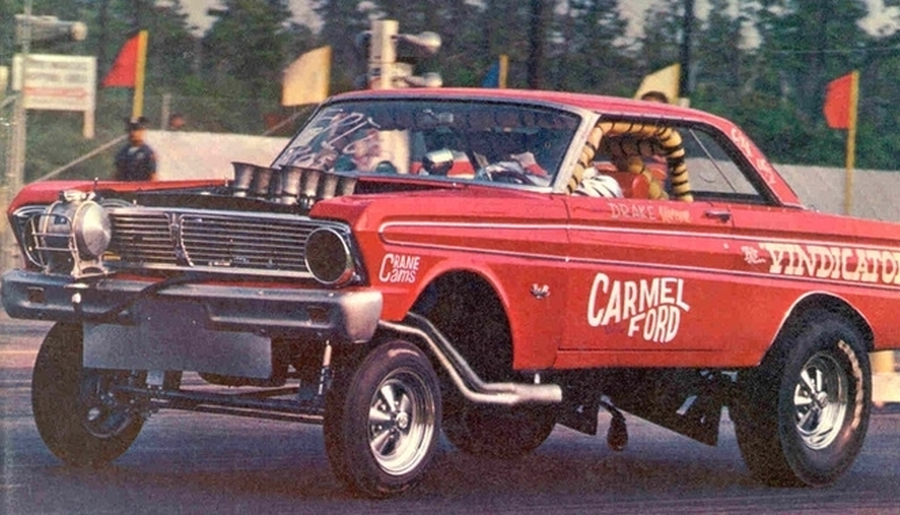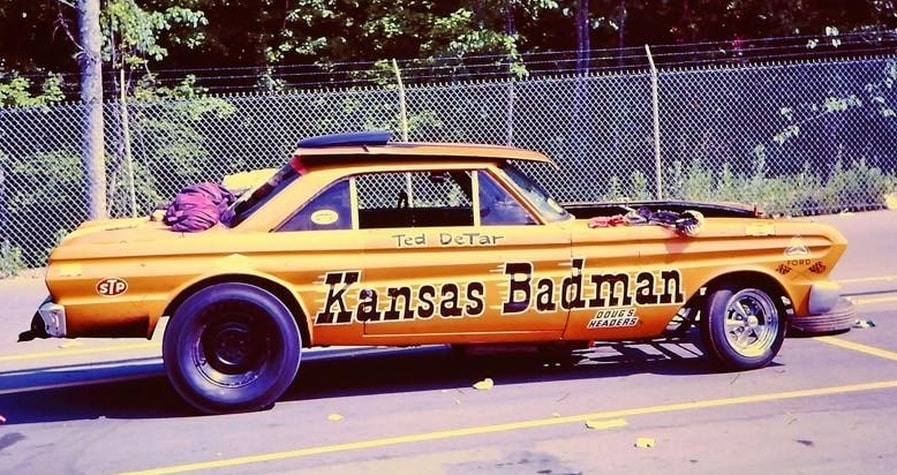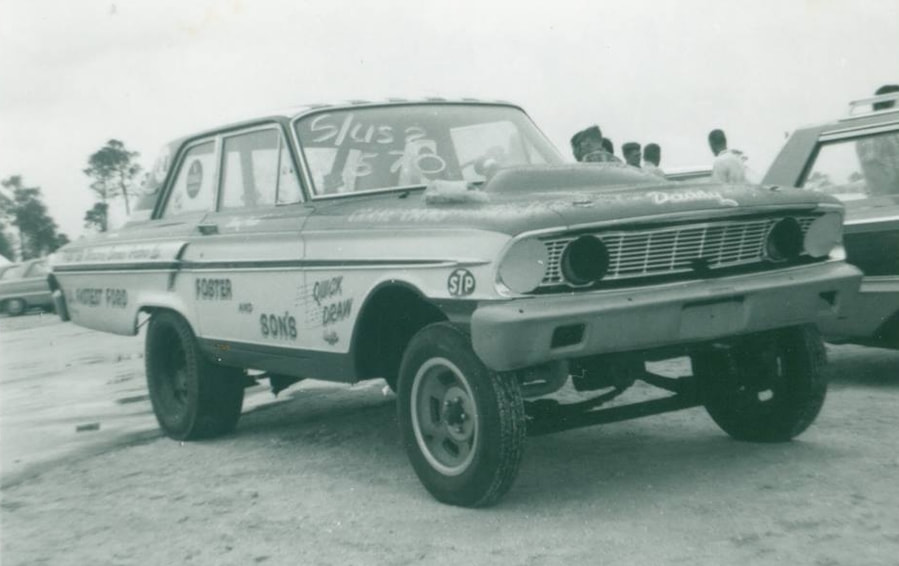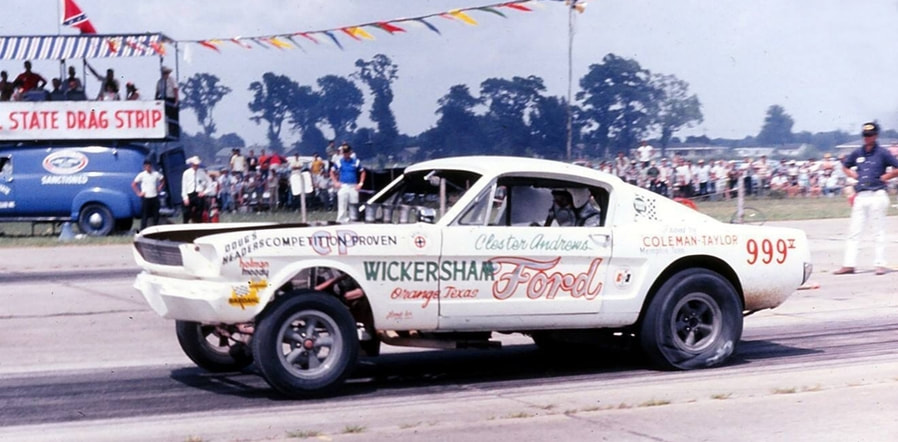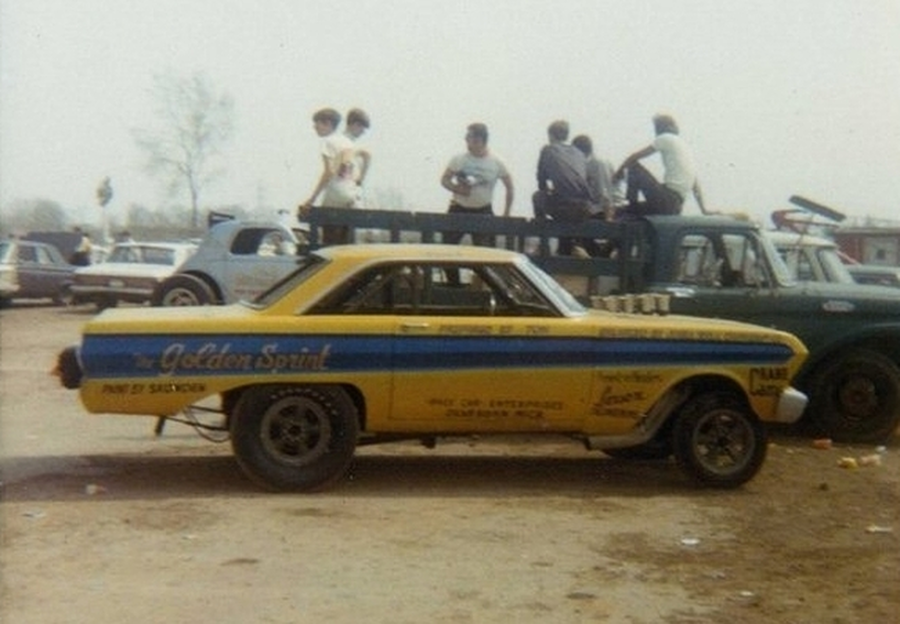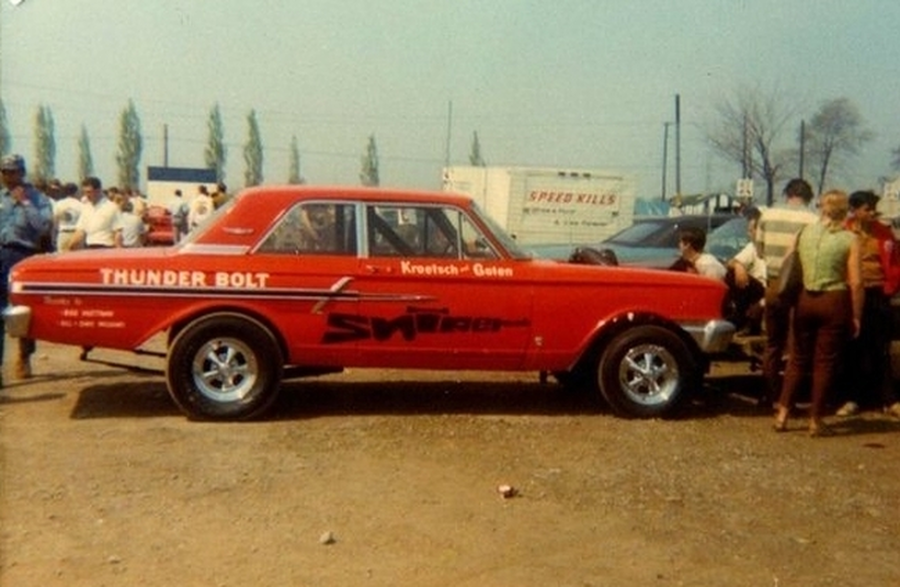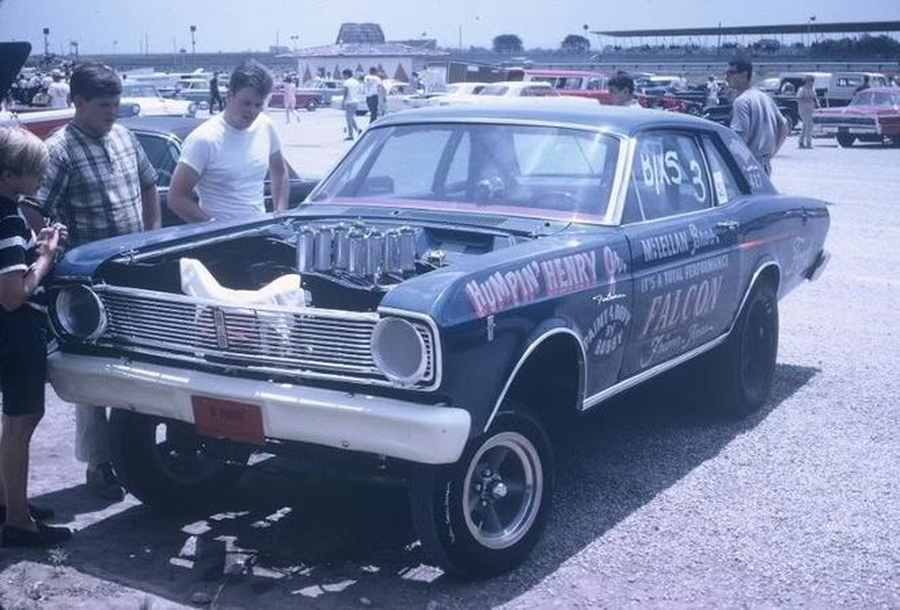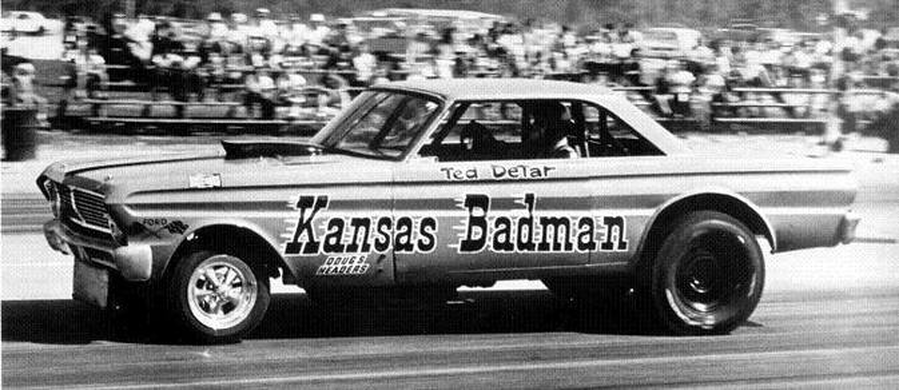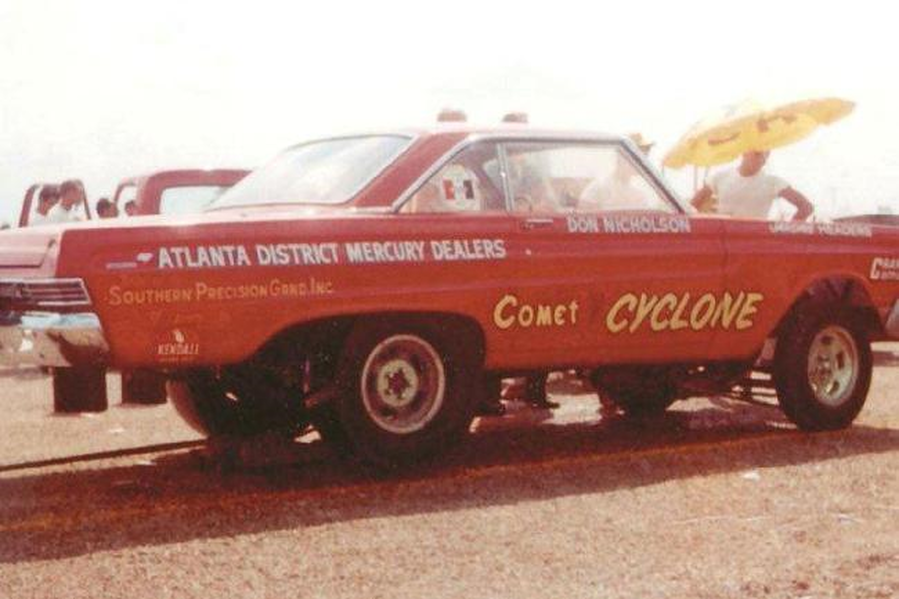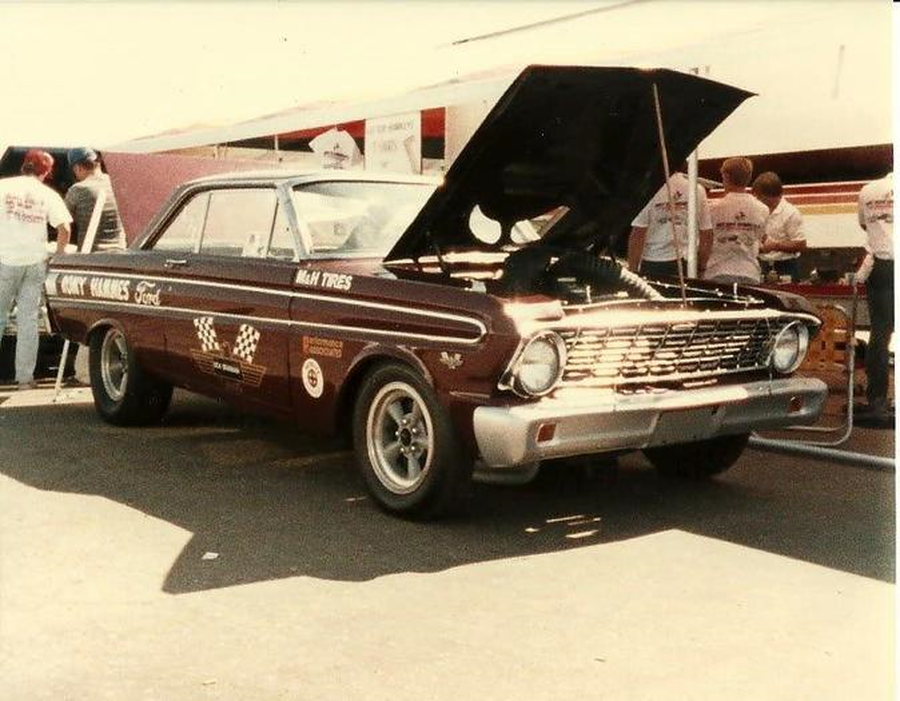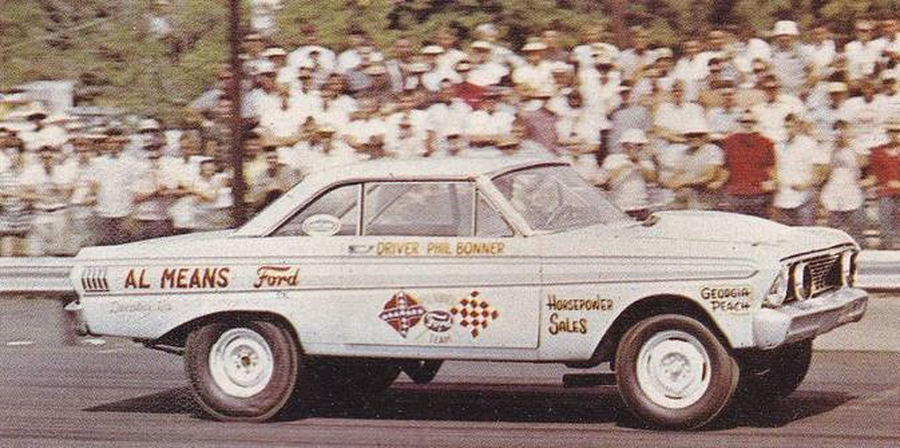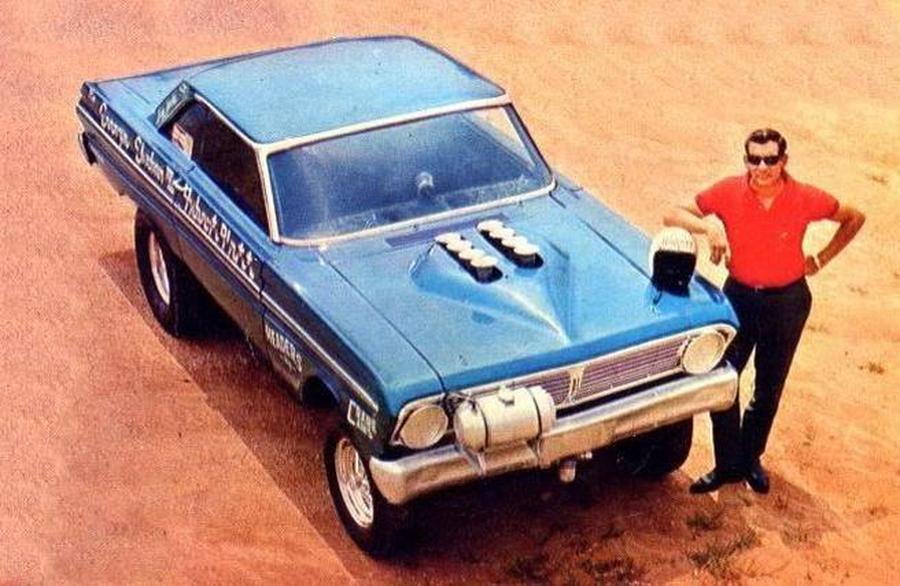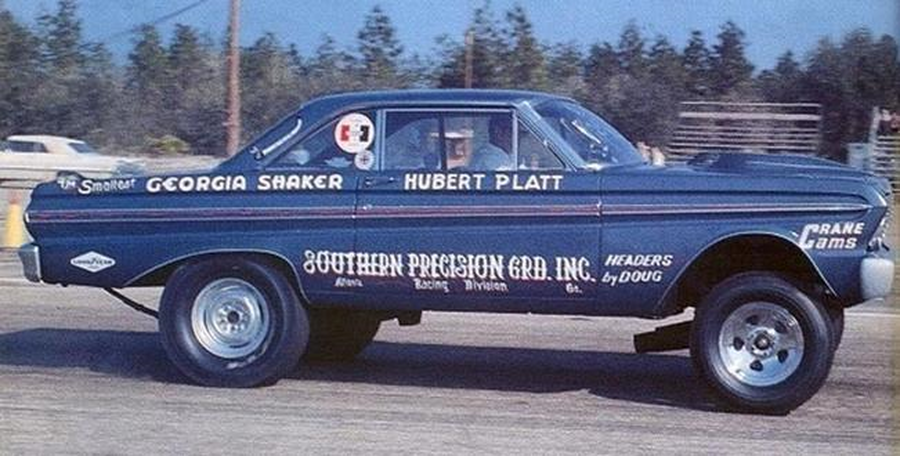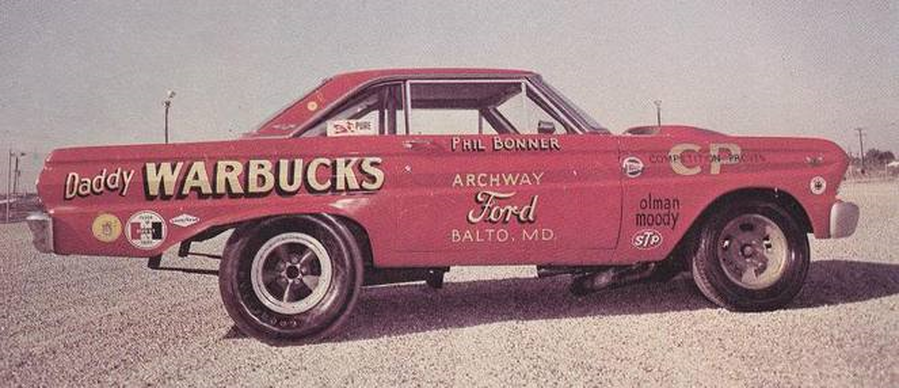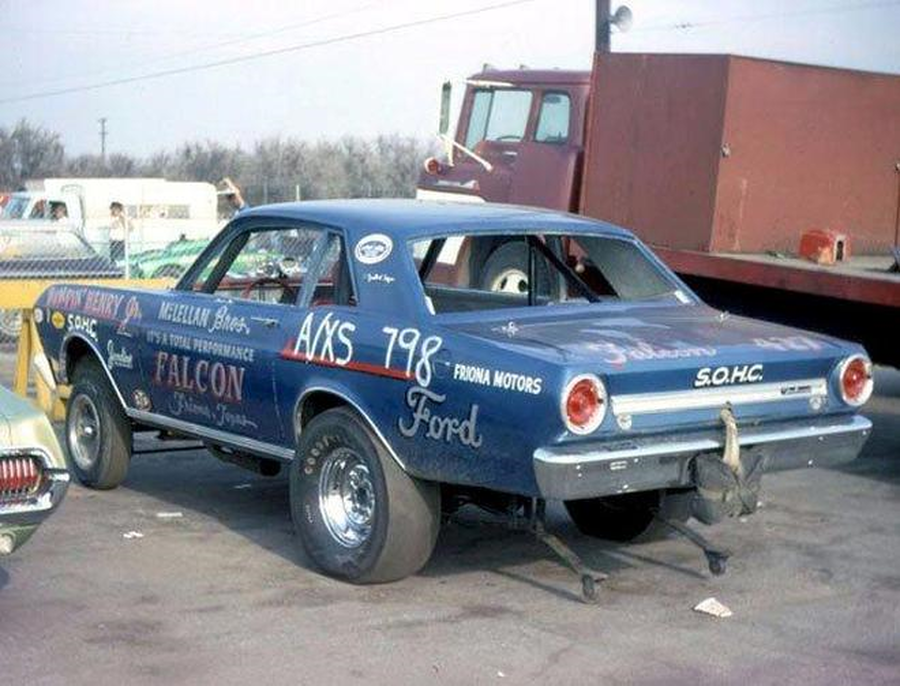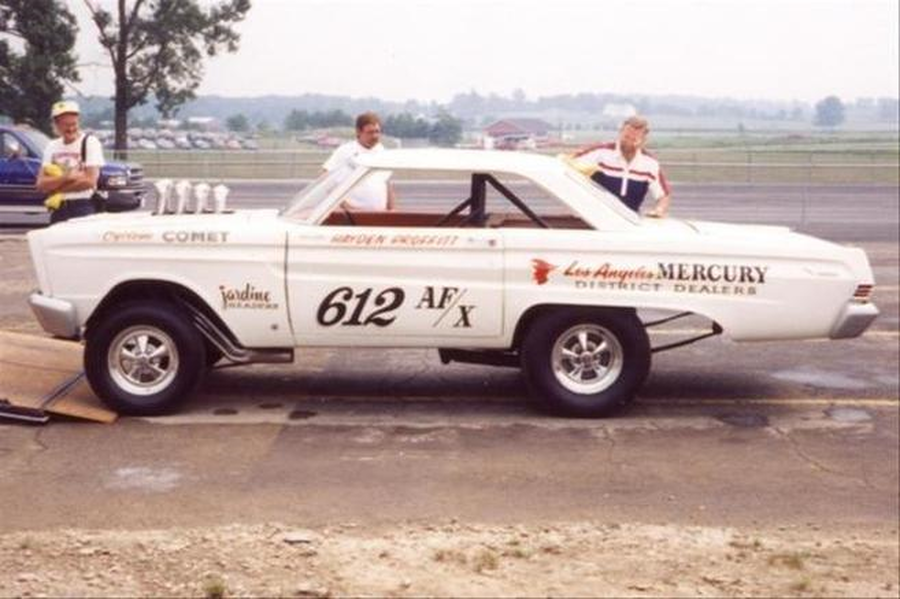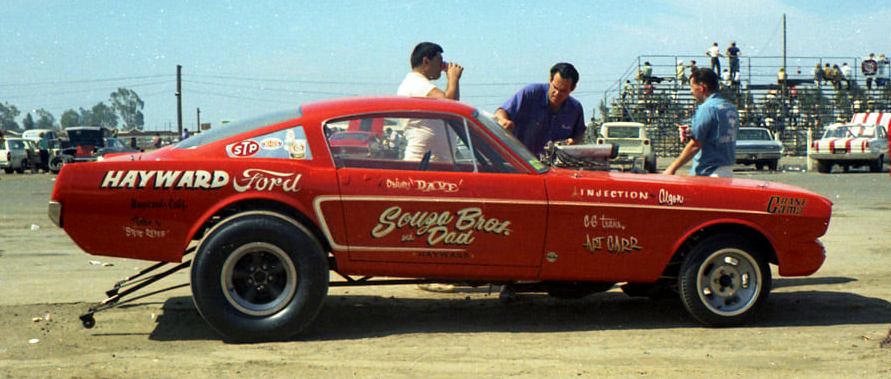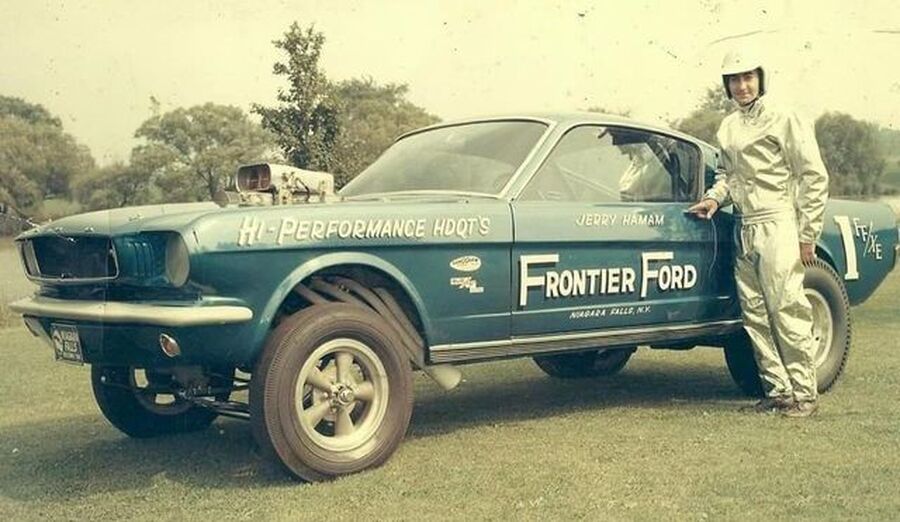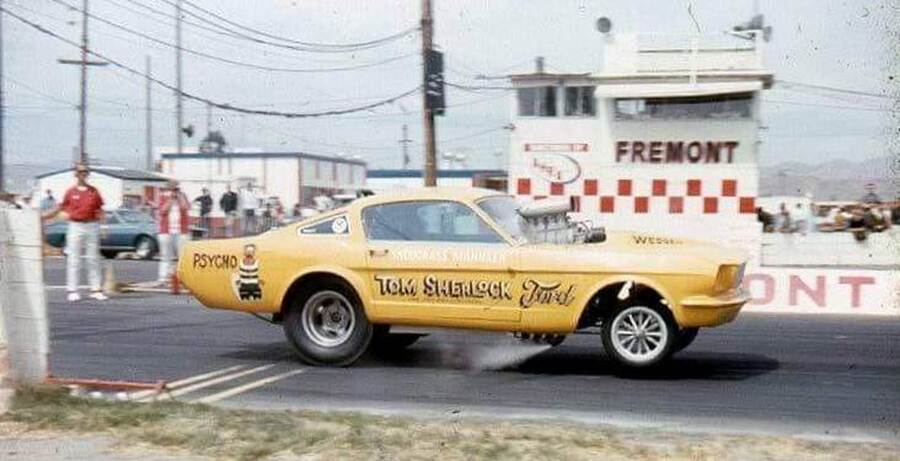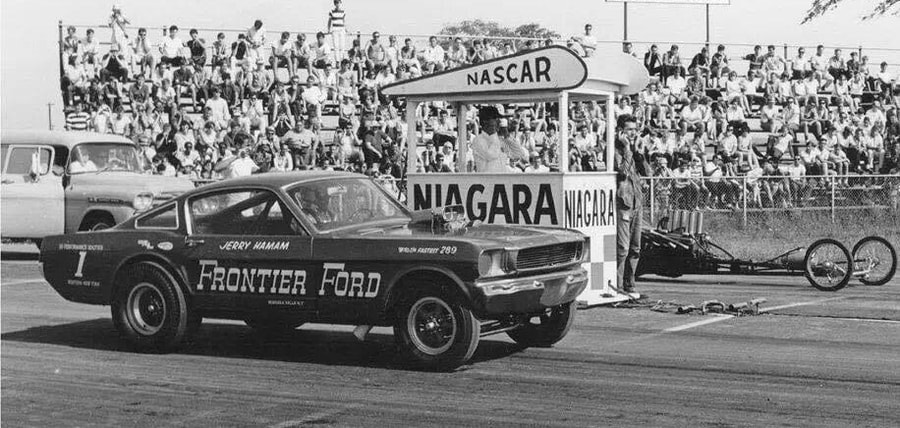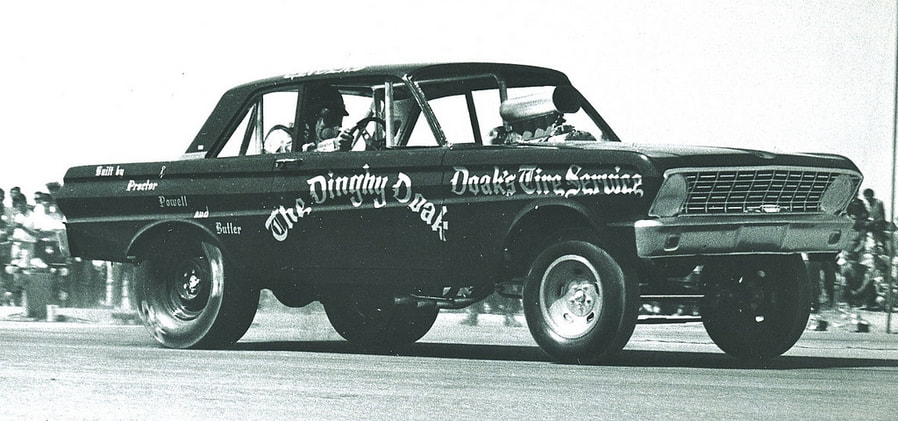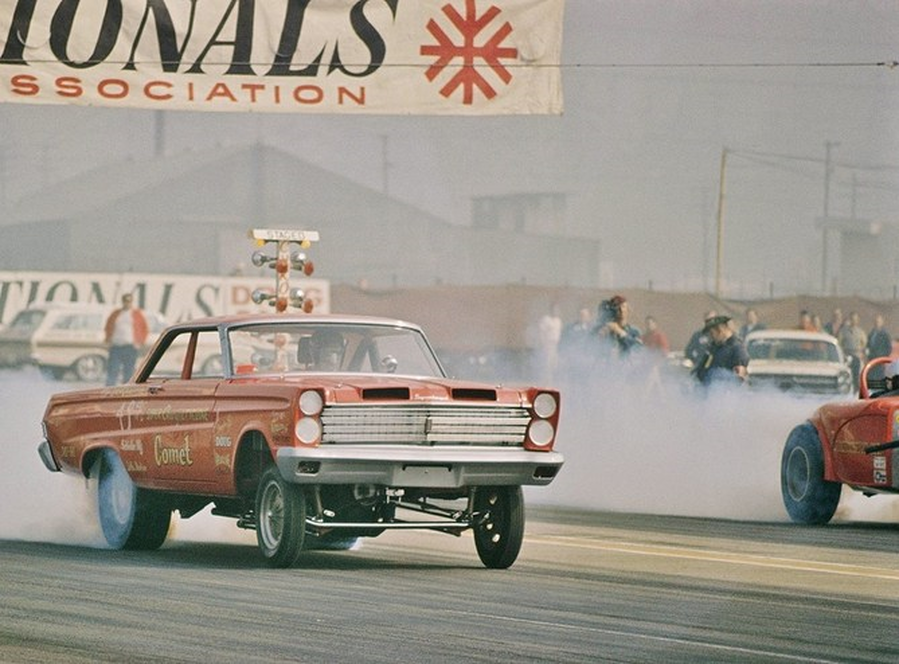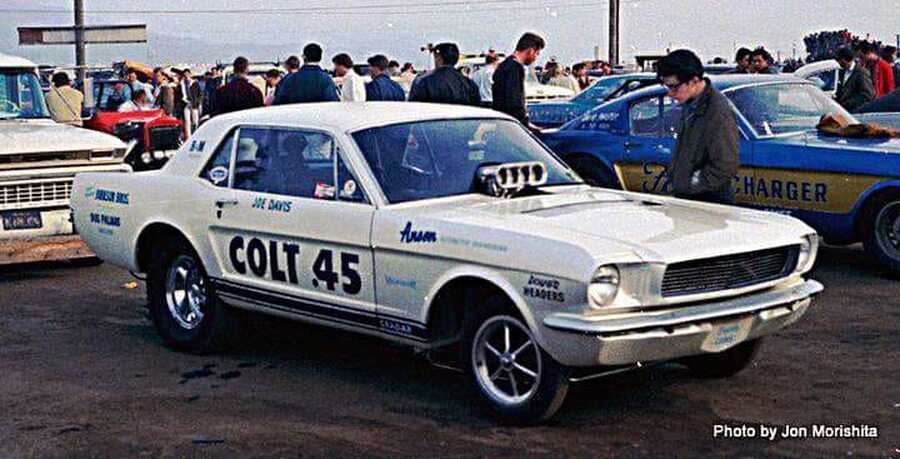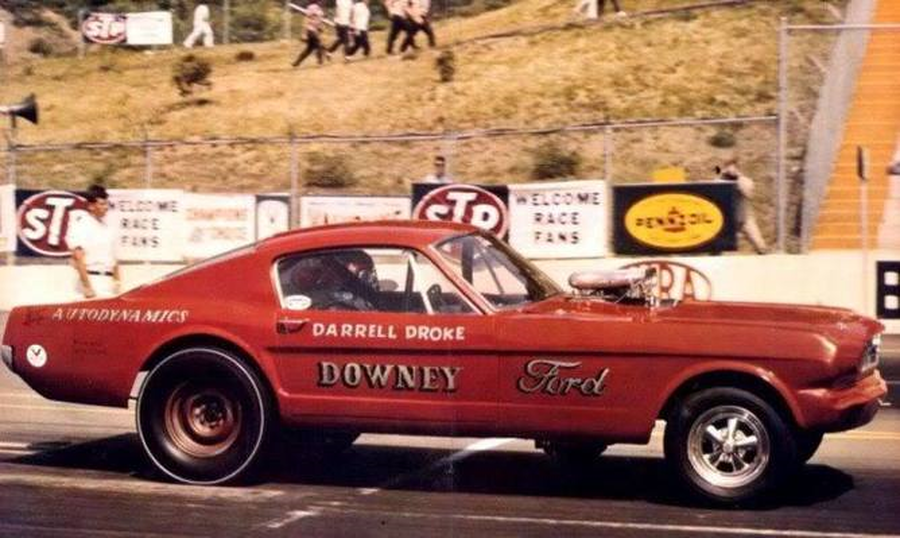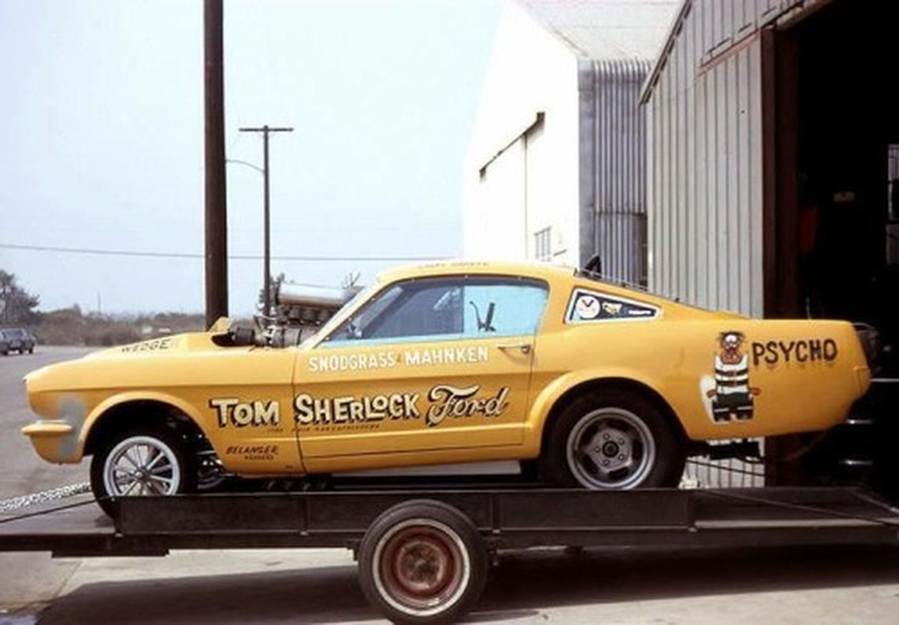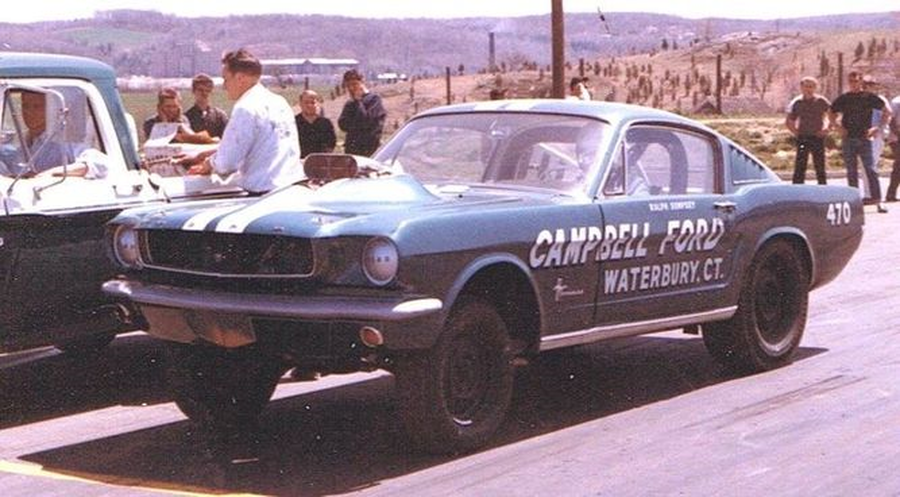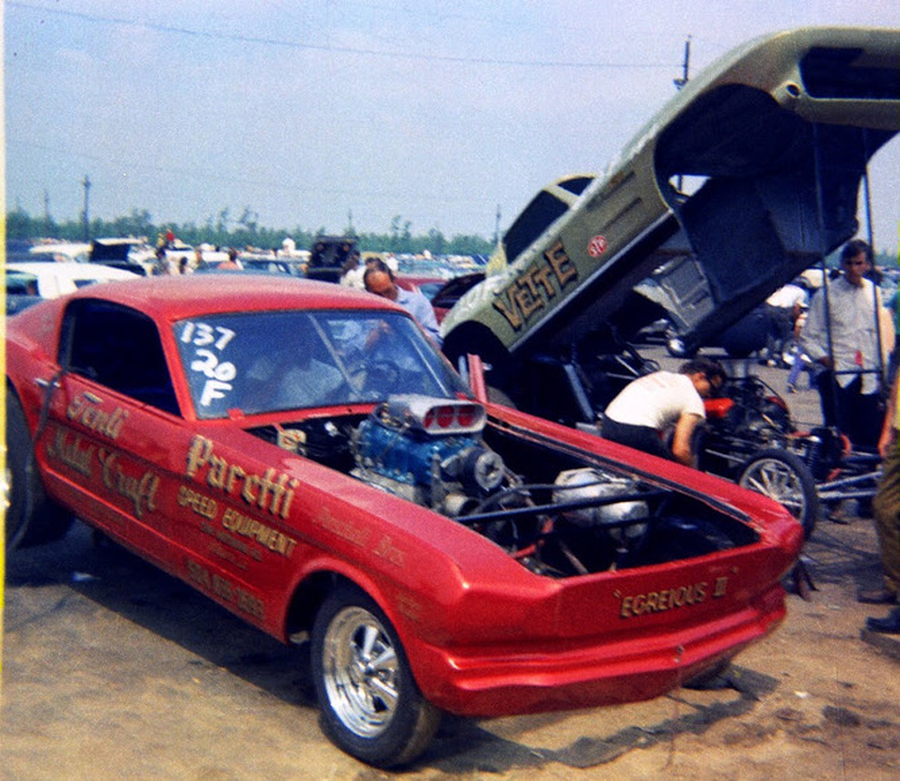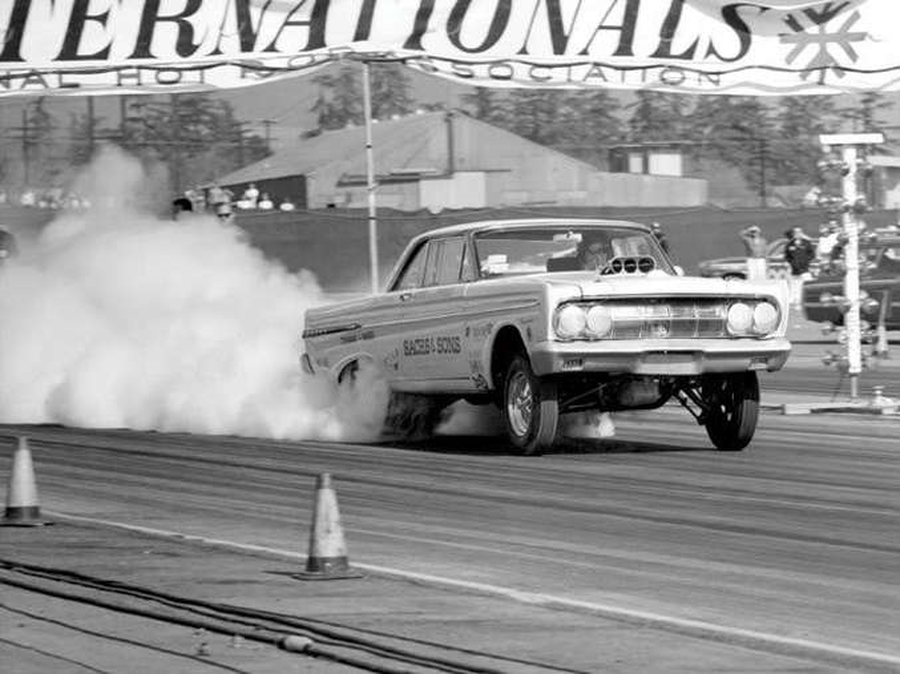FACTORY EXPERIMENTAL (F/X), S/X, & MATCH RACE STOCKERS
NHRA introduced a class in 1962 for a wild Super Stock related race car class. It was called Factory Experimental. It was origionally intended as a class where the factories could produce limited production race cars, or take pieces from their Super Stockers and install them in smaller, lighter vehicles. For instance, taking the 421 cubic inch Pontiac engine out of the full size Pontiac Catalina sedan (119 inch wheelbase) and installing it in the smaller Pontiac Tempest (112 inch wheelbase), along with any other high performance parts built for the Catalina, could produce a neat race car that still used all the Pontiac parts. The original concept allowed the bigger Super Stock engines to be installed (by the factory or by the individual racers) in the smaller, lighter cars. To a major extent, this allowed the automotive factories to maintain their presence and iolvement in Super Stock drag racing without the actual cost of building a specific number of production vehicles. The Chevy Z-11 option in 1963 was a perfect case in point. It was never produced in enough quantity to qualify as an NHRA stocker, for which it was intended, but it fit right into the Factory Experimental (FX) class.
As it turned out, neither Chevrolet or Chrysler Corp ever did build an NHRA legal FX car (Chevrolet and Pontiac bailed out of racing all together). But whereas Chevy and Chrysler didn't build FX race cars, the individual racers did. The "rules" allowed anyone to build an FX race car. Also about this time, match racing took off as a popular attraction on the nations drag strips. Racers were "booked in" (in pairs) by the drag strip promoters to hold match races, two out of three or three out of five match races. This proved very popular with the fans and offered the more well known Super Stock racers an opportunity to become "professional" race car drivers. The FX class soon created some VERY wild race cars with modifications that went way beyond the original NHRA rules. But no one really cared, they still LOOKED like Super Stockers to some extent, they went fast, and they were fun to watch. Eventually, the FX cars morphed into what was to became known as "Funny Cars", with altered wheelbases and supercharged engines. Many of the original "Funny Cars" began life as either a Super Stocker or a Factory Experimental car, until eventually, the Funny Car became a purpose built race car featuring a tube frame chassis and a one piece fiberglass body. I'm not going that far. I just want to stick with the basic FX concept for now, when the cars were actually built out of production car pieces. To the extent possible, I have avoided cars that had all tube frames and / or fiberglass reproduction bodies (or "flip top" cars).
As it turned out, neither Chevrolet or Chrysler Corp ever did build an NHRA legal FX car (Chevrolet and Pontiac bailed out of racing all together). But whereas Chevy and Chrysler didn't build FX race cars, the individual racers did. The "rules" allowed anyone to build an FX race car. Also about this time, match racing took off as a popular attraction on the nations drag strips. Racers were "booked in" (in pairs) by the drag strip promoters to hold match races, two out of three or three out of five match races. This proved very popular with the fans and offered the more well known Super Stock racers an opportunity to become "professional" race car drivers. The FX class soon created some VERY wild race cars with modifications that went way beyond the original NHRA rules. But no one really cared, they still LOOKED like Super Stockers to some extent, they went fast, and they were fun to watch. Eventually, the FX cars morphed into what was to became known as "Funny Cars", with altered wheelbases and supercharged engines. Many of the original "Funny Cars" began life as either a Super Stocker or a Factory Experimental car, until eventually, the Funny Car became a purpose built race car featuring a tube frame chassis and a one piece fiberglass body. I'm not going that far. I just want to stick with the basic FX concept for now, when the cars were actually built out of production car pieces. To the extent possible, I have avoided cars that had all tube frames and / or fiberglass reproduction bodies (or "flip top" cars).
CHEVROLET
For Chevrolet, the FX cars meant moving away from the full size Bel Air and Impala size sedans (119 inch wheelbase) and into the Chevelle and Chevy II / Nova size cars (115 inch wheelbase and 110 inch wheelbase, respectively). Here are some examples.
Section 1 NHRA legal Chevy II, 1962, F/X
In the world of FX or in Match Racing, no one wanted to haul around or race a bigger race car than they had to and so for the Chevy guys, the Nova was made to order. The Chevy II Nova was introduced in 1962. The car remained pretty much unchanged through 1965, at which time a new model Nova was introduced. Although the new models (1966 and 1967) had a sleeker look, the specifications were almost identical to the earlier Novas. Here are some photos of the 1962 through 1965 models.
NHRA legal Nova FX cars were few and far between. Here some photos of a few...
NHRA legal Nova FX cars were few and far between. Here some photos of a few...
This 327" Chevy II sedan below (a four-door) ran A/FX at the 1962 NHRA Winternationals in Pomona, had to go up against Hayden Proffitt's 421" Tempest.
Section 2 Chevelle 1964-1965 F/X and Match Race
Other than the hood scoop, this Chevelle would be considered an NHRA legal A/FX car. The body and chassis remained stock, the wheelbase was not altered, and it was equipped with a "legal" Z-11 engine...
Section 3 Chevelle 1966-1967 Match Race
Section 4 Chevy II & Nova, 1962-1965, Match Race
Section 5 Chevy Nova, 1966-1967, Match Race
Here are some photos of the 1966 and 1967 Novas. The hardtop models were more popular but the 2-door sedans worked much the same.
Section 6 Corvair 1964-1967 Match Race
Even some Chevy Corvairs got into the act. Illegal for NHRA FX, but great for match racing.
Yup, I know, it's not an injected Corvair. But it is injected and it is a Chevy, and I couldn't find any other spot to put it. Sorry...
Section 7 Chevy, Supercharged S/X and Match Race
PONTIAC
Section 8 Tempest LeMans, 1962 F/X
The “Swiss Cheese”Pontiacs, as powerful and as light as they were, were not light (or small) enough. Enter the Factory Experimental Pontiac Tempests.
The first one appeared in 1962 at the NHRA Winternationals, built at Mickey Thompson’s shop in Long Beach, CA, by Hayden
Proffitt and Lloyd Cox. It was a standard 4-cylinder Pontiac Tempest Le Mans, now fitted with a 421 Super Duty engine and
transmission out of one of Mickey Thompson’s Super Stock cars (legal Super Stock engines were an NHRA requirement at the time). The stock Tempest rear swing-axle was replaced by a Pontiac Catalina rear end. In short, it was a 1962 Pontiac Super Stocker in a compact Tempest body/chassis. It dominated the A/FX class at the 1962 NHRA Winternationals and also at the NHRA Nationals later in the year.
The first one appeared in 1962 at the NHRA Winternationals, built at Mickey Thompson’s shop in Long Beach, CA, by Hayden
Proffitt and Lloyd Cox. It was a standard 4-cylinder Pontiac Tempest Le Mans, now fitted with a 421 Super Duty engine and
transmission out of one of Mickey Thompson’s Super Stock cars (legal Super Stock engines were an NHRA requirement at the time). The stock Tempest rear swing-axle was replaced by a Pontiac Catalina rear end. In short, it was a 1962 Pontiac Super Stocker in a compact Tempest body/chassis. It dominated the A/FX class at the 1962 NHRA Winternationals and also at the NHRA Nationals later in the year.
Section 9 Tempest LeMans, 1963 F/X & Match Race
What worked well in the FX class in 1962, built by independent racers, would work just as well in 1963, built by the factory and distributed to the favored Pontiac racers around the country. Whereas the full size Catalina sedans had a 119 inch wheelbase, the Pontiac Tempest was built on a much smaller (and lighter) 112 inch wheelbase.
A total of twelve Pontiac Tempest A/FX cars were built, all with the 421 Super Duty engines. Six were Tempest coupes and six were Tempest station wagons. All the factory cars were delivered with a special rear-mounted trans-axle set up but many of the racers eventually switched to the standard engine-mounted transmissions and the Catalina rear axle assembly.
A total of twelve Pontiac Tempest A/FX cars were built, all with the 421 Super Duty engines. Six were Tempest coupes and six were Tempest station wagons. All the factory cars were delivered with a special rear-mounted trans-axle set up but many of the racers eventually switched to the standard engine-mounted transmissions and the Catalina rear axle assembly.
Section 10 Pontiac GTO, Match Race
Section 11 Pontiac, Supercharged S/X and Match Race
Section 12 Dodge & Plymouth F/X Sedans 1962-1965
In 1962, NHRA introduced the Factory Experimental (FX) class, and Dodge and Plymouth followed suit as did the other brands. At the time, stock suspension and stock wheelbases was a requirement. Eventually, NHRA did permit some wheelbase alteration (a maximum of 2%) but never the wild drastically altered wheelbase cars that Dodge and Plymouth produced a few years later. Never the less, many racers modified their Super Stockers to take advantage of the FX classes held at NHRA National Events. Here are a few examples. Also a couple of Dodge pick-up trucks, fitted with S/S engines, a legal modification.
Section 13 Dodge & Plymouth Altered Wheelbase Match Race Sedans, 1962-1965
The FX bug hit the Dodge and Plymouth camps as hard as it did the other manufacturers. But unlike Chevrolet, who never really manufactured a "factory built " FX car (discounting the Impala Z-11 option in 1963, which was actually designed as a Super Stocker), Chrysler Corporation jumped into the frey with both feet. When Chrysler heard that Ford was planning to install their 427 cubic inch single overhead cam (SOHC) engines in selected Ford Mustang and Mercury Comet cars for FX competition, the competitve jucies began to flow. In late 1964, Chrysler engineers began construction of six Plymouth Belvederes and six Dodge Cornets for Factory Experimental competition. Each of the twelve cars went through some major surgery, the most obvious visual changes being the wheelbase "adjustments". The rear axle assembly was moved forward 15 inches, and the front suspension by 10 inches. This created a 110 inch wheelbase (standard wheelbase was 116 inches). The drastic shift allowed the body to sit back further, greatly increasing the rearward weight bias and putting more weight over the rear tires for traction.
Originally intended for the NHRA Factory Experimental class, the cars were disallowed, primarily because of the drastically altered wheelbases. This did not prove to be a handicap as the match race circuit was in full swing.
This rather strange altered wheelbase apperence prompted the name "funny car", and started a wave of copy-cat cars, with many independent racers doing pretty much the same thing with their own cars. Everyone wanted in on the action. This was the height of match racing around the nation, and a race car with an altered wheelbase "looked" like a match race car. Plus, the increased weight transfer worked.
The altered wheelbase Dodges and Plymouths had many light weight parts, including a complete aluminum front end. The cars weighed 2800 pounds when delivered by the factory. The engines, of course, were the highly tuned 426 Hemis. The cars were originally equipped with the dual 4-barrel set-up but the factory soon authorized the use of the Hilborn fuel injection system.
The six original altered wheelbase (AWB) Dodges were deliverd to "factory racers" Bobby Harrop, Bud Faubel, Dave Strickler, Dick Landy, Jim Thornton and Roger Lindamood. The AWB Plymouths went to Al Eckstrand, Butch Leal, Ronnie Sox, Lee Smith and Cecil Yother. One AWB Plymouth was retained by the factory as a test mule. There were many more AWB Dodges and Plymouths running in the match race circuit, mostly modified by the individual racers themselves. Generally speaking, and with the exception of the "Yankee Peddler" 2-door sedan, all of the factory modified cars were 2-door hardtops. In all other cases, the 2-door sedans shown in the photos below were modified by the individual racers.
Originally intended for the NHRA Factory Experimental class, the cars were disallowed, primarily because of the drastically altered wheelbases. This did not prove to be a handicap as the match race circuit was in full swing.
This rather strange altered wheelbase apperence prompted the name "funny car", and started a wave of copy-cat cars, with many independent racers doing pretty much the same thing with their own cars. Everyone wanted in on the action. This was the height of match racing around the nation, and a race car with an altered wheelbase "looked" like a match race car. Plus, the increased weight transfer worked.
The altered wheelbase Dodges and Plymouths had many light weight parts, including a complete aluminum front end. The cars weighed 2800 pounds when delivered by the factory. The engines, of course, were the highly tuned 426 Hemis. The cars were originally equipped with the dual 4-barrel set-up but the factory soon authorized the use of the Hilborn fuel injection system.
The six original altered wheelbase (AWB) Dodges were deliverd to "factory racers" Bobby Harrop, Bud Faubel, Dave Strickler, Dick Landy, Jim Thornton and Roger Lindamood. The AWB Plymouths went to Al Eckstrand, Butch Leal, Ronnie Sox, Lee Smith and Cecil Yother. One AWB Plymouth was retained by the factory as a test mule. There were many more AWB Dodges and Plymouths running in the match race circuit, mostly modified by the individual racers themselves. Generally speaking, and with the exception of the "Yankee Peddler" 2-door sedan, all of the factory modified cars were 2-door hardtops. In all other cases, the 2-door sedans shown in the photos below were modified by the individual racers.
Section 14 Lancer F/X, 1962
As successful as the AWB Dodges and Plymouths were, they were still based on a modified full-size vehicle. The next step in the evolution was for the racers to take what they learned and apply it to the smaller and lighter compact size cars. This time, the Chrysler factory was not involved, these "FX" cars (most were built for match racing) were all fabricated and modified by the individual race teams. Give a look.
The first big block (413") equipped Chrysler compact to show up at the drag strip in 1962 was this Dodge Lancer shown below. Fabricated by the folks at Dragmaster Chassis in San Diego, CA, it was an NHRA legal Factory Experimental car (A/FX). The Golden Lancer was designed specifically to compete with the 421" Pontiac Tempest from the Mickey Thompson stable.
The first big block (413") equipped Chrysler compact to show up at the drag strip in 1962 was this Dodge Lancer shown below. Fabricated by the folks at Dragmaster Chassis in San Diego, CA, it was an NHRA legal Factory Experimental car (A/FX). The Golden Lancer was designed specifically to compete with the 421" Pontiac Tempest from the Mickey Thompson stable.
Section 15 Dodge-Plymouth Match Race Compacts
And then what followed were the many racer-built Dodge and Plymouth compacts, designed for the "match race" circuit.
Section 16 Dodge & Plymouth, Supercharged S/X & Match Race
FORD and MERCURY
Section 17 Ford F/X Sedans, 1962
Ford's initial foray into the FX class was this S/S sedan which used alot of light weight parts to cut weight, such as a fiberglass front clip. These components were over the counter parts available at select Ford Dealerships, to only a select few. While the cars ran better than the S/S base sedans, they were still too heavy and uncompetitive when compared to the compacts.
Section 18 Fairlane F/X 1962-1963
By mid year at the NHRA nationals, Tasca Ford had converted a 1963 Ford Fairlane into a serious AF/X (Factory Experimental class) contender with the 427 engine. Bill Lawton was able to record a 12.21 at 118.42, which definitely caught the eye of the Ford execs in Dearborn.
These were the first big block Fairlanes, that led to the creation of the Ford Thunderbolts. Since they were built by a Ford Dealer (Tasca Ford) rather than the factory, they had to run in the Factory Experimental class instead of the Super Stock class.
These were the first big block Fairlanes, that led to the creation of the Ford Thunderbolts. Since they were built by a Ford Dealer (Tasca Ford) rather than the factory, they had to run in the Factory Experimental class instead of the Super Stock class.
Section 19 F/X Pick-Up Truck
Section 20 Mustang F/X, 1965
By 1965, NHRA raised the number of units needed to qualify for production certification, to 500 units. In addition, lightweight body panels were banned. Super Stock cars now needed to be all steel (other than the hood) and the minimum weight was raised to 3400 pounds.
With these rules changes, Ford decided to forgo the Super Stock class and to concentrate on the Factory Experimental class, by
installing the 427 SOHC engine in the new Mustang 2+2 Fastback.
Ford had just released the new Mustang (as a 64 ½) and decided that a 427 powered Mustang fastback 2+2 was just the ticket to create a stir in the factory drag racing wars. The 427 engines were fitted with the new single overhead cam (SOHC) heads (recently banned from NASCAR competition). The new 427 Mustangs weighed in at 3230 pounds. Since the SOHC engine was wider than the hi-rise wedge, the only way to get the engine inside the Mustang front end was to cut away the stock coil spring towers and use short leaf springs as torsion bars. Naturally, the entire front clip and doors were fiberglass.
31 inch long traction bars were fabricated and the wheelbase was altered slightly by shifting the body rearward two inches.
Unlike the smaller tires required for S/S, NHRA allowed ten inch wide drag slicks for the AF/X class.
All of the AF/X Mustangs were built in Charlotte, NC, by Holman & Moody.
The SOHC engines merit some comment. The cams, one on each bank, were connected and driven by a dual strand, six foot long chain. The valves were massive 2.25 inch intakes and 1.90 inch exhaust. Camshafts had a total valve lift of .550 inches and 328 degrees of duration. The engines would run to 9000 RPM and weighed only thirty pounds more than the 427 pushrod
equivalent.
The AF/X Mustangs were not available through any Ford dealers but rather to the more well-known and active Ford racers only. The 1965 Winternationals AF/X final pitted Bill Lawton’s Mustang against Len Richter’s Mustang. Lawton won with a 10.92 at 128.20. At the Springnationals in Bristol, TN, Don Nicholson in a SOHC Mercury Comet won AF/X with a 10.87 at 129.12. Dick Brannon’s Mustang was the runner-up with a 10.93 at 129.12. Later in the season, Gas Ronda set an NHRA AF/X record of 10.43 at 134.73 with his 427 Mustang.
The original AF/X Mustangs went to the following drivers: Len Richter, Gas Ronda, Les Richey, Bill Lawton, Paul Norris, Dick Brannon, Phil Bonner, Al Joniec, and Clester Andrews. Andrew’s Mustang was fitted with the 427 hi-riser wedge engine because the factory had run out of enough parts for the SOHC engines.
With these rules changes, Ford decided to forgo the Super Stock class and to concentrate on the Factory Experimental class, by
installing the 427 SOHC engine in the new Mustang 2+2 Fastback.
Ford had just released the new Mustang (as a 64 ½) and decided that a 427 powered Mustang fastback 2+2 was just the ticket to create a stir in the factory drag racing wars. The 427 engines were fitted with the new single overhead cam (SOHC) heads (recently banned from NASCAR competition). The new 427 Mustangs weighed in at 3230 pounds. Since the SOHC engine was wider than the hi-rise wedge, the only way to get the engine inside the Mustang front end was to cut away the stock coil spring towers and use short leaf springs as torsion bars. Naturally, the entire front clip and doors were fiberglass.
31 inch long traction bars were fabricated and the wheelbase was altered slightly by shifting the body rearward two inches.
Unlike the smaller tires required for S/S, NHRA allowed ten inch wide drag slicks for the AF/X class.
All of the AF/X Mustangs were built in Charlotte, NC, by Holman & Moody.
The SOHC engines merit some comment. The cams, one on each bank, were connected and driven by a dual strand, six foot long chain. The valves were massive 2.25 inch intakes and 1.90 inch exhaust. Camshafts had a total valve lift of .550 inches and 328 degrees of duration. The engines would run to 9000 RPM and weighed only thirty pounds more than the 427 pushrod
equivalent.
The AF/X Mustangs were not available through any Ford dealers but rather to the more well-known and active Ford racers only. The 1965 Winternationals AF/X final pitted Bill Lawton’s Mustang against Len Richter’s Mustang. Lawton won with a 10.92 at 128.20. At the Springnationals in Bristol, TN, Don Nicholson in a SOHC Mercury Comet won AF/X with a 10.87 at 129.12. Dick Brannon’s Mustang was the runner-up with a 10.93 at 129.12. Later in the season, Gas Ronda set an NHRA AF/X record of 10.43 at 134.73 with his 427 Mustang.
The original AF/X Mustangs went to the following drivers: Len Richter, Gas Ronda, Les Richey, Bill Lawton, Paul Norris, Dick Brannon, Phil Bonner, Al Joniec, and Clester Andrews. Andrew’s Mustang was fitted with the 427 hi-riser wedge engine because the factory had run out of enough parts for the SOHC engines.
Section 21 Mercury Comet F/X 1964-1965
The Mercury Comet A/FX cars were an interesting mix between the S/S Ford Thunderbolts and the A/FX Ford Mustang 2+2. Some of the Comets were fitted with the 427 SOHC "cammer" engine, and a few had the 427 High Riser wedge engine.
Approximately twenty 2-door hardtop Comet Calientes were built at Dearborn Steel Tubing and one Comet wagon (built originally for Don Nicholson) in 1964. In addition, about seven or eight more Comet Cyclones were built in 1965 by Bill Stroppe in Long Beach, CA. The exact number of factory A/FX Comets has always been in some dispute by the Mercury racing fans. And like the A/FX Mustangs, the Comets were fitted with 10 inch wide drag slicks. These cars all had stock (A/FX legal) wheelbases, although some racers modified the wheelbases for match racing.
Factory drivers included Nicholson, Tom Sturm, Ronnie Sox, Bill Shrewsberry, Hayden Proffitt, Jack Chrisman, Arnie Beswick and "Fast Eddie" Schartman.
Approximately twenty 2-door hardtop Comet Calientes were built at Dearborn Steel Tubing and one Comet wagon (built originally for Don Nicholson) in 1964. In addition, about seven or eight more Comet Cyclones were built in 1965 by Bill Stroppe in Long Beach, CA. The exact number of factory A/FX Comets has always been in some dispute by the Mercury racing fans. And like the A/FX Mustangs, the Comets were fitted with 10 inch wide drag slicks. These cars all had stock (A/FX legal) wheelbases, although some racers modified the wheelbases for match racing.
Factory drivers included Nicholson, Tom Sturm, Ronnie Sox, Bill Shrewsberry, Hayden Proffitt, Jack Chrisman, Arnie Beswick and "Fast Eddie" Schartman.
An interesting photo of Hayden Proffitt's Factory Experimental Comet, above and below. You can see that prior to his full-on modification into an all-out match race car, he modified the cars original stock wheelbase (above) by adjusting the wheelbase the NHRA allowable 2% (below), so he could still compete in NHRA National Events in the A/FX class.
Section 22 Ford-Mercury Match Race Compacts
With Match Racing in full swing, Factory Experimental cars, Super Stock cars, and just pure "cars with no specific class" were seen all over the nations drag strips. Unlike NHRA classes, match racing had very few rules so it was almost "anything goes". Wheelbases were altered, chassis were modified, engines used exotic fuels, and it was all good. These cars have been modified for one purpose only, and that is to be able to tour the country, get booked in to a match races as often as possible, have some fun, meet the fans and maybe, just maybe, make a little money. Very few of these cars were legal for NHRA's A/FX class. These were some of the wildest cars on the drag strips. Here are a few Ford and Mercury examples.
